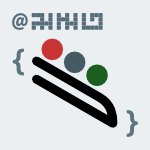4306 papers:
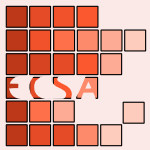 ECSA-2015-AlvaresRS #architecture #component #configuration management
ECSA-2015-AlvaresRS #architecture #component #configuration management- High-Level Language Support for Reconfiguration Control in Component-Based Architectures (FA, ÉR, LS), pp. 3–19.
 ECSA-2015-RademacherPS #design #domain-specific language #framework #independence #web #web service
ECSA-2015-RademacherPS #design #domain-specific language #framework #independence #web #web service- Design of a Domain-Specific Language Based on a Technology-Independent Web Service Framework (FR, MP, SS), pp. 357–371.
 CASE-2015-TheorinB #implementation #symmetry
CASE-2015-TheorinB #implementation #symmetry- Implementation of an asymmetric relay autotuner in a sequential control language (AT, JB), pp. 874–879.
 CASE-2015-WareS #synthesis #using
CASE-2015-WareS #synthesis #using- Synthesis time optimal accepting traces using language projection and pruning (SW, RS), pp. 1363–1368.
 DATE-2015-DeAntoniDTCC #concurrent #domain-specific language #metalanguage #towards
DATE-2015-DeAntoniDTCC #concurrent #domain-specific language #metalanguage #towards- Towards a meta-language for the concurrency concern in DSLs (JD, PID, CT, JC, BC), pp. 313–316.
 DATE-2015-Ibing #architecture #execution #symbolic computation
DATE-2015-Ibing #architecture #execution #symbolic computation- Architecture description language based retargetable symbolic execution (AI), pp. 241–246.
 DATE-2015-YanCC #consistency #natural language #specification
DATE-2015-YanCC #consistency #natural language #specification- Formal consistency checking over specifications in natural languages (RY, CHC, YC), pp. 1677–1682.
 DATE-2015-YazdanbakhshMTP #approximate #design #hardware #named
DATE-2015-YazdanbakhshMTP #approximate #design #hardware #named- Axilog: language support for approximate hardware design (AY, DM, BT, JP, AN, SS, KR, NR, RJ, AR, HE, KB), pp. 812–817.
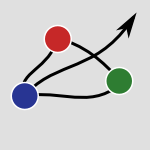 HT-2015-GavilanesGPTKG #twitter
HT-2015-GavilanesGPTKG #twitter- Language, Twitter and Academic Conferences (ROGG, DG, DPS, CT, AK, EG), pp. 159–163.
 HT-2015-KershawRS #network #online #social
HT-2015-KershawRS #network #online #social- Language Innovation and Change in On-line Social Networks (DK, MR, PS), pp. 311–314.
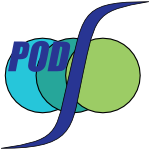 PODS-2015-Green #declarative #enterprise #named
PODS-2015-Green #declarative #enterprise #named- LogiQL: A Declarative Language for Enterprise Applications (TJG), pp. 59–64.
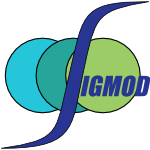 SIGMOD-2015-AlexandrovKKSTK #parallel
SIGMOD-2015-AlexandrovKKSTK #parallel- Implicit Parallelism through Deep Language Embedding (AA, AK, AK, FS, LT, OK, TH, VM), pp. 47–61.
 SIGMOD-2015-AmsterdamerKM #interface #mining #named #natural language
SIGMOD-2015-AmsterdamerKM #interface #mining #named #natural language- NL2CM: A Natural Language Interface to Crowd Mining (YA, AK, TM), pp. 1433–1438.
 VLDB-2015-AmsterdamerKM #interface #natural language #query
VLDB-2015-AmsterdamerKM #interface #natural language #query- A Natural Language Interface for Querying General and Individual Knowledge (YA, AK, TM), pp. 1430–1441.
 ITiCSE-2015-DiethelmG #education
ITiCSE-2015-DiethelmG #education- Questions on Spoken Language and Terminology for Teaching Computer Science (ID, JG), pp. 21–26.
 ITiCSE-2015-PalI #programming
ITiCSE-2015-PalI #programming- Classroom Versus Screencast for Native Language Learners: Effect of Medium of Instruction on Knowledge of Programming (YP, SI), pp. 290–295.
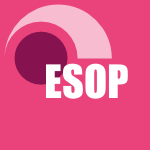 ESOP-2015-BattyMNPS #concurrent #problem #programming language #semantics
ESOP-2015-BattyMNPS #concurrent #problem #programming language #semantics- The Problem of Programming Language Concurrency Semantics (MB, KM, KN, JPP, PS), pp. 283–307.
 ESOP-2015-CoxCR #abstraction #multi #source code
ESOP-2015-CoxCR #abstraction #multi #source code- Desynchronized Multi-State Abstractions for Open Programs in Dynamic Languages (AC, BYEC, XR), pp. 483–509.
 ESOP-2015-VasconcelosJFH #analysis #functional #lazy evaluation #recursion #type system
ESOP-2015-VasconcelosJFH #analysis #functional #lazy evaluation #recursion #type system- Type-Based Allocation Analysis for Co-recursion in Lazy Functional Languages (PBV, SJ, MF, KH), pp. 787–811.
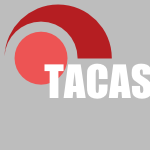 TACAS-2015-KantLMPBD #independence #model checking #named
TACAS-2015-KantLMPBD #independence #model checking #named- LTSmin: High-Performance Language-Independent Model Checking (GK, AL, JM, JvdP, SB, TvD), pp. 692–707.
 ICSME-2015-AbidDCM #automation #c++ #generative #natural language #summary #using
ICSME-2015-AbidDCM #automation #c++ #generative #natural language #summary #using- Using stereotypes in the automatic generation of natural language summaries for C++ methods (NJA, ND, MLC, JIM), pp. 561–565.
 ICSME-2015-PawelkaJ #case study #identifier #natural language
ICSME-2015-PawelkaJ #case study #identifier #natural language- Is this code written in English? A study of the natural language of comments and identifiers in practice (TP, EJ), pp. 401–410.
 MSR-2015-HellendoornDB #modelling
MSR-2015-HellendoornDB #modelling- Will They Like This? Evaluating Code Contributions with Language Models (VH, PTD, AB), pp. 157–167.
 SANER-2015-JiangSPLZ #comprehension #developer #interactive #natural language #query
SANER-2015-JiangSPLZ #comprehension #developer #interactive #natural language #query- Understanding developers’ natural language queries with interactive clarification (SJ, LS, XP, ZL, WZ), pp. 13–22.
 SANER-2015-PalixFL #algorithm #difference
SANER-2015-PalixFL #algorithm #difference- Improving pattern tracking with a language-aware tree differencing algorithm (NP, JRF, JL), pp. 43–52.
 SANER-2015-SharmaTL #automation #identification #named #twitter
SANER-2015-SharmaTL #automation #identification #named #twitter- NIRMAL: Automatic identification of software relevant tweets leveraging language model (AS, YT, DL), pp. 449–458.
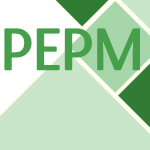 PEPM-2015-KootH #analysis #exception #functional #higher-order #semantics #strict #type system
PEPM-2015-KootH #analysis #exception #functional #higher-order #semantics #strict #type system- Type-based Exception Analysis for Non-strict Higher-order Functional Languages with Imprecise Exception Semantics (RK, JH), pp. 127–138.
 PEPM-2015-VerstoepH #analysis #functional #higher-order #strict
PEPM-2015-VerstoepH #analysis #functional #higher-order #strict- Polyvariant Cardinality Analysis for Non-strict Higher-order Functional Languages: Brief Announcement (HV, JH), pp. 139–142.
 SAS-2015-AldousM #low level #static analysis
SAS-2015-AldousM #low level #static analysis- Static Analysis of Non-interference in Expressive Low-Level Languages (PA, MM), pp. 1–17.
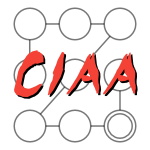 CIAA-J-2013-JirasekJ15 #bound #on the #regular expression
CIAA-J-2013-JirasekJ15 #bound #on the #regular expression- On the boundary of regular languages (JJ, GJ), pp. 42–57.
 CIAA-2015-CaronMM #on the
CIAA-2015-CaronMM #on the- On the Hierarchy of Block Deterministic Languages (PC, LM, CM), pp. 63–75.
 CIAA-2015-Madejski #linear #permutation #problem
CIAA-2015-Madejski #linear #permutation #problem- The Membership Problem for Linear and Regular Permutation Languages (GM), pp. 211–223.
 DLT-2015-BellRS #formal method
DLT-2015-BellRS #formal method- Factorization in Formal Languages (PCB, DR, JS), pp. 97–107.
 DLT-2015-Bojanczyk #monad
DLT-2015-Bojanczyk #monad- Recognisable Languages over Monads (MB), pp. 1–13.
 DLT-2015-EremondiIM #on the
DLT-2015-EremondiIM #on the- On the Density of Context-Free and Counter Languages (JE, OHI, IM), pp. 228–239.
 DLT-2015-HanKS #fault
DLT-2015-HanKS #fault- Generalizations of Code Languages with Marginal Errors (YSH, SKK, KS), pp. 264–275.
 DLT-2015-JirasekJ #bound
DLT-2015-JirasekJ #bound- The Boundary of Prefix-Free Languages (JJ, GJ), pp. 300–312.
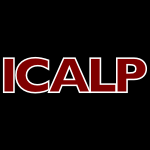 ICALP-v1-2015-FullaZ #constraints #infinity
ICALP-v1-2015-FullaZ #constraints #infinity- A Galois Connection for Valued Constraint Languages of Infinite Size (PF, SZ), pp. 517–528.
 ICALP-v1-2015-GoldreichGR #branch #context-free grammar #proving #proximity #source code
ICALP-v1-2015-GoldreichGR #branch #context-free grammar #proving #proximity #source code- Proofs of Proximity for Context-Free Languages and Read-Once Branching Programs — (Extended Abstract) (OG, TG, RDR), pp. 666–677.
 ICALP-v2-2015-BenesBLS #automaton #parametricity
ICALP-v2-2015-BenesBLS #automaton #parametricity- Language Emptiness of Continuous-Time Parametric Timed Automata (NB, PB, KGL, JS), pp. 69–81.
 ICALP-v2-2015-CiobanuDE #equation #set
ICALP-v2-2015-CiobanuDE #equation #set- Solution Sets for Equations over Free Groups are EDT0L Languages (LC, VD, ME), pp. 134–145.
 ICALP-v2-2015-SwernofskyW #complexity #on the
ICALP-v2-2015-SwernofskyW #complexity #on the- On the Complexity of Intersecting Regular, Context-Free, and Tree Languages (JS, MW), pp. 414–426.
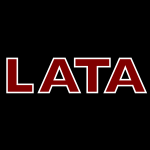 LATA-2015-NayakK #on the #word
LATA-2015-NayakK #on the #word- On the Language of Primitive Partial Words (ACN, KK), pp. 436–445.
 FM-2015-AhrendtCPS #runtime #specification #verification
FM-2015-AhrendtCPS #runtime #specification #verification- A Specification Language for Static and Runtime Verification of Data and Control Properties (WA, JMC, GJP, GS), pp. 108–125.
 FM-2015-SafilianMD #feature model #formal method #modelling #semantics
FM-2015-SafilianMD #feature model #formal method #modelling #semantics- The Semantics of Cardinality-Based Feature Models via Formal Languages (AS, TSEM, ZD), pp. 453–469.
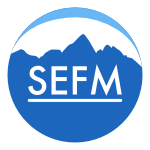 SEFM-2015-CarvalhoBCCMS #csp #natural language #requirements #testing
SEFM-2015-CarvalhoBCCMS #csp #natural language #requirements #testing- NAT2TEST Tool: From Natural Language Requirements to Test Cases Based on CSP (GC, FAB, AC, AC, AM, AS), pp. 283–290.
 SEFM-2015-NicolaMPST #interactive #interpreter #modelling #twitter
SEFM-2015-NicolaMPST #interactive #interpreter #modelling #twitter- Twitlang(er): Interactions Modeling Language (and Interpreter) for Twitter (RDN, AM, MP, AS, FT), pp. 327–343.
 SFM-2015-BrandauerCCFJPT #parallel
SFM-2015-BrandauerCCFJPT #parallel- Parallel Objects for Multicores: A Glimpse at the Parallel Language Encore (SB, EC, DC, KFR, EBJ, KIP, SLTT, TW, AMY), pp. 1–56.
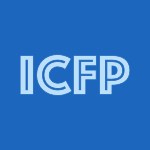 ICFP-2015-BaumanBHKPST #functional #jit #named
ICFP-2015-BaumanBHKPST #functional #jit #named- Pycket: a tracing JIT for a functional language (SB, CFB, RH, VK, TP, JGS, STH), pp. 22–34.
 ICFP-2015-Chlipala #compilation #functional #optimisation
ICFP-2015-Chlipala #compilation #functional #optimisation- An optimizing compiler for a purely functional web-application language (AC), pp. 10–21.
 ICFP-2015-DannerLR #functional #induction #semantics
ICFP-2015-DannerLR #functional #induction #semantics- Denotational cost semantics for functional languages with inductive types (ND, DRL, R), pp. 140–151.
 ICFP-2015-NeisHKMDV #compilation #higher-order #imperative #named
ICFP-2015-NeisHKMDV #compilation #higher-order #imperative #named- Pilsner: a compositionally verified compiler for a higher-order imperative language (GN, CKH, JOK, CM, DD, VV), pp. 166–178.
 ICFP-2015-RendelTO #automation #pattern matching #problem
ICFP-2015-RendelTO #automation #pattern matching #problem- Automatic refunctionalization to a language with copattern matching: with applications to the expression problem (TR, JT, KO), pp. 269–279.
 GaM-2015-BakFPR #graph #interpreter #programming language
GaM-2015-BakFPR #graph #interpreter #programming language- A Reference Interpreter for the Graph Programming Language GP 2 (CB, GF, DP, CR), pp. 48–64.
 ICGT-2015-Oliveira #graph transformation #reachability #slicing
ICGT-2015-Oliveira #graph transformation #reachability #slicing- Reachability in Graph Transformation Systems and Slice Languages (MdOO), pp. 121–137.
 CHI-2015-CaiGGM #education #named
CHI-2015-CaiGGM #education #named- Wait-Learning: Leveraging Wait Time for Second Language Education (CJC, PJG, JRG, RCM), pp. 3701–3710.
 CHI-2015-FowlerPCBOZ #modelling #performance #personalisation #type system
CHI-2015-FowlerPCBOZ #modelling #performance #personalisation #type system- Effects of Language Modeling and its Personalization on Touchscreen Typing Performance (AF, KP, CC, XB, TO, SZ), pp. 649–658.
 CHI-2015-Hale #editing #wiki
CHI-2015-Hale #editing #wiki- Cross-language Wikipedia Editing of Okinawa, Japan (SAH), pp. 183–192.
 CHI-2015-PlimmerHZKYJBD #interactive #tool support
CHI-2015-PlimmerHZKYJBD #interactive #tool support- New Interaction Tools for Preserving an Old Language (BP, LH, TZ, KK, AWY, GJ, RB, EYLD), pp. 3493–3502.
 CHI-2015-PolitisBP #multimodal
CHI-2015-PolitisBP #multimodal- To Beep or Not to Beep?: Comparing Abstract versus Language-Based Multimodal Driver Displays (IP, SAB, FEP), pp. 3971–3980.
 CSCW-2015-BraggRL #taxonomy
CSCW-2015-BraggRL #taxonomy- A User-Powered American Sign Language Dictionary (DB, KR, REL), pp. 1837–1848.
 CSCW-2015-MatthewsMCMHB #community #what
CSCW-2015-MatthewsMCMHB #community #what- They Said What?: Exploring the Relationship Between Language Use and Member Satisfaction in Communities (TM, JUM, JC, MM, EMH, HB), pp. 819–825.
 DUXU-UI-2015-MorrisonKM #design #smarttech
DUXU-UI-2015-MorrisonKM #design #smarttech- Designing a Vibrotactile Language for a Wearable Vest (AM, HK, CMY), pp. 655–666.
 HCI-IT-2015-WalkerSJ #interactive #performance
HCI-IT-2015-WalkerSJ #interactive #performance- Interactive Sonification Markup Language (ISML) for Efficient Motion-Sound Mappings (JWW, MTS, MJ), pp. 385–394.
 HIMI-IKD-2015-EldesoukyMSD #interface #knowledge base #natural language
HIMI-IKD-2015-EldesoukyMSD #interface #knowledge base #natural language- Seed, a Natural Language Interface to Knowledge Bases (BE, HM, SS, AD), pp. 280–290.
 LCT-2015-FlanaganYSH #fault #predict
LCT-2015-FlanaganYSH #fault #predict- Prediction of Learner Native Language by Writing Error Pattern (BF, CY, TS, SH), pp. 87–96.
 SCSM-2015-KinclNPS #analysis #independence #sentiment
SCSM-2015-KinclNPS #analysis #independence #sentiment- Language-Independent Sentiment Analysis with Surrounding Context Extension (TK, MN, JP, PS), pp. 158–168.
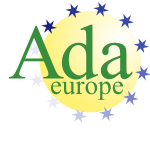 AdaEurope-2015-PavleticVRKK #debugging #framework
AdaEurope-2015-PavleticVRKK #debugging #framework- Extensible Debugger Framework for Extensible Languages (DP, MV, SAR, BK, TK), pp. 33–49.
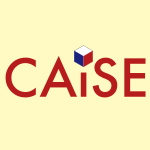 CAiSE-2015-Francescomarino #using #workflow
CAiSE-2015-Francescomarino #using #workflow- Completing Workflow Traces Using Action Languages (CDF, CG, ST, IVS), pp. 314–330.
 ICEIS-v1-2015-BrodskyL #knowledge base #modelling #reuse #towards
ICEIS-v1-2015-BrodskyL #knowledge base #modelling #reuse #towards- Decision Guidance Analytics Language (DGAL) — Toward Reusable Knowledge Base Centric Modeling (AB, JL), pp. 67–78.
 ICEIS-v1-2015-MeisenKMRJ #named #online #query
ICEIS-v1-2015-MeisenKMRJ #named #online #query- TIDAQL — A Query Language Enabling on-Line Analytical Processing of Time Interval Data (PM, DK, TM, MR, SJ), pp. 54–66.
 ICEIS-v1-2015-PfaffK #automation #benchmark #classification #documentation #identification #metric #natural language
ICEIS-v1-2015-PfaffK #automation #benchmark #classification #documentation #identification #metric #natural language- Natural Language Processing Techniques for Document Classification in IT Benchmarking — Automated Identification of Domain Specific Terms (MP, HK), pp. 360–366.
 ICEIS-v2-2015-BraunE #enterprise #framework #modelling
ICEIS-v2-2015-BraunE #enterprise #framework #modelling- A Generic Framework for Modifying and Extending Enterprise Modeling Languages (RB, WE), pp. 277–286.
 ICEIS-v2-2015-MoraisS #interface #modelling #quality
ICEIS-v2-2015-MoraisS #interface #modelling #quality- Assessing the Quality of User-interface Modeling Languages (FM, ARdS), pp. 311–319.
 ECIR-2015-EsuliF #categorisation
ECIR-2015-EsuliF #categorisation- Distributional Correspondence Indexing for Cross-Language Text Categorization (AE, AMF), pp. 104–109.
 ECIR-2015-ValcarcePB #case study #modelling #recommendation
ECIR-2015-ValcarcePB #case study #modelling #recommendation- A Study of Smoothing Methods for Relevance-Based Language Modelling of Recommender Systems (DV, JP, AB), pp. 346–351.
 ICML-2015-AllamanisTGW #modelling #natural language #source code
ICML-2015-AllamanisTGW #modelling #natural language #source code- Bimodal Modelling of Source Code and Natural Language (MA, DT, ADG, YW), pp. 2123–2132.
 ICML-2015-JerniteRS #approach #learning #markov #modelling #performance #random
ICML-2015-JerniteRS #approach #learning #markov #modelling #performance #random- A Fast Variational Approach for Learning Markov Random Field Language Models (YJ, AMR, DS), pp. 2209–2217.
 RecSys-2015-Valcarce #modelling #recommendation #statistics
RecSys-2015-Valcarce #modelling #recommendation #statistics- Exploring Statistical Language Models for Recommender Systems (DV), pp. 375–378.
 RecSys-2015-ValcarcePB #case study #modelling #recommendation
RecSys-2015-ValcarcePB #case study #modelling #recommendation- A Study of Priors for Relevance-Based Language Modelling of Recommender Systems (DV, JP, AB), pp. 237–240.
 SEKE-2015-AdjoyanS #architecture #product line
SEKE-2015-AdjoyanS #architecture #product line- An Architecture Description Language for Dynamic Service-Oriented Product Lines (SA, AS), pp. 231–236.
 SEKE-2015-AdornesGLF #architecture #distributed #domain-specific language #memory management #pipes and filters
SEKE-2015-AdornesGLF #architecture #distributed #domain-specific language #memory management #pipes and filters- A Unified MapReduce Domain-Specific Language for Distributed and Shared Memory Architectures (DA, DG, CL, LGF), pp. 619–624.
 SEKE-2015-BonifacioCFPK #domain-specific language #named #rest #specification
SEKE-2015-BonifacioCFPK #domain-specific language #named #rest #specification- NeoIDL: A Domain-Specific Language for Specifying REST Services (RB, TMC, RF, AP, UK), pp. 613–618.
 SEKE-2015-WuCZX15a #case study #comparative #object-oriented #programming language
SEKE-2015-WuCZX15a #case study #comparative #object-oriented #programming language- A metrics-based comparative study on object-oriented programming languages (DW, LC, YZ, BX), pp. 272–277.
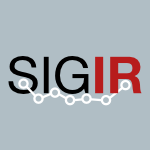 SIGIR-2015-GangulyRMJ #information retrieval #word
SIGIR-2015-GangulyRMJ #information retrieval #word- Word Embedding based Generalized Language Model for Information Retrieval (DG, DR, MM, GJFJ), pp. 795–798.
 SIGIR-2015-SchamoniR #information retrieval #orthogonal #scalability
SIGIR-2015-SchamoniR #information retrieval #orthogonal #scalability- Combining Orthogonal Information in Large-Scale Cross-Language Information Retrieval (SS, SR), pp. 943–946.
 ECMFA-J-2012-LaraGC15 #metamodelling #modelling
ECMFA-J-2012-LaraGC15 #metamodelling #modelling- Model-driven engineering with domain-specific meta-modelling languages (JdL, EG, JSC), pp. 429–459.
 ECMFA-J-2012-PfeifferW15 #design #development #multi
ECMFA-J-2012-PfeifferW15 #design #development #multi- The design space of multi-language development environments (RHP, AW), pp. 383–411.
 ICMT-J-2012-AtkinsonGT15 #model transformation #modelling #multi
ICMT-J-2012-AtkinsonGT15 #model transformation #modelling #multi- Enhancing classic transformation languages to support multi-level modeling (CA, RG, CVT), pp. 645–666.
 ICMT-J-2012-KuselSWKRS15 #model transformation #question #reuse
ICMT-J-2012-KuselSWKRS15 #model transformation #question #reuse- Reuse in model-to-model transformation languages: are we there yet? (AK, JS, MW, GK, WR, WS), pp. 537–572.
 MoDELS-2015-FoucheNGE #diagrams #generative #modelling #standard #tool support
MoDELS-2015-FoucheNGE #diagrams #generative #modelling #standard #tool support- Systematic generation of standard compliant tool support of diagrammatic modeling languages (AF, FN, SG, ME), pp. 348–357.
 MoDELS-2015-GregoricsGKDD #algorithm #diagrams #layout #visualisation
MoDELS-2015-GregoricsGKDD #algorithm #diagrams #layout #visualisation- Textual diagram layout language and visualization algorithm (BG, TG, GFK, AD, GD), pp. 196–205.
 MoDELS-2015-GreifenbergLRR #domain-specific language
MoDELS-2015-GreifenbergLRR #domain-specific language- Engineering tagging languages for DSLs (TG, ML, SR, BR), pp. 34–43.
 MoDELS-2015-HolldoblerRW #model transformation
MoDELS-2015-HolldoblerRW #model transformation- Systematically deriving domain-specific transformation languages (KH, BR, IW), pp. 136–145.
 MoDELS-2015-LarsenDCM #behaviour #coordination
MoDELS-2015-LarsenDCM #behaviour #coordination- A Behavioral Coordination Operator Language (BCOoL) (MEVL, JD, BC, FM), pp. 186–195.
 MoDELS-2015-PescadorGGCL #development #domain-specific language #modelling
MoDELS-2015-PescadorGGCL #development #domain-specific language #modelling- Pattern-based development of Domain-Specific Modelling Languages (AP, AG, EG, JSC, JdL), pp. 166–175.
 ECOOP-2015-ShinnarSH #calculus #compilation
ECOOP-2015-ShinnarSH #calculus #compilation- A Pattern Calculus for Rule Languages: Expressiveness, Compilation, and Mechanization (AS, JS, MH), pp. 542–567.
 ECOOP-2015-VekrisCJ #trust #type system #verification
ECOOP-2015-VekrisCJ #trust #type system #verification- Trust, but Verify: Two-Phase Typing for Dynamic Languages (PV, BC, RJ), pp. 52–75.
 Onward-2015-LiPPK #semantics
Onward-2015-LiPPK #semantics- Slimming languages by reducing sugar: a case for semantics-altering transformations (JL, JP, JGP, SK), pp. 90–106.
 Onward-2015-PolitoDBF #framework
Onward-2015-PolitoDBF #framework- A bootstrapping infrastructure to build and extend Pharo-like languages (GP, SD, NB, LF), pp. 183–196.
 OOPSLA-2015-FelgentreffMBH #constraints #programming language #theorem proving
OOPSLA-2015-FelgentreffMBH #constraints #programming language #theorem proving- Checks and balances: constraint solving without surprises in object-constraint programming languages (TF, TDM, AB, RH), pp. 767–782.
 OOPSLA-2015-JantzRKD #memory management
OOPSLA-2015-JantzRKD #memory management- Cross-layer memory management for managed language applications (MRJ, FJR, PAK, KAD), pp. 488–504.
 OOPSLA-2015-VoelterDKE #c #case study #embedded #using
OOPSLA-2015-VoelterDKE #c #case study #embedded #using- Using C language extensions for developing embedded software: a case study (MV, AvD, BK, SE), pp. 655–674.
 GPCE-2015-AdamS #domain-specific language #tool support #towards
GPCE-2015-AdamS #domain-specific language #tool support #towards- Towards tool support for spreadsheet-based domain-specific languages (SA, UPS), pp. 95–98.
 GPCE-2015-FlorenceFFTKWNY #named #programming language
GPCE-2015-FlorenceFFTKWNY #named #programming language- POP-PL: a patient-oriented prescription programming language (SPF, BF, MF, WHT, TK, DPW, CN, PRY, RBF, SMB), pp. 131–140.
 GPCE-2015-RingertRW #behaviour #code generation #tool support
GPCE-2015-RingertRW #behaviour #code generation #tool support- Composing code generators for C&C ADLs with Application-specific behavior languages (tool demonstration) (JOR, BR, AW), pp. 113–116.
 GPCE-2015-ScherrC #domain-specific language #embedded #staged
GPCE-2015-ScherrC #domain-specific language #embedded #staged- Almost first-class language embedding: taming staged embedded DSLs (MS, SC), pp. 21–30.
 PPDP-2015-GiantsiosPS #functional #testing
PPDP-2015-GiantsiosPS #functional #testing- Concolic testing for functional languages (AG, NSP, KFS), pp. 137–148.
 PPDP-2015-MeiklejohnR #coordination #distributed #named #programming
PPDP-2015-MeiklejohnR #coordination #distributed #named #programming- Lasp: a language for distributed, coordination-free programming (CM, PVR), pp. 184–195.
 PPDP-2015-Schmidt-Schauss #call-by #functional #semantics
PPDP-2015-Schmidt-Schauss #call-by #functional #semantics- Improvements in a functional core language with call-by-need operational semantics (MSS, DS), pp. 220–231.
 POPL-2015-AlurDR #declarative #named #string
POPL-2015-AlurDR #declarative #named #string- DReX: A Declarative Language for Efficiently Evaluating Regular String Transformations (RA, LD, MR), pp. 125–137.
 POPL-2015-BastaniAA #context-free grammar #reachability #specification #using
POPL-2015-BastaniAA #context-free grammar #reachability #specification #using- Specification Inference Using Context-Free Language Reachability (OB, SA, AA), pp. 553–566.
 POPL-2015-Buneman #database #programming #question
POPL-2015-Buneman #database #programming #question- Databases and Programming: Two Subjects Divided by a Common Language? (PB), p. 487.
 POPL-2015-Pous #algebra #algorithm #equivalence #testing
POPL-2015-Pous #algebra #algorithm #equivalence #testing- Symbolic Algorithms for Language Equivalence and Kleene Algebra with Tests (DP), pp. 357–368.
 POPL-2015-Staton #algebra #programming language #quantum
POPL-2015-Staton #algebra #programming language #quantum- Algebraic Effects, Linearity, and Quantum Programming Languages (SS), pp. 395–406.
 SAC-2015-CordobaL #design #effectiveness #java #modelling
SAC-2015-CordobaL #design #effectiveness #java #modelling- A modelling language for the effective design of Java annotations (IC, JdL), pp. 2087–2092.
 SAC-2015-MarquesRA #named #representation #traceability
SAC-2015-MarquesRA #named #representation #traceability- TRL: a traceability representation language (AM, FR, WdLA), pp. 1358–1363.
 SAC-2015-MarquesRPSM #coordination #named #network
SAC-2015-MarquesRPSM #coordination #named #network- NVL: a coordination language for unmanned vehicle networks (ERBM, MR, JP, JBS, FM), pp. 331–334.
 SAC-2015-RuyFBG #ontology #pattern matching #process #standard #towards
SAC-2015-RuyFBG #ontology #pattern matching #process #standard #towards- Towards an ontology pattern language for harmonizing software process related ISO standards (FBR, RdAF, MPB, GG), pp. 388–395.
 SAC-2015-SousaS #domain-specific language #simulation #tool support
SAC-2015-SousaS #domain-specific language #simulation #tool support- A domain specific language for spatial simulation scenarios (DSL3S): introduction and tool support (LdS, ARdS), pp. 1854–1856.
 SAC-2015-TakanoI #correctness #functional #lazy evaluation #semantics
SAC-2015-TakanoI #correctness #functional #lazy evaluation #semantics- Thunk recycling for lazy functional languages: operational semantics and correctness (YT, HI), pp. 2079–2086.
 SAC-2015-VorobyovKS #monitoring #specification
SAC-2015-VorobyovKS #monitoring #specification- A concise specification language for trace monitoring (KV, PK, PS), pp. 1637–1640.
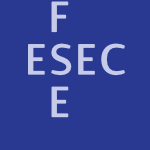 ESEC-FSE-2015-0002SGBZ #automation #impact analysis #named #natural language #requirements
ESEC-FSE-2015-0002SGBZ #automation #impact analysis #named #natural language #requirements- NARCIA: an automated tool for change impact analysis in natural language requirements (CA, MS, AG, LCB, FZ), pp. 962–965.
 ESEC-FSE-2015-CasalnuovoVDF #developer #experience #git #social
ESEC-FSE-2015-CasalnuovoVDF #developer #experience #git #social- Developer onboarding in GitHub: the role of prior social links and language experience (CC, BV, PTD, VF), pp. 817–828.
 ESEC-FSE-2015-Jain #automation #generative #programming language
ESEC-FSE-2015-Jain #automation #generative #programming language- Automated generation of programming language quizzes (SJ), pp. 1051–1053.
 ESEC-FSE-2015-Konopka #dependence #eye tracking #identification #navigation
ESEC-FSE-2015-Konopka #dependence #eye tracking #identification #navigation- Combining eye tracking with navigation paths for identification of cross-language code dependencies (MK), pp. 1057–1059.
 ESEC-FSE-2015-NguyenKN #slicing #web
ESEC-FSE-2015-NguyenKN #slicing #web- Cross-language program slicing for dynamic web applications (HVN, CK, TNN), pp. 369–380.
 ESEC-FSE-2015-Olajubu #domain-specific language #modelling
ESEC-FSE-2015-Olajubu #domain-specific language #modelling- A textual domain specific language for requirement modelling (OO), pp. 1060–1062.
 ESEC-FSE-2015-ParkEZNH #approximate #composition #named #programming
ESEC-FSE-2015-ParkEZNH #approximate #composition #named #programming- FlexJava: language support for safe and modular approximate programming (JP, HE, XZ, MN, WH), pp. 745–757.
 ESEC-FSE-2015-SaraivaBZ #developer #how #n-gram
ESEC-FSE-2015-SaraivaBZ #developer #how #n-gram- Products, developers, and milestones: how should I build my N-Gram language model (JS, CB, TZ), pp. 998–1001.
 ICSE-v1-2015-NanzF #case study #comparative #programming language
ICSE-v1-2015-NanzF #case study #comparative #programming language- A Comparative Study of Programming Languages in Rosetta Code (SN, CAF), pp. 778–788.
 ICSE-v1-2015-NguyenN #graph #statistics
ICSE-v1-2015-NguyenN #graph #statistics- Graph-Based Statistical Language Model for Code (ATN, TNN), pp. 858–868.
 ICSE-v2-2015-ArnaoudovaHMA #natural language #re-engineering #retrieval
ICSE-v2-2015-ArnaoudovaHMA #natural language #re-engineering #retrieval- The Use of Text Retrieval and Natural Language Processing in Software Engineering (VA, SH, AM, GA), pp. 949–950.
 ICSE-v2-2015-ChitchyanCR
ICSE-v2-2015-ChitchyanCR- Engineering Sustainability Through Language (RC, WC, AR), pp. 501–504.
 ICSE-v2-2015-FranksTDH #modelling #named
ICSE-v2-2015-FranksTDH #modelling #named- CACHECA: A Cache Language Model Based Code Suggestion Tool (CF, ZT, PTD, VH), pp. 705–708.
 SLE-2015-DegueuleCBBJ #composition #development #domain-specific language #metalanguage #named #reuse
SLE-2015-DegueuleCBBJ #composition #development #domain-specific language #metalanguage #named #reuse- Melange: a meta-language for modular and reusable development of DSLs (TD, BC, AB, OB, JMJ), pp. 25–36.
 SLE-2015-GammaitoniKG #design #using
SLE-2015-GammaitoniKG #design #using- Designing languages using lightning (LG, PK, CG), pp. 77–82.
 SLE-2015-LatombeCCDP #concurrent #domain-specific language #execution #modelling #weaving
SLE-2015-LatombeCCDP #concurrent #domain-specific language #execution #modelling #weaving- Weaving concurrency in executable domain-specific modeling languages (FL, XC, BC, JD, MP), pp. 125–136.
 SLE-2015-Lopez-Fernandez #validation #visual notation
SLE-2015-Lopez-Fernandez #validation #visual notation- Example-based validation of domain-specific visual languages (JJLF, EG, JdL), pp. 101–112.
 SLE-2015-MaroSATG #domain-specific language #editing #experience #industrial #on the #uml #visual notation
SLE-2015-MaroSATG #domain-specific language #editing #experience #industrial #on the #uml #visual notation- On integrating graphical and textual editors for a UML profile based domain specific language: an industrial experience (SM, JPS, AA, MT, LG), pp. 1–12.
 SLE-2015-Pearce
SLE-2015-Pearce- The whiley rewrite language (WyRL) (DJP), pp. 161–166.
 SLE-2015-UmuhozaBRC #empirical #modelling #process
SLE-2015-UmuhozaBRC #empirical #modelling #process- An empirical study on simplification of business process modeling languages (EU, MB, DR, JC), pp. 13–24.
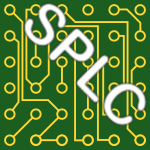 SPLC-2015-FerrariSGD #diagrams #documentation #feature model #natural language #tool support
SPLC-2015-FerrariSGD #diagrams #documentation #feature model #natural language #tool support- CMT and FDE: tools to bridge the gap between natural language documents and feature diagrams (AF, GOS, SG, FD), pp. 402–410.
 SPLC-2015-FontBHC #automation #formal method #product line #variability
SPLC-2015-FontBHC #automation #formal method #product line #variability- Automating the variability formalization of a model family by means of common variability language (JF, MB, ØH, CC), pp. 411–418.
 SPLC-2015-KuhnCO #product line
SPLC-2015-KuhnCO #product line- Choosy and picky: configuration of language product lines (TK, WC, DMO), pp. 71–80.
 SPLC-2015-PatelS #as a service #automation #testing #using #variability
SPLC-2015-PatelS #as a service #automation #testing #using #variability- Automated testing of software-as-a-service configurations using a variability language (SP, VS), pp. 253–262.
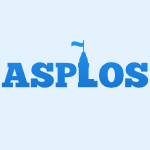 ASPLOS-2015-ZhangWSM #data flow #design #hardware #information management #security
ASPLOS-2015-ZhangWSM #data flow #design #hardware #information management #security- A Hardware Design Language for Timing-Sensitive Information-Flow Security (DZ, YW, GES, ACM), pp. 503–516.
 CC-2015-BourkeCPPP #code generation #hybrid
CC-2015-BourkeCPPP #code generation #hybrid- A Synchronous-Based Code Generator for Explicit Hybrid Systems Languages (TB, JLC, BP, CP, MP), pp. 69–88.
 CC-2015-HollingumS #context-free grammar #framework #reachability #scalability #towards
CC-2015-HollingumS #context-free grammar #framework #reachability #scalability #towards- Towards a Scalable Framework for Context-Free Language Reachability (NH, BS), pp. 193–211.
 PPoPP-2015-ChenCM #named #parallel
PPoPP-2015-ChenCM #named #parallel- Tiles: a new language mechanism for heterogeneous parallelism (YC, XC, HM), pp. 287–288.
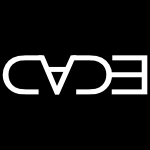 CADE-2015-DinBH #concurrent #deduction #modelling #named #verification
CADE-2015-DinBH #concurrent #deduction #modelling #named #verification- KeY-ABS: A Deductive Verification Tool for the Concurrent Modelling Language ABS (CCD, RB, RH), pp. 517–526.
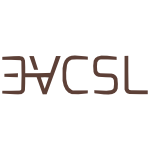 CSL-2015-DuparcFH #ambiguity #on the
CSL-2015-DuparcFH #ambiguity #on the- On Unambiguous Regular Tree Languages of Index (0, 2) (JD, KF, SH), pp. 534–548.
 ICLP-2015-Hallen #data mining #higher-order #logic #mining #specification
ICLP-2015-Hallen #data mining #higher-order #logic #mining #specification- Higher Order Support in Logic Specification Languages for Data Mining Applications (MvdH).
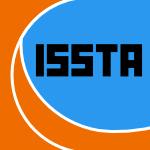 ISSTA-2015-YueAZ #automation #framework #generative #named #natural language #testing
ISSTA-2015-YueAZ #automation #framework #generative #named #natural language #testing- RTCM: a natural language based, automated, and practical test case generation framework (TY, SA, MZ), pp. 397–408.
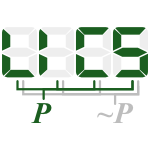 LICS-2015-AdamekMUM
LICS-2015-AdamekMUM- Varieties of Languages in a Category (JA, RSRM, HU, SM), pp. 414–425.
 LICS-2015-Place #quantifier #regular expression
LICS-2015-Place #quantifier #regular expression- Separating Regular Languages with Two Quantifiers Alternations (TP), pp. 202–213.
 CBSE-2014-HorcasPF #architecture #injection #quality #variability
CBSE-2014-HorcasPF #architecture #injection #quality #variability- Injecting quality attributes into software architectures with the common variability language (JMH, MP, LF), pp. 35–44.
 CBSE-2014-SpacekDT #architecture #component #implementation #modelling #programming #prototype
CBSE-2014-SpacekDT #architecture #component #implementation #modelling #programming #prototype- A component-based meta-level architecture and prototypical implementation of a reflective component-based programming and modeling language (PS, CD, CT), pp. 13–22.
 ECSA-2014-CavalcanteOB #architecture #code generation #implementation
ECSA-2014-CavalcanteOB #architecture #code generation #implementation- Architecture-Based Code Generation: From π-ADL Architecture Descriptions to Implementations in the Go Language (EC, FO, TVB), pp. 130–145.
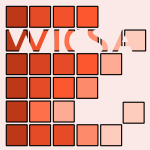 WICSA-2014-BabazadehP #design #distributed #framework
WICSA-2014-BabazadehP #design #distributed #framework- The Stream Software Connector Design Space: Frameworks and Languages for Distributed Stream Processing (MB, CP), pp. 1–10.
 ASE-2014-Angerer #impact analysis #multi #product line #variability
ASE-2014-Angerer #impact analysis #multi #product line #variability- Variability-aware change impact analysis of multi-language product lines (FA), pp. 903–906.
 ASE-2014-DeweyRH #constraints #fuzzing #logic programming #using
ASE-2014-DeweyRH #constraints #fuzzing #logic programming #using- Language fuzzing using constraint logic programming (KD, JR, BH), pp. 725–730.
 DATE-2014-DhruvaKGT #cyber-physical
DATE-2014-DhruvaKGT #cyber-physical- Computing a language-based guarantee for timing properties of cyber-physical systems (ND, PK, GG, LT), pp. 1–6.
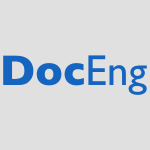 DocEng-2014-CabralLMFASR #framework #independence #summary
DocEng-2014-CabralLMFASR #framework #independence #summary- A platform for language independent summarization (LdSC, RDL, RFM, FF, BTÁ, SJS, MR), pp. 203–206.
 PODS-2014-ArenasGP #query #semantics #web
PODS-2014-ArenasGP #query #semantics #web- Expressive languages for querying the semantic web (MA, GG, AP), pp. 14–26.
 PODS-2014-GottlobRS
PODS-2014-GottlobRS- Expressiveness of guarded existential rule languages (GG, SR, MS), pp. 27–38.
 SIGMOD-2014-GulwaniM #data analysis #interactive #named #natural language #programming #spreadsheet
SIGMOD-2014-GulwaniM #data analysis #interactive #named #natural language #programming #spreadsheet- NLyze: interactive programming by natural language for spreadsheet data analysis and manipulation (SG, MM), pp. 803–814.
 SIGMOD-2014-LiJ #database #interactive #interface #named #natural language #query #relational
SIGMOD-2014-LiJ #database #interactive #interface #named #natural language #query #relational- NaLIR: an interactive natural language interface for querying relational databases (FL, HVJ), pp. 709–712.
 SIGMOD-2014-ZouHWYHZ #approach #data-driven #graph #natural language #rdf
SIGMOD-2014-ZouHWYHZ #approach #data-driven #graph #natural language #rdf- Natural language question answering over RDF: a graph data driven approach (LZ, RH, HW, JXY, WH, DZ), pp. 313–324.
 VLDB-2014-KlonatosKRC #performance #query
VLDB-2014-KlonatosKRC #performance #query- Building Efficient Query Engines in a High-Level Language (YK, CK, TR, HC), pp. 853–864.
 VLDB-2014-KlonatosKRC14a #performance #query
VLDB-2014-KlonatosKRC14a #performance #query- Errata for “Building Efficient Query Engines in a High-Level Language” (PVLDB 7(10): 853-864) (YK, CK, TR, HC), p. 1784.
 VLDB-2014-ShirakawaHN #independence #named #realtime #twitter
VLDB-2014-ShirakawaHN #independence #named #realtime #twitter- MLJ: Language-Independent Real-Time Search of Tweets Reported by Media Outlets and Journalists (MS, TH, SN), pp. 1605–1608.
 VLDB-2015-LiJ14 #database #interactive #interface #natural language #relational
VLDB-2015-LiJ14 #database #interactive #interface #natural language #relational- Constructing an Interactive Natural Language Interface for Relational Databases (FL, HVJ), pp. 73–84.
 TFPIE-2014-MorazanA #automaton #formal method #functional #student
TFPIE-2014-MorazanA #automaton #formal method #functional #student- Functional Automata — Formal Languages for Computer Science Students (MTM, RA), pp. 19–32.
 TFPIE-2014-Winter #authentication #functional #named #programming language
TFPIE-2014-Winter #authentication #functional #named #programming language- Bricklayer: An Authentic Introduction to the Functional Programming Language SML (VLW), pp. 33–49.
 ESOP-2014-Garnock-JonesTF #network
ESOP-2014-Garnock-JonesTF #network- The Network as a Language Construct (TGJ, STH, MF), pp. 473–492.
 ESOP-2014-PercontiA #compilation #multi #semantics #using #verification
ESOP-2014-PercontiA #compilation #multi #semantics #using #verification- Verifying an Open Compiler Using Multi-language Semantics (JTP, AA), pp. 128–148.
 ESOP-2014-SlepakSM #morphism #polymorphism #rank
ESOP-2014-SlepakSM #morphism #polymorphism #rank- An Array-Oriented Language with Static Rank Polymorphism (JS, OS, PM), pp. 27–46.
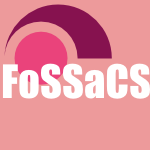 FoSSaCS-2014-AdamekMMU #theorem
FoSSaCS-2014-AdamekMMU #theorem- Generalized Eilenberg Theorem I: Local Varieties of Languages (JA, SM, RSRM, HU), pp. 366–380.
 FoSSaCS-2014-KobayashiIT #higher-order
FoSSaCS-2014-KobayashiIT #higher-order- Unsafe Order-2 Tree Languages Are Context-Sensitive (NK, KI, TT), pp. 149–163.
 TACAS-2014-MalerM #learning #regular expression #scalability
TACAS-2014-MalerM #learning #regular expression #scalability- Learning Regular Languages over Large Alphabets (OM, IEM), pp. 485–499.
 TACAS-2014-Wang0LWL #automaton #specification
TACAS-2014-Wang0LWL #automaton #specification- Are Timed Automata Bad for a Specification Language? Language Inclusion Checking for Timed Automata (TW, JS, YL, XW, SL), pp. 310–325.
 WRLA-2014-ArusoaieLRSSR
WRLA-2014-ArusoaieLRSSR- Language Definitions as Rewrite Theories (AA, DL, VR, TFS, AS, GR), pp. 97–112.
 CSMR-WCRE-2014-BaggeZ #problem
CSMR-WCRE-2014-BaggeZ #problem- International workshop on open and original problems in software language engineering (AHB, VZ), p. 478.
 CSMR-WCRE-2014-LammelLSV #comparison #implementation
CSMR-WCRE-2014-LammelLSV #comparison #implementation- Comparison of feature implementations across languages, technologies, and styles (RL, ML, TS, AV), pp. 333–337.
 CSMR-WCRE-2014-TomassettiRT #automation
CSMR-WCRE-2014-TomassettiRT #automation- Spotting automatically cross-language relations (FT, GR, MT), pp. 338–342.
 ICPC-2014-StefikHMAYS #design #empirical #programming language #what
ICPC-2014-StefikHMAYS #design #empirical #programming language #what- What is the Foundation of Evidence of Human Factors Decisions in Language Design? An Empirical Study on Programming Language Workshops (AS, SH, MM, AAA, SKY, SS), pp. 223–231.
 ICPC-2014-XiaLWZW #debugging #locality
ICPC-2014-XiaLWZW #debugging #locality- Cross-language bug localization (XX, DL, XW, CZ, XW), pp. 275–278.
 MSR-2014-CampbellHA #fault #modelling #syntax
MSR-2014-CampbellHA #fault #modelling #syntax- Syntax errors just aren’t natural: improving error reporting with language models (JCC, AH, JNA), pp. 252–261.
 MSR-2014-MertenMBP #natural language #semistructured data
MSR-2014-MertenMBP #natural language #semistructured data- Classifying unstructured data into natural language text and technical information (TM, BM, SB, BP), pp. 300–303.
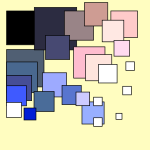 SCAM-2014-CaraccioloCSL #corpus #multi #named
SCAM-2014-CaraccioloCSL #corpus #multi #named- Pangea: A Workbench for Statically Analyzing Multi-language Software Corpora (AC, AC, BS, ML), pp. 71–76.
 SCAM-2014-YooBE #slicing
SCAM-2014-YooBE #slicing- Seeing Is Slicing: Observation Based Slicing of Picture Description Languages (SY, DB, RDE), pp. 175–184.
 PEPM-J-2013-ServettoZ14 #library
PEPM-J-2013-ServettoZ14 #library- A meta-circular language for active libraries (MS, EZ), pp. 219–253.
 PEPM-J-2013-WeijersHH14 #fault #higher-order #polymorphism #security
PEPM-J-2013-WeijersHH14 #fault #higher-order #polymorphism #security- Security type error diagnosis for higher-order, polymorphic languages (JW, JH, SH), pp. 200–218.
 PEPM-2014-CheneyLRW #effectiveness #query
PEPM-2014-CheneyLRW #effectiveness #query- Effective quotation: relating approaches to language-integrated query (JC, SL, GR, PW), pp. 15–26.
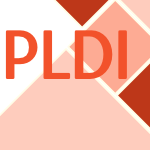 PLDI-2014-CaiGRO #difference #formal method #higher-order #λ-calculus
PLDI-2014-CaiGRO #difference #formal method #higher-order #λ-calculus- A theory of changes for higher-order languages: incrementalizing λ-calculi by static differentiation (YC, PGG, TR, KO), p. 17.
 PLDI-2014-DAntoniVLM #named #performance #transducer
PLDI-2014-DAntoniVLM #named #performance #transducer- Fast: a transducer-based language for tree manipulation (LD, MV, BL, DM), p. 40.
 PLDI-2014-LuJS #parallel #scripting language
PLDI-2014-LuJS #parallel #scripting language- Dynamic enforcement of determinism in a parallel scripting language (LL, WJ, MLS), p. 53.
 PLDI-2014-RaychevVY #code completion #modelling #statistics
PLDI-2014-RaychevVY #code completion #modelling #statistics- Code completion with statistical language models (VR, MTV, EY), p. 44.
 PLDI-2014-StorkNSMFMA #approach #named #programming language
PLDI-2014-StorkNSMFMA #approach #named #programming language- Æminium: a permission based concurrent-by-default programming language approach (SS, KN, JS, MM, AF, PM, JA), p. 4.
 PLDI-2014-TorlakB #lightweight #virtual machine
PLDI-2014-TorlakB #lightweight #virtual machine- A lightweight symbolic virtual machine for solver-aided host languages (ET, RB), p. 54.
 PLDI-2014-VilkB #named
PLDI-2014-VilkB #named- Doppio: breaking the browser language barrier (JV, EDB), p. 52.
 SAS-2014-CoxCR #analysis #automation #source code
SAS-2014-CoxCR #analysis #automation #source code- Automatic Analysis of Open Objects in Dynamic Language Programs (AC, BYEC, XR), pp. 134–150.
 DLT-J-2013-BertoniCD14 #automaton #context-free grammar #decidability #on the #problem #quantum
DLT-J-2013-BertoniCD14 #automaton #context-free grammar #decidability #on the #problem #quantum- On the Decidability of the Intersection Problem for Quantum Automata and Context-Free Languages (AB, CC, FD), pp. 1065–1082.
 DLT-J-2013-CarninoL14 #automaton
DLT-J-2013-CarninoL14 #automaton- Factorizations and Universal Automaton of ω-Languages (VC, SL), pp. 1111–1126.
 DLT-J-2013-DrosteV14 #context-free grammar #theorem
DLT-J-2013-DrosteV14 #context-free grammar #theorem- The Chomsky-SCHüTzenberger Theorem for Quantitative Context-Free Languages (MD, HV), pp. 955–970.
 DLT-J-2013-IbarraR14 #complexity
DLT-J-2013-IbarraR14 #complexity- Some Decision Questions Concerning the Time Complexity of Language Acceptors (OHI, BR), pp. 1127–1140.
 DLT-J-2013-Shur14 #anti #finite
DLT-J-2013-Shur14 #anti #finite- Languages with a Finite antidictionary: some growth Questions (AMS), pp. 937–954.
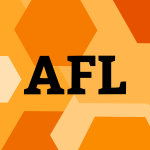 AFL-2014-Brinda
AFL-2014-Brinda- Languages of lossless seeds (KB), pp. 139–150.
 AFL-2014-BrzozowskiD13
AFL-2014-BrzozowskiD13- Maximally Atomic Languages (JAB, GD), pp. 151–161.
 AFL-2014-Crespi-ReghizziP #commutative #composition
AFL-2014-Crespi-ReghizziP #commutative #composition- Commutative Languages and their Composition by Consensual Methods (SCR, PSP), pp. 216–230.
 AFL-2014-HolzerJ #automaton #product line #regular expression
AFL-2014-HolzerJ #automaton #product line #regular expression- More Structural Characterizations of Some Subregular Language Families by Biautomata (MH, SJ), pp. 271–285.
 AFL-2014-Valdats #complexity #regular expression
AFL-2014-Valdats #complexity #regular expression- Boolean Circuit Complexity of Regular Languages (MV), pp. 342–354.
 CIAA-2014-BiasiY #automaton
CIAA-2014-BiasiY #automaton- Unary Languages Recognized by Two-Way One-Counter Automata (MDB, AY), pp. 148–161.
 CIAA-2014-Blanchet-SadriGS #automaton
CIAA-2014-Blanchet-SadriGS #automaton- Minimal Partial Languages and Automata (FBS, KG, AS), pp. 110–123.
 CIAA-2014-CevorovaJK #on the #regular expression
CIAA-2014-CevorovaJK #on the #regular expression- On the Square of Regular Languages (KC, GJ, IK), pp. 136–147.
 CIAA-2014-JiraskovaPS
CIAA-2014-JiraskovaPS- Kleene Closure on Regular and Prefix-Free Languages (GJ, MP, JS), pp. 226–237.
 CIAA-2014-Otto #automaton #bibliography
CIAA-2014-Otto #automaton #bibliography- Restarting Automata for Picture Languages: A Survey on Recent Developments (FO), pp. 16–41.
 CIAA-2014-Pighizzini #automaton
CIAA-2014-Pighizzini #automaton- Investigations on Automata and Languages over a Unary Alphabet (GP), pp. 42–57.
 DLT-2014-DayRS #pattern matching
DLT-2014-DayRS #pattern matching- Closure Properties of Pattern Languages (JDD, DR, MLS), pp. 279–290.
 DLT-2014-MarsaultS
DLT-2014-MarsaultS- Breadth-First Serialisation of Trees and Rational Languages — (Short Paper) (VM, JS), pp. 252–259.
 DLT-2014-Schmid #regular expression
DLT-2014-Schmid #regular expression- Characterising REGEX Languages by Regular Languages Equipped with Factor-Referencing (MLS), pp. 142–153.
 DLT-2014-TorreNP #automaton #bound
DLT-2014-TorreNP #automaton #bound- Scope-Bounded Pushdown Languages (SLT, MN, GP), pp. 116–128.
 ICALP-v2-2014-Chaturvedi #towards
ICALP-v2-2014-Chaturvedi #towards- Toward a Structure Theory of Regular Infinitary Trace Languages (NC), pp. 134–145.
 LATA-2014-FormentiHKP #complexity
LATA-2014-FormentiHKP #complexity- ω-rational Languages: High Complexity Classes vs. Borel Hierarchy (EF, MH, MK, JP), pp. 372–383.
 LATA-2014-KoHS #top-down
LATA-2014-KoHS #top-down- Top-Down Tree Edit-Distance of Regular Tree Languages (SKK, YSH, KS), pp. 466–477.
 LATA-2014-MazadiGZ #pattern matching
LATA-2014-MazadiGZ #pattern matching- Distinguishing Pattern Languages with Membership Examples (ZM, ZG, SZ), pp. 528–540.
 LATA-2014-OttoM #automaton #order
LATA-2014-OttoM #automaton #order- Extended Two-Way Ordered Restarting Automata for Picture Languages (FO, FM), pp. 541–552.
 FM-2014-ChristakisLS #formal method #verification
FM-2014-ChristakisLS #formal method #verification- Formalizing and Verifying a Modern Build Language (MC, KRML, WS), pp. 643–657.
 ICFP-2014-GibbonsW #domain-specific language #functional
ICFP-2014-GibbonsW #domain-specific language #functional- Folding domain-specific languages: deep and shallow embeddings (functional Pearl) (JG, NW), pp. 339–347.
 IFL-2014-AronssonAS #domain-specific language #embedded
IFL-2014-AronssonAS #domain-specific language #embedded- Stream Processing for Embedded Domain Specific Languages (MA, EA, MS), p. 8.
 IFL-2014-LeF #functional #parallel
IFL-2014-LeF #functional #parallel- Combining Shared State with Speculative Parallelism in a Functional Language (ML, MF), p. 2.
 ICGT-2014-RidderR #morphism #problem
ICGT-2014-RidderR #morphism #problem- The Subgraph Isomorphism Problem on a Class of Hyperedge Replacement Languages (HNdR, NdR), pp. 192–206.
 CHI-2014-HaimsonBH #online
CHI-2014-HaimsonBH #online- DDFSeeks same: sexual health-related language in online personal ads for men who have sex with men (OLH, JRB, GRH), pp. 1615–1624.
 CHI-2014-LiR14a #named
CHI-2014-LiR14a #named- SmartVoice: a presentation support system for overcoming the language barrier (XL, JR), pp. 1563–1570.
 CSCW-2014-HwangYHYLMKS #mobile #named
CSCW-2014-HwangYHYLMKS #mobile #named- TalkBetter: family-driven mobile intervention care for children with language delay (IH, CY, CH, DY, YL, CM, JK, JS), pp. 1283–1296.
 CSCW-2014-MitraG #people #predict
CSCW-2014-MitraG #people #predict- The language that gets people to give: phrases that predict success on kickstarter (TM, EG), pp. 49–61.
 DUXU-TMT-2014-DanylakK #game studies
DUXU-TMT-2014-DanylakK #game studies- The Language Game (RD, KK), pp. 55–63.
 HCI-AIMT-2014-AlkhashramiAA #design #interface #learning
HCI-AIMT-2014-AlkhashramiAA #design #interface #learning- Human Factors in the Design of Arabic-Language Interfaces in Assistive Technologies for Learning Difficulties (SA, HA, AAW), pp. 362–369.
 HCI-AIMT-2014-EndrassHHTA #communication #interactive
HCI-AIMT-2014-EndrassHHTA #communication #interactive- A Pictorial Interaction Language for Children to Communicate with Cultural Virtual Characters (BE, LEH, CH, ST, EA), pp. 532–543.
 HCI-AIMT-2014-ErikssonLSSK #interface #question
HCI-AIMT-2014-ErikssonLSSK #interface #question- Can User-Paced, Menu-free Spoken Language Interfaces Improve Dual Task Handling While Driving? (AE, AL, AS, AS, KK), pp. 394–405.
 HCI-AIMT-2014-KrennEKA
HCI-AIMT-2014-KrennEKA- Effects of Language Variety on Personality Perception in Embodied Conversational Agents (BK, BE, FK, EA), pp. 429–439.
 HIMI-DE-2014-LiH
HIMI-DE-2014-LiH- Improving Academic Listening Skills of Second Language by Building up Strategy Object Mashups (HL, SH), pp. 384–395.
 LCT-NLE-2014-WangLC #learning #online #student
LCT-NLE-2014-WangLC #learning #online #student- Low-Achieving Students’ Perceptions of Online Language Learning: A Case of English Proficiency Threshold (ALW, YCL, SFC), pp. 250–258.
 LCT-TRE-2014-Jebali #question
LCT-TRE-2014-Jebali #question- Does CMC Reduce Foreign Language Classroom Anxiety? (AJ), pp. 277–287.
 LCT-TRE-2014-ShimizuO #effectiveness #learning #question
LCT-TRE-2014-ShimizuO #effectiveness #learning #question- Which Is More Effective for Learning German and Japanese Language, Paper or Digital? (RS, KO), pp. 309–318.
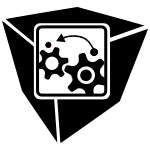 VISSOFT-2014-BergelMDG #dependence #domain-specific language #graph #visualisation
VISSOFT-2014-BergelMDG #dependence #domain-specific language #graph #visualisation- A Domain-Specific Language for Visualizing Software Dependencies as a Graph (AB, SM, SD, TG), pp. 45–49.
 VISSOFT-2014-Noble #programming language
VISSOFT-2014-Noble #programming language- Livecoding the SynthKit: Little Bits as an Embodied Programming Language (JN), pp. 40–44.
 AdaEurope-2014-PedroPPP #ada #framework #programming language #runtime #towards #verification
AdaEurope-2014-PedroPPP #ada #framework #programming language #runtime #towards #verification- Towards a Runtime Verification Framework for the Ada Programming Language (AdMP, DP, LMP, JSP), pp. 58–73.
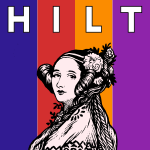 HILT-2014-BarnesT #ada #design #lessons learnt
HILT-2014-BarnesT #ada #design #lessons learnt- Ada 83 to Ada 2012: lessons learned over 30 years of language design (JB, STT), pp. 3–4.
 HILT-2014-BocchinoGGS #named #programming language
HILT-2014-BocchinoGGS #named #programming language- Spot: a programming language for verified flight software (RLB, EG, KPG, RRS), pp. 97–102.
 HILT-2014-GacekBCSW #architecture #assurance #modelling #named
HILT-2014-GacekBCSW #architecture #assurance #modelling #named- Resolute: an assurance case language for architecture models (AG, JB, DDC, KS, MWW), pp. 19–28.
 HILT-2014-MatsakisK #rust
HILT-2014-MatsakisK #rust- The rust language (NDM, FSKI), pp. 103–104.
 HILT-2014-Seidewitz #execution #modelling #uml
HILT-2014-Seidewitz #execution #modelling #uml- UML with meaning: executable modeling in foundational UML and the Alf action language (ES), pp. 61–68.
 HILT-2014-SzaboVKRS #development #embedded #named
HILT-2014-SzaboVKRS #development #embedded #named- mbeddr: extensible languages for embedded software development (TS, MV, BK, DR, BS), pp. 13–16.
 HILT-2014-TaftMPM #ada #parallel #programming
HILT-2014-TaftMPM #ada #parallel #programming- Safe parallel programming in ada with language extensions (STT, BM, LMP, SM), pp. 87–96.
 CAiSE-2014-CarvalhoAG #domain-specific language #ontology #semantics #using
CAiSE-2014-CarvalhoAG #domain-specific language #ontology #semantics #using- Using Reference Domain Ontologies to Define the Real-World Semantics of Domain-Specific Languages (VAdC, JPAA, GG), pp. 488–502.
 ICEIS-v1-2014-BrodskyHL #named #query
ICEIS-v1-2014-BrodskyHL #named #query- DG-Query: An XQuery-based Decision Guidance Query Language (AB, SGH, JL), pp. 152–163.
 ICEIS-v1-2014-KleinSRF #formal method #integration #on the #using
ICEIS-v1-2014-KleinSRF #formal method #integration #on the #using- On the Formalisation of an Application Integration Language Using Z Notation (MJK, SS, FRF, RZF), pp. 314–319.
 ICEIS-v2-2014-GippMBPN #detection #semantics #similarity #using #visualisation
ICEIS-v2-2014-GippMBPN #detection #semantics #similarity #using #visualisation- Web-based Demonstration of Semantic Similarity Detection Using Citation Pattern Visualization for a Cross Language Plagiarism Case (BG, NM, CB, JP, AN), pp. 677–683.
 ICEIS-v2-2014-PfisterHN #agile #concurrent #design #diagrams #framework #metamodelling #modelling #synthesis #towards #visual notation
ICEIS-v2-2014-PfisterHN #agile #concurrent #design #diagrams #framework #metamodelling #modelling #synthesis #towards #visual notation- A Framework for Concurrent Design of Metamodels and Diagrams — Towards an Agile Method for the Synthesis of Domain Specific Graphical Modeling Languages (FP, MH, CN), pp. 298–306.
 ICEIS-v3-2014-SilvaOAL #declarative #empirical #imperative #process
ICEIS-v3-2014-SilvaOAL #declarative #empirical #imperative #process- Declarative Versus Imperative Business Process Languages — A Controlled Experiment (NCS, CALdO, FALAA, RMFL), pp. 394–401.
 CIKM-2014-RahimiSK #analysis #axiom #information retrieval
CIKM-2014-RahimiSK #analysis #axiom #information retrieval- Axiomatic Analysis of Cross-Language Information Retrieval (RR, AS, IK), pp. 1875–1878.
 CIKM-2014-SondhiZ #community #knowledge base #mining #natural language #online
CIKM-2014-SondhiZ #community #knowledge base #mining #natural language #online- Mining Semi-Structured Online Knowledge Bases to Answer Natural Language Questions on Community QA Websites (PS, CZ), pp. 341–350.
 CIKM-2014-TuLLH #ad hoc #documentation #information retrieval
CIKM-2014-TuLLH #ad hoc #documentation #information retrieval- Log-Bilinear Document Language Model for Ad-hoc Information Retrieval (XT, JL, BL, TH), pp. 1895–1898.
 CIKM-2014-VineZKSB #semantics #similarity
CIKM-2014-VineZKSB #semantics #similarity- Medical Semantic Similarity with a Neural Language Model (LDV, GZ, BK, LS, PB), pp. 1819–1822.
 ECIR-2014-FiliceCCB #effectiveness #kernel #learning #online
ECIR-2014-FiliceCCB #effectiveness #kernel #learning #online- Effective Kernelized Online Learning in Language Processing Tasks (SF, GC, DC, RB), pp. 347–358.
 ECIR-2014-LeeC #feedback #pseudo
ECIR-2014-LeeC #feedback #pseudo- Cross-Language Pseudo-Relevance Feedback Techniques for Informal Text (CJL, WBC), pp. 260–272.
 ECIR-2014-NarducciPS #named #retrieval #semantics
ECIR-2014-NarducciPS #named #retrieval #semantics- CroSeR: Cross-language Semantic Retrieval of Open Government Data (FN, MP, GS), pp. 793–797.
 ECIR-2014-YounusOP #approach #behaviour #microblog #modelling #personalisation
ECIR-2014-YounusOP #approach #behaviour #microblog #modelling #personalisation- A Language Modeling Approach to Personalized Search Based on Users’ Microblog Behavior (AY, CO, GP), pp. 727–732.
 ICML-c2-2014-BalleHP #comparison #empirical #learning #probability
ICML-c2-2014-BalleHP #comparison #empirical #learning #probability- Methods of Moments for Learning Stochastic Languages: Unified Presentation and Empirical Comparison (BB, WLH, JP), pp. 1386–1394.
 ICML-c2-2014-BothaB #composition #modelling #word
ICML-c2-2014-BothaB #composition #modelling #word- Compositional Morphology for Word Representations and Language Modelling (JAB, PB), pp. 1899–1907.
 ICML-c2-2014-KirosSZ #modelling #multimodal
ICML-c2-2014-KirosSZ #modelling #multimodal- Multimodal Neural Language Models (RK, RS, RSZ), pp. 595–603.
 ICML-c2-2014-PaigeW #compilation #probability #programming language
ICML-c2-2014-PaigeW #compilation #probability #programming language- A Compilation Target for Probabilistic Programming Languages (BP, FW), pp. 1935–1943.
 ICPR-2014-ChenWCN #detection #fault #modelling #network
ICPR-2014-ChenWCN #detection #fault #modelling #network- Confusion Network Based Recurrent Neural Network Language Modeling for Chinese OCR Error Detection (JC, YW, HC, PN), pp. 1266–1271.
 ICPR-2014-DiezVPRB #optimisation #recognition
ICPR-2014-DiezVPRB #optimisation #recognition- Optimizing PLLR Features for Spoken Language Recognition (MD, AV, MP, LJRF, GB), pp. 779–784.
 ICPR-2014-DuCZ #aspect-oriented #identification #using
ICPR-2014-DuCZ #aspect-oriented #identification #using- A Product Aspects Identification Method by Using Translation-Based Language Model (JD, WC, XZ), pp. 2790–2795.
 ICPR-2014-ViitaniemiKL
ICPR-2014-ViitaniemiKL- Experiments on Recognising the Handshape in Blobs Extracted from Sign Language Videos (VV, MK, JL), pp. 2584–2589.
 KDD-2014-Munro
KDD-2014-Munro- Bringing data science to the speakers of every language (RM), p. 1523.
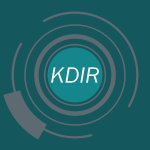 KDIR-2014-AbdallahI #classification #modelling #n-gram #using #web
KDIR-2014-AbdallahI #classification #modelling #n-gram #using #web- URL-based Web Page Classification — A New Method for URL-based Web Page Classification Using n-Gram Language Models (TAA, BdlI), pp. 14–21.
 KDIR-2014-DeglInnocentiNT #approach #knowledge base #multi
KDIR-2014-DeglInnocentiNT #approach #knowledge base #multi- A New Multi-lingual Knowledge-base Approach to Keyphrase Extraction for the Italian Language (DD, DDN, CT), pp. 78–85.
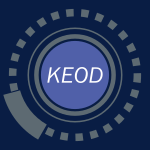 KEOD-2014-DogmusPE #natural language #ontology #query
KEOD-2014-DogmusPE #natural language #ontology #query- Answering Natural Language Queries about Rehabilitation Robotics Ontology on the Cloud (ZD, VP, EE), pp. 75–83.
 MLDM-2014-KhasnabishSDS #detection #learning #programming language #source code #using
MLDM-2014-KhasnabishSDS #detection #learning #programming language #source code #using- Detecting Programming Language from Source Code Using Bayesian Learning Techniques (JNK, MS, JD, GS), pp. 513–522.
 SEKE-2014-FreireKAJNAG #domain-specific language #empirical #formal method #re-engineering
SEKE-2014-FreireKAJNAG #domain-specific language #empirical #formal method #re-engineering- An Empirical Study to Evaluate a Domain Specific Language for Formalizing Software Engineering Experiments (MAF, UK, EA, AJ, ECN, STA, MG), pp. 250–255.
 SEKE-2014-ShankarN #automation #metric #tool support
SEKE-2014-ShankarN #automation #metric #tool support- Automated Metrics Collection for IEC61131-3 Languages from Engineering Tools (MS, AN), pp. 7–12.
 SIGIR-2014-TangWZ #recommendation
SIGIR-2014-TangWZ #recommendation- Cross-language context-aware citation recommendation in scientific articles (XT, XW, XZ), pp. 817–826.
 SIGIR-2014-VoseckyLN #collaboration #modelling #personalisation #topic #twitter
SIGIR-2014-VoseckyLN #collaboration #modelling #personalisation #topic #twitter- Collaborative personalized Twitter search with topic-language models (JV, KWTL, WN), pp. 53–62.
 SIGIR-2014-VulicZM #e-commerce #formal method #learning
SIGIR-2014-VulicZM #e-commerce #formal method #learning- Learning to bridge colloquial and formal language applied to linking and search of E-Commerce data (IV, SZ, MFM), pp. 1195–1198.
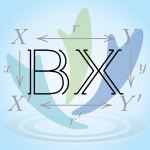 BX-2014-Wider #bidirectional #domain-specific language #implementation #model transformation #scala
BX-2014-Wider #bidirectional #domain-specific language #implementation #model transformation #scala- Implementing a Bidirectional Model Transformation Language as an Internal DSL in Scala (AW), pp. 63–70.
 ECMFA-2014-CuadradoGL #model transformation #towards
ECMFA-2014-CuadradoGL #model transformation #towards- Towards the Systematic Construction of Domain-Specific Transformation Languages (JSC, EG, JdL), pp. 196–212.
 ECMFA-2014-Goldschmidt #domain-specific language #framework #multi #towards
ECMFA-2014-Goldschmidt #domain-specific language #framework #multi #towards- Towards an Infrastructure for Domain-Specific Languages in a Multi-domain Cloud Platform (TG), pp. 242–253.
 ECMFA-2014-PfeifferRW #independence #traceability
ECMFA-2014-PfeifferRW #independence #traceability- Language-Independent Traceability with Lässig (RHP, JR, AW), pp. 148–163.
 ICMT-2014-BlouinPDSD #case study #experience #graph grammar #modelling
ICMT-2014-BlouinPDSD #case study #experience #graph grammar #modelling- Synchronization of Models of Rich Languages with Triple Graph Grammars: An Experience Report (DB, AP, PD, FS, JPD), pp. 106–121.
 ICMT-2014-ErginS #design pattern #graph #model transformation #towards
ICMT-2014-ErginS #design pattern #graph #model transformation #towards- Towards a Language for Graph-Based Model Transformation Design Patterns (HE, ES), pp. 91–105.
 MoDELS-2014-KrikavaCF #domain-specific language #named #scala
MoDELS-2014-KrikavaCF #domain-specific language #named #scala- SIGMA: Scala Internal Domain-Specific Languages for Model Manipulations (FK, PC, RBF), pp. 569–585.
 MoDELS-2014-KrikavaCF #domain-specific language #named #scala
MoDELS-2014-KrikavaCF #domain-specific language #named #scala- SIGMA: Scala Internal Domain-Specific Languages for Model Manipulations (FK, PC, RBF), pp. 569–585.
 ECOOP-2014-AnconaC #induction #object-oriented #type system
ECOOP-2014-AnconaC #induction #object-oriented #type system- Sound and Complete Subtyping between Coinductive Types for Object-Oriented Languages (DA, AC), pp. 282–307.
 ECOOP-2014-FelgentreffBHLOFK #constraints #implementation #named #ocl
ECOOP-2014-FelgentreffBHLOFK #constraints #implementation #named #ocl- Babelsberg/JS — A Browser-Based Implementation of an Object Constraint Language (TF, AB, RH, JL, YO, BF, RK), pp. 411–436.
 ECOOP-2014-MayerS #automation #domain-specific language #framework #java #multi #refactoring
ECOOP-2014-MayerS #automation #domain-specific language #framework #java #multi #refactoring- Automated Multi-Language Artifact Binding and Rename Refactoring between Java and DSLs Used by Java Frameworks (PM, AS), pp. 437–462.
 ECOOP-2014-OmarKNCPA #composition
ECOOP-2014-OmarKNCPA #composition- Safely Composable Type-Specific Languages (CO, DK, LN, BC, AP, JA), pp. 105–130.
 Onward-2014-AcherCC #domain-specific language
Onward-2014-AcherCC #domain-specific language- Metamorphic Domain-Specific Languages: A Journey into the Shapes of a Language (MA, BC, PC), pp. 243–253.
 Onward-2014-Conversy #programming language #visual notation
Onward-2014-Conversy #programming language #visual notation- Unifying Textual and Visual: A Theoretical Account of the Visual Perception of Programming Languages (SC), pp. 201–212.
 Onward-2014-KaraivanovRV #programming language #statistics
Onward-2014-KaraivanovRV #programming language #statistics- Phrase-Based Statistical Translation of Programming Languages (SK, VR, MTV), pp. 173–184.
 Onward-2014-PhilipsRCM #development #towards #web
Onward-2014-PhilipsRCM #development #towards #web- Towards Tierless Web Development without Tierless Languages (LP, CDR, TVC, WDM), pp. 69–81.
 Onward-2014-Skene #logic #programming language
Onward-2014-Skene #logic #programming language- Description Logic as Programming Language (JS), pp. 143–162.
 Onward-2014-SpasojevicLN #ecosystem #mining #type inference
Onward-2014-SpasojevicLN #ecosystem #mining #type inference- Mining the Ecosystem to Improve Type Inference for Dynamically Typed Languages (BS, ML, ON), pp. 133–142.
 Onward-2014-StefikH #community #programming language
Onward-2014-StefikH #community #programming language- The Programming Language Wars: Questions and Responsibilities for the Programming Language Community (AS, SH), pp. 283–299.
 Onward-2014-VisserWTNVPK #design #implementation #verification
Onward-2014-VisserWTNVPK #design #implementation #verification- A Language Designer’s Workbench: A One-Stop-Shop for Implementation and Verification of Language Designs (EV, GW, APT, PN, VAV, AP, GK), pp. 95–111.
 OOPSLA-2014-HolkNSL #data type #gpu #memory management #programming language
OOPSLA-2014-HolkNSL #data type #gpu #memory management #programming language- Region-based memory management for GPU programming languages: enabling rich data structures on a spartan host (EH, RN, JGS, AL), pp. 141–155.
 OOPSLA-2014-MitschkeEKMS #named
OOPSLA-2014-MitschkeEKMS #named- i3QL: language-integrated live data views (RM, SE, MK, MM, GS), pp. 417–432.
 OOPSLA-2014-WangCC #abstraction #compilation #verification
OOPSLA-2014-WangCC #abstraction #compilation #verification- Compiler verification meets cross-language linking via data abstraction (PW, SC, AC), pp. 675–690.
 PLATEAU-2014-KoitzS #comparison #education #empirical #hybrid #programming language #visual notation
PLATEAU-2014-KoitzS #comparison #education #empirical #hybrid #programming language #visual notation- Empirical Comparison of Visual to Hybrid Formula Manipulation in Educational Programming Languages for Teenagers (RK, WS), pp. 21–30.
 PLATEAU-2014-KubelkaBR #programming #smalltalk
PLATEAU-2014-KubelkaBR #programming #smalltalk- Asking and Answering Questions during a Programming Change Task in Pharo Language (JK, AB, RR), pp. 1–11.
 PLATEAU-2014-KurilovaPA #design #named #programming language #security
PLATEAU-2014-KurilovaPA #design #named #programming language #security- Wyvern: Impacting Software Security via Programming Language Design (DK, AP, JA), pp. 57–58.
 GPCE-2014-Asai #compilation #using
GPCE-2014-Asai #compilation #using- Compiling a reflective language using MetaOCaml (KA), pp. 113–122.
 GPCE-2014-GousetiPS #algebra #implementation
GPCE-2014-GousetiPS #algebra #implementation- Extensible language implementation with object algebras (short paper) (MG, CP, TvdS), pp. 25–28.
 GPCE-2014-HumerWWWW #abstract syntax tree #domain-specific language #self
GPCE-2014-HumerWWWW #abstract syntax tree #domain-specific language #self- A domain-specific language for building self-optimizing AST interpreters (CH, CW, CW, AW, TW), pp. 123–132.
 GPCE-2014-ShiodaIS #domain-specific language #embedded #library #metaprogramming #named
GPCE-2014-ShiodaIS #domain-specific language #embedded #library #metaprogramming #named- LibDSL: a library for developing embedded domain specific languages in d via template metaprogramming (MS, HI, SS), pp. 63–72.
 PPDP-2014-MehnerSSV #functional #parametricity #proving #theorem
PPDP-2014-MehnerSSV #functional #parametricity #proving #theorem- Parametricity and Proving Free Theorems for Functional-Logic Languages (SM, DS, LS, JV), pp. 19–30.
 PPDP-2014-PachecoZH #bidirectional #functional #named #xml
PPDP-2014-PachecoZH #bidirectional #functional #named #xml- BiFluX: A Bidirectional Functional Update Language for XML (HP, TZ, ZH), pp. 147–158.
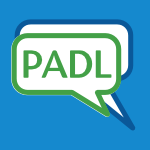 PADL-2014-LakinP #compilation #functional #programming language #using
PADL-2014-LakinP #compilation #functional #programming language #using- Compiling DNA Strand Displacement Reactions Using a Functional Programming Language (MRL, AP), pp. 81–86.
 POPL-2014-CasinghinoSW #proving #source code
POPL-2014-CasinghinoSW #proving #source code- Combining proofs and programs in a dependently typed language (CC, VS, SW), pp. 33–46.
 POPL-2014-GordonGRRBG #named #probability #programming language
POPL-2014-GordonGRRBG #named #probability #programming language- Tabular: a schema-driven probabilistic programming language (ADG, TG, NR, CVR, JB, JG), pp. 321–334.
 RE-2014-AntonelliRLO #using
RE-2014-AntonelliRLO #using- Language Extended Lexicon points: Estimating the size of an application using its language (LA, GR, JCSdPL, AO), pp. 263–272.
 RE-2014-PruskiLAOARC #named #natural language #query #towards
RE-2014-PruskiLAOARC #named #natural language #query #towards- TiQi: Towards natural language trace queries (PP, SL, RA, GO, SA, AR, JCH), pp. 123–132.
 RE-2014-RiazKSW #automation #identification #natural language #requirements #security
RE-2014-RiazKSW #automation #identification #natural language #requirements #security- Hidden in plain sight: Automatically identifying security requirements from natural language artifacts (MR, JTK, JS, LAW), pp. 183–192.
 REFSQ-2014-FerraridSG #natural language #requirements
REFSQ-2014-FerraridSG #natural language #requirements- Measuring and Improving the Completeness of Natural Language Requirements (AF, FD, GOS, SG), pp. 23–38.
 REFSQ-2014-KnaussO #automation #categorisation #natural language #requirements
REFSQ-2014-KnaussO #automation #categorisation #natural language #requirements- (Semi-) automatic Categorization of Natural Language Requirements (EK, DO), pp. 39–54.
 SAC-2014-FalboRGBA #enterprise #ontology #pattern matching #towards
SAC-2014-FalboRGBA #enterprise #ontology #pattern matching #towards- Towards an enterprise ontology pattern language (RdAF, FBR, GG, MPB, JPAA), pp. 323–330.
 SAC-2014-HalderZC #analysis #database #information management #query
SAC-2014-HalderZC #analysis #database #information management #query- Information leakage analysis of database query languages (RH, MZ, AC), pp. 813–820.
 SAC-2014-KrikavaCF14a #domain-specific language #modelling #using
SAC-2014-KrikavaCF14a #domain-specific language #modelling #using- Manipulating models using internal domain-specific languages (FK, PC, RBF), pp. 1612–1614.
 SAC-2014-ReisIB #syntax
SAC-2014-ReisIB #syntax- Defining the syntax of extensible languages (LVdSR, VODI, RdSB), pp. 1570–1576.
 SAC-2014-Rohrig #domain-specific language #process #scheduling
SAC-2014-Rohrig #domain-specific language #process #scheduling- A domain specific language for process scheduling (DR), pp. 1550–1551.
 SAC-2014-Umatani #calculus #implementation
SAC-2014-Umatani #calculus #implementation- Practical implementation techniques of ambient calculus in conventional dynamic languages (SU), pp. 1345–1351.
 SAC-2014-ZiadiHPZT #approach #independence #product line #towards
SAC-2014-ZiadiHPZT #approach #independence #product line #towards- Towards a language-independent approach for reverse-engineering of software product lines (TZ, CH, MP, MZ, YLT), pp. 1064–1071.
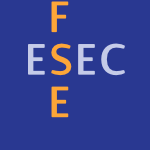 FSE-2014-BinkleyGHIKY #independence #named #slicing
FSE-2014-BinkleyGHIKY #independence #named #slicing- ORBS: language-independent program slicing (DB, NG, MH, SSI, JK, SY), pp. 109–120.
 FSE-2014-RayPFD #case study #git #programming language #quality #scalability
FSE-2014-RayPFD #case study #git #programming language #quality #scalability- A large scale study of programming languages and code quality in github (BR, DP, VF, PTD), pp. 155–165.
 ICSE-2014-NikzadCG #development #energy #middleware #mobile #named
ICSE-2014-NikzadCG #development #energy #middleware #mobile #named- APE: an annotation language and middleware for energy-efficient mobile application development (NN, OC, WGG), pp. 515–526.
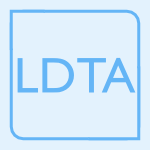 LDTA-J-2011-SauthoffG #analysis #domain-specific language #optimisation #programming
LDTA-J-2011-SauthoffG #analysis #domain-specific language #optimisation #programming- Yield grammar analysis and product optimization in a domain-specific language for dynamic programming (GS, RG), pp. 2–22.
 SLE-2014-DiekmannT #composition #editing #named
SLE-2014-DiekmannT #composition #editing #named- Eco: A Language Composition Editor (LD, LT), pp. 82–101.
 SLE-2014-KuhnLGSA #metamodelling #modelling #product line #programming language
SLE-2014-KuhnLGSA #metamodelling #modelling #product line #programming language- A Metamodel Family for Role-Based Modeling and Programming Languages (TK, ML, SG, CS, UA), pp. 141–160.
 SLE-2014-MeyersDLSVW #framework #generative #named
SLE-2014-MeyersDLSVW #framework #generative #named- ProMoBox: A Framework for Generating Domain-Specific Property Languages (BM, RD, LL, ES, HV, MW), pp. 1–20.
 SLE-2014-TisiJDSC #assembly #model transformation
SLE-2014-TisiJDSC #assembly #model transformation- fUML as an Assembly Language for Model Transformation (MT, FJ, JD, ZS, HC), pp. 171–190.
 SPLC-2014-DieumegardTP #approach #data flow #library #product line #semantics #specification
SPLC-2014-DieumegardTP #approach #data flow #library #product line #semantics #specification- A software product line approach for semantic specification of block libraries in dataflow languages (AD, AT, MP), pp. 217–226.
 SPLC-2014-Reinhartz-BergerF #modelling #orthogonal #variability
SPLC-2014-Reinhartz-BergerF #modelling #orthogonal #variability- Comprehensibility of orthogonal variability modeling languages: the cases of CVL and OVM (IRB, KF), pp. 42–51.
 SPLC-2014-VacchiCCA #automation #component #implementation #model inference #variability
SPLC-2014-VacchiCCA #automation #component #implementation #model inference #variability- Automating variability model inference for component-based language implementations (EV, WC, BC, MA), pp. 167–176.
 SPLC-2014-YuZZJ #automation #case study #feature model #named
SPLC-2014-YuZZJ #automation #case study #feature model #named- TDL: a transformation description language from feature model to use case for automated use case derivation (WY, WZ, HZ, ZJ), pp. 187–196.
 ASPLOS-2014-0001KOTRKSHC #named #policy #security
ASPLOS-2014-0001KOTRKSHC #named #policy #security- Sapper: a language for hardware-level security policy enforcement (XL, VK, JKO, MT, VRR, RK, TS, BH, FTC), pp. 97–112.
 ASPLOS-2014-BucurKC #execution #prototype #symbolic computation
ASPLOS-2014-BucurKC #execution #prototype #symbolic computation- Prototyping symbolic execution engines for interpreted languages (SB, JK, GC), pp. 239–254.
 ASPLOS-2014-RibicY #energy
ASPLOS-2014-RibicY #energy- Energy-efficient work-stealing language runtimes (HR, YDL), pp. 513–528.
 ASPLOS-2014-SantosRSW #mobile #runtime #using
ASPLOS-2014-SantosRSW #mobile #runtime #using- Using ARM trustzone to build a trusted language runtime for mobile applications (NS, HR, SS, AW), pp. 67–80.
 ASPLOS-2014-Wood #architecture #named
ASPLOS-2014-Wood #architecture #named- Resolved: specialized architectures, languages, and system software should supplant general-purpose alternatives within a decade (DAW), pp. 653–654.
 ASPLOS-2014-WoodCG #detection #low level
ASPLOS-2014-WoodCG #detection #low level- Low-level detection of language-level data races with LARD (BPW, LC, DG), pp. 671–686.
 CGO-2014-HongSWO #domain-specific language #graph #scalability
CGO-2014-HongSWO #domain-specific language #graph #scalability- Simplifying Scalable Graph Processing with a Domain-Specific Language (SH, SS, JW, KO), p. 208.
 CGO-2014-YanXYR #detection #memory management #named
CGO-2014-YanXYR #detection #memory management #named- LeakChecker: Practical Static Memory Leak Detection for Managed Languages (DY, G(X, SY, AR), p. 87.
 HPDC-2014-FaltBKYZ #named #parallel #streaming
HPDC-2014-FaltBKYZ #named #parallel #streaming- Bobolang: a language for parallel streaming applications (ZF, DB, MK, JY, FZ), pp. 311–314.
 OSDI-2014-MooreDKC #named #scripting language
OSDI-2014-MooreDKC #named #scripting language- SHILL: A Secure Shell Scripting Language (SM, CD, DK, SC), pp. 183–199.
 PPoPP-2014-Olukotun #domain-specific language #parallel #programming
PPoPP-2014-Olukotun #domain-specific language #parallel #programming- Beyond parallel programming with domain specific languages (KO), pp. 179–180.
 CAV-2014-RakamaricE #implementation #named #verification
CAV-2014-RakamaricE #implementation #named #verification- SMACK: Decoupling Source Language Details from Verifier Implementations (ZR, ME), pp. 106–113.
 ICLP-J-2014-CruzRGP #concurrent #graph #linear #logic programming #programming language
ICLP-J-2014-CruzRGP #concurrent #graph #linear #logic programming #programming language- A Linear Logic Programming Language for Concurrent Programming over Graph Structures (FC, RR, SCG, FP), pp. 493–507.
 ICLP-J-2014-Jackson #domain-specific language
ICLP-J-2014-Jackson #domain-specific language- A Module System for Domain-Specific Languages (EKJ), pp. 771–785.
 LICS-CSL-2014-PlaceZ #first-order #logic #regular expression
LICS-CSL-2014-PlaceZ #first-order #logic #regular expression- Separating regular languages with first-order logic (TP, MZ), p. 10.
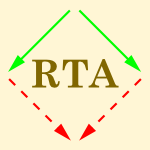 RTA-TLCA-2014-Schmidt-Schauss #analysis #concurrent #programming language #semantics
RTA-TLCA-2014-Schmidt-Schauss #analysis #concurrent #programming language #semantics- Concurrent Programming Languages and Methods for Semantic Analyses (Extended Abstract of Invited Talk) (MSS), pp. 21–30.
 CBSE-2013-JafroodiG #implementation
CBSE-2013-JafroodiG #implementation- Implementing generalized alternative construct for erasmus language (NJ, PG), pp. 101–110.
 ECSA-2013-SilvaMCB #architecture #lightweight #product line
ECSA-2013-SilvaMCB #architecture #lightweight #product line- A Lightweight Language for Software Product Lines Architecture Description (ES, ALM, EC, TVB), pp. 114–121.
 ECSA-2013-ThatSOB #design pattern
ECSA-2013-ThatSOB #design pattern- Composition-Centered Architectural Pattern Description Language (MTTT, SS, FO, IB), pp. 1–16.
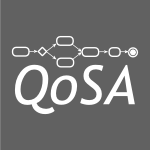 QoSA-2013-TekinerdoganD #architecture #evaluation #framework
QoSA-2013-TekinerdoganD #architecture #evaluation #framework- Evaluation framework for software architecture viewpoint languages (BT, ED), pp. 89–98.
 ASE-2013-AnnervazKSS #analysis #domain model #modelling #natural language #quality #requirements
ASE-2013-AnnervazKSS #analysis #domain model #modelling #natural language #quality #requirements- Natural language requirements quality analysis based on business domain models (KMA, VSK, SS, MS), pp. 676–681.
 ASE-2013-Hellerstein #case study #design #distributed #experience #named
ASE-2013-Hellerstein #case study #design #distributed #experience #named- BOOM: Experiences in language and tool design for distributed systems (keynote) (JMH), p. 1.
 DAC-2013-LeGHD #simulation #using #verification
DAC-2013-LeGHD #simulation #using #verification- Verifying SystemC using an intermediate verification language and symbolic simulation (HML, DG, VH, RD), p. 6.
 DocEng-2013-YuanM #repository #retrieval
DocEng-2013-YuanM #repository #retrieval- Cross language indexing and retrieval of the cypriot digital antiquities repository (DY, PM), pp. 235–236.
 HT-2013-BastosPT #topic #twitter
HT-2013-BastosPT #topic #twitter- Tweeting across hashtags: overlapping users and the importance of language, topics, and politics (MTB, CP, RT), pp. 164–168.
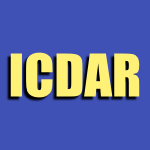 ICDAR-2013-BuiVM #documentation #invariant #navigation
ICDAR-2013-BuiVM #documentation #invariant #navigation- Invariants Extraction Method Applied in an Omni-language Old Document Navigating System (QAB, MV, RM), pp. 1325–1329.
 ICDAR-2013-FischerFBS #keyword #modelling
ICDAR-2013-FischerFBS #keyword #modelling- Improving HMM-Based Keyword Spotting with Character Language Models (AF, VF, HB, CYS), pp. 506–510.
 ICDAR-2013-GerdjikovMN
ICDAR-2013-GerdjikovMN- Extraction of Spelling Variations from Language Structure for Noisy Text Correction (SG, SM, VN), pp. 324–328.
 ICDAR-2013-RomeroS #modelling #recognition
ICDAR-2013-RomeroS #modelling #recognition- Category-Based Language Models for Handwriting Recognition of Marriage License Books (VR, JAS), pp. 788–792.
 ICDAR-2013-SankaranJ #detection #fault
ICDAR-2013-SankaranJ #detection #fault- Error Detection in Highly Inflectional Languages (NS, CVJ), pp. 1135–1139.
 ICDAR-2013-SuDPL #comprehension #documentation #novel #word
ICDAR-2013-SuDPL #comprehension #documentation #novel #word- Cross-Language Sensitive Words Distribution Map: A Novel Recognition-Based Document Understanding Method for Uighur and Tibetan (BS, XD, LP, CL), pp. 255–259.
 PODS-2013-LibkinRV #adaptation #graph #query #rdf
PODS-2013-LibkinRV #adaptation #graph #query #rdf- Trial for RDF: adapting graph query languages for RDF data (LL, JLR, DV), pp. 201–212.
 SIGMOD-2013-HuangZ #natural language #rdf
SIGMOD-2013-HuangZ #natural language #rdf- Natural language question answering over RDF data (RH, LZ), pp. 1289–1290.
 SIGMOD-2013-ZhangGBFRP #named #statistics #using
SIGMOD-2013-ZhangGBFRP #named #statistics #using- GeoDeepDive: statistical inference using familiar data-processing languages (CZ, VG, JB, TF, CR, SP), pp. 993–996.
 VLDB-2013-CaoB #implementation #performance #quantifier #query #relational
VLDB-2013-CaoB #implementation #performance #quantifier #query #relational- Efficient Implementation of Generalized Quantification in Relational Query Languages (BC, AB), pp. 241–252.
 VLDB-2013-Madaan #documentation #multi #query #repository
VLDB-2013-Madaan #documentation #multi #query #repository- Domain Specific Multi-stage Query Language for Medical Document Repositories (AM), pp. 1410–1415.
 VLDB-2013-SeoPSL #analysis #distributed #graph #scalability
VLDB-2013-SeoPSL #analysis #distributed #graph #scalability- Distributed SociaLite: A Datalog-Based Language for Large-Scale Graph Analysis (JS, JP, JS, MSL), pp. 1906–1917.
 CSEET-2013-NobleHBB #design #education #programming language #question #re-engineering
CSEET-2013-NobleHBB #design #education #programming language #question #re-engineering- Designing Grace: Can an introductory programming language support the teaching of software engineering? (JN, MH, KBB, APB), pp. 219–228.
 ITiCSE-2013-Alshaigy #development #education #interactive #learning #programming language #python
ITiCSE-2013-Alshaigy #development #education #interactive #learning #programming language #python- Development of an interactive learning tool to teach python programming language (BA), p. 344.
 ESOP-2013-JeanninKS
ESOP-2013-JeanninKS- Language Constructs for Non-Well-Founded Computation (JBJ, DK, AS), pp. 61–80.
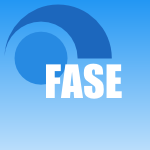 FASE-2013-ZhongTX #api #behaviour #difference
FASE-2013-ZhongTX #api #behaviour #difference- Exposing Behavioral Differences in Cross-Language API Mapping Relations (HZ, ST, TX), pp. 130–145.
 FoSSaCS-2013-GianantonioE
FoSSaCS-2013-GianantonioE- A Language for Differentiable Functions (PDG, AE), pp. 337–352.
 TACAS-2013-GangeNSSS #bound #constraints #model checking #regular expression
TACAS-2013-GangeNSSS #bound #constraints #model checking #regular expression- Unbounded Model-Checking with Interpolation for Regular Language Constraints (GG, JAN, PJS, HS, PS), pp. 277–291.
 CSMR-2013-PolychniatisHJBV #dependence #detection
CSMR-2013-PolychniatisHJBV #dependence #detection- Detecting Cross-Language Dependencies Generically (TP, JH, SJ, EB, JV), pp. 349–352.
 ICPC-2013-MayerS #framework #java
ICPC-2013-MayerS #framework #java- Patterns of cross-language linking in java frameworks (PM, AS), pp. 113–122.
 ICPC-2013-MorenoASMPV #automation #generative #java #natural language #summary
ICPC-2013-MorenoASMPV #automation #generative #java #natural language #summary- Automatic generation of natural language summaries for Java classes (LM, JA, GS, AM, LLP, KVS), pp. 23–32.
 ICPC-2013-MorenoMPV #automation #generative #java #named #natural language #summary
ICPC-2013-MorenoMPV #automation #generative #java #named #natural language #summary- JSummarizer: An automatic generator of natural language summaries for Java classes (LM, AM, LLP, KVS), pp. 230–232.
 ICSM-2013-AsaduzzamanRSP #approach #hybrid #independence #named #source code
ICSM-2013-AsaduzzamanRSP #approach #hybrid #independence #named #source code- LHDiff: A Language-Independent Hybrid Approach for Tracking Source Code Lines (MA, CKR, KAS, MDP), pp. 230–239.
 MSR-2013-AllamanisS13a #mining #modelling #repository #source code #using
MSR-2013-AllamanisS13a #mining #modelling #repository #source code #using- Mining source code repositories at massive scale using language modeling (MA, CAS), pp. 207–216.
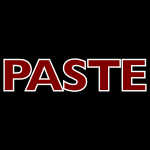 PASTE-2013-SarimbekovSKZBBA #virtual machine
PASTE-2013-SarimbekovSKZBBA #virtual machine- A comprehensive toolchain for workload characterization across JVM languages (AS, AS, SK, YZ, WB, LB, DA), pp. 9–16.
 SCAM-2013-Schink #database #multi #named #refactoring #relational
SCAM-2013-Schink #database #multi #named #refactoring #relational- sql-schema-comparer: Support of multi-language refactoring with relational databases (HS), pp. 173–178.
 WCRE-2013-BaggeZ #problem
WCRE-2013-BaggeZ #problem- Workshop on open and original problems in software language engineering (AHB, VZ), pp. 493–494.
 WCRE-2013-SaeidiHKJ #analysis #legacy #modelling #named #tool support
WCRE-2013-SaeidiHKJ #analysis #legacy #modelling #named #tool support- Gelato: GEneric language tools for model-driven analysis of legacy software systems (AS, JH, RK, SJ), pp. 481–482.
 PEPM-2013-OliveiraL #domain-specific language #graph #syntax
PEPM-2013-OliveiraL #domain-specific language #graph #syntax- Abstract syntax graphs for domain specific languages (BCdSO, AL), pp. 87–96.
 PEPM-2013-ServettoZ #library
PEPM-2013-ServettoZ #library- A meta-circular language for active libraries (MS, EZ), pp. 117–126.
 PEPM-2013-WeijersHH #fault #higher-order #polymorphism #security
PEPM-2013-WeijersHH #fault #higher-order #polymorphism #security- Security type error diagnosis for higher-order, polymorphic languages (JW, JH, SH), pp. 3–12.
 PLDI-2013-DeVitoHAHV #multi #named
PLDI-2013-DeVitoHAHV #multi #named- Terra: a multi-stage language for high-performance computing (ZD, JH, AA, PH, JV), pp. 105–116.
 PLDI-2013-ElmasBNS #concurrent #debugging #domain-specific language #named
PLDI-2013-ElmasBNS #concurrent #debugging #domain-specific language #named- CONCURRIT: a domain specific language for reproducing concurrency bugs (TE, JB, GCN, KS), pp. 153–164.
 PLDI-2013-GreenLRSV #named #programming language #quantum #scalability
PLDI-2013-GreenLRSV #named #programming language #quantum #scalability- Quipper: a scalable quantum programming language (ASG, PLL, NJR, PS, BV), pp. 333–342.
 PLDI-2013-Ragan-KelleyBAPDA #compilation #image #locality #named #optimisation #parallel #pipes and filters
PLDI-2013-Ragan-KelleyBAPDA #compilation #image #locality #named #optimisation #parallel #pipes and filters- Halide: a language and compiler for optimizing parallelism, locality, and recomputation in image processing pipelines (JRK, CB, AA, SP, FD, SPA), pp. 519–530.
 PLDI-2013-Schneider #programming language #security
PLDI-2013-Schneider #programming language #security- Programming languages in security: keynote (FBS), pp. 139–140.
 CIAA-J-2012-Brzozowski13 #regular expression
CIAA-J-2012-Brzozowski13 #regular expression- In Search of Most Complex Regular Languages (JAB), pp. 691–708.
 DLT-J-2012-BrzozowskiT13 #complexity #regular expression
DLT-J-2012-BrzozowskiT13 #complexity #regular expression- Complexity of atoms of Regular Languages (JAB, HT), pp. 1009–1028.
 DLT-J-2012-EsikO13 #context-free grammar #on the #word
DLT-J-2012-EsikO13 #context-free grammar #on the #word- On Context-Free Languages of Scattered Words (ZÉ, SO), pp. 1029–1048.
 DLT-J-2012-GeffertP13
DLT-J-2012-GeffertP13- Unary Coded NP-Complete Languages in Aspace(log log n) (VG, DP), p. 1167–?.
 DLT-J-2012-HanKS13 #context-free grammar #regular expression
DLT-J-2012-HanKS13 #context-free grammar #regular expression- The Edit-Distance between a Regular Language and a Context-Free Language (YSH, SKK, KS), pp. 1067–1082.
 DLT-J-2012-LehtinenO13 #context-free grammar #morphism
DLT-J-2012-LehtinenO13 #context-free grammar #morphism- Homomorphisms Preserving Deterministic Context-Free Languages (TL, AO), pp. 1049–1066.
 DLT-J-2012-Schmid13 #regular expression
DLT-J-2012-Schmid13 #regular expression- Inside the Class of regex Languages (MLS), pp. 1117–1134.
 CIAA-2013-Campeanu #implementation
CIAA-2013-Campeanu #implementation- Cover Languages and Implementations (CC), p. 1.
 CIAA-2013-IbarraR #problem
CIAA-2013-IbarraR #problem- Some Decision Problems Concerning NPDAs, Palindromes, and Dyck Languages (OHI, BR), pp. 193–207.
 CIAA-2013-JirasekJ #bound #on the #regular expression
CIAA-2013-JirasekJ #bound #on the #regular expression- On the Boundary of Regular Languages (JJ, GJ), pp. 208–219.
 CIAA-2013-MaiaMR #complexity #finite
CIAA-2013-MaiaMR #complexity #finite- Incomplete Transition Complexity of Basic Operations on Finite Languages (EM, NM, RR), pp. 349–356.
 DLT-2013-BertoniCD #automaton #context-free grammar #decidability #finite #linear #problem #quantum
DLT-2013-BertoniCD #automaton #context-free grammar #decidability #finite #linear #problem #quantum- Quantum Finite Automata and Linear Context-Free Languages: A Decidable Problem (AB, CC, FD), pp. 82–93.
 DLT-2013-CarninoL #automaton
DLT-2013-CarninoL #automaton- Factorizations and Universal Automaton of ω Languages (VC, SL), pp. 338–349.
 DLT-2013-DrosteV #context-free grammar #theorem
DLT-2013-DrosteV #context-free grammar #theorem- The Chomsky-Schützenberger Theorem for Quantitative Context-Free Languages (MD, HV), pp. 203–214.
 DLT-2013-IbarraR #complexity
DLT-2013-IbarraR #complexity- Some Decision Questions Concerning the Time Complexity of Language Acceptors (OHI, BR), pp. 264–276.
 DLT-2013-KlimaP #automaton
DLT-2013-KlimaP #automaton- Alternative Automata Characterization of Piecewise Testable Languages (OK, LP), pp. 289–300.
 DLT-2013-LuPC
DLT-2013-LuPC- Deciding Determinism of Unary Languages Is coNP-Complete (PL, FP, HC), pp. 350–361.
 DLT-2013-PanellaPLM #precedence
DLT-2013-PanellaPLM #precedence- Operator Precedence ω-Languages (FP, MP, VL, DM), pp. 396–408.
 DLT-2013-Pin #regular expression
DLT-2013-Pin #regular expression- An Explicit Formula for the Intersection of Two Polynomials of Regular Languages (JÉP), pp. 31–45.
 DLT-2013-Shur #anti #finite #order
DLT-2013-Shur #anti #finite #order- Languages with a Finite Antidictionary: Growth-Preserving Transformations and Available Orders of Growth (AMS), pp. 445–457.
 ICALP-v2-2013-CzerwinskiMM #performance #regular expression #sequence
ICALP-v2-2013-CzerwinskiMM #performance #regular expression #sequence- Efficient Separability of Regular Languages by Subsequences and Suffixes (WC, WM, TM), pp. 150–161.
 ICALP-v2-2013-EtessamiSY #context-free grammar #probability #regular expression
ICALP-v2-2013-EtessamiSY #context-free grammar #probability #regular expression- Stochastic Context-Free Grammars, Regular Languages, and Newton’s Method (KE, AS, MY), pp. 199–211.
 ICALP-v2-2013-Janin #algebra #automaton #logic
ICALP-v2-2013-Janin #algebra #automaton #logic- Algebras, Automata and Logic for Languages of Labeled Birooted Trees (DJ), pp. 312–323.
 LATA-2013-AtminasLM
LATA-2013-AtminasLM- Deciding WQO for Factorial Languages (AA, VVL, MM), pp. 68–79.
 LATA-2013-ChatterjeeCR #how
LATA-2013-ChatterjeeCR #how- How to Travel between Languages (KC, SC, SR), pp. 214–225.
 LATA-2013-DengZDZ #concurrent #π-calculus
LATA-2013-DengZDZ #concurrent #π-calculus- The Buffered π-Calculus: A Model for Concurrent Languages (XD, YZ, YD, FZ), pp. 250–261.
 LATA-2013-IbarraR #automaton #bound #on the
LATA-2013-IbarraR #automaton #bound #on the- On Bounded Languages and Reversal-Bounded Automata (OHI, BR), pp. 359–370.
 LATA-2013-MontanariS #logic #regular expression
LATA-2013-MontanariS #logic #regular expression- Interval Logics and ωB-Regular Languages (AM, PS), pp. 431–443.
 LATA-2013-RotBR #equivalence #induction #proving
LATA-2013-RotBR #equivalence #induction #proving- Coinductive Proof Techniques for Language Equivalence (JR, MMB, JJMMR), pp. 480–492.
 LATA-2013-SelivanovK #algebra
LATA-2013-SelivanovK #algebra- Boolean Algebras of Regular ω-Languages (VLS, AK), pp. 504–515.
 CEFP-2013-Brady #dependent type #domain-specific language #embedded #implementation #programming language
CEFP-2013-Brady #dependent type #domain-specific language #embedded #implementation #programming language- The Idris Programming Language — Implementing Embedded Domain Specific Languages with Dependent Types (EB), pp. 115–186.
 CEFP-2013-Gibbons #domain-specific language #functional #programming
CEFP-2013-Gibbons #domain-specific language #functional #programming- Functional Programming for Domain-Specific Languages (JG), pp. 1–28.
 ICFP-2013-BernardyC #context-free grammar #divide and conquer #parsing #performance
ICFP-2013-BernardyC #context-free grammar #divide and conquer #parsing #performance- Efficient divide-and-conquer parsing of practical context-free languages (JPB, KC), pp. 111–122.
 ICFP-2013-CheneyLW #query
ICFP-2013-CheneyLW #query- A practical theory of language-integrated query (JC, SL, PW), pp. 403–416.
 ICFP-2013-LorenzenE #automation #composition #verification
ICFP-2013-LorenzenE #automation #composition #verification- Modular and automated type-soundness verification for language extensions (FL, SE), pp. 331–342.
 ICFP-2013-SvenningssonS #composition #embedded #monad
ICFP-2013-SvenningssonS #composition #embedded #monad- Simple and compositional reification of monadic embedded languages (JS, BJS), pp. 299–304.
 GCM-J-2012-Flick #graph grammar
GCM-J-2012-Flick #graph grammar- Derivation Languages of Graph Grammars (NEF).
 GCM-J-2012-KniemeyerK #graph transformation #model transformation #named
GCM-J-2012-KniemeyerK #graph transformation #model transformation #named- XL4C4D — Adding the Graph Transformation Language XL to CINEMA 4D (OK, WK).
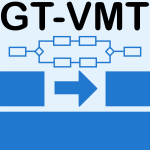 GT-VMT-2013-KupperKB #category theory
GT-VMT-2013-KupperKB #category theory- Concatenation and other Closure Properties of Recognizable Languages in Adhesive Categories (SK, BK, HJSB).
 CHI-2013-EdgeCW #learning #named
CHI-2013-EdgeCW #learning #named- SpatialEase: learning language through body motion (DE, KYC, MW), pp. 469–472.
 CHI-2013-GreenHM
CHI-2013-GreenHM- The efficacy of human post-editing for language translation (SG, JH, CDM), pp. 439–448.
 CHI-2013-KuksenokBWL #challenge
CHI-2013-KuksenokBWL #challenge- Challenges and opportunities for technology in foreign language classrooms (KK, MB, QW, CPL), pp. 1011–1020.
 CHI-2013-MonroeLOSPM #approach #challenge #query #specification #visual notation
CHI-2013-MonroeLOSPM #approach #challenge #query #specification #visual notation- The challenges of specifying intervals and absences in temporal queries: a graphical language approach (MM, RL, JMdO, BS, CP, JM), pp. 2349–2358.
 CHI-2013-TausczikP #feedback #realtime #using
CHI-2013-TausczikP #feedback #realtime #using- Improving teamwork using real-time language feedback (YRT, JWP), pp. 459–468.
 CSCW-2013-HailpernDHSLK #communication #framework #named #research
CSCW-2013-HailpernDHSLK #communication #framework #named #research- ACES: a cross-discipline platform and method for communication and language research (JMH, MD, AH, SS, RL, KK), pp. 515–526.
 CSCW-2013-WangFC #idea
CSCW-2013-WangFC #idea- Machine translation vs. common language: effects on idea exchange in cross-lingual groups (HCW, SRF, DC), pp. 935–944.
 DUXU-CXC-2013-Al-ArifiAAAA #communication #towards
DUXU-CXC-2013-Al-ArifiAAAA #communication #towards- Towards an Arabic Language Augmentative and Alternative Communication Application for Autism (BAA, AAR, GAO, NAR, AAW), pp. 333–341.
 DUXU-CXC-2013-MouraVCBSTLK #exclamation #game studies #how #learning #mobile
DUXU-CXC-2013-MouraVCBSTLK #exclamation #game studies #how #learning #mobile- Luz, Câmera, Libras!: How a Mobile Game Can Improve the Learning of Sign Languages (GdSM, LAV, AC, FB, DdS, JMXNT, CWML, JK), pp. 266–275.
 DUXU-CXC-2013-SturmSG #locality #performance
DUXU-CXC-2013-SturmSG #locality #performance- Localization beyond National Characteristics: The Impact of Language on Users’ Performance with Different Menu Structures (CS, GS, SG), pp. 105–114.
 HCI-AMTE-2013-MeixnerOK #development #evaluation #industrial #modelling #user interface
HCI-AMTE-2013-MeixnerOK #development #evaluation #industrial #modelling #user interface- Evaluation of User Interface Description Languages for Model-Based User Interface Development in the German Automotive Industry (GM, MO, MK), pp. 411–420.
 HCI-AS-2013-EskildsenR #challenge #integration #learning
HCI-AS-2013-EskildsenR #challenge #integration #learning- Challenges for Contextualizing Language Learning — Supporting Cultural Integration (SE, MR), pp. 361–369.
 HCI-AS-2013-LimaRSBSO #learning
HCI-AS-2013-LimaRSBSO #learning- Innovation in Learning — The Use of Avatar for Sign Language (TL, MSR, TAS, AB, ES, HSdO), pp. 428–433.
 HCI-AS-2013-OnoIY #comparative #education #evaluation
HCI-AS-2013-OnoIY #comparative #education #evaluation- A Comparative Evaluation of Podcasting-Based and Mobile-Based Material Distribution Systems in Foreign Language Teaching (YO, MI, MY), pp. 474–483.
 HCI-IMT-2013-FroehlichLS #interface #taxonomy
HCI-IMT-2013-FroehlichLS #interface #taxonomy- The Language of Motion: A Taxonomy for Interface (EF, BL, HS), pp. 668–677.
 HCI-IMT-2013-GalatasPM #artificial reality #distance #multi #recognition #robust #speech #video
HCI-IMT-2013-GalatasPM #artificial reality #distance #multi #recognition #robust #speech #video- Robust Multi-Modal Speech Recognition in Two Languages Utilizing Video and Distance Information from the Kinect (GG, GP, FM), pp. 43–48.
 HCI-IMT-2013-WuOMS #design #information management #query #visual notation
HCI-IMT-2013-WuOMS #design #information management #query #visual notation- Design of a Visual Query Language for Geographic Information System on a Touch Screen (SW, SO, GM, MS), pp. 530–539.
 HIMI-D-2013-EricksonS #modelling
HIMI-D-2013-EricksonS #modelling- Unified Modeling Language: The Teen Years and Growing Pains (JE, KS), pp. 295–304.
 HIMI-D-2013-LiaoLH #concept #modelling #ontology #perspective #security #towards
HIMI-D-2013-LiaoLH #concept #modelling #ontology #perspective #security #towards- Towards an Ontological Interpretation on the i* Modeling Language Extended with Security Concepts: A Bunge-Wand-Weber Model Perspective (GYL, PJL, LTH), pp. 322–328.
 HIMI-D-2013-ZeshanMA #bibliography #ontology #quality #web #web service
HIMI-D-2013-ZeshanMA #bibliography #ontology #quality #web #web service- Quality of Service Ontology Languages for Web Services Discovery: An Overview and Limitations (FZ, RM, MNA), pp. 400–407.
 HIMI-HSM-2013-ChunJHJSLCJ #natural language #using
HIMI-HSM-2013-ChunJHJSLCJ #natural language #using- Pathway Construction and Extension Using Natural Language Processing (HWC, SJJ, MNH, CHJ, SKS, SL, SPC, HJ), pp. 32–38.
 HIMI-HSM-2013-HosonoMINSMT #communication #people
HIMI-HSM-2013-HosonoMINSMT #communication #people- The Urgent Communication System for Deaf and Language Dysfunction People (NH, FM, TI, MN, MS, HM, YT), pp. 269–274.
 VISSOFT-2013-HomerN #editing #programming language
VISSOFT-2013-HomerN #editing #programming language- A tile-based editor for a textual programming language (MH, JN), pp. 1–4.
 HILT-2013-Jackson #domain-specific language
HILT-2013-Jackson #domain-specific language- Engineering domain-specific languages with formula 2.0 (EKJ), pp. 3–4.
 CAiSE-2013-BaryannisP #calculus #named #specification #web #web service
CAiSE-2013-BaryannisP #calculus #named #specification #web #web service- WSSL: A Fluent Calculus-Based Language for Web Service Specifications (GB, DP), pp. 256–271.
 CAiSE-2013-Henderson-SellersCG #modelling #on the
CAiSE-2013-Henderson-SellersCG #modelling #on the- On the Search for a Level-Agnostic Modelling Language (BHS, TC, CGP), pp. 240–255.
 EDOC-2013-AtkinsonGF #enterprise #modelling
EDOC-2013-AtkinsonGF #enterprise #modelling- Modeling Language Extension in the Enterprise Systems Domain (CA, RG, MF), pp. 49–58.
 EDOC-2013-SelwayGMS #approach #formal method #natural language #specification #using
EDOC-2013-SelwayGMS #approach #formal method #natural language #specification #using- Formalising Natural Language Specifications Using a Cognitive Linguistics/Configuration Based Approach (MS, GG, WM, MS), pp. 59–68.
 ICEIS-v2-2013-BouassidaBA #design #named #semantics
ICEIS-v2-2013-BouassidaBA #design #named #semantics- P-UML — A Pattern Design Language with a Formal Semantics (NB, HBA, MA), pp. 197–205.
 ICEIS-v2-2013-SierraCVCV #education #re-engineering #recommendation
ICEIS-v2-2013-SierraCVCV #education #re-engineering #recommendation- Microworld-type Ethnoeducational Computer Materials to Support the Teaching of Nasa-Yuwe — Recommendations from a Software Engineering Disciplines Viewpoint for Constructing Microworld-type Ethnoeducational Materials Aimed at Supporting Nasa Yuwe Language Teaching (LMS, EASC, JAV, TRC, EMV), pp. 526–531.
 ICEIS-v3-2013-MalekanA #collaboration #modelling #network #process
ICEIS-v3-2013-MalekanA #collaboration #modelling #network #process- Business Process Modeling Languages Supporting Collaborative Networks (HSM, HA), pp. 258–266.
 CIKM-2013-LuBL #enterprise #retrieval
CIKM-2013-LuBL #enterprise #retrieval- Structured positional entity language model for enterprise entity retrieval (CL, LB, WL), pp. 129–138.
 ECIR-2013-Franco-SalvadorGR #detection #multi #network #semantics #using
ECIR-2013-Franco-SalvadorGR #detection #multi #network #semantics #using- Cross-Language Plagiarism Detection Using a Multilingual Semantic Network (MFS, PG, PR), pp. 710–713.
 ECIR-2013-RahimiS #approach #corpus #modelling
ECIR-2013-RahimiS #approach #corpus #modelling- A Language Modeling Approach for Extracting Translation Knowledge from Comparable Corpora (RR, AS), pp. 606–617.
 ICML-c1-2013-XiaoG #adaptation #probability #sequence
ICML-c1-2013-XiaoG #adaptation #probability #sequence- Domain Adaptation for Sequence Labeling Tasks with a Probabilistic Language Adaptation Model (MX, YG), pp. 293–301.
 MLDM-2013-SouzaP #random #recognition #word
MLDM-2013-SouzaP #random #recognition #word- Sign Language Recognition with Support Vector Machines and Hidden Conditional Random Fields: Going from Fingerspelling to Natural Articulated Words (CRdS, EBP), pp. 84–98.
 SEKE-2013-SakamotoWF #design pattern #object-oriented #programming language
SEKE-2013-SakamotoWF #design pattern #object-oriented #programming language- Extended Design Patterns in New Object-Oriented Programming Languages (S) (KS, HW, YF), pp. 600–605.
 SIGIR-2013-FreitasFOC #approach #graph #linked data #natural language #open data #query #semantics
SIGIR-2013-FreitasFOC #approach #graph #linked data #natural language #open data #query #semantics- Answering natural language queries over linked data graphs: a distributional semantics approach (AF, FFdF, SO, EC), pp. 1107–1108.
 SIGIR-2013-SordoniNB #dependence #information retrieval #modelling #quantum
SIGIR-2013-SordoniNB #dependence #information retrieval #modelling #quantum- Modeling term dependencies with quantum language models for IR (AS, JYN, YB), pp. 653–662.
 SIGIR-2013-TureL #information retrieval #modelling
SIGIR-2013-TureL #information retrieval #modelling- Flat vs. hierarchical phrase-based translation models for cross-language information retrieval (FT, JJL), pp. 813–816.
 SKY-2013-SuarezMFM #automation #generative #natural language #semantics #using
SKY-2013-SuarezMFM #automation #generative #natural language #semantics #using- Automatic Generation of Semantic Patterns using Techniques of Natural Language Processing (PS, VM, AF, JLM), pp. 34–44.
 AMT-2013-NalchigarSC #model transformation #non-functional #requirements #towards
AMT-2013-NalchigarSC #model transformation #non-functional #requirements #towards- Towards a Catalog of Non-Functional Requirements in Model Transformation Languages (SN, RS, MC), pp. 72–81.
 BX-2013-HofmannPW
BX-2013-HofmannPW- Edit languages for information trees (MH, BCP, DW), pp. 76–89.
 ECMFA-2013-Gogolla #constraints #modelling #ocl
ECMFA-2013-Gogolla #constraints #modelling #ocl- Employing the Object Constraint Language in Model-Based Engineering (MG), pp. 1–2.
 ECMFA-2013-Storrle #ad hoc #declarative #named #query
ECMFA-2013-Storrle #ad hoc #declarative #named #query- MOCQL: A Declarative Language for Ad-Hoc Model Querying (HS), pp. 3–19.
 ICMT-2013-WillinkHK #qvt
ICMT-2013-WillinkHK #qvt- Yet Another Three QVT Languages (EDW, HH, DSK), pp. 58–59.
 MoDELS-2013-NoyritGT #analysis #domain-specific language #integration #modelling #using
MoDELS-2013-NoyritGT #analysis #domain-specific language #integration #modelling #using- Computer Assisted Integration of Domain-Specific Modeling Languages Using Text Analysis Techniques (FN, SG, FT), pp. 505–521.
 MoDELS-2013-StorrleF #analysis #physics #towards #visual notation
MoDELS-2013-StorrleF #analysis #physics #towards #visual notation- Towards an Operationalization of the “Physics of Notations” for the Analysis of Visual Languages (HS, AF), pp. 104–120.
 MoDELS-2013-NoyritGT #analysis #domain-specific language #integration #modelling #using
MoDELS-2013-NoyritGT #analysis #domain-specific language #integration #modelling #using- Computer Assisted Integration of Domain-Specific Modeling Languages Using Text Analysis Techniques (FN, SG, FT), pp. 505–521.
 MoDELS-2013-StorrleF #analysis #physics #towards #visual notation
MoDELS-2013-StorrleF #analysis #physics #towards #visual notation- Towards an Operationalization of the “Physics of Notations” for the Analysis of Visual Languages (HS, AF), pp. 104–120.
 ECOOP-2013-SujeethRBLCPWPJOO #composition #domain-specific language #reuse
ECOOP-2013-SujeethRBLCPWPJOO #composition #domain-specific language #reuse- Composition and Reuse with Compiled Domain-Specific Languages (AKS, TR, KJB, HL, HC, VP, MW, AP, VJ, MO, KO), pp. 52–78.
 Onward-2013-OhshimaLFK #declarative #framework #interactive #user interface
Onward-2013-OhshimaLFK #declarative #framework #interactive #user interface- KScript and KSWorld: a time-aware and mostly declarative language and interactive GUI framework (YO, AL, BF, TK), pp. 117–134.
 Onward-2013-TorlakB
Onward-2013-TorlakB- Growing solver-aided languages with rosette (ET, RB), pp. 135–152.
 OOPSLA-2013-BolzDT
OOPSLA-2013-BolzDT- Storage strategies for collections in dynamically typed languages (CFB, LD, LT), pp. 167–182.
 OOPSLA-2013-MeyerovichR #analysis #empirical #programming language
OOPSLA-2013-MeyerovichR #analysis #empirical #programming language- Empirical analysis of programming language adoption (LAM, ASR), pp. 1–18.
 OOPSLA-2013-TreichlerBA #clustering
OOPSLA-2013-TreichlerBA #clustering- Language support for dynamic, hierarchical data partitioning (ST, MB, AA), pp. 495–514.
 GPCE-2013-Bodik #biology #modelling #programming language
GPCE-2013-Bodik #biology #modelling #programming language- Modeling biology with solver-aided programming languages (RB), pp. 1–2.
 GPCE-2013-ErdwegR #framework
GPCE-2013-ErdwegR #framework- A framework for extensible languages (SE, FR), pp. 3–12.
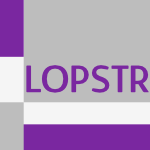 LOPSTR-2013-AntoyJ #compilation #functional #logic
LOPSTR-2013-AntoyJ #compilation #functional #logic- Compiling a Functional Logic Language: The Fair Scheme (SA, AJ), pp. 202–219.
 PPDP-2013-JedynakBB #coq
PPDP-2013-JedynakBB #coq- An operational foundation for the tactic language of Coq (WJ, MB, DB), pp. 25–36.
 PPDP-2013-MandelPP #functional #refinement
PPDP-2013-MandelPP #functional #refinement- Time refinement in a functional synchronous language (LM, CP, MP), pp. 169–180.
 PPDP-2013-MontenegroPS #analysis #functional #regular expression #using
PPDP-2013-MontenegroPS #analysis #functional #regular expression #using- Shape analysis in a functional language by using regular languages (MM, RP, CS), pp. 251–262.
 PADL-2013-BrasselHPR #constraints #equation #functional #implementation
PADL-2013-BrasselHPR #constraints #equation #functional #implementation- Implementing Equational Constraints in a Functional Language (BB, MH, BP, FR), pp. 125–140.
 PADL-2013-DreyMHC #debugging
PADL-2013-DreyMHC #debugging- Reversible Language Extensions and Their Application in Debugging (ZD, JFM, MVH, MC), pp. 206–221.
 PADL-2013-FourtounisPR #functional #implementation #lazy evaluation
PADL-2013-FourtounisPR #functional #implementation #lazy evaluation- The Generalized Intensional Transformation for Implementing Lazy Functional Languages (GF, NP, PR), pp. 157–172.
 POPL-2013-Adams #parsing
POPL-2013-Adams #parsing- Principled parsing for indentation-sensitive languages: revisiting landin’s offside rule (MDA), pp. 511–522.
 POPL-2013-BenzakenCNS #semantics
POPL-2013-BenzakenCNS #semantics- Static and dynamic semantics of NoSQL languages (VB, GC, KN, JS), pp. 101–114.
 POPL-2013-Krishnamurthi #programming language
POPL-2013-Krishnamurthi #programming language- From principles to programming languages (and back) (SK), pp. 233–234.
 POPL-2013-Myers #distributed #how
POPL-2013-Myers #distributed #how- How languages can save distributed computing (ACM), pp. 315–316.
 POPL-2013-StatonL #programming language
POPL-2013-StatonL #programming language- Universal properties of impure programming languages (SS, PBL), pp. 179–192.
 RE-2013-DwarakanathRS #automation #natural language #requirements #taxonomy
RE-2013-DwarakanathRS #automation #natural language #requirements #taxonomy- Automatic extraction of glossary terms from natural language requirements (AD, RRR, SS), pp. 314–319.
 RE-2013-SchneiderBB #architecture #enterprise #implementation #modelling #requirements
RE-2013-SchneiderBB #architecture #enterprise #implementation #modelling #requirements- A tool implementation of the unified requirements modeling language as enterprise architect add-in (FS, BB, BB), pp. 334–335.
 REFSQ-2013-FerrariGT #clustering #documentation #natural language #requirements #using
REFSQ-2013-FerrariGT #clustering #documentation #natural language #requirements #using- Using Clustering to Improve the Structure of Natural Language Requirements Documents (AF, SG, GT), pp. 34–49.
 REFSQ-2013-Ott #automation #bibliography #categorisation #natural language #scalability #specification
REFSQ-2013-Ott #automation #bibliography #categorisation #natural language #scalability #specification- Automatic Requirement Categorization of Large Natural Language Specifications at Mercedes-Benz for Review Improvements (DO), pp. 50–64.
 SAC-OOPS-J-2009-BettiniCD13 #flexibility #java #on the
SAC-OOPS-J-2009-BettiniCD13 #flexibility #java #on the- On flexible dynamic trait replacement for Java-like languages (LB, SC, FD), pp. 907–932.
 SAC-PL-J-2011-AcherCLF13 #domain-specific language #feature model #modelling #named #scalability
SAC-PL-J-2011-AcherCLF13 #domain-specific language #feature model #modelling #named #scalability- FAMILIAR: A domain-specific language for large scale management of feature models (MA, PC, PL, RBF), pp. 657–681.
 SAC-PL-J-2011-DinkelakerEM13 #compilation #embedded #incremental #syntax
SAC-PL-J-2011-DinkelakerEM13 #compilation #embedded #incremental #syntax- Incremental concrete syntax for embedded languages with support for separate compilation (TD, ME, MM), pp. 615–632.
 SAC-2013-Bettini #implementation #java #semantics #xtext
SAC-2013-Bettini #implementation #java #semantics #xtext- Implementing Java-like languages in Xtext with Xsemantics (LB), pp. 1559–1564.
 SAC-2013-CarvalhoFBSMMB #generative #natural language #requirements #specification #testing
SAC-2013-CarvalhoFBSMMB #generative #natural language #requirements #specification #testing- Test case generation from natural language requirements based on SCR specifications (GC, DF, FAB, AS, AM, LM, MRB), pp. 1217–1222.
 SAC-2013-CelestiniNT #coordination #specification
SAC-2013-CelestiniNT #coordination #specification- Specifying and analysing reputation systems with a coordination language (AC, RDN, FT), pp. 1363–1368.
 SAC-2013-DelahayeKS #c #dynamic analysis #source code #specification
SAC-2013-DelahayeKS #c #dynamic analysis #source code #specification- Common specification language for static and dynamic analysis of C programs (MD, NK, JS), pp. 1230–1235.
 SAC-2013-GroppeSW #embedded #xml
SAC-2013-GroppeSW #embedded #xml- Eliminating the XML overhead in embedded XML languages (SG, BS, SW), pp. 542–547.
 SAC-2013-GrueauA #modelling #towards
SAC-2013-GrueauA #modelling #towards- Towards a domain specific modeling language for agent-based models in land use science (CG, JA), pp. 83–85.
 SAC-2013-HahnMPM #composition #semantics #web #web service
SAC-2013-HahnMPM #composition #semantics #web #web service- Formal semantics and expressiveness of a web service composition language (MGH, RM, AP, MAM), pp. 1667–1673.
 SAC-2013-HalderC #database #query #slicing
SAC-2013-HalderC #database #query #slicing- Abstract program slicing of database query languages (RH, AC), pp. 838–845.
 SAC-2013-HongJ #named #network #object-oriented #programming language
SAC-2013-HongJ #named #network #object-oriented #programming language- Meso: an object-oriented programming language for building strongly-typed internet-based network applications (SH, YJJ), pp. 1579–1586.
 SAC-2013-LaboreiroBSRO #microblog
SAC-2013-LaboreiroBSRO #microblog- Determining language variant in microblog messages (GL, MB, LS, EMR, ECO), pp. 902–907.
 SAC-2013-LourencoSM #concurrent
SAC-2013-LourencoSM #concurrent- Concurrent typed intermediate language (LML, JCS, FM), pp. 1587–1588.
 SAC-2013-MarianiO #probability
SAC-2013-MarianiO #probability- Probabilistic embedding: experiments with tuple-based probabilistic languages (SM, AO), pp. 1380–1382.
 SAC-2013-SilvaC #exception #interface #java
SAC-2013-SilvaC #exception #interface #java- New exception interfaces for Java-like languages (TBLS, FC), pp. 1661–1666.
 SAC-2013-WestermannHF #automation #empirical #performance #specification
SAC-2013-WestermannHF #automation #empirical #performance #specification- An experiment specification language for goal-driven, automated performance evaluations (DW, JH, RF), pp. 1043–1048.
 SAC-2013-WoutersG #development #domain-specific language #empirical #metamodelling #modelling
SAC-2013-WoutersG #development #domain-specific language #empirical #metamodelling #modelling- Notation-driven vs metamodel-driven development of domain-specific modeling languages: an empirical study (LW, MPG), pp. 1145–1146.
 ESEC-FSE-2013-NguyenNN #migration #statistics
ESEC-FSE-2013-NguyenNN #migration #statistics- Lexical statistical machine translation for language migration (ATN, TTN, TNN), pp. 651–654.
 ESEC-FSE-2013-NguyenNNN #semantics #source code #statistics
ESEC-FSE-2013-NguyenNNN #semantics #source code #statistics- A statistical semantic language model for source code (TTN, ATN, HAN, TNN), pp. 532–542.
 ICSE-2013-DyerNRN #framework #named #repository #scalability
ICSE-2013-DyerNRN #framework #named #repository #scalability- Boa: a language and infrastructure for analyzing ultra-large-scale software repositories (RD, HAN, HR, TNN), pp. 422–431.
 ICSE-2013-HauptmannJEHVB #natural language #smell #testing
ICSE-2013-HauptmannJEHVB #natural language #smell #testing- Hunting for smells in natural language tests (BH, MJ, SE, LH, RV, PB), pp. 1217–1220.
 ICSE-2013-Slankas #data access #database #implementation #natural language #policy
ICSE-2013-Slankas #data access #database #implementation #natural language #policy- Implementing database access control policy from unconstrained natural language text (JS), pp. 1357–1360.
 LDTA-J-2009-AndersenBC #algebra #composition
LDTA-J-2009-AndersenBC #algebra #composition- Banana Algebra: Compositional syntactic language extension (JA, CB, DRC), pp. 1845–1870.
 SLE-2013-ErdwegSVBBCGHKLKMPPSSSVVVWW #challenge #state of the art
SLE-2013-ErdwegSVBBCGHKLKMPPSSSVVVWW #challenge #state of the art- The State of the Art in Language Workbenches — Conclusions from the Language Workbench Challenge (SE, TvdS, MV, MB, RB, WRC, AG, AH, SK, AL, GDPK, PJM, MP, RP, ES, KS, RS, VAV, EV, KvdV, GW, JvdW), pp. 197–217.
 SLE-2013-FehrenbachEO #domain-specific language #evolution
SLE-2013-FehrenbachEO #domain-specific language #evolution- Software Evolution to Domain-Specific Languages (SF, SE, KO), pp. 96–116.
 SLE-2013-LammelMV #tool support #wiki
SLE-2013-LammelMV #tool support #wiki- Method and Tool Support for Classifying Software Languages with Wikipedia (RL, DM, AV), pp. 249–259.
 SLE-2013-SobernigSB #domain-specific language #energy #scheduling
SLE-2013-SobernigSB #domain-specific language #energy #scheduling- Developing a Domain-Specific Language for Scheduling in the European Energy Sector (SS, MS, AB), pp. 19–35.
 SLE-2013-VacchiCPC #development #domain-specific language #variability
SLE-2013-VacchiCPC #development #domain-specific language #variability- Variability Support in Domain-Specific Language Development (EV, WC, SP, BC), pp. 76–95.
 SLE-2013-VasudevanT #ambiguity #detection #programming language
SLE-2013-VasudevanT #ambiguity #detection #programming language- Detecting Ambiguity in Programming Language Grammars (NV, LT), pp. 157–176.
 SLE-2013-WachsmuthKVGV #analysis #incremental #independence
SLE-2013-WachsmuthKVGV #analysis #incremental #independence- A Language Independent Task Engine for Incremental Name and Type Analysis (GW, GDPK, VAV, DMG, EV), pp. 260–280.
 SPLC-2013-EichelbergerS #analysis #modelling #variability
SPLC-2013-EichelbergerS #analysis #modelling #variability- A systematic analysis of textual variability modeling languages (HE, KS), pp. 12–21.
 SPLC-2013-FerrariSd #documentation #mining #natural language
SPLC-2013-FerrariSd #documentation #mining #natural language- Mining commonalities and variabilities from natural language documents (AF, GOS, FD), pp. 116–120.
 SPLC-2013-HaberHKLRMS #modelling
SPLC-2013-HaberHKLRMS #modelling- Engineering delta modeling languages (AH, KH, CK, ML, BR, KM, IS), pp. 22–31.
 SPLC-2013-HaugenWC #named #variability
SPLC-2013-HaugenWC #named #variability- CVL: common variability language (ØH, AW, KC), p. 277.
 CC-2013-BhaskaracharyaB #data flow #framework #named #visual notation
CC-2013-BhaskaracharyaB #data flow #framework #named #visual notation- PolyGLoT: A Polyhedral Loop Transformation Framework for a Graphical Dataflow Language (SGB, UB), pp. 123–143.
 CGO-2013-ZhangM #named #parallel
CGO-2013-ZhangM #named #parallel- Hidp: A hierarchical data parallel language (YZ, FM), p. 11.
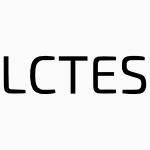 LCTES-2013-Wu
LCTES-2013-Wu- HW/SW co-designed acceleration of dynamic languages (YW), pp. 1–2.
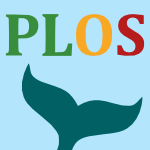 PLOS-2013-BurtsevMER #analysis #named #performance #streaming
PLOS-2013-BurtsevMER #analysis #named #performance #streaming- Weir: a streaming language for performance analysis (AB, NM, EE, RR), p. 6.
 CSL-2013-ColcombetKLB #automaton
CSL-2013-ColcombetKLB #automaton- Deciding the weak definability of Büchi definable tree languages (TC, DK, CL, MVB), pp. 215–230.
 CSL-2013-SchmidtW #abduction #complexity #constraints #similarity
CSL-2013-SchmidtW #abduction #complexity #constraints #similarity- The Complexity of Abduction for Equality Constraint Languages (JS, MW), pp. 615–633.
 ICLP-J-2013-Balduccini
ICLP-J-2013-Balduccini- ASP with non-herbrand partial functions: a language and system for practical use (MB), pp. 547–561.
 ICLP-J-2013-BanbaraSTIS #modelling #programming #set
ICLP-J-2013-BanbaraSTIS #modelling #programming #set- Answer set programming as a modeling language for course timetabling (MB, TS, NT, KI, TS), pp. 783–798.
 ICLP-J-2013-Schwitter #challenge #natural language
ICLP-J-2013-Schwitter #challenge #natural language- The jobs puzzle: Taking on the challenge via controlled natural language processing (RS), pp. 487–501.
 ICST-2013-AfshanMS #evolution #natural language #string #testing #using
ICST-2013-AfshanMS #evolution #natural language #string #testing #using- Evolving Readable String Test Inputs Using a Natural Language Model to Reduce Human Oracle Cost (SA, PM, MS), pp. 352–361.
 ICST-2013-SakamotoSTWF #framework #metric #multi #named #programming language #test coverage #tool support
ICST-2013-SakamotoSTWF #framework #metric #multi #named #programming language #test coverage #tool support- OCCF: A Framework for Developing Test Coverage Measurement Tools Supporting Multiple Programming Languages (KS, KS, RT, HW, YF), pp. 422–430.
 ICST-2013-Torsel #domain-specific language #model checking #modelling #testing #using #web
ICST-2013-Torsel #domain-specific language #model checking #modelling #testing #using #web- A Testing Tool for Web Applications Using a Domain-Specific Modelling Language and the NuSMV Model Checker (AMT), pp. 383–390.
 RTA-2013-BoichutCR #approximate
RTA-2013-BoichutCR #approximate- Over-approximating Descendants by Synchronized Tree Languages (YB, JC, PR), pp. 128–142.
 CBSE-2012-RouvoyM #agile #architecture #prototype
CBSE-2012-RouvoyM #agile #architecture #prototype- Rapid prototyping of domain-specific architecture languages (RR, PM), pp. 13–22.
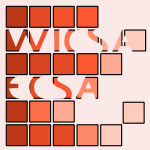 WICSA-ECSA-2012-TauschPA #analysis #domain-specific language #named #traceability
WICSA-ECSA-2012-TauschPA #analysis #domain-specific language #named #traceability- TracQL: A Domain-Specific Language for Traceability Analysis (NT, MP, JA), pp. 320–324.
 WICSA-ECSA-2012-WoodsB #architecture #case study #experience #industrial #information management #scalability #using
WICSA-ECSA-2012-WoodsB #architecture #case study #experience #industrial #information management #scalability #using- Using an Architecture Description Language to Model a Large-Scale Information System — An Industrial Experience Report (EW, RB), pp. 239–243.
 CASE-2012-DotoliFIR #agile #modelling #simulation #using
CASE-2012-DotoliFIR #agile #modelling #simulation #using- A lean manufacturing strategy using Value Stream Mapping, the Unified Modeling Language, and discrete event simulation (MD, MPF, GI, GR), pp. 668–673.
 CASE-2012-LeeB #execution #framework #lifecycle #simulation #using
CASE-2012-LeeB #execution #framework #lifecycle #simulation #using- Executable simulation lifecycle management framework using extensible and interoperable simulation language (HL, AB), pp. 237–242.
 DAC-2012-BachrachVRLWAWA #embedded #hardware #named #scala
DAC-2012-BachrachVRLWAWA #embedded #hardware #named #scala- Chisel: constructing hardware in a Scala embedded language (JB, HV, BR, YL, AW, RA, JW, KA), pp. 1216–1225.
 DAC-2012-Harris #design #natural language #specification
DAC-2012-Harris #design #natural language #specification- Extracting design information from natural language specifications (IGH), pp. 1256–1257.
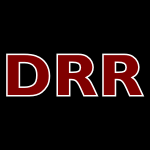 DRR-2012-MorillotLG #modelling
DRR-2012-MorillotLG #modelling- Construction of language models for an handwritten mail reading system (OM, LLS, EG).
 ITiCSE-2012-GinatA #composition #pseudo
ITiCSE-2012-GinatA #composition #pseudo- Pseudo abstract composition: the case of language concatenation (DG, RA), pp. 28–33.
 TFPIE-2012-ODonnell #education #functional #hardware #using
TFPIE-2012-ODonnell #education #functional #hardware #using- Connecting the Dots: Computer Systems Education using a Functional Hardware Description Language (JTO), pp. 20–39.
 FASE-2012-LiT #domain-specific language #erlang #refactoring
FASE-2012-LiT #domain-specific language #erlang #refactoring- A Domain-Specific Language for Scripting Refactorings in Erlang (HL, SJT), pp. 501–515.
 FASE-2012-LongCMM #abstraction #refinement
FASE-2012-LongCMM #abstraction #refinement- Language-Theoretic Abstraction Refinement (ZL, GC, RM, RM), pp. 362–376.
 FASE-2012-RuscioMMPP #architecture #modelling
FASE-2012-RuscioMMPP #architecture #modelling- Model-Driven Techniques to Enhance Architectural Languages Interoperability (DDR, IM, HM, PP, AP), pp. 26–42.
 FASE-2012-SalayFC #independence #modelling #refinement #using
FASE-2012-SalayFC #independence #modelling #refinement #using- Language Independent Refinement Using Partial Modeling (RS, MF, MC), pp. 224–239.
 FoSSaCS-2012-BolligCGK #model checking #word
FoSSaCS-2012-BolligCGK #model checking #word- Model Checking Languages of Data Words (BB, AC, PG, KNK), pp. 391–405.
 FoSSaCS-2012-KurzST #on the #regular expression
FoSSaCS-2012-KurzST #on the #regular expression- On Nominal Regular Languages with Binders (AK, TS, ET), pp. 255–269.
 TACAS-2012-HardinSWP #verification
TACAS-2012-HardinSWP #verification- The Guardol Language and Verification System (DSH, KS, MWW, THP), pp. 18–32.
 ICPC-2012-KeivanlooRR #clone detection #detection #named #semantics
ICPC-2012-KeivanlooRR #clone detection #detection #named #semantics- SeByte: A semantic clone detection tool for intermediate languages (IK, CKR, JR), pp. 247–249.
 ICSM-2012-Pollock #analysis #challenge #natural language
ICSM-2012-Pollock #analysis #challenge #natural language- Leveraging natural language analysis of software: Achievements, challenges, and opportunities (LLP), p. 4.
 SCAM-2012-MayerS #analysis #refactoring
SCAM-2012-MayerS #analysis #refactoring- Cross-Language Code Analysis and Refactoring (PM, AS), pp. 94–103.
 WCRE-2012-Al-OmariKRR #detection #dot-net #programming language
WCRE-2012-Al-OmariKRR #detection #dot-net #programming language- Detecting Clones Across Microsoft .NET Programming Languages (FAO, IK, CKR, JR), pp. 405–414.
 PEPM-2012-GotoS #approach #functional
PEPM-2012-GotoS #approach #functional- An approach to completing variable names for implicitly typed functional languages (TG, IS), pp. 131–140.
 PEPM-2012-JainZS #nondeterminism
PEPM-2012-JainZS #nondeterminism- Translating flowcharts to non-deterministic languages (SKJ, CZ, BS), pp. 155–162.
 PLDI-2012-DubachCRBF #architecture #compilation
PLDI-2012-DubachCRBF #architecture #compilation- Compiling a high-level language for GPUs: (via language support for architectures and compilers) (CD, PC, RMR, DFB, SJF), pp. 1–12.
 PLDI-2012-OhHLLY #analysis #design #implementation
PLDI-2012-OhHLLY #analysis #design #implementation- Design and implementation of sparse global analyses for C-like languages (HO, KH, WL, WL, KY), pp. 229–238.
 PLDI-2012-ZhangAM
PLDI-2012-ZhangAM- Language-based control and mitigation of timing channels (DZ, AA, ACM), pp. 99–110.
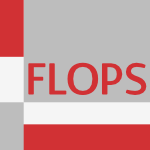 FLOPS-2012-AntoyP #compilation #functional #logic
FLOPS-2012-AntoyP #compilation #functional #logic- Compiling a Functional Logic Language: The Basic Scheme (SA, AP), pp. 17–31.
 FLOPS-2012-RoseVS #data flow #hybrid #programming language #query
FLOPS-2012-RoseVS #data flow #hybrid #programming language #query- A Data Flow Language for Hybrid Query and Programming Languages (KHR, LV, NS), pp. 228–242.
 AFL-J-2011-BrzozowskiL12 #complexity
AFL-J-2011-BrzozowskiL12 #complexity- Quotient Complexity of Star-Free Languages (JAB, BL), pp. 1261–1276.
 AFL-J-2011-FazekasLS12 #context-free grammar #on the
AFL-J-2011-FazekasLS12 #context-free grammar #on the- On Non-Primitive Palindromic Context-Free Languages (SZF, PL, KST), pp. 1277–1290.
 AFL-J-2011-IbarraS12 #bound #linear
AFL-J-2011-IbarraS12 #bound #linear- Characterizations of Bounded semilinear Languages by One-Way and Two-Way Deterministic Machines (OHI, SS), pp. 1291–1306.
 AFL-J-2011-Pin12 #equation
AFL-J-2011-Pin12 #equation- Equational Descriptions of Languages (JÉP), pp. 1227–1240.
 DLT-J-2011-ChaturvediOT12 #game studies #infinity
DLT-J-2011-ChaturvediOT12 #game studies #infinity- Languages versus ω-Languages in Regular Infinite Games (NC, JO, WT), pp. 985–1000.
 DLT-J-2011-ZhengQL12 #automaton #finite #quantum
DLT-J-2011-ZhengQL12 #automaton #finite #quantum- Some Languages Recognized by Two-Way Finite Automata with Quantum and Classical States (SZ, DQ, LL), pp. 1117–1130.
 CIAA-2012-AmarniL #kernel #sequence
CIAA-2012-AmarniL #kernel #sequence- Factor and Subsequence Kernels and Signatures of Rational Languages (AA, SL), pp. 313–320.
 CIAA-2012-Brzozowski #regular expression
CIAA-2012-Brzozowski #regular expression- In Search of Most Complex Regular Languages (JAB), pp. 5–24.
 CIAA-2012-JahnKL
CIAA-2012-JahnKL- Regular Ideal Languages and Their Boolean Combinations (FJ, MK, AL), pp. 205–216.
 DLT-2012-BealCDJL #decidability #geometry #regular expression
DLT-2012-BealCDJL #decidability #geometry #regular expression- Decidability of Geometricity of Regular Languages (MPB, JMC, JPD, HJ, SL), pp. 62–72.
 DLT-2012-BrzozowskiT #regular expression
DLT-2012-BrzozowskiT #regular expression- Quotient Complexities of Atoms of Regular Languages (JAB, HT), pp. 50–61.
 DLT-2012-DennunzioFP
DLT-2012-DennunzioFP- Acceptance Conditions for ω-Languages (AD, EF, JP), pp. 320–331.
 DLT-2012-EsikO #context-free grammar #on the #word
DLT-2012-EsikO #context-free grammar #on the #word- On Context-Free Languages of Scattered Words (ZÉ, SO), pp. 142–153.
 DLT-2012-FlickK #on the
DLT-2012-FlickK #on the- On a Hierarchy of Languages with Catenation and Shuffle (NEF, MK), pp. 452–458.
 DLT-2012-GandhiKL #complexity #finite #on the #word
DLT-2012-GandhiKL #complexity #finite #on the #word- On State Complexity of Finite Word and Tree Languages (AG, BK, JL), pp. 392–403.
 DLT-2012-GeffertP
DLT-2012-GeffertP- Unary Coded NP-Complete Languages in ASPACE (log log n) (VG, DP), pp. 166–177.
 DLT-2012-HanKS #context-free grammar #regular expression
DLT-2012-HanKS #context-free grammar #regular expression- Computing the Edit-Distance between a Regular Language and a Context-Free Language (YSH, SKK, KS), pp. 85–96.
 DLT-2012-KetemaS #normalisation #string #termination
DLT-2012-KetemaS #normalisation #string #termination- Characterizing Languages by Normalization and Termination in String Rewriting — (Extended Abstract) (JK, JGS), pp. 459–464.
 DLT-2012-KlimaP #automaton
DLT-2012-KlimaP #automaton- Biautomata for k-Piecewise Testable Languages (OK, LP), pp. 344–355.
 DLT-2012-LehtinenO #context-free grammar #morphism
DLT-2012-LehtinenO #context-free grammar #morphism- Homomorphisms Preserving Deterministic Context-Free Languages (TL, AO), pp. 154–165.
 DLT-2012-ReidenbachS #pattern matching
DLT-2012-ReidenbachS #pattern matching- Regular and Context-Free Pattern Languages over Small Alphabets (DR, MLS), pp. 130–141.
 DLT-2012-Schmid #regular expression
DLT-2012-Schmid #regular expression- Inside the Class of REGEX Languages (MLS), pp. 73–84.
 ICALP-v2-2012-BojanczykL #independence
ICALP-v2-2012-BojanczykL #independence- A Machine-Independent Characterization of Timed Languages (MB, SL), pp. 92–103.
 ICALP-v2-2012-BojanczykP #infinity #regular expression #set
ICALP-v2-2012-BojanczykP #infinity #regular expression #set- Regular Languages of Infinite Trees That Are Boolean Combinations of Open Sets (MB, TP), pp. 104–115.
 ICALP-v2-2012-DiekertKRW #regular expression
ICALP-v2-2012-DiekertKRW #regular expression- Regular Languages Are Church-Rosser Congruential (VD, MK, KR, TW), pp. 177–188.
 ICALP-v2-2012-Torunczyk #problem #word
ICALP-v2-2012-Torunczyk #problem #word- Languages of Profinite Words and the Limitedness Problem (ST), pp. 377–389.
 LATA-2012-Asarin #information management
LATA-2012-Asarin #information management- Measuring Information in Timed Languages (EA), pp. 1–2.
 LATA-2012-Dowek #automaton #formal method #physics #quantum
LATA-2012-Dowek #automaton #formal method #physics #quantum- Around the Physical Church-Turing Thesis: Cellular Automata, Formal Languages, and the Principles of Quantum Theory (GD), pp. 21–37.
 LATA-2012-DubeLT #regular expression
LATA-2012-DubeLT #regular expression- Conservative Groupoids Recognize Only Regular Languages (DD, ML, PT), pp. 216–227.
 LATA-2012-GeilkeZ #algorithm #learning #pattern matching #polynomial
LATA-2012-GeilkeZ #algorithm #learning #pattern matching #polynomial- Polynomial-Time Algorithms for Learning Typed Pattern Languages (MG, SZ), pp. 277–288.
 LATA-2012-Genova #normalisation #set
LATA-2012-Genova #normalisation #set- Forbidding Sets and Normal Forms for Language Forbidding-Enforcing Systems (DG), pp. 289–300.
 LATA-2012-Hetzl #proving
LATA-2012-Hetzl #proving- Applying Tree Languages in Proof Theory (SH), pp. 301–312.
 LATA-2012-Rabkin
LATA-2012-Rabkin- Ogden’s Lemma for ET0L Languages (MR), pp. 458–467.
 IFM-2012-RochaCMS #execution #interactive #verification
IFM-2012-RochaCMS #execution #interactive #verification- A Formal Interactive Verification Environment for the Plan Execution Interchange Language (CR, HC, CAM, RS), pp. 343–357.
 SEFM-2012-NikolicPZ #imperative #modelling #rule-based #simulation
SEFM-2012-NikolicPZ #imperative #modelling #rule-based #simulation- A Rule-Based and Imperative Language for Biochemical Modeling and Simulation (DN, CP, RZ), pp. 16–32.
 SFM-2012-CabotG #constraints #ocl
SFM-2012-CabotG #constraints #ocl- Object Constraint Language (OCL): A Definitive Guide (JC, MG), pp. 58–90.
 ICFP-2012-Axelsson #embedded #syntax
ICFP-2012-Axelsson #embedded #syntax- A generic abstract syntax model for embedded languages (EA), pp. 323–334.
 ICFP-2012-Olukotun #domain-specific language #embedded #performance
ICFP-2012-Olukotun #domain-specific language #embedded #performance- High performance embedded domain specific languages (KO), pp. 139–140.
 ICFP-2012-Sheard #design #programming #reduction
ICFP-2012-Sheard #design #programming #reduction- Painless programming combining reduction and search: design principles for embedding decision procedures in high-level languages (TES), pp. 89–102.
 IFL-2012-SculthorpeFG #haskell #program transformation
IFL-2012-SculthorpeFG #haskell #program transformation- The HERMIT in the Tree — Mechanizing Program Transformations in the GHC Core Language (NS, AF, AG), pp. 86–103.
 GT-VMT-2012-BrugginkHK #automaton #graph #towards
GT-VMT-2012-BrugginkHK #automaton #graph #towards- Towards Alternating Automata for Graph Languages (HJSB, MH, BK).
 ICGT-2012-Ong #graph transformation #multi #programming language #rule-based #using
ICGT-2012-Ong #graph transformation #multi #programming language #rule-based #using- Multi-scale Rule-Based Graph Transformation Using the Programming Language XL (YO), pp. 417–419.
 CHI-2012-BaoHCQHG #named #wiki
CHI-2012-BaoHCQHG #named #wiki- Omnipedia: bridging the wikipedia language gap (PB, BH, SC, MQ, MSH, DG), pp. 1075–1084.
 CHI-2012-BogartBDAW #case study #debugging #design #interactive #programming
CHI-2012-BogartBDAW #case study #debugging #design #interactive #programming- Designing a debugging interaction language for cognitive modelers: an initial case study in natural programming plus (CB, MMB, SD, HA, RW), pp. 2469–2478.
 CHI-2012-DearmanT #using
CHI-2012-DearmanT #using- Evaluating the implicit acquisition of second language vocabulary using a live wallpaper (DD, KNT), pp. 1391–1400.
 CHI-2012-DenefK #design #pattern matching
CHI-2012-DenefK #design #pattern matching- Talking about implications for design in pattern language (SD, DVK), pp. 2509–2518.
 CHI-2012-LeivaA #automation #exclamation
CHI-2012-LeivaA #automation #exclamation- Monsieur, azonnal kövessen engem bitte!: an automatically generated interlanguage tailored to speakers of minority but culturally influenced languages (LAL, VA), pp. 31–34.
 CHI-2012-MetoyerLRC #comprehension #visualisation
CHI-2012-MetoyerLRC #comprehension #visualisation- Understanding the verbal language and structure of end-user descriptions of data visualizations (RAM, BL, NHR, MC), pp. 1659–1662.
 CHI-2012-PiperWH #authoring #game studies #interactive #process #tool support
CHI-2012-PiperWH #authoring #game studies #interactive #process #tool support- TAP & PLAY: an end-user toolkit for authoring interactive pen and paper language activities (AMP, NW, JDH), pp. 149–158.
 AdaEurope-2012-Tempelmeier #ada #concept #education #programming language
AdaEurope-2012-Tempelmeier #ada #concept #education #programming language- Teaching “Concepts of Programming Languages” with Ada (TT), pp. 60–74.
 HILT-2012-Leino12a #proving #using #verification #why
HILT-2012-Leino12a #proving #using #verification #why- Program proving using intermediate verification languages (IVLs) like boogie and why3 (KRML), pp. 25–26.
 HILT-2012-Steele #lifecycle #programming language
HILT-2012-Steele #lifecycle #programming language- Programming language life cycles (GLSJ), pp. 95–96.
 CAiSE-2012-LaraGC #approach #modelling
CAiSE-2012-LaraGC #approach #modelling- Abstracting Modelling Languages: A Reutilization Approach (JdL, EG, JSC), pp. 127–143.
 CAiSE-2012-LeopoldMP #generative #modelling #natural language #process
CAiSE-2012-LeopoldMP #generative #modelling #natural language #process- Generating Natural Language Texts from Business Process Models (HL, JM, AP), pp. 64–79.
 ICEIS-J-2012-VianaPP12a #domain-specific language #framework #modelling
ICEIS-J-2012-VianaPP12a #domain-specific language #framework #modelling- Building Domain-Specific Modeling Languages for Frameworks (MCV, RADP, AFdP), pp. 191–206.
 ICEIS-v1-2012-TeguiakAJS #database #modelling #named
ICEIS-v1-2012-TeguiakAJS #database #modelling #named- MQL: A Mapping Management Language for Model-based Databases (HVT, YAA, SJ, ÉS), pp. 145–150.
 ICEIS-v2-2012-FreireCGL #modelling #multi #named
ICEIS-v2-2012-FreireCGL #modelling #multi #named- NorMAS-ML — A Modeling Language to Model Normative Multi-agent Systems (ESSF, MIC, EJTG, YSL), pp. 113–119.
 ICEIS-v2-2012-VianaPP #domain-specific language #framework #generative #modelling #reuse
ICEIS-v2-2012-VianaPP #domain-specific language #framework #generative #modelling #reuse- Generating Applications — Framework Reuse Supported by Domain-Specific Modeling Languages (MCV, RDP, AFdP), pp. 5–14.
 CIKM-2012-BaeK #classification #effectiveness #recommendation
CIKM-2012-BaeK #classification #effectiveness #recommendation- An effective category classification method based on a language model for question category recommendation on a cQA service (KB, YK), pp. 2255–2258.
 CIKM-2012-DarwishMM #microblog #retrieval
CIKM-2012-DarwishMM #microblog #retrieval- Language processing for arabic microblog retrieval (KD, WM, AM), pp. 2427–2430.
 CIKM-2012-ReyesD #natural language #preprocessor
CIKM-2012-ReyesD #natural language #preprocessor- Preprocessing of informal mathematical discourse in context ofcontrolled natural language (REGdPR, JFDF), pp. 1632–1636.
 ECIR-2012-ChhedaFM #word
ECIR-2012-ChhedaFM #word- Handling OOV Words in Indian-language — English CLIR (PC, MF, PM), pp. 476–479.
 ECIR-2012-Garcia-MoyaAL #modelling #probability #retrieval #sentiment
ECIR-2012-Garcia-MoyaAL #modelling #probability #retrieval #sentiment- Combining Probabilistic Language Models for Aspect-Based Sentiment Retrieval (LGM, HAS, RBL), pp. 561–564.
 ECIR-2012-KarimzadehganZ #analysis #axiom #information retrieval
ECIR-2012-KarimzadehganZ #analysis #axiom #information retrieval- Axiomatic Analysis of Translation Language Model for Information Retrieval (MK, CZ), pp. 268–280.
 ECIR-2012-LiG #information retrieval
ECIR-2012-LiG #information retrieval- An Information-Based Cross-Language Information Retrieval Model (BL, ÉG), pp. 281–292.
 ECIR-2012-ParaparB #clustering #constraints #modelling
ECIR-2012-ParaparB #clustering #constraints #modelling- Language Modelling of Constraints for Text Clustering (JP, AB), pp. 352–363.
 ICML-2012-GuoX #classification #learning #multi
ICML-2012-GuoX #classification #learning #multi- Cross Language Text Classification via Subspace Co-regularized Multi-view Learning (YG, MX), p. 120.
 ICML-2012-MatuszekFZBF #learning
ICML-2012-MatuszekFZBF #learning- A Joint Model of Language and Perception for Grounded Attribute Learning (CM, NF, LSZ, LB, DF), p. 186.
 ICML-2012-MnihT #algorithm #modelling #performance #probability
ICML-2012-MnihT #algorithm #modelling #performance #probability- A fast and simple algorithm for training neural probabilistic language models (AM, YWT), p. 58.
 ICPR-2012-FrinkenZBBFB #memory management #modelling #network #recognition
ICPR-2012-FrinkenZBBFB #memory management #modelling #network #recognition- Long-short term memory neural networks language modeling for handwriting recognition (VF, FZM, SEB, MJCB, AF, HB), pp. 701–704.
 KDD-2012-Mayer #identification #internet #multi
KDD-2012-Mayer #identification #internet #multi- Bootstrapped language identification for multi-site internet domains (UFM), pp. 579–585.
 KEOD-2012-AygulCC #multi #natural language #ontology #query
KEOD-2012-AygulCC #multi #natural language #ontology #query- Natural Language Query Processing in Multimedia Ontologies (FAA, NKC, IC), pp. 66–75.
 KR-2012-BaralL #declarative #reasoning #representation
KR-2012-BaralL #declarative #reasoning #representation- From Knowledge Represented in Frame-Based Languages to Declarative Representation and Reasoning via ASP (CB, SL).
 KR-2012-HalpernK #ambiguity #difference
KR-2012-HalpernK #ambiguity #difference- Ambiguous Language and Differences in Beliefs (JYH, WK).
 SEKE-2012-AlbuquerquePL #approach #case study #experience #natural language #requirements #reuse
SEKE-2012-AlbuquerquePL #approach #case study #experience #natural language #requirements #reuse- Reuse of Experiences Applied to Requirements Engineering: An Approach Based on Natural Language Processing (AA, VP, TL), pp. 574–577.
 SEKE-2012-ConradoC #domain-specific language #embedded #visual notation
SEKE-2012-ConradoC #domain-specific language #embedded #visual notation- Engineering Graphical Domain Specific Languages to Develop Embedded Robot Applications (DBFC, VVdC), pp. 495–498.
 SEKE-2012-HumairaSOWF #framework #metric #multi #programming language #source code #towards
SEKE-2012-HumairaSOWF #framework #metric #multi #programming language #source code #towards- Towards a Unified Source Code Measurement Framework Supporting Multiple Programming Languages (RH, KS, AO, HW, YF), pp. 480–485.
 SEKE-2012-NarkngamL #diagrams #domain-specific language #process #uml
SEKE-2012-NarkngamL #diagrams #domain-specific language #process #uml- Rendering UML Activity Diagrams as a Domain Specific Language — ADL (CN, YL), pp. 724–729.
 SIGIR-2012-TsagkiasB #behaviour #modelling
SIGIR-2012-TsagkiasB #behaviour #modelling- Language intent models for inferring user browsing behavior (MT, RB), pp. 335–344.
 SIGIR-2012-TureLO #information retrieval
SIGIR-2012-TureLO #information retrieval- Looking inside the box: context-sensitive translation for cross-language information retrieval (FT, JJL, DWO), pp. 1105–1106.
 ICMT-J-2011-WimmerKKRSSKPLSW12 #inheritance #model transformation
ICMT-J-2011-WimmerKKRSSKPLSW12 #inheritance #model transformation- Surveying Rule Inheritance in Model-to-Model Transformation Languages (MW, GK, AK, WR, JS, WS, DSK, RFP, ML, AS, DW), pp. 1–46.
 BX-2012-Zaytsev #evolution
BX-2012-Zaytsev #evolution- Language Evolution, Metasyntactically (VZ), pp. 38–54.
 ECMFA-2012-GoldschmidtM #domain-specific language #query
ECMFA-2012-GoldschmidtM #domain-specific language #query- An Internal Domain-Specific Language for Constructing OPC UA Queries and Event Filters (TG, WM), pp. 62–73.
 ECMFA-2012-KolovosRWMP #approach #documentation #lightweight #xml
ECMFA-2012-KolovosRWMP #approach #documentation #lightweight #xml- A Lightweight Approach for Managing XML Documents with MDE Languages (DSK, LMR, JRW, NDM, RFP), pp. 118–132.
 ECMFA-2012-LaraG #metamodelling #modelling
ECMFA-2012-LaraG #metamodelling #modelling- Domain-Specific Textual Meta-Modelling Languages for Model Driven Engineering (JdL, EG), pp. 259–274.
 ECMFA-2012-PfeifferW #development #multi #named
ECMFA-2012-PfeifferW #development #multi #named- TexMo: A Multi-language Development Environment (RHP, AW), pp. 178–193.
 ICMT-2012-Cuadrado #model transformation #product line #towards
ICMT-2012-Cuadrado #model transformation #product line #towards- Towards a Family of Model Transformation Languages (JSC), pp. 176–191.
 ICMT-2012-GeorgeWS #domain-specific language #model transformation #scala #type safety
ICMT-2012-GeorgeWS #domain-specific language #model transformation #scala #type safety- Type-Safe Model Transformation Languages as Internal DSLs in Scala (LG, AW, MS), pp. 160–175.
 ICMT-2012-PachecoC #bidirectional #model transformation #multi #named #xml
ICMT-2012-PachecoC #bidirectional #model transformation #multi #named #xml- Multifocal: A Strategic Bidirectional Transformation Language for XML Schemas (HP, AC), pp. 89–104.
 ICMT-2012-WagelaarIRP #co-evolution #emf #semantics #virtual machine
ICMT-2012-WagelaarIRP #co-evolution #emf #semantics #virtual machine- Translational Semantics of a Co-evolution Specific Language with the EMF Transformation Virtual Machine (DW, LI, DDR, AP), pp. 192–207.
 ICMT-2012-WimmerKKRSS #model transformation #reuse #rule-based
ICMT-2012-WimmerKKRSS #model transformation #reuse #rule-based- Fact or Fiction — Reuse in Rule-Based Model-to-Model Transformation Languages (MW, GK, AK, WR, JS, WS), pp. 280–295.
 MoDELS-2012-JacksonSB #constraints #declarative #detection #fault #specification
MoDELS-2012-JacksonSB #constraints #declarative #detection #fault #specification- Detecting Specification Errors in Declarative Languages with Constraints (EKJ, WS, NB), pp. 399–414.
 MoDELS-2012-PfeifferW #development
MoDELS-2012-PfeifferW #development- Cross-Language Support Mechanisms Significantly Aid Software Development (RHP, AW), pp. 168–184.
 MoDELS-2012-RabbiM #agile #development #domain-specific language #workflow
MoDELS-2012-RabbiM #agile #development #domain-specific language #workflow- T□: A Domain Specific Language for Rapid Workflow Development (FR, WM), pp. 36–52.
 MoDELS-2012-JacksonSB #constraints #declarative #detection #fault #specification
MoDELS-2012-JacksonSB #constraints #declarative #detection #fault #specification- Detecting Specification Errors in Declarative Languages with Constraints (EKJ, WS, NB), pp. 399–414.
 MoDELS-2012-PfeifferW #development
MoDELS-2012-PfeifferW #development- Cross-Language Support Mechanisms Significantly Aid Software Development (RHP, AW), pp. 168–184.
 MoDELS-2012-RabbiM #agile #development #domain-specific language #workflow
MoDELS-2012-RabbiM #agile #development #domain-specific language #workflow- T□: A Domain Specific Language for Rapid Workflow Development (FR, WM), pp. 36–52.
 ECOOP-2012-Ancona #induction #object-oriented #semantics
ECOOP-2012-Ancona #induction #object-oriented #semantics- Soundness of Object-Oriented Languages with Coinductive Big-Step Semantics (DA), pp. 459–483.
 ECOOP-2012-BonoKM #composition #named
ECOOP-2012-BonoKM #composition #named- Magda: A New Language for Modularity (VB, JK, MM), pp. 560–588.
 ECOOP-2012-LeeGHM #metaprogramming #named
ECOOP-2012-LeeGHM #metaprogramming #named- Marco: Safe, Expressive Macros for Any Language (BL, RG, MH, KSM), pp. 589–613.
 ECOOP-2012-MorandatHOV #data analysis #design
ECOOP-2012-MorandatHOV #data analysis #design- Evaluating the Design of the R Language — Objects and Functions for Data Analysis (FM, BH, LO, JV), pp. 104–131.
 Onward-2012-Gabriel #programming language
Onward-2012-Gabriel #programming language- The structure of a programming language revolution (RPG), pp. 195–214.
 Onward-2012-HafizAJ #pattern matching #security
Onward-2012-HafizAJ #pattern matching #security- Growing a pattern language (for security) (MH, PA, REJ), pp. 139–158.
 Onward-2012-Heinlein #composition #named #programming language #static typing
Onward-2012-Heinlein #composition #named #programming language #static typing- MOST-flexiPL: modular, statically typed, flexibly extensible programming language (CH), pp. 159–178.
 Onward-2012-MeyerovichR #named #programming language
Onward-2012-MeyerovichR #named #programming language- Socio-PLT: principles for programming language adoption (LAM, ASR), pp. 39–54.
 OOPSLA-2012-Anderson #fine-grained #parallel #policy #resource management #using
OOPSLA-2012-Anderson #fine-grained #parallel #policy #resource management #using- Efficiently combining parallel software using fine-grained, language-level, hierarchical resource management policies (ZRA), pp. 717–736.
 OOPSLA-2012-CastanosEINNOW #compilation #jit #on the #scripting language #static typing
OOPSLA-2012-CastanosEINNOW #compilation #jit #on the #scripting language #static typing- On the benefits and pitfalls of extending a statically typed language JIT compiler for dynamic scripting languages (JGC, DE, KI, PN, TN, TO, PW), pp. 195–212.
 OOPSLA-2012-MullerC #concurrent #towards
OOPSLA-2012-MullerC #concurrent #towards- Towards a practical secure concurrent language (SM, SC), pp. 57–74.
 PLATEAU-2012-MeyerovichR12a #bibliography #case study #developer #experience #how #repository
PLATEAU-2012-MeyerovichR12a #bibliography #case study #developer #experience #how #repository- How not to survey developers and repositories: experiences analyzing language adoption (LAM, ASR), pp. 7–16.
 PLATEAU-2012-SpinellisKL #comparative #programming language #testing
PLATEAU-2012-SpinellisKL #comparative #programming language #testing- Comparative language fuzz testing: programming languages vs. fat fingers (DS, VK, PL), pp. 25–34.
 PLATEAU-2012-UrmaM #evolution #programming language #query #source code
PLATEAU-2012-UrmaM #evolution #programming language #query #source code- Programming language evolution via source code query languages (RGU, AM), pp. 35–38.
 TOOLS-EUROPE-2012-FavreLSV #community #named
TOOLS-EUROPE-2012-FavreLSV #community #named- 101companies: A Community Project on Software Technologies and Software Languages (JMF, RL, TS, AV), pp. 58–74.
 TOOLS-EUROPE-2012-MarrD #abstraction #concurrent #identification #implementation #multi #virtual machine
TOOLS-EUROPE-2012-MarrD #abstraction #concurrent #identification #implementation #multi #virtual machine- Identifying a Unifying Mechanism for the Implementation of Concurrency Abstractions on Multi-language Virtual Machines (SM, TD), pp. 171–186.
 TOOLS-EUROPE-2012-SoekenWD #behaviour #development #natural language #using
TOOLS-EUROPE-2012-SoekenWD #behaviour #development #natural language #using- Assisted Behavior Driven Development Using Natural Language Processing (MS, RW, RD), pp. 269–287.
 GPCE-2012-EfftingeEKZMHH #domain-specific language #implementation #java #named
GPCE-2012-EfftingeEKZMHH #domain-specific language #implementation #java #named- Xbase: implementing domain-specific languages for Java (SE, ME, JK, SZ, RvM, WH, MH), pp. 112–121.
 LOPSTR-2012-ChristiansenHLP #data analysis #declarative #pipes and filters
LOPSTR-2012-ChristiansenHLP #data analysis #declarative #pipes and filters- A Declarative Pipeline Language for Complex Data Analysis (HC, CTH, OTL, MP), pp. 17–34.
 PPDP-2012-PlasmeijerLMAK #functional #programming
PPDP-2012-PlasmeijerLMAK #functional #programming- Task-oriented programming in a pure functional language (RP, BL, SM, PA, PWMK), pp. 195–206.
 PADL-2012-BradyH #domain-specific language #embedded #programming
PADL-2012-BradyH #domain-specific language #embedded #programming- Resource-Safe Systems Programming with Embedded Domain Specific Languages (EB, KH), pp. 242–257.
 PADL-2012-BromanN #equation #modelling #object-oriented #semantics
PADL-2012-BromanN #equation #modelling #object-oriented #semantics- Node-Based Connection Semantics for Equation-Based Object-Oriented Modeling Languages (DB, HN), pp. 258–272.
 POPL-2012-HeideggerBT #contract #scripting language
POPL-2012-HeideggerBT #contract #scripting language- Access permission contracts for scripting languages (PH, AB, PT), pp. 111–122.
 POPL-2012-MonsantoFHW #compilation #network #programming language #runtime
POPL-2012-MonsantoFHW #compilation #network #programming language #runtime- A compiler and run-time system for network programming languages (CM, NF, RH, DW), pp. 217–230.
 POPL-2012-Rexford #network #programmable #programming language
POPL-2012-Rexford #network #programmable #programming language- Programming languages for programmable networks (JR), pp. 215–216.
 POPL-2012-YangYS #automation #policy #privacy
POPL-2012-YangYS #automation #policy #privacy- A language for automatically enforcing privacy policies (JY, KY, ASL), pp. 85–96.
 RE-2012-BerenbachSN #industrial #modelling #requirements
RE-2012-BerenbachSN #industrial #modelling #requirements- The use of a requirements modeling language for industrial applications (BB, FS, HN), pp. 285–290.
 RE-2012-Ott #fault #legacy #natural language #specification #using
RE-2012-Ott #fault #legacy #natural language #specification #using- Defects in natural language requirement specifications at Mercedes-Benz: An investigation using a combination of legacy data and expert opinion (DO), pp. 291–296.
 RE-2012-ShakerAW #feature model #modelling #requirements
RE-2012-ShakerAW #feature model #modelling #requirements- A feature-oriented requirements modelling language (PS, JMA, SW), pp. 151–160.
 RE-2012-YangRGWN #automation #detection #natural language #nondeterminism #requirements
RE-2012-YangRGWN #automation #detection #natural language #nondeterminism #requirements- Speculative requirements: Automatic detection of uncertainty in natural language requirements (HY, ANDR, VG, AW, BN), pp. 11–20.
 REFSQ-2012-QureshiJP #adaptation #modelling #requirements #self #towards
REFSQ-2012-QureshiJP #adaptation #modelling #requirements #self #towards- Towards a Requirements Modeling Language for Self-Adaptive Systems (NAQ, IJ, AP), pp. 263–279.
 SAC-PL-J-2009-J-BiggarVG12 #compilation #scripting language
SAC-PL-J-2009-J-BiggarVG12 #compilation #scripting language- A practical solution for achieving language compatibility in scripting language compilers (PB, EdV, DG), pp. 971–989.
 SAC-2012-BromanFHA #comparison #domain-specific language #implementation
SAC-2012-BromanFHA #comparison #domain-specific language #implementation- A comparison of two metacompilation approaches to implementing a complex domain-specific language (DB, PF, GH, JÅ), pp. 1919–1921.
 SAC-2012-ChiprianovKR #architecture #enterprise #modelling
SAC-2012-ChiprianovKR #architecture #enterprise #modelling- Extending Enterprise Architecture Modeling Languages: application to telecommunications service creation (VC, YK, SR), pp. 1661–1666.
 SAC-2012-GjondrekajLPT #adaptation #coordination #modelling
SAC-2012-GjondrekajLPT #adaptation #coordination #modelling- Modeling adaptation with a tuple-based coordination language (EG, ML, RP, FT), pp. 1522–1527.
 SAC-2012-MetivierBCKL #constraints #declarative
SAC-2012-MetivierBCKL #constraints #declarative- A constraint language for declarative pattern discovery (JPM, PB, BC, MK, SL), pp. 119–125.
 SAC-2012-PozzaniC #named #query #sql
SAC-2012-PozzaniC #named #query #sql- ST4SQL: a spatio-temporal query language dealing with granularities (GP, CC), pp. 23–25.
 SAC-2012-PriamiQZ #biology #graph #imperative #self
SAC-2012-PriamiQZ #biology #graph #imperative #self- An imperative language of self-modifying graphs for biological systems (CP, PQ, RZ), pp. 1903–1909.
 SAC-2012-ScholteRBK #analysis #empirical #validation #web
SAC-2012-ScholteRBK #analysis #empirical #validation #web- An empirical analysis of input validation mechanisms in web applications and languages (TS, WKR, DB, EK), pp. 1419–1426.
 FSE-2012-CugolaGPT #adaptation #declarative #mobile #named
FSE-2012-CugolaGPT #adaptation #declarative #mobile #named- SelfMotion: a declarative language for adaptive service-oriented mobile apps (GC, CG, LSP, GT), p. 7.
 FSE-2012-DiGiuseppeJ #automation #fault #semantics
FSE-2012-DiGiuseppeJ #automation #fault #semantics- Semantic fault diagnosis: automatic natural-language fault descriptions (ND, JAJ), p. 23.
 FSE-2012-XiaoPTX #automation #documentation #policy #security
FSE-2012-XiaoPTX #automation #documentation #policy #security- Automated extraction of security policies from natural-language software documents (XX, AMP, ST, TX), p. 12.
 ICSE-2012-AtkinsonGK #domain-specific language
ICSE-2012-AtkinsonGK #domain-specific language- Symbiotic general-purpose and domain-specific languages (CA, RG, BK), pp. 1269–1272.
 ICSE-2012-Faghih #modelling
ICSE-2012-Faghih #modelling- Model translations among big-step modeling languages (FF), pp. 1555–1558.
 ICSE-2012-IwamaNT #industrial #natural language #parsing #specification
ICSE-2012-IwamaNT #industrial #natural language #parsing #specification- Constructing parser for industrial software specifications containing formal and natural language description (FI, TN, HT), pp. 1012–1021.
 ICSE-2012-NguyenNNN #detection #named #web
ICSE-2012-NguyenNNN #detection #named #web- BabelRef: Detection and renaming tool for cross-language program entities in dynamic web applications (HVN, HAN, TTN, TNN), pp. 1391–1394.
 ICSE-2012-PanditaXZXOP #api #natural language #specification
ICSE-2012-PanditaXZXOP #api #natural language #specification- Inferring method specifications from natural language API descriptions (RP, XX, HZ, TX, SO, AMP), pp. 815–825.
 ICSE-2012-VoelterP #composition
ICSE-2012-VoelterP #composition- Language modularity with the MPS language workbench (MV, VP), pp. 1449–1450.
 LDTA-2012-ErdwegGR #composition
LDTA-2012-ErdwegGR #composition- Language composition untangled (SE, PGG, TR), p. 7.
 LDTA-2012-JongeV #refactoring
LDTA-2012-JongeV #refactoring- A language generic solution for name binding preservation in refactorings (MdJ, EV), p. 2.
 LDTA-2012-LinckeS #concept #higher-order #object-oriented
LDTA-2012-LinckeS #concept #higher-order #object-oriented- From HOT to COOL: transforming higher-order typed languages to concept-constrained object-oriented languages (DL, SS), p. 3.
 LDTA-2012-Voigtlander #bidirectional #programming language
LDTA-2012-Voigtlander #bidirectional #programming language- Programming language approaches to bidirectional transformation (JV), p. 1.
 SLE-2012-HillsKV #metalanguage #type safety
SLE-2012-HillsKV #metalanguage #type safety- Meta-language Support for Type-Safe Access to External Resources (MH, PK, JJV), pp. 372–391.
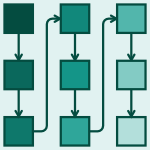 PLEASE-2012-AcherMHCL #feature model #modelling #tool support
PLEASE-2012-AcherMHCL #feature model #modelling #tool support- Languages and tools for managing feature models (MA, RM, PH, PC, PL), pp. 25–28.
 LCTES-2012-GerardGPP #array #compilation #composition #data flow #memory management #optimisation
LCTES-2012-GerardGPP #array #compilation #composition #data flow #memory management #optimisation- A modular memory optimization for synchronous data-flow languages: application to arrays in a lustre compiler (LG, AG, CP, MP), pp. 51–60.
 PPoPP-2012-BonettaPPB #named #rest #scripting language #web #web service
PPoPP-2012-BonettaPPB #named #rest #scripting language #web #web service- S: a scripting language for high-performance RESTful web services (DB, AP, CP, WB), pp. 97–106.
 PPoPP-2012-KamilCBCGHMF #domain-specific language #effectiveness #embedded #parallel #performance
PPoPP-2012-KamilCBCGHMF #domain-specific language #effectiveness #embedded #parallel #performance- Portable parallel performance from sequential, productive, embedded domain-specific languages (SK, DC, SB, HC, EG, JH, JM, AF), pp. 303–304.
 PPoPP-2012-LeissaHW #programming
PPoPP-2012-LeissaHW #programming- Extending a C-like language for portable SIMD programming (RL, SH, IW), pp. 65–74.
 CAV-2012-LahiriHKR #imperative #named #semantics #source code
CAV-2012-LahiriHKR #imperative #named #semantics #source code- SYMDIFF: A Language-Agnostic Semantic Diff Tool for Imperative Programs (SKL, CH, MK, HR), pp. 712–717.
 CSL-2012-GrandjeanO #complexity
CSL-2012-GrandjeanO #complexity- Descriptive complexity for pictures languages (EG, FO), pp. 274–288.
 ICLP-2012-BacciCFV #automation #functional #logic #specification #synthesis
ICLP-2012-BacciCFV #automation #functional #logic #specification #synthesis- The additional difficulties for the automatic synthesis of specifications posed by logic features in functional-logic languages (GB, MC, MAF, AV), pp. 144–153.
 ICLP-2012-ZomboriCS #constraints #logic programming #static typing #type inference #using
ICLP-2012-ZomboriCS #constraints #logic programming #static typing #type inference #using- Static Type Inference for the Q language using Constraint Logic Programming (ZZ, JC, PS), pp. 119–129.
 ICST-2012-DurelliOD #mutation testing #testing #towards #virtual machine
ICST-2012-DurelliOD #mutation testing #testing #towards #virtual machine- Toward Harnessing High-Level Language Virtual Machines for Further Speeding Up Weak Mutation Testing (VHSD, JO, MED), pp. 681–690.
 ICST-2012-GligoricMM #model checking #named #programming language
ICST-2012-GligoricMM #model checking #named #programming language- X10X: Model Checking a New Programming Language with an “Old” Model Checker (MG, PCM, DM), pp. 11–20.
 ICST-2012-Li #automation #testing
ICST-2012-Li #automation #testing- A Smart Structured Test Automation Language (SSTAL) (NL), pp. 471–474.
 LICS-2012-Hoshino #call-by #combinator #semantics
LICS-2012-Hoshino #call-by #combinator #semantics- Step Indexed Realizability Semantics for a Call-by-Value Language Based on Basic Combinatorial Objects (NH), pp. 385–394.
 LICS-2012-JainMS #complexity
LICS-2012-JainMS #complexity- The Complexity of Verbal Languages over Groups (SJ, AM, FS), pp. 405–414.
 LICS-2012-Jancar #decidability #equivalence #first-order
LICS-2012-Jancar #decidability #equivalence #first-order- Decidability of DPDA Language Equivalence via First-Order Grammars (PJ), pp. 415–424.
 LICS-2012-KrebsS #first-order
LICS-2012-KrebsS #first-order- Non-definability of Languages by Generalized First-order Formulas over (N, +) (AK, AVS), pp. 451–460.
 ECSA-2011-BarbosaBGS #architecture #aspect-oriented #named #product line
ECSA-2011-BarbosaBGS #architecture #aspect-oriented #named #product line- PL-AspectualACME: An Aspect-Oriented Architectural Description Language for Software Product Lines (EAB, TVB, AFG, ES), pp. 139–146.
 ECSA-2011-DemirliT #architecture
ECSA-2011-DemirliT #architecture- Software Language Engineering of Architectural Viewpoints (ED, BT), pp. 336–343.
 ECSA-2011-SilvaB #architecture #specification #using
ECSA-2011-SilvaB #architecture #specification #using- A Model for Specifying Rationale Using an Architecture Description Language (LdS, DB), pp. 319–327.
 ASE-2011-AcherCLF11a #feature model #modelling
ASE-2011-AcherCLF11a #feature model #modelling- Decomposing feature models: language, environment, and applications (MA, PC, PL, RBF), pp. 600–603.
 ASE-2011-BacchelliCLM #documentation #natural language #semiparsing
ASE-2011-BacchelliCLM #documentation #natural language #semiparsing- Extracting structured data from natural language documents with island parsing (AB, AC, ML, AM), pp. 476–479.
 ASE-2011-HillPV #code search #natural language #source code
ASE-2011-HillPV #code search #natural language #source code- Improving source code search with natural language phrasal representations of method signatures (EH, LLP, KVS), pp. 524–527.
 ASE-2011-KimmigMM #natural language #query #source code
ASE-2011-KimmigMM #natural language #query #source code- Querying source code with natural language (MK, MM, MM), pp. 376–379.
 ASE-2011-Li #consistency #natural language #requirements #towards
ASE-2011-Li #consistency #natural language #requirements #towards- Toward consistency checking of natural language temporal requirements (WL), pp. 651–655.
 DAC-2011-AuerbachBCRS #hardware #object-oriented
DAC-2011-AuerbachBCRS #hardware #object-oriented- Virtualization of heterogeneous machines hardware description in a synthesizable object-oriented language (JSA, DFB, PC, RMR, SS), pp. 890–894.
 DocEng-2011-CardosoJLRC #independence #performance
DocEng-2011-CardosoJLRC #independence #performance- An efficient language-independent method to extract content from news webpages (ETC, IVJ, ESL, RR, PC), pp. 121–128.
 ICDAR-2011-ChowdhuryGC #finite #online #recognition #transducer
ICDAR-2011-ChowdhuryGC #finite #online #recognition #transducer- A Weighted Finite-State Transducer (WFST)-Based Language Model for Online Indic Script Handwriting Recognition (SC, UG, TC), pp. 599–602.
 ICDAR-2011-LiMV #visual notation
ICDAR-2011-LiMV #visual notation- Symbol Knowledge Extraction from a Simple Graphical Language (JL, HM, CVG), pp. 608–612.
 ICDAR-2011-SaabniE #independence #using
ICDAR-2011-SaabniE #independence #using- Language-Independent Text Lines Extraction Using Seam Carving (RS, JES), pp. 563–568.
 ICDAR-2011-Smith #modelling
ICDAR-2011-Smith #modelling- Limits on the Application of Frequency-Based Language Models to OCR (RS), pp. 538–542.
 ICDAR-2011-SongXZYZ #algorithm #documentation #image #multi
ICDAR-2011-SongXZYZ #algorithm #documentation #image #multi- A Handwritten Character Extraction Algorithm for Multi-language Document Image (YS, GX, YZ, LY, LZ), pp. 93–98.
 PODS-2011-AbiteboulBGA #data transformation #rule-based #web
PODS-2011-AbiteboulBGA #data transformation #rule-based #web- A rule-based language for web data management (SA, MB, AG, ÉA), pp. 293–304.
 VLDB-2011-BeyerEGBEKOS #data analysis #named #scalability #scripting language #semistructured data
VLDB-2011-BeyerEGBEKOS #data analysis #named #scalability #scripting language #semistructured data- Jaql: A Scripting Language for Large Scale Semistructured Data Analysis (KSB, VE, RG, AB, MYE, CCK, FÖ, EJS), pp. 1272–1283.
 VLDB-2011-FurcheGGSS #named #scalability #web
VLDB-2011-FurcheGGSS #named #scalability #web- OXPath: A Language for Scalable, Memory-efficient Data Extraction from Web Applications (TF, GG, GG, CS, AJS), pp. 1016–1027.
 CSEET-2011-NanzTPM #assessment #concurrent #education #empirical
CSEET-2011-NanzTPM #assessment #concurrent #education #empirical- Empirical assessment of languages for teaching concurrency: Methodology and application (SN, FT, MP, BM), pp. 477–481.
 ITiCSE-2011-BowerM #comparison #learning
ITiCSE-2011-BowerM #comparison #learning- Continual and explicit comparison to promote proactive facilitation during second computer language learning (MB, AM), pp. 218–222.
 ITiCSE-2011-MselleM #concept #education #memory management #programming
ITiCSE-2011-MselleM #concept #education #memory management #programming- The impact of memory transfer language (MTL) in reducing misconceptions in teaching programming to novices (LJM, RM), p. 388.
 ITiCSE-2011-OliveiraMR11a #case study #natural language #programming
ITiCSE-2011-OliveiraMR11a #case study #natural language #programming- Natural language in introductory programming: an experimental study (OLO, AMM, NTR), p. 363.
 ITiCSE-2011-TremblayL
ITiCSE-2011-TremblayL- A marking language for the oto assignment marking tool (GT, PL), pp. 148–152.
 ESOP-2011-KoutavasH #encryption #higher-order #testing
ESOP-2011-KoutavasH #encryption #higher-order #testing- A Testing Theory for a Higher-Order Cryptographic Language — (Extended Abstract) (VK, MH), pp. 358–377.
 FASE-2011-EsmaeilsabzaliD #modelling #quality #semantics
FASE-2011-EsmaeilsabzaliD #modelling #quality #semantics- Semantic Quality Attributes for Big-Step Modelling Languages (SE, NAD), pp. 65–80.
 FoSSaCS-2011-Hoshino #functional #linear #programming language
FoSSaCS-2011-Hoshino #functional #linear #programming language- A Modified GoI Interpretation for a Linear Functional Programming Language and Its Adequacy (NH), pp. 320–334.
 FoSSaCS-2011-MollerS #context-free grammar #html #validation
FoSSaCS-2011-MollerS #context-free grammar #html #validation- HTML Validation of Context-Free Languages (AM, MS), pp. 426–440.
 ICPC-J-2009-StefikG11 #empirical #programming language
ICPC-J-2009-StefikG11 #empirical #programming language- Empirical studies on programming language stimuli (AS, EG), pp. 65–99.
 SCAM-J-2009-LammelZ11 #grammar recovery #java #specification
SCAM-J-2009-LammelZ11 #grammar recovery #java #specification- Recovering grammar relationships for the Java Language Specification (RL, VZ), pp. 333–378.
 ICPC-2011-StefikSSS #programming language #towards
ICPC-2011-StefikSSS #programming language #towards- Toward Intuitive Programming Languages (AS, SS, KS, MS), pp. 213–214.
 ICSM-2011-RastkarMB #generative #natural language #source code #summary
ICSM-2011-RastkarMB #generative #natural language #source code #summary- Generating natural language summaries for crosscutting source code concerns (SR, GCM, AWJB), pp. 103–112.
 MSR-2011-CallauRTR #developer #how #programming language #smalltalk
MSR-2011-CallauRTR #developer #how #programming language #smalltalk- How developers use the dynamic features of programming languages: the case of smalltalk (OC, RR, ÉT, DR), pp. 23–32.
 MSR-2011-KarusG #case study #evolution #open source
MSR-2011-KarusG #case study #evolution #open source- A study of language usage evolution in open source software (SK, HCG), pp. 13–22.
 PEPM-2011-Mogensen #partial evaluation
PEPM-2011-Mogensen #partial evaluation- Partial evaluation of the reversible language janus (TÆM), pp. 23–32.
 PEPM-2011-WangG #embedded #programming #protocol
PEPM-2011-WangG #embedded #programming #protocol- An embedded language for programming protocol stacks in embedded systems (YW, VG), pp. 63–72.
 PLDI-2011-AnselMETCSSBY #compilation #independence #self
PLDI-2011-AnselMETCSSBY #compilation #independence #self- Language-independent sandboxing of just-in-time compilation and self-modifying code (JA, PM, ÚE, ET, BC, DLS, DS, CB, BY), pp. 355–366.
 PLDI-2011-LiTOKCSH #data flow #hardware #named
PLDI-2011-LiTOKCSH #data flow #hardware #named- Caisson: a hardware description language for secure information flow (XL, MT, JO, VK, FTC, TS, BH), pp. 109–120.
 PLDI-2011-PrabhuGZJA #commutative #parallel #programming #set
PLDI-2011-PrabhuGZJA #commutative #parallel #programming #set- Commutative set: a language extension for implicit parallel programming (PP, SG, YZ, NPJ, DIA), pp. 1–11.
 PLDI-2011-Tobin-HochstadtSCFF #library
PLDI-2011-Tobin-HochstadtSCFF #library- Languages as libraries (STH, VSA, RC, MF, MF), pp. 132–141.
 DLT-J-2009-BertoniCR11 #context-free grammar #problem
DLT-J-2009-BertoniCR11 #context-free grammar #problem- The Inclusion Problem of Context-Free Languages: Some Tractable Cases (AB, CC, RR), pp. 289–299.
 DLT-J-2009-BrzozowskiGS11 #formal method #theorem
DLT-J-2009-BrzozowskiGS11 #formal method #theorem- Closures in Formal Languages and Kuratowski’s Theorem (JAB, EG, JS), pp. 301–321.
 DLT-J-2009-Fazekas11 #regular expression
DLT-J-2009-Fazekas11 #regular expression- Powers of Regular Languages (SZF), pp. 323–330.
 DLT-J-2009-GazdagN11 #theorem
DLT-J-2009-GazdagN11 #theorem- A Kleene Theorem for Bisemigroup and binoid Languages (ZG, ZLN), pp. 427–446.
 CIAA-J-2010-DiekertK11 #regular expression
CIAA-J-2010-DiekertK11 #regular expression- It is NL-Complete to Decide Whether a Hairpin Completion of Regular Languages is Regular (VD, SK), pp. 1813–1828.
 DLT-J-2010-Giammarresi11 #subclass
DLT-J-2010-Giammarresi11 #subclass- Exploring inside Tiling Recognizable Picture Languages to Find Deterministic subclasses (DG), pp. 1519–1532.
 DLT-J-2010-JiraskovaM11 #complexity #regular expression
DLT-J-2010-JiraskovaM11 #complexity #regular expression- Complexity in Union-Free Regular Languages (GJ, TM), pp. 1639–1653.
 AFL-2011-BrzozowskiJLS #complexity #regular expression
AFL-2011-BrzozowskiJLS #complexity #regular expression- Quotient Complexity of Bifix-, Factor-, and Subword-Free Regular Languages (JAB, GJ, BL, JS), pp. 123–137.
 AFL-2011-BrzozowskiL #complexity
AFL-2011-BrzozowskiL #complexity- Quotient Complexity of Star-Free Languages (JAB, BL), pp. 138–152.
 AFL-2011-CanoJ
AFL-2011-CanoJ- Varieties of Languages and Frontier Check (AC, EJ), pp. 153–167.
 AFL-2011-HolzerJK
AFL-2011-HolzerJK- The Chop of Languages (MH, SJ, MK), pp. 197–210.
 AFL-2011-IbarraS #bound #linear
AFL-2011-IbarraS #bound #linear- Characterizations of Bounded Semilinear Languages by One-Way and Two-way Deterministic Machines (OHI, SS), pp. 211–224.
 AFL-2011-Ito #strict
AFL-2011-Ito #strict- K-Restricted Duplication Closure of Languages (MI), pp. 28–33.
 AFL-2011-Pin #equation
AFL-2011-Pin #equation- Equational descriptions of languages (JÉP), pp. 50–63.
 CIAA-2011-BechetDF #strict
CIAA-2011-BechetDF #strict- Categorial Grammars with Iterated Types form a Strict Hierarchy of k-Valued Languages (DB, AJD, AF), pp. 42–52.
 CIAA-2011-HolzerKM #complexity #nondeterminism
CIAA-2011-HolzerKM #complexity #nondeterminism- Nondeterministic State Complexity of Star-Free Languages (MH, MK, KM), pp. 178–189.
 DLT-2011-BattaglinoFFR #encoding #regular expression
DLT-2011-BattaglinoFFR #encoding #regular expression- Encoding Centered Polyominoes by Means of a Regular Language (DB, JMF, AF, SR), pp. 464–465.
 DLT-2011-BonizzoniJ #constant
DLT-2011-BonizzoniJ #constant- Regular Splicing Languages Must Have a Constant (PB, NJ), pp. 82–92.
 DLT-2011-BrzozowskiY #complexity
DLT-2011-BrzozowskiY #complexity- Syntactic Complexity of Ideal and Closed Languages (JAB, YY), pp. 117–128.
 DLT-2011-ChaturvediOT #game studies #infinity
DLT-2011-ChaturvediOT #game studies #infinity- Languages vs. ω-Languages in Regular Infinite Games (NC, JO, WT), pp. 180–191.
 DLT-2011-HolzerKL
DLT-2011-HolzerKL- Nodes Connected by Path Languages (MH, MK, UL), pp. 276–287.
 DLT-2011-HundeshagenO #automaton #regular expression
DLT-2011-HundeshagenO #automaton #regular expression- Characterizing the Regular Languages by Nonforgetting Restarting Automata (NH, FO), pp. 288–299.
 DLT-2011-KortelainenS #bound #context-free grammar
DLT-2011-KortelainenS #bound #context-free grammar- There Does Not Exist a Minimal Full Trio with Respect to Bounded Context-Free Languages (JK, TS), pp. 312–323.
 DLT-2011-SelivanovK #algebra #regular expression
DLT-2011-SelivanovK #algebra #regular expression- Boolean Algebras of Regular Languages (VLS, AK), pp. 386–396.
 DLT-2011-Shur
DLT-2011-Shur- Growth Properties of Power-Free Languages (AMS), pp. 28–43.
 ICALP-v2-2011-BenediktPR #cost analysis
ICALP-v2-2011-BenediktPR #cost analysis- The Cost of Traveling between Languages (MB, GP, CR), pp. 234–245.
 ICALP-v2-2011-CartonCP #linear #order #regular expression #word
ICALP-v2-2011-CartonCP #linear #order #regular expression #word- Regular Languages of Words over Countable Linear Orderings (OC, TC, GP), pp. 125–136.
 ICALP-v2-2011-SuenagaH #hybrid #modelling #programming
ICALP-v2-2011-SuenagaH #hybrid #modelling #programming- Programming with Infinitesimals: A While-Language for Hybrid System Modeling (KS, IH), pp. 392–403.
 LATA-2011-AnselmoGM #classification #string
LATA-2011-AnselmoGM #classification #string- Classification of String Languages via Tiling Recognizable Picture Languages (MA, DG, MM), pp. 105–116.
 LATA-2011-BerglundBH
LATA-2011-BerglundBH- Recognizing Shuffled Languages (MB, HB, JH), pp. 142–154.
 LATA-2011-CaseJLOSS #automation #learning #pattern matching #subclass
LATA-2011-CaseJLOSS #automation #learning #pattern matching #subclass- Automatic Learning of Subclasses of Pattern Languages (JC, SJ, TDL, YSO, PS, FS), pp. 192–203.
 LATA-2011-CharlierDHS #finite
LATA-2011-CharlierDHS #finite- Finite Orbits of Language Operations (EC, MD, TH, JS), pp. 204–215.
 LATA-2011-ChatterjeeF
LATA-2011-ChatterjeeF- Finitary Languages (KC, NF), pp. 216–226.
 LATA-2011-Gelderie #automaton #regular expression
LATA-2011-Gelderie #automaton #regular expression- Classifying Regular Languages via Cascade Products of Automata (MG), pp. 286–297.
 SFM-2011-ClarkeDHJSSSW #behaviour #modelling #variability
SFM-2011-ClarkeDHJSSSW #behaviour #modelling #variability- Modeling Spatial and Temporal Variability with the HATS Abstract Behavioral Modeling Language (DC, ND, RH, EBJ, IS, JS, RS, PYHW), pp. 417–457.
 CEFP-2011-Pali
CEFP-2011-Pali- Extending Little Languages into Big Systems (GP), pp. 499–516.
 ICFP-2011-AhmedB #continuation #multi #semantics
ICFP-2011-AhmedB #continuation #multi #semantics- An equivalence-preserving CPS translation via multi-language semantics (AA, MB), pp. 431–444.
 ICFP-2011-ChyzakD #generative #ml #runtime #using #web
ICFP-2011-ChyzakD #generative #ml #runtime #using #web- Using camlp4 for presenting dynamic mathematics on the web: DynaMoW, an OCaml language extension for the run-time generation of mathematical contents and their presentation on the web (FC, AD), pp. 259–265.
 ICFP-2011-FisherFWZ #named #programming #tool support
ICFP-2011-FisherFWZ #named #programming #tool support- Forest: a language and toolkit for programming with filestores (KF, NF, DW, KQZ), pp. 292–306.
 ICFP-2011-FosterHFMRSW #named #network #programming language
ICFP-2011-FosterHFMRSW #named #network #programming language- Frenetic: a network programming language (NF, RH, MJF, CM, JR, AS, DW), pp. 279–291.
 ICFP-2011-OhoriU #database #ml #programming language #standard
ICFP-2011-OhoriU #database #ml #programming language #standard- Making standard ML a practical database programming language (AO, KU), pp. 307–319.
 ICFP-2011-UenoOO #functional #garbage collection #performance
ICFP-2011-UenoOO #functional #garbage collection #performance- An efficient non-moving garbage collector for functional languages (KU, AO, TO), pp. 196–208.
 IFL-2011-PerssonAS #embedded #monad
IFL-2011-PerssonAS #embedded #monad- Generic Monadic Constructs for Embedded Languages (AP, EA, JS), pp. 85–99.
 IFL-2011-Thomsen #functional #logic #optimisation #using
IFL-2011-Thomsen #functional #logic #optimisation #using- Describing and Optimising Reversible Logic Using a Functional Language (MKT), pp. 148–163.
 GT-VMT-2011-BottoniF #diagrams #specification #visual notation
GT-VMT-2011-BottoniF #diagrams #specification #visual notation- A visual language for temporal specifications based on Spider diagrams (PB, AF).
 GT-VMT-2011-BrugginkH #decidability #graph
GT-VMT-2011-BrugginkH #decidability #graph- Decidability and Expressiveness of Finitely Representable Recognizable Graph Languages (HJSB, MH).
 CHI-2011-EdgeSCZL #learning #mobile #named
CHI-2011-EdgeSCZL #learning #mobile #named- MicroMandarin: mobile language learning in context (DE, ES, KC, JZ, JAL), pp. 3169–3178.
 CHI-2011-HailpernDHKDH #named #towards
CHI-2011-HailpernDHKDH #named #towards- ACES: promoting empathy towards aphasia through language distortion emulation software (JMH, MD, AH, KK, GD, JH), pp. 609–618.
 CHI-2011-TrustyT #learning #web
CHI-2011-TrustyT #learning #web- Augmenting the web for second language vocabulary learning (AT, KNT), pp. 3179–3188.
 CSCW-2011-HautasaariBII #collaboration #grid
CSCW-2011-HautasaariBII #collaboration #grid- Intercultural collaboration with the language grid toolbox (AMJH, NBA, RI, TI), pp. 579–580.
 CSCW-2011-TangCDRSH #facebook #self
CSCW-2011-TangCDRSH #facebook #self- A tale of two languages: strategic self-disclosure via language selection on facebook (DT, TC, ND, AR, WCS, JTH), pp. 387–390.
 DUXU-v1-2011-Hasan #multi #online #visual notation #word
DUXU-v1-2011-Hasan #multi #online #visual notation #word- Multi-language Online Word Processor for Learners and the Visually Impaired (SIH), pp. 256–260.
 HCD-2011-KimKK #people
HCD-2011-KimKK #people- The Impact of Robots Language Form on People’s Perception of Robots (YK, SSK, MK), pp. 253–261.
 HIMI-v2-2011-HosonoIMSNTY
HIMI-v2-2011-HosonoIMSNTY- Service Science Method to Create Pictograms Referring to Sign Languages (NH, HI, HM, MS, YN, YT, SY), pp. 123–130.
 IDGD-2011-RinconBCPC #community #human-computer #interactive
IDGD-2011-RinconBCPC #community #human-computer #interactive- Human-Computer Interaction as an Instrument for Strengthening Culture and Language of a Colombian Native Community (SRR, AB, GC, FP, TRC), pp. 556–565.
 AdaEurope-2011-Burns #hardware #parallel #programming language #realtime
AdaEurope-2011-Burns #hardware #parallel #programming language #realtime- Programming Languages for Real-Time Applications Executing on Parallel Hardware (AB), pp. 193–195.
 AdaEurope-2011-Hatton #evolution #natural language #on the
AdaEurope-2011-Hatton #evolution #natural language #on the- On the Evolution of Unnatural Language (LH), pp. 219–225.
 AdaEurope-2011-Ploedereder #manycore #programming language
AdaEurope-2011-Ploedereder #manycore #programming language- Programming Languages Meet Multicore (EP), pp. 189–192.
 AdaEurope-2011-Taft #implementation #manycore #parallel #programming #specification
AdaEurope-2011-Taft #implementation #manycore #parallel #programming #specification- Multicore Programming in ParaSail — Parallel Specification and Implementation Language (STT), pp. 196–200.
 SIGAda-2011-Rogers #safety
SIGAda-2011-Rogers #safety- Language choice for safety critical applications (JSR), pp. 81–90.
 SIGAda-2011-Taft #implementation #parallel #specification
SIGAda-2011-Taft #implementation #parallel #specification- Experimenting with parasail: parallel specification and implementation language (STT), pp. 11–12.
 CAiSE-2011-FriedrichMP #generative #natural language #process
CAiSE-2011-FriedrichMP #generative #natural language #process- Process Model Generation from Natural Language Text (FF, JM, FP), pp. 482–496.
 CAiSE-2011-SonnenbergHHMB #modelling
CAiSE-2011-SonnenbergHHMB #modelling- The REA-DSL: A Domain Specific Modeling Language for Business Models (CS, CH, BH, DM, AMB), pp. 252–266.
 EDOC-2011-WoutersG #execution #modelling #named
EDOC-2011-WoutersG #execution #modelling #named- xOWL: An Executable Modeling Language for Domain Experts (LW, MPG), pp. 215–224.
 ICEIS-J-2011-AliPTD11a #query
ICEIS-J-2011-AliPTD11a #query- Incorporating Data Concerns into Query Languages for Data Services (MIA, RP, HLT, SD), pp. 132–145.
 ICEIS-J-2011-BajwaC #modelling #natural language #specification #uml
ICEIS-J-2011-BajwaC #modelling #natural language #specification #uml- From Natural Language Software Specifications to UML Class Models (ISB, MAC), pp. 224–237.
 ICEIS-v2-2011-BajwaNCA #interface #modelling #natural language
ICEIS-v2-2011-BajwaNCA #interface #modelling #natural language- A Controlled Natural Language Interface to Class Models (ISB, MAN, AAC, SA), pp. 102–110.
 CIKM-2011-BarbosaB #crawling #modelling
CIKM-2011-BarbosaB #crawling #modelling- Focusing on novelty: a crawling strategy to build diverse language models (LB, SB), pp. 755–764.
 CIKM-2011-KarimzadehganZ #documentation #modelling #query #retrieval
CIKM-2011-KarimzadehganZ #documentation #modelling #query #retrieval- Improving retrieval accuracy of difficult queries through generalizing negative document language models (MK, CZ), pp. 27–36.
 CIKM-2011-KumarLB #modelling
CIKM-2011-KumarLB #modelling- Supervised language modeling for temporal resolution of texts (AK, ML, JB), pp. 2069–2072.
 CIKM-2011-LinTC #classification #independence #sentiment #using #word
CIKM-2011-LinTC #classification #independence #sentiment #using #word- Language-independent sentiment classification using three common words (ZL, ST, XC), pp. 1041–1046.
 CIKM-2011-MagdyJ #performance #using
CIKM-2011-MagdyJ #performance #using- An efficient method for using machine translation technologies in cross-language patent search (WM, GJFJ), pp. 1925–1928.
 CIKM-2011-MomtaziK #retrieval
CIKM-2011-MomtaziK #retrieval- Trained trigger language model for sentence retrieval in QA: bridging the vocabulary gap (SM, DK), pp. 2005–2008.
 CIKM-2011-WangYZ #approach
CIKM-2011-WangYZ #approach- A language model approach to capture commercial intent and information relevance for sponsored search (LW, MY, YZ), pp. 599–604.
 CIKM-2011-YiA #query #web
CIKM-2011-YiA #query #web- Discovering missing click-through query language information for web search (XY, JA), pp. 153–162.
 ECIR-2011-DuanZ #concurrent #modelling #retrieval #thread
ECIR-2011-DuanZ #concurrent #modelling #retrieval #thread- Exploiting Thread Structures to Improve Smoothing of Language Models for Forum Post Retrieval (HD, CZ), pp. 350–361.
 ECIR-2011-HerbertSG #information retrieval #query
ECIR-2011-HerbertSG #information retrieval #query- Combining Query Translation Techniques to Improve Cross-Language Information Retrieval (BH, GS, IG), pp. 712–715.
 ECIR-2011-ZhouH #comprehension #learning #natural language #random
ECIR-2011-ZhouH #comprehension #learning #natural language #random- Learning Conditional Random Fields from Unaligned Data for Natural Language Understanding (DZ, YH), pp. 283–288.
 ICML-2011-SocherLNM #natural language #network #parsing #recursion
ICML-2011-SocherLNM #natural language #network #parsing #recursion- Parsing Natural Scenes and Natural Language with Recursive Neural Networks (RS, CCYL, AYN, CDM), pp. 129–136.
 ICML-2011-SujeethLBRCWAOO #domain-specific language #machine learning #named #parallel
ICML-2011-SujeethLBRCWAOO #domain-specific language #machine learning #named #parallel- OptiML: An Implicitly Parallel Domain-Specific Language for Machine Learning (AKS, HL, KJB, TR, HC, MW, ARA, MO, KO), pp. 609–616.
 KDD-2011-LinSM #adaptation #modelling #online #topic #twitter
KDD-2011-LinSM #adaptation #modelling #online #topic #twitter- Smoothing techniques for adaptive online language models: topic tracking in tweet streams (JL, RS, WM), pp. 422–429.
 KDIR-2011-CamelinDHQL #comprehension #concept
KDIR-2011-CamelinDHQL #comprehension #concept- Concept Discovery for Language Understanding in an Information-query Dialogue System (NC, BD, SH, DQ, FL), pp. 24–29.
 KDIR-2011-CostantiniFP #analysis #framework #natural language #representation
KDIR-2011-CostantiniFP #analysis #framework #natural language #representation- A Framework for Structured Knowledge Extraction and Representation from Natural Language through Deep Sentence Analysis (SC, NF, AP), pp. 282–287.
 KEOD-2011-BelouaerBM
KEOD-2011-BelouaerBM- Spatial Knowledge in Planning Language (LB, MB, AIM), pp. 71–80.
 KEOD-2011-Kral #recognition
KEOD-2011-Kral #recognition- Features for Named Entity Recognition in Czech Language (PK), pp. 437–441.
 KEOD-2011-SchmidtKL #automation #documentation #domain-specific language
KEOD-2011-SchmidtKL #automation #documentation #domain-specific language- Domain Specific Language in Technical Solution Documents — Discussion of Two Approaches to Improve the Semi-automated Annotation (HXS, AK, UL), pp. 159–166.
 SEKE-2011-BarrosNHT #case study #natural language #specification
SEKE-2011-BarrosNHT #case study #natural language #specification- The ucsCNL: A Controlled Natural Language for Use Case Specifications (FAB, LN, EH, DT), pp. 250–253.
 SEKE-2011-ZengHLCHLE #embedded #named
SEKE-2011-ZengHLCHLE #embedded #named- SC-xScript: An Embedded Script Language for Scientific Computation in Embedded Systems (RZ, YH, SL, PJC, XH, GWvdL, JLE), pp. 308–314.
 SIGIR-2011-GengLWWS #assessment #feature model #quality #statistics #web
SIGIR-2011-GengLWWS #assessment #feature model #quality #statistics #web- Statistical feature extraction for cross-language web content quality assessment (GG, XL, LMW, WW, SS), pp. 1129–1130.
 SIGIR-2011-LevelingMJ
SIGIR-2011-LevelingMJ- An investigation of decompounding for cross-language patent search (JL, WM, GJFJ), pp. 1169–1170.
 SIGIR-2011-TsagkiasRW #geometry #modelling
SIGIR-2011-TsagkiasRW #geometry #modelling- Hypergeometric language models for republished article finding (MT, MdR, WW), pp. 485–494.
 SIGIR-2011-WangHND #classification #information management #matrix #using #web
SIGIR-2011-WangHND #classification #information management #matrix #using #web- Cross-language web page classification via dual knowledge transfer using nonnegative matrix tri-factorization (HW, HH, FN, CHQD), pp. 933–942.
 BX-2011-Foster #bidirectional
BX-2011-Foster #bidirectional- Languages for Bidirectional Transformations (NF), p. 49.
 BX-2011-Glueck #programming language
BX-2011-Glueck #programming language- Principles of Reversible Programming Languages (RG), p. 50.
 BX-2011-Gogolla #metamodelling
BX-2011-Gogolla #metamodelling- Direction Neutral Language Transformation with Metamodels (MG), p. 57.
 BX-2011-Greenyer #bidirectional #model transformation
BX-2011-Greenyer #bidirectional #model transformation- Unified (Bidirectional) Transformation Language (JG), p. 58.
 BX-2011-Yokoyama #programming language
BX-2011-Yokoyama #programming language- A reversible programming language (TY), p. 65.
 ECMFA-2011-PfeifferW
ECMFA-2011-PfeifferW- Taming the Confusion of Languages (RHP, AW), pp. 312–328.
 ECMFA-2011-RumpeSVW #agile #development #domain-specific language
ECMFA-2011-RumpeSVW #agile #development #domain-specific language- Agile Development with Domain Specific Languages (BR, MS, SV, IW), pp. 387–388.
 ECMFA-2011-Tolvanen #domain-specific language #modelling
ECMFA-2011-Tolvanen #domain-specific language #modelling- Creating Domain-Specific Modelling Languages That Work: Hands-On (JPT), pp. 393–394.
 ICMT-2011-BergmannURV #emf #graph #modelling #query
ICMT-2011-BergmannURV #emf #graph #modelling #query- A Graph Query Language for EMF Models (GB, ZU, IR, DV), pp. 167–182.
 ICMT-2011-HornE #model transformation
ICMT-2011-HornE #model transformation- The GReTL Transformation Language (TH, JE), pp. 183–197.
 ICMT-2011-WimmerKKRSSKPLSW #comparison #inheritance #model transformation
ICMT-2011-WimmerKKRSSKPLSW #comparison #inheritance #model transformation- A Comparison of Rule Inheritance in Model-to-Model Transformation Languages (MW, GK, AK, WR, JS, WS, DSK, RFP, ML, AS, DW), pp. 31–46.
 ECOOP-2011-SteimannKP #constraints #eiffel #refactoring
ECOOP-2011-SteimannKP #constraints #eiffel #refactoring- A Refactoring Constraint Language and Its Application to Eiffel (FS, CK, JvP), pp. 255–280.
 Onward-2011-Adamczyk #on the
Onward-2011-Adamczyk #on the- On the language metaphor (PA), pp. 121–128.
 Onward-2011-AnslowMM #evaluation #programming language #tool support #usability
Onward-2011-AnslowMM #evaluation #programming language #tool support #usability- Evaluation and usability of programming languages and tools: (PLATEAU) (CA, SM, ERMH), pp. 119–120.
 Onward-2011-Derk #perspective #programming language #what
Onward-2011-Derk #perspective #programming language #what- What makes a programming language popular?: an essay from a historical perspective (MD), pp. 163–166.
 Onward-2011-MarceauFK #error message #fault #interactive
Onward-2011-MarceauFK #error message #fault #interactive- Mind your language: on novices’ interactions with error messages (GM, KF, SK), pp. 3–18.
 Onward-2011-NevesGF #stack
Onward-2011-NevesGF #stack- Language support for asynchronous event handling in the invocation call stack (CRGdN, EMG, CTF), pp. 177–180.
 Onward-2011-Orchard #design #programming language
Onward-2011-Orchard #design #programming language- The four Rs of programming language design (DAO), pp. 157–162.
 OOPSLA-2011-AcarCR #parallel #scheduling
OOPSLA-2011-AcarCR #parallel #scheduling- Oracle scheduling: controlling granularity in implicitly parallel languages (UAA, AC, MR), pp. 499–518.
 OOPSLA-2011-AustinDF
OOPSLA-2011-AustinDF- Virtual values for language extension (THA, TD, CF), pp. 921–938.
 OOPSLA-2011-ErdwegRKO #named
OOPSLA-2011-ErdwegRKO #named- SugarJ: library-based syntactic language extensibility (SE, TR, CK, KO), pp. 391–406.
 OOPSLA-2011-HarrisAIM #composition #named
OOPSLA-2011-HarrisAIM #composition #named- AC: composable asynchronous IO for native languages (TH, MA, RI, RM), pp. 903–920.
 OOPSLA-2011-KatsVV #development #testing
OOPSLA-2011-KatsVV #development #testing- Integrated language definition testing: enabling test-driven language development (LCLK, RV, EV), pp. 139–154.
 OOPSLA-2011-LorenzR #named #programming
OOPSLA-2011-LorenzR #named #programming- Cedalion: a language for language oriented programming (DHL, BR), pp. 733–752.
 OOPSLA-2011-VerwaestBLN #flexibility #lightweight
OOPSLA-2011-VerwaestBLN #flexibility #lightweight- Flexible object layouts: enabling lightweight language extensions by intercepting slot access (TV, CB, ML, ON), pp. 959–972.
 PLATEAU-2011-BarisicAGB #case study #domain-specific language #quality
PLATEAU-2011-BarisicAGB #case study #domain-specific language #quality- Quality in use of domain-specific languages: a case study (AB, VA, MG, BB), pp. 65–72.
 PLATEAU-2011-SadowskiK #case study #evaluation #heuristic #parallel #programming language
PLATEAU-2011-SadowskiK #case study #evaluation #heuristic #parallel #programming language- Heuristic evaluation of programming language features: two parallel programming case studies (CS, SK), pp. 9–14.
 PLATEAU-2011-StefikSSS #comparison #empirical #perl #programming language #using
PLATEAU-2011-StefikSSS #comparison #empirical #perl #programming language #using- An empirical comparison of the accuracy rates of novices using the quorum, perl, and randomo programming languages (AS, SS, MS, KS), pp. 3–8.
 TOOLS-EUROPE-2011-BockischSMA #bibliography #execution
TOOLS-EUROPE-2011-BockischSMA #bibliography #execution- An Overview of ALIA4J — An Execution Model for Advanced-Dispatching Languages (CB, AS, MM, MA), pp. 131–146.
 TOOLS-EUROPE-2011-SchwarzLN #dependence #injection #named
TOOLS-EUROPE-2011-SchwarzLN #dependence #injection #named- Seuss: Better Class Responsibilities through Language-Based Dependency Injection (NS, ML, ON), pp. 276–289.
 GPCE-J-2005-SiekL11 #in the large #programming
GPCE-J-2005-SiekL11 #in the large #programming- A language for generic programming in the large (JGS, AL), pp. 423–465.
 GPCE-2011-ErdwegKRKOV #editing #library
GPCE-2011-ErdwegKRKOV #editing #library- Growing a language environment with editor libraries (SE, LCLK, TR, CK, KO, EV), pp. 167–176.
 GPCE-2011-LindemanKV #domain-specific language
GPCE-2011-LindemanKV #domain-specific language- Declaratively defining domain-specific language debuggers (RTL, LCLK, EV), pp. 127–136.
 LOPSTR-2011-Almendros-JimenezCGS #declarative #functional #xquery
LOPSTR-2011-Almendros-JimenezCGS #declarative #functional #xquery- A Declarative Embedding of XQuery in a Functional-Logic Language (JMAJ, RC, YGR, FSP), pp. 42–56.
 LOPSTR-2011-FernandezKN #graph grammar
LOPSTR-2011-FernandezKN #graph grammar- A Strategy Language for Graph Rewriting (MF, HK, ON), pp. 173–188.
 LOPSTR-2011-Gallagher #analysis #logic programming #source code #using
LOPSTR-2011-Gallagher #analysis #logic programming #source code #using- Analysis of Logic Programs Using Regular Tree Languages — (Extended Abstract) (JPG), pp. 1–3.
 LOPSTR-2011-Henglein #domain-specific language #implementation #symbolic computation
LOPSTR-2011-Henglein #domain-specific language #implementation #symbolic computation- Dynamic Symbolic Computation for Domain-Specific Language Implementation (FH), pp. 4–24.
 LOPSTR-2011-MoralesHH #composition #logic
LOPSTR-2011-MoralesHH #composition #logic- Modular Extensions for Modular (Logic) Languages (JFM, MVH, RH), pp. 139–154.
 PPDP-2011-SauthoffJG #declarative #programming
PPDP-2011-SauthoffJG #declarative #programming- Bellman’s GAP: a declarative language for dynamic programming (GS, SJ, RG), pp. 29–40.
 PADL-2011-CaballeroGS #functional #xpath
PADL-2011-CaballeroGS #functional #xpath- Integrating XPath with the Functional-Logic Language Toy (RC, YGR, FSP), pp. 145–159.
 PADL-2011-HolkBWHCL #communication #declarative #named
PADL-2011-HolkBWHCL #communication #declarative #named- Kanor — A Declarative Language for Explicit Communication (EH, WEB, JW, TH, AC, AL), pp. 190–204.
 PADL-2011-Kaivola #execution #framework #functional #validation
PADL-2011-Kaivola #execution #framework #functional #validation- Intel CoreTM i7 Processor Execution Engine Validation in a Functional Language Based Formal Framework (RK), p. 1.
 PADL-2011-Mooney #learning
PADL-2011-Mooney #learning- Learning Language from Its Perceptual Context (RJM), pp. 2–4.
 POPL-2011-BocchinoHHAAWS #nondeterminism #parallel
POPL-2011-BocchinoHHAAWS #nondeterminism #parallel- Safe nondeterminism in a deterministic-by-default parallel language (RLBJ, SH, NH, SVA, VSA, AW, TS), pp. 535–548.
 POPL-2011-GordonHHJS #concurrent #verification
POPL-2011-GordonHHJS #concurrent #verification- Robin Milner 1934--2010: verification, languages, and concurrency (ADG, RH, JH, AJ, PS), pp. 473–474.
 POPL-2011-MacLaurin #design #programming language #visual notation
POPL-2011-MacLaurin #design #programming language #visual notation- The design of kodu: a tiny visual programming language for children on the Xbox 360 (MM), pp. 241–246.
 RE-2011-DietschAWP #ambiguity #formal method #industrial #standard #visual notation
RE-2011-DietschAWP #ambiguity #formal method #industrial #standard #visual notation- Disambiguation of industrial standards through formalization and graphical languages (DD, SFA, BW, AP), pp. 265–270.
 SAC-2011-AcherCLF #domain-specific language #feature model #modelling
SAC-2011-AcherCLF #domain-specific language #feature model #modelling- A domain-specific language for managing feature models (MA, PC, PL, RBF), pp. 1333–1340.
 SAC-2011-CoupeyF #adaptation #component #framework #functional
SAC-2011-CoupeyF #adaptation #component #framework #functional- A formal framework for a functional language with adaptable components (PC, CF), pp. 1297–1298.
 SAC-2011-DinkelakerEM #embedded #incremental #syntax
SAC-2011-DinkelakerEM #embedded #incremental #syntax- Incremental concrete syntax for embedded languages (TD, ME, MM), pp. 1309–1316.
 SAC-2011-HauptPH #approach #programming language #type system
SAC-2011-HauptPH #approach #programming language #type system- Type harvesting: a practical approach to obtaining typing information in dynamic programming languages (MH, MP, RH), pp. 1282–1289.
 SAC-2011-Norta #collaboration
SAC-2011-Norta #collaboration- A choreography language for eBusiness collaboration (AN), pp. 468–469.
 SAC-2011-ShiC #authoring #data access #interface #natural language #policy
SAC-2011-ShiC #authoring #data access #interface #natural language #policy- A controlled natural language interface for authoring access control policies (LLS, DWC), pp. 1524–1530.
 ESEC-FSE-2011-GligoricBJ #mutation testing #named #testing
ESEC-FSE-2011-GligoricBJ #mutation testing #named #testing- SMutant: a tool for type-sensitive mutation testing in a dynamic language (MG, SB, RJ), pp. 424–427.
 GTTSE-2011-Blasband #compilation #legacy
GTTSE-2011-Blasband #compilation #legacy- Compilation of Legacy Languages in the 21st Century (DB), pp. 1–54.
 GTTSE-2011-HeidenreichJKSW #modelling
GTTSE-2011-HeidenreichJKSW #modelling- Model-Based Language Engineering with EMFText (FH, JJ, SK, MS, CW), pp. 322–345.
 GTTSE-2011-Voelter #composition #ide
GTTSE-2011-Voelter #composition #ide- Language and IDE Modularization and Composition with MPS (MV), pp. 383–430.
 ICSE-2011-AldrichGHMNSSSTW #programming language
ICSE-2011-AldrichGHMNSSSTW #programming language- Permission-based programming languages (JA, RG, MH, MM, KN, DS, SS, JS, ÉT, RW), pp. 828–831.
 ICSE-2011-AraujoBL #concurrent #contract #java #modelling #runtime
ICSE-2011-AraujoBL #concurrent #contract #java #modelling #runtime- Enabling the runtime assertion checking of concurrent contracts for the Java modeling language (WA, LCB, YL), pp. 786–795.
 ICSE-2011-BhattacharyaN #c #c++ #case study #development #maintenance #programming language
ICSE-2011-BhattacharyaN #c #c++ #case study #development #maintenance #programming language- Assessing programming language impact on development and maintenance: a study on c and c++ (PB, IN), pp. 171–180.
 ICSE-2011-BosS #domain-specific language #forensics
ICSE-2011-BosS #domain-specific language #forensics- Bringing domain-specific languages to digital forensics (JvdB, TvdS), pp. 671–680.
 LDTA-2011-JohnstoneSB #named
LDTA-2011-JohnstoneSB #named- LDT: a language definition technique (AJ, ES, MvdB), p. 9.
 SLE-2011-Czarnecki #design #modelling #variability
SLE-2011-Czarnecki #design #modelling #variability- Designing Variability Modeling Languages (KC), p. 222.
 SLE-2011-ErwigW #design #exclamation #process #semantics
SLE-2011-ErwigW #design #exclamation #process #semantics- Semantics First! — Rethinking the Language Design Process (ME, EW), pp. 243–262.
 SLE-2011-KaminskiW #attribute grammar #functional #programming language
SLE-2011-KaminskiW #attribute grammar #functional #programming language- Integrating Attribute Grammar and Functional Programming Language Features (TK, EVW), pp. 263–282.
 SLE-2011-SeibelHNG #black box #composition #execution #model transformation
SLE-2011-SeibelHNG #black box #composition #execution #model transformation- A Dedicated Language for Context Composition and Execution of True Black-Box Model Transformations (AS, RH, SN, HG), pp. 19–39.
 SLE-2011-StappersWRAN #case study #domain-specific language #formal method #industrial #using
SLE-2011-StappersWRAN #case study #domain-specific language #formal method #industrial #using- Formalizing a Domain Specific Language Using SOS: An Industrial Case Study (FPMS, SW, MAR, SA, IN), pp. 223–242.
 SLE-2011-TombelleVR #approach #modelling #reuse
SLE-2011-TombelleVR #approach #modelling #reuse- Reusing Pattern Solutions in Modeling: A Generic Approach Based on a Role Language (CT, GV, ER), pp. 139–159.
 SLE-2011-Wojciechowski #communication #concurrent #scripting language
SLE-2011-Wojciechowski #communication #concurrent #scripting language- Typed First-Class Communication Channels and Mobility for Concurrent Scripting Languages (PTW), pp. 378–387.
 SPLC-2011-TolvanenK #domain-specific language #modelling #product line
SPLC-2011-TolvanenK #domain-specific language #modelling #product line- Creating Domain-Specific Modeling Languages for Product Lines (JPT, SK), p. 358.
 SPLC-2011-VolterV #domain-specific language #product line #using
SPLC-2011-VolterV #domain-specific language #product line #using- Product Line Engineering Using Domain-Specific Languages (MV, EV), pp. 70–79.
 ASPLOS-2011-EsmaeilzadehCXBM #hardware #performance #roadmap #scalability
ASPLOS-2011-EsmaeilzadehCXBM #hardware #performance #roadmap #scalability- Looking back on the language and hardware revolutions: measured power, performance, and scaling (HE, TC, XY, SMB, KSM), pp. 319–332.
 ASPLOS-2011-HoangFJ #compilation
ASPLOS-2011-HoangFJ #compilation- Exploring circuit timing-aware language and compilation (GH, RBF, RJ), pp. 345–356.
 ASPLOS-2011-SchupbachBRP #approach #declarative
ASPLOS-2011-SchupbachBRP #approach #declarative- A declarative language approach to device configuration (AS, AB, TR, SP), pp. 119–132.
 CC-2011-Axelsen #imperative #programming language
CC-2011-Axelsen #imperative #programming language- Clean Translation of an Imperative Reversible Programming Language (HBA), pp. 144–163.
 CGO-2011-Altman #tool support
CGO-2011-Altman #tool support- The language, optimizer, and tools mess (ERA).
 CGO-2011-AnselWCOEA #algorithm #compilation
CGO-2011-AnselWCOEA #algorithm #compilation- Language and compiler support for auto-tuning variable-accuracy algorithms (JA, YLW, CPC, MO, AE, SPA), pp. 85–96.
 CGO-2011-NewburnSLMGTWDCWGLZ #array #compilation #embedded
CGO-2011-NewburnSLMGTWDCWGLZ #array #compilation #embedded- Intel’s Array Building Blocks: A retargetable, dynamic compiler and embedded language (CJN, BS, ZL, MDM, AMG, SDT, ZGW, ZD, YC, GW, PG, ZL, DZ), pp. 224–235.
 LCTES-2011-AlbertAGZ #analysis #parallel
LCTES-2011-AlbertAGZ #analysis #parallel- Task-level analysis for a language with async/finish parallelism (EA, PA, SG, DZ), pp. 21–30.
 LCTES-2011-BenvenisteBCP #compilation #hybrid
LCTES-2011-BenvenisteBCP #compilation #hybrid- Divide and recycle: types and compilation for a hybrid synchronous language (AB, TB, BC, MP), pp. 61–70.
 PPoPP-2011-CatanzaroGK #compilation #embedded #named #parallel
PPoPP-2011-CatanzaroGK #compilation #embedded #named #parallel- Copperhead: compiling an embedded data parallel language (BCC, MG, KK), pp. 47–56.
 CADE-2011-Ranta #logic #what
CADE-2011-Ranta #logic #what- Translating between Language and Logic: What Is Easy and What Is Difficult (AR), pp. 5–25.
 CADE-2011-SchneiderS #automation #first-order #ontology #owl #proving #reasoning #theorem proving #using
CADE-2011-SchneiderS #automation #first-order #ontology #owl #proving #reasoning #theorem proving #using- Reasoning in the OWL 2 Full Ontology Language Using First-Order Automated Theorem Proving (MS, GS), pp. 461–475.
 CAV-2011-KieferMOWW #automaton #equivalence #probability
CAV-2011-KieferMOWW #automaton #equivalence #probability- Language Equivalence for Probabilistic Automata (SK, ASM, JO, BW, JW), pp. 526–540.
 ICLP-2011-CasolaryL #programming #representation #set
ICLP-2011-CasolaryL #programming #representation #set- Representing the Language of the Causal Calculator in Answer Set Programming (MC, JL), pp. 51–61.
 ICLP-2011-Wilson #axiom #implementation
ICLP-2011-Wilson #axiom #implementation- Implementation of Axiomatic Language (WWW), pp. 290–295.
 ICLP-2011-ZomboriCS #functional #prolog #static typing #type checking
ICLP-2011-ZomboriCS #functional #prolog #static typing #type checking- Static Type Checking for the Q Functional Language in Prolog (ZZ, JC, PS), pp. 62–72.
 ICLP-J-2011-Haemmerle #concurrent #constraints #linear #logic
ICLP-J-2011-Haemmerle #concurrent #constraints #linear #logic- Observational equivalences for linear logic concurrent constraint languages (RH), pp. 469–485.
 ICST-2011-AtkinsonBHS #framework #testing #towards
ICST-2011-AtkinsonBHS #framework #testing #towards- Towards a Language and Framework for Penurious Testing (CA, FB, OH, MS), pp. 31–39.
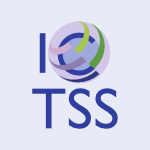 ICTSS-2011-EnderlinDGO #contract #named #php #specification #testing
ICTSS-2011-EnderlinDGO #contract #named #php #specification #testing- Praspel: A Specification Language for Contract-Based Testing in PHP (IE, FD, AG, ABO), pp. 64–79.
 LICS-2011-CarayolHS
LICS-2011-CarayolHS- Qualitative Tree Languages (AC, AH, OS), pp. 13–22.
 LICS-2011-KufleitnerL #infinity #word
LICS-2011-KufleitnerL #infinity #word- Languages of Dot-Depth One over Infinite Words (MK, AL), pp. 23–32.
 RTA-2011-FalkeKS #analysis #c #compilation #source code #termination #using
RTA-2011-FalkeKS #analysis #c #compilation #source code #termination #using- Termination Analysis of C Programs Using Compiler Intermediate Languages (SF, DK, CS), pp. 41–50.
 ECSA-2010-RuscioMMPP #architecture #framework #named
ECSA-2010-RuscioMMPP #architecture #framework #named- ByADL: An MDE Framework for Building Extensible Architecture Description Languages (DDR, IM, HM, PP, AP), pp. 527–531.
 ASE-2010-AliHGH #specification #tool support #visual notation
ASE-2010-AliHGH #specification #tool support #visual notation- End-user oriented critic specification for domain-specific visual language tools (NMA, JGH, JCG, JH), pp. 297–300.
 ASE-2010-YangWRN #automation #coordination #detection #natural language #requirements
ASE-2010-YangWRN #automation #coordination #detection #natural language #requirements- Automatic detection of nocuous coordination ambiguities in natural language requirements (HY, AW, ANDR, BN), pp. 53–62.
 CASE-2010-LeeFBSSFS #behaviour #evaluation #framework #modelling
CASE-2010-LeeFBSSFS #behaviour #evaluation #framework #modelling- Product modeling framework and language for behavior evaluation (JHL, SJF, CB, HWS, RS, XF, RDS), pp. 136–143.
 DAC-2010-GajskiAS #question #synthesis #what
DAC-2010-GajskiAS #question #synthesis #what- What input-language is the best choice for high level synthesis (HLS)? (DG, TMA, SS), pp. 857–858.
 DRR-2010-ChenMT #automation #performance #using #validation #word
DRR-2010-ChenMT #automation #performance #using #validation #word- Efficient automatic OCR word validation using word partial format derivation and language model (SC, DM, GRT), pp. 1–10.
 DRR-2010-HuangDC #modelling #recognition #word
DRR-2010-HuangDC #modelling #recognition #word- A word language model based contextual language processing on Chinese character recognition (CH, XD, YC), pp. 1–10.
 HT-2010-GippB #approach #detection #identification #independence
HT-2010-GippB #approach #detection #identification #independence- Citation based plagiarism detection: a new approach to identify plagiarized work language independently (BG, JB), pp. 273–274.
 HT-2010-LiuFZ #recommendation #social
HT-2010-LiuFZ #recommendation #social- Speak the same language with your friends: augmenting tag recommenders with social relations (KL, BF, WZ), pp. 45–50.
 PODS-2010-BarceloHLW #query
PODS-2010-BarceloHLW #query- Expressive languages for path queries over graph-structured data (PB, CAH, LL, PTW), pp. 3–14.
 PODS-2010-DeutchKM #fixpoint #markov #on the #probability #query
PODS-2010-DeutchKM #fixpoint #markov #on the #probability #query- On probabilistic fixpoint and Markov chain query languages (DD, CK, TM), pp. 215–226.
 PODS-2010-GeladeIMN #approximate #xml
PODS-2010-GeladeIMN #approximate #xml- Simplifying XML schema: single-type approximations of regular tree languages (WG, TI, WM, FN), pp. 251–260.
 SIGMOD-2010-ArmbrustTFFPLTT #named #performance #query
SIGMOD-2010-ArmbrustTFFPLTT #named #performance #query- PIQL: a performance insightful query language (MA, ST, AF, MJF, DAP, NL, BT, JT), pp. 1207–1210.
 SIGMOD-2010-CampbellKE #sql
SIGMOD-2010-CampbellKE #sql- Extreme scale with full SQL language support in microsoft SQL Azure (DGC, GK, NE), pp. 1021–1024.
 SIGMOD-2010-PoundIW #flexibility #keyword #query
SIGMOD-2010-PoundIW #flexibility #keyword #query- Expressive and flexible access to web-extracted data: a keyword-based structured query language (JP, IFI, GEW), pp. 423–434.
 VLDB-2010-MozafariZZ #execution #query #regular expression #relational #sequence #word #xml
VLDB-2010-MozafariZZ #execution #query #regular expression #relational #sequence #word #xml- From Regular Expressions to Nested Words: Unifying Languages and Query Execution for Relational and XML Sequences (BM, KZ, CZ), pp. 150–161.
 ITiCSE-2010-MarcosFM #modelling
ITiCSE-2010-MarcosFM #modelling- Modeling with Plato: the unified modeling language in a cultural context (LdM, FF, JJM), pp. 249–253.
 ESOP-2010-BaillotGM #functional #linear #logic
ESOP-2010-BaillotGM #functional #linear #logic- A PolyTime Functional Language from Light Linear Logic (PB, MG, VM), pp. 104–124.
 ESOP-2010-SouleHGGAKW #calculus
ESOP-2010-SouleHGGAKW #calculus- A Universal Calculus for Stream Processing Languages (RS, MH, RG, BG, HA, VK, KLW), pp. 507–528.
 FASE-2010-EsmaeilsabzaliD #modelling #semantics
FASE-2010-EsmaeilsabzaliD #modelling #semantics- Prescriptive Semantics for Big-Step Modelling Languages (SE, NAD), pp. 158–172.
 TACAS-2010-LeinoR #design #encoding #logic #polymorphism #verification
TACAS-2010-LeinoR #design #encoding #logic #polymorphism #verification- A Polymorphic Intermediate Verification Language: Design and Logical Encoding (KRML, PR), pp. 312–327.
 WRLA-2010-RiveraDV #behaviour #domain-specific language #on the #realtime #semantics #visual notation
WRLA-2010-RiveraDV #behaviour #domain-specific language #on the #realtime #semantics #visual notation- On the Behavioral Semantics of Real-Time Domain Specific Visual Languages (JER, FD, AV), pp. 174–190.
 WRLA-2010-SerbanutaR #named #programming language #semantics
WRLA-2010-SerbanutaR #named #programming language #semantics- K-Maude: A Rewriting Based Tool for Semantics of Programming Languages (TFS, GR), pp. 104–122.
 ICPC-2010-AbebeT #concept #natural language #parsing
ICPC-2010-AbebeT #concept #natural language #parsing- Natural Language Parsing of Program Element Names for Concept Extraction (SLA, PT), pp. 156–159.
 ICPC-2010-LammelP #comprehension #domain-specific language
ICPC-2010-LammelP #comprehension #domain-specific language- Vivisection of a Non-Executable, Domain-Specific Language — Understanding (the Usage of) the P3P Language (RL, EP), pp. 104–113.
 ICSM-2010-HasanSBA #process
ICSM-2010-HasanSBA #process- Analyzing natural-language artifacts of the software process (MH, ES, DB, MHA), pp. 1–5.
 SCAM-2010-BrixtelFLBR #clone detection #detection #independence
SCAM-2010-BrixtelFLBR #clone detection #detection #independence- Language-Independent Clone Detection Applied to Plagiarism Detection (RB, MF, BL, CB, RR), pp. 77–86.
 SCAM-2010-KatsV #aspect-oriented #case study #encapsulation #framework #logic #programming #using
SCAM-2010-KatsV #aspect-oriented #case study #encapsulation #framework #logic #programming #using- Encapsulating Software Platform Logic by Aspect-Oriented Programming: A Case Study in Using Aspects for Language Portability (LCLK, EV), pp. 147–156.
 WCRE-2010-Boughanmi #analysis #multi
WCRE-2010-Boughanmi #analysis #multi- Multi-Language and Heterogeneously-licensed Software Analysis (FB), pp. 293–296.
 PEPM-2010-Siek #metalanguage
PEPM-2010-Siek #metalanguage- General purpose languages should be metalanguages (JGS), pp. 3–4.
 PLDI-2010-LeeWHGM #debugging #detection #interface #named
PLDI-2010-LeeWHGM #debugging #detection #interface #named- Jinn: synthesizing dynamic bug detectors for foreign language interfaces (BL, BW, MH, RG, KSM), pp. 36–49.
 PLDI-2010-MarinoSMMN #concurrent #memory management #named #performance #programming language
PLDI-2010-MarinoSMMN #concurrent #memory management #named #performance #programming language- DRFX: a simple and efficient memory model for concurrent programming languages (DM, AS, TDM, MM, SN), pp. 351–362.
 PLDI-2010-TateCH #assembly #object-oriented
PLDI-2010-TateCH #assembly #object-oriented- Inferable object-oriented typed assembly language (RT, JC, CH), pp. 424–435.
 PLDI-2010-XiW
PLDI-2010-XiW- A context-free markup language for semi-structured text (QX, DW), pp. 221–232.
 FLOPS-2010-RemyY
FLOPS-2010-RemyY- A Church-Style Intermediate Language for MLF (DR, BY), pp. 24–39.
 AFL-J-2008-AfoninK10 #on the #regular expression
AFL-J-2008-AfoninK10 #on the #regular expression- On the Structure of Finitely Generated Semigroups of Unary Regular Languages (SA, EK), pp. 689–704.
 AFL-J-2008-KlimaP10a
AFL-J-2008-KlimaP10a- Literally Idempotent Languages and their Varieties — Two Letter Case (OK, LP), pp. 761–780.
 DLT-J-2008-Ada10 #communication #complexity #nondeterminism #on the #regular expression
DLT-J-2008-Ada10 #communication #complexity #nondeterminism #on the #regular expression- On the Non-Deterministic Communication Complexity of Regular Languages (AA), pp. 479–493.
 DLT-J-2008-BassinoGN10 #complexity #finite
DLT-J-2008-BassinoGN10 #complexity #finite- The Average State Complexity of Rational Operations on Finite Languages (FB, LG, CN), pp. 495–516.
 DLT-J-2008-GawrychowskiKRS10 #context-free grammar #polynomial
DLT-J-2008-GawrychowskiKRS10 #context-free grammar #polynomial- Finding the Growth Rate of a Regular or Context-Free Language in Polynomial Time (PG, DK, NR, JS), pp. 597–618.
 DLT-J-2008-KlimaP10
DLT-J-2008-KlimaP10- Hierarchies of Piecewise Testable Languages (OK, LP), pp. 517–533.
 CIAA-2010-ChamparnaudDJ #geometry
CIAA-2010-ChamparnaudDJ #geometry- Regular Geometrical Languages and Tiling the Plane (JMC, JPD, HJ), pp. 69–78.
 CIAA-2010-DiekertK #complexity #regular expression
CIAA-2010-DiekertK #complexity #regular expression- Complexity Results and the Growths of Hairpin Completions of Regular Languages (Extended Abstract) (VD, SK), pp. 105–114.
 CIAA-2010-Johnson #natural language #using
CIAA-2010-Johnson #natural language #using- Uniformizing Rational Relations for Natural Language Applications Using Weighted Determinization (JHJ), pp. 173–180.
 DLT-2010-Giammarresi #2d
DLT-2010-Giammarresi #2d- A Brief Excursion Inside the Class of Tiling Recognizable Two-Dimensional Languages (DG), pp. 4–15.
 DLT-2010-JiraskovaM #complexity #regular expression
DLT-2010-JiraskovaM #complexity #regular expression- Complexity in Union-Free Regular Languages (GJ, TM), pp. 255–266.
 DLT-2010-LehtinenO #equation #on the
DLT-2010-LehtinenO #equation #on the- On Language Equations XXK = XXL and XM = N over a Unary Alphabet (TL, AO), pp. 291–302.
 DLT-2010-MarinK #revisited
DLT-2010-MarinK #revisited- Regular Hedge Language Factorization Revisited (MM, TK), pp. 328–339.
 DLT-2010-PribavkinaR #complexity #regular expression
DLT-2010-PribavkinaR #complexity #regular expression- State Complexity of Prefix, Suffix, Bifix and Infix Operators on Regular Languages (EVP, ER), pp. 376–386.
 DLT-2010-Rigo #formal method
DLT-2010-Rigo #formal method- Numeration Systems: A Link between Number Theory and Formal Language Theory (MR), pp. 33–53.
 ICALP-v2-2010-HabermehlMW #petri net
ICALP-v2-2010-HabermehlMW #petri net- The Downward-Closure of Petri Net Languages (PH, RM, HW), pp. 466–477.
 LATA-2010-Brzozowski #complexity
LATA-2010-Brzozowski #complexity- Complexity in Convex Languages (JAB), pp. 1–15.
 LATA-2010-ChamparnaudDJ #geometry #regular expression
LATA-2010-ChamparnaudDJ #geometry #regular expression- Geometricity of Binary Regular Languages (JMC, JPD, HJ), pp. 178–189.
 LATA-2010-Clark #modelling
LATA-2010-Clark #modelling- Three Learnable Models for the Description of Language (AC), pp. 16–31.
 LATA-2010-HemmerlingSK #difference #equation #network #process #programming language #specification
LATA-2010-HemmerlingSK #difference #equation #network #process #programming language #specification- A Programming Language Tailored to the Specification and Solution of Differential Equations Describing Processes on Networks (RH, KS, WK), pp. 297–308.
 LATA-2010-Leupold #context-free grammar #word
LATA-2010-Leupold #context-free grammar #word- Primitive Words Are Unavoidable for Context-Free Languages (PL), pp. 403–413.
 LATA-2010-NagyO
LATA-2010-NagyO- CD-Systems of Stateless Deterministic R(1)-Automata Accept All Rational Trace Languages (BN, FO), pp. 463–474.
 LATA-2010-VelardoD #comparison #order #petri net
LATA-2010-VelardoD #comparison #order #petri net- Language-Based Comparison of Petri Nets with Black Tokens, Pure Names and Ordered Data (FRV, GD), pp. 524–535.
 LATA-2010-YoshinakaKS #context-free grammar #multi
LATA-2010-YoshinakaKS #context-free grammar #multi- Chomsky-Schützenberger-Type Characterization of Multiple Context-Free Languages (RY, YK, HS), pp. 596–607.
 IFM-2010-DiosMP #pointer
IFM-2010-DiosMP #pointer- Certified Absence of Dangling Pointers in a Language with Explicit Deallocation (JdD, MM, RP), pp. 305–319.
 ICFP-2010-BradyH #domain-specific language #implementation #partial evaluation #using
ICFP-2010-BradyH #domain-specific language #implementation #partial evaluation #using- Scrapping your inefficient engine: using partial evaluation to improve domain-specific language implementation (EB, KH), pp. 297–308.
 ICFP-2010-CrestaniS #case study #experience #programming language #student
ICFP-2010-CrestaniS #case study #experience #programming language #student- Experience report: growing programming languages for beginning students (MC, MS), pp. 229–234.
 ICFP-2010-Gordon #metalanguage #ml #named #question
ICFP-2010-Gordon #metalanguage #ml #named #question- ML: metalanguage or object language? (MJCG), pp. 1–2.
 ICFP-2010-McCreightCT #compilation #framework #garbage collection
ICFP-2010-McCreightCT #compilation #framework #garbage collection- A certified framework for compiling and executing garbage-collected languages (AM, TC, APT), pp. 273–284.
 ICFP-2010-StampoulisS #logic #named
ICFP-2010-StampoulisS #logic #named- VeriML: typed computation of logical terms inside a language with effects (AS, ZS), pp. 333–344.
 ICFP-2010-Tobin-HochstadtF #logic
ICFP-2010-Tobin-HochstadtF #logic- Logical types for untyped languages (STH, MF), pp. 117–128.
 IFL-2010-AxelssonCSSEP #design #embedded #implementation
IFL-2010-AxelssonCSSEP #design #embedded #implementation- The Design and Implementation of Feldspar — An Embedded Language for Digital Signal Processing (EA, KC, MS, JS, DE, AP), pp. 121–136.
 IFL-2010-BoeijinkHK #functional #lazy evaluation
IFL-2010-BoeijinkHK #functional #lazy evaluation- Introducing the PilGRIM: A Processor for Executing Lazy Functional Languages (AB, PKFH, JK), pp. 54–71.
 GT-VMT-2010-BlumeBK #graph #invariant
GT-VMT-2010-BlumeBK #graph #invariant- Recognizable Graph Languages for Checking Invariants (CB, HJSB, BK).
 GT-VMT-2010-SyrianiV #model transformation
GT-VMT-2010-SyrianiV #model transformation- De-/Re-constructing Model Transformation Languages (ES, HV).
 ICGT-2010-Blume #graph #verification
ICGT-2010-Blume #graph #verification- Recognizable Graph Languages for the Verification of Dynamic Systems (CB), pp. 384–387.
 CHI-2010-CavenderOBL #collaboration #online
CHI-2010-CavenderOBL #collaboration #online- Asl-stem forum: enabling sign language to grow through online collaboration (AC, DSO, JPB, REL), pp. 2075–2078.
 CHI-2010-MaFC #named
CHI-2010-MaFC #named- SoundNet: investigating a language composed of environmental sounds (XM, CF, PRC), pp. 1945–1954.
 CHI-2010-Rantanen
CHI-2010-Rantanen- Indexicality of language and the art of creating treasures (MR), pp. 301–304.
 CHI-2010-TarkanSDGBWA #design #named #programming language
CHI-2010-TarkanSDGBWA #design #named #programming language- Toque: designing a cooking-based programming language for and with children (ST, VS, AD, EG, EMB, GW, ZA), pp. 2417–2426.
 CSCW-2010-ScholandTP #analysis #network #social
CSCW-2010-ScholandTP #analysis #network #social- Social language network analysis (AJS, YRT, JWP), pp. 23–26.
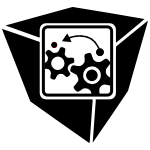 SOFTVIS-2010-RobertsonCL #memory management #named #visualisation
SOFTVIS-2010-RobertsonCL #memory management #named #visualisation- AllocRay: memory allocation visualization for unmanaged languages (GGR, TMC, BL), pp. 43–52.
 EDOC-2010-BajwaBL #constraints #generative #natural language #ocl #specification
EDOC-2010-BajwaBL #constraints #generative #natural language #ocl #specification- OCL Constraints Generation from Natural Language Specification (ISB, BB, MGL), pp. 204–213.
 EDOC-2010-Gronmo #aspect-oriented #graph transformation #question
EDOC-2010-Gronmo #aspect-oriented #graph transformation #question- Can Graph Transformation Make Aspect Languages for BPEL Redundant? (RG), pp. 153–162.
 ICEIS-AIDSS-2010-FariaGSMM #automation #natural language #ontology #using
ICEIS-AIDSS-2010-FariaGSMM #automation #natural language #ontology #using- Using Natural Language Processing for Automatic Extraction of Ontology Instances (CGdF, RG, IS, MM, DM), pp. 278–283.
 ICEIS-AIDSS-2010-MajdoubiTG #modelling #representation #semantics
ICEIS-AIDSS-2010-MajdoubiTG #modelling #representation #semantics- Thesaurus based Semantic Representation in Language Modeling for Medical Article Indexing (JM, MT, FG), pp. 65–74.
 ICEIS-DISI-2010-BarczynskiFBS #adaptation #concept #information management #modelling #named #using
ICEIS-DISI-2010-BarczynskiFBS #adaptation #concept #information management #modelling #named #using- AdaptIE — Using Domain Language Concept to Enable Domain Experts in Modeling of Information Extraction Plans (WMB, FF, FB, DS), pp. 249–256.
 ICEIS-ISAS-2010-BaraoS #bibliography #perspective
ICEIS-ISAS-2010-BaraoS #bibliography #perspective- The SNARE Language Overview (AB, ARdS), pp. 344–349.
 ICEIS-J-2010-BorovskiyKZ10a #api #data access #enterprise #query
ICEIS-J-2010-BorovskiyKZ10a #api #data access #enterprise #query- Business Object Query Language as Data Access API in ERP Systems (VB, WK, AZ), pp. 135–148.
 CIKM-2010-ChubakR #natural language
CIKM-2010-ChubakR #natural language- Index structures for efficiently searching natural language text (PC, DR), pp. 689–698.
 CIKM-2010-KerneQWDLM #metadata #named #representation #semantics
CIKM-2010-KerneQWDLM #metadata #named #representation #semantics- Meta-metadata: a metadata semantics language for collection representation applications (AK, YQ, AMW, SD, NL, AM), pp. 1129–1138.
 CIKM-2010-KobdaniSBKH #natural language #re-engineering #relational
CIKM-2010-KobdaniSBKH #natural language #re-engineering #relational- Relational feature engineering of natural language processing (HK, HS, AB, WK, GH), pp. 1705–1708.
 CIKM-2010-LiuWMKC #information retrieval #natural language
CIKM-2010-LiuWMKC #information retrieval #natural language- Weighting common syntactic structures for natural language based information retrieval (CL, HW, SIM, EK, DC), pp. 1485–1488.
 CIKM-2010-YangZ #analysis #multi
CIKM-2010-YangZ #analysis #multi- Language pyramid and multi-scale text analysis (SHY, HZ), pp. 639–648.
 ECIR-2010-AlyDHS #concept #modelling #retrieval #using
ECIR-2010-AlyDHS #concept #modelling #retrieval #using- Beyond Shot Retrieval: Searching for Broadcast News Items Using Language Models of Concepts (RA, ARD, DH, AFS), pp. 241–252.
 ECIR-2010-AnderkaSP #bound #similarity #why
ECIR-2010-AnderkaSP #bound #similarity #why- Cross-Language High Similarity Search: Why No Sub-linear Time Bound Can Be Expected (MA, BS, MP), pp. 640–644.
 ECIR-2010-BerberichBAW #approach #modelling
ECIR-2010-BerberichBAW #approach #modelling- A Language Modeling Approach for Temporal Information Needs (KB, SJB, OA, GW), pp. 13–25.
 ECIR-2010-GottronL #comparison #identification
ECIR-2010-GottronL #comparison #identification- A Comparison of Language Identification Approaches on Short, Query-Style Texts (TG, NL), pp. 611–614.
 ECIR-2010-KapteinHK #how #modelling #question
ECIR-2010-KapteinHK #how #modelling #question- How Different Are Language Models andWord Clouds? (RK, DH, JK), pp. 556–568.
 ECIR-2010-Lapata #image #information retrieval #multi #natural language
ECIR-2010-Lapata #image #information retrieval #multi #natural language- Image and Natural Language Processing for Multimedia Information Retrieval (ML), p. 12.
 ECIR-2010-Shi #information retrieval #mining #web
ECIR-2010-Shi #information retrieval #mining #web- Mining OOV Translations from Mixed-Language Web Pages for Cross Language Information Retrieval (LS), pp. 471–482.
 ECIR-2010-SteinPT #web
ECIR-2010-SteinPT #web- Retrieving Customary Web Language to Assist Writers (BS, MP, MT), pp. 631–635.
 ECIR-2010-TuHCLZ #approach #information retrieval #modelling #semantics
ECIR-2010-TuHCLZ #approach #information retrieval #modelling #semantics- Wikipedia-Based Semantic Smoothing for the Language Modeling Approach to Information Retrieval (XT, TH, LC, JL, MZ), pp. 370–381.
 ICML-2010-GerrishB #approach
ICML-2010-GerrishB #approach- A Language-based Approach to Measuring Scholarly Impact (SG, DMB), pp. 375–382.
 ICPR-2010-AkceB #probability
ICPR-2010-AkceB #probability- A Probabilistic Language Model for Hand Drawings (AA, TB), pp. 109–112.
 ICPR-2010-ChakrabortyG #recognition #speech
ICPR-2010-ChakrabortyG #recognition #speech- Role of Synthetically Generated Samples on Speech Recognition in a Resource-Scarce Language (RC, UG), pp. 1618–1621.
 ICPR-2010-HuangT #recognition
ICPR-2010-HuangT #recognition- A Vision-Based Taiwanese Sign Language Recognition (CLH, BLT), pp. 3683–3686.
 ICPR-2010-LutfYL #identification #using
ICPR-2010-LutfYL #identification #using- Offline Arabic Handwriting Identification Using Language Diacritics (ML, XY, HL), pp. 1912–1915.
 ICPR-2010-MehtaSJBJ
ICPR-2010-MehtaSJBJ- Recognizing Sign Language from Brain Imaging (NAM, TS, MMJ, KOB, GAJ), pp. 3842–3845.
 ICPR-2010-YangL10a #random #recognition #robust
ICPR-2010-YangL10a #random #recognition #robust- Robust Sign Language Recognition with Hierarchical Conditional Random Fields (HDY, SWL), pp. 2202–2205.
 ICPR-2010-ZafrullaBYPSH #education #game studies #verification
ICPR-2010-ZafrullaBYPSH #education #game studies #verification- American Sign Language Phrase Verification in an Educational Game for Deaf Children (ZZ, HB, PY, PP, TS, HH), pp. 3846–3849.
 ICPR-2010-ZhangSQ10a #automation #keyword
ICPR-2010-ZhangSQ10a #automation #keyword- Automatic Pronunciation Transliteration for Chinese-English Mixed Language Keyword Spotting (SZ, ZS, YQ), pp. 1610–1613.
 KEOD-2010-CasasCC #fibonacci #modelling #representation #specification #towards #using
KEOD-2010-CasasCC #fibonacci #modelling #representation #specification #towards #using- Towards a Representation of Enviromental Models using Specification and Description Language — From the Fibonacci Model to a Wildfire Model (PFiC, MC, JC), pp. 343–346.
 KEOD-2010-Ruiz-MartinezVMH #natural language #ontology
KEOD-2010-Ruiz-MartinezVMH #natural language #ontology- Populating Biomedical Ontologies from Natural Language Texts (JMRM, RVG, RMB, AGH), pp. 27–36.
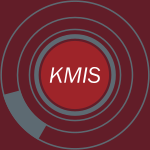 KMIS-2010-ZyglarskiB #keyword #markov #natural language #network
KMIS-2010-ZyglarskiB #keyword #markov #natural language #network- Keywords Extraction — Selecting Keywords in Natural Language Texts with Markov Chains and Neural Networks (BZ, PB), pp. 315–321.
 KR-2010-BienvenuLW #logic
KR-2010-BienvenuLW #logic- From Preference Logics to Preference Languages, and Back (MB, JL, NW).
 SEKE-2010-KhwajaU #execution #implementation #realtime #specification
SEKE-2010-KhwajaU #execution #implementation #realtime #specification- Intertwining Implementation with the RealSpec Executable Real-Time Specification Language (AAK, JEU), pp. 649–652.
 SEKE-2010-SubburajU #design #specification
SEKE-2010-SubburajU #design #specification- Intelligent Software Agent Design Issues with Extensions to the Descartes Specification Language (VHS, JEU), pp. 668–671.
 SEKE-2010-WangPACC #analysis #automation #process
SEKE-2010-WangPACC #analysis #automation #process- An Automatic Failure Mode and Effect Analysis Technique for Processes Defined in the Little-JIL Process Definition Language (DW, JP, GSA, LAC, BC), pp. 765–770.
 SIGIR-2010-AwadallahRW #classification
SIGIR-2010-AwadallahRW #classification- Language-model-based pro/con classification of political text (RA, MR, GW), pp. 747–748.
 SIGIR-2010-Barron-Cedeno #detection #on the #reuse
SIGIR-2010-Barron-Cedeno #detection #on the #reuse- On the mono- and cross-language detection of text reuse and plagiarism (ABC), p. 914.
 SIGIR-2010-MomtaziK #information retrieval
SIGIR-2010-MomtaziK #information retrieval- Hierarchical pitman-yor language model for information retrieval (SM, DK), pp. 793–794.
 SIGIR-2010-RothK #modelling #retrieval #using
SIGIR-2010-RothK #modelling #retrieval #using- Cross-language retrieval using link-based language models (BR, DK), pp. 773–774.
 SIGIR-2010-WangLG #information retrieval #multi #web
SIGIR-2010-WangLG #information retrieval #multi #web- Multi-style language model for web scale information retrieval (KW, XL, JG), pp. 467–474.
 ECMFA-2010-Vallecillo #modelling #on the
ECMFA-2010-Vallecillo #modelling #on the- On the Combination of Domain Specific Modeling Languages (AV), pp. 305–320.
 ECMFA-2010-WalterPSE #domain model
ECMFA-2010-WalterPSE #domain model- Joint Language and Domain Engineering (TW, FSP, SS, JE), pp. 321–336.
 MoDELS-v1-2010-GuerraLKPS #model transformation #named #product line
MoDELS-v1-2010-GuerraLKPS #model transformation #named #product line- transML: A Family of Languages to Model Model Transformations (EG, JdL, DSK, RFP, OMdS), pp. 106–120.
 MoDELS-v1-2010-MaderC #modelling #traceability #visual notation
MoDELS-v1-2010-MaderC #modelling #traceability #visual notation- A Visual Traceability Modeling Language (PM, JCH), pp. 226–240.
 MoDELS-v2-2010-EsmaeilsabzaliDA #framework #modelling #requirements
MoDELS-v2-2010-EsmaeilsabzaliDA #framework #modelling #requirements- A Common Framework for Synchronization in Requirements Modelling Languages (SE, NAD, JMA), pp. 198–212.
 MoDELS-v2-2010-Voelter #development #embedded #projectional
MoDELS-v2-2010-Voelter #development #embedded #projectional- Embedded Software Development with Projectional Language Workbenches (MV), pp. 32–46.
 ECOOP-2010-HeideggerT #scripting language
ECOOP-2010-HeideggerT #scripting language- Recency Types for Analyzing Scripting Languages (PH, PT), pp. 200–224.
 ECOOP-2010-RenggliGN #tool support
ECOOP-2010-RenggliGN #tool support- Embedding Languages without Breaking Tools (LR, TG, ON), pp. 380–404.
 OOPSLA-2010-AuerbachBCR #architecture #named
OOPSLA-2010-AuerbachBCR #architecture #named- Lime: a Java-compatible and synthesizable language for heterogeneous architectures (JSA, DFB, PC, RMR), pp. 89–108.
 OOPSLA-2010-ChafiDMRSHOO #parallel
OOPSLA-2010-ChafiDMRSHOO #parallel- Language virtualization for heterogeneous parallel computing (HC, ZD, AM, TR, AKS, PH, MO, KO), pp. 835–847.
 OOPSLA-2010-DavisK #abstraction
OOPSLA-2010-DavisK #abstraction- Registration-based language abstractions (SD, GK), pp. 754–773.
 OOPSLA-2010-KatsV #declarative #ide #specification #spoofax
OOPSLA-2010-KatsV #declarative #ide #specification #spoofax- The spoofax language workbench: rules for declarative specification of languages and IDEs (LCLK, EV), pp. 444–463.
 OOPSLA-2010-ReichenbachISAG #garbage collection #what
OOPSLA-2010-ReichenbachISAG #garbage collection #what- What can the GC compute efficiently?: a language for heap assertions at GC time (CR, NI, YS, EA, SZG), pp. 256–269.
 OOPSLA-2010-ServettoZ #composition #java #named
OOPSLA-2010-ServettoZ #composition #java #named- MetaFJig: a meta-circular composition language for Java-like classes (MS, EZ), pp. 464–483.
 OOPSLA-2010-WegielK #type safety
OOPSLA-2010-WegielK #type safety- Cross-language, type-safe, and transparent object sharing for co-located managed runtimes (MW, CK), pp. 223–240.
 TOOLS-EUROPE-2010-ArnaudDDPBS #execution
TOOLS-EUROPE-2010-ArnaudDDPBS #execution- Read-Only Execution for Dynamic Languages (JBA, MD, SD, DP, AB, MS), pp. 117–136.
 TOOLS-EUROPE-2010-Xu #domain-specific language #embedded #generative #named
TOOLS-EUROPE-2010-Xu #domain-specific language #embedded #generative #named- EriLex: An Embedded Domain Specific Language Generator (HX), pp. 192–212.
 GPCE-J-2007-FrisbyKWA10 #algebra #combinator
GPCE-J-2007-FrisbyKWA10 #algebra #combinator- Constructing language processors with algebra combinators (NF, GK, PW, PA), pp. 543–572.
 GPCE-2010-AtkinsonFL
GPCE-2010-AtkinsonFL- ABI compatibility through a customizable language (KA, MF, GL), pp. 147–156.
 GPCE-2010-Erwig #research #variability
GPCE-2010-Erwig #research #variability- A language for software variation research (ME), pp. 3–12.
 GPCE-2010-HoferO #component #composition #domain-specific language #scala
GPCE-2010-HoferO #component #composition #domain-specific language #scala- Modular domain-specific language components in scala (CH, KO), pp. 83–92.
 GPCE-2010-Lammel
GPCE-2010-Lammel- The hitchhiker’s guide to software languages (RL), pp. 1–2.
 GPCE-2010-PorkolabS #domain-specific language #generative #integration #library #parsing
GPCE-2010-PorkolabS #domain-specific language #generative #integration #library #parsing- Domain-specific language integration with compile-time parser generator library (ZP, ÁS), pp. 137–146.
 LOPSTR-2010-AlbertGRP #composition #generative #imperative #testing
LOPSTR-2010-AlbertGRP #composition #generative #imperative #testing- Compositional CLP-Based Test Data Generation for Imperative Languages (EA, MGZ, JMR, GP), pp. 99–116.
 PADL-2010-Costa #implementation #on the
PADL-2010-Costa #implementation #on the- On the Implementation of the CLP(BN) Language (VSC), pp. 234–248.
 PADL-2010-GrumbachW #distributed #programming #rule-based
PADL-2010-GrumbachW #distributed #programming #rule-based- Netlog, a Rule-Based Language for Distributed Programming (SG, FW), pp. 88–103.
 PADL-2010-WangG #approach #domain-specific language #implementation #protocol #stack
PADL-2010-WangG #approach #domain-specific language #implementation #protocol #stack- A Domain-Specific Language Approach to Protocol Stack Implementation (YW, VG), pp. 183–185.
 POPL-2010-Chlipala #compilation #functional
POPL-2010-Chlipala #compilation #functional- A verified compiler for an impure functional language (AC), pp. 93–106.
 POPL-2010-WrigstadNLOV #scripting language
POPL-2010-WrigstadNLOV #scripting language- Integrating typed and untyped code in a scripting language (TW, FZN, SL, JÖ, JV), pp. 377–388.
 RE-2010-JuretaBEM #consistency #generative #modelling #named #nondeterminism #requirements #towards
RE-2010-JuretaBEM #consistency #generative #modelling #named #nondeterminism #requirements #towards- Techne: Towards a New Generation of Requirements Modeling Languages with Goals, Preferences, and Inconsistency Handling (IJ, AB, NAE, JM), pp. 115–124.
 RE-2010-SinhaPTN #analysis #automation #case study #natural language
RE-2010-SinhaPTN #analysis #automation #case study #natural language- Extending Automated Analysis of Natural Language Use Cases to Other Languages (AS, AMP, HT, TN), pp. 364–369.
 RE-2010-YangRGWN #ambiguity #analysis #natural language #requirements
RE-2010-YangRGWN #ambiguity #analysis #natural language #requirements- Extending Nocuous Ambiguity Analysis for Anaphora in Natural Language Requirements (HY, ANDR, VG, AW, BN), pp. 25–34.
 REFSQ-2010-BruijnD #ambiguity #case study #natural language #requirements
REFSQ-2010-BruijnD #ambiguity #case study #natural language #requirements- Ambiguity in Natural Language Software Requirements: A Case Study (FdB, HLD), pp. 233–247.
 SAC-2010-BucchiaroneGFT #experience #natural language #requirements #scalability #set #using
SAC-2010-BucchiaroneGFT #experience #natural language #requirements #scalability #set #using- An experience in using a tool for evaluating a large set of natural language requirements (AB, SG, AF, GT), pp. 281–286.
 SAC-2010-FahndrichBL #contract #embedded
SAC-2010-FahndrichBL #contract #embedded- Embedded contract languages (MF, MB, FL), pp. 2103–2110.
 SAC-2010-ForgetBLP #architecture #design #embedded #multi #realtime
SAC-2010-ForgetBLP #architecture #design #embedded #multi #realtime- A real-time architecture design language for multi-rate embedded control systems (JF, FB, DL, CP), pp. 527–534.
 SAC-2010-KrajcaV #functional #memory management #parallel #transaction
SAC-2010-KrajcaV #functional #memory management #parallel #transaction- Software transactional memory for implicitly parallel functional language (PK, VV), pp. 2123–2130.
 SAC-2010-LiuCXMBG #architecture #domain-specific language #question
SAC-2010-LiuCXMBG #architecture #domain-specific language #question- Can domain-specific languages be implemented by service-oriented architecture? (SHL, AC, XX, MM, BRB, JG), pp. 2491–2492.
 SAC-2010-MatteucciPS #named #natural language
SAC-2010-MatteucciPS #named #natural language- CNL4DSA: a controlled natural language for data sharing agreements (IM, MP, MLS), pp. 616–620.
 SAC-2010-MissenBC #detection #using
SAC-2010-MissenBC #detection #using- Using passage-based language model for opinion detection in blogs (MMSM, MB, GC), pp. 1821–1822.
 SAC-2010-ReisS #constant #programming language
SAC-2010-ReisS #constant #programming language- General constant expressions for system programming languages (GDR, BS), pp. 2131–2136.
 SAC-2010-RytzO #design #object-oriented #polymorphism #scala
SAC-2010-RytzO #design #object-oriented #polymorphism #scala- Named and default arguments for polymorphic object-oriented languages: a discussion on the design implemented in the Scala language (LR, MO), pp. 2090–2095.
 FSE-2010-WuLWXLLGGZZ #data flow
FSE-2010-WuLWXLLGGZZ #data flow- Language-based replay via data flow cut (MW, FL, XW, ZX, HL, XL, ZG, HG, LZ, ZZ), pp. 197–206.
 ICSE-2010-AschauerDP #evolution #industrial #interactive #modelling
ICSE-2010-AschauerDP #evolution #industrial #interactive #modelling- A modeling language’s evolution driven by tight interaction between academia and industry (TA, GD, WP), pp. 49–58.
 ICSE-2010-Badreddin #named #programming language
ICSE-2010-Badreddin #named #programming language- Umple: a model-oriented programming language (OBB), pp. 337–338.
 ICSE-2010-Malavolta #architecture #generative
ICSE-2010-Malavolta #architecture #generative- Providing support for creating next generation software architecture languages (IM), pp. 517–518.
 ICSE-2010-WurschGRG #developer #natural language #query
ICSE-2010-WurschGRG #developer #natural language #query- Supporting developers with natural language queries (MW, GG, GR, HG), pp. 165–174.
 ICSE-2010-ZhongTXZW #api #migration #mining
ICSE-2010-ZhongTXZW #api #migration #mining- Mining API mapping for language migration (HZ, ST, TX, LZ, QW), pp. 195–204.
 LDTA-2009-AndersenB10 #algebra
LDTA-2009-AndersenB10 #algebra- Syntactic Language Extension via an Algebra of Languages and Transformations (JA, CB), pp. 19–35.
 LDTA-2009-ClarkT10 #formal method
LDTA-2009-ClarkT10 #formal method- Formalizing Homogeneous Language Embeddings (TC, LT), pp. 75–88.
 LDTA-2009-EngelenB10 #modelling #visual notation
LDTA-2009-EngelenB10 #modelling #visual notation- Integrating Textual and Graphical Modelling Languages (LE, MvdB), pp. 105–120.
 LDTA-2009-KatsKV10 #composition #domain-specific language #editing #plugin
LDTA-2009-KatsKV10 #composition #domain-specific language #editing #plugin- Domain-Specific Languages for Composable Editor Plugins (LCLK, KTK, EV), pp. 149–163.
 LDTA-2010-Bagge #implementation
LDTA-2010-Bagge #implementation- Language description for front end implementation (AHB), p. 9.
 LDTA-2010-BrandMSH #case study #domain-specific language #experience
LDTA-2010-BrandMSH #case study #domain-specific language #experience- Formally specified type checkers for domain specific languages: experience report (MvdB, APvdM, AS, ATH), p. 12.
 LDTA-2010-Giavitto #domain-specific language #simulation
LDTA-2010-Giavitto #domain-specific language #simulation- A domain specific language for complex natural and artificial systems simulations (JLG), p. 1.
 LDTA-2010-JansenPKA #functional #workflow
LDTA-2010-JansenPKA #functional #workflow- Embedding a web-based workflow management system in a functional language (JMJ, RP, PWMK, PA), p. 7.
 LDTA-2010-KlintSV #domain-specific language #implementation #maintenance #on the #tool support
LDTA-2010-KlintSV #domain-specific language #implementation #maintenance #on the #tool support- On the impact of DSL tools on the maintainability of language implementations (PK, TvdS, JJV), p. 10.
 SLE-2010-AtkinsonKG #modelling
SLE-2010-AtkinsonKG #modelling- The Level-Agnostic Modeling Language (CA, BK, BG), pp. 266–275.
 SLE-2010-BarrocaLAFS #model transformation #named
SLE-2010-BarrocaLAFS #model transformation #named- DSLTrans: A Turing Incomplete Transformation Language (BB, LL, VA, RF, VS), pp. 296–305.
 SLE-2010-BraatzB #algebra #domain-specific language #graph transformation #modelling #rdf
SLE-2010-BraatzB #algebra #domain-specific language #graph transformation #modelling #rdf- Domain-Specific Modelling Languages with Algebraic Graph Transformations on RDF (BB, CB), pp. 82–101.
 SLE-2010-CicchettiREP #bidirectional #model transformation #named
SLE-2010-CicchettiREP #bidirectional #model transformation #named- JTL: A Bidirectional and Change Propagating Transformation Language (AC, DDR, RE, AP), pp. 183–202.
 SLE-2010-Erwig #research #variability
SLE-2010-Erwig #research #variability- A Language for Software Variation Research (ME), p. 1.
 SLE-2010-FavreGLP #analysis #empirical
SLE-2010-FavreGLP #analysis #empirical- Empirical Language Analysis in Software Linguistics (JMF, DG, RL, EP), pp. 316–326.
 SLE-2010-HubauxBHMH #case study #feature model #industrial #modelling
SLE-2010-HubauxBHMH #case study #feature model #industrial #modelling- Evaluating a Textual Feature Modelling Language: Four Industrial Case Studies (AH, QB, HH, RM, PH), pp. 337–356.
 SLE-2010-ZaytsevL #documentation
SLE-2010-ZaytsevL #documentation- A Unified Format for Language Documents (VZ, RL), pp. 206–225.
 ASPLOS-2010-HarrisTCU #architecture #multi #runtime
ASPLOS-2010-HarrisTCU #architecture #multi #runtime- Dynamic filtering: multi-purpose architecture support for language runtime systems (TH, ST, AC, OSÜ), pp. 39–52.
 CC-2010-IuCZ #database #imperative #named #query
CC-2010-IuCZ #database #imperative #named #query- JReq: Database Queries in Imperative Languages (MYI, EC, WZ), pp. 84–103.
 CGO-2010-WilliamsMG #scripting language
CGO-2010-WilliamsMG #scripting language- Dynamic interpretation for dynamic scripting languages (KW, JM, DG), pp. 278–287.
 ISMM-2010-AlbertGG #garbage collection #memory management #parametricity #requirements
ISMM-2010-AlbertGG #garbage collection #memory management #parametricity #requirements- Parametric inference of memory requirements for garbage collected languages (EA, SG, MGZ), pp. 121–130.
 ICLP-2010-Demeyer10 #concurrent #declarative #program analysis #programming
ICLP-2010-Demeyer10 #concurrent #declarative #program analysis #programming- Program Analysis to Support Concurrent Programming in Declarative Languages (RD), pp. 248–254.
 ICLP-2010-Martinez10 #concurrent #constraints #design #implementation #linear #logic programming #programming language
ICLP-2010-Martinez10 #concurrent #constraints #design #implementation #linear #logic programming #programming language- Design and Implementation of a Concurrent Logic Programming Language with Linear Logic Constraints (TM), pp. 277–280.
 ICLP-J-2010-Gomez-ZamalloaAP #generative #imperative #object-oriented #testing
ICLP-J-2010-Gomez-ZamalloaAP #generative #imperative #object-oriented #testing- Test case generation for object-oriented imperative languages in CLP (MGZ, EA, GP), pp. 659–674.
 ICST-2010-SinhaSP #automation #case study #named #natural language
ICST-2010-SinhaSP #automation #case study #named #natural language- Text2Test: Automated Inspection of Natural Language Use Cases (AS, SMSJ, AMP), pp. 155–164.
 LICS-2010-CaliGLMP #datalog #information management #logic #product line #query #representation
LICS-2010-CaliGLMP #datalog #information management #logic #product line #query #representation- Datalog+/-: A Family of Logical Knowledge Representation and Query Languages for New Applications (AC, GG, TL, BM, AP), pp. 228–242.
 LICS-2010-Laird #game studies #polymorphism #programming language #semantics
LICS-2010-Laird #game studies #polymorphism #programming language #semantics- Game Semantics for a Polymorphic Programming Language (JL), pp. 41–49.
 WICSA-ECSA-2009-Weyns #multi #pattern matching
WICSA-ECSA-2009-Weyns #multi #pattern matching- A pattern language for multi-agent systems (DW), pp. 191–200.
 ASE-2009-BiermannEEH #eclipse #framework #generative #modelling #simulation
ASE-2009-BiermannEEH #eclipse #framework #generative #modelling #simulation- Generation of Simulation Views for Domain Specific Modeling Languages Based on the Eclipse Modeling Framework (EB, KE, CE, JH), pp. 625–629.
 ASE-2009-DeeptimahantiB #automation #generative #modelling #natural language #requirements #uml
ASE-2009-DeeptimahantiB #automation #generative #modelling #natural language #requirements #uml- An Automated Tool for Generating UML Models from Natural Language Requirements (DKD, MAB), pp. 680–682.
 ASE-2009-Wright #interactive #modelling #web
ASE-2009-Wright #interactive #modelling #web- A Modelling Language for Interactive Web Applications (JMW), pp. 689–692.
 ASE-2009-ZhongZXM #api #documentation #natural language #specification
ASE-2009-ZhongZXM #api #documentation #natural language #specification- Inferring Resource Specifications from Natural Language API Documentation (HZ, LZ, TX, HM), pp. 307–318.
 DATE-2009-BraunesS #generative
DATE-2009-BraunesS #generative- Generating the trace qualification configuration for MCDS from a high level language (JB, RGS), pp. 1560–1563.
 DocEng-2009-JoshiL #analysis #documentation #image #natural language #using #web
DocEng-2009-JoshiL #analysis #documentation #image #natural language #using #web- Web document text and images extraction using DOM analysis and natural language processing (PMJ, SL), pp. 218–221.
 DocEng-2009-RijsselbergenKVMW
DocEng-2009-RijsselbergenKVMW- Movie script markup language (DVR, BVDK, MV, EM, RVdW), pp. 161–170.
 DocEng-2009-SoaresMS #declarative #hypermedia #imperative
DocEng-2009-SoaresMS #declarative #hypermedia #imperative- Relating declarative hypermedia objects and imperative objects through the NCL glue language (LFGS, MFM, FS), pp. 222–230.
 ICDAR-2009-NakaiKI #documentation #image #realtime #retrieval #using #web
ICDAR-2009-NakaiKI #documentation #image #realtime #retrieval #using #web- Real-Time Retrieval for Images of Documents in Various Languages Using a Web Camera (TN, KK, MI), pp. 146–150.
 ICDAR-2009-WangJW #identification #performance
ICDAR-2009-WangJW #identification #performance- High Performance Chinese/English Mixed OCR with Character Level Language Identification (KW, JJ, QW), pp. 406–410.
 ICDAR-2009-WangYL #recognition
ICDAR-2009-WangYL #recognition- Integrating Language Model in Handwritten Chinese Text Recognition (QFW, FY, CLL), pp. 1036–1040.
 ICDAR-2009-WuthrichLFIBVS #documentation #integration #recognition
ICDAR-2009-WuthrichLFIBVS #documentation #integration #recognition- Language Model Integration for the Recognition of Handwritten Medieval Documents (MW, ML, AF, EI, HB, GV, MS), pp. 211–215.
 SIGMOD-2009-BrodskyBCEW #abstraction #database #programming #query
SIGMOD-2009-BrodskyBCEW #abstraction #database #programming #query- A decisions query language (DQL): high-level abstraction for mathematical programming over databases (AB, MMB, MC, NEE, XSW), pp. 1059–1062.
 SIGMOD-2009-IsardY #distributed #programming language #using
SIGMOD-2009-IsardY #distributed #programming language #using- Distributed data-parallel computing using a high-level programming language (MI, YY), pp. 987–994.
 ITiCSE-2009-Almeida-MartinezUV #education #named #visualisation
ITiCSE-2009-Almeida-MartinezUV #education #named #visualisation- VAST: a visualization-based educational tool for language processors courses (FJAM, JUF, JÁVI), p. 342.
 ITiCSE-2009-MiuraSK #concept #interactive #object-oriented #programming language
ITiCSE-2009-MiuraSK #concept #interactive #object-oriented #programming language- Anchor garden: an interactive workbenchfor basic data concept learningin object oriented programming languages (MM, TS, SK), pp. 141–145.
 ESOP-2009-BuscemiM #distributed #process
ESOP-2009-BuscemiM #distributed #process- Abstract Processes in Orchestration Languages (MGB, HCM), pp. 301–315.
 ESOP-2009-Eber #contract #design #programming language #question #specification #tool support #what
ESOP-2009-Eber #contract #design #programming language #question #specification #tool support #what- The Financial Crisis, a Lack of Contract Specification Tools: What Can Finance Learn from Programming Language Design? (JME), pp. 205–206.
 ESOP-2009-RajanTSL #composition #design #named #policy #verification #web #web service
ESOP-2009-RajanTSL #composition #design #named #policy #verification #web #web service- Tisa: A Language Design and Modular Verification Technique for Temporal Policies in Web Services (HR, JT, SMS, GTL), pp. 333–347.
 ESOP-2009-Reynolds #category theory #design #programming language #using
ESOP-2009-Reynolds #category theory #design #programming language #using- Using Category Theory to Design Programming Languages (JCR), pp. 62–63.
 FoSSaCS-2009-AlurDMW #on the
FoSSaCS-2009-AlurDMW #on the- On ω-Languages Defined by Mean-Payoff Conditions (RA, AD, OM, GW), pp. 333–347.
 ICPC-J-2008-VidacsBG09 #c #c++ #preprocessor #slicing
ICPC-J-2008-VidacsBG09 #c #c++ #preprocessor #slicing- Combining preprocessor slicing with C/C++ language slicing (LV, ÁB, TG), pp. 399–413.
 CSMR-2009-LuciaDGR #behaviour #identification #parsing #visual notation
CSMR-2009-LuciaDGR #behaviour #identification #parsing #visual notation- Behavioral Pattern Identification through Visual Language Parsing and Code Instrumentation (ADL, VD, CG, MR), pp. 99–108.
 ICPC-2009-ForwardLB #analysis #comprehension
ICPC-2009-ForwardLB #analysis #comprehension- Improving program comprehension by enhancing program constructs: An analysis of the Umple language (AF, TCL, DB), pp. 311–312.
 ICPC-2009-NilssonLHN #fact extraction #natural language #parsing #source code
ICPC-2009-NilssonLHN #fact extraction #natural language #parsing #source code- Natural language parsing for fact extraction from source code (JN, WL, JH, JN), pp. 223–227.
 ICSM-2009-YoshikawaHS #natural language #ontology #source code #traceability #using
ICSM-2009-YoshikawaHS #natural language #ontology #source code #traceability #using- Recovering traceability links between a simple natural language sentence and source code using domain ontologies (TY, SH, MS), pp. 551–554.
 SCAM-2009-AlikacemS #framework #metric
SCAM-2009-AlikacemS #framework #metric- A Metric Extraction Framework Based on a High-Level Description Language (EHA, HAS), pp. 159–167.
 SCAM-2009-KlintSV #analysis #domain-specific language #named #rascal #source code
SCAM-2009-KlintSV #analysis #domain-specific language #named #rascal #source code- RASCAL: A Domain Specific Language for Source Code Analysis and Manipulation (PK, TvdS, JJV), pp. 168–177.
 SCAM-2009-LammelZ #grammar recovery #java #specification
SCAM-2009-LammelZ #grammar recovery #java #specification- Recovering Grammar Relationships for the Java Language Specification (RL, VZ), pp. 178–186.
 WCRE-1999-FerzundAW99a #debugging
WCRE-1999-FerzundAW99a #debugging- Bug-Inducing Language Constructs (JF, SNA, FW), pp. 155–159.
 PLDI-2009-AnselCWOZEA #algorithm #compilation #named
PLDI-2009-AnselCWOZEA #algorithm #compilation #named- PetaBricks: a language and compiler for algorithmic choice (JA, CPC, YLW, MO, QZ, AE, SPA), pp. 38–49.
 PLDI-2009-GalESAMHKHZORSRBCF
PLDI-2009-GalESAMHKHZORSRBCF- Trace-based just-in-time type specialization for dynamic languages (AG, BE, MS, DA, DM, MRH, BK, GH, BZ, JO, JR, EWS, RR, MB, MC, MF), pp. 465–478.
 PLDI-2009-HammerAC #named #self
PLDI-2009-HammerAC #named #self- CEAL: a C-based language for self-adjusting computation (MAH, UAA, YC), pp. 25–37.
 PLDI-2009-HooimeijerW #constraints #regular expression #set
PLDI-2009-HooimeijerW #constraints #regular expression #set- A decision procedure for subset constraints over regular languages (PH, WW), pp. 188–198.
 PLDI-2009-ZeeKR #imperative #proving #source code
PLDI-2009-ZeeKR #imperative #proving #source code- An integrated proof language for imperative programs (KZ, VK, MCR), pp. 338–351.
 CIAA-J-2008-ChamparnaudDJ09 #algorithm #geometry #performance #regular expression
CIAA-J-2008-ChamparnaudDJ09 #algorithm #geometry #performance #regular expression- An Efficient Algorithm to Test Whether a Binary and Prolongeable Regular Language is Geometrical (JMC, JPD, HJ), pp. 763–774.
 CIAA-J-2008-DixonES09 #analysis
CIAA-J-2008-DixonES09 #analysis- Analysis of Bit-Split Languages for Packet Scanning and Experiments with Wildcard Matching (RD, ÖE, TS), pp. 597–612.
 CIAA-J-2008-Pighizzini09 #automaton
CIAA-J-2008-Pighizzini09 #automaton- Deterministic Pushdown Automata and Unary Languages (GP), pp. 629–645.
 CIAA-2009-VuilleminG #automaton #normalisation #regular expression
CIAA-2009-VuilleminG #automaton #normalisation #regular expression- Compact Normal Form for Regular Languages as Xor Automata (JV, NG), pp. 24–33.
 DLT-2009-BehleKR #quantifier #regular expression
DLT-2009-BehleKR #quantifier #regular expression- Regular Languages Definable by Majority Quantifiers with Two Variables (CB, AK, SR), pp. 91–102.
 DLT-2009-BertoniCR #context-free grammar #problem
DLT-2009-BertoniCR #context-free grammar #problem- The Inclusion Problem of Context-Free Languages: Some Tractable Cases (AB, CC, RR), pp. 103–112.
 DLT-2009-BrzozowskiGS #formal method #theorem
DLT-2009-BrzozowskiGS #formal method #theorem- Closures in Formal Languages and Kuratowski’s Theorem (JAB, EG, JS), pp. 125–144.
 DLT-2009-Egecioglu #approximate #context-free grammar
DLT-2009-Egecioglu #approximate #context-free grammar- Strongly Regular Grammars and Regular Approximation of Context-Free Languages (ÖE), pp. 207–220.
 DLT-2009-Fazekas #regular expression
DLT-2009-Fazekas #regular expression- Powers of Regular Languages (SZF), pp. 221–227.
 DLT-2009-JeandelT #logic
DLT-2009-JeandelT #logic- Subshifts, Languages and Logic (EJ, GT), pp. 288–299.
 DLT-2009-Kanazawa #context-free grammar #multi
DLT-2009-Kanazawa #context-free grammar #multi- The Pumping Lemma for Well-Nested Multiple Context-Free Languages (MK), pp. 312–325.
 DLT-2009-Shur #bound
DLT-2009-Shur #bound- Two-Sided Bounds for the Growth Rates of Power-Free Languages (AMS), pp. 466–477.
 DLT-2009-Zetzsche #matrix #petri net
DLT-2009-Zetzsche #matrix #petri net- Erasing in Petri Net Languages and Matrix Grammars (GZ), pp. 490–501.
 ICALP-v2-2009-BrancoP #equation #polynomial #regular expression
ICALP-v2-2009-BrancoP #equation #polynomial #regular expression- Equations Defining the Polynomial Closure of a Lattice of Regular Languages (MJJB, JÉP), pp. 115–126.
 ICALP-v2-2009-PlaceS #decidability
ICALP-v2-2009-PlaceS #decidability- A Decidable Characterization of Locally Testable Tree Languages (TP, LS), pp. 285–296.
 LATA-2009-AbdullaDB #comparison #petri net
LATA-2009-AbdullaDB #comparison #petri net- A Language-Based Comparison of Extensions of Petri Nets with and without Whole-Place Operations (PAA, GD, LVB), pp. 71–82.
 LATA-2009-AfoninG #regular expression
LATA-2009-AfoninG #regular expression- Minimal Union-Free Decompositions of Regular Languages (SA, DG), pp. 83–92.
 LATA-2009-Akama #commutative #learning
LATA-2009-Akama #commutative #learning- Commutative Regular Shuffle Closed Languages, Noetherian Property, and Learning Theory (YA), pp. 93–104.
 LATA-2009-BonizzoniFMM
LATA-2009-BonizzoniFMM- Picture Languages Generated by Assembling Tiles (PB, CF, ARSM, GM), pp. 224–235.
 LATA-2009-BordihnHK #problem #subclass
LATA-2009-BordihnHK #problem #subclass- Undecidability of Operation Problems for T0L Languages and Subclasses (HB, MH, MK), pp. 236–246.
 LATA-2009-BrzozowskiSX #problem
LATA-2009-BrzozowskiSX #problem- Decision Problems for Convex Languages (JAB, JS, ZX), pp. 247–258.
 LATA-2009-Courcelle #algorithm #graph #higher-order #logic #monad
LATA-2009-Courcelle #algorithm #graph #higher-order #logic #monad- Monadic Second-Order Logic for Graphs: Algorithmic and Language Theoretical Applications (BC), pp. 19–22.
 LATA-2009-HanSY #complexity #regular expression
LATA-2009-HanSY #complexity #regular expression- State Complexity of Combined Operations for Prefix-Free Regular Languages (YSH, KS, SY), pp. 398–409.
 LATA-2009-NakamuraHT #predict
LATA-2009-NakamuraHT #predict- Prediction of Creole Emergence in Spatial Language Dynamics (MN, TH, ST), pp. 614–625.
 LATA-2009-Onodera #locality #using
LATA-2009-Onodera #locality #using- New Morphic Characterizations of Languages in Chomsky Hierarchy Using Insertion and Locality (KO), pp. 648–659.
 LATA-2009-Strassburger #theorem
LATA-2009-Strassburger #theorem- A Kleene Theorem for Forest Languages (LS), pp. 715–727.
 FM-2009-SaidBS #refinement #state machine #tool support #uml
FM-2009-SaidBS #refinement #state machine #tool support #uml- Language and Tool Support for Class and State Machine Refinement in UML-B (MYS, MJB, CFS), pp. 579–595.
 CEFP-2009-FluetBFRRSX #functional #parallel #programming
CEFP-2009-FluetBFRRSX #functional #parallel #programming- Programming in Manticore, a Heterogenous Parallel Functional Language (MF, LB, NF, MR, JHR, AS, YX), pp. 94–145.
 ICFP-2009-Pierce #education #programming language #proving #using
ICFP-2009-Pierce #education #programming language #proving #using- λ, the ultimate TA: using a proof assistant to teach programming language foundations (BCP), pp. 121–122.
 ICFP-2009-Sampson #case study #experience #functional #haskell #lazy evaluation
ICFP-2009-Sampson #case study #experience #functional #haskell #lazy evaluation- Experience report: Haskell in the “real world”: writing a commercial application in a lazy functional language (CJS), pp. 185–190.
 CHI-2009-HornSCJ #education #programming language #visual notation
CHI-2009-HornSCJ #education #programming language #visual notation- Comparing the use of tangible and graphical programming languages for informal science education (MSH, ETS, RJC, RJKJ), pp. 975–984.
 CHI-2009-LeshedPHCBLMG #behaviour #feedback #realtime #visualisation
CHI-2009-LeshedPHCBLMG #behaviour #feedback #realtime #visualisation- Visualizing real-time language-based feedback on teamwork behavior in computer-mediated groups (GL, DP, JTH, DC, JPB, SL, PLM, GG), pp. 537–546.
 HCD-2009-AnandBCD #case study #interface
HCD-2009-AnandBCD #case study #interface- Tailoring Interface for Spanish Language: A Case Study with CHICA System (VA, PGB, AEC, SMD), pp. 398–407.
 HCI-NIMT-2009-PedroRBBA #domain-specific language #syntax #visual notation
HCI-NIMT-2009-PedroRBBA #domain-specific language #syntax #visual notation- Composing Visual Syntax for Domain Specific Languages (LP, MR, DB, BB, VA), pp. 889–898.
 HCI-NIMT-2009-TamadaOU #c #education
HCI-NIMT-2009-TamadaOU #c #education- Robot Helps Teachers for Education of the C Language Beginners (HT, AO, HU), pp. 377–384.
 HCI-VAD-2009-KashiwagiXSKO #learning #physics #process
HCI-VAD-2009-KashiwagiXSKO #learning #physics #process- A Language Learning System Utilizing RFID Technology for Total Physical Response Activities (HK, YX, YS, MK, KO), pp. 119–128.
 HIMI-II-2009-YangL #empirical #web
HIMI-II-2009-YangL #empirical #web- An Empirical Study the Effects of Language Factors on Web Site Use Intention (HJY, YLL), pp. 94–102.
 IDGD-2009-BoseS #hypermedia
IDGD-2009-BoseS #hypermedia- The Use of Hypertext as a Vocabulary Acquisition Strategy for English as Second Language Learners (DB, DS), pp. 147–155.
 IDGD-2009-PetriePS #locality #navigation
IDGD-2009-PetriePS #locality #navigation- Internationalization and Localization of Websites: Navigation in English Language and Chinese Language Sites (HP, CP, WS), pp. 293–300.
 AdaEurope-2009-ZoviV #programming language #requirements
AdaEurope-2009-ZoviV #programming language #requirements- Requirements on the Target Programming Language for High-Integrity MDE (AZ, TV), pp. 1–15.
 SIGAda-2009-Brosgol #c# #dot-net #framework
SIGAda-2009-Brosgol #c# #dot-net #framework- An introduction to the C# language and .NET infrastructure (BB), pp. 3–4.
 SIGAda-2009-Jennings #named #re-engineering #tool support
SIGAda-2009-Jennings #named #re-engineering #tool support- SPARK: the libre language and toolset for high-assurance software engineering (TJ), pp. 9–10.
 SIGAda-2009-Ochem #ada #multi #programming
SIGAda-2009-Ochem #ada #multi #programming- Multi-language programming with Ada (QO), pp. 19–20.
 SIGAda-2009-TardieuP #ada #programming language
SIGAda-2009-TardieuP #ada #programming language- Complementing Ada with other programming languages (ST, AP), pp. 105–114.
 CAiSE-2009-GiachettiMP #automation #domain-specific language #generative #modelling #uml #using
CAiSE-2009-GiachettiMP #automation #domain-specific language #generative #modelling #uml #using- Using UML as a Domain-Specific Modeling Language: A Proposal for Automatic Generation of UML Profiles (GG, BM, OP), pp. 110–124.
 EDOC-2009-GovernatoriI #modelling #network #policy #reasoning #social
EDOC-2009-GovernatoriI #modelling #network #policy #reasoning #social- Modelling and Reasoning Languages for Social Networks Policies (GG, RI), pp. 193–200.
 EDOC-2009-MilanovicG #modelling #process #towards
EDOC-2009-MilanovicG #modelling #process #towards- Towards a Language for Rule-Enhanced Business Process Modeling (MM, DG), pp. 64–73.
 EDOC-2009-QuartelEJS #architecture #enterprise #modelling #requirements
EDOC-2009-QuartelEJS #architecture #enterprise #modelling #requirements- A Goal-Oriented Requirements Modelling Language for Enterprise Architecture (DACQ, WE, HJ, MvS), pp. 3–13.
 ICEIS-DISI-2009-AmiratO #architecture #first-order #metamodelling #named
ICEIS-DISI-2009-AmiratO #architecture #first-order #metamodelling #named- C3: A Metamodel for Architecture Description Language based on First-order Connector Types (AA, MO), pp. 76–81.
 ICEIS-DISI-2009-NunesAAS #domain-specific language #framework
ICEIS-DISI-2009-NunesAAS #domain-specific language #framework- A Domain Specific Language for the I* Framework (CN, JA, VA, CTLLS), pp. 158–163.
 CIKM-2009-CaoCCJZ #categorisation #modelling #retrieval
CIKM-2009-CaoCCJZ #categorisation #modelling #retrieval- The use of categorization information in language models for question retrieval (XC, GC, BC, CSJ, CZ), pp. 265–274.
 CIKM-2009-DriesNR #network #query
CIKM-2009-DriesNR #network #query- A query language for analyzing networks (AD, SN, LDR), pp. 485–494.
 CIKM-2009-ElbassuoniRSSW #query #ranking
CIKM-2009-ElbassuoniRSSW #query #ranking- Language-model-based ranking for queries on RDF-graphs (SE, MR, RS, MS, GW), pp. 977–986.
 CIKM-2009-HuangSN #documentation #graph #word
CIKM-2009-HuangSN #documentation #graph #word- Smoothing document language model with local word graph (YH, LS, JYN), pp. 1943–1946.
 CIKM-2009-LvZ09a #case study #comparative #feedback #modelling #pseudo #query
CIKM-2009-LvZ09a #case study #comparative #feedback #modelling #pseudo #query- A comparative study of methods for estimating query language models with pseudo feedback (YL, CZ), pp. 1895–1898.
 CIKM-2009-MomtaziK #approach #clustering #modelling #retrieval #word
CIKM-2009-MomtaziK #approach #clustering #modelling #retrieval #word- A word clustering approach for language model-based sentence retrieval in question answering systems (SM, DK), pp. 1911–1914.
 CIKM-2009-PuH #clustering #feedback #pseudo #semantics #using
CIKM-2009-PuH #clustering #feedback #pseudo #semantics #using- Pseudo relevance feedback using semantic clustering in relevance language model (QP, DH), pp. 1931–1934.
 CIKM-2009-Shi #adaptation #information retrieval #mining #web
CIKM-2009-Shi #adaptation #information retrieval #mining #web- Adaptive web mining of bilingual lexicons for cross language information retrieval (LS), pp. 1561–1564.
 ECIR-2009-MaisonnasseGC #concept #modelling
ECIR-2009-MaisonnasseGC #concept #modelling- Model Fusion in Conceptual Language Modeling (LM, ÉG, JPC), pp. 240–251.
 ECIR-2009-UdupaSBB #information retrieval #mining #query #quote
ECIR-2009-UdupaSBB #information retrieval #mining #query #quote- “They Are Out There, If You Know Where to Look”: Mining Transliterations of OOV Query Terms for Cross-Language Information Retrieval (RU, KS, AB, AB), pp. 437–448.
 ICML-2009-MartinsSX #approximate #natural language #parsing
ICML-2009-MartinsSX #approximate #natural language #parsing- Polyhedral outer approximations with application to natural language parsing (AFTM, NAS, EPX), pp. 713–720.
 ICML-2009-Smith #natural language #predict #summary #tutorial
ICML-2009-Smith #natural language #predict #summary #tutorial- Tutorial summary: Structured prediction for natural language processing (NAS), p. 20.
 KDIR-2009-EnguixDJ #mining #natural language
KDIR-2009-EnguixDJ #mining #natural language- DNA and Natural Languages — Text Mining (GBE, VD, MDJL), pp. 140–145.
 KDIR-2009-GoyalBM #query #using
KDIR-2009-GoyalBM #query #using- Entailment of Causal Queries in Narratives using Action Language (PG, LB, TMM), pp. 112–118.
 KDIR-2009-NettletonMM #case study #evaluation #image #internet
KDIR-2009-NettletonMM #case study #evaluation #image #internet- User Study of the Assignment of Objective and Subjective Type Tags to Images in Internet — Evaluation for Native and non Native English Language Taggers (DFN, MCM, BML), pp. 99–104.
 KDIR-2009-SchmidtGG #information management
KDIR-2009-SchmidtGG #information management- Language Technology for Information Systems (PS, MG, GG), pp. 259–262.
 MLDM-2009-MendesA #approach #mining #natural language
MLDM-2009-MendesA #approach #mining #natural language- Pattern Mining with Natural Language Processing: An Exploratory Approach (ACM, CA), pp. 266–279.
 SEKE-2009-Al-SharifJ09a #debugging
SEKE-2009-Al-SharifJ09a #debugging- Language Support for Event-based Debugging (ZAS, CLJ), pp. 392–399.
 SEKE-2009-CachiaM #development #lifecycle #modelling
SEKE-2009-CachiaM #development #lifecycle #modelling- A Language for Modeling Software Development Life Cycles (EC, MM), pp. 499–504.
 SEKE-2009-KornerB #natural language #ontology #specification
SEKE-2009-KornerB #natural language #ontology #specification- Improving Natural Language Specifications with Ontologies (SJK, TB), pp. 552–557.
 SEKE-2009-SarkarCCB #concept #graph #multi #specification
SEKE-2009-SarkarCCB #concept #graph #multi #specification- Object Specification Language for Graph Based Conceptual level Multidimensional Data Model (AS, SC, NC, SB), pp. 694–607.
 SEKE-2009-TorresGP #java #modelling #persistent
SEKE-2009-TorresGP #java #modelling #persistent- MD-JPA Profile: A Model Driven Language for Java Persistence (AT, RdMG, MSP), pp. 727–732.
 SIGIR-2009-LvZ #information retrieval #modelling
SIGIR-2009-LvZ #information retrieval #modelling- Positional language models for information retrieval (YL, CZ), pp. 299–306.
 SIGIR-2009-McCarley
SIGIR-2009-McCarley- Cross language name matching (JSM), pp. 660–661.
 SIGIR-2009-McNameeNM
SIGIR-2009-McNameeNM- Addressing morphological variation in alphabetic languages (PM, CKN, JM), pp. 75–82.
 SIGIR-2009-ParaparLB #documentation #modelling
SIGIR-2009-ParaparLB #documentation #modelling- Compression-based document length prior for language models (JP, DEL, AB), pp. 652–653.
 SIGIR-2009-Schanda #detection
SIGIR-2009-Schanda #detection- Novelty detection across different source types and languages (JS), p. 854.
 SIGIR-2009-ShaparenkoJ #documentation #identification #modelling
SIGIR-2009-ShaparenkoJ #documentation #identification #modelling- Identifying the original contribution of a document via language modeling (BS, TJ), pp. 696–697.
 SIGIR-2009-ZhaoY #information retrieval #proximity
SIGIR-2009-ZhaoY #information retrieval #proximity- A proximity language model for information retrieval (JZ, YY), pp. 291–298.
 ECMDA-FA-2009-ChenM #consistency #guidelines #uml
ECMDA-FA-2009-ChenM #consistency #guidelines #uml- A Language-Theoretic View on Guidelines and Consistency Rules of UML (ZC, GM), pp. 66–81.
 ECMDA-FA-2009-GronmoMO #comparison #model transformation
ECMDA-FA-2009-GronmoMO #comparison #model transformation- Comparison of Three Model Transformation Languages (RG, BMP, GKO), pp. 2–17.
 ECMDA-FA-2009-IzquierdoM #domain-specific language #legacy #modelling
ECMDA-FA-2009-IzquierdoM #domain-specific language #legacy #modelling- A Domain Specific Language for Extracting Models in Software Modernization (JLCI, JGM), pp. 82–97.
 ECMDA-FA-2009-Kolovos #comparison #modelling
ECMDA-FA-2009-Kolovos #comparison #modelling- Establishing Correspondences between Models with the Epsilon Comparison Language (DSK), pp. 146–157.
 ICMT-2009-CuadradoJMB #navigation
ICMT-2009-CuadradoJMB #navigation- Experiments with a High-Level Navigation Language (JSC, FJ, JGM, JB), pp. 229–238.
 ICMT-2009-Garcia-MagarinoGF #algorithm #generative #model transformation
ICMT-2009-Garcia-MagarinoGF #algorithm #generative #model transformation- Model Transformation By-Example: An Algorithm for Generating Many-to-Many Transformation Rules in Several Model Transformation Languages (IGM, JJGS, RFF), pp. 52–66.
 MoDELS-2009-CengarleGR #modelling #variability
MoDELS-2009-CengarleGR #modelling #variability- Variability within Modeling Language Definitions (MVC, HG, BR), pp. 670–684.
 MoDELS-2009-Chimiak-Opoka #constraints #ocl
MoDELS-2009-Chimiak-Opoka #constraints #ocl- OCLLib, OCLUnit, OCLDoc: Pragmatic Extensions for the Object Constraint Language (JCO), pp. 665–669.
 MoDELS-2009-EsfahaniMSGM #composition #modelling
MoDELS-2009-EsfahaniMSGM #composition #modelling- A Modeling Language for Activity-Oriented Composition of Service-Oriented Software Systems (NE, SM, JPS, HG, DAM), pp. 591–605.
 MoDELS-2009-FleureyS #adaptation #execution #modelling #simulation #specification
MoDELS-2009-FleureyS #adaptation #execution #modelling #simulation #specification- A Domain Specific Modeling Language Supporting Specification, Simulation and Execution of Dynamic Adaptive Systems (FF, AS), pp. 606–621.
 MoDELS-2009-GerthKE #independence #modelling #process
MoDELS-2009-GerthKE #independence #modelling #process- Language-Independent Change Management of Process Models (CG, JMK, GE), pp. 152–166.
 MoDELS-2009-HermansPD #case study #domain-specific language
MoDELS-2009-HermansPD #case study #domain-specific language- Domain-Specific Languages in Practice: A User Study on the Success Factors (FH, MP, AvD), pp. 423–437.
 MoDELS-2009-JohannesZFCKP #composition
MoDELS-2009-JohannesZFCKP #composition- Abstracting Complex Languages through Transformation and Composition (JJ, SZ, MAF, AC, DSK, RFP), pp. 546–550.
 MoDELS-2009-KleinerAB #parsing
MoDELS-2009-KleinerAB #parsing- Parsing SBVR-Based Controlled Languages (MK, PA, JB), pp. 122–136.
 MoDELS-2009-MilanovicGWH #modelling #process
MoDELS-2009-MilanovicGWH #modelling #process- Rule-Enhanced Business Process Modeling Language for Service Choreographies (MM, DG, GW, MH), pp. 337–341.
 MoDELS-2009-MoiseevHS #approach #generative #implementation #ocl
MoDELS-2009-MoiseevHS #approach #generative #implementation #ocl- Generating Assertion Code from OCL: A Transformational Approach Based on Similarities of Implementation Languages (RM, SH, MS), pp. 650–664.
 MoDELS-2009-ShtelmaCM #domain-specific language #execution #integration #message passing
MoDELS-2009-ShtelmaCM #domain-specific language #execution #integration #message passing- Executable Domain Specific Language for Message-Based System Integration (MS, MC, NM), pp. 622–626.
 MoDELS-2009-WalterPS #domain-specific language #framework #named #ontology
MoDELS-2009-WalterPS #domain-specific language #framework #named #ontology- OntoDSL: An Ontology-Based Framework for Domain-Specific Languages (TW, FSP, SS), pp. 408–422.
 MoDELS-2009-WienandsG #domain-specific language #industrial #visual notation
MoDELS-2009-WienandsG #domain-specific language #industrial #visual notation- Anatomy of a Visual Domain-Specific Language Project in an Industrial Context (CW, MG), pp. 453–467.
 MoDELS-2009-CengarleGR #modelling #variability
MoDELS-2009-CengarleGR #modelling #variability- Variability within Modeling Language Definitions (MVC, HG, BR), pp. 670–684.
 MoDELS-2009-Chimiak-Opoka #constraints #ocl
MoDELS-2009-Chimiak-Opoka #constraints #ocl- OCLLib, OCLUnit, OCLDoc: Pragmatic Extensions for the Object Constraint Language (JCO), pp. 665–669.
 MoDELS-2009-EsfahaniMSGM #composition #modelling
MoDELS-2009-EsfahaniMSGM #composition #modelling- A Modeling Language for Activity-Oriented Composition of Service-Oriented Software Systems (NE, SM, JPS, HG, DAM), pp. 591–605.
 MoDELS-2009-FleureyS #adaptation #execution #modelling #simulation #specification
MoDELS-2009-FleureyS #adaptation #execution #modelling #simulation #specification- A Domain Specific Modeling Language Supporting Specification, Simulation and Execution of Dynamic Adaptive Systems (FF, AS), pp. 606–621.
 MoDELS-2009-GerthKE #independence #modelling #process
MoDELS-2009-GerthKE #independence #modelling #process- Language-Independent Change Management of Process Models (CG, JMK, GE), pp. 152–166.
 MoDELS-2009-HermansPD #case study #domain-specific language
MoDELS-2009-HermansPD #case study #domain-specific language- Domain-Specific Languages in Practice: A User Study on the Success Factors (FH, MP, AvD), pp. 423–437.
 MoDELS-2009-JohannesZFCKP #composition
MoDELS-2009-JohannesZFCKP #composition- Abstracting Complex Languages through Transformation and Composition (JJ, SZ, MAF, AC, DSK, RFP), pp. 546–550.
 MoDELS-2009-KleinerAB #parsing
MoDELS-2009-KleinerAB #parsing- Parsing SBVR-Based Controlled Languages (MK, PA, JB), pp. 122–136.
 MoDELS-2009-MilanovicGWH #modelling #process
MoDELS-2009-MilanovicGWH #modelling #process- Rule-Enhanced Business Process Modeling Language for Service Choreographies (MM, DG, GW, MH), pp. 337–341.
 MoDELS-2009-MoiseevHS #approach #generative #implementation #ocl
MoDELS-2009-MoiseevHS #approach #generative #implementation #ocl- Generating Assertion Code from OCL: A Transformational Approach Based on Similarities of Implementation Languages (RM, SH, MS), pp. 650–664.
 MoDELS-2009-ShtelmaCM #domain-specific language #execution #integration #message passing
MoDELS-2009-ShtelmaCM #domain-specific language #execution #integration #message passing- Executable Domain Specific Language for Message-Based System Integration (MS, MC, NM), pp. 622–626.
 MoDELS-2009-WalterPS #domain-specific language #framework #named #ontology
MoDELS-2009-WalterPS #domain-specific language #framework #named #ontology- OntoDSL: An Ontology-Based Framework for Domain-Specific Languages (TW, FSP, SS), pp. 408–422.
 MoDELS-2009-WienandsG #domain-specific language #industrial #visual notation
MoDELS-2009-WienandsG #domain-specific language #industrial #visual notation- Anatomy of a Visual Domain-Specific Language Project in an Industrial Context (CW, MG), pp. 453–467.
 ECOOP-2009-AnconaL #induction #object-oriented #type system
ECOOP-2009-AnconaL #induction #object-oriented #type system- Coinductive Type Systems for Object-Oriented Languages (DA, GL), pp. 2–26.
 OOPSLA-2009-BaniassadM
OOPSLA-2009-BaniassadM- An exploration of program as language (ELAB, CGM), pp. 547–556.
 OOPSLA-2009-CharlesFSDV #eclipse #ide
OOPSLA-2009-CharlesFSDV #eclipse #ide- Accelerating the creation of customized, language-Specific IDEs in Eclipse (PC, RMF, SMSJ, ED, JJV), pp. 191–206.
 OOPSLA-2009-FurrAF #scripting language #static typing #type system
OOPSLA-2009-FurrAF #scripting language #static typing #type system- Profile-guided static typing for dynamic scripting languages (MF, Jh(A, JSF), pp. 283–300.
 OOPSLA-2009-KatsJNV #agile #composition #fault #feedback #parsing
OOPSLA-2009-KatsJNV #agile #composition #fault #feedback #parsing- Providing rapid feedback in generated modular language environments: adding error recovery to scannerless generalized-LR parsing (LCLK, MdJ, ENN, EV), pp. 445–464.
 OOPSLA-2009-KnollM #named #pattern matching
OOPSLA-2009-KnollM #named #pattern matching- pi: a pattern language (RK, MM), pp. 503–522.
 OOPSLA-2009-MeyerovichGBCGBK #ajax #named #programming language
OOPSLA-2009-MeyerovichGBCGBK #ajax #named #programming language- Flapjax: a programming language for Ajax applications (LAM, AG, JPB, GHC, MG, AB, SK), pp. 1–20.
 OOPSLA-2009-OverbeyJ #programming language #refactoring #tool support
OOPSLA-2009-OverbeyJ #programming language #refactoring #tool support- Regrowing a language: refactoring tools allow programming languages to evolve (JLO, REJ), pp. 493–502.
 TOOLS-EUROPE-2009-BebenitaCGF #compilation #object-oriented
TOOLS-EUROPE-2009-BebenitaCGF #compilation #object-oriented- Stream-Based Dynamic Compilation for Object-Oriented Languages (MB, MC, AG, MF), pp. 77–95.
 TOOLS-EUROPE-2009-HovsepyanBBJ #domain-specific language #modelling #specification
TOOLS-EUROPE-2009-HovsepyanBBJ #domain-specific language #modelling #specification- Specifying and Composing Concerns Expressed in Domain-Specific Modeling Languages (AH, SVB, YB, WJ), pp. 116–135.
 TOOLS-EUROPE-2009-KastnerATKB #approach #correctness #independence #product line
TOOLS-EUROPE-2009-KastnerATKB #approach #correctness #independence #product line- Guaranteeing Syntactic Correctness for All Product Line Variants: A Language-Independent Approach (CK, SA, ST, MK, DSB), pp. 175–194.
 TOOLS-EUROPE-2009-KloseO #aspect-oriented #classification #framework #monitoring #runtime
TOOLS-EUROPE-2009-KloseO #aspect-oriented #classification #framework #monitoring #runtime- A Classification Framework for Pointcut Languages in Runtime Monitoring (KK, KO), pp. 289–307.
 TOOLS-EUROPE-2009-RutleRLW #diagrams #formal method #modelling
TOOLS-EUROPE-2009-RutleRLW #diagrams #formal method #modelling- A Diagrammatic Formalisation of MOF-Based Modelling Languages (AR, AR, YL, UW), pp. 37–56.
 TOOLS-EUROPE-2009-SadilekW #grammarware #semantics #using
TOOLS-EUROPE-2009-SadilekW #grammarware #semantics #using- Using Grammarware Languages to Define Operational Semantics of Modelled Languages (DAS, GW), pp. 348–356.
 GPCE-2009-HeidenreichJSWB #generative
GPCE-2009-HeidenreichJSWB #generative- Generating safe template languages (FH, JJ, MS, CW, MB), pp. 99–108.
 GPCE-2009-KongCY #parsing
GPCE-2009-KongCY #parsing- Abstract parsing for two-staged languages with concatenation (SK, WC, KY), pp. 109–116.
 GPCE-2009-LiuGS #framework #invariant
GPCE-2009-LiuGS #framework #invariant- A language and framework for invariant-driven transformations (YAL, MG, SDS), pp. 55–64.
 PPDP-2009-Tarau #data transformation #declarative #embedded #model transformation
PPDP-2009-Tarau #data transformation #declarative #embedded #model transformation- An embedded declarative data transformation language (PT), pp. 171–182.
 PPDP-2009-ZhuDFJMPW #ad hoc #distributed
PPDP-2009-ZhuDFJMPW #ad hoc #distributed- Language support for processing distributed ad hoc data (KQZ, DSD, KF, LJ, YM, VSP, DW), pp. 243–254.
 POPL-2009-Harris #memory management #transaction
POPL-2009-Harris #memory management #transaction- Language constructs for transactional memory (TH), p. 1.
 POPL-2009-JonssonN #call-by #higher-order #supercompilation
POPL-2009-JonssonN #call-by #higher-order #supercompilation- Positive supercompilation for a higher order call-by-value language (PAJ, JN), pp. 277–288.
 POPL-2009-TozawaTOM #php
POPL-2009-TozawaTOM #php- Copy-on-write in the PHP language (AT, MT, TO, YM), pp. 200–212.
 RE-2009-EsmaeilsabzaliDAN #modelling #semantics
RE-2009-EsmaeilsabzaliDAN #modelling #semantics- Semantic Criteria for Choosing a Language for Big-Step Models (SE, NAD, JMA, JN), pp. 181–190.
 RE-2009-GhanavatiAP #analysis #evaluation
RE-2009-GhanavatiAP #analysis #evaluation- Compliance Analysis Based on a Goal-oriented Requirement Language Evaluation Methodology (SG, DA, LP), pp. 133–142.
 RE-2009-Weber-JahnkeO #fault #natural language #requirements
RE-2009-Weber-JahnkeO #fault #natural language #requirements- Finding Defects in Natural Language Confidentiality Requirements (JHWJ, AO), pp. 213–222.
 SAC-2009-AmoR #named #query
SAC-2009-AmoR #named #query- CPref-SQL: a query language supporting conditional preferences (SdA, MRR), pp. 1573–1577.
 SAC-2009-BiggarVG #compilation #scripting language
SAC-2009-BiggarVG #compilation #scripting language- A practical solution for scripting language compilers (PB, EdV, DG), pp. 1916–1923.
 SAC-2009-GroppeNL #java #named #query #rdf #satisfiability #semantics #type safety #web
SAC-2009-GroppeNL #java #named #query #rdf #satisfiability #semantics #type safety #web- SWOBE — embedding the semantic web languages RDF, SPARQL and SPARUL into java for guaranteeing type safety, for checking the satisfiability of queries and for the determination of query result types (SG, JN, VL), pp. 1239–1246.
 SAC-2009-KumarPV
SAC-2009-KumarPV- A light-weight summarizer based on language model with relative entropy (CK, PP, VV), pp. 1752–1753.
 SAC-2009-Mogensen #game studies #specification
SAC-2009-Mogensen #game studies #specification- Troll, a language for specifying dice-rolls (TÆM), pp. 1910–1915.
 SAC-2009-SchippersHH #implementation
SAC-2009-SchippersHH #implementation- An implementation substrate for languages composing modularized crosscutting concerns (HS, MH, RH), pp. 1944–1951.
 SAC-2009-SoaresRCB #declarative #xml
SAC-2009-SoaresRCB #declarative #xml- Variable handling in time-based XML declarative languages (LFGS, RFR, RC, SDJB), pp. 1821–1828.
 GTTSE-2009-GjosaeterP #compilation #education #metamodelling
GTTSE-2009-GjosaeterP #compilation #education #metamodelling- Teaching Computer Language Handling — From Compiler Theory to Meta-modelling (TG, AP), pp. 446–460.
 GTTSE-2009-JezequelBF #modelling
GTTSE-2009-JezequelBF #modelling- Model Driven Language Engineering with Kermeta (JMJ, OB, FF), pp. 201–221.
 GTTSE-2009-Selic #design #modelling #perspective #re-engineering #theory and practice
GTTSE-2009-Selic #design #modelling #perspective #re-engineering #theory and practice- The Theory and Practice of Modeling Language Design for Model-Based Software Engineering — A Personal Perspective (BS), pp. 290–321.
 GTTSE-2009-Sloane #kiama #lightweight
GTTSE-2009-Sloane #kiama #lightweight- Lightweight Language Processing in Kiama (AMS), pp. 408–425.
 GTTSE-2009-Zaytsev #convergence #framework
GTTSE-2009-Zaytsev #convergence #framework- Language Convergence Infrastructure (VZ), pp. 481–497.
 ICSE-2009-ApelKL #automation #composition #independence #named
ICSE-2009-ApelKL #automation #composition #independence #named- FEATUREHOUSE: Language-independent, automated software composition (SA, CK, CL), pp. 221–231.
 SLE-2009-AlferezSMGKAA #composition #multi #product line #requirements
SLE-2009-AlferezSMGKAA #composition #multi #product line #requirements- Multi-view Composition Language for Software Product Line Requirements (MA, JPS, AMDM, AG, UK, JA, VA), pp. 103–122.
 SLE-2009-Bagge
SLE-2009-Bagge- Yet Another Language Extension Scheme (AHB), pp. 123–132.
 SLE-2009-HemelV #domain-specific language #framework #independence #named
SLE-2009-HemelV #domain-specific language #framework #independence #named- PIL: A Platform Independent Language for Retargetable DSLs (ZH, EV), pp. 224–243.
 SLE-2009-HerrmannsdoerferRW #evolution
SLE-2009-HerrmannsdoerferRW #evolution- Language Evolution in Practice: The History of GMF (MH, DR, GW), pp. 3–22.
 SLE-2009-IrazabalP #data type #model transformation #modelling
SLE-2009-IrazabalP #data type #model transformation #modelling- Model Transformation Languages Relying on Models as ADTs (JI, CP), pp. 133–143.
 SLE-2009-KalninaKCS #synthesis #visual notation
SLE-2009-KalninaKCS #synthesis #visual notation- Graphical Template Language for Transformation Synthesis (EK, AK, EC, AS), pp. 244–253.
 SLE-2009-LairdB #domain-specific language #evolution #towards
SLE-2009-LairdB #domain-specific language #evolution #towards- Towards Dynamic Evolution of Domain Specific Languages (PL, SB), pp. 144–153.
 SLE-2009-RenggliDN
SLE-2009-RenggliDN- Language Boxes (LR, MD, ON), pp. 274–293.
 SLE-2009-SpiewakZ #database #named #query #scala
SLE-2009-SpiewakZ #database #named #query #scala- ScalaQL: Language-Integrated Database Queries for Scala (DS, TZ), pp. 154–163.
 SLE-2009-WendeTZ #approach #composition #towards
SLE-2009-WendeTZ #approach #composition #towards- A Role-Based Approach towards Modular Language Engineering (CW, NT, SZ), pp. 254–273.
 SLE-2009-ZschalerKDPR #metamodelling
SLE-2009-ZschalerKDPR #metamodelling- Domain-Specific Metamodelling Languages for Software Language Engineering (SZ, DSK, ND, RFP, AR), pp. 334–353.
 SLE-2009-ZschalerSSARFMAK #product line #variability
SLE-2009-ZschalerSSARFMAK #product line #variability- VML* — A Family of Languages for Variability Management in Software Product Lines (SZ, PS, JPS, MA, AR, LF, AMDM, JA, UK), pp. 82–102.
 SPLC-2009-Voelter #domain-specific language #product line #using
SPLC-2009-Voelter #domain-specific language #product line #using- Using domain specific languages for product line engineering (MV), p. 329.
 SPLC-2009-WestonCR #composition #feature model #framework #modelling #natural language #requirements #semantics
SPLC-2009-WestonCR #composition #feature model #framework #modelling #natural language #requirements #semantics- A framework for constructing semantically composable feature models from natural language requirements (NW, RC, AR), pp. 211–220.
 HPDC-2009-ZimaHCC
HPDC-2009-ZimaHCC- Model-guided autotuning of high-productivity languages for petascale computing (HPZ, MWH, CC, JC), pp. 151–166.
 ISMM-2009-AlbertGG #analysis #garbage collection
ISMM-2009-AlbertGG #analysis #garbage collection- Live heap space analysis for languages with garbage collection (EA, SG, MGZ), pp. 129–138.
 CSL-2009-Bojanczyk #algebra
CSL-2009-Bojanczyk #algebra- Algebra for Tree Languages (MB), p. 1.
 CSL-2009-GheerbrantC #linear
CSL-2009-GheerbrantC #linear- Craig Interpolation for Linear Temporal Languages (AG, BtC), pp. 287–301.
 ICLP-2009-Ashley-RollmanLGPC #independence #scalability
ICLP-2009-Ashley-RollmanLGPC #independence #scalability- A Language for Large Ensembles of Independently Executing Nodes (MPAR, PL, SCG, PP, JC), pp. 265–280.
 ICLP-2009-BottalicoB #biology #constraints
ICLP-2009-BottalicoB #biology #constraints- Constraint Based Languages for Biological Reactions (MB, SB), pp. 561–562.
 ICLP-2009-CampliB #concurrent #constraints
ICLP-2009-CampliB #concurrent #constraints- Capturing Fair Computations on Concurrent Constraint Language (PC, SB), pp. 559–560.
 ICLP-2009-Inclezan #composition
ICLP-2009-Inclezan #composition- Modular Action Language ALM (DI), pp. 542–543.
 ICLP-2009-Paolucci #natural language #research #summary #tool support
ICLP-2009-Paolucci #natural language #research #summary #tool support- Research Summary: Intelligent Natural Language Processing Techniques and Tools (AP), pp. 536–537.
 ICLP-2009-Todorova #natural language #prolog #using
ICLP-2009-Todorova #natural language #prolog #using- Answering Questions from Natural Language Using A-Prolog (YT), pp. 544–546.
 LICS-2009-ChatterjeeDH
LICS-2009-ChatterjeeDH- Expressiveness and Closure Properties for Quantitative Languages (KC, LD, TAH), pp. 199–208.
 ECSA-2008-BernardoB #algebra #architecture #process
ECSA-2008-BernardoB #algebra #architecture #process- Non-synchronous Communications in Process Algebraic Architectural Description Languages (MB, EB), pp. 3–18.
 ECSA-2008-MohammadA #architecture #component #named
ECSA-2008-MohammadA #architecture #component #named- TADL — An Architecture Description Language for Trustworthy Component-Based Systems (MM, VSA), pp. 290–297.
 ECSA-2008-TerraV #architecture #constraints #dependence #towards
ECSA-2008-TerraV #architecture #constraints #dependence #towards- Towards a Dependency Constraint Language to Manage Software Architectures (RT, MTdOV), pp. 256–263.
 WICSA-2008-ZimmermannZGL #architecture #design #modelling #pattern matching #reuse
WICSA-2008-ZimmermannZGL #architecture #design #modelling #pattern matching #reuse- Combining Pattern Languages and Reusable Architectural Decision Models into a Comprehensive and Comprehensible Design Method (OZ, UZ, TG, FL), pp. 157–166.
 ASE-2008-KollmannG #specification #static analysis #student
ASE-2008-KollmannG #specification #static analysis #student- A Specification Language for Static Analysis of Student Exercises (CK, MG), pp. 355–358.
 ASE-2008-MalavoltaMP #architecture #framework #named #tool support
ASE-2008-MalavoltaMP #architecture #framework #named #tool support- DUALLY: A framework for Architectural Languages and Tools Interoperability (IM, HM, PP), pp. 483–484.
 ASE-2008-UbayashiONYT #named #uml
ASE-2008-UbayashiONYT #named #uml- AspectM: UML-Based Extensible AOM Language (NU, GO, KN, JY, TT), pp. 501–502.
 DATE-2008-SteinhorstH #model checking #specification #using
DATE-2008-SteinhorstH #model checking #specification #using- Model Checking of Analog Systems using an Analog Specification Language (SS, LH), pp. 324–329.
 DocEng-2008-BlouinBL #named
DocEng-2008-BlouinBL #named- Malan: a mapping language for the data manipulation (AB, OB, SL), pp. 66–75.
 SIGMOD-2008-AlbrightDGGLKSSW #data-driven #game studies #named #scalability
SIGMOD-2008-AlbrightDGGLKSSW #data-driven #game studies #named #scalability- SGL: a scalable language for data-driven games (RA, AJD, JG, NG, HL, RK, GS, BS, WMW), pp. 1217–1222.
 SIGMOD-2008-HeS #data access #database #graph #named #query
SIGMOD-2008-HeS #data access #database #graph #named #query- Graphs-at-a-time: query language and access methods for graph databases (HH, AKS), pp. 405–418.
 SIGMOD-2008-OlstonRSKT
SIGMOD-2008-OlstonRSKT- Pig latin: a not-so-foreign language for data processing (CO, BR, US, RK, AT), pp. 1099–1110.
 VLDB-2008-BaykanHW #identification #web
VLDB-2008-BaykanHW #identification #web- Web page language identification based on URLs (EB, MRH, IW), pp. 176–187.
 VLDB-2008-TerwilligerMB #query #sql #xml
VLDB-2008-TerwilligerMB #query #sql #xml- Language-integrated querying of XML data in SQL server (JFT, SM, PAB), pp. 1396–1399.
 ITiCSE-2008-BarchinoMG #assessment
ITiCSE-2008-BarchinoMG #assessment- An interoperable assessment language proposal (RB, LdM, JMG), p. 357.
 ITiCSE-2008-SandersL #programming language #python #student
ITiCSE-2008-SandersL #programming language #python #student- Students’ perceptions of python as a first programming language at wits (IDS, SL), p. 365.
 ITiCSE-2008-SierraCF #learning
ITiCSE-2008-SierraCF #learning- An environment for supporting active learning in courses on language processing (JLS, AMFPC, AFV), pp. 128–132.
 ESOP-2008-Cheney #query #regular expression #type system #xml
ESOP-2008-Cheney #query #regular expression #type system #xml- Regular Expression Subtyping for XML Query and Update Languages (JC), pp. 32–47.
 FASE-2008-CamaraSC #composition #interpreter #named
FASE-2008-CamaraSC #composition #interpreter #named- Clint: A Composition Language Interpreter (Tool Paper) (JC, GS, CC), pp. 423–427.
 FASE-2008-DaviesBM #distributed #optimisation
FASE-2008-DaviesBM #distributed #optimisation- Language-Based Optimisation of Sensor-Driven Distributed Computing Applications (JJD, ARB, AM), pp. 407–422.
 FASE-2008-EhrigEEP #consistency #integration #modelling #visual notation
FASE-2008-EhrigEEP #consistency #integration #modelling #visual notation- Consistent Integration of Models Based on Views of Visual Languages (HE, KE, CE, UP), pp. 62–76.
 FoSSaCS-2008-BarrasB #calculus #dependent type #programming language
FoSSaCS-2008-BarrasB #calculus #dependent type #programming language- The Implicit Calculus of Constructions as a Programming Language with Dependent Types (BB, BB), pp. 365–379.
 TACAS-2008-FarzanCCTW #automation #composition #regular expression #verification
TACAS-2008-FarzanCCTW #automation #composition #regular expression #verification- Extending Automated Compositional Verification to the Full Class of ω-Regular Languages (AF, YFC, EMC, YKT, BYW), pp. 2–17.
 TACAS-2008-LiS
TACAS-2008-LiS- Trusted Source Translation of a Total Function Language (GL, KS), pp. 471–485.
 CSMR-2008-LajiosSV #metric
CSMR-2008-LajiosSV #metric- Supporting Language Conversion by Metric Based Reports (GL, DS, FV), pp. 314–316.
 ICPC-2008-VidacsJBG #c #c++ #preprocessor #slicing
ICPC-2008-VidacsJBG #c #c++ #preprocessor #slicing- Combining Preprocessor Slicing with C/C++ Language Slicing (LV, JJ, ÁB, TG), pp. 163–171.
 WCRE-2008-GeestVDV #domain-specific language #generative
WCRE-2008-GeestVDV #domain-specific language #generative- Generating Version Convertors for Domain-Specific Languages (GdG, SV, AvD, EV), pp. 197–201.
 WCRE-2008-Muliawan #higher-order #model transformation #using
WCRE-2008-Muliawan #higher-order #model transformation #using- Extending a Model Transformation Language Using Higher Order Transformations (OM), pp. 315–318.
 WCRE-2008-Vermolen #evolution
WCRE-2008-Vermolen #evolution- Software Language Evolution (SV), pp. 323–326.
 PEPM-2008-GillenwaterMSZTGO #hardware #static typing #using
PEPM-2008-GillenwaterMSZTGO #hardware #static typing #using- Synthesizable high level hardware descriptions: using statically typed two-level languages to guarantee verilog synthesizability (JG, GM, CS, AYZ, WT, JG, JO), pp. 41–50.
 PEPM-2008-HageH #lazy evaluation
PEPM-2008-HageH #lazy evaluation- Heap recycling for lazy languages (JH, SH), pp. 189–197.
 PEPM-2008-JancuraP #framework #ide #integration #programming language
PEPM-2008-JancuraP #framework #ide #integration #programming language- Generic framework for integration of programming languages into netbeans ide (JJ, DP), pp. 123–124.
 SAS-2008-BalakrishnanSIWG #analysis #detection #named #refinement
SAS-2008-BalakrishnanSIWG #analysis #detection #named #refinement- SLR: Path-Sensitive Analysis through Infeasible-Path Detection and Syntactic Language Refinement (GB, SS, FI, OW, AG), pp. 238–254.
 SAS-2008-KiddLR #reduction
SAS-2008-KiddLR #reduction- Language Strength Reduction (NK, AL, TWR), pp. 283–298.
 FLOPS-2008-NievaSS #constraints #database #deduction #formal method
FLOPS-2008-NievaSS #constraints #database #deduction #formal method- Formalizing a Constraint Deductive Database Language Based on Hereditary Harrop Formulas with Negation (SN, JSH, FSP), pp. 289–304.
 DLT-J-2007-HanS08 #complexity #finite
DLT-J-2007-HanS08 #complexity #finite- State Complexity of Union and Intersection of Finite Languages (YSH, KS), pp. 581–595.
 DLT-J-2007-Jez08 #boolean grammar
DLT-J-2007-Jez08 #boolean grammar- Conjunctive Grammars Generate Non-Regular Unary Languages (AJ), pp. 597–615.
 DLT-J-2007-Ravikumar08 #ambiguity #context-free grammar
DLT-J-2007-Ravikumar08 #ambiguity #context-free grammar- The Benford-Newcomb Distribution and Unambiguous Context-Free Languages (BR), pp. 717–727.
 DLT-J-2007-Selivanov08
DLT-J-2007-Selivanov08- Fine Hierarchy of Regular Aperiodic ω-Languages (VLS), pp. 649–675.
 AFL-2008-AfoninK #regular expression
AFL-2008-AfoninK #regular expression- Semigroups of regular languages over a one letter alphabet are rational (SA, EK), pp. 61–73.
 AFL-2008-AngB
AFL-2008-AngB- Continuous Languages (TA, JAB), pp. 74–85.
 AFL-2008-DassowT
AFL-2008-DassowT- Subregularly Tree Controlled Grammars and Languages (JD, BT), pp. 158–169.
 AFL-2008-GazdagN #theorem
AFL-2008-GazdagN #theorem- A Kleene Theorem for Binoid Languages (ZG, ZLN), pp. 170–182.
 AFL-2008-KlimaP
AFL-2008-KlimaP- Literally idempotent languages and their varieties — two letter case (OK, LP), pp. 220–231.
 AFL-2008-Szathmary #natural language
AFL-2008-Szathmary #natural language- In silico Evolutionary Developmental Neurobiology and the Origin of Natural Language (Abstract) (ES), p. 353.
 CIAA-2008-ChamparnaudDJ #automaton #geometry #regular expression #testing
CIAA-2008-ChamparnaudDJ #automaton #geometry #regular expression #testing- Testing Whether a Binary and Prolongeable Regular Language LIs Geometrical or Not on the Minimal Deterministic Automaton of Pref(L) (JMC, JPD, HJ), pp. 68–77.
 CIAA-2008-DixonES #analysis
CIAA-2008-DixonES #analysis- Automata-Theoretic Analysis of Bit-Split Languages for Packet Scanning (RD, ÖE, TS), pp. 141–150.
 CIAA-2008-DolzhenkoJ #2d #complexity #on the #transducer
CIAA-2008-DolzhenkoJ #2d #complexity #on the #transducer- On Complexity of Two Dimensional Languages Generated by Transducers (ED, NJ), pp. 181–190.
 CIAA-2008-GarciaPAR #automaton #finite #learning #nondeterminism #regular expression #using
CIAA-2008-GarciaPAR #automaton #finite #learning #nondeterminism #regular expression #using- Learning Regular Languages Using Nondeterministic Finite Automata (PG, MVdP, GIA, JR), pp. 92–101.
 CIAA-2008-Pighizzini #automaton
CIAA-2008-Pighizzini #automaton- Deterministic Pushdown Automata and Unary Languages (GP), pp. 232–241.
 CIAA-2008-Salomaa
CIAA-2008-Salomaa- Language Decompositions, Primality, and Trajectory-Based Operations (KS), pp. 17–22.
 DLT-2008-Ada #communication #complexity #nondeterminism #on the #regular expression
DLT-2008-Ada #communication #complexity #nondeterminism #on the #regular expression- On the Non-deterministic Communication Complexity of Regular Languages (AA), pp. 96–107.
 DLT-2008-DAlessandroV #formal method
DLT-2008-DAlessandroV #formal method- Well Quasi-orders in Formal Language Theory (FD, SV), pp. 84–95.
 DLT-2008-GawrychowskiKRS #context-free grammar #polynomial
DLT-2008-GawrychowskiKRS #context-free grammar #polynomial- Finding the Growth Rate of a Regular of Context-Free Language in Polynomial Time (PG, DK, NR, JS), pp. 339–358.
 DLT-2008-GeffertMP #automaton #regular expression #representation
DLT-2008-GeffertMP #automaton #regular expression #representation- More Concise Representation of Regular Languages by Automata and Regular Expressions (VG, CM, BP), pp. 359–370.
 DLT-2008-Jiraskova #complexity #on the #regular expression
DLT-2008-Jiraskova #complexity #on the #regular expression- On the State Complexity of Complements, Stars, and Reversals of Regular Languages (GJ), pp. 431–442.
 DLT-2008-KlimaP
DLT-2008-KlimaP- Hierarchies of Piecewise Testable Languages (OK, LP), pp. 479–490.
 DLT-2008-SelivanovW #complexity
DLT-2008-SelivanovW #complexity- Complexity of Topological Properties of Regular ω-Languages (VLS, KWW), pp. 529–542.
 ICALP-A-2008-Courcelle #aspect-oriented #graph #higher-order #logic #monad
ICALP-A-2008-Courcelle #aspect-oriented #graph #higher-order #logic #monad- Graph Structure and Monadic Second-Order Logic: Language Theoretical Aspects (BC), pp. 1–13.
 ICALP-B-2008-BojanczykS #first-order #logic #quantifier
ICALP-B-2008-BojanczykS #first-order #logic #quantifier- Tree Languages Defined in First-Order Logic with One Quantifier Alternation (MB, LS), pp. 233–245.
 ICALP-B-2008-GehrkeGP #equation #regular expression
ICALP-B-2008-GehrkeGP #equation #regular expression- Duality and Equational Theory of Regular Languages (MG, SG, JÉP), pp. 246–257.
 ICALP-B-2008-YokoyamaAG #theorem
ICALP-B-2008-YokoyamaAG #theorem- Reversible Flowchart Languages and the Structured Reversible Program Theorem (TY, HBA, RG), pp. 258–270.
 LATA-2008-Crespi-ReghizziP #set
LATA-2008-Crespi-ReghizziP #set- Consensual Definition of Languages by Regular Sets (SCR, PSP), pp. 196–208.
 LATA-2008-Domaratzki #formal method #tool support
LATA-2008-Domaratzki #formal method #tool support- Formal Language Tools for Template-Guided DNA Recombination (MD), pp. 3–5.
 LATA-2008-KlimaP #morphism
LATA-2008-KlimaP #morphism- Literal Varieties of Languages Induced by Homomorphisms onto Nilpotent Groups (OK, LP), pp. 299–310.
 LATA-2008-Klunder #automaton #finite #using
LATA-2008-Klunder #automaton #finite #using- Characterization of Star-Connected Languages Using Finite Automata (BK), pp. 311–320.
 LATA-2008-OttoP #2d #taxonomy
LATA-2008-OttoP #2d #taxonomy- A Two-Dimensional Taxonomy of Proper Languages of Lexicalized FRR-Automata (FO, MP), pp. 409–420.
 LATA-2008-SalomaaSY
LATA-2008-SalomaaSY- Length Codes, Products of Languages and Primality (AS, KS, SY), pp. 476–486.
 FM-2008-KuritaCN #development #mobile #specification
FM-2008-KuritaCN #development #mobile #specification- Application of a Formal Specification Language in the Development of the “Mobile FeliCa” IC Chip Firmware for Embedding in Mobile Phone (TK, MC, YN), pp. 425–429.
 FM-2008-MateescuT #concurrent #model checking
FM-2008-MateescuT #concurrent #model checking- A Model Checking Language for Concurrent Value-Passing Systems (RM, DT), pp. 148–164.
 SEFM-2008-DjokoDF #aspect-oriented
SEFM-2008-DjokoDF #aspect-oriented- Specialized Aspect Languages Preserving Classes of Properties (SDD, RD, PF), pp. 227–236.
 SFM-2008-DemattePR #tutorial
SFM-2008-DemattePR #tutorial- The BlenX Language: A Tutorial (LD, CP, AR), pp. 313–365.
 ICFP-2008-Danvy #programming language
ICFP-2008-Danvy #programming language- Defunctionalized interpreters for programming languages (OD), pp. 131–142.
 ICFP-2008-FluetRR #framework #parallel #scheduling
ICFP-2008-FluetRR #framework #parallel #scheduling- A scheduling framework for general-purpose parallel languages (MF, MR, JHR), pp. 241–252.
 ICFP-2008-JiaVMZZSZ #named #programming language
ICFP-2008-JiaVMZZSZ #named #programming language- AURA: a programming language for authorization and audit (LJ, JAV, KM, JZ, LZ, JS, SZ), pp. 27–38.
 IFL-2008-GiorgidzeN #functional #haskell #hybrid #modelling
IFL-2008-GiorgidzeN #functional #haskell #hybrid #modelling- Embedding a Functional Hybrid Modelling Language in Haskell (GG, HN), pp. 138–155.
 IFL-2008-SvenssonSC #embedded #named #parallel #programming
IFL-2008-SvenssonSC #embedded #named #parallel #programming- Obsidian: A Domain Specific Embedded Language for Parallel Programming of Graphics Processors (JS, MS, KC), pp. 156–173.
 IFL-2008-WangG #ad hoc #haskell #library
IFL-2008-WangG #ad hoc #haskell #library- A Library for Processing Ad hoc Data in Haskell — Embedding a Data Description Language (YW, VG), pp. 174–191.
 GT-VMT-2006-GuerraDL08 #domain-specific language #metric #specification #visual notation
GT-VMT-2006-GuerraDL08 #domain-specific language #metric #specification #visual notation- Visual Specification of Metrics for Domain Specific Visual Languages (EG, PD, JdL), pp. 99–110.
 GT-VMT-2006-RensinkN08 #graph transformation #qvt #semantics
GT-VMT-2006-RensinkN08 #graph transformation #qvt #semantics- Graph Transformation Semantics for a QVT Language (AR, RN), pp. 51–62.
 GT-VMT-2006-XuLW08 #reasoning #visual notation
GT-VMT-2006-XuLW08 #reasoning #visual notation- BPSL Modeler — Visual Notation Language for Intuitive Business Property Reasoning (KX, YL, CW), pp. 211–220.
 GT-VMT-2008-HassanMS #design #implementation #interactive #programming language
GT-VMT-2008-HassanMS #design #implementation #interactive #programming language- Interaction nets: programming language design and implementation (AH, IM, SS).
 GT-VMT-2008-Weinell #graph #query #reduction
GT-VMT-2008-Weinell #graph #query #reduction- Extending Graph Query Languages by Reduction (EW).
 ICGT-2008-BrugginkK #graph #on the
ICGT-2008-BrugginkK #graph #on the- On the Recognizability of Arrow and Graph Languages (HJSB, BK), pp. 336–350.
 ICGT-2008-Weinell #graph
ICGT-2008-Weinell #graph- Transformation-Based Operationalization of Graph Languages (EW), pp. 520–522.
 CSCW-2008-GillFGO
CSCW-2008-GillFGO- The language of emotion in short blog texts (AJG, RMF, DG, JO), pp. 299–302.
 SOFTVIS-2008-Almeida-MartinezUV #abstract syntax tree #named #syntax #visualisation
SOFTVIS-2008-Almeida-MartinezUV #abstract syntax tree #named #syntax #visualisation- VAST: visualization of abstract syntax trees within language processors courses (FJAM, JUF, JÁVI), pp. 209–210.
 SIGAda-2008-Brosgol #assessment #named #safety
SIGAda-2008-Brosgol #assessment #named #safety- MP1: languages for safety-critical software: issues and assessment (BMB), pp. 7–8.
 SIGAda-2008-CicaleseWSBFGRS #architecture #distributed #multi #scalability
SIGAda-2008-CicaleseWSBFGRS #architecture #distributed #multi #scalability- A distributed, multi-language architecture for large unmanned ground vehicles (CDTC, RMW, JS, RHB, KF, RG, KR, DS), pp. 133–138.
 SIGAda-2008-Doran #ada #development #embedded #named #programming language #realtime
SIGAda-2008-Doran #ada #development #embedded #named #programming language #realtime- Anima: a Ada derived programming language for real-time embedded software development (SD), pp. 121–132.
 SIGAda-2008-SwardW #architecture #enterprise #multi #using
SIGAda-2008-SwardW #architecture #enterprise #multi #using- A multi-language service-oriented architecture using an enterprise service bus (RES, KJW), pp. 85–90.
 CAiSE-2008-MuehlenR #how #modelling #process
CAiSE-2008-MuehlenR #how #modelling #process- How Much Language Is Enough? Theoretical and Practical Use of the Business Process Modeling Notation (MzM, JR), pp. 465–479.
 ICEIS-DISI-2008-Favre
ICEIS-DISI-2008-Favre- From Stone Age to Information Age: (Software) Languages through the Ages (JMF), p. 21.
 ICEIS-DISI-2008-KaranikolasSNY #concept #database #enterprise #information management
ICEIS-DISI-2008-KaranikolasSNY #concept #database #enterprise #information management- Conceptual Universal Database Language (CUDL) and Enterprise Medical Information Systems (NK, CS, MN, EJY), pp. 362–367.
 ICEIS-DISI-2008-PapastefanatosVSAPV #automation #database #evolution
ICEIS-DISI-2008-PapastefanatosVSAPV #automation #database #evolution- Language Extensions for the Automation of Database Schema Evolution (GP, PV, AS, KA, FP, YV), pp. 74–81.
 ICEIS-HCI-2008-Perez-MarinPM #automation #concept #interactive #modelling #natural language
ICEIS-HCI-2008-Perez-MarinPM #automation #concept #interactive #modelling #natural language- Natural Language Interaction Based on Automatically Generated Conceptual Models (DRPM, IPN, PRM), pp. 5–12.
 ICEIS-ISAS2-2008-AmiratO #architecture #modelling #reasoning #representation
ICEIS-ISAS2-2008-AmiratO #architecture #modelling #reasoning #representation- Representation and Reasoning Models for C3 Architecture Description Language (AA, MO), pp. 207–212.
 CIKM-2008-BordognaCPR #clustering #documentation #web
CIKM-2008-BordognaCPR #clustering #documentation #web- A language for manipulating clustered web documents results (GB, AC, GP, SR), pp. 23–32.
 CIKM-2008-Domingos #information management #logic #markov
CIKM-2008-Domingos #information management #logic #markov- Markov logic: a unifying language for knowledge and information management (PMD), p. 519.
 CIKM-2008-HeW #feedback #information retrieval
CIKM-2008-HeW #feedback #information retrieval- Translation enhancement: a new relevance feedback method for cross-language information retrieval (DH, DW), pp. 729–738.
 CIKM-2008-LinZ #novel #statistics
CIKM-2008-LinZ #novel #statistics- A novel statistical chinese language model and its application in pinyin-to-character conversion (BL, JZ), pp. 1433–1434.
 CIKM-2008-MahouiTSC #identification #modelling #predict #using
CIKM-2008-MahouiTSC #identification #modelling #predict #using- Identification of gene function using prediction by partial matching (PPM) language models (MM, WJT, AKTS, SC), pp. 779–786.
 CIKM-2008-NurmiLBFKP #natural language #retrieval
CIKM-2008-NurmiLBFKP #natural language #retrieval- Natural language retrieval of grocery products (PN, EL, WLB, PF, JK, PP), pp. 1413–1414.
 CIKM-2008-RogatiYC #corpus #information retrieval #optimisation
CIKM-2008-RogatiYC #corpus #information retrieval #optimisation- Corpus microsurgery: criteria optimization for medical cross-language ir (MR, YY, JGC), pp. 1365–1366.
 CIKM-2008-ThomoV #automaton #integration #xml
CIKM-2008-ThomoV #automaton #integration #xml- Rewriting of visibly pushdown languages for xml data integration (AT, SV), pp. 521–530.
 ECIR-2008-BenderskyK #documentation #modelling #retrieval
ECIR-2008-BenderskyK #documentation #modelling #retrieval- Utilizing Passage-Based Language Models for Document Retrieval (MB, OK), pp. 162–174.
 ECIR-2008-BlancoB #documentation #modelling #probability
ECIR-2008-BlancoB #documentation #modelling #probability- Probabilistic Document Length Priors for Language Models (RB, AB), pp. 394–405.
 ECIR-2008-KneesPSSS #approach #music #natural language
ECIR-2008-KneesPSSS #approach #music #natural language- A Document-Centered Approach to a Natural Language Music Search Engine (PK, TP, MS, DS, KS), pp. 627–631.
 ECIR-2008-MarlowCRA #multi #web
ECIR-2008-MarlowCRA #multi #web- Exploring the Effects of Language Skills on Multilingual Web Search (JM, PDC, JMCR, JA), pp. 126–137.
 ECIR-2008-NaKL #documentation #modelling #multi #normalisation #topic
ECIR-2008-NaKL #documentation #modelling #multi #normalisation #topic- Improving Term Frequency Normalization for Multi-topical Documents and Application to Language Modeling Approaches (SHN, ISK, JHL), pp. 382–393.
 ECIR-2008-OfoghiYM #identification #natural language #semantics
ECIR-2008-OfoghiYM #identification #natural language #semantics- The Impact of Semantic Class Identification and Semantic Role Labeling on Natural Language Answer Extraction (BO, JY, LM), pp. 430–437.
 ECIR-2008-SongHRB #composition #mining #modelling #multi #query #using
ECIR-2008-SongHRB #composition #mining #modelling #multi #query #using- Facilitating Query Decomposition in Query Language Modeling by Association Rule Mining Using Multiple Sliding Windows (DS, QH, SMR, PB), pp. 334–345.
 ECIR-2008-WiegandK #classification #modelling #optimisation
ECIR-2008-WiegandK #classification #modelling #optimisation- Optimizing Language Models for Polarity Classification (MW, DK), pp. 612–616.
 ICML-2008-ChenM #learning
ICML-2008-ChenM #learning- Learning to sportscast: a test of grounded language acquisition (DLC, RJM), pp. 128–135.
 ICML-2008-CollobertW #architecture #learning #multi #natural language #network
ICML-2008-CollobertW #architecture #learning #multi #natural language #network- A unified architecture for natural language processing: deep neural networks with multitask learning (RC, JW), pp. 160–167.
 ICPR-2008-AgrisBK #adaptation #agile #approach #recognition #using
ICPR-2008-AgrisBK #adaptation #agile #approach #recognition #using- Rapid signer adaptation for continuous sign language recognition using a combined approach of eigenvoices, MLLR, and MAP (UvA, CB, KFK), pp. 1–4.
 ICPR-2008-MatsuoSS #automation #generative #recognition
ICPR-2008-MatsuoSS #automation #generative #recognition- Automatic generation of HMM topology for sign language recognition (TM, YS, NS), pp. 1–4.
 ICPR-2008-SaitohMK #analysis #performance
ICPR-2008-SaitohMK #analysis #performance- Analysis of efficient lip reading method for various languages (TS, KM, RK), pp. 1–4.
 SEKE-2008-EzenwoyeS #approach #reliability #web #web service
SEKE-2008-EzenwoyeS #approach #reliability #web #web service- A Language-based Approach to Addressing Reliability in Composite Web Services (OE, SMS), pp. 649–654.
 SEKE-2008-IlievaB #diagrams #generative #natural language #representation #requirements #uml #visual notation
SEKE-2008-IlievaB #diagrams #generative #natural language #representation #requirements #uml #visual notation- Representing Textual Requirements as Graphical Natural Language for UML Diagram Generation (MI, HB), pp. 478–483.
 SEKE-2008-JinB #database #fuzzy #relational
SEKE-2008-JinB #database #fuzzy #relational- A Fuzzy Trigger Language for Relational Database Systems (YJ, TB), pp. 367–370.
 SEKE-2008-KhwajaU #execution #modelling #named #specification
SEKE-2008-KhwajaU #execution #modelling #named #specification- RealSpec: an Executable Specification Language for Modeling Resources (AAK, JEU), pp. 97–102.
 SEKE-2008-KraftBS #clone detection #detection
SEKE-2008-KraftBS #clone detection #detection- Cross-language Clone Detection (NAK, BWB, RKS), pp. 54–59.
 SEKE-2008-PatroneR #bound #logic #programming language
SEKE-2008-PatroneR #bound #logic #programming language- Sharing Application Logic Across Programming Language Boundaries (DSP, BR), pp. 227–231.
 SEKE-2008-QayyumO #architecture #dot-net
SEKE-2008-QayyumO #architecture #dot-net- .NET Extensions to the p-architecture Description Languages (ZQ, FO), pp. 244–249.
 SIGIR-2008-BanchsK #information retrieval
SIGIR-2008-BanchsK #information retrieval- Exploiting MDS Projections for Cross-language IR (REB, AK), pp. 863–864.
 SIGIR-2008-Diaz08a #feedback #modelling
SIGIR-2008-Diaz08a #feedback #modelling- Improving relevance feedback in language modeling with score regularization (FDD), pp. 807–808.
 SIGIR-2008-FortunaRPGM
SIGIR-2008-FortunaRPGM- Cross-lingual search over 22 european languages (BF, JR, BP, MG, DM), p. 883.
 SIGIR-2008-KapteinLHK #modelling #using #web
SIGIR-2008-KapteinLHK #modelling #using #web- Using parsimonious language models on web data (RK, RL, DH, JK), pp. 763–764.
 SIGIR-2008-Kurland #approach #clustering #documentation #ranking
SIGIR-2008-Kurland #approach #clustering #documentation #ranking- The opposite of smoothing: a language model approach to ranking query-specific document clusters (OK), pp. 171–178.
 SIGIR-2008-MeiZZ #framework #graph #modelling #optimisation
SIGIR-2008-MeiZZ #framework #graph #modelling #optimisation- A general optimization framework for smoothing language models on graph structures (QM, DZ, CZ), pp. 611–618.
 SIGIR-2008-Murray #library #modelling #process
SIGIR-2008-Murray #library #modelling #process- Extending language modeling techniques to models of search and browsing activity in a digital library (GCM), p. 900.
 SIGIR-2008-NaKKL #information retrieval #proximity
SIGIR-2008-NaKKL #information retrieval #proximity- Exploiting proximity feature in bigram language model for information retrieval (SHN, JK, ISK, JHL), pp. 821–822.
 SIGIR-2008-Trieschnigg #information retrieval
SIGIR-2008-Trieschnigg #information retrieval- Biomedical cross-language information retrieval (DT), p. 897.
 SIGIR-2008-TrieschniggMRK #concept #modelling #using
SIGIR-2008-TrieschniggMRK #concept #modelling #using- Measuring concept relatedness using language models (DT, EM, MdR, WK), pp. 823–824.
 SIGIR-2008-WuH #interactive #named
SIGIR-2008-WuH #interactive #named- Ice-tea: an interactive cross-language search engine with translation enhancement (DW, DH), p. 882.
 BX-2008-Axelsen
BX-2008-Axelsen- Languages Short Talk 2 (HBA), p. 2.
 BX-2008-Axelsen1
BX-2008-Axelsen1- Reversible Flowchart Languages (HA), p. 36.
 BX-2008-Cunha
BX-2008-Cunha- Languages and Applications Short Talk 6 (JC), p. 13.
 BX-2008-Czarnecki1 #bidirectional #modelling
BX-2008-Czarnecki1 #bidirectional #modelling- Bidirectional Transformations for Framework-Specific Modeling Languages (KC), p. 45.
 BX-2008-Fisher
BX-2008-Fisher- Languages and Applications Short Talk 5 (KF), p. 12.
 BX-2008-Foster
BX-2008-Foster- Languages Short Talk 7 (NF), p. 7.
 BX-2008-Glueck
BX-2008-Glueck- Languages Short Talk 1 (RG), p. 1.
 BX-2008-Glueck1 #programming language #tutorial
BX-2008-Glueck1 #programming language #tutorial- Reversible Programming Languages (tutorial) (RG), p. 35.
 BX-2008-Hu
BX-2008-Hu- Languages Short Talk 6 (ZH), p. 6.
 BX-2008-Kato
BX-2008-Kato- Languages and Applications Short Talk 7 (HK), p. 14.
 BX-2008-Laemmel
BX-2008-Laemmel- Languages and Applications Short Talk 3 (RL), p. 10.
 BX-2008-Lutterkort
BX-2008-Lutterkort- Languages and Applications Short Talk 4 (DL), p. 11.
 BX-2008-Matsuda
BX-2008-Matsuda- Languages Short Talk 3 (KM), p. 3.
 BX-2008-Mu
BX-2008-Mu- Languages and Applications Short Talk 1 (SCM), p. 8.
 BX-2008-Nakano
BX-2008-Nakano- Languages Short Talk 4 (KN), p. 4.
 BX-2008-Voigtlaender
BX-2008-Voigtlaender- Languages and Applications Short Talk 2 (JV), p. 9.
 BX-2008-Wang
BX-2008-Wang- Languages Short Talk 5 (MW), p. 5.
 ECMDA-FA-2008-GronmoSMK #aspect-oriented #interactive #semantics
ECMDA-FA-2008-GronmoSMK #aspect-oriented #interactive #semantics- A Semantics-Based Aspect Language for Interactions with the Arbitrary Events Symbol (RG, FS, BMP, SK), pp. 262–277.
 ECMDA-FA-2008-RosePKP #generative
ECMDA-FA-2008-RosePKP #generative- The Epsilon Generation Language (LMR, RFP, DSK, FP), pp. 1–16.
 ECMDA-FA-2008-SadilekW #domain-specific language #modelling #prototype #visual notation
ECMDA-FA-2008-SadilekW #domain-specific language #modelling #prototype #visual notation- Prototyping Visual Interpreters and Debuggers for Domain-Specific Modelling Languages (DAS, GW), pp. 63–78.
 ICMT-2008-KolovosPP #model transformation
ICMT-2008-KolovosPP #model transformation- The Epsilon Transformation Language (DSK, RFP, FP), pp. 46–60.
 ICMT-2008-Kurtev #model transformation
ICMT-2008-Kurtev #model transformation- Application of Reflection in Model Transformation Languages (IK), pp. 199–213.
 ICMT-2008-Wagelaar #composition #model transformation #rule-based
ICMT-2008-Wagelaar #composition #model transformation #rule-based- Composition Techniques for Rule-Based Model Transformation Languages (DW), pp. 152–167.
 MoDELS-2008-HemelVV #modelling #named #object-oriented #web #workflow
MoDELS-2008-HemelVV #modelling #named #object-oriented #web #workflow- WebWorkFlow: An Object-Oriented Workflow Modeling Language for Web Applications (ZH, RV, EV), pp. 113–127.
 MoDELS-2008-KelsenM #approach #lightweight #modelling #semantics
MoDELS-2008-KelsenM #approach #lightweight #modelling #semantics- A Lightweight Approach for Defining the Formal Semantics of a Modeling Language (PK, QM), pp. 690–704.
 MoDELS-2008-VermolenV #co-evolution #evolution
MoDELS-2008-VermolenV #co-evolution #evolution- Heterogeneous Coupled Evolution of Software Languages (SV, EV), pp. 630–644.
 MoDELS-2008-ZamaniKB #enterprise #pattern matching #verification
MoDELS-2008-ZamaniKB #enterprise #pattern matching #verification- A Pattern Language Verifier for Web-Based Enterprise Applications (BZ, SK, GB), pp. 553–567.
 MoDELS-2008-HemelVV #modelling #named #object-oriented #web #workflow
MoDELS-2008-HemelVV #modelling #named #object-oriented #web #workflow- WebWorkFlow: An Object-Oriented Workflow Modeling Language for Web Applications (ZH, RV, EV), pp. 113–127.
 MoDELS-2008-KelsenM #approach #lightweight #modelling #semantics
MoDELS-2008-KelsenM #approach #lightweight #modelling #semantics- A Lightweight Approach for Defining the Formal Semantics of a Modeling Language (PK, QM), pp. 690–704.
 MoDELS-2008-VermolenV #co-evolution #evolution
MoDELS-2008-VermolenV #co-evolution #evolution- Heterogeneous Coupled Evolution of Software Languages (SV, EV), pp. 630–644.
 MoDELS-2008-ZamaniKB #enterprise #pattern matching #verification
MoDELS-2008-ZamaniKB #enterprise #pattern matching #verification- A Pattern Language Verifier for Web-Based Enterprise Applications (BZ, SK, GB), pp. 553–567.
 ECOOP-2008-DemskyD #named #robust
ECOOP-2008-DemskyD #named #robust- Bristlecone: A Language for Robust Software Systems (BD, AD), pp. 490–515.
 ECOOP-2008-Gray #inheritance
ECOOP-2008-Gray #inheritance- Safe Cross-Language Inheritance (KEG), pp. 52–75.
 ECOOP-2008-HavingaBA #aspect-oriented #prototype
ECOOP-2008-HavingaBA #aspect-oriented #prototype- Prototyping and Composing Aspect Languages (WH, LB, MA), pp. 180–206.
 ECOOP-2008-RajanL #named #quantifier
ECOOP-2008-RajanL #named #quantifier- Ptolemy: A Language with Quantified, Typed Events (HR, GTL), pp. 155–179.
 OOPSLA-2008-NystromSPG #object-oriented
OOPSLA-2008-NystromSPG #object-oriented- Constrained types for object-oriented languages (NN, VAS, JP, CG), pp. 457–474.
 OOPSLA-2008-SimpkinsBIM #adaptation #learning #programming language #towards
OOPSLA-2008-SimpkinsBIM #adaptation #learning #programming language #towards- Towards adaptive programming: integrating reinforcement learning into a programming language (CS, SB, CLIJ, MM), pp. 603–614.
 OOPSLA-2008-WillisPN #java #query
OOPSLA-2008-WillisPN #java #query- Caching and incrementalisation in the java query language (DW, DJP, JN), pp. 1–18.
 TOOLS-EUROPE-2008-BettiniBV #composition #java
TOOLS-EUROPE-2008-BettiniBV #composition #java- Object Incompleteness and Dynamic Composition in Java-Like Languages (LB, VB, BV), pp. 198–217.
 TOOLS-EUROPE-2008-KrahnRV #composition #development #domain-specific language #named
TOOLS-EUROPE-2008-KrahnRV #composition #development #domain-specific language #named- MontiCore: Modular Development of Textual Domain Specific Languages (HK, BR, SV), pp. 297–315.
 TOOLS-EUROPE-2008-NielsenE #composition #optimisation #static typing
TOOLS-EUROPE-2008-NielsenE #composition #optimisation #static typing- Optimizing Dynamic Class Composition in a Statically Typed Language (ABN, EE), pp. 161–177.
 GPCE-2008-Batory #modelling #using
GPCE-2008-Batory #modelling #using- Using modern mathematics as an FOSD modeling language (DSB), pp. 35–44.
 GPCE-2008-MercadalPCL #coordination #domain-specific language #named
GPCE-2008-MercadalPCL #coordination #domain-specific language #named- Pantaxou: a domain-specific language for developing safe coordination services (JM, NP, CC, JLL), pp. 149–160.
 PPDP-2008-MeraLCH #automaton #estimation #execution #towards
PPDP-2008-MeraLCH #automaton #estimation #execution #towards- Towards execution time estimation in abstract machine-based languages (EM, PLG, MC, MVH), pp. 174–184.
 PPDP-2008-PaoliniP #linear #programming language #semantics
PPDP-2008-PaoliniP #linear #programming language #semantics- Semantically linear programming languages (LP, MP), pp. 97–107.
 SAC-2008-BaveraB #analysis #bytecode #data flow #policy #type system
SAC-2008-BaveraB #analysis #bytecode #data flow #policy #type system- Type-based information flow analysis for bytecode languages with variable object field policies (FB, EB), pp. 347–351.
 SAC-2008-BeckerRHST #xml
SAC-2008-BeckerRHST #xml- A generic XML language for characterising objects to support digital preservation (CB, AR, VH, JS, MT), pp. 402–406.
 SAC-2008-EinseleIH #independence #recognition #word
SAC-2008-EinseleIH #independence #recognition #word- A language-independent, open-vocabulary system based on HMMs for recognition of ultra low resolution words (FE, RI, JH), pp. 429–433.
 SAC-2008-GomezKV
SAC-2008-GomezKV- Aggregation languages for moving object and places of interest (LIG, BK, AAV), pp. 857–862.
 SAC-2008-Mevius #modelling #novel #process
SAC-2008-Mevius #modelling #novel #process- A novel modeling language for tool-based business process engineering (MvM), pp. 590–591.
 SAC-2008-RebeloSLFC #aspectj #contract #implementation #java #modelling
SAC-2008-RebeloSLFC #aspectj #contract #implementation #java #modelling- Implementing Java modeling language contracts with AspectJ (HR, SS, RMFL, LF, MC), pp. 228–233.
 SAC-2008-RossiT #execution #modelling #named #process
SAC-2008-RossiT #execution #modelling #named #process- EPML: an executable process modeling language for process-aware applications (DR, ET), pp. 132–133.
 SAC-2008-TeleckenML #specification #visual notation
SAC-2008-TeleckenML #specification #visual notation- Applying markup language resources in the specification of visual alphabets and visual sentences (TLT, EVM, JVdL), pp. 222–227.
 FSE-2008-OsterweilCEPWBH #dataset #experience #process #using #workflow
FSE-2008-OsterweilCEPWBH #dataset #experience #process #using #workflow- Experience in using a process language to define scientific workflow and generate dataset provenance (LJO, LAC, AME, RMP, AEW, ERB, JLH), pp. 319–329.
 ICSE-2008-ReichertKSMH #analysis #network #protocol
ICSE-2008-ReichertKSMH #analysis #network #protocol- A language for advanced protocol analysis in automotive networks (TR, EK, WS, AM, DH), pp. 593–602.
 ICSE-2008-WangZXAS #approach #debugging #detection #execution #natural language #using
ICSE-2008-WangZXAS #approach #debugging #detection #execution #natural language #using- An approach to detecting duplicate bug reports using natural language and execution information (XW, LZ, TX, JA, JS), pp. 461–470.
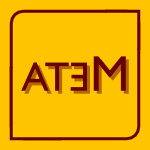 ATEM-J-2006-FavreGLW #named
ATEM-J-2006-FavreGLW #named- Editorial — Software language engineering (JMF, DG, RL, AW), pp. 161–164.
 ATEM-J-2006-HeymansSTBMC #diagrams #feature model
ATEM-J-2006-HeymansSTBMC #diagrams #feature model- Evaluating formal properties of feature diagram languages (PH, PYS, JCT, YB, RM, AC), pp. 281–302.
 ATEM-J-2006-LohmannRW #aspect-oriented #prolog
ATEM-J-2006-LohmannRW #aspect-oriented #prolog- Aspect-oriented prolog in a language processing context (WL, GR, GW), pp. 241–259.
 LDTA-2007-HameyG08 #domain-specific language #experience #implementation #stratego #using
LDTA-2007-HameyG08 #domain-specific language #experience #implementation #stratego #using- Implementing a Domain-Specific Language Using Stratego/XT: An Experience Paper (LGCH, SG), pp. 37–51.
 LDTA-2007-KallebergV08 #compilation #model transformation
LDTA-2007-KallebergV08 #compilation #model transformation- Fusing a Transformation Language with an Open Compiler (KTK, EV), pp. 21–36.
 LDTA-2007-KlintKV08 #ide #parametricity
LDTA-2007-KlintKV08 #ide #parametricity- Language Parametric Module Management for IDEs (PK, ATK, JJV), pp. 3–19.
 SLE-2008-BastenK #fact extraction #named #parametricity #source code
SLE-2008-BastenK #fact extraction #named #parametricity #source code- DeFacto: Language-Parametric Fact Extraction from Source Code (BB, PK), pp. 265–284.
 SLE-2008-Brand #modelling
SLE-2008-Brand #modelling- Model-Driven Engineering Meets Generic Language Technology (MvdB), pp. 8–15.
 SLE-2008-FritzscheJAMGSBK #automation #embedded #model transformation #modelling
SLE-2008-FritzscheJAMGSBK #automation #embedded #model transformation #modelling- Systematic Usage of Embedded Modelling Languages in Automated Model Transformation Chains (MF, JJ, UA, SM, WG, ITAS, TJB, PK), pp. 134–150.
 SLE-2008-GjosaeterIP #case study #named
SLE-2008-GjosaeterIP #case study #named- Sudoku — A Language Description Case Study (TG, IFI, AP), pp. 305–321.
 SLE-2008-GorpKJ #higher-order #integration #model transformation
SLE-2008-GorpKJ #higher-order #integration #model transformation- Transformation Language Integration Based on Profiles and Higher Order Transformations (PVG, AK, DJ), pp. 208–226.
 SLE-2008-HageK #analysis #library #named
SLE-2008-HageK #analysis #library #named- Neon: A Library for Language Usage Analysis (JH, PvK), pp. 35–53.
 SLE-2008-Kleppe
SLE-2008-Kleppe- The Field of Software Language Engineering (AK), pp. 1–7.
 SLE-2008-RiveraGLV #behaviour #maude #modelling #rule-based #semantics #visual notation
SLE-2008-RiveraGLV #behaviour #maude #modelling #rule-based #semantics #visual notation- Analyzing Rule-Based Behavioral Semantics of Visual Modeling Languages with Maude (JER, EG, JdL, AV), pp. 54–73.
 SLE-2008-SanchezLFG #process #product line #specification
SLE-2008-SanchezLFG #process #product line #specification- Engineering Languages for Specifying Product-Derivation Processes in Software Product Lines (PS, NL, LF, AG), pp. 188–207.
 SPLC-2008-HaugenMOOS #domain-specific language #standard #variability
SPLC-2008-HaugenMOOS #domain-specific language #standard #variability- Adding Standardized Variability to Domain Specific Languages (ØH, BMP, JO, GKO, AS), pp. 139–148.
 SPLC-2008-SantosKL #automation #domain-specific language #generative #modelling
SPLC-2008-SantosKL #automation #domain-specific language #generative #modelling- Automated Domain-Specific Modeling Languages for Generating Framework-Based Applications (ALS, KK, AL), pp. 149–158.
 ASPLOS-2008-DeviettiBMZ #architecture #bound #c #named #programming language #safety
ASPLOS-2008-DeviettiBMZ #architecture #bound #c #named #programming language #safety- Hardbound: architectural support for spatial safety of the C programming language (JD, CB, MMKM, SZ), pp. 103–114.
 ASPLOS-2008-JoaoMKAP #object-oriented #performance
ASPLOS-2008-JoaoMKAP #object-oriented #performance- Improving the performance of object-oriented languages with dynamic predication of indirect jumps (JAJ, OM, HK, RA, YNP), pp. 80–90.
 CGO-2008-MurphyMSSA #type safety
CGO-2008-MurphyMSSA #type safety- Fault-safe code motion for type-safe languages (BRM, VM, FTS, TS, ARAT), pp. 144–154.
 LCTES-2008-BiernackiCHP #code generation #composition #data flow
LCTES-2008-BiernackiCHP #code generation #composition #data flow- Clock-directed modular code generation for synchronous data-flow languages (DB, JLC, GH, MP), pp. 121–130.
 LCTES-2008-CohenK #named #regular expression
LCTES-2008-CohenK #named #regular expression- EventScript: an event-processing language based on regular expressions with actions (NHC, KTK), pp. 111–120.
 OSDI-2008-YuIFBEGC #distributed #named #using
OSDI-2008-YuIFBEGC #distributed #named #using- DryadLINQ: A System for General-Purpose Distributed Data-Parallel Computing Using a High-Level Language (YY, MI, DF, MB, ÚE, PKG, JC), pp. 1–14.
 PPoPP-2008-GregorL #c# #design #framework #implementation
PPoPP-2008-GregorL #c# #design #framework #implementation- Design and implementation of a high-performance MPI for C# and the common language infrastructure (DG, AL), pp. 133–142.
 CSL-2008-ChatterjeeDH
CSL-2008-ChatterjeeDH- Quantitative Languages (KC, LD, TAH), pp. 385–400.
 CSL-2008-ColcombetL #calculus #problem #μ-calculus
CSL-2008-ColcombetL #calculus #problem #μ-calculus- The Nesting-Depth of Disjunctive μ-Calculus for Tree Languages and the Limitedness Problem (TC, CL), pp. 416–430.
 CSL-2008-Place #logic
CSL-2008-Place #logic- Characterization of Logics over Ranked Tree Languages (TP), pp. 401–415.
 ICLP-2008-BuccafurriCL #logic #reasoning #semantics #social
ICLP-2008-BuccafurriCL #logic #reasoning #semantics #social- A Logic Language with Stable Model Semantics for Social Reasoning (FB, GC, RL), pp. 718–723.
 ICLP-2008-CiprianoDM #compilation #declarative #modelling
ICLP-2008-CiprianoDM #compilation #declarative #modelling- Compiling and Executing Declarative Modeling Languages to Gecode (RC, AD, JM), pp. 744–748.
 ICLP-2008-PiancastelliO #logic #multi #web
ICLP-2008-PiancastelliO #logic #multi #web- A Multi-theory Logic Language for the World Wide Web (GP, AO), pp. 769–773.
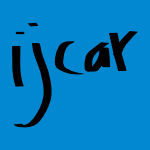 IJCAR-2008-BenzmullerRS #higher-order #logic #named
IJCAR-2008-BenzmullerRS #higher-order #logic #named- THF0 — The Core of the TPTP Language for Higher-Order Logic (CB, FR, GS), pp. 491–506.
 LICS-2008-BojanczykSS
LICS-2008-BojanczykSS- Piecewise Testable Tree Languages (MB, LS, HS), pp. 442–451.
 RTA-2008-JacquemardR
RTA-2008-JacquemardR- Closure of Hedge-Automata Languages by Hedge Rewriting (FJ, MR), pp. 157–171.
 VMCAI-2008-JonesH
VMCAI-2008-JonesH- CTL as an Intermediate Language (NDJ, RRH), p. 4.
 VMCAI-2008-Pistoia #program analysis #programming language #security
VMCAI-2008-Pistoia #program analysis #programming language #security- Program Analysis and Programming Languages for Security (MP), p. 7.
 WICSA-2007-OliveiraW #approach #architecture #modelling
WICSA-2007-OliveiraW #approach #architecture #modelling- A Model-Driven Approach to Extract Views from an Architecture Description Language (CO, MW), p. 7.
 ASE-2007-Alexander #design #named
ASE-2007-Alexander #design #named- Rosetta: language support for system-level design (PA), p. 577.
 ASE-2007-CharlesFS #eclipse #framework #ide #named
ASE-2007-CharlesFS #eclipse #framework #ide #named- IMP: a meta-tooling platform for creating language-specific ides in eclipse (PC, RMF, SMSJ), pp. 485–488.
 ASE-2007-HoskingG #domain-specific language #implementation #tool support #visual notation
ASE-2007-HoskingG #domain-specific language #implementation #tool support #visual notation- Meta tools for implementing domain specific visual languages (JGH, JCG), p. 576.
 ASE-2007-Leavens #java #ml #modelling #tutorial
ASE-2007-Leavens #java #ml #modelling #tutorial- Tutorial on JML, the java modeling language (GTL), p. 573.
 DAC-2007-BhattacharyaRS #process
DAC-2007-BhattacharyaRS #process- Language Extensions to SystemC: Process Control Constructs (BB, JR, SS), pp. 35–38.
 DAC-2007-GoldgeisserCD #hardware #modelling
DAC-2007-GoldgeisserCD #hardware #modelling- Modeling Safe Operating Area in Hardware Description Languages (LBG, EC, ZD), pp. 377–382.
 DATE-2007-EckerESSVH #abstraction #interactive #performance #representation #simulation
DATE-2007-EckerESSVH #abstraction #interactive #performance #representation #simulation- Interactive presentation: Impact of description language, abstraction layer, and value representation on simulation performance (WE, VE, LS, TS, MV, MH), pp. 767–772.
 DocEng-2007-PuginI #semantics
DocEng-2007-PuginI #semantics- Combination of transformation and schema languages described by a complete formal semantics (CP, RI), pp. 222–224.
 DocEng-2007-ThompsonKS #declarative #xml
DocEng-2007-ThompsonKS #declarative #xml- Declarative extensions of XML languages (SJT, PRK, PS), pp. 89–91.
 HT-2007-ZhouGTB #automation #generative #hypermedia #modelling #named
HT-2007-ZhouGTB #automation #generative #hypermedia #modelling #named- LLAMA: automatic hypertext generation utilizing language models (DZ, JG, MT, TJB), pp. 77–80.
 ICDAR-2007-Furmaniak #segmentation #using
ICDAR-2007-Furmaniak #segmentation #using- Unsupervised Newspaper Segmentation Using Language Context (RF), pp. 1263–1267.
 ICDAR-2007-HiranoOOY #analysis #documentation #information management #layout
ICDAR-2007-HiranoOOY #analysis #documentation #information management #layout- Text and Layout Information Extraction from Document Files of Various Formats Based on the Analysis of Page Description Language (TH, YO, YO, FY), pp. 262–266.
 ICDAR-2007-LuLT #categorisation #identification
ICDAR-2007-LuLT #categorisation #identification- Identification of Latin-Based Languages through Character Stroke Categorization (SJL, LL, CLT), pp. 352–356.
 ICDAR-2007-NamboodiriNJ #on the #using
ICDAR-2007-NamboodiriNJ #on the #using- On Using Classical Poetry Structure for Indian Language Post-Processing (AMN, PJN, CVJ), pp. 1238–1242.
 ICDAR-2007-ProchassonVM #modelling
ICDAR-2007-ProchassonVM #modelling- Language Models for Handwritten Short Message Services (EP, CVG, EM), pp. 83–87.
 ICDAR-2007-YoshidaN #approach #documentation #modelling #parsing #web
ICDAR-2007-YoshidaN #approach #documentation #modelling #parsing #web- Web Document Parsing: A New Approach to Modeling Layout-Language Relations (MY, HN), pp. 203–207.
 ICDAR-2007-ZiaratbanFF #feature model #recognition #using
ICDAR-2007-ZiaratbanFF #feature model #recognition #using- Language-Based Feature Extraction Using Template-Matching In Farsi/Arabic Handwritten Numeral Recognition (MZ, KF, FF), pp. 297–301.
 PODS-2007-BadiaV #query
PODS-2007-BadiaV #query- Non-linear prefixes in query languages (AB, SV), pp. 185–194.
 SIGMOD-2007-HeWCLR #automation #named #tool support
SIGMOD-2007-HeWCLR #automation #named #tool support- BIwTL: a business information warehouse toolkit and language for warehousing simplification and automation (BH, RW, YC, AL, JR), pp. 1041–1052.
 SIGMOD-2007-LiCYSJ #adaptation #interface #named #natural language #query #xml
SIGMOD-2007-LiCYSJ #adaptation #interface #named #natural language #query #xml- DaNaLIX: a domain-adaptive natural language interface for querying XML (YL, IC, HY, SPS, HVJ), pp. 1165–1168.
 VLDB-2007-AntovaKO #query
VLDB-2007-AntovaKO #query- Query language support for incomplete information in the MayBMS system (LA, CK, DO), pp. 1422–1425.
 ITiCSE-2007-Albin-Clark #implementation #multi #named #pseudo
ITiCSE-2007-Albin-Clark #implementation #multi #named #pseudo- MaBL: a tool for mapping pseudocode to multiple implementation languages (AAC), p. 315.
 ITiCSE-2007-RodgerLR #automaton #formal method #interactive
ITiCSE-2007-RodgerLR #automaton #formal method #interactive- Increasing interaction and support in the formal languages and automata theory course (SHR, JL, SR), pp. 58–62.
 WRLA-J-2004-CervesatoS07 #dependent type #logic #representation #specification
WRLA-J-2004-CervesatoS07 #dependent type #logic #representation #specification- Representing the MSR cryptoprotocol specification language in an extension of rewriting logic with dependent types (IC, MOS), pp. 3–35.
 WRLA-2006-FarzanM07 #partial order #programming language #reduction #semantics
WRLA-2006-FarzanM07 #partial order #programming language #reduction #semantics- Partial Order Reduction for Rewriting Semantics of Programming Languages (AF, JM), pp. 61–78.
 WRLA-2006-HillsSR07 #framework #generative #performance
WRLA-2006-HillsSR07 #framework #generative #performance- A Rewrite Framework for Language Definitions and for Generation of Efficient Interpreters (MH, TS, GR), pp. 215–231.
 ESOP-2007-BuscemiM #constraints #named #specification
ESOP-2007-BuscemiM #constraints #named #specification- CC-Pi: A Constraint-Based Language for Specifying Service Level Agreements (MGB, UM), pp. 18–32.
 ESOP-2007-EnnalsG #multi
ESOP-2007-EnnalsG #multi- Multi-language Synchronization (RE, DG), pp. 475–489.
 ESOP-2007-HaackPSS #java
ESOP-2007-HaackPSS #java- Immutable Objects for a Java-Like Language (CH, EP, JS, AS), pp. 347–362.
 ESOP-2007-MantelR #classification #security #what
ESOP-2007-MantelR #classification #security #what- Controlling the What and Where of Declassification in Language-Based Security (HM, AR), pp. 141–156.
 ESOP-2007-Pitts #equivalence #higher-order
ESOP-2007-Pitts #equivalence #higher-order- Techniques for Contextual Equivalence in Higher-Order, Typed Languages (AMP), p. 1.
 FASE-2007-BurdyHP #behaviour #bytecode #design #interface #java #specification
FASE-2007-BurdyHP #behaviour #bytecode #design #interface #java #specification- Preliminary Design of BML: A Behavioral Interface Specification Language for Java Bytecode (LB, MH, MP), pp. 215–229.
 FASE-2007-GaoHW #flexibility #modelling
FASE-2007-GaoHW #flexibility #modelling- Flexible and Extensible Notations for Modeling Languages (JG, MPEH, EVW), pp. 102–116.
 FoSSaCS-2007-TozawaM #complexity #context-free grammar
FoSSaCS-2007-TozawaM #complexity #context-free grammar- Complexity Results on Balanced Context-Free Languages (AT, YM), pp. 346–360.
 PASTE-2007-PollockVSHFM #natural language #program analysis
PASTE-2007-PollockVSHFM #natural language #program analysis- Introducing natural language program analysis (LLP, KVS, DCS, EH, ZPF, KM), pp. 15–16.
 PASTE-2007-ShepherdPV #case study #natural language #program analysis #reverse engineering
PASTE-2007-ShepherdPV #case study #natural language #program analysis #reverse engineering- Case study: supplementing program analysis with natural language analysis to improve a reverse engineering task (DCS, LLP, KVS), pp. 49–54.
 WCRE-2007-DuffyM #approach #automation #c++ #grammar recovery
WCRE-2007-DuffyM #approach #automation #c++ #grammar recovery- An Automated Approach to Grammar Recovery for a Dialect of the C++ Language (EBD, BAM), pp. 11–20.
 PEPM-2007-EllnerT #semantics #visual notation
PEPM-2007-EllnerT #semantics #visual notation- The semantics of graphical languages (SE, WT), pp. 122–133.
 PEPM-2007-FischerMM #named #programming
PEPM-2007-FischerMM #named #programming- Tasks: language support for event-driven programming (JF, RM, TDM), pp. 134–143.
 PEPM-2007-YokoyamaG #programming language #self
PEPM-2007-YokoyamaG #programming language #self- A reversible programming language and its invertible self-interpreter (TY, RG), pp. 144–153.
 PLDI-2007-Chlipala #assembly #compilation #λ-calculus
PLDI-2007-Chlipala #assembly #compilation #λ-calculus- A certified type-preserving compiler from λ calculus to assembly language (AC), pp. 54–65.
 PLDI-2007-KillianABJV #distributed #named
PLDI-2007-KillianABJV #distributed #named- Mace: language support for building distributed systems (CEK, JWA, RB, RJ, AV), pp. 179–188.
 PLDI-2007-PerryMRLAW #assembly #fault tolerance
PLDI-2007-PerryMRLAW #assembly #fault tolerance- Fault-tolerant typed assembly language (FP, LWM, GAR, JL, DIA, DW), pp. 42–53.
 SAS-2007-ChenWWKC #aspect-oriented #compilation #functional
SAS-2007-ChenWWKC #aspect-oriented #compilation #functional- A Compilation Model for Aspect-Oriented Polymorphically Typed Functional Languages (KC, SCW, MW, SCK, CHC), pp. 34–51.
 SAS-2007-GallJ #automaton #infinity #representation #verification
SAS-2007-GallJ #automaton #infinity #representation #verification- Lattice Automata: A Representation for Languages on Infinite Alphabets, and Some Applications to Verification (TLG, BJ), pp. 52–68.
 SAS-2007-Mycroft #analysis #design #evolution #hardware #motivation #programming language
SAS-2007-Mycroft #analysis #design #evolution #hardware #motivation #programming language- Programming Language Design and Analysis Motivated by Hardware Evolution (AM), pp. 18–33.
 CIAA-J-2006-Glockler07 #automaton
CIAA-J-2006-Glockler07 #automaton- Forgetting Automata and Unary Languages (JG), pp. 813–827.
 CIAA-2007-AckermanS #performance #regular expression
CIAA-2007-AckermanS #performance #regular expression- Efficient Enumeration of Regular Languages (MA, JS), pp. 226–242.
 CIAA-2007-AnselmoGM #2d #automaton
CIAA-2007-AnselmoGM #2d #automaton- Tiling Automaton: A Computational Model for Recognizable Two-Dimensional Languages (MA, DG, MM), pp. 290–302.
 CIAA-2007-CaucalCFR #context-free grammar #performance #throughput
CIAA-2007-CaucalCFR #context-free grammar #performance #throughput- Efficient Computation of Throughput Values of Context-Free Languages (DC, JC, WF, WR), pp. 203–213.
 CIAA-2007-Klunder #automaton #finite
CIAA-2007-Klunder #automaton #finite- Finite Automata Accepting Star-Connected Languages (BK), pp. 312–313.
 CIAA-2007-MrazPO #context-free grammar #nondeterminism
CIAA-2007-MrazPO #context-free grammar #nondeterminism- A Measure for the Degree of Nondeterminism of Context-Free Languages (FM, MP, FO), pp. 192–202.
 DLT-2007-AnselmoGM #2d #nondeterminism
DLT-2007-AnselmoGM #2d #nondeterminism- From Determinism to Non-determinism in Recognizable Two-Dimensional Languages (MA, DG, MM), pp. 36–47.
 DLT-2007-Frid
DLT-2007-Frid- Commutation of Binary Factorial Languages (AEF), pp. 193–204.
 DLT-2007-HanS #complexity #finite
DLT-2007-HanS #complexity #finite- State Complexity of Union and Intersection of Finite Languages (YSH, KS), pp. 217–228.
 DLT-2007-Henzinger
DLT-2007-Henzinger- Quantitative Generalizations of Languages (TAH), pp. 20–22.
 DLT-2007-Jez #boolean grammar
DLT-2007-Jez #boolean grammar- Conjunctive Grammars Can Generate Non-regular Unary Languages (AJ), pp. 242–253.
 DLT-2007-JuliaD
DLT-2007-JuliaD- Reduced Languages as ω-Generators (SJ, TVD), pp. 266–277.
 DLT-2007-Kunc #equation #question #what
DLT-2007-Kunc #equation #question #what- What Do We Know About Language Equations? (MK), pp. 23–27.
 DLT-2007-MalcherP #bound #complexity #context-free grammar
DLT-2007-MalcherP #bound #complexity #context-free grammar- Descriptional Complexity of Bounded Context-Free Languages (AM, GP), pp. 312–323.
 DLT-2007-OchmanskiS
DLT-2007-OchmanskiS- A Star Operation for Star-Free Trace Languages (EO, KS), pp. 337–345.
 DLT-2007-Selivanov
DLT-2007-Selivanov- Fine Hierarchy of Regular Aperiodic ω-Languages (VLS), pp. 399–410.
 ICALP-2007-ArenasBL #automaton #fixpoint #regular expression #word
ICALP-2007-ArenasBL #automaton #fixpoint #regular expression #word- Regular Languages of Nested Words: Fixed Points, Automata, and Synchronization (MA, PB, LL), pp. 888–900.
 ICALP-2007-BodirskyCKO #constraints
ICALP-2007-BodirskyCKO #constraints- Maximal Infinite-Valued Constraint Languages (MB, HC, JK, TvO), pp. 546–557.
 LATA-2007-BlanpainCD #geometry
LATA-2007-BlanpainCD #geometry- Geometrical Languages (BB, JMC, JPD), pp. 127–138.
 LATA-2007-BorchertR
LATA-2007-BorchertR- Deterministically and Sudoku-Deterministically Recognizable Picture Languages (BB, KR), pp. 175–186.
 LATA-2007-GruberH #automaton #complexity #finite #nondeterminism
LATA-2007-GruberH #automaton #complexity #finite #nondeterminism- Computational Complexity of NFA Minimization for Finite and Unary Languages (HG, MH), pp. 261–272.
 LATA-2007-HanW #regular expression
LATA-2007-HanW #regular expression- Generalizations of One-Deterministic Regular Languages (YSH, DW), pp. 273–284.
 LATA-2007-KutribM #automaton #performance #recognition #using
LATA-2007-KutribM #automaton #performance #recognition #using- Fast Reversible Language Recognition Using Cellular Automata (MK, AM), pp. 331–342.
 LATA-2007-KutribR #automaton #regular expression
LATA-2007-KutribR #automaton #regular expression- Succinct Description of Regular Languages by Weak Restarting Automata (MK, JR), pp. 343–354.
 LATA-2007-Nemeth #approach #comparative #on the
LATA-2007-Nemeth #approach #comparative #on the- On the Regularity of Binoid Languages: A Comparative Approach (ZLN), pp. 449–460.
 LATA-2007-Povarov #complexity #regular expression
LATA-2007-Povarov #complexity #regular expression- Descriptive Complexity of the Hamming Neighborhood of a Regular Language (GP), pp. 509–520.
 LATA-2007-StawikowskaO #on the
LATA-2007-StawikowskaO #on the- On Star-Free Trace Languages and their Lexicographic Representations (KS, EO), pp. 541–552.
 LATA-2007-Stiebe #matrix
LATA-2007-Stiebe #matrix- Slender Siromoney Matrix Languages (RS), pp. 553–564.
 ICFP-2007-FredlundS #distributed #functional #model checking #named #programming language
ICFP-2007-FredlundS #distributed #functional #model checking #named #programming language- McErlang: a model checker for a distributed functional programming language (LÅF, HS), pp. 125–136.
 ICFP-2007-NystromTK #distributed
ICFP-2007-NystromTK #distributed- Evaluating high-level distributed language constructs (JHN, PWT, DJK), pp. 203–212.
 ICFP-2007-Park #higher-order #type safety
ICFP-2007-Park #higher-order #type safety- Type-safe higher-order channels in ML-like languages (SP), pp. 191–202.
 ICFP-2007-SymeNM #lightweight #pattern matching
ICFP-2007-SymeNM #lightweight #pattern matching- Extensible pattern matching via a lightweight language extension (DS, GN, JM), pp. 29–40.
 ILC-2007-MehnertB #domain-specific language
ILC-2007-MehnertB #domain-specific language- A domain-specific language for manipulation of binary data in Dylan (HM, AB), p. 22.
 ILC-2007-RepenningI #lisp
ILC-2007-RepenningI #lisp- X-expressions in XMLisp: S-expressions and extensible markup language unite (AR, AI), p. 23.
 AGTIVE-2007-AndresLG #domain-specific language #visual notation
AGTIVE-2007-AndresLG #domain-specific language #visual notation- Domain Specific Languages with Graphical and Textual Views (FPA, JdL, EG), pp. 82–97.
 AGTIVE-2007-FussT #algorithm #graph transformation #model transformation #simulation
AGTIVE-2007-FussT #algorithm #graph transformation #model transformation #simulation- Simulating Set-Valued Transformations with Algorithmic Graph Transformation Languages (CF, VET), pp. 442–455.
 AGTIVE-2007-KniemeyerK #framework #modelling #programming language
AGTIVE-2007-KniemeyerK #framework #modelling #programming language- The Modelling Platform GroIMP and the Programming Language XL (OK, WK), pp. 570–572.
 AGTIVE-2007-Kurtev #model transformation #qvt #standard #state of the art
AGTIVE-2007-Kurtev #model transformation #qvt #standard #state of the art- State of the Art of QVT: A Model Transformation Language Standard (IK), pp. 377–393.
 AGTIVE-2007-RangerW #graph grammar
AGTIVE-2007-RangerW #graph grammar- The Graph Rewriting Language and Environment PROGRES (UR, EW), pp. 575–576.
 GT-VMT-2007-BalasubramanianNNSTK #graph transformation #model transformation
GT-VMT-2007-BalasubramanianNNSTK #graph transformation #model transformation- A Subgraph Operator for Graph Transformation Languages (DB, AN, SN, FS, RT, GK).
 GT-VMT-2007-LindqvistLP #query
GT-VMT-2007-LindqvistLP #query- A Query Language With the Star Operator (JL, TL, IP).
 GT-VMT-2007-WorzbergerHH #graph #tool support #workflow
GT-VMT-2007-WorzbergerHH #graph #tool support #workflow- Evaluating Workflow Definition Language Revisions with Graph-Based Tools (RW, MH, FWH).
 CHI-2007-KamRDTC #design #framework #learning #locality
CHI-2007-KamRDTC #design #framework #learning #locality- Localized iterative design for language learning in underdeveloped regions: the PACE framework (MK, DR, VD, AT, JFC), pp. 1097–1106.
 HCI-AS-2007-CorradiniBH #2d #game studies #interface #natural language
HCI-AS-2007-CorradiniBH #2d #game studies #interface #natural language- A Natural Language Interface for a 2D Networked Game (AC, AB, TH), pp. 225–234.
 HCI-IDU-2007-MartinR #design #human-computer #pattern matching
HCI-IDU-2007-MartinR #design #human-computer #pattern matching- Structurally Supported Design of HCI Pattern Languages (CM, AR), pp. 1159–1167.
 HCI-IPT-2007-ThuU #multi
HCI-IPT-2007-ThuU #multi- Positional Mapping Multi-tap for Myanmar Language (YKT, YU), pp. 486–495.
 HCI-IPT-2007-WissmannB #tool support #visualisation
HCI-IPT-2007-WissmannB #tool support #visualisation- Bilingual Mapping Visualizations as Tools for Chinese Language Acquisition (JW, GSB), pp. 171–180.
 HCI-MIE-2007-DerakhshiK #bound #fuzzy #network #predict #sequence #using #word
HCI-MIE-2007-DerakhshiK #bound #fuzzy #network #predict #sequence #using #word- Using Recurrent Fuzzy Neural Networks for Predicting Word Boundaries in a Phoneme Sequence in Persian Language (MRFD, MRK), pp. 50–59.
 HCI-MIE-2007-Marcus #communication #mobile #user interface
HCI-MIE-2007-Marcus #communication #mobile #user interface- m-LoCoS UI: A Universal Visible Language for Global Mobile Communication (AM), pp. 144–153.
 HCI-MIE-2007-SunCSC #algorithm #gesture #integration #interface #natural language
HCI-MIE-2007-SunCSC #algorithm #gesture #integration #interface #natural language- An Input-Parsing Algorithm Supporting Integration of Deictic Gesture in Natural Language Interface (YS, FC, Y(S, VC), pp. 206–215.
 HCI-MIE-2007-ZhongCZL #adaptation #identification #incremental #online
HCI-MIE-2007-ZhongCZL #adaptation #identification #incremental #online- Confidence Measure Based Incremental Adaptation for Online Language Identification (SZ, YC, CZ, JL), pp. 535–543.
 HIMI-IIE-2007-LaukaitisVG #architecture #information retrieval #natural language
HIMI-IIE-2007-LaukaitisVG #architecture #information retrieval #natural language- Natural Language Based Heavy Personal Assistant Architecture for Information Retrieval and Presentation (AL, OV, VG), pp. 54–63.
 HIMI-IIE-2007-TsengLH #learning #mobile
HIMI-IIE-2007-TsengLH #learning #mobile- A Mobile Environment for Chinese Language Learning (CCT, CHL, WLH), pp. 485–489.
 SIGAda-2007-Brosgol #assessment #named #safety
SIGAda-2007-Brosgol #assessment #named #safety- SA2: languages for safety-critical software: issues and assessment (BMB), p. 2.
 EDOC-2007-MilanovicKGGWDH #integration #process #using
EDOC-2007-MilanovicKGGWDH #integration #process #using- Business Process Integration by Using General Rule Markup Language (MM, NK, DG, AG, GW, VD, MH), pp. 353–364.
 ICEIS-AIDSS-2007-AlevizosKPSB #fuzzy #information retrieval #multi
ICEIS-AIDSS-2007-AlevizosKPSB #fuzzy #information retrieval #multi- Fuzzy Interval Number (FIN) Techniques for Multilingual and Cross Language Information Retrieval (TA, VGK, SEP, CS, PB), pp. 348–355.
 ICEIS-DISI-2007-OHaganSS #collaboration #composition #named #process
ICEIS-DISI-2007-OHaganSS #collaboration #composition #named #process- EVIE — An event brokering language for the composition of collaborative business processes (TO, SWS, WS), pp. 372–377.
 ICEIS-EIS-2007-Egyhazy #architecture #comparison #design #security
ICEIS-EIS-2007-Egyhazy #architecture #comparison #design #security- Comparison of Five Architecture Description Languages on Design Focus, Security and Style (CJE), pp. 270–277.
 ICEIS-EIS-2007-LiHG #modelling #named #process #visual notation
ICEIS-EIS-2007-LiHG #modelling #named #process #visual notation- EML: A Tree Overlay-Based Visual Language for Business Process Modelling (RLL, JGH, JCG), pp. 131–137.
 ICEIS-EIS-2007-Rodriguez #collaboration #coordination #education #learning #modelling #process
ICEIS-EIS-2007-Rodriguez #collaboration #coordination #education #learning #modelling #process- A Modeling Language for Collaborative Learning Educational Units — Supporting the Coordination of Collaborative Activities (MCR), pp. 334–339.
 CIKM-2007-BacheBC #modelling #probability
CIKM-2007-BacheBC #modelling #probability- Language models, probability of relevance and relevance likelihood (RB, MB, FC), pp. 853–856.
 CIKM-2007-CaoGNB #markov #modelling #query
CIKM-2007-CaoGNB #markov #modelling #query- Extending query translation to cross-language query expansion with markov chain models (GC, JG, JYN, JB), pp. 351–360.
 CIKM-2007-CombiMP #query #sql
CIKM-2007-CombiMP #query #sql- The t4sql temporal query language (CC, AM, GP), pp. 193–202.
 CIKM-2007-XuBCY #information retrieval #social #using
CIKM-2007-XuBCY #information retrieval #social #using- Using social annotations to improve language model for information retrieval (SX, SB, YC, YY), pp. 1003–1006.
 ECIR-2007-BoyerB #natural language #web
ECIR-2007-BoyerB #natural language #web- Natural Language Processing for Usage Based Indexing of Web Resources (AB, AB), pp. 517–524.
 ECIR-2007-CrivellariNF #how #information retrieval
ECIR-2007-CrivellariNF #how #information retrieval- How to Compare Bilingual to Monolingual Cross-Language Information Retrieval (FC, GMDN, NF), pp. 533–540.
 ECIR-2007-KongL #documentation #modelling #multi #network #xml
ECIR-2007-KongL #documentation #modelling #multi #network #xml- Combining Multiple Sources of Evidence in XML Multimedia Documents: An Inference Network Incorporating Element Language Models (ZK, ML), pp. 716–719.
 ECIR-2007-MerkelK #classification #modelling #query
ECIR-2007-MerkelK #classification #modelling #query- Language Model Based Query Classification (AM, DK), pp. 720–723.
 ECIR-2007-WeiC #ad hoc #framework #modelling #performance #retrieval
ECIR-2007-WeiC #ad hoc #framework #modelling #performance #retrieval- Modeling Term Associations for Ad-Hoc Retrieval Performance Within Language Modeling Framework (XW, WBC), pp. 52–63.
 ICML-2007-MnihH #modelling #statistics #visual notation
ICML-2007-MnihH #modelling #statistics #visual notation- Three new graphical models for statistical language modelling (AM, GEH), pp. 641–648.
 KDD-2007-ChewBKA #information retrieval #using
KDD-2007-ChewBKA #information retrieval #using- Cross-language information retrieval using PARAFAC2 (PAC, BWB, TGK, AA), pp. 143–152.
 SEKE-2007-FeijoFMGH #concept #modelling #named #query #xml
SEKE-2007-FeijoFMGH #concept #modelling #named #query #xml- CXPath: a Query Language for Conceptual Models of Integrated XML Data (DdVF, CNF, ÁFM, RdMG, CAH), p. 592–?.
 SEKE-2007-Ilieva #information management #natural language #representation #visual notation
SEKE-2007-Ilieva #information management #natural language #representation #visual notation- Graphical Notation for Natural Language and Knowledge Representation (MI), pp. 361–367.
 SEKE-2007-LeitaoTB #named #natural language #specification #testing
SEKE-2007-LeitaoTB #named #natural language #specification #testing- NLForSpec: Translating Natural Language Descriptions into Formal Test Case Specifications (DL, DT, FdAB), pp. 129–134.
 SEKE-2007-RushtonT #reasoning #source code
SEKE-2007-RushtonT #reasoning #source code- A Language Facilitating Informal Reasoning about Programs (JNR, DT), p. 396–?.
 SEKE-2007-TeekayuphunS #approach #hybrid #natural language #query
SEKE-2007-TeekayuphunS #approach #hybrid #natural language #query- A Hybrid Approach for Natural Language Query Translation (PT, OS), pp. 368–373.
 SEKE-2007-ZaitM #named #ontology #web
SEKE-2007-ZaitM #named #ontology #web- OWLed: Extending Knowledge for Web Ontology Language (HZ, AM), pp. 598–603.
 SIGIR-2007-AzzopardiRB #analysis #query #topic #using
SIGIR-2007-AzzopardiRB #analysis #query #topic #using- Building simulated queries for known-item topics: an analysis using six european languages (LA, MdR, KB), pp. 455–462.
 SIGIR-2007-GaoNNZHWH #query #using
SIGIR-2007-GaoNNZHWH #query #using- Cross-lingual query suggestion using query logs of different languages (WG, CN, JYN, MZ, JH, KFW, HWH), pp. 463–470.
 SIGIR-2007-Jones #natural language
SIGIR-2007-Jones #natural language- Natural language and the information layer (KSJ), pp. 3–6.
 SIGIR-2007-MaisonnasseGC #dependence #information retrieval
SIGIR-2007-MaisonnasseGC #dependence #information retrieval- Revisiting the dependence language model for information retrieval (LM, ÉG, JPC), pp. 695–696.
 SIGIR-2007-Metzler #modelling #parametricity #using
SIGIR-2007-Metzler #modelling #parametricity #using- Using gradient descent to optimize language modeling smoothing parameters (DM), pp. 687–688.
 SIGIR-2007-TanVFZ #feedback #information retrieval #modelling
SIGIR-2007-TanVFZ #feedback #information retrieval #modelling- Term feedback for information retrieval with language models (BT, AV, HF, CZ), pp. 263–270.
 SIGIR-2007-WinaverKD #framework #modelling #query #robust #towards
SIGIR-2007-WinaverKD #framework #modelling #query #robust #towards- Towards robust query expansion: model selection in the language modeling framework (MW, OK, CD), pp. 729–730.
 SIGIR-2007-ZhangX #estimation #modelling #performance
SIGIR-2007-ZhangX #estimation #modelling #performance- Fast exact maximum likelihood estimation for mixture of language models (YZ, WX), pp. 865–866.
 ECMDA-FA-2007-Kleppe #generative #ide #metamodelling #towards
ECMDA-FA-2007-Kleppe #generative #ide #metamodelling #towards- Towards the Generation of a Text-Based IDE from a Language Metamodel (AK), pp. 114–129.
 ECMDA-FA-2007-Warmer #domain-specific language #modelling #using
ECMDA-FA-2007-Warmer #domain-specific language #modelling #using- A Model Driven Software Factory Using Domain Specific Languages (JW), pp. 194–203.
 MoDELS-2007-HessellundCW #development #domain-specific language #multi
MoDELS-2007-HessellundCW #development #domain-specific language #multi- Guided Development with Multiple Domain-Specific Languages (AH, KC, AW), pp. 46–60.
 MoDELS-2007-KrahnRV #syntax
MoDELS-2007-KrahnRV #syntax- Integrated Definition of Abstract and Concrete Syntax for Textual Languages (HK, BR, SV), pp. 286–300.
 MoDELS-2007-WhittleMAJER #composition #diagrams #uml
MoDELS-2007-WhittleMAJER #composition #diagrams #uml- An Expressive Aspect Composition Language for UML State Diagrams (JW, AMDM, JA, PKJ, AME, RR), pp. 514–528.
 MoDELS-2007-XuL #interactive #monitoring #visual notation
MoDELS-2007-XuL #interactive #monitoring #visual notation- Formally Defining a Graphical Language for Monitoring and Checking Object Interactions (KX, DL), pp. 620–634.
 MoDELS-2007-HessellundCW #development #domain-specific language #multi
MoDELS-2007-HessellundCW #development #domain-specific language #multi- Guided Development with Multiple Domain-Specific Languages (AH, KC, AW), pp. 46–60.
 MoDELS-2007-KrahnRV #syntax
MoDELS-2007-KrahnRV #syntax- Integrated Definition of Abstract and Concrete Syntax for Textual Languages (HK, BR, SV), pp. 286–300.
 MoDELS-2007-WhittleMAJER #composition #diagrams #uml
MoDELS-2007-WhittleMAJER #composition #diagrams #uml- An Expressive Aspect Composition Language for UML State Diagrams (JW, AMDM, JA, PKJ, AME, RR), pp. 514–528.
 MoDELS-2007-XuL #interactive #monitoring #visual notation
MoDELS-2007-XuL #interactive #monitoring #visual notation- Formally Defining a Graphical Language for Monitoring and Checking Object Interactions (KX, DL), pp. 620–634.
 ECOOP-2007-LinB #data flow #domain-specific language #named
ECOOP-2007-LinB #data flow #domain-specific language #named- DirectFlow: A Domain-Specific Language for Information-Flow Systems (CKL, APB), pp. 299–322.
 ECOOP-2007-WykKBS #attribute grammar #grammarware #java
ECOOP-2007-WykKBS #attribute grammar #grammarware #java- Attribute Grammar-Based Language Extensions for Java (EVW, LK, DB, AS), pp. 575–599.
 OOPSLA-2007-LeffR #domain-specific language #named #relational #visual notation
OOPSLA-2007-LeffR #domain-specific language #named #relational #visual notation- Webrb: evaluating a visual domain-specific language for building relational web-applications (AL, JTR), pp. 281–300.
 OOPSLA-2007-McDirmid #live programming #programming language
OOPSLA-2007-McDirmid #live programming #programming language- Living it up with a live programming language (SM), pp. 623–638.
 OOPSLA-2007-Meijer #programming language
OOPSLA-2007-Meijer #programming language- Confessions of a used programming language salesman (EM), pp. 677–694.
 OOPSLA-2007-TanM #analysis #c #java #named
OOPSLA-2007-TanM #analysis #c #java #named- Ilea: inter-language analysis across java and c (GT, GM), pp. 39–56.
 TOOLS-EUROPE-2007-HenrikssonJZA #composition #named #reuse
TOOLS-EUROPE-2007-HenrikssonJZA #composition #named #reuse- Reuseware — Adding Modularity to Your Language of Choice (JH, JJ, SZ, UA), pp. 127–146.
 TOOLS-EUROPE-2007-KolovosPPR #in the small
TOOLS-EUROPE-2007-KolovosPPR #in the small- Update Transformations in the Small with the Epsilon Wizard Language (DSK, RFP, FP, LMR), pp. 53–69.
 TOOLS-EUROPE-2007-LeitnerEOC #programming language
TOOLS-EUROPE-2007-LeitnerEOC #programming language- Reflecting on an Existing Programming Language (AL, PTE, MO, IC), pp. 319–339.
 GPCE-2007-LienhardtSS #component #kernel #named #programming
GPCE-2007-LienhardtSS #component #kernel #named #programming- Oz/K: a kernel language for component-based open programming (ML, AS, JBS), pp. 43–52.
 GPCE-2007-WeaverKFA #algebra #combinator
GPCE-2007-WeaverKFA #algebra #combinator- Constructing language processors with algebra combinators (PW, GK, NF, PA), pp. 155–164.
 GPCE-2007-WykS #parsing
GPCE-2007-WykS #parsing- Context-aware scanning for parsing extensible languages (EVW, AS), pp. 63–72.
 LOPSTR-2007-FerrariFMO #generative #modelling #object-oriented
LOPSTR-2007-FerrariFMO #generative #modelling #object-oriented- Snapshot Generation in a Constructive Object-Oriented Modeling Language (MF, CF, AM, MO), pp. 169–184.
 PPDP-2007-EncinaLRH #functional #lazy evaluation #parallel
PPDP-2007-EncinaLRH #functional #lazy evaluation #parallel- Observing intermediate structures in a parallel lazy functional language (AdlE, LL, FR, MHH), pp. 109–120.
 PADL-2007-Bond #declarative #modelling
PADL-2007-Bond #declarative #modelling- BAD, a Declarative Logic-Based Language for Brain Modeling (AHB), pp. 200–214.
 POPL-2007-Chen #compilation #inheritance #multi
POPL-2007-Chen #compilation #inheritance #multi- A typed intermediate language for compiling multiple inheritance (JC), pp. 25–30.
 POPL-2007-JumpM #detection #garbage collection #memory management #named
POPL-2007-JumpM #detection #garbage collection #memory management #named- Cork: dynamic memory leak detection for garbage-collected languages (MJ, KSM), pp. 31–38.
 POPL-2007-MandelbaumFWFG #functional #ml #named
POPL-2007-MandelbaumFWFG #functional #ml #named- PADS/ML: a functional data description language (YM, KF, DW, MFF, AG), pp. 77–83.
 POPL-2007-MatthewsF #multi #semantics #source code
POPL-2007-MatthewsF #multi #semantics #source code- Operational semantics for multi-language programs (JM, RBF), pp. 3–10.
 POPL-2007-Murthy #design #enterprise #programming language #λ-calculus
POPL-2007-Murthy #design #enterprise #programming language #λ-calculus- Advanced programming language design in enterprise software: a λ-calculus theorist wanders into a datacenter (CM), pp. 263–264.
 REFSQ-2007-LaukaitisV #development #information management #natural language
REFSQ-2007-LaukaitisV #development #information management #natural language- Integrating All Stages of Information Systems Development by Means of Natural Language Processing (AL, OV), pp. 218–231.
 REFSQ-2007-MatuleviciusH #empirical #modelling
REFSQ-2007-MatuleviciusH #empirical #modelling- Comparing Goal Modelling Languages: An Experiment (RM, PH), pp. 18–32.
 SAC-MT-J-2006-JouaultK07 #model transformation #on the
SAC-MT-J-2006-JouaultK07 #model transformation #on the- On the interoperability of model-to-model transformation languages (FJ, IK), pp. 114–137.
 SAC-MT-J-2006-KurtevBJ07 #atl #composition #model transformation #rule-based
SAC-MT-J-2006-KurtevBJ07 #atl #composition #model transformation #rule-based- Rule-based modularization in model transformation languages illustrated with ATL (IK, KvdB, FJ), pp. 138–154.
 SAC-MT-J-2006-VarroB07 #framework #model transformation
SAC-MT-J-2006-VarroB07 #framework #model transformation- The model transformation language of the VIATRA2 framework (DV, AB), pp. 214–234.
 SAC-OOPS-J-2006-LagorioZ07 #java #named
SAC-OOPS-J-2006-LagorioZ07 #java #named- Just: Safe Unknown Types in Java-like Languages (GL, EZ), pp. 69–98.
 SAC-2007-CuadradoM #model transformation
SAC-2007-CuadradoM #model transformation- A phasing mechanism for model transformation languages (JSC, JGM), pp. 1020–1024.
 SAC-2007-SchusterS #documentation #estimation #natural language #query #random #web
SAC-2007-SchusterS #documentation #estimation #natural language #query #random #web- NL sampler: random sampling of web documents based on natural language with query hit estimation (DS, AS), pp. 812–818.
 GTTSE-2007-Visser #case study #domain-specific language #named
GTTSE-2007-Visser #case study #domain-specific language #named- WebDSL: A Case Study in Domain-Specific Language Engineering (EV), pp. 291–373.
 GTTSE-2007-Wachsmuth #domain-specific language #modelling #semantics
GTTSE-2007-Wachsmuth #domain-specific language #modelling #semantics- Modelling the Operational Semantics of Domain-Specific Modelling Languages (GW), pp. 506–520.
 GTTSE-2007-WykM #analysis #composition #java
GTTSE-2007-WykM #analysis #composition #java- Adding Dimension Analysis to Java as a Composable Language Extension (EVW, YM), pp. 442–456.
 ICSE-2007-GrundyH #diagrams #sketching #visual notation
ICSE-2007-GrundyH #diagrams #sketching #visual notation- Supporting Generic Sketching-Based Input of Diagrams in a Domain-Specific Visual Language Meta-Tool (JCG, JGH), pp. 282–291.
 ICSE-2007-KarailaS #case study #experience #industrial #metaprogramming #visual notation
ICSE-2007-KarailaS #case study #experience #industrial #metaprogramming #visual notation- Applying Template Meta-Programming Techniques for a Domain-Specific Visual Language — An Industrial Experience Report (MK, TS), pp. 571–580.
 ICSE-2007-KojarskiL #aspect-oriented #feature model #framework #identification #interactive #multi
ICSE-2007-KojarskiL #aspect-oriented #feature model #framework #identification #interactive #multi- Identifying Feature Interactions in Multi-Language Aspect-Oriented Frameworks (SK, DHL), pp. 147–157.
 ICSE-2007-RunesonAN #detection #fault #natural language #using
ICSE-2007-RunesonAN #detection #fault #natural language #using- Detection of Duplicate Defect Reports Using Natural Language Processing (PR, MA, ON), pp. 499–510.
 LDTA-J-2003-Wyk #aspect-oriented #composition #implementation #programming
LDTA-J-2003-Wyk #aspect-oriented #composition #implementation #programming- Implementing aspect-oriented programming constructs as modular language extensions (EVW), pp. 38–61.
 ATEM-2007-FavreGLW
ATEM-2007-FavreGLW- 4th International Workshop on Language Engineering (ATEM 2007) (JMF, DG, RL, AW), pp. 28–33.
 CGO-2007-WangCWSA #code generation #memory management #optimisation #transaction
CGO-2007-WangCWSA #code generation #memory management #optimisation #transaction- Code Generation and Optimization for Transactional Memory Constructs in an Unmanaged Language (CW, WYC, YW, BS, ARAT), pp. 34–48.
 LCTES-2007-PermandlaRB #java #type system #virtual machine
LCTES-2007-PermandlaRB #java #type system #virtual machine- A type system for preventing data races and deadlocks in the java virtual machine language: 1 (PP, MR, CB), p. 10.
 ICLP-2007-BaralDT #information management #natural language #prolog #set #towards
ICLP-2007-BaralDT #information management #natural language #prolog #set #towards- Towards Overcoming the Knowledge Acquisition Bottleneck in Answer Set Prolog Applications: Embracing Natural Language Inputs (CB, JD, LT), pp. 1–21.
 ICLP-2007-DovierFP #constraints #multi
ICLP-2007-DovierFP #constraints #multi- Multivalued Action Languages with Constraints in CLP(FD) (AD, AF, EP), pp. 255–270.
 ICLP-2007-Hanus #declarative #multi
ICLP-2007-Hanus #declarative #multi- Multi-paradigm Declarative Languages (MH), pp. 45–75.
 ICLP-2007-KoninckSD #algorithm #logic
ICLP-2007-KoninckSD #algorithm #logic- The Correspondence Between the Logical Algorithms Language and CHR (LDK, TS, BD), pp. 209–223.
 ICLP-2007-West #animation #logic programming #programming language #specification
ICLP-2007-West #animation #logic programming #programming language #specification- The Use of a Logic Programming Language in the Animation of Z Specifications (MMW), pp. 451–452.
 LICS-2007-SangiorgiKS #bisimulation #higher-order
LICS-2007-SangiorgiKS #bisimulation #higher-order- Environmental Bisimulations for Higher-Order Languages (DS, NK, ES), pp. 293–302.
 LICS-2007-TorreMP #context-sensitive grammar #robust
LICS-2007-TorreMP #context-sensitive grammar #robust- A Robust Class of Context-Sensitive Languages (SLT, PM, GP), pp. 161–170.
 RTA-2007-HillsR #analysis #logic #named #prototype
RTA-2007-HillsR #analysis #logic #named #prototype- KOOL: An Application of Rewriting Logic to Language Prototyping and Analysis (MH, GR), pp. 246–256.
 TLCA-2007-LiptonN #constraints #higher-order #logic programming #programming language #semantics
TLCA-2007-LiptonN #constraints #higher-order #logic programming #programming language #semantics- Higher-Order Logic Programming Languages with Constraints: A Semantics (JL, SN), pp. 272–289.
 VMCAI-2007-KlaedtkeRS #abstraction #hybrid #refinement #verification
VMCAI-2007-KlaedtkeRS #abstraction #hybrid #refinement #verification- Language-Based Abstraction Refinement for Hybrid System Verification (FK, SR, ZS), pp. 151–166.
 CBSE-2006-Lumpe #abstraction #component #framework #modelling #named #reasoning
CBSE-2006-Lumpe #abstraction #component #framework #modelling #named #reasoning- GLoo: A Framework for Modeling and Reasoning About Component-Oriented Language Abstractions (ML), pp. 17–32.
 CBSE-2006-PerezACR #architecture #aspect-oriented #design
CBSE-2006-PerezACR #architecture #aspect-oriented #design- Designing Software Architectures with an Aspect-Oriented Architecture Description Language (JP, NA, JÁC, IR), pp. 123–138.
 ASE-2006-Antkiewicz #modelling #using
ASE-2006-Antkiewicz #modelling #using- Round-Trip Engineering of Framework-Based Software using Framework-Specific Modeling Languages (MA), pp. 323–326.
 ASE-2006-GrundyHZL #editing #generative #specification #visual notation
ASE-2006-GrundyHZL #editing #generative #specification #visual notation- Generating Domain-Specific Visual Language Editors from High-level Tool Specifications (JCG, JGH, NZ, NL), pp. 25–36.
 ASE-2006-PaarT #data type #owl #programming language #xml
ASE-2006-PaarT #data type #owl #programming language #xml- Programming Language Inherent Support for Constrained XML Schema Definition Data Types and OWL DL (AP, WFT), pp. 281–284.
 PODS-2006-BohannonPV #lens #relational
PODS-2006-BohannonPV #lens #relational- Relational lenses: a language for updatable views (AB, BCP, JAV), pp. 338–347.
 SIGMOD-2006-Hanrahan #analysis #named #query #visualisation
SIGMOD-2006-Hanrahan #analysis #named #query #visualisation- VizQL: a language for query, analysis and visualization (PH), p. 721.
 SIGMOD-2006-LooCGGHMRRS #declarative #execution #network #optimisation
SIGMOD-2006-LooCGGHMRRS #declarative #execution #network #optimisation- Declarative networking: language, execution and optimization (BTL, TC, MNG, DEG, JMH, PM, RR, TR, IS), pp. 97–108.
 ITiCSE-2006-AdamsBBELS #education #programming language
ITiCSE-2006-AdamsBBELS #education #programming language- Approaches to teaching the programming languages course: a potpourri (ESA, DB, JB, JE, PBL, DS), pp. 299–300.
 ITiCSE-2006-Gal-EzerT #algebra #how #question #regular expression
ITiCSE-2006-Gal-EzerT #algebra #how #question #regular expression- Algebraic characterization of regular languages: how to cope with all these equivalences? (JGE, MBT), p. 325.
 ITiCSE-2006-HielscherW #automaton #education #formal method #learning #named
ITiCSE-2006-HielscherW #automaton #education #formal method #learning #named- AtoCC: learning environment for teaching theory of automata and formal languages (MH, CW), p. 306.
 ITiCSE-2006-Rodger #automaton #formal method #learning
ITiCSE-2006-Rodger #automaton #formal method #learning- Learning automata and formal languages interactively with JFLAP (SHR), p. 360.
 ESOP-2006-CarpinetiL #contract #web #web service
ESOP-2006-CarpinetiL #contract #web #web service- A Basic Contract Language for Web Services (SC, CL), pp. 197–213.
 ESOP-2006-CooperK #call-by #data flow
ESOP-2006-CooperK #call-by #data flow- Embedding Dynamic Dataflow in a Call-by-Value Language (GHC, SK), pp. 294–308.
 ESOP-2006-Fruja #dot-net #runtime #type safety
ESOP-2006-Fruja #dot-net #runtime #type safety- Type Safety of Generics for the .NET Common Language Runtime (NGF), pp. 325–341.
 ESOP-2006-YuI #assembly
ESOP-2006-YuI #assembly- A Typed Assembly Language for Confidentiality (DY, NI), pp. 162–179.
 FASE-2006-CooneyDR #implementation #named #programming language
FASE-2006-CooneyDR #implementation #named #programming language- GPSL: A Programming Language for Service Implementation (DC, MD, PR), pp. 3–17.
 CSMR-2006-BrandKVV #framework #independence #pretty-printing
CSMR-2006-BrandKVV #framework #independence #pretty-printing- A Language Independent Framework for Context-sensitive Formatting (MvdB, ATK, JJV, NPV), pp. 103–112.
 CSMR-2006-CostagliolaLDGR #case study #design pattern #visual notation
CSMR-2006-CostagliolaLDGR #case study #design pattern #visual notation- Case Studies of Visual Language Based Design Patterns Recovery (GC, ADL, VD, CG, MR), pp. 165–174.
 ICPC-2006-MoiseWHH #reverse engineering #scripting language
ICPC-2006-MoiseWHH #reverse engineering #scripting language- Reverse Engineering Scripting Language Extensions (DLM, KW, HJH, DH), pp. 295–306.
 ICSM-2006-KontogiannisLW #comprehension #maintenance #multi #scalability
ICSM-2006-KontogiannisLW #comprehension #maintenance #multi #scalability- Comprehension and Maintenance of Large-Scale Multi-Language Software Applications (KK, PKL, KW), pp. 497–500.
 MSR-2006-KimZKHMGPWZ #mining #named #repository
MSR-2006-KimZKHMGPWZ #mining #named #repository- TA-RE: an exchange language for mining software repositories (SK, TZ, MK, AEH, AM, TG, MP, EJWJ, AZ), pp. 22–25.
 SCAM-2006-StreinKL #program analysis #refactoring
SCAM-2006-StreinKL #program analysis #refactoring- Cross-Language Program Analysis and Refactoring (DS, HK, WL), pp. 207–216.
 SCAM-2006-WykKBJSR #c #compilation #composition #framework #java #tool support
SCAM-2006-WykKBJSR #c #compilation #composition #framework #java #tool support- Tool Demonstration: Silver Extensible Compiler Frameworks and Modular Language Extensions for Java and C (EVW, LK, DB, EJ, AS, PR), p. 161.
 WCRE-2006-Ribic #concept #decompiler #embedded #equivalence #execution #implementation #programming language
WCRE-2006-Ribic #concept #decompiler #embedded #equivalence #execution #implementation #programming language- Concept and implementation of the programming language and translator, for embedded systems, based on machine code decompilation and equivalence between source and executable code (SR), pp. 307–308.
 PEPM-2006-IwamaIK #analysis #exception #functional #resource management
PEPM-2006-IwamaIK #analysis #exception #functional #resource management- Resource usage analysis for a functional language with exceptions (FI, AI, NK), pp. 38–47.
 PEPM-2006-WangCK #aspect-oriented #functional #higher-order #weaving
PEPM-2006-WangCK #aspect-oriented #functional #higher-order #weaving- Type-directed weaving of aspects for higher-order functional languages (MW, KC, SCK), pp. 78–87.
 PLDI-2006-BergerZ #memory management #named #probability #safety
PLDI-2006-BergerZ #memory management #named #probability #safety- DieHard: probabilistic memory safety for unsafe languages (EDB, BGZ), pp. 158–168.
 PLDI-2006-CarlstromMCCMKO #programming language #transaction
PLDI-2006-CarlstromMCCMKO #programming language #transaction- The Atomos transactional programming language (BDC, AM, HC, JC, CCM, CEK, KO), pp. 1–13.
 PLDI-2006-DhurjatiKA #alias #analysis #named
PLDI-2006-DhurjatiKA #alias #analysis #named- SAFECode: enforcing alias analysis for weakly typed languages (DD, SK, VSA), pp. 144–157.
 FLOPS-2006-IgnatoffCK #adaptation #framework #functional #object-oriented
FLOPS-2006-IgnatoffCK #adaptation #framework #functional #object-oriented- Crossing State Lines: Adapting Object-Oriented Frameworks to Functional Reactive Languages (DI, GHC, SK), pp. 259–276.
 FLOPS-2006-Roy #convergence #design
FLOPS-2006-Roy #convergence #design- Convergence in Language Design: A Case of Lightning Striking Four Times in the Same Place (PVR), pp. 2–12.
 DLT-J-2005-AfoninH06 #problem #regular expression #set
DLT-J-2005-AfoninH06 #problem #regular expression #set- Membership and Finiteness Problems for Rational Sets of Regular Languages (SA, EH), pp. 493–506.
 DLT-J-2005-BesC06 #linear #order #theorem #word
DLT-J-2005-BesC06 #linear #order #theorem #word- A Kleene Theorem for Languages of Words Indexed by Linear Orderings (AB, OC), pp. 519–542.
 DLT-J-2005-Pribavkina06 #on the #word
DLT-J-2005-Pribavkina06 #on the #word- On some Properties of the Language of 2-collapsing Words (EVP), pp. 665–676.
 CIAA-2006-Glockler #automaton
CIAA-2006-Glockler #automaton- Forgetting Automata and Unary Languages (JG), pp. 186–197.
 CIAA-2006-PargaGR #algorithm #product line #regular expression
CIAA-2006-PargaGR #algorithm #product line #regular expression- A Family of Algorithms for Non Deterministic Regular Languages Inference (MVdP, PG, JR), pp. 265–274.
 CIAA-2006-Thurston #automaton #parsing #regular expression
CIAA-2006-Thurston #automaton #parsing #regular expression- Parsing Computer Languages with an Automaton Compiled from a Single Regular Expression (ADT), pp. 285–286.
 DLT-2006-BertoniCP #context-free grammar #xml
DLT-2006-BertoniCP #context-free grammar #xml- Context-Free Grammars and XML Languages (AB, CC, BP), pp. 108–119.
 DLT-2006-BonizzoniM #reflexive
DLT-2006-BonizzoniM #reflexive- A Decision Procedure for Reflexive Regular Splicing Languages (PB, GM), pp. 315–326.
 DLT-2006-DediuKKN #approach #generative #graph grammar
DLT-2006-DediuKKN #approach #generative #graph grammar- Contextual Hypergraph Grammars — A New Approach to the Generation of Hypergraph Languages (AHD, RKH, HJK, BN), pp. 327–338.
 DLT-2006-GurevichW #question #state machine
DLT-2006-GurevichW #question #state machine- Can Abstract State Machines Be Useful in Language Theory? (YG, CW), pp. 14–19.
 DLT-2006-HanSW #regular expression
DLT-2006-HanSW #regular expression- Prime Decompositions of Regular Languages (YSH, KS, DW), pp. 145–155.
 DLT-2006-ItoLS #bound
DLT-2006-ItoLS #bound- Closure of Language Classes Under Bounded Duplication (MI, PL, KST), pp. 238–247.
 DLT-2006-Jurdzinski #context-sensitive grammar
DLT-2006-Jurdzinski #context-sensitive grammar- The Boolean Closure of Growing Context-Sensitive Languages (TJ), pp. 248–259.
 DLT-2006-MenzelPS #graph
DLT-2006-MenzelPS #graph- Some Examples of Semi-rational DAG Languages (JRM, LP, MS), pp. 351–362.
 DLT-2006-OkhotinY #equation
DLT-2006-OkhotinY #equation- Language Equations with Complementation (AO, OY), pp. 420–432.
 DLT-2006-Paun
DLT-2006-Paun- Languages in Membrane Computing: Some Details for Spiking Neural P Systems (GP), pp. 20–35.
 DLT-2006-Shur #combinator #complexity
DLT-2006-Shur #combinator #complexity- Factorial Languages of Low Combinatorial Complexity (AMS), pp. 397–407.
 ICALP-v2-2006-Murlak
ICALP-v2-2006-Murlak- The Wadge Hierarchy of Deterministic Tree Languages (FM), pp. 408–419.
 FM-2006-AmalioSP
FM-2006-AmalioSP- A Formal Template Language Enabling Metaproof (NA, SS, FP), pp. 252–267.
 ICFP-2006-DenielouL #abstraction #distributed #type system
ICFP-2006-DenielouL #abstraction #distributed #type system- Abstraction preservation and subtyping in distributed languages (PMD, JJL), pp. 286–297.
 ICFP-2006-KawanakaH #bidirectional #model transformation #named #xml
ICFP-2006-KawanakaH #bidirectional #model transformation #named #xml- biXid: a bidirectional transformation language for XML (SK, HH), pp. 201–214.
 IFL-2006-BonenfantFHH #execution #functional #worst-case
IFL-2006-BonenfantFHH #execution #functional #worst-case- Worst-Case Execution Times for a Purely Functional Language (AB, CF, KH, RH), pp. 235–252.
 IFL-2006-Hidalgo-HerreroOR #evaluation #functional #parallel
IFL-2006-Hidalgo-HerreroOR #evaluation #functional #parallel- Comparing Alternative Evaluation Strategies for Stream-Based Parallel Functional Languages (MHH, YOM, FR), pp. 55–72.
 CHI-2006-Adar #graph #interface #named
CHI-2006-Adar #graph #interface #named- GUESS: a language and interface for graph exploration (EA), pp. 791–800.
 CHI-2006-HamzahTIH #effectiveness
CHI-2006-HamzahTIH #effectiveness- Effectiveness of annotating by hand for non-alphabetical languages (MDH, ST, MI, TH), pp. 841–850.
 CHI-2006-PearsonHBPN #adaptation #behaviour #how #human-computer #word
CHI-2006-PearsonHBPN #adaptation #behaviour #how #human-computer #word- Adaptive language behavior in HCI: how expectations and beliefs about a system affect users’ word choice (JP, JH, HPB, MJP, CN), pp. 1177–1180.
 SOFTVIS-2006-GauvinB #automation #data flow #layout #programming language #visual notation
SOFTVIS-2006-GauvinB #automation #data flow #layout #programming language #visual notation- Transparency, holophrasting, and automatic layout applied to control structures for visual dataflow programming languages (SG, OB), pp. 67–75.
 SOFTVIS-2006-KaravirtaKM #algorithm #animation #taxonomy
SOFTVIS-2006-KaravirtaKM #algorithm #animation #taxonomy- Taxonomy of algorithm animation languages (VK, AK, LM), pp. 77–85.
 EDOC-2006-BendraouGB #abstraction #execution #modelling #named #process #uml
EDOC-2006-BendraouGB #abstraction #execution #modelling #named #process #uml- UML4SPM: An Executable Software Process Modeling Language Providing High-Level Abstractions (RB, MPG, XB), pp. 297–306.
 EDOC-2006-Zhang #collaboration
EDOC-2006-Zhang #collaboration- Extended Collaboration Description Language (X-CODL) (JZ), pp. 56–66.
 ICEIS-AIDSS-2006-MarinagiAKS #fuzzy #information retrieval
ICEIS-AIDSS-2006-MarinagiAKS #fuzzy #information retrieval- Fuzzy Interval Number (FIN) Techniques for Cross Language Information Retrieval (CM, TA, VGK, CS), pp. 249–256.
 ICEIS-HCI-2006-ElarissKH #evaluation #information management #query #visual notation
ICEIS-HCI-2006-ElarissKH #evaluation #information management #query #visual notation- An Evaluation of a Visual Query Language for Information Systems (HEE, SK, RAH), pp. 51–58.
 ICEIS-ISAS-2006-ReiterKRSS #framework #generative #model transformation
ICEIS-ISAS-2006-ReiterKRSS #framework #generative #model transformation- A Generator Framework for Domain-Specific Model Transformation Languages (TR, EK, WR, WS, MS), pp. 27–35.
 ICEIS-ISAS-2006-ShishkovDL
ICEIS-ISAS-2006-ShishkovDL- Bridging the Language-Action Perspective and Organizational Semiotics in SDBC (BS, JLGD, KL), pp. 52–60.
 ICEIS-ISAS-2006-SoeiroBM #composition #specification #xml
ICEIS-ISAS-2006-SoeiroBM #composition #specification #xml- An XML-Based Language for Specification and Composition of Aspectual Concerns (ES, ISB, AMDM), pp. 410–419.
 CIKM-2006-BaiTWLZ #data type
CIKM-2006-BaiTWLZ #data type- A data stream language and system designed for power and extensibility (YB, HT, HW, CL, CZ), pp. 337–346.
 CIKM-2006-KadriN #estimation #information retrieval #query
CIKM-2006-KadriN #estimation #information retrieval #query- Improving query translation with confidence estimation for cross language information retrieval (YK, JYN), pp. 818–819.
 CIKM-2006-LeuskiL #modelling
CIKM-2006-LeuskiL #modelling- Tracking dragon-hunters with language models (AL, VL), pp. 698–707.
 CIKM-2006-ShiN #adaptation #corpus #information retrieval #parallel
CIKM-2006-ShiN #adaptation #corpus #information retrieval #parallel- Filtering or adapting: two strategies to exploit noisy parallel corpora for cross-language information retrieval (LS, JYN), pp. 814–815.
 ECIR-2006-AzzopardiL #multi #performance
ECIR-2006-AzzopardiL #multi #performance- An Efficient Computation of the Multiple-Bernoulli Language Model (LA, DEL), pp. 480–483.
 ECIR-2006-KoolenAKR #approach #documentation #retrieval
ECIR-2006-KoolenAKR #approach #documentation #retrieval- A Cross-Language Approach to Historic Document Retrieval (MK, FA, JK, MdR), pp. 407–419.
 ECIR-2006-ZhouZH #approach #concept #information retrieval #modelling #using
ECIR-2006-ZhouZH #approach #concept #information retrieval #modelling #using- Using Concept-Based Indexing to Improve Language Modeling Approach to Genomic IR (XZ, XZ, XH), pp. 444–455.
 ICPR-v1-2006-AwadHS #recognition #segmentation
ICPR-v1-2006-AwadHS #recognition #segmentation- A Unified System for Segmentation and Tracking of Face and Hands in Sign Language Recognition (GA, JH, AS), pp. 239–242.
 ICPR-v1-2006-WangCWG #invariant #recognition #verification
ICPR-v1-2006-WangCWG #invariant #recognition #verification- A Verification Method for Viewpoint Invariant Sign Language Recognition (QW, XC, CW, WG), pp. 456–459.
 ICPR-v2-2006-YangS #detection #random #using
ICPR-v2-2006-YangS #detection #random #using- Detecting Coarticulation in Sign Language using Conditional Random Fields (RY, SS), pp. 108–112.
 ICPR-v3-2006-GarainDBP #image #summary
ICPR-v3-2006-GarainDBP #image #summary- Summarization of JBIG2 Compressed Indian Language Textual Images (UG, AKD, UB, SKP), pp. 344–347.
 ICPR-v3-2006-YaoYLJ #algorithm #realtime #recognition #scalability
ICPR-v3-2006-YaoYLJ #algorithm #realtime #recognition #scalability- Real Time Large Vocabulary Continuous Sign Language Recognition Based on OP/Viterbi Algorithm (GY, HY, XL, FJ), pp. 312–315.
 ICPR-v4-2006-WangAC #identification #multi #recognition #using
ICPR-v4-2006-WangAC #identification #multi #recognition #using- Multi-lingual Phoneme Recognition and Language Identification Using Phonotactic Information (LW, EA, EHCC), pp. 245–248.
 ICPR-v4-2006-YinAC #identification
ICPR-v4-2006-YinAC #identification- Combining Cepstral and Prosodic Features in Language Identification (BY, EA, FC), pp. 254–257.
 KR-2006-WachterH #graph #representation
KR-2006-WachterH #graph #representation- Propositional DAGs: A New Graph-Based Language for Representing Boolean Functions (MW, RH), pp. 277–285.
 SEKE-2006-BuchwalderP #implementation #modelling #named #web
SEKE-2006-BuchwalderP #implementation #modelling #named #web- WebLang: A Language for Modeling and Implementing Web Applications (OB, CP), pp. 584–590.
 SEKE-2006-ChenLC #programming language
SEKE-2006-ChenLC #programming language- Supporting Connector in Programming Language (BC, ZL, HC), pp. 369–374.
 SEKE-2006-JavedMSB #context-free grammar #domain-specific language #incremental
SEKE-2006-JavedMSB #context-free grammar #domain-specific language #incremental- Incrementally Inferring Context-Free Grammars for Domain-Specific Languages (FJ, MM, APS, BRB), pp. 363–368.
 SEKE-2006-ShanZ #consistency #constraints #modelling #specification
SEKE-2006-ShanZ #consistency #constraints #modelling #specification- Specifying Consistency Constraints for Modelling Languages (LS, HZ), pp. 578–583.
 SIGIR-2006-KurlandL #clustering #exclamation #modelling
SIGIR-2006-KurlandL #clustering #exclamation #modelling- Respect my authority!: HITS without hyperlinks, utilizing cluster-based language models (OK, LL), pp. 83–90.
 SIGIR-2006-MurrayLC #behaviour #modelling #predict #query
SIGIR-2006-MurrayLC #behaviour #modelling #predict #query- Action modeling: language models that predict query behavior (GCM, JJL, AC), pp. 681–682.
 SIGIR-2006-SmuckerA06a #documentation #modelling #retrieval
SIGIR-2006-SmuckerA06a #documentation #modelling #retrieval- Lightening the load of document smoothing for better language modeling retrieval (MDS, JA), pp. 699–700.
 SIGIR-2006-WangO #bidirectional #information retrieval
SIGIR-2006-WangO #bidirectional #information retrieval- Combining bidirectional translation and synonymy for cross-language information retrieval (JW, DWO), pp. 202–209.
 SIGIR-2006-ZhouHZLS #approach #information retrieval #modelling #semantics
SIGIR-2006-ZhouHZLS #approach #information retrieval #modelling #semantics- Context-sensitive semantic smoothing for the language modeling approach to genomic IR (XZ, XH, XZ, XL, IYS), pp. 170–177.
 ECMDA-FA-2006-BraheO #modelling #process #uml
ECMDA-FA-2006-BraheO #modelling #process #uml- Business Process Modeling: Defining Domain Specific Modeling Languages by Use of UML Profiles (SB, KØ), pp. 241–255.
 ECMDA-FA-2006-CuadradoMT #model transformation #named
ECMDA-FA-2006-CuadradoMT #model transformation #named- RubyTL: A Practical, Extensible Transformation Language (JSC, JGM, MMT), pp. 158–172.
 ECMDA-FA-2006-EngelPK #model merging #using
ECMDA-FA-2006-EngelPK #model merging #using- Using a Model Merging Language for Reconciling Model Versions (KDE, RFP, DSK), pp. 143–157.
 ECMDA-FA-2006-KolovosPP
ECMDA-FA-2006-KolovosPP- The Epsilon Object Language (EOL) (DSK, RFP, FP), pp. 128–142.
 ECMDA-FA-2006-MesingCL #aspect-oriented #constraints #named
ECMDA-FA-2006-MesingCL #aspect-oriented #constraints #named- Limes: An Aspect-Oriented Constraint Checking Language (BM, CC, WL), pp. 299–315.
 MoDELS-2006-AlanenLP #diagrams #modelling
MoDELS-2006-AlanenLP #diagrams #modelling- A Mapping Language from Models to DI Diagrams (MA, TL, IP), pp. 454–468.
 MoDELS-2006-AntkiewiczC #modelling
MoDELS-2006-AntkiewiczC #modelling- Framework-Specific Modeling Languages with Round-Trip Engineering (MA, KC), pp. 692–706.
 MoDELS-2006-Baar #modelling #syntax #visual notation
MoDELS-2006-Baar #modelling #syntax #visual notation- Correctly Defined Concrete Syntax for Visual Modeling Languages (TB), pp. 111–125.
 MoDELS-2006-CuadradoM #empirical #model transformation
MoDELS-2006-CuadradoM #empirical #model transformation- A Plugin-Based Language to Experiment with Model Transformation (JSC, JGM), pp. 336–350.
 MoDELS-2006-DucasseG #execution #metalanguage #smalltalk #using
MoDELS-2006-DucasseG #execution #metalanguage #smalltalk #using- Using Smalltalk as a Reflective Executable Meta-language (SD, TG), pp. 604–618.
 MoDELS-2006-KappelKKKRRSW #integration #metamodelling #modelling #ontology #semantics
MoDELS-2006-KappelKKKRRSW #integration #metamodelling #modelling #ontology #semantics- Lifting Metamodels to Ontologies: A Step to the Semantic Integration of Modeling Languages (GK, EK, HK, GK, TR, WR, WS, MW), pp. 528–542.
 MoDELS-2006-KolovosPP #modelling
MoDELS-2006-KolovosPP #modelling- Merging Models with the Epsilon Merging Language (EML) (DSK, RFP, FP), pp. 215–229.
 MoDELS-2006-AlanenLP #diagrams #modelling
MoDELS-2006-AlanenLP #diagrams #modelling- A Mapping Language from Models to DI Diagrams (MA, TL, IP), pp. 454–468.
 MoDELS-2006-AntkiewiczC #modelling
MoDELS-2006-AntkiewiczC #modelling- Framework-Specific Modeling Languages with Round-Trip Engineering (MA, KC), pp. 692–706.
 MoDELS-2006-Baar #modelling #syntax #visual notation
MoDELS-2006-Baar #modelling #syntax #visual notation- Correctly Defined Concrete Syntax for Visual Modeling Languages (TB), pp. 111–125.
 MoDELS-2006-CuadradoM #empirical #model transformation
MoDELS-2006-CuadradoM #empirical #model transformation- A Plugin-Based Language to Experiment with Model Transformation (JSC, JGM), pp. 336–350.
 MoDELS-2006-DucasseG #execution #metalanguage #smalltalk #using
MoDELS-2006-DucasseG #execution #metalanguage #smalltalk #using- Using Smalltalk as a Reflective Executable Meta-language (SD, TG), pp. 604–618.
 MoDELS-2006-KappelKKKRRSW #integration #metamodelling #modelling #ontology #semantics
MoDELS-2006-KappelKKKRRSW #integration #metamodelling #modelling #ontology #semantics- Lifting Metamodels to Ontologies: A Step to the Semantic Integration of Modeling Languages (GK, EK, HK, GK, TR, WR, WS, MW), pp. 528–542.
 MoDELS-2006-KolovosPP #modelling
MoDELS-2006-KolovosPP #modelling- Merging Models with the Epsilon Merging Language (EML) (DSK, RFP, FP), pp. 215–229.
 ECOOP-2006-ChinM #interactive #named
ECOOP-2006-ChinM #interactive #named- Responders: Language Support for Interactive Applications (BC, TDM), pp. 255–278.
 ECOOP-2006-Dezani-CiancagliniMYD #object-oriented
ECOOP-2006-Dezani-CiancagliniMYD #object-oriented- Session Types for Object-Oriented Languages (MDC, DM, NY, SD), pp. 328–352.
 OOPSLA-2006-CohenGM #java #named #tool support
OOPSLA-2006-CohenGM #java #named #tool support- JTL: the Java tools language (TC, JYG, IM), pp. 89–108.
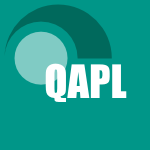 QAPL-2005-AghaMS06 #named #object-oriented #probability #specification
QAPL-2005-AghaMS06 #named #object-oriented #probability #specification- PMaude: Rewrite-based Specification Language for Probabilistic Object Systems (GAA, JM, KS), pp. 213–239.
 GPCE-2006-BarronC #domain-specific language #named #pervasive
GPCE-2006-BarronC #domain-specific language #named #pervasive- YABS: a domain-specific language for pervasive computing based on stigmergy (PB, VC), pp. 285–294.
 GPCE-2006-LeavensABBCFHJMJSSS #roadmap #verification
GPCE-2006-LeavensABBCFHJMJSSS #roadmap #verification- Roadmap for enhanced languages and methods to aid verification (GTL, JRA, DSB, MJB, AC, KF, ECRH, CBJ, DM, SLPJ, MS, DRS, AS), pp. 221–236.
 GPCE-2006-Riehl #tool support
GPCE-2006-Riehl #tool support- Assimilating MetaBorg: : embedding language tools in languages (JR), pp. 21–28.
 GPCE-2006-VieraP #analysis #multi
GPCE-2006-VieraP #analysis #multi- A multi-stage language with intensional analysis (MV, AP), pp. 11–20.
 PPDP-2006-Volanschi #compilation #confluence #named
PPDP-2006-Volanschi #compilation #confluence #named- Condate: a proto-language at the confluence between checking and compiling (ENV), pp. 225–236.
 PADL-2006-Volder #declarative #named
PADL-2006-Volder #declarative #named- JQuery: A Generic Code Browser with a Declarative Configuration Language (KDV), pp. 88–102.
 POPL-2006-Dam #decidability #proving
POPL-2006-Dam #decidability #proving- Decidability and proof systems for language-based noninterference relations (MD), pp. 67–78.
 POPL-2006-FisherMW
POPL-2006-FisherMW- The next 700 data description languages (KF, YM, DW), pp. 2–15.
 POPL-2006-KimYC #multi #polymorphism #type system
POPL-2006-KimYC #multi #polymorphism #type system- A polymorphic modal type system for lisp-like multi-staged languages (ISK, KY, CC), pp. 257–268.
 POPL-2006-Odersky #component #empirical #question #scala
POPL-2006-Odersky #component #empirical #question #scala- The Scala experiment: can we provide better language support for component systems? (MO), pp. 166–167.
 POPL-2006-Sweeney #developer #game studies #perspective #programming language
POPL-2006-Sweeney #developer #game studies #perspective #programming language- The next mainstream programming language: a game developer’s perspective (TS), p. 269.
 POPL-2006-VaziriTD #constraints #object-oriented
POPL-2006-VaziriTD #constraints #object-oriented- Associating synchronization constraints with data in an object-oriented language (MV, FT, JD), pp. 334–345.
 RE-2006-ChantreeNRW #identification #natural language #requirements
RE-2006-ChantreeNRW #identification #natural language #requirements- Identifying Nocuous Ambiguities in Natural Language Requirements (FC, BN, ANDR, AW), pp. 56–65.
 RE-2006-Wasson #case study #requirements
RE-2006-Wasson #case study #requirements- A Case Study in Systematic Improvement of Language for Requirements (KSW), pp. 6–15.
 SAC-2006-ArtemenkoMSW #documentation #evaluation #identification #multi
SAC-2006-ArtemenkoMSW #documentation #evaluation #identification #multi- Evaluation of a language identification system for mono- and multilingual text documents (OA, TM, MS, CWH), pp. 859–860.
 SAC-2006-BaldoniBT #java #named #object-oriented #programming language
SAC-2006-BaldoniBT #java #named #object-oriented #programming language- powerJava: ontologically founded roles in object oriented programming languages (MB, GB, LWNvdT), pp. 1414–1418.
 SAC-2006-BaloghV #framework #model transformation
SAC-2006-BaloghV #framework #model transformation- Advanced model transformation language constructs in the VIATRA2 framework (AB, DV), pp. 1280–1287.
 SAC-2006-ColomboPR #architecture #formal method #modelling #realtime #uml
SAC-2006-ColomboPR #architecture #formal method #modelling #realtime #uml- A UML 2-compatible language and tool for formal modeling real-time system architectures (PC, MP, MR), pp. 1785–1790.
 SAC-2006-DelavalR #domain-specific language #generative #synthesis
SAC-2006-DelavalR #domain-specific language #generative #synthesis- A domain-specific language for task handlers generation, applying discrete controller synthesis (GD, ÉR), pp. 901–905.
 SAC-2006-FabryD #aspect-oriented #kernel #named #transaction
SAC-2006-FabryD #aspect-oriented #kernel #named #transaction- KALA: Kernel Aspect language for advanced transactions (JF, TD), pp. 1615–1620.
 SAC-2006-GiegerichS #challenge #compilation #domain-specific language #programming
SAC-2006-GiegerichS #challenge #compilation #domain-specific language #programming- Challenges in the compilation of a domain specific language for dynamic programming (RG, PS), pp. 1603–1609.
 SAC-2006-KurtevBJ #atl #composition #evaluation #model transformation #rule-based
SAC-2006-KurtevBJ #atl #composition #evaluation #model transformation #rule-based- Evaluation of rule-based modularization in model transformation languages illustrated with ATL (IK, KvdB, FJ), pp. 1202–1209.
 SAC-2006-LagorioZ #java
SAC-2006-LagorioZ #java- Introducing safe unknown types in Java-like languages (GL, EZ), pp. 1429–1434.
 SAC-2006-LejdforsO #embedded #generative #gpu #implementation
SAC-2006-LejdforsO #embedded #generative #gpu #implementation- Implementing an embedded GPU language by combining translation and generation (CL, LO), pp. 1610–1614.
 SAC-2006-ListK #concept #evaluation #modelling #process
SAC-2006-ListK #concept #evaluation #modelling #process- An evaluation of conceptual business process modelling languages (BL, BK), pp. 1532–1539.
 SAC-2006-Savoy
SAC-2006-Savoy- Light stemming approaches for the French, Portuguese, German and Hungarian languages (JS), pp. 1031–1035.
 SAC-2006-Tratt #model transformation
SAC-2006-Tratt #model transformation- The MT model transformation language (LT), pp. 1296–1303.
 SAC-2006-Wang #case study #domain-specific language #modelling
SAC-2006-Wang #case study #domain-specific language #modelling- Modeling and analyzing applications with domain-specific languages by reflective rewriting: a case study (BYW), pp. 1773–1778.
 ICSE-2006-Dong #modelling #semantics #specification #web
ICSE-2006-Dong #modelling #semantics #specification #web- From semantic web to expressive software specifications: a modeling languages spectrum (JSD), pp. 1063–1064.
 ICSE-2006-HuangS #aspectj
ICSE-2006-HuangS #aspectj- Easy language extension with meta-aspectJ (SSH, YS), pp. 865–868.
 ICSE-2006-Liu #integration #specification #visual notation
ICSE-2006-Liu #integration #specification #visual notation- Visual languages for event integration specification (NL), pp. 969–972.
 ICSE-2006-VerbaereEM #named #refactoring #scripting language
ICSE-2006-VerbaereEM #named #refactoring #scripting language- JunGL: a scripting language for refactoring (MV, RE, OdM), pp. 172–181.
 LDTA-J-2004-BegelG #algorithm #ambiguity #named #programming language
LDTA-J-2004-BegelG #algorithm #ambiguity #named #programming language- XGLR — an algorithm for ambiguity in programming languages (AB, SLG), pp. 211–227.
 LDTA-J-2004-Cordy #model transformation #txl
LDTA-J-2004-Cordy #model transformation #txl- The TXL source transformation language (JRC), pp. 190–210.
 LDTA-2006-JuergensP #tool support
LDTA-2006-JuergensP #tool support- The Language Evolver Lever — Tool Demonstration — (EJ, MP), pp. 55–60.
 LDTA-2006-SierraF #agile #attribute grammar #framework #prolog #prototype
LDTA-2006-SierraF #agile #attribute grammar #framework #prolog #prototype- A Prolog Framework for the Rapid Prototyping of Language Processors with Attribute Grammars (JLS, AFV), pp. 19–36.
 LDTA-2006-ZengME #data flow #domain-specific language #generative
LDTA-2006-ZengME #data flow #domain-specific language #generative- A Domain-Specific Language for Generating Dataflow Analyzers (JZ, CM, SAE), pp. 103–119.
 CC-2006-Necula #dependent type #low level #type system #using
CC-2006-Necula #dependent type #low level #type system #using- Using Dependent Types to Port Type Systems to Low-Level Languages (GCN), p. 1.
 ISMM-2006-Corry #java #stack
ISMM-2006-Corry #java #stack- Optimistic stack allocation for java-like languages (EC), pp. 162–173.
 OSDI-2006-ZhouCABEHNB #named #using
OSDI-2006-ZhouCABEHNB #named #using- SafeDrive: Safe and Recoverable Extensions Using Language-Based Techniques (FZ, JC, ZRA, IB, RE, MH, GCN, EAB), pp. 45–60.
 CAV-2006-AlurCM
CAV-2006-AlurCM- Languages of Nested Trees (RA, SC, PM), pp. 329–342.
 CSL-2006-Srba #automaton #bisimulation #equivalence #simulation
CSL-2006-Srba #automaton #bisimulation #equivalence #simulation- Visibly Pushdown Automata: From Language Equivalence to Simulation and Bisimulation (JS), pp. 89–103.
 ICLP-2006-GrellSS #biology #modelling #network #programming #set
ICLP-2006-GrellSS #biology #modelling #network #programming #set- Modelling Biological Networks by Action Languages Via Answer Set Programming (SG, TS, JS), pp. 285–299.
 ICLP-2006-OrtizV #combinator #logic #natural language #using
ICLP-2006-OrtizV #combinator #logic #natural language #using- Natural Language Processing Using Lexical and Logical Combinators (JFO, JV), pp. 444–446.
 ICLP-2006-Phan #logic programming #memory management #programming language
ICLP-2006-Phan #logic programming #memory management #programming language- Static Memory Management for Logic Programming Languages (QP), pp. 465–466.
 ICLP-2006-QuintanoR #database #framework #logic programming #natural language #query #using
ICLP-2006-QuintanoR #database #framework #logic programming #natural language #query #using- Using a Logic Programming Framework to Control Database Query Dialogues in Natural Language (LQ, IPR), pp. 406–420.
 ICLP-2006-SilvaC #compilation #design #implementation #logic programming #optimisation #programming language
ICLP-2006-SilvaC #compilation #design #implementation #logic programming #optimisation #programming language- The Design and Implementation of the YAP Compiler: An Optimizing Compiler for Logic Programming Languages (AFdS, VSC), pp. 461–462.
 ICLP-2006-UedaKHM #declarative
ICLP-2006-UedaKHM #declarative- LMNtal as a Unifying Declarative Language: Live Demonstration (KU, NK, KH, KM), pp. 457–458.
 IJCAR-2006-GelderS #automation #generative #higher-order #logic #parsing
IJCAR-2006-GelderS #automation #generative #higher-order #logic #parsing- Extending the TPTP Language to Higher-Order Logic with Automated Parser Generation (AVG, GS), pp. 156–161.
 IJCAR-2006-SutcliffeSCG #finite #using
IJCAR-2006-SutcliffeSCG #finite #using- Using the TPTP Language for Writing Derivations and Finite Interpretations (GS, SS, KC, AVG), pp. 67–81.
 ISSTA-2006-ZhangKPWJMZ #analysis
ISSTA-2006-ZhangKPWJMZ #analysis- The case for analysis preserving language transformation (XZ, LK, MP, SW, TJ, GM, LZ), pp. 191–202.
 RTA-2006-GieslSST #analysis #automation #haskell #programming language #term rewriting #termination
RTA-2006-GieslSST #analysis #automation #haskell #programming language #term rewriting #termination- Automated Termination Analysis for Haskell: From Term Rewriting to Programming Languages (JG, SS, PSK, RT), pp. 297–312.
 TestCom-2006-RosiereJP #testing
TestCom-2006-RosiereJP #testing- LaTe, a Non-fully Deterministic Testing Language (EdR, CJ, BP), pp. 71–86.
 WICSA-2005-WoodsH #architecture
WICSA-2005-WoodsH #architecture- Architecture Description Languages in Practice Session Report (EW, RH), pp. 243–246.
 ASE-2005-LiuGH #visual notation #web #web service
ASE-2005-LiuGH #visual notation #web #web service- A visual language and environment for composing web services (NL, JCG, JGH), pp. 321–324.
 ASE-2005-WuG #automation #domain-specific language #generative #testing #tool support
ASE-2005-WuG #automation #domain-specific language #generative #testing #tool support- Automated generation of testing tools for domain-specific languages (HW, JG), pp. 436–439.
 DATE-2005-CheongL #embedded #named
DATE-2005-CheongL #embedded #named- galsC: A Language for Event-Driven Embedded Systems (EC, JL), pp. 1050–1055.
 DATE-2005-Edwards #challenge #hardware #synthesis
DATE-2005-Edwards #challenge #hardware #synthesis- The Challenges of Hardware Synthesis from C-Like Languages (SAE), pp. 66–67.
 DATE-2005-MishchenkoBJVY #equation #performance #using
DATE-2005-MishchenkoBJVY #equation #performance #using- Efficient Solution of Language Equations Using Partitioned Representations (AM, RKB, JHRJ, TV, NY), pp. 418–423.
 HT-2005-Hauber #hypermedia #navigation #towards
HT-2005-Hauber #hypermedia #navigation #towards- Towards a hypertext navigation language (RH), pp. 280–281.
 ICDAR-2005-BertolamiB #integration #multi #recognition
ICDAR-2005-BertolamiB #integration #multi #recognition- Multiple Handwritten Text Line Recognition Systems Derived from Specific Integration of a Language Model (RB, HB), pp. 521–527.
 ICDAR-2005-CostagliolaDR #diagrams #sketching
ICDAR-2005-CostagliolaDR #diagrams #sketching- Sketch Grammars: A Formalism for Describing and Recognizing Diagrammatic Sketch Languages (GC, VD, MR), pp. 1226–1231.
 ICDAR-2005-GarainD #approach #documentation
ICDAR-2005-GarainD #approach #documentation- An Approach for Stemming in Symbolically Compressed Indian Language Imaged Documents (UG, AKD), pp. 1080–1084.
 ICDAR-2005-KeyesSW #modelling #recognition #statistics #using #visual notation
ICDAR-2005-KeyesSW #modelling #recognition #statistics #using #visual notation- Graphical Object Recognition using Statistical Language Models (LK, AO, ACW), pp. 1095–1099.
 ICDAR-2005-LiuCL #identification #image #machine learning #using
ICDAR-2005-LiuCL #identification #image #machine learning #using- Language Identification of Character Images Using Machine Learning Techniques (YHL, FC, CCL), pp. 630–634.
 ICDAR-2005-QuiniouAC #modelling #online #recognition #statistics
ICDAR-2005-QuiniouAC #modelling #online #recognition #statistics- Statistical Language Models for On-line Handwritten Sentence Recognition (SQ, ÉA, SC), pp. 516–520.
 ICDAR-2005-SternbyF #adaptation #graph #independence #online #recognition
ICDAR-2005-SternbyF #adaptation #graph #independence #online #recognition- The Recognition Graph — Language Independent Adaptable On-line Cursive Script Recognition (JS, CF), pp. 14–18.
 ICDAR-2005-ZanibbiBC05a #recognition
ICDAR-2005-ZanibbiBC05a #recognition- The Recognition Strategy Language (RZ, DB, JRC), pp. 565–569.
 PODS-2005-Koch #complexity #functional #on the #query #recursion #xquery
PODS-2005-Koch #complexity #functional #on the #query #recursion #xquery- On the complexity of nonrecursive XQuery and functional query languages on complex values (CK), pp. 84–97.
 SIGMOD-2005-BragaCCR #learning #named #query #visual notation #xml
SIGMOD-2005-BragaCCR #learning #named #query #visual notation #xml- XQBE: a visual environment for learning XML query languages (DB, AC, SC, AR), pp. 903–905.
 SIGMOD-2005-LiYJ #interactive #interface #named #natural language #query #xml
SIGMOD-2005-LiYJ #interactive #interface #named #natural language #query #xml- NaLIX: an interactive natural language interface for querying XML (YL, HY, HVJ), pp. 900–902.
 VLDB-2005-MeierWAS #classification #fuzzy #query #using
VLDB-2005-MeierWAS #classification #fuzzy #query #using- Using a Fuzzy Classification Query Language for Customer Relationship Management (AM, NW, MA, MS), pp. 1089–1096.
 ITiCSE-2005-GellerS #c# #dot-net
ITiCSE-2005-GellerS #c# #dot-net- Traditional and more “exotic” .NET languages: VB .NET, J#, C# and SML .NET (VG, CS), p. 406.
 ITiCSE-2005-HoodH #concept #education #programming #using
ITiCSE-2005-HoodH #concept #education #programming #using- Teaching programming and language concepts using LEGOs (CSH, DJH), pp. 19–23.
 ITiCSE-2005-Kumar05a #programming language
ITiCSE-2005-Kumar05a #programming language- Projects in the programming languages course (ANK), p. 395.
 ITiCSE-2005-Velazquez-Iturbide #programming language
ITiCSE-2005-Velazquez-Iturbide #programming language- A programming languages course for freshmen (JÁVI), pp. 271–275.
 ITiCSE-2005-WermelingerD #automaton #formal method #prolog #tool support
ITiCSE-2005-WermelingerD #automaton #formal method #prolog #tool support- A prolog toolkit for formal languages and automata (MW, AMD), pp. 330–334.
 WRLA-2004-CervesatoS05 #dependent type #logic #representation #specification
WRLA-2004-CervesatoS05 #dependent type #logic #representation #specification- Representing the MSR Cryptoprotocol Specification Language in an Extension of Rewriting Logic with Dependent Types (IC, MOS), pp. 183–207.
 WRLA-2004-Marti-OlietMV05 #maude #towards
WRLA-2004-Marti-OlietMV05 #maude #towards- Towards a Strategy Language for Maude (NMO, JM, AV), pp. 417–441.
 ESOP-2005-JeffreyR #java #semantics
ESOP-2005-JeffreyR #java #semantics- Java Jr: Fully Abstract Trace Semantics for a Core Java Language (AJ, JR), pp. 423–438.
 ESOP-2005-TseZ #classification #design
ESOP-2005-TseZ #classification #design- A Design for a Security-Typed Language with Certificate-Based Declassification (ST, SZ), pp. 279–294.
 ESOP-2005-TsuikiS #functional
ESOP-2005-TsuikiS #functional- Streams with a Bottom in Functional Languages (HT, KS), pp. 201–216.
 FoSSaCS-2005-AehligMO #safety #strict #string
FoSSaCS-2005-AehligMO #safety #strict #string- Safety Is not a Restriction at Level 2 for String Languages (KA, JGdM, CHLO), pp. 490–504.
 FoSSaCS-2005-FocardiRS #calculus #process #security
FoSSaCS-2005-FocardiRS #calculus #process #security- Bridging Language-Based and Process Calculi Security (RF, SR, AS), pp. 299–315.
 TACAS-2005-VardhanSVA #using #verification
TACAS-2005-VardhanSVA #using #verification- Using Language Inference to Verify ω-Regular Properties (AV, KS, MV, GA), pp. 45–60.
 CSMR-2005-Al-EkramK #analysis #framework #representation #xml
CSMR-2005-Al-EkramK #analysis #framework #representation #xml- An XML-Based Framework for Language Neutral Program Representation and Generic Analysis (RAE, KK), pp. 42–51.
 CSMR-2005-CostagliolaLDGR #design pattern #parsing #visual notation
CSMR-2005-CostagliolaLDGR #design pattern #parsing #visual notation- Design Pattern Recovery by Visual Language Parsing (GC, ADL, VD, CG, MR), pp. 102–111.
 MSR-2005-HindleG #formal method #named #query #repository
MSR-2005-HindleG #formal method #named #query #repository- SCQL: a formal model and a query language for source control repositories (AH, DMG), pp. 6–10.
 PASTE-2005-PrivatD #compilation #object-oriented #performance #static analysis
PASTE-2005-PrivatD #compilation #object-oriented #performance #static analysis- Link-time static analysis for efficient separate compilation of object-oriented languages (JP, RD), pp. 20–27.
 SCAM-2005-BermudoKH #assembly #control flow #graph #re-engineering #source code
SCAM-2005-BermudoKH #assembly #control flow #graph #re-engineering #source code- Control Flow Graph Reconstruction for Assembly Language Programs with Delayed Instructions (NB, AK, RNH), pp. 107–118.
 WCRE-2005-CaretteC #assembly #legacy
WCRE-2005-CaretteC #assembly #legacy- Symbolic Interpretation of Legacy Assembly Language (JC, PKC), pp. 23–32.
 WCRE-2005-MoiseW #dependence #representation
WCRE-2005-MoiseW #dependence #representation- Extracting and Representing Cross-Language Dependencies in Diverse Software Systems (DLM, KW), pp. 209–218.
 WCRE-2005-SpoonS #higher-order #navigation #scalability #semantics
WCRE-2005-SpoonS #higher-order #navigation #scalability #semantics- Semantic Navigation of Large Code Bases in Higher-Order, Dynamically Typed Languages (SAS, OS), pp. 219–228.
 PLDI-2005-FisherG #ad hoc #domain-specific language #named
PLDI-2005-FisherG #ad hoc #domain-specific language #named- PADS: a domain-specific language for processing ad hoc data (KF, RG), pp. 295–304.
 PLDI-2005-KrishnaswamiA #encapsulation #higher-order
PLDI-2005-KrishnaswamiA #encapsulation #higher-order- Permission-based ownership: encapsulating state in higher-order typed languages (NRK, JA), pp. 96–106.
 PLDI-2005-SiekL #programming
PLDI-2005-SiekL #programming- Essential language support for generic programming (JGS, AL), pp. 73–84.
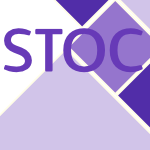 STOC-2005-BojanczykC #automaton #regular expression
STOC-2005-BojanczykC #automaton #regular expression- Tree-walking automata do not recognize all regular languages (MB, TC), pp. 234–243.
 CIAA-J-2004-BordihnHK05 #context-free grammar #problem #subclass
CIAA-J-2004-BordihnHK05 #context-free grammar #problem #subclass- Unsolvability levels of operation problems for subclasses of context-free languages (HB, MH, MK), pp. 423–440.
 CIAA-J-2004-Yli-Jyra05 #approximate #dependence #regular expression
CIAA-J-2004-Yli-Jyra05 #approximate #dependence #regular expression- Approximating dependency grammars through intersection of star-free regular languages (AYJ), pp. 565–579.
 DLT-J-2004-DassowH05 #problem #product line
DLT-J-2004-DassowH05 #problem #product line- Language families defined by a ciliate bio-operation: hierarchies and decision problems (JD, MH), pp. 645–662.
 DLT-J-2004-Staiger05 #infinity
DLT-J-2004-Staiger05 #infinity- Infinite Iterated Function Systems in Cantor Space and the Hausdorff Measure of ω-Power Languages (LS), pp. 787–802.
 CIAA-2005-Freivalds #automaton #finite #quantum
CIAA-2005-Freivalds #automaton #finite #quantum- Languages Recognizable by Quantum Finite Automata (RF), pp. 1–14.
 CIAA-2005-Sakarovitch #automaton
CIAA-2005-Sakarovitch #automaton- The Language, the Expression, and the (Small) Automaton (JS), pp. 15–30.
 DLT-2005-AfoninH #problem #regular expression #set
DLT-2005-AfoninH #problem #regular expression #set- Membership and Finiteness Problems for Rational Sets of Regular Languages (SA, EH), pp. 88–99.
 DLT-2005-BesC #linear #order #theorem #word
DLT-2005-BesC #linear #order #theorem #word- A Kleene Theorem for Languages of Words Indexed by Linear Orderings (AB, OC), pp. 158–167.
 DLT-2005-EpifanioGM #approximate
DLT-2005-EpifanioGM #approximate- Languages with Mismatches and an Application to Approximate Indexing (CE, AG, FM), pp. 224–235.
 DLT-2005-GruberHKK #automaton #on the
DLT-2005-GruberHKK #automaton #on the- On Timed Automata with Discrete Time — Structural and Language Theoretical Characterization (HG, MH, AK, BK), pp. 272–283.
 DLT-2005-KariKST #on the #word
DLT-2005-KariKST #on the #word- On Hairpin-Free Words and Languages (LK, SK, PS, GT), pp. 296–307.
 DLT-2005-Kortelainen #generative #polynomial #recursion
DLT-2005-Kortelainen #generative #polynomial #recursion- Polynomial Generators of Recursively Enumerable Languages (JK), pp. 320–326.
 DLT-2005-Kunc #on the #set
DLT-2005-Kunc #on the #set- On Language Inequalities XK subset of LX (MK), pp. 327–337.
 DLT-2005-Massazza #ambiguity #problem
DLT-2005-Massazza #ambiguity #problem- The Inclusion Problem for Unambiguous Rational Trace Languages (PM), pp. 350–361.
 DLT-2005-Pribavkina #on the #word
DLT-2005-Pribavkina #on the #word- On Some Properties of the Language of 2-Collapsing Words (EVP), pp. 374–384.
 DLT-2005-Straubing #regular expression
DLT-2005-Straubing #regular expression- Inexpressibility Results for Regular Languages in Nonregular Settings (HS), pp. 69–77.
 ICALP-2005-AlurKMV #automaton
ICALP-2005-AlurKMV #automaton- Congruences for Visibly Pushdown Languages (RA, VK, PM, MV), pp. 1102–1114.
 ICALP-2005-BeaudryLT #regular expression
ICALP-2005-BeaudryLT #regular expression- Groupoids That Recognize Only Regular Languages (MB, FL, DT), pp. 421–433.
 FM-2005-KimBC #approach #formal method #modelling #towards
FM-2005-KimBC #approach #formal method #modelling #towards- An MDA Approach Towards Integrating Formal and Informal Modeling Languages (SKK, DB, DAC), pp. 448–464.
 IFM-2005-BodeveixFLM #domain-specific language #formal method
IFM-2005-BodeveixFLM #domain-specific language #formal method- Formal Methods Meet Domain Specific Languages (JPB, MF, JLL, GM), pp. 187–206.
 ICFP-2005-DantasWWW #aspect-oriented #functional #named #polymorphism #programming language
ICFP-2005-DantasWWW #aspect-oriented #functional #named #polymorphism #programming language- PolyAML: a polymorphic aspect-oriented functional programming language (DSD, DW, GW, SW), pp. 306–319.
 ICFP-2005-Harper #programming language
ICFP-2005-Harper #programming language- Mechanizing the meta-theory of programming languages (RH), p. 240.
 ICFP-2005-MasuharaTY #aspect-oriented #functional #ml
ICFP-2005-MasuharaTY #aspect-oriented #functional #ml- Aspectual Caml: an aspect-oriented functional language (HM, HT, AY), pp. 320–330.
 ICFP-2005-RamseyFG
ICFP-2005-RamseyFG- An expressive language of signatures (NR, KF, PG), pp. 27–40.
 ICFP-2005-SewellLWNAHV #design #distributed #named #programming language
ICFP-2005-SewellLWNAHV #design #distributed #named #programming language- Acute: high-level programming language design for distributed computation (PS, JJL, KW, FZN, MAW, PH, VV), pp. 15–26.
 ICFP-2005-WestbrookSW #approach #imperative #programming
ICFP-2005-WestbrookSW #approach #imperative #programming- A language-based approach to functionally correct imperative programming (EMW, AS, IW), pp. 268–279.
 CHI-2005-TeeMFMMPF #visual notation
CHI-2005-TeeMFMMPF #visual notation- A visual recipe book for persons with language impairments (KT, KM, LF, EM, JM, BP, SF), pp. 501–510.
 EDOC-2005-GovernatoriM #contract #domain-specific language
EDOC-2005-GovernatoriM #contract #domain-specific language- Dealing with contract violations: formalism and domain specific language (GG, ZM), pp. 46–57.
 ICEIS-v1-2005-RisheACVGHW #database #semantics #xml
ICEIS-v1-2005-RisheACVGHW #database #semantics #xml- XML-Based Semantic Database Definition Language (NR, MA, MC, DV, SG, DH, OW), pp. 197–202.
 ICEIS-v2-2005-Celikel #approach #encryption #identification
ICEIS-v2-2005-Celikel #approach #encryption #identification- A Cryptographic Approach to Language Identification: PPM (EC), pp. 213–219.
 ICEIS-v2-2005-LinhalisM #component #execution #imperative #natural language
ICEIS-v2-2005-LinhalisM #component #execution #imperative #natural language- Execution of Imperative Natural Language Requisitions Based on UNL Interlingua and Software Components (FL, DdAM), pp. 254–259.
 ICEIS-v2-2005-Roubtsova #specification #workflow
ICEIS-v2-2005-Roubtsova #specification #workflow- A Property Specification Language for Workflow Diagnostics (EER), pp. 297–302.
 CIKM-2005-BaiSBNC #information retrieval #modelling #query #using
CIKM-2005-BaiSBNC #information retrieval #modelling #query #using- Query expansion using term relationships in language models for information retrieval (JB, DS, PB, JYN, GC), pp. 688–695.
 CIKM-2005-Kamps #modelling
CIKM-2005-Kamps #modelling- Web-centric language models (JK), pp. 307–308.
 CIKM-2005-LiuLYMFG #database #intranet #natural language #query
CIKM-2005-LiuLYMFG #database #intranet #natural language #query- Database selection in intranet mediators for natural language queries (FL, SL, CTY, WM, OF, DAG), pp. 229–230.
 CIKM-2005-MasonL #complexity #named #query #relational #sql
CIKM-2005-MasonL #complexity #named #query #relational #sql- INFER: a relational query language without the complexity of SQL (TM, RL), pp. 241–242.
 CIKM-2005-PuM #equation #functional #query #specification
CIKM-2005-PuM #equation #functional #query #specification- Typed functional query languages with equational specifications (KQP, AOM), pp. 233–234.
 CIKM-2005-TaoWMZ #documentation #estimation
CIKM-2005-TaoWMZ #documentation #estimation- Accurate language model estimation with document expansion (TT, XW, QM, CZ), pp. 273–274.
 ICML-2005-WangWGSC #markov #modelling #random #semantics
ICML-2005-WangWGSC #markov #modelling #random #semantics- Exploiting syntactic, semantic and lexical regularities in language modeling via directed Markov random fields (SW, SW, RG, DS, LC), pp. 948–955.
 KDD-2005-KoppelSZ #fault #mining
KDD-2005-KoppelSZ #fault #mining- Determining an author’s native language by mining a text for errors (MK, JS, KZ), pp. 624–628.
 KDD-2005-TaoZ #corpus #integration #mining
KDD-2005-TaoZ #corpus #integration #mining- Mining comparable bilingual text corpora for cross-language information integration (TT, CZ), pp. 691–696.
 SEKE-2005-AyalaCCGHSFMQ #analysis #comparative #modelling
SEKE-2005-AyalaCCGHSFMQ #analysis #comparative #modelling- A Comparative Analysis of i*-Based Agent-Oriented Modeling Languages (CPA, CC, JPC, GG, MH, GS, XF, EM, CQ), pp. 43–50.
 SEKE-2005-ChangL #compilation #data-driven
SEKE-2005-ChangL #compilation #data-driven- Compiler Techniques for Data Driven Languages with Superlinear Speed-up (LHC, ELL), pp. 543–549.
 SEKE-2005-MhiriMG #information management #named #ontology #specification #towards
SEKE-2005-MhiriMG #information management #named #ontology #specification #towards- UMLOnto: Towards a Language for the Specification of Information Systems’ Ontologies (MBAM, AM, FG), pp. 743–746.
 SIGIR-2005-AzzopardiGC #probability
SIGIR-2005-AzzopardiGC #probability- Probabilistic hyperspace analogue to language (LA, MG, MC), pp. 575–576.
 SIGIR-2005-BrisaboaFNP #adaptation #natural language
SIGIR-2005-BrisaboaFNP #adaptation #natural language- Efficiently decodable and searchable natural language adaptive compression (NRB, AF, GN, JRP), pp. 234–241.
 SIGIR-2005-GaoNB #modelling #word
SIGIR-2005-GaoNB #modelling #word- Integrating word relationships into language models (GC, JYN, JB), pp. 298–305.
 SIGIR-2005-Grivolla #approach #automation #documentation #natural language #query #retrieval #using
SIGIR-2005-Grivolla #approach #automation #documentation #natural language #query #retrieval #using- Using Oracle for natural language document retrieval an automatic query reformulation approach (JG), pp. 605–606.
 SIGIR-2005-HoenkampD #semantics
SIGIR-2005-HoenkampD #semantics- Evaluating semantic indexing techniques through cross-language fingerprinting (EH, SvD), pp. 609–610.
 SIGIR-2005-KurlandL #modelling #rank #ranking #using
SIGIR-2005-KurlandL #modelling #rank #ranking #using- PageRank without hyperlinks: structural re-ranking using links induced by language models (OK, LL), pp. 306–313.
 SIGIR-2005-KurlandLD #clustering #modelling #pseudo #using
SIGIR-2005-KurlandLD #clustering #modelling #pseudo #using- Better than the real thing?: iterative pseudo-query processing using cluster-based language models (OK, LL, CD), pp. 19–26.
 SIGIR-2005-Leidner #natural language
SIGIR-2005-Leidner #natural language- A wireless natural language search engine (JLL), p. 677.
 SIGIR-2005-LiuJC #information retrieval
SIGIR-2005-LiuJC #information retrieval- A maximum coherence model for dictionary-based cross-language information retrieval (YL, RJ, JYC), pp. 536–543.
 SIGIR-2005-MarkoSMH #information retrieval
SIGIR-2005-MarkoSMH #information retrieval- Bootstrapping dictionaries for cross-language information retrieval (KGM, SS, OM, UH), pp. 528–535.
 SIGIR-2005-MonzD #ambiguity #information retrieval
SIGIR-2005-MonzD #ambiguity #information retrieval- Iterative translation disambiguation for cross-language information retrieval (CM, BJD), pp. 520–527.
 SIGIR-2005-OlssonOH #classification
SIGIR-2005-OlssonOH #classification- Cross-language text classification (JSO, DWO, JH), pp. 645–646.
 ECMDA-FA-2005-ChanP #approach #contract #design #metamodelling
ECMDA-FA-2005-ChanP #approach #contract #design #metamodelling- Designing a Domain-Specific Contract Language: A Metamodelling Approach (ZEC, RFP), pp. 175–189.
 ECMDA-FA-2005-ChiversP #bidirectional #named
ECMDA-FA-2005-ChiversP #bidirectional #named- XRound: Bidirectional Transformations and Unifications Via a Reversible Template Language (HC, RFP), pp. 205–219.
 ECMDA-FA-2005-Kleppe #towards
ECMDA-FA-2005-Kleppe #towards- Towards General Purpose, High Level, Software Languages (AK), pp. 220–238.
 MoDELS-2005-EstublierVI #domain-specific language #re-engineering
MoDELS-2005-EstublierVI #domain-specific language #re-engineering- Composing Domain-Specific Languages for Wide-Scope Software Engineering Applications (JE, GV, ADI), pp. 69–83.
 MoDELS-2005-GuizzardiPS #approach #modelling #ontology
MoDELS-2005-GuizzardiPS #approach #modelling #ontology- An Ontology-Based Approach for Evaluating the Domain Appropriateness and Comprehensibility Appropriateness of Modeling Languages (GG, LFP, MvS), pp. 691–705.
 MoDELS-2005-MullerFJ #execution #metalanguage #object-oriented #weaving
MoDELS-2005-MullerFJ #execution #metalanguage #object-oriented #weaving- Weaving Executability into Object-Oriented Meta-languages (PAM, FF, JMJ), pp. 264–278.
 MoDELS-2005-VokacG #case study #challenge #domain-specific language #experience #multi #tool support #using
MoDELS-2005-VokacG #case study #challenge #domain-specific language #experience #multi #tool support #using- Using a Domain-Specific Language and Custom Tools to Model a Multi-tier Service-Oriented Application — Experiences and Challenges (MV, JMG), pp. 492–506.
 MoDELS-2005-EstublierVI #domain-specific language #re-engineering
MoDELS-2005-EstublierVI #domain-specific language #re-engineering- Composing Domain-Specific Languages for Wide-Scope Software Engineering Applications (JE, GV, ADI), pp. 69–83.
 MoDELS-2005-GuizzardiPS #approach #modelling #ontology
MoDELS-2005-GuizzardiPS #approach #modelling #ontology- An Ontology-Based Approach for Evaluating the Domain Appropriateness and Comprehensibility Appropriateness of Modeling Languages (GG, LFP, MvS), pp. 691–705.
 MoDELS-2005-MullerFJ #execution #metalanguage #object-oriented #weaving
MoDELS-2005-MullerFJ #execution #metalanguage #object-oriented #weaving- Weaving Executability into Object-Oriented Meta-languages (PAM, FF, JMJ), pp. 264–278.
 MoDELS-2005-VokacG #case study #challenge #domain-specific language #experience #multi #tool support #using
MoDELS-2005-VokacG #case study #challenge #domain-specific language #experience #multi #tool support #using- Using a Domain-Specific Language and Custom Tools to Model a Multi-tier Service-Oriented Application — Experiences and Challenges (MV, JMG), pp. 492–506.
 ECOOP-2005-BiermanW #object-oriented
ECOOP-2005-BiermanW #object-oriented- First-Class Relationships in an Object-Oriented Language (GMB, AW), pp. 262–286.
 ECOOP-2005-FooteJN #multi #performance
ECOOP-2005-FooteJN #multi #performance- Efficient Multimethods in a Single Dispatch Language (BF, REJ, JN), pp. 337–361.
 ECOOP-2005-SmithD #java #named
ECOOP-2005-SmithD #java #named- Chai: Traits for Java-Like Languages (CS, SD), pp. 453–478.
 OOPSLA-2005-MartinLL #fault #query #security #using
OOPSLA-2005-MartinLL #fault #query #security #using- Finding application errors and security flaws using PQL: a program query language (MCM, VBL, MSL), pp. 365–383.
 QAPL-2004-ClarkHM05 #quantifier
QAPL-2004-ClarkHM05 #quantifier- Quantified Interference for a While Language (DC, SH, PM), pp. 149–166.
 GPCE-2005-AliasB #domain-specific language #on the #re-engineering
GPCE-2005-AliasB #domain-specific language #on the #re-engineering- On Domain-Specific Languages Reengineering (CA, DB), pp. 63–77.
 GPCE-2005-LawallDMM #composition #domain-specific language
GPCE-2005-LawallDMM #composition #domain-specific language- Bossa Nova: Introducing Modularity into the Bossa Domain-Specific Language (JLL, HD, GM, AFLM), pp. 78–93.
 GPCE-2005-MossM #code generation #domain-specific language #performance
GPCE-2005-MossM #code generation #domain-specific language #performance- Efficient Code Generation for a Domain Specific Language (AM, HLM), pp. 47–62.
 GPCE-2005-SiekL #library #requirements #scalability
GPCE-2005-SiekL #library #requirements #scalability- Language Requirements for Large-Scale Generic Libraries (JGS, AL), pp. 405–421.
 GPCE-2005-TanterN #aspect-oriented #kernel #multi
GPCE-2005-TanterN #aspect-oriented #kernel #multi- A Versatile Kernel for Multi-language AOP (ÉT, JN), pp. 173–188.
 LOPSTR-2005-SimonMG #design #implementation #realtime
LOPSTR-2005-SimonMG #design #implementation #realtime- Design and Implementation of AT: A Real-Time Action Description Language (LS, AM, GG), pp. 44–60.
 PPDP-2005-LunaPS #compilation #experience #functional
PPDP-2005-LunaPS #compilation #experience #functional- Efficiently compiling a functional language on AMD64: the HiPE experience (DL, MP, KFS), pp. 176–186.
 POPL-2005-AnconaDDZ #bytecode #compilation #composition #java #polymorphism
POPL-2005-AnconaDDZ #bytecode #compilation #composition #java #polymorphism- Polymorphic bytecode: compositional compilation for Java-like languages (DA, FD, SD, EZ), pp. 26–37.
 POPL-2005-BruniMM #composition
POPL-2005-BruniMM #composition- Theoretical foundations for compensations in flow composition languages (RB, HCM, UM), pp. 209–220.
 POPL-2005-ChenT #object-oriented
POPL-2005-ChenT #object-oriented- A simple typed intermediate language for object-oriented languages (JC, DT), pp. 38–49.
 POPL-2005-ParkPT #probability
POPL-2005-ParkPT #probability- A probabilistic language based upon sampling functions (SP, FP, ST), pp. 171–182.
 RE-2005-BoydZF #empirical #natural language
RE-2005-BoydZF #empirical #natural language- Measuring the Expressiveness of a Constrained Natural Language: An Empirical Study (SB, DZ, AF), pp. 339–352.
 RE-2005-GeorgiadesAP #natural language #requirements #semantics #syntax
RE-2005-GeorgiadesAP #natural language #requirements #semantics #syntax- A Requirements Engineering Methodology Based On Natural Language Syntax and Semantics (MGG, ASA, CSP), pp. 473–474.
 SAC-2005-BravettiGLZ #e-commerce #formal method
SAC-2005-BravettiGLZ #e-commerce #formal method- Supporting e-commerce systems formalization with choreography languages (MB, CG, RL, GZ), pp. 831–835.
 SAC-2005-BryP #paradigm #web
SAC-2005-BryP #paradigm #web- Reactivity on the web: paradigms and applications of the language XChange (FB, PLP), pp. 1645–1649.
 SAC-2005-MandlW #effectiveness #evaluation #information retrieval
SAC-2005-MandlW #effectiveness #evaluation #information retrieval- The effect of named entities on effectiveness in cross-language information retrieval evaluation (TM, CWH), pp. 1059–1064.
 SAC-2005-MartinsS #identification #web
SAC-2005-MartinsS #identification #web- Language identification in web pages (BM, MJS), pp. 764–768.
 SAC-2005-RekhisB #automation #forensics #verification
SAC-2005-RekhisB #automation #forensics #verification- A formal logic-based language and an automated verification tool for computer forensic investigation (SR, NB), pp. 287–291.
 SAC-2005-WangG #approach #domain-specific language #framework #implementation #prototype #semantics
SAC-2005-WangG #approach #domain-specific language #framework #implementation #prototype #semantics- Rapidly prototyping implementation infrastructure of domain specific languages: a semantics-based approach (QW, GG), pp. 1419–1426.
 SAC-2005-WuGRM #debugging #domain-specific language #weaving
SAC-2005-WuGRM #debugging #domain-specific language #weaving- Weaving a debugging aspect into domain-specific language grammars (HW, JGG, SR, MM), pp. 1370–1374.
 GTTSE-2005-BravenboerGV #domain-specific language #stratego #using
GTTSE-2005-BravenboerGV #domain-specific language #stratego #using- MetaBorg in Action: Examples of Domain-Specific Language Embedding and Assimilation Using Stratego/XT (MB, RdG, EV), pp. 297–311.
 ICSE-2005-RajanS #design #named #object-oriented
ICSE-2005-RajanS #design #named #object-oriented- Classpects: unifying aspect- and object-oriented language design (HR, KJS), pp. 59–68.
 ATEM-2004-KarailaS05 #case study #industrial #metadata #on the #reuse #reverse engineering #visual notation
ATEM-2004-KarailaS05 #case study #industrial #metadata #on the #reuse #reverse engineering #visual notation- On the Role of Metadata in Visual Language Reuse and Reverse Engineering — An Industrial Case (MK, TS), pp. 29–41.
 ATEM-2004-Lammel05c #tool support
ATEM-2004-Lammel05c #tool support- The Amsterdam Toolkit for Language Archaeology (RL), pp. 43–55.
 LDTA-2005-CrepinsekMBJS #context-free grammar #domain-specific language
LDTA-2005-CrepinsekMBJS #context-free grammar #domain-specific language- Inferring Context-Free Grammars for Domain-Specific Languages (MC, MM, BRB, FJ, APS), pp. 99–116.
 LDTA-2005-GrigorenkoST #named #visual notation
LDTA-2005-GrigorenkoST #named #visual notation- COCOVILA — Compiler-Compiler for Visual Languages (PG, AS, ET), pp. 137–142.
 LDTA-2005-SloaneW #eclipse #education #eli #programming language #using
LDTA-2005-SloaneW #eclipse #education #eli #programming language #using- Eclipse Support for Using Eli and Teaching Programming Languages (AMS, WMW), pp. 189–194.
 LDTA-2005-Watt #design #programming #scripting language
LDTA-2005-Watt #design #programming #scripting language- The Design of Monty: a Programming/Scripting Language (DAW), pp. 5–28.
 SPLC-2005-TolvanenK #case study #domain-specific language #experience #modelling
SPLC-2005-TolvanenK #case study #domain-specific language #experience #modelling- Defining Domain-Specific Modeling Languages to Automate Product Derivation: Collected Experiences (JPT, SK), pp. 198–209.
 CC-2005-RyuR #debugging #multi #programming
CC-2005-RyuR #debugging #multi #programming- Source-Level Debugging for Multiple Languages with Modest Programming Effort (SR, NR), pp. 10–26.
 HPDC-2005-ShasharinaVSV #distributed #interactive #named
HPDC-2005-ShasharinaVSV #distributed #interactive #named- GRIDL: high-performance and distributed interactive data language (SGS, OV, PS, SV), pp. 291–292.
 PPoPP-2005-CoarfaDMCEMYC #c #evaluation #fortran #parallel
PPoPP-2005-CoarfaDMCEMYC #c #evaluation #fortran #parallel- An evaluation of global address space languages: co-array fortran and unified parallel C (CC, YD, JMMC, FC, TAEG, AM, YY, DGCM), pp. 36–47.
 PPoPP-2005-Yelick
PPoPP-2005-Yelick- Language innovations for HPCS (KAY), p. 119.
 CAV-2005-dAmorimR #monitoring #performance
CAV-2005-dAmorimR #monitoring #performance- Efficient Monitoring of ω-Languages (Md, GR), pp. 364–378.
 CAV-2005-Yavuz-KahveciBB #verification
CAV-2005-Yavuz-KahveciBB #verification- Action Language Verifier, Extended (TYK, CB, TB), pp. 413–417.
 CSL-2005-Murlak #on the
CSL-2005-Murlak #on the- On Deciding Topological Classes of Deterministic Tree Languages (FM), pp. 428–441.
 ICLP-2005-BortolussiW #concurrent #constraints #distributed #probability #programming language
ICLP-2005-BortolussiW #concurrent #constraints #distributed #probability #programming language- A Distributed and Probabilistic Concurrent Constraint Programming Language (LB, HW), pp. 143–158.
 ICLP-2005-ChristiansenD #abduction #logic programming #named #programming language #prolog
ICLP-2005-ChristiansenD #abduction #logic programming #named #programming language #prolog- HYPROLOG: A New Logic Programming Language with Assumptions and Abduction (HC, VD), pp. 159–173.
 ICLP-2005-Horrocks #logic #named #ontology #owl
ICLP-2005-Horrocks #logic #named #ontology #owl- OWL: A Description Logic Based Ontology Language (IH), pp. 1–4.
 ICLP-2005-Nogueira #information management #programming language
ICLP-2005-Nogueira #information management #programming language- A Temporal Programming Language for Heterogeneous Information Systems (VN), pp. 444–445.
 ICLP-2005-Wielemaker #implementation #prolog #query #semantics #web
ICLP-2005-Wielemaker #implementation #prolog #query #semantics #web- An Optimised Semantic Web Query Language Implementation in Prolog (JW), pp. 128–142.
 LICS-2005-AltenkirchG #functional #programming language #quantum
LICS-2005-AltenkirchG #functional #programming language #quantum- A Functional Quantum Programming Language (TA, JG), pp. 249–258.
 LICS-2005-BaierG #automaton #probability #regular expression
LICS-2005-BaierG #automaton #probability #regular expression- Recognizing ω-regular Languages with Probabilistic Automata (CB, MG), pp. 137–146.
 LICS-2005-EscardoK #programming language
LICS-2005-EscardoK #programming language- Operational Domain Theory and Topology of a Sequential Programming Language (MHE, WKH), pp. 427–436.
 LICS-2005-JiaSWG #compilation #stack
LICS-2005-JiaSWG #compilation #stack- Certifying Compilation for a Language with Stack Allocation (LJ, FS, DW, NG), pp. 407–416.
 TestCom-2005-PuderW #functional #middleware #testing
TestCom-2005-PuderW #functional #middleware #testing- Cross-Language Functional Testing for Middleware (AP, LW), pp. 56–68.
 TLCA-2005-MorrisettAF #linear #named
TLCA-2005-MorrisettAF #linear #named- L3: A Linear Language with Locations (GM, AJA, MF), pp. 293–307.
 ASE-2004-MarceauCKR #data flow #debugging
ASE-2004-MarceauCKR #data flow #debugging- Dataflow Language for Scriptable Debugging (GM, GHC, SK, SPR), pp. 218–227.
 DAC-2004-BehmLLRV #experience #generative #industrial #testing #verification
DAC-2004-BehmLLRV #experience #generative #industrial #testing #verification- Industrial experience with test generation languages for processor verification (MLB, JML, YL, MR, MV), pp. 36–40.
 DAC-2004-KulkarniBS #domain-specific language #framework
DAC-2004-KulkarniBS #domain-specific language #framework- Mapping a domain specific language to a platform FPGA (CK, GJB, GS), pp. 924–927.
 DATE-v2-2004-Singh #co-evolution #design
DATE-v2-2004-Singh #co-evolution #design- A Demonstration of Co-Design and Co-Verification in a Synchronous Language (SS), pp. 1394–1395.
 DocEng-2004-SilvaRSM #composition #concept #xml
DocEng-2004-SilvaRSM #composition #concept #xml- NCL 2.0: integrating new concepts to XML modular languages (HVOS, RFR, LFGS, DCMS), pp. 188–197.
 DocEng-2004-TroncyC
DocEng-2004-TroncyC- A reduced yet extensible audio-visual description language (RT, JC), pp. 87–89.
 HT-2004-StottsF #classification #hypermedia
HT-2004-StottsF #classification #hypermedia- Language-theoretic classification of hypermedia paths (PDS, RF), pp. 40–41.
 VLDB-2004-LawWZ #data type #database #modelling #query #sequence
VLDB-2004-LawWZ #data type #database #modelling #query #sequence- Query Languages and Data Models for Database Sequences and Data Streams (YNL, HW, CZ), pp. 492–503.
 ITiCSE-2004-ChesnevarGM #automaton #formal method #learning
ITiCSE-2004-ChesnevarGM #automaton #formal method #learning- Didactic strategies for promoting significant learning in formal languages and automata theory (CIC, MPG, AGM), pp. 7–11.
 ESOP-2004-EspanaE #functional #logic #semantics
ESOP-2004-EspanaE #functional #logic #semantics- A Memoizing Semantics for Functional Logic Languages (SE, VE), pp. 109–123.
 FASE-2004-BardohlELT #aspect-oriented #graph transformation #metamodelling #performance #visual notation
FASE-2004-BardohlELT #aspect-oriented #graph transformation #metamodelling #performance #visual notation- Integrating Meta-modelling Aspects with Graph Transformation for Efficient Visual Language Definition and Model Manipulation (RB, HE, JdL, GT), pp. 214–228.
 FoSSaCS-2004-BaillotM #polynomial #λ-calculus
FoSSaCS-2004-BaillotM #polynomial #λ-calculus- Soft λ-Calculus: A Language for Polynomial Time Computation (PB, VM), pp. 27–41.
 FoSSaCS-2004-HennessyRY #mobile #named
FoSSaCS-2004-HennessyRY #mobile #named- safeDpi: A Language for Controlling Mobile Code (MH, JR, NY), pp. 241–256.
 FoSSaCS-2004-MalerP #on the
FoSSaCS-2004-MalerP #on the- On Recognizable Timed Languages (OM, AP), pp. 348–362.
 CSMR-2004-Martin #automation #generative #program transformation #source code
CSMR-2004-Martin #automation #generative #program transformation #source code- Automated Source Code Transformations on Fourth Generation Languages (JM), pp. 214–222.
 ICSM-2004-BriandLYP #constraints #development #empirical #ocl #uml
ICSM-2004-BriandLYP #constraints #development #empirical #ocl #uml- A Controlled Experiment on the Impact of the Object Constraint Language in UML-Based Development (LCB, YL, HDY, MDP), pp. 380–389.
 PEPM-2004-BeyerCHJM #query #verification
PEPM-2004-BeyerCHJM #query #verification- Invited talk: the blast query language for software verification (DB, AC, TAH, RJ, RM), pp. 201–202.
 PEPM-2004-LawallMD #design #implementation #process #scheduling
PEPM-2004-LawallMD #design #implementation #process #scheduling- Invited application paper: language design for implementing process scheduling hierarchies (JLL, GM, HD), pp. 80–91.
 PLDI-2004-ChinCQR #object-oriented
PLDI-2004-ChinCQR #object-oriented- Region inference for an object-oriented language (WNC, FC, SQ, MCR), pp. 243–254.
 PLDI-2004-VachharajaniVA #component #modelling #reuse #specification
PLDI-2004-VachharajaniVA #component #modelling #reuse #specification- The liberty structural specification language: a high-level modeling language for component reuse (MV, NV, DIA), pp. 195–206.
 SAS-2004-BeyerCHJM #query #verification
SAS-2004-BeyerCHJM #query #verification- The Blast Query Language for Software Verification. (DB, AC, TAH, RJ, RM), pp. 2–18.
 SAS-2004-SunBN #composition #constraints #data flow #object-oriented
SAS-2004-SunBN #composition #constraints #data flow #object-oriented- Modular and Constraint-Based Information Flow Inference for an Object-Oriented Language (QS, AB, DAN), pp. 84–99.
 STOC-2004-AlurM #automaton
STOC-2004-AlurM #automaton- Visibly pushdown languages (RA, PM), pp. 202–211.
 FLOPS-2004-CaballeroR #debugging #declarative #functional #named
FLOPS-2004-CaballeroR #debugging #declarative #functional #named- DDT: a Declarative Debugging Tool for Functional-Logic Languages (RC, MRA), pp. 70–84.
 FLOPS-2004-Selinger #bibliography #programming language #quantum
FLOPS-2004-Selinger #bibliography #programming language #quantum- A Brief Survey of Quantum Programming Languages (PS), pp. 1–6.
 CIAA-2004-BordihnHK #context-free grammar #linear #problem
CIAA-2004-BordihnHK #context-free grammar #linear #problem- Some Non-semi-decidability Problems for Linear and Deterministic Context-Free Languages (HB, MH, MK), pp. 68–79.
 CIAA-2004-DelgadoM #approximate #regular expression
CIAA-2004-DelgadoM #approximate #regular expression- Approximation to the Smallest Regular Expression for a Given Regular Language (MD, JM), pp. 312–314.
 CIAA-2004-JirasekJS #complexity #regular expression
CIAA-2004-JirasekJS #complexity #regular expression- State Complexity of Concatenation and Complementation of Regular Languages (JJ, GJ, AS), pp. 178–189.
 CIAA-2004-LeeS #regular expression
CIAA-2004-LeeS #regular expression- Enumerating Regular Expressions and Their Languages (JL, JS), pp. 2–22.
 CIAA-2004-Yli-Jyra #approximate #dependence #regular expression
CIAA-2004-Yli-Jyra #approximate #dependence #regular expression- Approximating Dependency Grammars Through Intersection of Regular Languages (AYJ), pp. 281–292.
 DLT-2004-AnselmoGM #2d #regular expression
DLT-2004-AnselmoGM #2d #regular expression- Regular Expressions for Two-Dimensional Languages Over One-Letter Alphabet (MA, DG, MM), pp. 63–75.
 DLT-2004-BordihnHK #automaton #geometry
DLT-2004-BordihnHK #automaton #geometry- Input Reversals and Iterated Pushdown Automata: A New Characterization of Khabbaz Geometric Hierarchy of Languages (HB, MH, MK), pp. 102–113.
 DLT-2004-Dassow #product line
DLT-2004-Dassow #product line- A Ciliate Bio-operation and Language Families (JD), pp. 151–162.
 DLT-2004-KutribMW #context-free grammar #linear
DLT-2004-KutribMW #context-free grammar #linear- The Boolean Closure of Linear Context-Free Languages (MK, AM, DW), pp. 284–295.
 DLT-2004-Reidenbach #equivalence #on the #pattern matching #problem
DLT-2004-Reidenbach #equivalence #on the #pattern matching #problem- On the Equivalence Problem for E-pattern Languages over Small Alphabets (DR), pp. 368–380.
 DLT-2004-Staiger #on the
DLT-2004-Staiger #on the- On the Hausdorff Measure of ω-Power Languages (LS), pp. 393–405.
 DLT-2004-Truthe
DLT-2004-Truthe- A Method for Deciding the Finiteness of Deterministic Tabled Picture Languages (BT), pp. 406–417.
 ICALP-2004-Kunc
ICALP-2004-Kunc- Regular Solutions of Language Inequalities and Well Quasi-orders (MK), pp. 870–881.
 ICALP-2004-MagniezR #testing
ICALP-2004-MagniezR #testing- Property Testing of Regular Tree Languages (FM, MdR), pp. 932–944.
 IFM-2004-Bujorianu #integration #specification #using
IFM-2004-Bujorianu #integration #specification #using- Integration of Specification Languages Using Viewpoints (MCB), pp. 421–440.
 IFM-2004-DongQS #generative #specification
IFM-2004-DongQS #generative #specification- Generating MSCs from an Integrated Formal Specification Language (JSD, SQ, JS), pp. 168–186.
 IFM-2004-Melham #functional #model checking #proving #theorem proving
IFM-2004-Melham #functional #model checking #proving #theorem proving- Integrating Model Checking and Theorem Proving in a Reflective Functional Language (TFM), pp. 36–39.
 IFM-2004-PickinJ #diagrams #sequence chart #uml #using
IFM-2004-PickinJ #diagrams #sequence chart #uml #using- Using UML Sequence Diagrams as the Basis for a Formal Test Description Language (SP, JMJ), pp. 481–500.
 SEFM-2004-NaiyongJ #co-evolution #design #hardware #modelling #specification
SEFM-2004-NaiyongJ #co-evolution #design #hardware #modelling #specification- Resource Models and Pre-Compiler Specification for Hardware/Software Co-Design Language (NJ, JH), pp. 132–141.
 SFM-2004-CacciagranoC
SFM-2004-CacciagranoC- Expressiveness of Timed Events and Timed Languages (DC, FC), pp. 98–131.
 ICFP-2004-HermanM #embedded #partial evaluation #static analysis
ICFP-2004-HermanM #embedded #partial evaluation #static analysis- Improving the static analysis of embedded languages via partial evaluation (DH, PM), pp. 16–27.
 ICFP-2004-MarlowJ #higher-order #performance
ICFP-2004-MarlowJ #higher-order #performance- Making a fast curry: push/enter vs. eval/apply for higher-order languages (SM, SLPJ), pp. 4–15.
 ICFP-2004-TolmachAN #functional #implementation #logic #multi #thread #using
ICFP-2004-TolmachAN #functional #implementation #logic #multi #thread #using- Implementing functional logic languages using multiple threads and stores (APT, SA, MN), pp. 90–102.
 ICGT-2004-ClarkESW #design #metamodelling #model transformation
ICGT-2004-ClarkESW #design #metamodelling #model transformation- Transformation Language Design: A Metamodelling Foundation (TC, AE, PS, JSW), pp. 13–21.
 CSCW-2004-GergleKF #visual notation
CSCW-2004-GergleKF #visual notation- Action as language in a shared visual space (DG, REK, SRF), pp. 487–496.
 AdaEurope-2004-Nadrchal #on the fly #realtime #requirements
AdaEurope-2004-Nadrchal #on the fly #realtime #requirements- Event Language for Real-Time On-the-Fly Control According to the Initial Requirements (SPN), pp. 120–131.
 ICEIS-v1-2004-BouchouCAJL #mining #named #xml
ICEIS-v1-2004-BouchouCAJL #mining #named #xml- XRM: An XML-Based Language for Rule Mining Systems (BB, AC, MHFA, TYJ, DL), pp. 441–446.
 ICEIS-v3-2004-BragaMG #development #pattern matching #using
ICEIS-v3-2004-BragaMG #development #pattern matching #using- System Development Using a Pattern Language-Based Tool (RTVB, PCM, FSRG), pp. 155–162.
 ICEIS-v3-2004-ClarkeWD #effectiveness #representation #xml
ICEIS-v3-2004-ClarkeWD #effectiveness #representation #xml- Effective XML Representation for Spoken Language in Organisations (RJC, PCW, DD), pp. 486–494.
 ICEIS-v4-2004-VoG #information management #programming language
ICEIS-v4-2004-VoG #information management #programming language- Agent Programming Language with Incomplete Knowledge — Agentspeak(I) (DV, AG), pp. 356–363.
 ECIR-2004-CloughS #feedback #image #retrieval
ECIR-2004-CloughS #feedback #image #retrieval- Relevance Feedback for Cross Language Image Retrieval (PDC, MS), pp. 238–252.
 ECIR-2004-CloughS04a #ambiguity #information retrieval #using #word
ECIR-2004-CloughS04a #ambiguity #information retrieval #using #word- Cross-Language Information Retrieval Using EuroWordNet and Word Sense Disambiguation (PDC, MS), pp. 327–337.
 ECIR-2004-SandersonCPL #image #retrieval
ECIR-2004-SandersonCPL #image #retrieval- Measuring a Cross Language Image Retrieval System (MS, PDC, CP, WTL), pp. 353–363.
 ICPR-v1-2004-ListF #named #xml
ICPR-v1-2004-ListF #named #xml- CVML — An XML-based Computer Vision Markup Language (TL, RBF), pp. 789–792.
 ICPR-v2-2004-GutierrezRA #identification
ICPR-v2-2004-GutierrezRA #identification- Weighted Loss Functions to Make Risk-based Language Identification Fused Decisions (JG, JLR, RAO), pp. 863–866.
 ICPR-v2-2004-LiT #modelling #recognition #set
ICPR-v2-2004-LiT #modelling #recognition #set- Influence of Language Models and Candidate Set Size on Contextual Post-processing for Chinese Script Recognition (YL, CLT), pp. 537–540.
 ICPR-v2-2004-ZimmermannB #integration #optimisation #recognition #statistics
ICPR-v2-2004-ZimmermannB #integration #optimisation #recognition #statistics- Optimizing the Integration of a Statistical Language Model in HMM based O.ine Handwritten Text Recognition (MZ, HB), pp. 541–544.
 ICPR-v4-2004-FangGGC #approach #automation #novel
ICPR-v4-2004-FangGGC #approach #automation #novel- A Novel Approach to Automatically Extracting Basic Units from Chinese Sign Language (GF, XG, WG, YC), pp. 454–457.
 KR-2004-Coste-MarquisLLM #representation
KR-2004-Coste-MarquisLLM #representation- Expressive Power and Succinctness of Propositional Languages for Preference Representation (SCM, JL, PL, PM), pp. 203–212.
 SEKE-2004-Flake #concept #constraints #ocl
SEKE-2004-Flake #concept #constraints #ocl- Enhancing the Message Concept of the Object Constraint Language (SF), pp. 161–166.
 SEKE-2004-Hobbs #design pattern #specification #using
SEKE-2004-Hobbs #design pattern #specification #using- Using A Scenario Specification Language to Add Context to Design Patterns (RLH), pp. 330–335.
 SEKE-2004-LiW #education
SEKE-2004-LiW #education- An Intensional Tool Applied to French Language Educational Software (H(L, WWW), pp. 62–67.
 SIGIR-2004-AzzopardiGR #documentation #modelling
SIGIR-2004-AzzopardiGR #documentation #modelling- User biased document language modelling (LA, MG, CJvR), pp. 542–543.
 SIGIR-2004-ChengTCWLC #corpus #information retrieval #query #web
SIGIR-2004-ChengTCWLC #corpus #information retrieval #query #web- Translating unknown queries with web corpora for cross-language information retrieval (PJC, JWT, RCC, JHW, WHL, LFC), pp. 146–153.
 SIGIR-2004-Collins-ThompsonC #bibliography #information retrieval
SIGIR-2004-Collins-ThompsonC #bibliography #information retrieval- Information retrieval for language tutoring: an overview of the REAP project (KCT, JC), pp. 544–545.
 SIGIR-2004-CrestanL #natural language
SIGIR-2004-CrestanL #natural language- Natural language processing for browse help (EC, CdL), pp. 488–489.
 SIGIR-2004-GaoNWC #dependence #information retrieval
SIGIR-2004-GaoNWC #dependence #information retrieval- Dependence language model for information retrieval (JG, JYN, GW, GC), pp. 170–177.
 SIGIR-2004-HiemstraRZ #information retrieval #modelling
SIGIR-2004-HiemstraRZ #information retrieval #modelling- Parsimonious language models for information retrieval (DH, SER, HZ), pp. 178–185.
 SIGIR-2004-KurlandL #ad hoc #corpus #information retrieval #modelling
SIGIR-2004-KurlandL #ad hoc #corpus #information retrieval #modelling- Corpus structure, language models, and ad hoc information retrieval (OK, LL), pp. 194–201.
 SIGIR-2004-LarkeyFCL #modelling #multi #topic
SIGIR-2004-LarkeyFCL #modelling #multi #topic- Language-specific models in multilingual topic tracking (LSL, FF, MEC, VL), pp. 402–409.
 SIGIR-2004-LiuC #clustering #modelling #retrieval #using
SIGIR-2004-LiuC #clustering #modelling #retrieval #using- Cluster-based retrieval using language models (XL, WBC), pp. 186–193.
 SIGIR-2004-Martin #natural language #reliability #verification #web
SIGIR-2004-Martin #natural language #reliability #verification #web- Reliability and verification of natural language text on the world wide web (abstract only) (MJM), p. 603.
 SIGIR-2004-MetzlerLC #modelling #multi
SIGIR-2004-MetzlerLC #modelling #multi- Formal multiple-bernoulli models for language modeling (DM, VL, WBC), pp. 540–541.
 SIGIR-2004-ZhangV #automation #information retrieval #using #web
SIGIR-2004-ZhangV #automation #information retrieval #using #web- Using the web for automated translation extraction in cross-language information retrieval (YZ, PV), pp. 162–169.
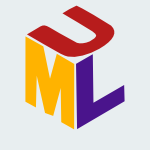 UML-2004-AbieAKMR #security #uml
UML-2004-AbieAKMR #security #uml- Integrating a Security Requirement Language with UML (HA, DBA, TK, SM, TR), pp. 350–364.
 TOOLS-USA-2003-RibetAZC04 #consistency #eiffel
TOOLS-USA-2003-RibetAZC04 #consistency #eiffel- Conformance of agents in the Eiffel language (PR, CA, OZ, DC), pp. 125–143.
 OOPSLA-2004-BirkaE #type system
OOPSLA-2004-BirkaE #type system- A practical type system and language for reference immutability (AB, MDE), pp. 35–49.
 OOPSLA-2004-BrachaU #design #named #object-oriented #programming language
OOPSLA-2004-BrachaU #design #named #object-oriented #programming language- Mirrors: design principles for meta-level facilities of object-oriented programming languages (GB, DU), pp. 331–344.
 OOPSLA-2004-BravenboerV #domain-specific language #strict #syntax
OOPSLA-2004-BravenboerV #domain-specific language #strict #syntax- Concrete syntax for objects: domain-specific language embedding and assimilation without restrictions (MB, EV), pp. 365–383.
 OOPSLA-2004-FactorSS #approach #library #object-oriented #standard
OOPSLA-2004-FactorSS #approach #library #object-oriented #standard- Instrumentation of standard libraries in object-oriented languages: the twin class hierarchy approach (MF, AS, KS), pp. 288–300.
 OOPSLA-2004-ScharliBD #encapsulation #object-oriented
OOPSLA-2004-ScharliBD #encapsulation #object-oriented- Object-oriented encapsulation for dynamically typed languages (NS, APB, SD), pp. 130–149.
 GPCE-2004-DouenceT #aspect-oriented #control flow
GPCE-2004-DouenceT #aspect-oriented #control flow- A Pointcut Language for Control-Flow (RD, LT), pp. 95–114.
 GPCE-2004-JacksonC #aspect-oriented #programming
GPCE-2004-JacksonC #aspect-oriented #programming- SourceWeave.NET: Cross-Language Aspect-Oriented Programming (AJ, SC), pp. 115–135.
 GPCE-2004-Mosses #composition
GPCE-2004-Mosses #composition- Modular Language Descriptions (PDM), p. 489.
 GPCE-2004-NeverovR #multi #named #object-oriented #programming language
GPCE-2004-NeverovR #multi #named #object-oriented #programming language- Metaphor: A Multi-stage, Object-Oriented Programming Language (GN, PR), pp. 168–185.
 GPCE-2004-PadovaniCZ #approach #documentation #generative #implementation
GPCE-2004-PadovaniCZ #approach #documentation #generative #implementation- A Generative Approach to the Implementation of Language Bindings for the Document Object Model (LP, CSC, SZ), pp. 469–487.
 GPCE-2004-PasalicL #metaprogramming
GPCE-2004-PasalicL #metaprogramming- Meta-programming with Typed Object-Language Representations (EP, NL), pp. 136–167.
 LOPSTR-2004-BossiPR #imperative #security
LOPSTR-2004-BossiPR #imperative #security- Unwinding Conditions for Security in Imperative Languages (AB, CP, SR), pp. 85–100.
 PPDP-2004-BeyerCHJM #query #verification
PPDP-2004-BeyerCHJM #query #verification- Invited talk: the blast query language for software verification (DB, AC, TAH, RJ, RM), pp. 1–2.
 PPDP-2004-DoughertyGL #normalisation
PPDP-2004-DoughertyGL #normalisation- Characterizing strong normalization in a language with control operators (DJD, SG, PL), pp. 155–166.
 PPDP-2004-GrecoGSS #datalog #logic programming #multi #programming language #reasoning
PPDP-2004-GrecoGSS #datalog #logic programming #multi #programming language #reasoning- Event choice datalog: a logic programming language for reasoning in multiple dimensions (GG, AG, DS, FS), pp. 238–249.
 PPDP-2004-KrsticM #semantics
PPDP-2004-KrsticM #semantics- Semantics of the reFLect language (SK, JM), pp. 32–42.
 PADL-2004-Fall #declarative #nondeterminism
PADL-2004-Fall #declarative #nondeterminism- Supporting Decisions in Complex, Uncertain Domains with Declarative Languages (AF), pp. 16–22.
 POPL-2004-AnconaZ #java
POPL-2004-AnconaZ #java- Principal typings for Java-like languages (DA, EZ), pp. 306–317.
 POPL-2004-YuKS #dot-net #formal method #runtime
POPL-2004-YuKS #dot-net #formal method #runtime- Formalization of generics for the .NET common language runtime (DY, AK, DS), pp. 39–51.
 SAC-J-2003-ShinjoKP04 #imperative #interface #performance
SAC-J-2003-ShinjoKP04 #imperative #interface #performance- Efficient mediators with closures for handling dynamic interfaces in an imperative language (YS, TK, CP), pp. 351–357.
 SAC-2004-BergholzC #interface #learning #query #web
SAC-2004-BergholzC #interface #learning #query #web- Learning query languages of Web interfaces (AB, BC), pp. 1114–1121.
 SAC-2004-Bracha #programming language #towards
SAC-2004-Bracha #programming language #towards- Keynote address: towards secure systems programming languages (GB), pp. 1–2.
 SAC-2004-Hamie #constraints #java #modelling #ocl
SAC-2004-Hamie #constraints #java #modelling #ocl- Translating the Object Constraint Language into the Java Modelling Language (AH), pp. 1531–1535.
 SAC-2004-HatalaREW #communication #implementation #learning #network #repository
SAC-2004-HatalaREW #communication #implementation #learning #network #repository- The eduSource Communication Language: implementing open network for learning repositories and services (MH, GR, TE, JW), pp. 957–962.
 SAC-2004-Jorgensen #component #incremental #independence #integration #java
SAC-2004-Jorgensen #component #incremental #independence #integration #java- Language support for incremental integration of independently developed components in Java (BNJ), pp. 1316–1322.
 SAC-2004-KampsR #effectiveness #information retrieval
SAC-2004-KampsR #effectiveness #information retrieval- The effectiveness of combining information retrieval strategies for European languages (JK, MdR), pp. 1073–1077.
 SAC-2004-LinsG #automation #identification
SAC-2004-LinsG #automation #identification- Automatic language identification of written texts (RDL, PG), pp. 1128–1133.
 SAC-2004-OssowskiM #coordination #modelling
SAC-2004-OssowskiM #coordination #modelling- Editoral message: special track on coordination models, languages and applications (SO, RM), pp. 447–448.
 SAC-2004-PouliquenSIG #recognition #visualisation
SAC-2004-PouliquenSIG #recognition #visualisation- Geographical information recognition and visualization in texts written in various languages (BP, RS, CI, TDG), pp. 1051–1058.
 SAC-2004-TorgersenHEABG #java #programming language
SAC-2004-TorgersenHEABG #java #programming language- Adding wildcards to the Java programming language (MT, CPH, EE, PvdA, GB, NMG), pp. 1289–1296.
 SAC-2004-ZumpanoGTV #on the #optimisation #power of #problem #semantics
SAC-2004-ZumpanoGTV #on the #optimisation #power of #problem #semantics- On the semantics and expressive power of Datalog-like languages for NP search and optimization problems (EZ, SG, IT, PV), pp. 692–697.
 SAC-PL-J-2004-FagorziZ #case study #encoding #multi
SAC-PL-J-2004-FagorziZ #case study #encoding #multi- A Case-Study in Encoding Configuration Languages: Multiple Class Loaders (SF, EZ), pp. 31–54.
 SAC-PL-J-2004-TorgersenEHABG #java #programming language
SAC-PL-J-2004-TorgersenEHABG #java #programming language- Adding Wildcards to the Java Programming Language (MT, EE, CPH, PvdA, GB, NMG), pp. 97–116.
 LDTA-2004-BegelG #ambiguity #analysis #tool support
LDTA-2004-BegelG #ambiguity #analysis #tool support- Language Analysis and Tools for Ambiguous Input Streams (AB, SLG), pp. 75–96.
 LDTA-2004-Cordy #named #programming language #tool support #txl
LDTA-2004-Cordy #named #programming language #tool support #txl- TXL — A Language for Programming Language Tools and Applications (JRC), pp. 3–31.
 SPLC-2004-Gomaa #design #modelling #product line #uml
SPLC-2004-Gomaa #design #modelling #product line #uml- Designing Software Product Lines with the Unified Modeling Language (UML) (HG), p. 317.
 SPLC-2004-Greenfield04a #domain-specific language #framework #tool support #using
SPLC-2004-Greenfield04a #domain-specific language #framework #tool support #using- Using Domain-Specific Languages, Patterns, Frameworks, and Tools to Assemble Applications (JG), p. 324.
 ISMM-2004-SagonasW #concurrent #garbage collection #incremental
ISMM-2004-SagonasW #concurrent #garbage collection #incremental- Message analysis-guided allocation and low-pause incremental garbage collection in a concurrent language (KFS, JW), pp. 1–12.
 LCTES-2004-ConwayE #domain-specific language #named
LCTES-2004-ConwayE #domain-specific language #named- NDL: a domain-specific language for device drivers (CLC, SAE), pp. 30–36.
 LCTES-2004-QinRM #architecture #concurrent #development #modelling #synthesis #tool support
LCTES-2004-QinRM #architecture #concurrent #development #modelling #synthesis #tool support- A formal concurrency model based architecture description language for synthesis of software development tools (WQ, SR, SM), pp. 47–56.
 ICLP-2004-BryPS #evolution #logic programming #programming language #query #web
ICLP-2004-BryPS #evolution #logic programming #programming language #query #web- Xcerpt and XChange — Logic Programming Languages for Querying and Evolution on the Web (FB, PLP, SS), pp. 450–451.
 ICLP-2004-CheneyU #logic programming #named #programming language #prolog
ICLP-2004-CheneyU #logic programming #named #programming language #prolog- αProlog: A Logic Programming Language with Names, Binding and α-Equivalence (JC, CU), pp. 269–283.
 IJCAR-2004-MeseguerR #analysis #formal method #logic #semantics #specification #tool support
IJCAR-2004-MeseguerR #analysis #formal method #logic #semantics #specification #tool support- Rewriting Logic Semantics: From Language Specifications to Formal Analysis Tools (JM, GR), pp. 1–44.
 LICS-2004-Marcial-RomeroE #semantics
LICS-2004-Marcial-RomeroE #semantics- Semantics of a Sequential Language for Exact Real-Number Computation (JRMR, MHE), pp. 426–435.
 LICS-2004-OuaknineW #automaton #decidability #on the #problem
LICS-2004-OuaknineW #automaton #decidability #on the #problem- On the Language Inclusion Problem for Timed Automata: Closing a Decidability Gap (JO, JW), pp. 54–63.
 VMCAI-2004-TanASW #assembly #semantics
VMCAI-2004-TanASW #assembly #semantics- Construction of a Semantic Model for a Typed Assembly Language (GT, AWA, KNS, DW), pp. 30–43.
 DATE-2003-AraS #component #transaction #verification
DATE-2003-AraS #component #transaction #verification- A Proposal for Transaction-Level Verification with Component Wrapper Language (KA, KS), pp. 20082–20087.
 DATE-2003-Castro-LopezFMR #behaviour #hardware #modelling #simulation #using
DATE-2003-Castro-LopezFMR #behaviour #hardware #modelling #simulation #using- Behavioural Modelling and Simulation of SigmaDelta Modulators Using Hardware Description Languages (RCL, FVF, FM, ÁRV), pp. 10168–10175.
 DATE-2003-DoucetSG #framework
DATE-2003-DoucetSG #framework- Introspection in System-Level Language Frameworks: Meta-Level vs. Integrated (FD, SKS, RKG), pp. 10382–10387.
 DATE-2003-YevtushenkoVBPS #equation
DATE-2003-YevtushenkoVBPS #equation- Equisolvability of Series vs. Controller’s Topology in Synchronous Language Equations (NY, TV, RKB, AP, ALSV), pp. 11154–11155.
 DocEng-2003-GarainDMC #pattern matching
DocEng-2003-GarainDMC #pattern matching- Compression of scan-digitized Indian language printed text: a soft pattern matching technique (UG, SD, AM, BBC), pp. 185–192.
 DRR-2003-YanikogluK #recognition
DRR-2003-YanikogluK #recognition- Turkish handwritten text recognition: a case of agglutinative languages (BAY, AK), pp. 227–233.
 ICDAR-2003-AlamHKRTW #approach #natural language #summary #web
ICDAR-2003-AlamHKRTW #approach #natural language #summary #web- Web Page Summarization for Handheld Devices: A Natural Language Approach (HA, RH, AK, AFRR, YT, CW), pp. 1153–1157.
 ICDAR-2003-ChaudhurySVH #documentation #image #interactive
ICDAR-2003-ChaudhurySVH #documentation #image #interactive- Devising Interactive Access Techniques for Indian Language Document Images (SC, GS, AV, GH), pp. 885–889.
 ICDAR-2003-FernandoKH #database #recognition #research
ICDAR-2003-FernandoKH #database #recognition #research- A Database for Handwriting Recognition Research in Sinhala Language (HCF, NDK, SH), pp. 1262–1264.
 ICDAR-2003-KorkmazKAA
ICDAR-2003-KorkmazKAA- A Character Recognizer for Turkish Language (SUK, GK, YA, VA), pp. 1238–1241.
 SIGMOD-2003-Chamberlin #named #query #xml #xquery
SIGMOD-2003-Chamberlin #named #query #xml #xquery- XQuery: A Query Language for XML (DDC), p. 682.
 VLDB-2003-LernerS #named #optimisation #order #query
VLDB-2003-LernerS #named #optimisation #order #query- AQuery: Query Language for Ordered Data, Optimization Techniques, and Experiments (AL, DS), pp. 345–356.
 ITiCSE-2003-Yehezkel #execution
ITiCSE-2003-Yehezkel #execution- Making program execution comprehensible one level above the machine language (CY), pp. 124–128.
 ESOP-2003-GorrieriLM #analysis #encryption #protocol #realtime
ESOP-2003-GorrieriLM #analysis #encryption #protocol #realtime- A Simple Language for Real-Time Cryptographic Protocol Analysis (RG, EL, FM), pp. 114–128.
 ESOP-2003-HaackW #fault #higher-order #slicing
ESOP-2003-HaackW #fault #higher-order #slicing- Type Error Slicing in Implicitly Typed Higher-Order Languages (CH, JBW), pp. 284–301.
 ESOP-2003-Leroy #perspective #programming language #security #static analysis
ESOP-2003-Leroy #perspective #programming language #security #static analysis- Computer Security from a Programming Language and Static Analysis Perspective (XL), pp. 1–9.
 FASE-2003-SoraVB #component #composition
FASE-2003-SoraVB #component #composition- A Description Language For Composable Components (IS, PV, YB), pp. 22–36.
 FASE-2003-ZhaoR #aspectj #behaviour #interface #named #specification
FASE-2003-ZhaoR #aspectj #behaviour #interface #named #specification- Pipa: A Behavioral Interface Specification Language for AspectJ (JZ, MCR), pp. 150–165.
 FoSSaCS-2003-DunfieldP #call-by
FoSSaCS-2003-DunfieldP #call-by- Type Assignment for Intersections and Unions in Call-by-Value Languages (JD, FP), pp. 250–266.
 IWPC-2003-LinosCBO #comprehension #dependence #multi
IWPC-2003-LinosCBO #comprehension #dependence #multi- A Tool For Understanding Multi-Language Program Dependencies (PKL, ZHC, SB, BO), pp. 64–73.
 WCRE-2003-Latendresse #generative #lightweight #named #regular expression #robust #semiparsing
WCRE-2003-Latendresse #generative #lightweight #named #regular expression #robust #semiparsing- RegReg: a Lightweight Generator of Robust Parsers for Irregular Languages (ML), pp. 206–215.
 PLDI-2003-GayLBWBC #approach #embedded
PLDI-2003-GayLBWBC #approach #embedded- The nesC language: A holistic approach to networked embedded systems (DG, PL, JRvB, MW, EAB, DEC), pp. 1–11.
 SAS-2003-CarlssonSW #analysis #concurrent
SAS-2003-CarlssonSW #analysis #concurrent- Message Analysis for Concurrent Languages (RC, KFS, JW), pp. 73–90.
 SAS-2003-Logozzo #analysis #composition #object-oriented
SAS-2003-Logozzo #analysis #composition #object-oriented- Class-Level Modular Analysis for Object Oriented Languages (FL), pp. 37–54.
 CIAA-2003-BravoN #parsing
CIAA-2003-BravoN #parsing- Building Context-Sensitive Parsers from CF Grammars with Regular Control Language (CB, JJN), pp. 306–308.
 CIAA-2003-Castano #lr #parsing
CIAA-2003-Castano #lr #parsing- LR Parsing for Global Index Languages (GILs) (JMC), pp. 269–281.
 CIAA-2003-TammU #automaton #regular expression
CIAA-2003-TammU #automaton #regular expression- Bideterministic Automata and Minimal Representations of Regular Languages (HT, EU), pp. 61–71.
 CIAA-2003-Zijl #regular expression
CIAA-2003-Zijl #regular expression- Succinct Descriptions of Regular Languages with Binary +-NFAs (LvZ), pp. 72–82.
 DLT-2003-AnselmoM #formal method #perspective #problem
DLT-2003-AnselmoM #formal method #perspective #problem- Covering Problems from a Formal Language Point of View (MA, MM), pp. 122–133.
 DLT-2003-BonizzoniFMZ #finite #reflexive #regular expression
DLT-2003-BonizzoniFMZ #finite #reflexive #regular expression- Regular Languages Generated by Reflexive Finite Splicing Systems (PB, CdF, GM, RZ), pp. 134–145.
 DLT-2003-DAlessandroV #on the
DLT-2003-DAlessandroV #on the- On Well Quasi-orders on Languages (FD, SV), pp. 230–241.
 DLT-2003-DrewesH #education #learning
DLT-2003-DrewesH #education #learning- Learning a Regular Tree Language from a Teacher (FD, JH), pp. 279–291.
 DLT-2003-Giammarresi #bound #set
DLT-2003-Giammarresi #bound #set- Computing Languages by (Bounded) Local Sets (DG), pp. 304–315.
 DLT-2003-Plandowski #product line #scalability #testing
DLT-2003-Plandowski #product line #scalability #testing- Test Sets for Large Families of Languages (WP), pp. 75–94.
 ICALP-2003-DenisE #automaton #probability
ICALP-2003-DenisE #automaton #probability- Residual Languages and Probabilistic Automata (FD, YE), pp. 452–463.
 ICALP-2003-Okhotin #equation #problem
ICALP-2003-Okhotin #equation #problem- Decision Problems for Language Equations with Boolean Operations (AO), pp. 239–251.
 FME-2003-Chalin #effectiveness #ml
FME-2003-Chalin #effectiveness #ml- Improving JML: For a Safer and More Effective Language (PC), pp. 440–461.
 SEFM-2003-BouassidaBGH #design #formal method #framework
SEFM-2003-BouassidaBGH #design #formal method #framework- Formalizing the Framework Design Language F-UML (NB, HBA, FG, ABH), pp. 164–172.
 ICFP-2003-BenzakenCF #named #xml
ICFP-2003-BenzakenCF #named #xml- CDuce: an XML-centric general-purpose language (VB, GC, AF), pp. 51–63.
 ICFP-2003-Mairson #analysis #game studies #semantics
ICFP-2003-Mairson #analysis #game studies #semantics- From Hilbert space to Dilbert space: context semantics as a language for games and flow analysis (HGM), p. 125.
 IFL-2003-PangC #haskell #object-oriented
IFL-2003-PangC #haskell #object-oriented- Interfacing Haskell with Object-Oriented Languages (ATHP, MMTC), pp. 20–35.
 IFL-2003-SeguraP #analysis #correctness #nondeterminism
IFL-2003-SeguraP #analysis #correctness #nondeterminism- Correctness of Non-determinism Analyses in a Parallel-Functional Language (CS, RP), pp. 69–85.
 AGTIVE-2003-DepkeHH #design #graph transformation #modelling
AGTIVE-2003-DepkeHH #design #graph transformation #modelling- Design of an Agent-Oriented Modeling Language Based on Graph Transformation (RD, JHH, RH), pp. 106–119.
 CAiSE-2003-KovseM #sql
CAiSE-2003-KovseM #sql- Introducing Custom Language Extensions to SQL: 1999 (JK, WM), pp. 193–208.
 CAiSE-2003-Olive #concept #modelling #object-oriented
CAiSE-2003-Olive #concept #modelling #object-oriented- Derivation Rules in Object-Oriented Conceptual Modeling Languages (AO), pp. 404–420.
 CAiSE-2003-TosicPPEM #web #web service
CAiSE-2003-TosicPPEM #web #web service- Management Applications of the Web Service Offerings Language (WSOL) (VT, BP, KP, BE, WM), pp. 468–484.
 EDOC-2003-DijkmanQPS #approach #modelling
EDOC-2003-DijkmanQPS #approach #modelling- An Approach to Relate Viewpoints and Modeling Languages (RMD, DACQ, LFP, MvS), pp. 14–27.
 EDOC-2003-JonkersBABBBDGSHIJLLPSTZ #architecture #enterprise #towards
EDOC-2003-JonkersBABBBDGSHIJLLPSTZ #architecture #enterprise #towards- Towards a Language for Coherent Enterprise Architecture Descriptions (HJ, RvB, FA, FSdB, MMB, HB, HWLtD, LG, JGS, SH, MEI, WJ, MML, DvL, EP, AS, LWNvdT, GVvZ), pp. 28–39.
 EDOC-2003-NealCLMGK #contract #identification #monitoring #requirements
EDOC-2003-NealCLMGK #contract #identification #monitoring #requirements- Identifying requirements for Business Contract Language: a Monitoring Perspectiv (SWN, JBC, PFL, ZM, SG, SK), pp. 50–61.
 ICEIS-v2-2003-Zarri #information management #representation #semantics #using #web
ICEIS-v2-2003-Zarri #information management #representation #semantics #using #web- Semantic Annotations and Semantic Web Using NKRL (Narrative Knowledge Representation Language) (GPZ), pp. 387–394.
 ICEIS-v3-2003-AllouiMO #approach #architecture #generative #modelling #using
ICEIS-v3-2003-AllouiMO #approach #architecture #generative #modelling #using- Modelling and Generating Business-To-Business Applications Using an Architecture Description Language — Based Approach (IA, KM, FO), pp. 201–210.
 ICEIS-v3-2003-ArbaouiHOTV #difference #enterprise #process
ICEIS-v3-2003-ArbaouiHOTV #difference #enterprise #process- Languages and Mechanisms for Software Processes and Manufacturing Enterprise Processes: Similarities and Differences (SA, AH, FO, FT, HV), pp. 474–482.
 ICEIS-v3-2003-BarjisG #requirements
ICEIS-v3-2003-BarjisG #requirements- Requirements Engineering Versus Language/Action Perspective: Different Facets and Possible Contribution (JB, TG), pp. 14–22.
 ICEIS-v3-2003-FaulknerK #architecture #information management #towards
ICEIS-v3-2003-FaulknerK #architecture #information management #towards- Towards an Agent Architectural Description Language for Information Systems (SF, MK), pp. 59–66.
 ICEIS-v3-2003-NassarCCEK #modelling #towards
ICEIS-v3-2003-NassarCCEK #modelling #towards- Towards a View Based Unified Modeling Language (MN, BC, XC, SE, AK), pp. 257–265.
 ICEIS-v3-2003-WohedPDH #analysis #modelling
ICEIS-v3-2003-WohedPDH #analysis #modelling- Pattern Based Analysis of Eai Languages — The Case of the Business Modeling Language (PW, EP, MD, AHMtH), pp. 174–184.
 CIKM-2003-AbdulJaleelL #information retrieval #statistics
CIKM-2003-AbdulJaleelL #information retrieval #statistics- Statistical transliteration for english-arabic cross language information retrieval (NAJ, LSL), pp. 139–146.
 CIKM-2003-BallesterosS #retrieval
CIKM-2003-BallesterosS #retrieval- Addressing the lack of direct translation resources for cross-language retrieval (LB, MS), pp. 147–152.
 CIKM-2003-LiC #modelling
CIKM-2003-LiC #modelling- Time-based language models (XL, WBC), pp. 469–475.
 CIKM-2003-NallapatiCA #feedback #modelling #query #statistics
CIKM-2003-NallapatiCA #feedback #modelling #query #statistics- Relevant query feedback in statistical language modeling (RN, WBC, JA), pp. 560–563.
 CIKM-2003-SrikanthS #approach #information retrieval #modelling #query
CIKM-2003-SrikanthS #approach #information retrieval #modelling #query- Exploiting syntactic structure of queries in a language modeling approach to IR (MS, RKS), pp. 476–483.
 ECIR-2003-PengS #classification #modelling #n-gram #naive bayes
ECIR-2003-PengS #classification #modelling #n-gram #naive bayes- Combining Naive Bayes and n-Gram Language Models for Text Classification (FP, DS), pp. 335–350.
 SEKE-2003-FlakeM #constraints #ocl #semantics
SEKE-2003-FlakeM #constraints #ocl #semantics- Semantics of State-Oriented Expressions in the Object Constraint Language (SF, WM), pp. 142–149.
 SEKE-2003-TongrungrojanaL #modelling #web
SEKE-2003-TongrungrojanaL #modelling #web- WebML+: a Web modeling language for forming a bridge between business modeling and information modeling (RT, DBL), pp. 17–24.
 SIGIR-2003-AllanK #framework #modelling
SIGIR-2003-AllanK #framework #modelling- Stemming in the language modeling framework (JA, GK), pp. 455–456.
 SIGIR-2003-AzzopardiGR #information retrieval #metric
SIGIR-2003-AzzopardiGR #information retrieval #metric- Investigating the relationship between language model perplexity and IR precision-recall measures (LA, MG, KvR), pp. 369–370.
 SIGIR-2003-BruzaS #comparison #dependence #modelling #probability #using
SIGIR-2003-BruzaS #comparison #dependence #modelling #probability #using- A comparison of various approaches for using probabilistic dependencies in language modeling (PB, DS), pp. 419–420.
 SIGIR-2003-SadatYU #automation #corpus #information retrieval
SIGIR-2003-SadatYU #automation #corpus #information retrieval- Enhancing cross-language information retrieval by an automatic acquisition of bilingual terminology from comparable corpora (FS, MY, SU), pp. 397–398.
 SIGIR-2003-SrikanthS #dependence #documentation #modelling #query #retrieval
SIGIR-2003-SrikanthS #dependence #documentation #modelling #query #retrieval- Incorporating query term dependencies in language models for document retrieval (MS, RKS), pp. 405–406.
 SIGIR-2003-VirgaK
SIGIR-2003-VirgaK- Transliteration of proper names in cross-language applications (PV, SK), pp. 365–366.
 SIGIR-2003-ZaragozaHT #ad hoc #information retrieval
SIGIR-2003-ZaragozaHT #ad hoc #information retrieval- Bayesian extension to the language model for ad hoc information retrieval (HZ, DH, MET), pp. 4–9.
 UML-2003-SchmidtV #model checking #modelling #named #visual notation
UML-2003-SchmidtV #model checking #modelling #named #visual notation- CheckVML: A Tool for Model Checking Visual Modeling Languages (ÁS, DV), pp. 92–95.
 ECOOP-2003-AldrichSCN #abstraction
ECOOP-2003-AldrichSCN #abstraction- Language Support for Connector Abstractions (JA, VS, CC, DN), pp. 74–102.
 OOPSLA-2003-FahndrichL #object-oriented
OOPSLA-2003-FahndrichL #object-oriented- Declaring and checking non-null types in an object-oriented language (MF, KRML), pp. 302–312.
 OOPSLA-2003-GarciaJLSW #case study #comparative #programming
OOPSLA-2003-GarciaJLSW #case study #comparative #programming- A comparative study of language support for generic programming (RG, JJ, AL, JGS, JW), pp. 115–134.
 OOPSLA-2003-HarrisF #lightweight #transaction
OOPSLA-2003-HarrisF #lightweight #transaction- Language support for lightweight transactions (TLH, KF), pp. 388–402.
 OOPSLA-2003-LaffertyC #aspect-oriented #independence #programming
OOPSLA-2003-LaffertyC #aspect-oriented #independence #programming- Language-independent aspect-oriented programming (DL, VC), pp. 1–12.
 GPCE-2003-CalcagnoTHL #abstract syntax tree #implementation #multi #using
GPCE-2003-CalcagnoTHL #abstract syntax tree #implementation #multi #using- Implementing Multi-stage Languages Using ASTs, Gensym, and Reflection (CC, WT, LH, XL), pp. 57–76.
 GPCE-2003-HammondM #domain-specific language #embedded #named #realtime
GPCE-2003-HammondM #domain-specific language #embedded #named #realtime- Hume: A Domain-Specific Language for Real-Time Embedded Systems (KH, GM), pp. 37–56.
 GPCE-2003-Kastner #analysis #hardware #named #optimisation
GPCE-2003-Kastner #analysis #hardware #named #optimisation- TDL: A Hardware Description Language for Retargetable Postpass Optimizations and Analyses (DK), pp. 18–36.
 GPCE-2003-PintoFT #architecture #component #development #named
GPCE-2003-PintoFT #architecture #component #development #named- DAOP-ADL: An Architecture Description Language for Dynamic Component and Aspect-Based Development (MP, LF, JMT), pp. 118–137.
 GPCE-2003-ZiaeiA #coordination #distributed #named #petri net
GPCE-2003-ZiaeiA #coordination #distributed #named #petri net- SynchNet: A Petri Net Based Coordination Language for Distributed Objects (RZ, GA), pp. 324–343.
 LOPSTR-2003-FlenerPA #combinator #modelling #problem #relational
LOPSTR-2003-FlenerPA #combinator #modelling #problem #relational- Introducing esra, a Relational Language for Modelling Combinatorial Problems (PF, JP, MÅ), pp. 214–232.
 PPDP-2003-FissoreGK #rule-based #termination
PPDP-2003-FissoreGK #rule-based #termination- Simplification and termination of strategies in rule-based languages (OF, IG, HK), pp. 124–135.
 PPDP-2003-HirschowitzLW #call-by #compilation #functional #recursion
PPDP-2003-HirschowitzLW #call-by #compilation #functional #recursion- Compilation of extended recursion in call-by-value functional languages (TH, XL, JBW), pp. 160–171.
 PADL-2003-ClareK #data mining #functional #lazy evaluation #mining
PADL-2003-ClareK #data mining #functional #lazy evaluation #mining- Data Mining the Yeast Genome in a Lazy Functional Language (AC, RDK), pp. 19–36.
 PADL-2003-Davila #named
PADL-2003-Davila #named- ACTILOG: An Agent Activation Language (JAD), pp. 194–207.
 PADL-2003-ErdemLNR #programming #set #using
PADL-2003-ErdemLNR #programming #set #using- Reconstructing the Evolutionary History of Indo-European Languages Using Answer Set Programming (EE, VL, LN, DR), pp. 160–176.
 PADL-2003-FernandezHS #combinator #constraints #functional #logic #problem
PADL-2003-FernandezHS #combinator #constraints #functional #logic #problem- Solving Combinatorial Problems with a Constraint Functional Logic Language (AJF, MTHG, FSP), pp. 320–338.
 PADL-2003-KiselyovK #named #xml
PADL-2003-KiselyovK #named #xml- SXSLT: Manipulation Language for XML (OK, SK), pp. 256–272.
 PADL-2003-LiM #constraints #datalog #trust
PADL-2003-LiM #constraints #datalog #trust- DATALOG with Constraints: A Foundation for Trust Management Languages (NL, JCM), pp. 58–73.
 PADL-2003-Mogensen #specification
PADL-2003-Mogensen #specification- Roll : A Language for Specifying Die-Rolls (TÆM), pp. 145–159.
 PADL-2003-Page #biology #database #declarative #mining
PADL-2003-Page #biology #database #declarative #mining- The Role of Declarative Languages in Mining Biological Databases (CDPJ), p. 1.
 POPL-2003-Crary #assembly #towards
POPL-2003-Crary #assembly #towards- Toward a foundational typed assembly language (KC), pp. 198–212.
 POPL-2003-ZibinG #algorithm #incremental
POPL-2003-ZibinG #algorithm #incremental- Incremental algorithms for dispatching in dynamically typed languages (YZ, JYG), pp. 126–138.
 SAC-2003-FinkO #architecture #coordination #framework
SAC-2003-FinkO #architecture #coordination #framework- An Extensible Architecture-based Framework for Coordination Languages (TF, KO), pp. 402–406.
 SAC-2003-Huntbach #concurrent #programming language
SAC-2003-Huntbach #concurrent #programming language- Features of the Concurrent Programming Language Aldwych (MMH), pp. 1048–1054.
 SAC-2003-Meo #data mining #mining #optimisation
SAC-2003-Meo #data mining #mining #optimisation- Optimization of a Language for Data Mining (RM), pp. 437–444.
 SAC-2003-ShapiroT #natural language #query #web
SAC-2003-ShapiroT #natural language #query #web- Constructing Web Search Queries from the User’s Information Need Expressed in a Natural Language (JS, IT), pp. 1157–1162.
 ICSE-2003-JarzabekBZZ #named #xml
ICSE-2003-JarzabekBZZ #named #xml- XVCL: XML-based Variant Configuration Language (SJ, PB, HZ, WZ), pp. 810–811.
 LDTA-J-2001-DohM #programming language #semantics
LDTA-J-2001-DohM #programming language #semantics- Composing programming languages by combining action-semantics modules (KGD, PDM), pp. 3–36.
 LDTA-2003-CostagliolaDFG #analysis #development #visual notation
LDTA-2003-CostagliolaDFG #analysis #development #visual notation- Exploiting XPG for Visual Languages: Definition, Analysis and Development (GC, VD, FF, CG), pp. 612–627.
 LDTA-2003-Hufflen #bibliography
LDTA-2003-Hufflen #bibliography- Mixing Two Bibliography Style Languages (JMH), pp. 628–642.
 LDTA-2003-Wyk #aspect-oriented #composition
LDTA-2003-Wyk #aspect-oriented #composition- Aspects as Modular Language Extensions (EVW), pp. 555–574.
 CC-2003-MoreauRV #compilation #multi #pattern matching
CC-2003-MoreauRV #compilation #multi #pattern matching- A Pattern Matching Compiler for Multiple Target Languages (PEM, CR, MV), pp. 61–76.
 CC-2003-Ryder #analysis #object-oriented #precise #programming language
CC-2003-Ryder #analysis #object-oriented #precise #programming language- Dimensions of Precision in Reference Analysis of Object-Oriented Programming Languages (BGR), pp. 126–137.
 CSL-2003-GroheS #finite #monad #query
CSL-2003-GroheS #finite #monad #query- Comparing the Succinctness of Monadic Query Languages over Finite Trees (MG, NS), pp. 226–240.
 ICLP-2003-UedaK
ICLP-2003-UedaK- The Language Model LMNtal (KU, NK), pp. 517–518.
 LICS-2003-LibkinN #logic #query
LICS-2003-LibkinN #logic #query- Logical Definability and Query Languages over Unranked Trees (LL, FN), pp. 178–187.
 LICS-2003-Murawski #equivalence #on the
LICS-2003-Murawski #equivalence #on the- On Program Equivalence in Languages with Ground-Type References (ASM), p. 108–?.
 LICS-2003-Pierce #generative #programming language
LICS-2003-Pierce #generative #programming language- Types and Programming Languages: The Next Generation (BCP), p. 32–?.
 RTA-2003-OhsakiST
RTA-2003-OhsakiST- Recognizing Boolean Closed A-Tree Languages with Membership Conditional Rewriting Mechanism (HO, HS, TT), pp. 483–498.
 RTA-2003-RouV #incremental #regular expression #testing
RTA-2003-RouV #incremental #regular expression #testing- Testing Extended Regular Language Membership Incrementally by Rewriting (GR, MV), pp. 499–514.
 WICSA-2002-CuestaFBB #architecture
WICSA-2002-CuestaFBB #architecture- Introducing Reflection in Architecture Description Languages (CECQ, PdlF, MBS, MEBG), pp. 143–156.
 DATE-2002-BjorklundL #kernel #towards
DATE-2002-BjorklundL #kernel #towards- Towards a Kernel Language for Heterogeneous Computing (DB, JL), p. 1136.
 DATE-2002-BruschiCFS #design #fault #simulation
DATE-2002-BruschiCFS #design #fault #simulation- Error Simulation Based on the SystemC Design Description Language (FB, MC, FF, DS), p. 1135.
 DATE-2002-LogothetisS #generative #modelling #realtime
DATE-2002-LogothetisS #generative #modelling #realtime- Extending Synchronous Languages for Generating Abstract Real-Time Models (GL, KS), pp. 795–802.
 DATE-2002-PaskoVS #c++ #design
DATE-2002-PaskoVS #c++ #design- Techniques to Evolve a C++ Based System Design Language (RP, SV, PS), pp. 302–309.
 DocEng-2002-BesR #multi #pretty-printing #process
DocEng-2002-BesR #multi #pretty-printing #process- A presentation language for controlling the formatting process in multimedia presentations (FB, CR), pp. 2–9.
 DocEng-2002-Vion-DuryLP #modelling #xml
DocEng-2002-Vion-DuryLP #modelling #xml- Experimenting with the circus language for XML modeling and transformation (JYVD, VL, EP), pp. 82–87.
 PODS-2002-GottlobK #datalog #information management #monad #power of #web
PODS-2002-GottlobK #datalog #information management #monad #power of #web- Monadic Datalog and the Expressive Power of Languages for Web Information Extraction (GG, CK), pp. 17–28.
 VLDB-2002-DaynesC #flexibility #lightweight
VLDB-2002-DaynesC #flexibility #lightweight- Lightweight Flexible Isolation for Language-based Extensible Systems (LD, GC), pp. 718–729.
 ITiCSE-2002-ShahK #parametricity #programming language
ITiCSE-2002-ShahK #parametricity #programming language- A tutoring system for parameter passing in programming languages (HS, ANK), pp. 170–174.
 ESOP-2002-Grossman #imperative
ESOP-2002-Grossman #imperative- Existential Types for Imperative Languages (DG), pp. 21–35.
 ESOP-2002-McGuireKH #programming language
ESOP-2002-McGuireKH #programming language- Programming Languages for Compressing Graphics (MM, SK, JFH), pp. 68–82.
 FASE-2002-ClarkEK #approach #metamodelling #modelling #precise
FASE-2002-ClarkEK #approach #metamodelling #modelling #precise- Engineering Modelling Languages: A Precise Meta-Modelling Approach (TC, AE, SK), pp. 159–173.
 FoSSaCS-2002-BolligLN
FoSSaCS-2002-BolligLN- Generalised Regular MSC Languages (BB, ML, TN), pp. 52–66.
 TACAS-2002-ArmoniFFGGKLMSTVZ #logic
TACAS-2002-ArmoniFFGGKLMSTVZ #logic- The ForSpec Temporal Logic: A New Temporal Property-Specification Language (RA, LF, AF, RG, BG, TK, AL, SMH, ES, AT, MYV, YZ), pp. 296–211.
 WRLA-2002-StehrT #maude #network #programming language #specification
WRLA-2002-StehrT #maude #network #programming language #specification- Plan in Maude: Specifying an Active Network Programming Language (MOS, CLT), pp. 240–260.
 CSMR-2002-BoulychevKT #on the #re-engineering
CSMR-2002-BoulychevKT #on the #re-engineering- On Project-Specific Languages and Their Application in Reengineering (DYB, DVK, AAT), pp. 177–185.
 CSMR-2002-Leitao #lisp #pattern matching #refactoring #source code
CSMR-2002-Leitao #lisp #pattern matching #refactoring #source code- A Formal Pattern Language for Refactoring of Lisp Programs (APTdMCL), pp. 186–192.
 ICSM-2002-HuntT
ICSM-2002-HuntT- Extensible Language-Aware Merging (JJH, WFT), pp. 511–520.
 SCAM-2002-BunusF #combinator #declarative #equation #graph transformation #semantics
SCAM-2002-BunusF #combinator #declarative #equation #graph transformation #semantics- Semantics Guided Filtering of Combinatorial Graph Transformations in Declarative Equation-Based Languages (PB, PF), pp. 163–172.
 SCAM-2002-HarmerW #metric #object-oriented #programming language
SCAM-2002-HarmerW #metric #object-oriented #programming language- An Extensible Metrics Extraction Environment for Object-Oriented Programming Languages (TJH, FGW), pp. 26–35.
 SCAM-2002-RamseyA #framework #using
SCAM-2002-RamseyA #framework #using- A Simple Mathematically Based Framework for Rule Extraction Using Wide Spectrum Language (FVR, JJA), p. 44–?.
 PEPM-2002-BrabrandS #metaprogramming #syntax
PEPM-2002-BrabrandS #metaprogramming #syntax- Growing languages with metamorphic syntax macros (CB, MIS), pp. 31–40.
 PEPM-2002-GomezL #analysis #automation #bound #higher-order
PEPM-2002-GomezL #analysis #automation #bound #higher-order- Automatic time-bound analysis for a higher-order language (GG, YAL), pp. 75–86.
 PEPM-2002-MeurLC #partial evaluation #programming language #towards
PEPM-2002-MeurLC #partial evaluation #programming language #towards- Towards bridging the gap between programming languages and partial evaluation (AFLM, JLL, CC), pp. 9–18.
 PLDI-2002-HallemCXE #analysis
PLDI-2002-HallemCXE #analysis- A System and Language for Building System-Specific, Static Analyses (SH, BC, YX, DRE), pp. 69–82.
 SAS-2002-SabelfeldM #communication #concurrent
SAS-2002-SabelfeldM #communication #concurrent- Securing Communication in a Concurrent Language (AS, HM), pp. 376–394.
 SAS-2002-WhaleyL #analysis #performance #points-to #strict
SAS-2002-WhaleyL #analysis #performance #points-to #strict- An Efficient Inclusion-Based Points-To Analysis for Strictly-Typed Languages (JW, MSL), pp. 180–195.
 CIAA-J-2000-Bruggemann-KleinW02 #automaton #nondeterminism
CIAA-J-2000-Bruggemann-KleinW02 #automaton #nondeterminism- The Regularity of Two-Way Nondeterministic Tree Automata Languages (ABK, DW), pp. 67–81.
 CIAA-J-2000-CampeanuPY02 #algorithm #automaton #finite #performance
CIAA-J-2000-CampeanuPY02 #algorithm #automaton #finite #performance- An Efficient Algorithm for Constructing Minimal Cover Automata for Finite Languages (CC, AP, SY), pp. 83–97.
 CIAA-J-2000-PighizziniS02 #complexity
CIAA-J-2000-PighizziniS02 #complexity- Unary Language Operations, State Complexity and Jacobsthal’s Function (GP, JS), pp. 145–159.
 CIAA-2002-Korner #automaton #finite #on the
CIAA-2002-Korner #automaton #finite #on the- On Minimizing Cover Automata for Finite Languages in O(n log n) Time (HK), pp. 117–127.
 CIAA-2002-Okhotin #linear #performance #recognition
CIAA-2002-Okhotin #linear #performance #recognition- Efficient Automaton-Based Recognition for Linear Conjunctive Languages (AO), pp. 169–181.
 CIAA-2002-Polak #equation
CIAA-2002-Polak #equation- Syntactic Semiring and Language Equations (LP), pp. 182–193.
 DLT-2002-Domaratzki #automaton #bound #finite
DLT-2002-Domaratzki #automaton #bound #finite- Improved Bounds on the Number of Automata Accepting Finite Languages (MD), pp. 209–219.
 DLT-2002-HolzerK #complexity #nondeterminism
DLT-2002-HolzerK #complexity #nondeterminism- Unary Language Operations and Their Nondeterministic State Complexity (MH, MK), pp. 162–172.
 DLT-2002-HorvathLL #regular expression
DLT-2002-HorvathLL #regular expression- Roots and Powers of Regular Languages (SH, PL, GL), pp. 220–230.
 DLT-2002-Okhotin #automaton #linear #representation
DLT-2002-Okhotin #automaton #linear #representation- Automaton Representation of Linear Conjunctive Languages (AO), pp. 393–404.
 ICALP-2002-Bala #regular expression
ICALP-2002-Bala #regular expression- Intersection of Regular Languages and Star Hierarchy (SB), pp. 159–169.
 ICALP-2002-JurdzinskiL
ICALP-2002-JurdzinskiL- Church-Rosser Languages vs. UCFL (TJ, KL), pp. 147–158.
 ICALP-2002-Lombardy #automaton #on the
ICALP-2002-Lombardy #automaton #on the- On the Construction of Reversible Automata for Reversible Languages (SL), pp. 170–182.
 FME-2002-MarinovK #named #relational
FME-2002-MarinovK #named #relational- VAlloy — Virtual Functions Meet a Relational Language (DM, SK), pp. 234–251.
 FME-2002-UmeduTYNHT #mobile #multi
FME-2002-UmeduTYNHT #mobile #multi- A Language for Describing Wireless Mobile Applications with Dynamic Establishment of Multi-way Synchronization Channels (TU, YT, KY, AN, TH, KT), pp. 607–624.
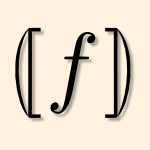 AFP-2002-FournetFMS02 #concurrent #distributed #mobile #named #programming
AFP-2002-FournetFMS02 #concurrent #distributed #mobile #named #programming- JoCaml: A Language for Concurrent Distributed and Mobile Programming (CF, FLF, LM, AS), pp. 129–158.
 AFP-2002-Wadler02 #functional #named #query #xml #xquery
AFP-2002-Wadler02 #functional #named #query #xml #xquery- XQuery: A Typed Functional Language for Querying XML (PW), pp. 188–212.
 ICFP-2002-GlynnSSS #analysis #exception #strict
ICFP-2002-GlynnSSS #analysis #exception #strict- Exception analysis for non-strict languages (KG, PJS, MS, HS), pp. 98–109.
 ICFP-2002-Myers #functional #programming language #towards
ICFP-2002-Myers #functional #programming language #towards- Towards more natural functional programming languages (BAM), p. 1.
 ICFP-2002-PasalicTS #staged
ICFP-2002-PasalicTS #staged- Tagless staged interpreters for typed languages (EP, WT, TS), pp. 218–229.
 IFL-2002-LindahlS #compilation #float
IFL-2002-LindahlS #compilation #float- Unboxed Compilation of Floating Point Arithmetic in a Dynamically Typed Language Environment (TL, KFS), pp. 134–149.
 IFL-2002-VervoortP #functional #lazy evaluation
IFL-2002-VervoortP #functional #lazy evaluation- Lazy Dynamic Input/Output in the Lazy Functional Language Clean (MV, MJP), pp. 101–117.
 ICGT-2002-Klempien-Hinrichs
ICGT-2002-Klempien-Hinrichs- Hyperedge Substitution in Basic Atom-Replacement Languages (RKH), pp. 192–206.
 CHI-2002-LinTL #design #interactive #scalability #sketching #visual notation
CHI-2002-LinTL #design #interactive #scalability #sketching #visual notation- A visual language for sketching large and complex interactive designs (JL, MT, JAL), pp. 307–314.
 CHI-2002-SuhmBMFGGP #case study #comparative #natural language #speech
CHI-2002-SuhmBMFGGP #case study #comparative #natural language #speech- A comparative study of speech in the call center: natural language call routing vs. touch-tone menus (BS, JB, DM, BF, DG, KG, PP), pp. 283–290.
 CSCW-2002-DavisSL #standard
CSCW-2002-DavisSL #standard- Generalizing operational transformation to the standard general markup language (AHD, CS, JL), pp. 58–67.
 VISSOFT-2002-Sajaniemi #comprehension #editing #independence #multi
VISSOFT-2002-Sajaniemi #comprehension #editing #independence #multi- View Definitions for Language-Independent Multiple-View Program Comprehension and Editing (JS), pp. 3–12.
 Ada-2002-Thom #ada #exclamation #integration #modelling #programming language #standard #uml #using
Ada-2002-Thom #ada #exclamation #integration #modelling #programming language #standard #uml #using- Conformity! A Practical Integration of Standards — A Case for using the Unified Modelling Language (UML) with the Ada Programming Language (FT), pp. 29–36.
 AdaEurope-2002-Lamm #ada #contract #design
AdaEurope-2002-Lamm #ada #contract #design- Adding Design by Contract to the Ada Language (EL), pp. 205–218.
 AdaEurope-2002-WardA #ada #compilation #hardware
AdaEurope-2002-WardA #ada #compilation #hardware- Language Issues of Compiling Ada to Hardware (MW, NCA), pp. 88–99.
 CAiSE-2002-SoderstromAJPW #framework #modelling #process #towards
CAiSE-2002-SoderstromAJPW #framework #modelling #process #towards- Towards a Framework for Comparing Process Modelling Languages (ES, BA, PJ, EP, BW), pp. 600–611.
 CAiSE-2002-SuI #case study #comparative #ontology #tool support
CAiSE-2002-SuI #case study #comparative #ontology #tool support- A Comparative Study of Ontology Languages and Tools (XS, LI), pp. 761–765.
 ICEIS-2002-CarrascoMG #data mining #flexibility #mining #named #query
ICEIS-2002-CarrascoMG #data mining #flexibility #mining #named #query- FSQL: A Flexible Query Language for Data Mining (RAC, MAVM, JG), pp. 50–56.
 ICEIS-2002-EstebanGJ #enterprise #information management #information retrieval #modelling #multi
ICEIS-2002-EstebanGJ #enterprise #information management #information retrieval #modelling #multi- Improving Access to Multilingual Enterprise Information Systems with User Modelling Context Enriched Cross-Language IR (ADE, PG, AGJ), pp. 482–487.
 ICEIS-2002-FilhoL #uml
ICEIS-2002-FilhoL #uml- A Proposal for the Incorporation of the Features Model into the UML Language (IMF, TCdO, CJPdL), pp. 594–601.
 ICEIS-2002-GnasaW #information management #interface #natural language
ICEIS-2002-GnasaW #information management #interface #natural language- Natural Language Interface to Knowledge Management Systems (MG, JW), pp. 494–499.
 ICEIS-2002-LarreTMT #integration #using
ICEIS-2002-LarreTMT #integration #using- Data Integration Using the MONIL Language (ML, JTJ, EFM, ST), pp. 115–120.
 ICEIS-2002-Veryha #classification #database #fuzzy #implementation #query #relational #using
ICEIS-2002-Veryha #classification #database #fuzzy #implementation #query #relational #using- Implementation of Fuzzy Classification Query Language in Relational Databases Using Stored Procedures (YV), pp. 195–202.
 CIKM-2002-LiuC #modelling #retrieval
CIKM-2002-LiuC #modelling #retrieval- Passage retrieval based on language models (XL, WBC), pp. 375–382.
 CIKM-2002-NallapatiA #dependence #modelling #using
CIKM-2002-NallapatiA #dependence #modelling #using- Capturing term dependencies using a language model based on sentence trees (RN, JA), pp. 383–390.
 CIKM-2002-SiJCO #framework #modelling
CIKM-2002-SiJCO #framework #modelling- A language modeling framework for resource selection and results merging (LS, RJ, JPC, PO), pp. 391–397.
 ECIR-2002-OardE #retrieval
ECIR-2002-OardE #retrieval- Translation-Based Indexing for Cross-Language Retrieval (DWO, FE), pp. 324–333.
 ICPR-v1-2002-ErdemS #automation #communication #detection #gesture
ICPR-v1-2002-ErdemS #automation #communication #detection #gesture- Automatic Detection of Relevant Head Gestures in American Sign Language Communication (UME, SS), p. 460–?.
 ICPR-v1-2002-YuanGYW #modelling #recognition
ICPR-v1-2002-YuanGYW #modelling #recognition- Recognition of Strong and Weak Connection Models in Continuous Sign Language (QY, WG, HY, CW), pp. 75–78.
 SEKE-2002-CostagliolaDFG #modelling #using #visual notation
SEKE-2002-CostagliolaDFG #modelling #using #visual notation- Using extended positional grammars to develop visual modeling languages (GC, VD, FF, CG), pp. 201–208.
 SIGIR-2002-FedericoB #information retrieval #query #statistics #using
SIGIR-2002-FedericoB #information retrieval #query #statistics #using- Statistical cross-language information retrieval using n-best query translations (MF, NB), pp. 167–174.
 SIGIR-2002-HansenPKBS #design #information retrieval #interface
SIGIR-2002-HansenPKBS #design #information retrieval #interface- User-centered interface design for cross-language information retrieval (PH, DP, JK, MB, MS), pp. 383–384.
 SIGIR-2002-Hiemstra #approach #information retrieval #modelling #query
SIGIR-2002-Hiemstra #approach #information retrieval #modelling #query- Term-specific smoothing for the language modeling approach to information retrieval: the importance of a query term (DH), pp. 35–41.
 SIGIR-2002-JinHZ #information retrieval
SIGIR-2002-JinHZ #information retrieval- Title language model for information retrieval (RJ, AGH, CZ), pp. 42–48.
 SIGIR-2002-JinSHC #information retrieval #using
SIGIR-2002-JinSHC #information retrieval #using- Language model for IR using collection information (RJ, LS, AGH, JPC), pp. 419–420.
 SIGIR-2002-KeskustaloHA #framework #query
SIGIR-2002-KeskustaloHA #framework #query- UTACLIR -: general query translation framework for several language pairs (HK, TH, EA), p. 448.
 SIGIR-2002-Koskenniemi #information retrieval #natural language #question
SIGIR-2002-Koskenniemi #information retrieval #natural language #question- Is natural language an inconvenience or an opportunity for IR? (KK), p. 315.
 SIGIR-2002-McNameeM #query
SIGIR-2002-McNameeM #query- Comparing cross-language query expansion techniques by degrading translation resources (PM, JM), pp. 159–166.
 SIGIR-2002-SrikanthS #documentation #modelling #retrieval
SIGIR-2002-SrikanthS #documentation #modelling #retrieval- Biterm language models for document retrieval (MS, RKS), pp. 425–426.
 SIGIR-2002-ZhaiL #information retrieval #modelling
SIGIR-2002-ZhaiL #information retrieval #modelling- Two-stage language models for information retrieval (CZ, JDL), pp. 49–56.
 UML-2002-LodderstedtBD #modelling #named #security #uml
UML-2002-LodderstedtBD #modelling #named #security #uml- SecureUML: A UML-Based Modeling Language for Model-Driven Security (TL, DAB, JD), pp. 426–441.
 UML-2002-NaumenkoW #metamodelling #modelling
UML-2002-NaumenkoW #metamodelling #modelling- A Metamodel for the Unified Modeling Language (AN, AW), pp. 2–17.
 UML-2002-Whittle #automation #modelling #uml
UML-2002-Whittle #automation #modelling #uml- Transformations and Software Modeling Languages: Automating Transformations in UML (JW), pp. 227–242.
 OOPSLA-2002-Dmitriev #java #programming language
OOPSLA-2002-Dmitriev #java #programming language- Language-specific make technology for the Java programming language (MD), pp. 373–385.
 OOPSLA-2002-KhurshidMJ
OOPSLA-2002-KhurshidMJ- An analyzable annotation language (SK, DM, DJ), pp. 231–245.
 TOOLS-USA-2002-Plosch #evaluation #java #programming language
TOOLS-USA-2002-Plosch #evaluation #java #programming language- Evaluation of Assertion Support for the Java Programming Language (RP), pp. 5–17.
 GPCE-2002-Back #named #scripting language #specification
GPCE-2002-Back #named #scripting language #specification- DataScript — A Specification and Scripting Language for Binary Data (GB), pp. 66–77.
 GPCE-2002-BrichauMV #composition #logic #metaprogramming
GPCE-2002-BrichauMV #composition #logic #metaprogramming- Building Composable Aspect-Specific Languages with Logic Metaprogramming (JB, KM, KDV), pp. 110–127.
 PPDP-2002-DrapeMS #dot-net #logic programming #using
PPDP-2002-DrapeMS #dot-net #logic programming #using- Transforming the .NET intermediate language using path logic programming (SD, OdM, GS), pp. 133–144.
 PPDP-2002-NielsenPV #concurrent #constraints #on the #power of #programming language
PPDP-2002-NielsenPV #concurrent #constraints #on the #power of #programming language- On the expressive power of temporal concurrent constraint programming languages (MN, CP, FDV), pp. 156–167.
 PPDP-2002-PembeciNH #domain-specific language #functional #integration
PPDP-2002-PembeciNH #domain-specific language #functional #integration- Functional reactive robotics: an exercise in principled integration of domain-specific languages (IP, HN, GDH), pp. 168–179.
 PADL-2002-BunusF #debugging #declarative #equation #modelling
PADL-2002-BunusF #debugging #declarative #equation #modelling- A Debugging Scheme for Declarative Equation Based Modeling Languages (PB, PF), pp. 280–298.
 PADL-2002-Meadows #analysis #declarative #using
PADL-2002-Meadows #analysis #declarative #using- Using a Declarative Language to Build an Experimental Analysis Tool (CM), pp. 1–2.
 PADL-2002-ShenSNS #eclipse #interface #programming language
PADL-2002-ShenSNS #eclipse #interface #programming language- A High-Level Generic Interface to External Programming Languages for ECLiPSe (KS, JS, SN, JS), pp. 262–279.
 SAC-2002-AvdicausevicMLZ #aspect-oriented
SAC-2002-AvdicausevicMLZ #aspect-oriented- Experimental aspect-oriented language — AspectCOOL (EA, MM, ML, VZ), pp. 943–947.
 SAC-2002-BettiniLP #framework
SAC-2002-BettiniLP #framework- An infrastructure language for open nets (LB, ML, RP), pp. 373–377.
 SAC-2002-JoA #programming language
SAC-2002-JoA #programming language- The Agent-based Programming Language: APL (CHJ, AJA), pp. 27–31.
 SAC-2002-LeeB #automation #documentation #object-oriented #requirements #specification
SAC-2002-LeeB #automation #documentation #object-oriented #requirements #specification- Automated conversion from requirements documentation to an object-oriented formal specification language (BSL, BRB), pp. 932–936.
 SAC-2002-TolksdorfK #distributed #object-oriented #programming
SAC-2002-TolksdorfK #distributed #object-oriented #programming- Programming distributed systems with the delegation-based object-oriented language dSelf (RT, KK), pp. 927–931.
 ICSE-2002-CysneirosL #elicitation #modelling #non-functional #requirements
ICSE-2002-CysneirosL #elicitation #modelling #non-functional #requirements- Non-functional requirements: from elicitation to modelling languages (LMC, JCSdPL), pp. 699–700.
 ICSE-2002-DashofyHT #agile #architecture #development #framework #xml
ICSE-2002-DashofyHT #agile #architecture #development #framework #xml- An infrastructure for the rapid development of XML-based architecture description languages (EMD, AvdH, RNT), pp. 266–276.
 ICSE-2002-ZimmermanLL #readability #requirements #specification
ICSE-2002-ZimmermanLL #readability #requirements #specification- Investigating the readability of state-based formal requirements specification languages (MKZ, KL, NGL), pp. 33–43.
 LDTA-2002-Consel #domain-specific language #how #what #why
LDTA-2002-Consel #domain-specific language #how #what #why- Domain-Specific Languages: What, Why, How (CC), p. 1.
 LDTA-2002-HenriquesPMLAZ #automation #generative #tool support
LDTA-2002-HenriquesPMLAZ #automation #generative #tool support- Automatic Generation of Language-based Tools (PRH, MJVP, MM, ML, EA, VZ), pp. 77–96.
 LDTA-2002-KastensS #generative #named #visual notation
LDTA-2002-KastensS #generative #named #visual notation- VL-Eli: A Generator for Visual Languages — System Demonstration (UK, CS), pp. 139–143.
 ASPLOS-2002-Estrin #architecture #challenge #network #research
ASPLOS-2002-Estrin #architecture #challenge #network #research- Keynote address: Sensor network research: emerging challenges for architecture, systems, and languages (DE), pp. 1–4.
 ASPLOS-2002-KohlerMC #composition #optimisation #programming language
ASPLOS-2002-KohlerMC #composition #optimisation #programming language- Programming language optimizations for modular router configurations (EK, RM, BC), pp. 251–263.
 CC-2002-MernikLAZ #development #interactive #named #programming language
CC-2002-MernikLAZ #development #interactive #named #programming language- LISA: An Interactive Environment for Programming Language Development (MM, ML, EA, VZ), pp. 1–4.
 CC-2002-NeculaMRW #analysis #c #named #source code #tool support
CC-2002-NeculaMRW #analysis #c #named #source code #tool support- CIL: Intermediate Language and Tools for Analysis and Transformation of C Programs (GCN, SM, SPR, WW), pp. 213–228.
 CC-2002-ThiesKA #named #streaming
CC-2002-ThiesKA #named #streaming- StreamIt: A Language for Streaming Applications (WT, MK, SPA), pp. 179–196.
 CC-2002-WykMBK #attribute grammar #composition #design
CC-2002-WykMBK #attribute grammar #composition #design- Forwarding in Attribute Grammars for Modular Language Design (EVW, OdM, KB, PK), pp. 128–142.
 ISMM-2002-JohanssonSW #architecture #concurrent #message passing #using
ISMM-2002-JohanssonSW #architecture #concurrent #message passing #using- Heap architectures for concurrent languages using message passing (EJ, KFS, JW), pp. 195–206.
 ICLP-2002-BryS #declarative #model transformation #query #semistructured data #simulation #towards #unification #xml
ICLP-2002-BryS #declarative #model transformation #query #semistructured data #simulation #towards #unification #xml- Towards a Declarative Query and Transformation Language for XML and Semistructured Data: Simulation Unification (FB, SS), pp. 255–270.
 LICS-2002-BenediktL #algebra #automaton #logic #query
LICS-2002-BenediktL #algebra #automaton #logic #query- Tree Extension Algebras: Logics, Automata, and Query Languages (MB, LL), p. 203–?.
 LICS-2002-NygaardW #process
LICS-2002-NygaardW #process- Linearity in Process Languages (MN, GW), p. 433–?.
 RTA-2002-LeclandR #implementation #named
RTA-2002-LeclandR #implementation #named- TTSLI: An Implementation of Tree-Tuple Synchronized Languages (BL, PR), pp. 376–379.
 RTA-2002-OhsakiT #decidability #equation
RTA-2002-OhsakiT #decidability #equation- Decidability and Closure Properties of Equational Tree Languages (HO, TT), pp. 114–128.
 WICSA-2001-DashofyHT #architecture #xml
WICSA-2001-DashofyHT #architecture #xml- A Highly-Extensible, XML-Based Architecture Description Language (EMD, AvdH, RNT), pp. 103–112.
 ASE-2001-BultanY #verification
ASE-2001-BultanY #verification- Action Language Verifier (TB, TYK), pp. 382–386.
 DATE-2001-HoffmannNPBM #development #generative #quality #tool support #using
DATE-2001-HoffmannNPBM #development #generative #quality #tool support #using- Generating production quality software development tools using a machine description language (AH, AN, SP, GB, HM), pp. 674–678.
 DATE-2001-TerechkoPE #architecture #clustering #named
DATE-2001-TerechkoPE #architecture #clustering #named- PRMDL: a machine description language for clustered VLIW architectures (AT, EJDP, JTJvE), p. 821.
 DocEng-2001-Muchaluat-SaadeS #architecture #authoring #convergence #hypermedia #towards
DocEng-2001-Muchaluat-SaadeS #architecture #authoring #convergence #hypermedia #towards- Towards the convergence between hypermedia authoring languages and architecture description languages (DCMS, LFGS), pp. 48–57.
 ICDAR-2001-ElgammalI01a #documentation #hybrid #identification #image
ICDAR-2001-ElgammalI01a #documentation #hybrid #identification #image- Techniques for Language Identification for Hybrid Arabic-English Document Images (AME, MAI), pp. 1100–1104.
 ICDAR-2001-Hurst #layout #using
ICDAR-2001-Hurst #layout #using- Layout and Language: Exploring Text Block Discovery in Tables Using Linguistic Resources (MH), pp. 523–527.
 ICDAR-2001-MartiB01a #modelling #on the #recognition
ICDAR-2001-MartiB01a #modelling #on the #recognition- On the Influence of Vocabulary Size and Language Models in Unconstrained Handwritten Text Recognition (UVM, HB), pp. 260–265.
 ICDAR-2001-PitrelliR #modelling #recognition
ICDAR-2001-PitrelliR #modelling #recognition- Creating Word-Level Language Models for Handwriting Recognition (JFP, AR), pp. 721–725.
 PODS-2001-BenediktLSS #query #string
PODS-2001-BenediktLSS #query #string- String Operations in Query Languages (MB, LL, TS, LS).
 VLDB-2001-GalhardasFSSS #algorithm #declarative
VLDB-2001-GalhardasFSSS #algorithm #declarative- Declarative Data Cleaning: Language, Model, and Algorithms (HG, DF, DS, ES, CAS), pp. 371–380.
 VLDB-2001-SadriZZA #data mining #mining #query
VLDB-2001-SadriZZA #data mining #mining #query- A Sequential Pattern Query Language for Supporting Instant Data Mining for e-Services (RS, CZ, AMZ, JA), pp. 653–656.
 FASE-J-1998-BradleyHKR01 #design #realtime
FASE-J-1998-BradleyHKR01 #design #realtime- A formal design language for real-time systems with data (SB, WH, DK, AR), pp. 3–29.
 ESOP-2001-Backhouse
ESOP-2001-Backhouse- Fusion on Languages (RCB), pp. 107–121.
 ESOP-2001-CardelliG #logic #query
ESOP-2001-CardelliG #logic #query- A Query Language Based on the Ambient Logic (LC, GG), pp. 1–22.
 ESOP-2001-CuoqP #composition
ESOP-2001-CuoqP #composition- Modular Causality in a Synchronous Stream Language (PC, MP), pp. 237–251.
 ESOP-2001-GraunkeKHF #programming language #web
ESOP-2001-GraunkeKHF #programming language #web- Programming the Web with High-Level Programming Languages (PTG, SK, SVDH, MF), pp. 122–136.
 FASE-2001-ClarkEK #calculus #metamodelling #semantics #uml
FASE-2001-ClarkEK #calculus #metamodelling #semantics #uml- The Metamodelling Language Calculus: Foundation Semantics for UML (TC, AE, SK), pp. 17–31.
 FASE-2001-JacobsP #java #logic #ml #modelling
FASE-2001-JacobsP #java #logic #ml #modelling- A Logic for the Java Modeling Language JML (BJ, EP), pp. 284–299.
 FASE-2001-Stevens #case study #modelling #on the
FASE-2001-Stevens #case study #modelling #on the- On Use Cases and Their Relationships in the Unified Modelling Language (PS), pp. 140–155.
 FoSSaCS-2001-BusiGZ #coordination
FoSSaCS-2001-BusiGZ #coordination- Temporary Data in Shared Dataspace Coordination Languages (NB, RG, GZ), pp. 121–136.
 FoSSaCS-2001-GourantonRS
FoSSaCS-2001-GourantonRS- Synchronized Tree Languages Revisited and New Applications (VG, PR, HS), pp. 214–229.
 FoSSaCS-2001-HabelP #graph transformation #programming language
FoSSaCS-2001-HabelP #graph transformation #programming language- Computational Completeness of Programming Languages Based on Graph Transformation (AH, DP), pp. 230–245.
 FoSSaCS-2001-Morin #on the #sequence chart #traceability
FoSSaCS-2001-Morin #on the #sequence chart #traceability- On Regular Message Sequence Chart Languages and Relationships to Mazurkiewicz Trace Theory (RM), pp. 332–346.
 FoSSaCS-2001-Tini #axiom #semantics
FoSSaCS-2001-Tini #axiom #semantics- An Axiomatic Semantics for the Synchronous Language Gentzen (ST), pp. 394–409.
 TACAS-2001-Finkbeiner #nondeterminism
TACAS-2001-Finkbeiner #nondeterminism- Language Containment Checking with Nondeterministic BDDs (BF), pp. 24–38.
 TACAS-2001-MycroftS #co-evolution #design #functional #hardware #using
TACAS-2001-MycroftS #co-evolution #design #functional #hardware #using- Hardware/Software Co-Design Using Functional Languages (AM, RS), pp. 236–251.
 CSMR-2001-GoedickeZ #design pattern #documentation #migration #pattern matching
CSMR-2001-GoedickeZ #design pattern #documentation #migration #pattern matching- Piecemeal Migrating of a Document Archive System with an Architectural Pattern Language (MG, UZ), pp. 180–183.
 ICSM-2001-JongeM #effectiveness #maintenance #tool support
ICSM-2001-JongeM #effectiveness #maintenance #tool support- Cost-Effective Maintenance Tools for Proprietary Languages (MdJ, RM), pp. 240–249.
 ICSM-2001-Terekhov #automation #case study
ICSM-2001-Terekhov #automation #case study- Automating Language Conversion: A Case Study (AAT), pp. 654–658.
 SCAM-2001-DeruelleMBB #analysis #distributed #multi
SCAM-2001-DeruelleMBB #analysis #distributed #multi- Analysis and Manipulation of Distributed Multi-Language Software Code (LD, NM, MB, HB), pp. 45–56.
 SCAM-2001-Vanter #source code #tool support
SCAM-2001-Vanter #source code #tool support- Preserving the Documentary Structure of Source Code in Language-Based Transformation Tools (MvdV), pp. 133–143.
 WCRE-2001-KullbachR #approach #comprehension #named
WCRE-2001-KullbachR #approach #comprehension #named- Folding: An Approach to Enable Program Understanding of Preprocessed Languages (BK, VR), pp. 3–12.
 PLDI-2001-GayA
PLDI-2001-GayA- Language Support for Regions (DG, AA), pp. 70–80.
 PLDI-2001-KennedyS #design #dot-net #implementation #runtime
PLDI-2001-KennedyS #design #dot-net #implementation #runtime- Design and Implementation of Generics for the .NET Common Language Runtime (AK, DS), pp. 1–12.
 PLDI-2001-KumarMYL #named #programmable
PLDI-2001-KumarMYL #named #programmable- ESP: A Language for Programmable Devices (SK, YM, XY, KL), pp. 309–320.
 PLDI-2001-SchnarrHL #compilation #named
PLDI-2001-SchnarrHL #compilation #named- Facile: A Language and Compiler for High-Performance Processor Simulators (ES, MDH, JRL), pp. 321–331.
 PLDI-2001-XiongJJP #algorithm #compilation #named
PLDI-2001-XiongJJP #algorithm #compilation #named- SPL: A Language and Compiler for DSP Algorithms (JX, JRJ, RWJ, DAP), pp. 298–308.
 SAS-2001-BagnaraGHZ #analysis #constraints
SAS-2001-BagnaraGHZ #analysis #constraints- Finite-Tree Analysis for Constraint Logic-Based Languages (RB, RG, PMH, EZ), pp. 165–184.
 SAS-2001-Myers #distributed
SAS-2001-Myers #distributed- Security-Typed Languages and Distributed Computation (ACM), pp. 437–438.
 SAS-2001-Schneider #security #what #why
SAS-2001-Schneider #security #what #why- Language-Based Security: What’s Needed and Why (FBS), p. 374.
 STOC-2001-BulatovKJ #complexity #constraints
STOC-2001-BulatovKJ #complexity #constraints- The complexity of maximal constraint languages (AAB, AAK, PJ), pp. 667–674.
 FLOPS-2001-AlbertHV #declarative #multi
FLOPS-2001-AlbertHV #declarative #multi- A Practical Partial Evaluator for a Multi-Paradigm Declarative Language (EA, MH, GV), pp. 326–342.
 FLOPS-2001-DanvyR #haskell #syntax
FLOPS-2001-DanvyR #haskell #syntax- A Simple Take on Typed Abstract Syntax in Haskell-like Languages (OD, MR), pp. 343–358.
 FLOPS-2001-LeachN #constraints #higher-order #logic programming #programming language
FLOPS-2001-LeachN #constraints #higher-order #logic programming #programming language- A Higher-Order Logic Programming Language with Constraints (JL, SN), pp. 108–122.
 CIAA-2001-AlegriaAEEU #finite #natural language #using
CIAA-2001-AlegriaAEEU #finite #natural language #using- Using Finite State Technology in Natural Language Processing of Basque (IA, MJA, NE, AE, RU), pp. 1–12.
 CIAA-2001-DaciukN #automaton #finite #modelling #representation
CIAA-2001-DaciukN #automaton #finite #modelling #representation- Finite Automata for Compact Representation of Language Models in NLP (JD, GvN), pp. 65–73.
 DLT-2001-BeaudryHNO #on the #product line
DLT-2001-BeaudryHNO #on the #product line- On the Relationship between the McNaughton Families of Languages and the Chomsky Hierarchy (MB, MH, GN, FO), pp. 340–348.
 DLT-2001-Cachat #power of
DLT-2001-Cachat #power of- The Power of One-Letter Rational Languages (TC), pp. 145–154.
 DLT-2001-DomaratzkiSY #formal method
DLT-2001-DomaratzkiSY #formal method- Minimal Covers of Formal Languages (MD, JS, SY), pp. 319–329.
 DLT-2001-EngelfrietM #string #transducer
DLT-2001-EngelfrietM #string #transducer- Hierarchies of String Languages Generated by Deterministic Tree Transducers (JE, SM), pp. 228–238.
 DLT-2001-Esik #equation #fixpoint
DLT-2001-Esik #equation #fixpoint- The Equational Theory of Fixed Points with Applications to Generalized Language Theory (ZÉ), pp. 21–36.
 DLT-2001-ItoK #petri net
DLT-2001-ItoK #petri net- Some Petri Net Languages and Codes (MI, YK), pp. 69–80.
 DLT-2001-Lischke #complexity
DLT-2001-Lischke #complexity- The Root of a Language and Its Complexity (GL), pp. 272–280.
 DLT-2001-NiemannW #context-sensitive grammar
DLT-2001-NiemannW #context-sensitive grammar- The Growing Context-Sensitive Languages Are the Acyclic Context-Sensitive Languages (GN, JRW), pp. 197–205.
 DLT-2001-NiemannW01a #regular expression
DLT-2001-NiemannW01a #regular expression- Some Regular Languages That Are Church-Rosser Congruential (GN, JW), pp. 330–339.
 DLT-2001-Staiger
DLT-2001-Staiger- The Entropy of Lukasiewicz-Languages (LS), pp. 155–165.
 ICALP-2001-AbdullaBB #effectiveness #queue
ICALP-2001-AbdullaBB #effectiveness #queue- Effective Lossy Queue Languages (PAA, LB, AB), pp. 639–651.
 ICALP-2001-Bouajjani #infinity #term rewriting #verification
ICALP-2001-Bouajjani #infinity #term rewriting #verification- Languages, Rewriting Systems, and Verification of Infinite-State Systems (AB), pp. 24–39.
 ICALP-2001-HarjuIKS #morphism
ICALP-2001-HarjuIKS #morphism- Decision Questions Concerning Semilinearity, Morphisms, and Commutation of Languages (TH, OHI, JK, AS), pp. 579–590.
 FME-2001-Pahl #component #contract #modelling #uml
FME-2001-Pahl #component #contract #modelling #uml- Components, Contracts, and Connectors for the Unified Modelling Language UML (CP), pp. 259–277.
 ICFP-2001-XiH #assembly
ICFP-2001-XiH #assembly- A Dependently Typed Assembly Language (HX, RH), pp. 169–180.
 SVIS-2001-HundhausenD #algorithm #visualisation
SVIS-2001-HundhausenD #algorithm #visualisation- A Language and System for Constructing and Presenting Low Fidelity Algorithm Visualizations (CDH, SAD), pp. 227–240.
 SVIS-2001-WinterKR #bibliography #graph
SVIS-2001-WinterKR #bibliography #graph- An Overview of the GXL Graph Exchange Language (AW, BK, VR), pp. 324–336.
 AdaEurope-2001-Lamm #component #library
AdaEurope-2001-Lamm #component #library- Component Libraries and Language Features (EL), pp. 215–228.
 AdaEurope-2001-Tokar #ada #runtime
AdaEurope-2001-Tokar #ada #runtime- New Developments in Ada 95 Run-Time Profile Definitions and Language Refinements (JLT), pp. 160–166.
 SIGAda-2001-Amey
SIGAda-2001-Amey- A language for systems not just software (PA), pp. 3–11.
 SIGAda-2001-Dewar #ada #development
SIGAda-2001-Dewar #ada #development- Keynote address: future development of the Ada language (RD), pp. 1–2.
 CAiSE-2001-BrinkkemperSH #development
CAiSE-2001-BrinkkemperSH #development- A Method Engineering Language for the Description of Systems Development Methods (SB, MS, FH), pp. 473–476.
 EDOC-2001-TanakaNKN #enterprise #information management
EDOC-2001-TanakaNKN #enterprise #information management- Applying ODP Enterprise Viewpoint Language to Hospital Information System (AT, YN, YK, KN), pp. 188–192.
 ICEIS-v1-2001-AllouiO #architecture #component #distributed #process #using
ICEIS-v1-2001-AllouiO #architecture #component #distributed #process #using- Supporting Decentralised Software-Intensive Processes Using ZETA Component-Based Architecture Description Language (IA, FO), pp. 207–215.
 ICEIS-v2-2001-MannarinoLH #coordination #enterprise #modelling #named
ICEIS-v2-2001-MannarinoLH #coordination #enterprise #modelling #named- Coordinated: A Language for Enterprise Modeling (GSM, HPL, GPH), pp. 627–632.
 CIKM-2001-AljlaylF #effectiveness #information retrieval
CIKM-2001-AljlaylF #effectiveness #information retrieval- Effective Arabic-English Cross-Language Information Retrieval via Machine-Readable Dictionaries and Machine Translation (MA, OF), pp. 295–302.
 CIKM-2001-ConradD #automation #recognition
CIKM-2001-ConradD #automation #recognition- Automatic Recognition of Distinguishing Negative Indirect History Language in Judicial Opinions (JGC, DPD), pp. 287–294.
 CIKM-2001-GhaniJM #corpus #mining #web
CIKM-2001-GhaniJM #corpus #mining #web- Mining the Web to Create Minority Language Corpora (RG, RJ, DM), pp. 279–286.
 CIKM-2001-RadevQZBZFP #mining #natural language #web
CIKM-2001-RadevQZBZFP #mining #natural language #web- Mining the Web for Answers to Natural Language Questions (DRR, HQ, ZZ, SBG, ZZ, WF, JMP), pp. 143–150.
 CIKM-2001-ZhaiL #approach #feedback #information retrieval #modelling
CIKM-2001-ZhaiL #approach #feedback #information retrieval #modelling- Model-based Feedback in the Language Modeling Approach to Information Retrieval (CZ, JDL), pp. 403–410.
 KDD-2001-LinP #induction #natural language #semantics
KDD-2001-LinP #induction #natural language #semantics- Induction of semantic classes from natural language text (DL, PP), pp. 317–322.
 SEKE-2001-CarpaniR #concept #constraints #multi
SEKE-2001-CarpaniR #concept #constraints #multi- An Integrity Constraints Language for a Conceptual Multidimensional Data Model (FC, RR), pp. 220–227.
 SEKE-2001-GomezAG #specification #testing
SEKE-2001-GomezAG #specification #testing- Testing an Event Specification Language (RG, JCA, AG), pp. 341–345.
 SIGIR-2001-FuhrG #documentation #information retrieval #named #query #xml
SIGIR-2001-FuhrG #documentation #information retrieval #named #query #xml- XIRQL: A Query Language for Information Retrieval in XML Documents (NF, KG), pp. 172–180.
 SIGIR-2001-GaoXZHNZ #information retrieval #modelling #query #statistics #using
SIGIR-2001-GaoXZHNZ #information retrieval #modelling #query #statistics #using- Improving Query Translation for Cross-Language Information Retrieval Using Statistical Models (JG, EX, MZ, CH, JYN, JZ), pp. 96–104.
 SIGIR-2001-GhaniJM #automation #corpus #generative #query #web
SIGIR-2001-GhaniJM #automation #corpus #generative #query #web- Automatic Web Search Query Generation to Create Minority Language Corpora (RG, RJ, DM), pp. 432–433.
 SIGIR-2001-GollinsS #information retrieval
SIGIR-2001-GollinsS #information retrieval- Improving Cross Language Information Retrieval with Triangulated Translation (TG, MS), pp. 90–95.
 SIGIR-2001-LaffertyZ #documentation #information retrieval #modelling #query
SIGIR-2001-LaffertyZ #documentation #information retrieval #modelling #query- Document Language Models, Query Models, and Risk Minimization for Information Retrieval (JDL, CZ), pp. 111–119.
 SIGIR-2001-LavrenkoC #modelling
SIGIR-2001-LavrenkoC #modelling- Relevance-Based Language Models (VL, WBC), pp. 120–127.
 SIGIR-2001-ZhaiL #ad hoc #case study #information retrieval #modelling
SIGIR-2001-ZhaiL #ad hoc #case study #information retrieval #modelling- A Study of Smoothing Methods for Language Models Applied to Ad Hoc Information Retrieval (CZ, JDL), pp. 334–342.
 UML-2001-DemuthHL #database #ocl #specification
UML-2001-DemuthHL #database #ocl #specification- OCL as a Specification Language for Business Rules in Database Applications (BD, HH, SL), pp. 104–117.
 UML-2001-DumasH #diagrams #process #specification #uml #workflow
UML-2001-DumasH #diagrams #process #specification #uml #workflow- UML Activity Diagrams as a Workflow Specification Language (MD, AHMtH), pp. 76–90.
 UML-2001-LatronicoK #diagrams #embedded #formal method #representation #sequence chart
UML-2001-LatronicoK #diagrams #embedded #formal method #representation #sequence chart- Representing Embedded System Sequence Diagrams as a Formal Language (EL, PK), pp. 302–316.
 UML-2001-Stevens #modelling #on the
UML-2001-Stevens #modelling #on the- On Associations in the Unified Modelling Language (PS), pp. 361–375.
 ECOOP-2001-AnconaZ #java
ECOOP-2001-AnconaZ #java- True Modules for Java-like Languages (DA, EZ), pp. 354–380.
 ECOOP-2001-Simonyi
ECOOP-2001-Simonyi- Language, Objects, and Intentionality (CS), p. 1.
 OOPSLA-2001-FindlerF #contract #object-oriented
OOPSLA-2001-FindlerF #contract #object-oriented- Contract Soundness for Object-Oriented Languages (RBF, MF), pp. 1–15.
 TOOLS-EUROPE-2001-HollanderMN
TOOLS-EUROPE-2001-HollanderMN- The e Language: A Fresh Separation of Concerns (YH, MM, AN), pp. 41–50.
 TOOLS-EUROPE-2001-ThorupT #object-oriented #programming language
TOOLS-EUROPE-2001-ThorupT #object-oriented #programming language- Genericity in Object-Oriented Programming Languages (KKT, MT), pp. 180–181.
 TOOLS-USA-2001-AlagarP #formal method #named #specification #transaction
TOOLS-USA-2001-AlagarP #formal method #named #specification #transaction- BTOZ: A Formal Specification Language for Formalizing Business Transactions (VSA, KP), pp. 240–252.
 TOOLS-USA-2001-ArnoutS #contract #design #dot-net #eiffel
TOOLS-USA-2001-ArnoutS #contract #design #dot-net #eiffel- The .NET Contract Wizard: Adding Design by Contract to Languages Other than Eiffel (KA, RS), pp. 14–23.
 TOOLS-USA-2001-Arsanjani #approach #architecture #component #design #enterprise
TOOLS-USA-2001-Arsanjani #approach #architecture #component #design #enterprise- A Domain-Language Approach to Designing Dynamic Enterprise Component-Based Architectures to Support Business Services (AA), pp. 130–142.
 TOOLS-USA-2001-Arsanjani01c #adaptation #design #pattern matching #scalability
TOOLS-USA-2001-Arsanjani01c #adaptation #design #pattern matching #scalability- Rule Pattern Language 2001: A Pattern Language for Adaptive Manners and Scalable Business Rule Design and Construction (AA), pp. 370–376.
 TOOLS-USA-2001-Breuel #code generation #implementation #java #using
TOOLS-USA-2001-Breuel #code generation #implementation #java #using- Implementing Dynamic Language Features in Java Using Dynamic Code Generation (TMB), pp. 143–152.
 TOOLS-USA-2001-Liu #logic programming #named #object-oriented #programming language
TOOLS-USA-2001-Liu #logic programming #named #object-oriented #programming language- Pluto: An Object-Oriented Logic Programming Language (ML), pp. 153–163.
 TOOLS-USA-2001-MichaelOR
TOOLS-USA-2001-MichaelOR- Natural-Language Processing Support for Developing Policy-Governed Software Systems (JBM, VLO, NCR), pp. 263–275.
 GCSE-2001-HanenbergBU #aspect-oriented
GCSE-2001-HanenbergBU #aspect-oriented- An Object Model for General-Purpose Aspect Languages (SH, BB, RU), pp. 80–91.
 LOPSTR-2001-AlbertV #declarative #multi #profiling
LOPSTR-2001-AlbertV #declarative #multi #profiling- Symbolic Profiling for Multi-paradigm Declarative Languages (EA, GV), pp. 148–167.
 LOPSTR-2001-Shankar #functional #static analysis
LOPSTR-2001-Shankar #functional #static analysis- Static Analysis for Safe Destructive Updates in a Functional Language (NS), pp. 1–24.
 QAPL-2001-BrogiPW #comparison #linear
QAPL-2001-BrogiPW #comparison #linear- Linear Embedding for a Quantitative Comparison of Language Expressiveness (AB, ADP, HW), pp. 207–237.
 SAIG-2001-HarrisonS #adaptation #staged
SAIG-2001-HarrisonS #adaptation #staged- Dynamically Adaptable Software with Metacomputations in a Staged Language (WLH, TS), pp. 163–182.
 PADL-2001-BaldoniBCP #logic #programming #using #web
PADL-2001-BaldoniBCP #logic #programming #using #web- Programming Goal-Driven Web Sites Using an Agent Logic Language (MB, CB, AC, VP), pp. 60–75.
 PADL-2001-Leuschel #csp #design #implementation #prolog #specification
PADL-2001-Leuschel #csp #design #implementation #prolog #specification- Design and Implementation of the High-Level Specification Language CSP(LP) in Prolog (ML), pp. 14–28.
 PADL-2001-PetersonHRH #declarative #named #visual notation
PADL-2001-PetersonHRH #declarative #named #visual notation- FVision: A Declarative Language for Visual Tracking (JP, PH, AR, GDH), pp. 304–321.
 POPL-2001-GordonS #multi #type system
POPL-2001-GordonS #multi #type system- Typing a multi-language intermediate code (ADG, DS), pp. 248–260.
 POPL-2001-IshtiaqO #data type
POPL-2001-IshtiaqO #data type- BI as an Assertion Language for Mutable Data Structures (SSI, PWO), pp. 14–26.
 POPL-2001-Mitchell #programming language #security
POPL-2001-Mitchell #programming language #security- Programming language methods in computer security (JCM), pp. 1–3.
 SAC-2001-MernikNAZ #implementation
SAC-2001-MernikNAZ #implementation- Designa and implementation of simple object description language (MM, UN, EA, VZ), pp. 590–595.
 SAC-2001-Omicini #coordination #modelling
SAC-2001-Omicini #coordination #modelling- Coordination models, languages applications track chair messages (AO), pp. 105–106.
 SAC-2001-RajeC #design pattern #named #specification
SAC-2001-RajeC #design pattern #named #specification- eLeLePUS — a language for specification of software design patterns (RRR, SC), pp. 600–604.
 SAC-2001-VuongSD #distributed #policy #security #using #xml
SAC-2001-VuongSD #distributed #policy #security #using #xml- Managing security policies in a distributed environment using eXtensible markup language (XML) (NNV, GS, YD), pp. 405–411.
 ESEC-FSE-2001-WermelingerLF #architecture #graph
ESEC-FSE-2001-WermelingerLF #architecture #graph- A graph based architectural (Re)configuration language (MW, AL, JLF), pp. 21–32.
 ICSE-2001-McUmberC #formal method #framework #uml
ICSE-2001-McUmberC #formal method #framework #uml- A General Framework for Formalizing UML with Formal Languages (WEM, BHCC), pp. 433–442.
 LDTA-2001-BrandDHJJKKMOSVVV #asf+sdf #component #development #ide
LDTA-2001-BrandDHJJKKMOSVVV #asf+sdf #component #development #ide- The Asf+Sdf Meta-Environment: a Component-Based Language Development Environment (MvdB, AvD, JH, HAdJ, MdJ, TK, PK, LM, PAO, JS, JJV, EV, JV), pp. 3–8.
 LDTA-2001-DohM #programming language #semantics
LDTA-2001-DohM #programming language #semantics- Composing Programming Languages by Combining Action-Semantics Modules (KGD, PDM), pp. 87–109.
 LDTA-2001-GayoDLR #composition #monad #named #prototype #semantics #using
LDTA-2001-GayoDLR #composition #monad #named #prototype #semantics #using- LPS: A Language Prototyping System Using Modular Monadic Semantics (JELG, MCLD, JMCL, ACdR), pp. 110–131.
 LDTA-2001-Klint #collaboration #development #interactive #tool support
LDTA-2001-Klint #collaboration #development #interactive #tool support- Collaborative Development of Interactive Language Processing Tools (PK), pp. 1–2.
 LDTA-2001-LammelR #prolog
LDTA-2001-LammelR #prolog- Prological Language Processing (RL, GR), pp. 132–156.
 CC-2001-BrandDHJJKKMOSVVV #asf+sdf #component #development #ide
CC-2001-BrandDHJJKKMOSVVV #asf+sdf #component #development #ide- The ASF+SDF Meta-environment: A Component-Based Language Development Environment (MvdB, AvD, JH, HAdJ, MdJ, TK, PK, LM, PAO, JS, JJV, EV, JV), pp. 365–370.
 LCTES-OM-2001-AdveLE #adaptation #compilation #distributed
LCTES-OM-2001-AdveLE #adaptation #compilation #distributed- Language and Compiler Support for Adaptive Distributed Applications (VSA, VVL, BE), pp. 238–246.
 LCTES-OM-2001-MerillonM #embedded #framework #hardware
LCTES-OM-2001-MerillonM #embedded #framework #hardware- Dealing with Hardware in Embedded Software: A General Framework Based on the Devil Language (FM, GM), pp. 121–127.
 LCTES-OM-2001-UnnikrishnanSL #analysis #automation #garbage collection #memory management
LCTES-OM-2001-UnnikrishnanSL #analysis #automation #garbage collection #memory management- Automatic Accurate Live Memory Analysis for Garbage-Collected Languages (LU, SDS, YAL), pp. 102–111.
 PPoPP-2001-WiseFGA #matrix
PPoPP-2001-WiseFGA #matrix- Language support for Morton-order matrices (DSW, JDF, YG, GAA), pp. 24–33.
 ICLP-2001-Clergerie #natural language #parsing
ICLP-2001-Clergerie #natural language #parsing- Natural Language Tabular Parsing (EVdlC), p. 8.
 RTA-2001-Visser #named #program transformation #stratego
RTA-2001-Visser #named #program transformation #stratego- Stratego: A Language for Program Transformation Based on Rewriting Strategies (EV), pp. 357–362.
 RTA-2001-Woinowski #normalisation
RTA-2001-Woinowski #normalisation- A Normal Form for Church-Rosser Language Systems (JRW), pp. 322–337.
 ASE-2000-ChaudetO #algebra #architecture #evolution #named #process
ASE-2000-ChaudetO #algebra #architecture #evolution #named #process- pi-SPACE: A Formal Architecture Description Language Based on Process Algebra for Evolving Software Systems (CC, FO), pp. 245–248.
 DAC-2000-HutchingsN #design #programming language #using
DAC-2000-HutchingsN #design #programming language #using- Using general-purpose programming languages for FPGA design (BLH, BEN), pp. 561–566.
 DATE-2000-ItoCJ #design #java
DATE-2000-ItoCJ #design #java- System Design Based on Single Language and Single-Chip Java ASIP Microcontroller (SAI, LC, RPJ), pp. 703–707.
 DATE-2000-PeesHM #using
DATE-2000-PeesHM #using- Retargeting of Compiled Simulators for Digital Signal Processors Using a Machine Description Language (SP, AH, HM), pp. 669–673.
 PODS-2000-DantsinV #complexity #query
PODS-2000-DantsinV #complexity #query- Expressive Power and Data Complexity of Query Languages for Trees and Lists (ED, AV), pp. 157–165.
 PODS-2000-Kreutzer #constraints #database #fixpoint #linear #query
PODS-2000-Kreutzer #constraints #database #fixpoint #linear #query- Fixed-Point Query Languages for Linear Constraint Databases (SK), pp. 116–125.
 PODS-2000-NevenS #pattern matching #performance
PODS-2000-NevenS #pattern matching #performance- Expressive and Efficient Pattern Languages for Tree-Structured Data (FN, TS), pp. 145–156.
 SIGMOD-2000-ChristophidesCS #integration #on the #performance #query #xml
SIGMOD-2000-ChristophidesCS #integration #on the #performance #query #xml- On Wrapping Query Languages and Efficient XML Integration (VC, SC, JS), pp. 141–152.
 ITiCSE-2000-Raner #education #object-oriented #visualisation
ITiCSE-2000-Raner #education #object-oriented #visualisation- Teaching object-orientation with the Object Visualization and Annotation Language (OVAL) (MR), pp. 45–48.
 ESOP-2000-BusiZ #coordination #data-driven #on the
ESOP-2000-BusiZ #coordination #data-driven #on the- On the Expressiveness of Event Notification in Data-Driven Coordination Languages (NB, GZ), pp. 41–55.
 ESOP-2000-CejtinJW
ESOP-2000-CejtinJW- Flow-Directed Closure Conversion for Typed Languages (HC, SJ, SW), pp. 56–71.
 ESOP-2000-LawallM #continuation
ESOP-2000-LawallM #continuation- Sharing Continuations: Proofnets for Languages with Explicit Control (JLL, HGM), pp. 245–259.
 FASE-2000-AnlauffKPS #component #composition #domain-specific language #using
FASE-2000-AnlauffKPS #component #composition #domain-specific language #using- Using Domain-Specific Languages for the Realization of Component Composition (MA, PWK, AP, AS), pp. 112–126.
 FoSSaCS-2000-HussonM #on the
FoSSaCS-2000-HussonM #on the- On Recognizable Stable Trace Languages (JFH, RM), pp. 177–191.
 TACAS-2000-CastilloW #model checking
TACAS-2000-CastilloW #model checking- Model Checking Support for the ASM High-Level Language (GDC, KW), pp. 331–346.
 TACAS-2000-NiemannB #editing #specification #visual notation
TACAS-2000-NiemannB #editing #specification #visual notation- Tool-Based Specification of Visual Languages and Graphic Editors (MN, RB), pp. 456–470.
 CSMR-2000-HenryB #metric #multi
CSMR-2000-HenryB #metric #multi- Metrics for Multimedia Languages (SMH, RPBJ), pp. 75–82.
 CSMR-2000-JohnstoneSW #assembly #challenge #compilation #control flow #what
CSMR-2000-JohnstoneSW #assembly #challenge #compilation #control flow #what- What Assembly Language Programmers Get Up To: Control Flow Challenges in Reverse Compilation (AJ, ES, TW), pp. 83–92.
 CSMR-2000-SellinkV #assessment #development #re-engineering
CSMR-2000-SellinkV #assessment #development #re-engineering- Development, Assessment, and Reengineering of Language Descriptions (MPAS, CV), pp. 151–160.
 PLDI-2000-RamseyJ #exception #implementation #multi
PLDI-2000-RamseyJ #exception #implementation #multi- A single intermediate language that supports multiple implementations of exceptions (NR, SLPJ), pp. 285–298.
 SAS-2000-FinkKS #analysis #array
SAS-2000-FinkKS #analysis #array- Unified Analysis of Array and Object References in Strongly Typed Languages (SJF, KK, VS), pp. 155–174.
 CIAA-2000-Karttunen #finite #natural language #transducer
CIAA-2000-Karttunen #finite #natural language #transducer- Applications of Finite-State Transducers in Natural Language Processing (LK), pp. 34–46.
 CIAA-2000-PaunSY #algorithm #automaton #finite
CIAA-2000-PaunSY #algorithm #automaton #finite- An O(n2) Algorithm for Constructing Minimal Cover Automata for Finite Languages (AP, NS, SY), pp. 243–251.
 CIAA-2000-Pighizzini #complexity
CIAA-2000-Pighizzini #complexity- Unary Language Concatenation and Its State Complexity (GP), pp. 252–262.
 ICALP-2000-GhicaM #algol #reasoning #regular expression #using
ICALP-2000-GhicaM #algol #reasoning #regular expression #using- Reasoning about Idealized ALGOL Using Regular Languages (DRG, GM), pp. 103–115.
 ICALP-2000-HenriksenMKT #graph #on the #sequence
ICALP-2000-HenriksenMKT #graph #on the #sequence- On Message Sequence Graphs and Finitely Generated Regular MSC Languages (JGH, MM, KNK, PST), pp. 675–686.
 ICALP-2000-Kuske #infinity #logic
ICALP-2000-Kuske #infinity #logic- Infinite Series-Parallel Posets: Logic and Languages (DK), pp. 648–662.
 ICALP-2000-MycroftS #functional #parallel
ICALP-2000-MycroftS #functional #parallel- A Statically Allocated Parallel Functional Language (AM, RS), pp. 37–48.
 ICALP-2000-Urbanski #automaton #on the
ICALP-2000-Urbanski #automaton #on the- On Deciding if Deterministic Rabin Language Is in Büchi Class (TFU), pp. 663–674.
 WLC-2000-Carton #word
WLC-2000-Carton #word- R-Trivial Languages of Words on Countable Ordinals (OC), pp. 88–102.
 WLC-2000-Dassow #difference #generative #on the
WLC-2000-Dassow #difference #generative #on the- On the Differentiation Function of some Language Generating Devices (JD), pp. 151–161.
 WLC-2000-DomosiI #context-sensitive grammar #parsing #problem
WLC-2000-DomosiI #context-sensitive grammar #parsing #problem- A Parsing Problem for Context-Sensitive Languages (PD, MI), pp. 183–184.
 WLC-2000-DomosiK #context-free grammar
WLC-2000-DomosiK #context-free grammar- An Improvement of Iteration Lemmata for Context-free Languages (PD, MK), pp. 185–191.
 WLC-2000-KelarevT #combinator #monad
WLC-2000-KelarevT #combinator #monad- A Combinatorial Property of Languages and Monoids (AVK, PGT), pp. 228–239.
 WLC-2000-Konstantinidis #detection
WLC-2000-Konstantinidis #detection- Error-Detecting Properties of Languages (SK), pp. 240–252.
 WLC-2000-LombardyS #on the
WLC-2000-LombardyS #on the- On the Star Height of Rational Languages: A New Presentation for Two Old Results (SL, JS), pp. 266–285.
 IFM-2000-Bowen #animation #hardware #logic programming #semantics #specification
IFM-2000-Bowen #animation #hardware #logic programming #semantics #specification- Combining Operational Semantics, Logic Programming and Literate Programming in the Specification and Animation of the Verilog Hardware Description Language (JPB), pp. 277–296.
 IFM-2000-ButlerF #process
IFM-2000-ButlerF #process- A Process Compensation Language (MJB, CF), pp. 61–76.
 ICFP-2000-Faxen #evaluation #functional #lazy evaluation
ICFP-2000-Faxen #evaluation #functional #lazy evaluation- Cheap eagerness: speculative evaluation in a lazy functional language (KFF), pp. 150–161.
 ICFP-2000-Sage #declarative #haskell #named #user interface
ICFP-2000-Sage #declarative #haskell #named #user interface- FranTk — a declarative GUI language for Haskell (MS), pp. 106–117.
 IFL-2000-Hammond #behaviour #bound #concurrent
IFL-2000-Hammond #behaviour #bound #concurrent- The Dynamic Properties of Hume: A Functionally-Based Concurrent Language with Bounded Time and Space Behaviour (KH), pp. 122–139.
 IFL-2000-HanusHN #declarative #multi #named #object-oriented
IFL-2000-HanusHN #declarative #multi #named #object-oriented- ObjectCurry: An Object-Oriented Extension of the Declarative Multi-Paradigm Language Curry (MH, FH, PN), pp. 89–106.
 IFL-2000-PenaS #analysis #nondeterminism
IFL-2000-PenaS #analysis #nondeterminism- Non-determinism Analysis in a Parallel-Functional Language (RP, CS), pp. 1–18.
 AdaEurope-2000-SoundarajanF #exception #object-oriented #reasoning #using
AdaEurope-2000-SoundarajanF #exception #object-oriented #reasoning #using- Exceptions in OO Languages: Using Them and Reasoning about Them (NS, SF), pp. 238–251.
 EDOC-2000-ImajoMSIYTU #cobol #scripting language
EDOC-2000-ImajoMSIYTU #cobol #scripting language- COBOL Script: A Business-Oriented Scripting Language (TI, TM, SS, TI, DY, YT, SU), p. 231–?.
 CIKM-2000-Elworthy #database #image #natural language #retrieval #using
CIKM-2000-Elworthy #database #image #natural language #retrieval #using- Retrieval from Captioned Image Databases Using Natural Language Processing (DE), pp. 430–437.
 CIKM-2000-GhaniJ #database #learning #multi
CIKM-2000-GhaniJ #database #learning #multi- Learning a Monolingual Language Model from a Multilingual Text Database (RG, RJ), pp. 187–193.
 CIKM-2000-LavrenkoSLOJA #modelling #recommendation
CIKM-2000-LavrenkoSLOJA #modelling #recommendation- Language Models for Financial News Recommendation (VL, MDS, DL, PO, DJ, JA), pp. 389–396.
 ICML-2000-BoschZ #in memory #learning #multi
ICML-2000-BoschZ #in memory #learning #multi- Unpacking Multi-valued Symbolic Features and Classes in Memory-Based Language Learning (AvdB, JZ), pp. 1055–1062.
 ICML-2000-Collins #natural language #parsing #ranking
ICML-2000-Collins #natural language #parsing #ranking- Discriminative Reranking for Natural Language Parsing (MC), pp. 175–182.
 ICML-2000-HallH #information retrieval #learning #multi #natural language
ICML-2000-HallH #information retrieval #learning #multi #natural language- Learning Curved Multinomial Subfamilies for Natural Language Processing and Information Retrieval (KBH, TH), pp. 351–358.
 ICML-2000-WalkerWL #comprehension #fault #identification #natural language #using
ICML-2000-WalkerWL #comprehension #fault #identification #natural language #using- Using Natural Language Processing and discourse Features to Identify Understanding Errors (MAW, JHW, IL), pp. 1111–1118.
 ICPR-v2-2000-BauerHK #recognition #statistics #using
ICPR-v2-2000-BauerHK #recognition #statistics #using- Video-Based Continuous Sign Language Recognition Using Statistical Methods (BB, HH, KFK), pp. 2463–2466.
 ICPR-v2-2000-Fernau #n-gram
ICPR-v2-2000-Fernau #n-gram- k-gram Extensions of Terminal Distinguishable Languages (HF), pp. 2125–2128.
 ICPR-v4-2000-ImagawaMTALI #recognition
ICPR-v4-2000-ImagawaMTALI #recognition- Recognition of Local Features for Camera-Based Sign Language Recognition System (KI, HM, RiT, DA, SL, SI), pp. 4849–4853.
 ICPR-v4-2000-KojimaITF #behaviour #generative #image #natural language #video
ICPR-v4-2000-KojimaITF #behaviour #generative #image #natural language #video- Generating Natural Language Description of Human Behavior from Video Images (AK, MI, TT, KF), pp. 4728–4731.
 KDD-2000-CortesFPR #data type #named
KDD-2000-CortesFPR #data type #named- Hancock: a language for extracting signatures from data streams (CC, KF, DP, AR), pp. 9–17.
 KR-2000-BaralMS #problem #using
KR-2000-BaralMS #problem #using- Formulating diagnostic problem solving using an action language with narratives and sensing (CB, SAM, TCS), pp. 311–322.
 KR-2000-Giunchiglia #concurrent #constraints #nondeterminism #satisfiability
KR-2000-Giunchiglia #concurrent #constraints #nondeterminism #satisfiability- Planning as Satisfiability with Expressive Action Languages: Concurrency, Constraints and Nondeterminism (EG), pp. 657–666.
 KR-2000-Jamil #inheritance #logic #parametricity
KR-2000-Jamil #inheritance #logic #parametricity- A Logic Based Language for Parametric Inheritance (HMJ), pp. 611–622.
 KR-2000-MartinG #concept #learning #policy #using
KR-2000-MartinG #concept #learning #policy #using- Learning Generalized Policies in Planning Using Concept Languages (MM, HG), pp. 667–677.
 SIGIR-2000-SpererO #information retrieval
SIGIR-2000-SpererO #information retrieval- Structured translation for cross-language information retrieval (RS, DWO), pp. 120–127.
 UML-2000-Knapmann #constraints
UML-2000-Knapmann #constraints- Business-oriented Constraint Language (JK), pp. 47–61.
 UML-2000-SilvaP #interactive #modelling #named
UML-2000-SilvaP #interactive #modelling #named- UMLi: The Unified Modeling Language for Interactive Applications (PPdS, NWP), pp. 117–132.
 ECOOP-2000-Duggan #approach #domain-specific language #mixin #programming language #reuse #semantics
ECOOP-2000-Duggan #approach #domain-specific language #mixin #programming language #reuse #semantics- A Mixin-Based, Semantics-Based Approach to Reusing Domain-Specific Programming Languages (DD), pp. 179–200.
 ECOOP-2000-FontouraPR #framework #modelling #named #object-oriented #uml
ECOOP-2000-FontouraPR #framework #modelling #named #object-oriented #uml- UML-F: A Modeling Language for Object-Oriented Frameworks (MF, WP, BR), pp. 63–82.
 ECOOP-2000-Madsen #programming language #towards
ECOOP-2000-Madsen #programming language #towards- Towards a Unified Programming Language (OLM), pp. 1–26.
 TOOLS-EUROPE-2000-Graham #case study #generative #requirements
TOOLS-EUROPE-2000-Graham #case study #generative #requirements- Requirements Engineering: Use Cases Are from Mars, Generative Languages are from Venus (IMG), p. 4.
 TOOLS-EUROPE-2000-KleppeW00a #constraints #ocl
TOOLS-EUROPE-2000-KleppeW00a #constraints #ocl- An Introduction to the Object Constraint Language (OCL) (AK, JW), p. 456.
 TOOLS-PACIFIC-2000-JacobsenK #interface #modelling
TOOLS-PACIFIC-2000-JacobsenK #interface #modelling- Modeling Interface Definition Language Extensions (HAJ, BJK), pp. 242–252.
 TOOLS-USA-2000-Adolph #case study #pattern matching
TOOLS-USA-2000-Adolph #case study #pattern matching- The Use Case Pattern Language (SA), pp. 459–460.
 TOOLS-USA-2000-VaziriJ #constraints #ocl #uml
TOOLS-USA-2000-VaziriJ #constraints #ocl #uml- Some Shortcomings of OCL, the Object Constraint Language of UML (MV, DJ), pp. 555–562.
 TOOLS-USA-2000-ViegaRB #automation
TOOLS-USA-2000-ViegaRB #automation- Automating Delegation in Class-Based Languages (JV, PR, RB), p. 171–?.
 GCSE-2000-Veldhuizen #java
GCSE-2000-Veldhuizen #java- Just When You Thought Your Little Language Was Safe: “Expression Templates” in Java (TLV), pp. 188–202.
 LOPSTR-2000-Wilson #specification
LOPSTR-2000-Wilson #specification- A minimal specification language (WWW).
 LOPSTR-J-2000-AlbertAV #effectiveness #functional #logic #partial evaluation
LOPSTR-J-2000-AlbertAV #effectiveness #functional #logic #partial evaluation- Measuring the Effectiveness of Partial Evaluation in Functional Logic Languages (EA, SA, GV), pp. 103–124.
 SAIG-2000-CalcagnoM #imperative #multi
SAIG-2000-CalcagnoM #imperative #multi- Multi-Stage Imperative Languages: A Conservative Extension Result (CC, EM), pp. 92–107.
 SAIG-2000-ElliottFM #compilation #embedded
SAIG-2000-ElliottFM #compilation #embedded- Compiling Embedded Languages (CE, SF, OdM), pp. 9–27.
 SAIG-2000-Kieburtz #domain-specific language #implementation
SAIG-2000-Kieburtz #domain-specific language #implementation- Implementing Closed Domain-Specific Languages (RBK), pp. 1–2.
 SAIG-2000-Makholm #on the
SAIG-2000-Makholm #on the- On Jones-Optimal Specialization for Strongly Typed Languages (HM), pp. 129–148.
 POPL-2000-ChambersHV #design pattern #tool support
POPL-2000-ChambersHV #design pattern #tool support- A Debate on Language and Tool Support for Design Patterns (CC, BH, JMV), pp. 277–289.
 ICRE-2000-GervasiN #case study #lightweight #natural language #requirements #validation
ICRE-2000-GervasiN #case study #lightweight #natural language #requirements #validation- Lightweight Validation of Natural Language Requirements: A Case Study (VG, BN), pp. 140–149.
 SAC-2000-BarbosaC #coordination
SAC-2000-BarbosaC #coordination- A Coordination Language for Collective Agent Based Systems: GroupLog (FB, JCC), pp. 189–195.
 SAC-2000-BusiZ #coordination #data-driven #order
SAC-2000-BusiZ #coordination #data-driven #order- Event Notification in Data-driven Coordination Languages: Comparing the Ordered and Unordered Interpretations (NB, GZ), pp. 233–239.
 SAC-2000-DoyonD #bytecode #java #verification
SAC-2000-DoyonD #bytecode #java #verification- Verifying Object Initialization in the Java Bytecode Language (SD, MD), pp. 821–830.
 SAC-2000-HarrisonN #named #object-oriented #persistent
SAC-2000-HarrisonN #named #object-oriented #persistent- POOL: A Persistent Object-Oriented Language (CJH, MN), pp. 764–766.
 SAC-2000-MillerS #concurrent #csp #process
SAC-2000-MillerS #concurrent #csp #process- Eclectic CSP: A Language of Concurrent Processes (QM, BS), pp. 840–842.
 SAC-2000-OchKO #data flow #semistructured data #using
SAC-2000-OchKO #data flow #semistructured data #using- Integrating Heterogeneous Data Sources Using the COIL Mediator Definition Language (CO, RK, RO), pp. 991–1000.
 SAC-2000-PowerM #approach #c++ #modelling #problem #programming language
SAC-2000-PowerM #approach #c++ #modelling #problem #programming language- An Approach for Modeling the Name Lookup Problem in the C++ Programming Language (JFP, BAM), pp. 792–796.
 SAC-2000-TrujilloPG #database #multi #object-oriented #specification
SAC-2000-TrujilloPG #database #multi #object-oriented #specification- The GOLD Definition Language (GDL): An Object Oriented Formal Specification Language for Multidimensional Databases (JT, MP, JG), pp. 346–350.
 SAC-2000-Wyk #domain-specific language
SAC-2000-Wyk #domain-specific language- Domain Specific Meta Languages (EVW), pp. 799–803.
 ICSE-2000-Bultan #model checking #specification
ICSE-2000-Bultan #model checking #specification- Action Language: a specification language for model checking reactive systems (TB), pp. 335–344.
 ICSE-2000-CassLSMWO #interpreter #named #process
ICSE-2000-CassLSMWO #interpreter #named #process- Little-JIL/Juliette: a process definition language and interpreter (AGC, BSL, SMSJ, EKM, AEW, LJO), pp. 754–757.
 CADE-2000-Pulman #automation #comprehension #deduction #named #natural language #tutorial
CADE-2000-Pulman #automation #comprehension #deduction #named #natural language #tutorial- Tutorial: Automated Deduction and Natural Language Understanding (SGP), pp. 509–510.
 CL-2000-BonchiGP #database #logic #on the #verification
CL-2000-BonchiGP #database #logic #on the #verification- On Verification in Logic Database Languages (FB, FG, DP), pp. 957–971.
 CL-2000-Liang #generative #logic programming #parsing #programming language
CL-2000-Liang #generative #logic programming #parsing #programming language- A Deterministic Shift-Reduce Parser Generator for a Logic Programming Language (CL), pp. 1315–1329.
 CL-2000-MancarellaNRT #analysis #declarative #named
CL-2000-MancarellaNRT #analysis #declarative #named- MuTACLP: A Language for Declarative GIS Analysis (PM, GN, AR, FT), pp. 1002–1016.
 TestCom-2000-GrabowskiWWH #design #on the #testing
TestCom-2000-GrabowskiWWH #design #on the #testing- On the Design of the New Testing Language TTCN-3 (JG, AW, CW, DH), pp. 161–176.
 ASE-1999-FuchsST #first-order #logic #natural language
ASE-1999-FuchsST #first-order #logic #natural language- Controlled Natural Language Can Replace First-Order Logic (NEF, US, ST), pp. 295–298.
 ASE-1999-Wile #architecture #metalanguage #named
ASE-1999-Wile #architecture #metalanguage #named- AML: An Architecture Meta-Language (DSW), pp. 183–190.
 DAC-1999-PeesHZM #architecture #modelling #named #programmable
DAC-1999-PeesHZM #architecture #modelling #named #programmable- LISA — Machine Description Language for Cycle-Accurate Models of Programmable DSP Architectures (SP, AH, VZ, HM), pp. 933–938.
 DATE-1999-HalambiGGKDN #architecture #compilation #named
DATE-1999-HalambiGGKDN #architecture #compilation #named- EXPRESSION: A Language for Architecture Exploration through Compiler/Simulator Retargetability (AH, PG, VG, AK, NDD, AN), pp. 485–490.
 DATE-1999-JerrayaE #design #multi
DATE-1999-JerrayaE #design #multi- Multi-Language System Design (AAJ, RE), p. 696–?.
 DATE-1999-MartinolleDCF #user interface
DATE-1999-MartinolleDCF #user interface- Interoperability of Verilog/VHDL Procedural Language Interfaces to Build a Mixed Language GUI (FM, CD, DC, MF), pp. 788–789.
 DATE-1999-ZhuG #design #named
DATE-1999-ZhuG #design #named- OpenJ: An Extensible System Level Design Language (JZ, DG), pp. 480–484.
 ICDAR-1999-ChaudhuryS #identification
ICDAR-1999-ChaudhuryS #identification- Trainable Script Identification Strategies for Indian Languages (SC, RS), pp. 657–660.
 ICDAR-1999-XiLT #novel
ICDAR-1999-XiLT #novel- A Novel Method for Discriminating between Oriental and European Languages by Fractal Features (DX, SWL, YYT), pp. 345–348.
 SIGMOD-1999-CallanCD #automation #database #modelling
SIGMOD-1999-CallanCD #automation #database #modelling- Automatic Discovery of Language Models for Text Databases (JPC, MEC, AD), pp. 479–490.
 SIGMOD-1999-Greer
SIGMOD-1999-Greer- Daytona And The Fourth-Generation Language Cymbal (RG), pp. 525–526.
 VLDB-1999-HoskingC #design #implementation #named #orthogonal #performance #persistent #programming language
VLDB-1999-HoskingC #design #implementation #named #orthogonal #performance #persistent #programming language- PM3: An Orthogonal Persistent Systems Programming Language — Design, Implementation, Performance (ALH, JC), pp. 587–598.
 ITiCSE-1999-KoffmanW #java #using
ITiCSE-1999-KoffmanW #java #using- CS1 using Java language features gently (EBK, UW), pp. 40–43.
 ESOP-1999-KrishnamurthiEF
ESOP-1999-KrishnamurthiEF- Expressing Structural Properties as Language Constructs (SK, YDE, MF), pp. 258–272.
 ESOP-1999-TrifonovS
ESOP-1999-TrifonovS- Safe and Principled Language Interoperation (VT, ZS), pp. 128–146.
 FoSSaCS-1999-BorealeNP #formal method #testing
FoSSaCS-1999-BorealeNP #formal method #testing- A Theory of “May” Testing for Asynchronous Languages (MB, RDN, RP), pp. 165–179.
 FoSSaCS-1999-Maneth #metaprogramming #string #transducer
FoSSaCS-1999-Maneth #metaprogramming #string #transducer- String Languages Generated by Total Deterministic Macro Tree Transducers (SM), pp. 258–272.
 ICSM-1999-DucasseRD #approach #detection #independence
ICSM-1999-DucasseRD #approach #detection #independence- A Language Independent Approach for Detecting Duplicated Code (SD, MR, SD), pp. 109–118.
 WCRE-1999-CaprileT #identifier
WCRE-1999-CaprileT #identifier- Nomen Est Omen: Analyzing the Language of Function Identifiers (BC, PT), pp. 112–122.
 PEPM-1999-ChinGK #effectiveness #lazy evaluation #multi #optimisation #traversal
PEPM-1999-ChinGK #effectiveness #lazy evaluation #multi #optimisation #traversal- Effective Optimization of Multiple Traversals in Lazy Languages (WNC, AHG, SCK), pp. 119–130.
 SAS-1999-BessonJT #analysis
SAS-1999-BessonJT #analysis- Polyhedral Analysis for Synchronous Languages (FB, TPJ, JPT), pp. 51–68.
 FLOPS-1999-HanusL #functional #logic #program analysis #semantics
FLOPS-1999-HanusL #functional #logic #program analysis #semantics- A Semantics for Program Analysis in Narrowing-Based Functional Logic Languages (MH, SL), pp. 353–368.
 FLOPS-1999-Lux #encapsulation #functional #implementation #lazy evaluation #logic
FLOPS-1999-Lux #encapsulation #functional #implementation #lazy evaluation #logic- Implementing Encapsulated Search for a Lazy Functional Logic Language (WL), pp. 100–113.
 DLT-1999-AndreiK #bidirectional #linear #parsing
DLT-1999-AndreiK #bidirectional #linear #parsing- Bidirectional parsing for linear languages (SA, MK), pp. 257–269.
 DLT-1999-Anselmo #problem
DLT-1999-Anselmo #problem- A non-ambiguous language factorization problem (MA), pp. 141–152.
 DLT-1999-BuchholzKK #automaton #on the
DLT-1999-BuchholzKK #automaton #on the- On tally languages and generalized interacting automata (TB, AK, MK), pp. 316–325.
 DLT-1999-DrewesKK
DLT-1999-DrewesKK- Table-driven and context-sensitive collage languages (FD, RKH, HJK), pp. 326–337.
 DLT-1999-Holzer #on the
DLT-1999-Holzer #on the- On fixed and general membership for external and internal contextual languages (MH), pp. 351–361.
 DLT-1999-KvetonK
DLT-1999-KvetonK- Functions preserving classes of languages (PK, VK), pp. 81–102.
 DLT-1999-NiemannO #automaton
DLT-1999-NiemannO #automaton- Restarting automata, Church-Rosser languages, and representations of r.e. languages (GN, FO), pp. 103–114.
 DLT-1999-RuizG
DLT-1999-RuizG- Right and left strongly locally testable semigroups and languages (JR, PG), pp. 232–241.
 DLT-1999-SalomaaY #composition #finite #on the
DLT-1999-SalomaaY #composition #finite #on the- On the decomposition of finite languages (AS, SY), pp. 22–31.
 DLT-1999-Stiebe #matrix
DLT-1999-Stiebe #matrix- Slender matrix languages (RS), pp. 375–385.
 ICALP-1999-CraryM #low level #programming language
ICALP-1999-CraryM #low level #programming language- Type Structure for Low-Level Programming Languages (KC, JGM), pp. 40–54.
 ICALP-1999-FlescaG #graph #order #query #regular expression
ICALP-1999-FlescaG #graph #order #query #regular expression- Partially Ordered Regular Languages for Graph Queries (SF, SG), pp. 321–330.
 WIA-1999-AmilhastreJV #finite #heuristic
WIA-1999-AmilhastreJV #finite #heuristic- FA Minimisation Heuristics for a Class of Finite Languages (JA, PJ, MCV), pp. 1–12.
 WIA-1999-CampeanuCSY #complexity #finite
WIA-1999-CampeanuCSY #complexity #finite- State Complexity of Basic Operations on Finite Languages (CC, KCI, KS, SY), pp. 60–70.
 WIA-1999-NoordG #compilation #finite #natural language #regular expression
WIA-1999-NoordG #compilation #finite #natural language #regular expression- An Extendible Regular Expression Compiler for Finite-State Approaches in Natural Language Processing (GvN, DG), pp. 122–139.
 FM-v1-1999-EertinkJLTV #design #process
FM-v1-1999-EertinkJLTV #design #process- A Business Process Design Language (HE, WJ, POL, WBT, CAV), pp. 76–95.
 FM-v2-1999-CavalcantiN #object-oriented #refinement #semantics
FM-v2-1999-CavalcantiN #object-oriented #refinement #semantics- A Weakest Precondition Semantics for an Object-Oriented Language of Refinement (AC, DAN), pp. 1439–1459.
 ICFP-1999-FlattFKF #lisp #operating system #programming language
ICFP-1999-FlattFKF #lisp #operating system #programming language- Programming Languages as Operating Systems (or Revenge of the Son of the Lisp Machine) (MF, RBF, SK, MF), pp. 138–147.
 ICFP-1999-LaunchburyLC #architecture #design #haskell #on the
ICFP-1999-LaunchburyLC #architecture #design #haskell #on the- On Embedding a Microarchitectural Design Language within Haskell (JL, JRL, BC), pp. 60–69.
 ICFP-1999-LeagueST #java #representation
ICFP-1999-LeagueST #java #representation- Representing Java Classes in a Typed Intermediate Language (CL, ZS, VT), pp. 183–196.
 ICFP-1999-Nilsson #debugging #functional #lazy evaluation
ICFP-1999-Nilsson #debugging #functional #lazy evaluation- Tracing Piece by Piece: Affordable Debugging for Lazy Functional Languages (HN), pp. 36–47.
 ICFP-1999-ZdancewicGM #programming language #proving
ICFP-1999-ZdancewicGM #programming language #proving- Principals in Programming Languages: A Syntactic Proof Technique (SZ, DG, JGM), pp. 197–207.
 IFL-1999-DidrichGSTT #functional #programming language
IFL-1999-DidrichGSTT #functional #programming language- Reflections in Opal — Meta Information in a Functional Programming Language (KD, WG, FS, TT, BTyW), pp. 149–164.
 IFL-1999-Groningen #functional #lazy evaluation #multi #optimisation #recursion #tuple
IFL-1999-Groningen #functional #lazy evaluation #multi #optimisation #recursion #tuple- Optimising Recursive Functions Yielding Multiple Results in Tuples in a Lazy Functional Language (JHGvG), pp. 59–76.
 AGTIVE-1999-BardohlNS #development #named #visual notation
AGTIVE-1999-BardohlNS #development #named #visual notation- GenGEd: A Development Environment for Visual Languages (RB, MN, MS), pp. 233–240.
 AGTIVE-1999-Blostein #semantics #syntax #visual notation
AGTIVE-1999-Blostein #semantics #syntax #visual notation- Defining the Syntax and Semantics of Natural Visual Languages (DB), pp. 225–232.
 AGTIVE-1999-Levialdi #question #visual notation
AGTIVE-1999-Levialdi #question #visual notation- Visual Languages: Where Do We Stand? (SL), pp. 145–164.
 AGTIVE-1999-PlasmeijerE #functional #graph grammar #mobile
AGTIVE-1999-PlasmeijerE #functional #graph grammar #mobile- Term Graph Rewriting and Mobile Expressions in Functional Languages (MJP, MCJDvE), pp. 1–13.
 AGTIVE-1999-PrusinkiewiczHM #modelling
AGTIVE-1999-PrusinkiewiczHM #modelling- An L-System-Based Plant Modeling Language (PP, JH, RM), pp. 395–410.
 AGTIVE-1999-RodgersV99a #graph grammar #programming language
AGTIVE-1999-RodgersV99a #graph grammar #programming language- A Demonstration of the Grrr Graph Rewriting Programming Language (PJR, NV), pp. 473–480.
 CHI-1999-BruckmanE #analysis #fault #programming language
CHI-1999-BruckmanE #analysis #fault #programming language- Should we Leverage Natural-Language Knowledge? An Analysis of User Errors in a Natural-Language-Style Programming Language (AB, EE), pp. 207–214.
 HCI-CCAD-1999-FujishigeJK #automaton #finite #recognition #using #word
HCI-CCAD-1999-FujishigeJK #automaton #finite #recognition #using #word- Recognition of Japanese sign language words using finite automata (EF, KJ, TK), pp. 167–171.
 HCI-EI-1999-KawanoK #animation #comprehension
HCI-EI-1999-KawanoK #animation #comprehension- The Effects of Facial Expression on Understanding Japanese Sign Language Animation (SK, TK), pp. 783–787.
 HCI-EI-1999-LuSUI
HCI-EI-1999-LuSUI- A New Method to Synthesize Japanese Sign Language Based on Intuitive Motion Primitives (SL, HS, TU, SI), pp. 441–445.
 HCI-EI-1999-MosconiP99a #testing #usability #visual notation
HCI-EI-1999-MosconiP99a #testing #usability #visual notation- Testing the Usability of Visual Languages: A Web-Based Methodology (MM, MP), pp. 1053–1057.
 AdaEurope-1999-Korochkin #ada #education
AdaEurope-1999-Korochkin #ada #education- Ada 95 as a Foundation Language in Computer Engeneering Education in Ukraine (AK), pp. 181–186.
 AdaEurope-1999-Mermet #design #specification #standard
AdaEurope-1999-Mermet #design #specification #standard- System on Chip Specification and Design Languages Standardization (JM), pp. 371–384.
 AdaEurope-1999-MillanLM #ada #adaptation #java #persistent #using
AdaEurope-1999-MillanLM #ada #adaptation #java #persistent #using- An Adaptation of our Ada95/O2 Binding to Provide Persistence to the Java Language: Sharing and Handling of Data between Heterogenous Applications using Persistence (TM, ML, FM), pp. 320–331.
 AdaEurope-1999-Tuosto #ada #coordination #implementation #network
AdaEurope-1999-Tuosto #ada #coordination #implementation #network- An Ada95 Implementation of a Network Coordination Language with Code Mobility (ET), pp. 199–210.
 SIGAda-1999-Tonndorf #ada #programming language #question
SIGAda-1999-Tonndorf #ada #programming language #question- Ada conformity assessments: a model for other programming languages? (MT), pp. 89–99.
 EDOC-1999-AagedalM #enterprise #perspective #uml
EDOC-1999-AagedalM #enterprise #perspective #uml- ODP enterprise language: UML perspective (JØA, ZM), pp. 60–71.
 EDOC-1999-BlancGD #concept #enterprise #uml #using
EDOC-1999-BlancGD #concept #enterprise #uml #using- Using the UML language to express the ODP enterprise concepts (XB, MPG, RLD), pp. 50–59.
 ICEIS-1999-AbeysingheH #modelling #natural language #process
ICEIS-1999-AbeysingheH #modelling #natural language #process- Process Modelling with Natural Language Input (GA, CRH), p. 762.
 ICEIS-1999-Falsarella #corba #execution #framework #implementation #multi #using
ICEIS-1999-Falsarella #corba #execution #framework #implementation #multi #using- Multi Language and Multi Platform Suport for Agent Execution Using CORBA Platform-An Implementation (OMF), p. 772.
 ICEIS-1999-Goossens #ambiguity #approach #modelling #object-oriented
ICEIS-1999-Goossens #ambiguity #approach #modelling #object-oriented- An Aggregation Based Approach to Reconcile Expressiveness and Unambiguity in Object Oriented Modelling Languages (LG), pp. 427–434.
 ICEIS-1999-SchumacherCHK #automation #coordination #simulation
ICEIS-1999-SchumacherCHK #automation #coordination #simulation- The STL++ Coordination Language: Application to Simulating the Automation of a Trading System (MS, FC, SS, BH, OK), pp. 292–299.
 CIKM-1999-LeeB #multi #named #query #semantics
CIKM-1999-LeeB #multi #named #query #semantics- SemQL: A Semantic Query Language for Multidatabase Systems (JOL, DKB), pp. 259–266.
 CIKM-1999-SongC #information retrieval
CIKM-1999-SongC #information retrieval- A General Language Model for Information Retrieval (FS, WBC), pp. 316–321.
 ICML-1999-Bosch #abstraction #in memory #learning
ICML-1999-Bosch #abstraction #in memory #learning- Instance-Family Abstraction in Memory-Based Language Learning (AvdB), pp. 39–48.
 ICML-1999-ThompsonCM #information management #learning #natural language #parsing
ICML-1999-ThompsonCM #information management #learning #natural language #parsing- Active Learning for Natural Language Parsing and Information Extraction (CAT, MEC, RJM), pp. 406–414.
 SIGIR-1999-JonesSCKS #comparison #information retrieval #query
SIGIR-1999-JonesSCKS #comparison #information retrieval #query- A Comparison of Query Translation Methods for English-Japanese Cross-Language Information Retrieval (poster abstract) (GJFJ, TS, NC, AK, KS), pp. 269–270.
 SIGIR-1999-NieSID #automation #information retrieval #mining #parallel #web
SIGIR-1999-NieSID #automation #information retrieval #mining #parallel #web- Cross-Language Information Retrieval Based on Parallel Texts and Automatic Mining of Parallel Texts from the Web (JYN, MS, PI, RD), pp. 74–81.
 SIGIR-1999-SongC #information retrieval
SIGIR-1999-SongC #information retrieval- A General Language Model for Information Retrieval (poster abstract) (FS, WBC), pp. 279–280.
 SIGIR-1999-XuC #clustering #distributed #modelling #retrieval
SIGIR-1999-XuC #clustering #distributed #modelling #retrieval- Cluster-Based Language Models for Distributed Retrieval (JX, WBC), pp. 254–261.
 UML-1999-BernerGJ #classification #modelling #object-oriented
UML-1999-BernerGJ #classification #modelling #object-oriented- A Classification of Stereotypes for Object-Oriented Modeling Languages (SB, MG, SJ), pp. 249–264.
 UML-1999-KentH #constraints #visual notation
UML-1999-KentH #constraints #visual notation- Mixing Visual and Textual Constraint Languages (SK, JH), pp. 384–398.
 UML-1999-Overgaard #approach #formal method #modelling
UML-1999-Overgaard #approach #formal method #modelling- A Formal Approach to Collaborations in the Unified Modeling Language (GÖ), pp. 99–115.
 UML-1999-PaigeO #comparison #modelling
UML-1999-PaigeO #comparison #modelling- A Comparison of the Business Object Notation and the Unified Modelling Language (RFP, JSO), pp. 67–82.
 UML-1999-Sourrouille #behaviour #implementation #inheritance #object-oriented #uml
UML-1999-Sourrouille #behaviour #implementation #inheritance #object-oriented #uml- UML Behavior: Inheritance and Implementation in Current Object-Oriented Languages (JLS), pp. 457–472.
 OOPSLA-1999-Blanchet #analysis #java #object-oriented
OOPSLA-1999-Blanchet #analysis #java #object-oriented- Escape Analysis for Object-Oriented Languages: Application to Java (BB), pp. 20–34.
 OOPSLA-1999-FreundM #bytecode #framework #java #verification
OOPSLA-1999-FreundM #bytecode #framework #java #verification- A Formal Framework for the Java Bytecode Language and Verifier (SNF, JCM), pp. 147–166.
 OOPSLA-1999-LipkindPK #distributed #parallel
OOPSLA-1999-LipkindPK #distributed #parallel- Object Views: Language Support for Intelligent Object Caching in Parallel and Distributed Computations (IL, IP, VK), pp. 447–460.
 OOPSLA-1999-OvlingerW #recursion #specification #traversal
OOPSLA-1999-OvlingerW #recursion #specification #traversal- A Language for Specifying Recursive Traversals of Object Structures (JO, MW), pp. 70–81.
 OOPSLA-1999-RinatMS #morphism #object-oriented #polymorphism
OOPSLA-1999-RinatMS #morphism #object-oriented #polymorphism- Correspondence Polymorphism for Object-Oriented Languages (RR, MM, SFS), pp. 167–186.
 TOOLS-ASIA-1999-AmanoW #adaptation #object-oriented
TOOLS-ASIA-1999-AmanoW #adaptation #object-oriented- LEAD++: An Object-Oriented Language Based on a Reflective Model for Dynamic Software Adaptation (NA, TW), pp. 41–50.
 TOOLS-ASIA-1999-Jin #query
TOOLS-ASIA-1999-Jin #query- Translating Object Query Language (BJ), pp. 380–385.
 TOOLS-ASIA-1999-LuDD #approach #evolution #object-oriented #using
TOOLS-ASIA-1999-LuDD #approach #evolution #object-oriented #using- A Equivalent Object-Oriented Schema Evolution Approach Using the Path-Independence Language (JL, CD, WD), pp. 212–217.
 TOOLS-EUROPE-1999-Coplien #pattern matching
TOOLS-EUROPE-1999-Coplien #pattern matching- The Death of Patterns and the Last Pattern Language (JC), p. 3.
 TOOLS-EUROPE-1999-CzajkowskiE #internet
TOOLS-EUROPE-1999-CzajkowskiE #internet- Internet Servers, Safe-Language Extensions, and Structured Resource Control (GC, TvE), pp. 295–304.
 TOOLS-EUROPE-1999-Madsen #integration #object-oriented #state machine #towards
TOOLS-EUROPE-1999-Madsen #integration #object-oriented #state machine #towards- Towards Integration of State Machines and Object-Oriented Languages (OLM), pp. 261–274.
 TOOLS-EUROPE-1999-Osterbye
TOOLS-EUROPE-1999-Osterbye- Associations as a Language Construct (KØ), pp. 224–235.
 TOOLS-EUROPE-1999-RamosP #information management #object-oriented #physics #representation #simulation
TOOLS-EUROPE-1999-RamosP #information management #object-oriented #physics #representation #simulation- Needs of Object-Oriented Languages for Physics Knowledge Representation in the Simulation Field (JJR, MAP), pp. 162–171.
 TOOLS-PACIFIC-1999-PriceSR #modelling
TOOLS-PACIFIC-1999-PriceSR #modelling- Extending the Unified Modeling Language to Support Spatiotemporal Applications (RP, BS, KR), p. 163–?.
 TOOLS-USA-1999-ColletR #constraints #ocl #performance #towards
TOOLS-USA-1999-ColletR #constraints #ocl #performance #towards- Towards Efficient Support for Executing the Object Constraint Language (PC, RR), p. 399–?.
 TOOLS-USA-1999-Dedene #case study #education #eiffel #experience #programming language #student
TOOLS-USA-1999-Dedene #case study #education #eiffel #experience #programming language #student- Experiences Teaching Eiffel as a First Programming Language to Economy Students (GD), pp. 584–592.
 TOOLS-USA-1999-FrankBBHY #adaptation #generative #modelling #process #quality
TOOLS-USA-1999-FrankBBHY #adaptation #generative #modelling #process #quality- High level Modelling Languages, Adaptable Process Models and Software Generation: Drivers for Quality and Productivity (UF, DSB, JB, BHS, HY), pp. 563–570.
 TOOLS-USA-1999-Joyner #c++ #comparison #eiffel #java
TOOLS-USA-1999-Joyner #c++ #comparison #eiffel #java- Java, Eiffel and C++: The Language Comparison (IJ), p. 441.
 TOOLS-USA-1999-Riehle
TOOLS-USA-1999-Riehle- The Great Language Debate (RR), p. 571.
 TOOLS-USA-1999-Taft #design #programming language #quality
TOOLS-USA-1999-Taft #design #programming language #quality- Programming Language Design and Software Quality (STT), p. 5.
 GCSE-1999-DobsonNWTF #framework #named
GCSE-1999-DobsonNWTF #framework #named- Vanilla: An Open Language Framework (SAD, PN, VPW, ST, JF), pp. 91–104.
 PPDP-1999-Davila #abduction #logic programming #named #programming language
PPDP-1999-Davila #abduction #logic programming #named #programming language- OPENLOG: A Logic Programming Language Based on Abduction (JAD), pp. 278–293.
 PPDP-1999-Hanus #declarative #distributed #multi #programming
PPDP-1999-Hanus #declarative #distributed #multi #programming- Distributed Programming in a Multi-Paradigm Declarative Language (MH), pp. 188–205.
 PPDP-1999-JonesRR #assembly #garbage collection #named
PPDP-1999-JonesRR #assembly #garbage collection #named- C--: A Portable Assembly Language that Supports Garbage Collection (SLPJ, NR, FR), pp. 1–28.
 PADL-1999-CadoliPSV #execution #named #problem #specification
PADL-1999-CadoliPSV #execution #named #problem #specification- NP-SPEC: An Executable Specification Language for Solving All Problems in NP (MC, LP, AS, DV), pp. 16–30.
 PADL-1999-HakliNTU #declarative #implementation #query #string
PADL-1999-HakliNTU #declarative #implementation #query #string- Implementing a Declarative String Query Language with String Restructuring (RH, MN, HT, EU), pp. 179–195.
 PADL-1999-SiddabathuniDU #deduction #object-oriented
PADL-1999-SiddabathuniDU #deduction #object-oriented- An AQUA-Based Intermediate Language for Evaluating an Active Deductive Object-Oriented Language (BS, SWD, SDU), pp. 164–178.
 PADL-1999-SoininenN #declarative
PADL-1999-SoininenN #declarative- Developing a Declarative Rule Language for Applications in Product Configuration (TS, IN), pp. 305–319.
 POPL-1999-GlewM #assembly #composition #type safety
POPL-1999-GlewM #assembly #composition #type safety- Type-Safe Linking and Modular Assembly Language (NG, JGM), pp. 250–261.
 SAC-1999-ArcelliF #flexibility #logic programming #named #programming language #retrieval
SAC-1999-ArcelliF #flexibility #logic programming #named #programming language #retrieval- Likelog: A Logic Programming Language for Flexible Data Retrieval (FAF, FF), pp. 260–267.
 SAC-1999-LeavensWB #data flow #diagrams #semantics #specification
SAC-1999-LeavensWB #data flow #diagrams #semantics #specification- Formal Semantics for SA Style Data Flow Diagram Specification Languages (GTL, TW, ALB), pp. 526–532.
 SAC-1999-Papadopoulos #coordination #modelling
SAC-1999-Papadopoulos #coordination #modelling- Special Track on Coordination Models, Languages and Applications (GAP), pp. 132–133.
 SAC-1999-RauberR #coordination #parallel #source code
SAC-1999-RauberR #coordination #parallel #source code- A Coordination Language for Mixed Task and and Data Parallel Programs (TR, GR), pp. 146–155.
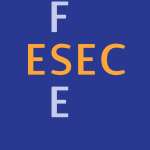 ESEC-FSE-1999-GrimaudLV #named #smarttech
ESEC-FSE-1999-GrimaudLV #named #smarttech- FACADE: A Typed Intermediate Language Dedicated to Smart Cards (GG, JLL, JJV), pp. 476–493.
 ESEC-FSE-1999-LevesonHR #design #lessons learnt #process #specification
ESEC-FSE-1999-LevesonHR #design #lessons learnt #process #specification- Designing Specification Languages for Process Control Systems: Lessons Learned and Steps to the Future (NGL, MPEH, JDR), pp. 127–145.
 ESEC-FSE-1999-WarboysBGKMMM #collaboration #composition #generative #process
ESEC-FSE-1999-WarboysBGKMMM #collaboration #composition #generative #process- Collaboration and Composition: Issues for a Second Generation Process Language (BW, DB, RMG, GNCK, KM, RM, DSM), pp. 75–90.
 ICSE-1999-MedvidovicRT #architecture #development #evolution
ICSE-1999-MedvidovicRT #architecture #development #evolution- A Language and Environment for Architecture-Based Software Development and Evolution (NM, DSR, RNT), pp. 44–53.
 CC-1999-AnlauffKP #design #prototype #tool support
CC-1999-AnlauffKP #design #prototype #tool support- Tool Support for Language Design and Prototyping with Montages (MA, PWK, AP), pp. 296–299.
 CC-1999-TourweM #object-oriented #optimisation
CC-1999-TourweM #object-oriented #optimisation- Optimizing Object-Oriented Languages Through Architechtural Transformations (TT, WDM), pp. 244–258.
 CADE-1999-Nipkow #programming language #proving #theorem proving
CADE-1999-Nipkow #programming language #proving #theorem proving- Invited Talk: Embedding Programming Languages in Theorem Provers (Abstract) (TN), p. 398.
 CAV-1999-Etessami #automaton #invariant #logic
CAV-1999-Etessami #automaton #invariant #logic- Stutter-Invariant Languages, ω-Automata, and Temporal Logic (KE), pp. 236–248.
 CSL-1999-GastinM #concurrent #parallel #programming language #semantics
CSL-1999-GastinM #concurrent #parallel #programming language #semantics- A Truly Concurrent Semantics for a Simple Parallel Programming Language (PG, MWM), pp. 515–529.
 CSL-1999-KinoshitaP #call-by #programming language
CSL-1999-KinoshitaP #call-by #programming language- Data-Refinement for Call-By-Value Programming Languages (YK, JP), pp. 562–576.
 ICLP-1999-HirataY #concurrent #declarative #logic
ICLP-1999-HirataY #concurrent #declarative #logic- Declarative Priority in a Concurrent Logic Language ON (KH, KY), pp. 215–229.
 ICLP-1999-KangT #linear #logic programming #programming language #static analysis
ICLP-1999-KangT #linear #logic programming #programming language #static analysis- A Static Analysis for Classical Linear Logic Programming Language (KSK, NT), p. 610.
 ICLP-1999-OsorioJN #declarative #functional #query
ICLP-1999-OsorioJN #declarative #functional #query- Declarative Pruning in a Functional Query Language (MO, BJ, JCN), pp. 588–604.
 RTA-1999-HofbauerH #testing
RTA-1999-HofbauerH #testing- Test Sets for the Universal and Existential Closure of Regular Tree Languages (DH, MH), pp. 205–219.
 RTA-1999-Otto #formal method #on the
RTA-1999-Otto #formal method #on the- On the Connections between Rewriting and Formal Language Theory (FO), pp. 332–355.
 RTA-1999-SaubionS #implementation #on the
RTA-1999-SaubionS #implementation #on the- On Implementation of Tree Synchronized Languages (FS, IS), pp. 382–396.
 TLCA-1999-Andreoli #coordination
TLCA-1999-Andreoli #coordination- The Coordination Language Facility and Applications (JMA), pp. 1–5.
 ASE-1998-SellinkV #assessment #development #re-engineering
ASE-1998-SellinkV #assessment #development #re-engineering- Development, Assessment, and Reengineering of Language Descriptions (MPAS, CV), pp. 314–317.
 DATE-1998-CalvezHMP #generative #multi #programmable
DATE-1998-CalvezHMP #generative #multi #programmable- A Programmable Multi-Language Generator for CoDesign (JPC, DH, FM, OP), pp. 927–928.
 HT-1998-Dyke #generative #hypermedia #visual notation
HT-1998-Dyke #generative #hypermedia #visual notation- Generating Hypertext Explanations for Visual Languages (NWVD), pp. 301–302.
 PODS-1998-NevenB #attribute grammar #documentation #query
PODS-1998-NevenB #attribute grammar #documentation #query- Expressiveness of Structured Document Query Languages Based on Attribute Grammars (FN, JVdB), pp. 11–17.
 PODS-1998-NevenBGV #database #query
PODS-1998-NevenBGV #database #query- Typed Query Languages for Databases Containing Queries (FN, JVdB, DVG, GV), pp. 189–196.
 PODS-1998-VandeurzenGG #database #linear #query
PODS-1998-VandeurzenGG #database #linear #query- An Expressive Language for Linear Spatial Database Queries (LV, MG, DVG), pp. 109–118.
 VLDB-1998-DarEGP #database #using
VLDB-1998-DarEGP #database #using- DTL’s DataSpot: Database Exploration Using Plain Language (SD, GE, SG, EP), pp. 645–649.
 VLDB-1998-GingrasL #multi #named
VLDB-1998-GingrasL #multi #named- nD-SQL: A Multi-Dimensional Language for Interoperability and OLAP (FG, LVSL), pp. 134–145.
 ITiCSE-1998-Scoy #programming language #using
ITiCSE-1998-Scoy #programming language #using- Using the BURKS 2 CD-ROM in a principles of programming languages course (FLVS), pp. 239–242.
 ITiCSE-1998-WardS #javascript #multi #programming language #student
ITiCSE-1998-WardS #javascript #multi #programming language #student- JavaScript as a first programming language for multimedia students (RW, MS), pp. 249–253.
 ESOP-1998-HenselHJT #logic #modelling #object-oriented #tool support
ESOP-1998-HenselHJT #logic #modelling #object-oriented #tool support- Reasonong about Classess in Object-Oriented Languages: Logical Models and Tools (UH, MH, BJ, HT), pp. 105–121.
 ESOP-1998-HondaVK #programming
ESOP-1998-HondaVK #programming- Language Primitives and Type Discipline for Structured Communication-Based Programming (KH, VTV, MK), pp. 122–138.
 FASE-1998-BradleyHKR #modelling #specification
FASE-1998-BradleyHKR #modelling #specification- Integrating AORTA with Model-Based Data Specification Languages (SB, WH, DK, AR), pp. 54–70.
 FASE-1998-Dubois #formal method #named #requirements #tool support
FASE-1998-Dubois #formal method #named #requirements #tool support- ALBERT: A Formal Language and Its Supporting Tools for Requirements Engineering (ED), pp. 322–325.
 FASE-1998-KahrsS #design #specification
FASE-1998-KahrsS #design #specification- Reflections on the Design of a Specification language (SK, DS), pp. 154–170.
 FASE-1998-Lechner #concept #concurrent #object-oriented #reuse
FASE-1998-Lechner #concept #concurrent #object-oriented #reuse- Constructs, Concepts and Criteria for Reuse in Concurrent Object-Oriented languages (UL), pp. 171–187.
 FoSSaCS-1998-Matz #on the
FoSSaCS-1998-Matz #on the- On Piecewise Testable, Starfree, and Recognizable Picture Languages (OM), pp. 203–210.
 FoSSaCS-1998-Moggi #category theory
FoSSaCS-1998-Moggi #category theory- Functor Categories and Two-Level Languages (EM), pp. 211–225.
 FoSSaCS-1998-NiemannO #context-sensitive grammar
FoSSaCS-1998-NiemannO #context-sensitive grammar- The Church-Rosser Languages Are the Deterministic Variants of the Growing Context-Sensitive Languages (GN, FO), pp. 243–257.
 WRLA-1998-VisserB
WRLA-1998-VisserB- A core language for rewriting (EV, ZEAB), pp. 422–441.
 CSMR-1998-Marchesi #metric #modelling #object-oriented
CSMR-1998-Marchesi #metric #modelling #object-oriented- OOA Metrics for the Unified Modeling Language (MM), pp. 67–73.
 ICSM-1998-CifuentesSF #assembly
ICSM-1998-CifuentesSF #assembly- Assembly to High-Level Language Translation (CC, DS, AF), pp. 228–237.
 ICSM-1998-HallHW #deployment
ICSM-1998-HallHW #deployment- Evaluating Software Deployment Languages and Schema (RSH, DH, ALW), p. 177–?.
 IWPC-1998-Kamp #approach #comprehension #multi #repository #tool support
IWPC-1998-Kamp #approach #comprehension #multi #repository #tool support- Managing a Multi-File, Multi-Language Software Repository for Program Comprehension Tools 3/4 A Generic Approach (MK), pp. 64–71.
 WCRE-1998-KullbachWDE #comprehension #multi
WCRE-1998-KullbachWDE #comprehension #multi- Program Comprehension in Multi-Language Systems (BK, AW, PD, JE), pp. 135–143.
 PLDI-1998-FlattF #named
PLDI-1998-FlattF #named- Units: Cool Modules for HOT Languages (MF, MF), pp. 236–248.
 PLDI-1998-FrigoLR #implementation #parallel #thread
PLDI-1998-FrigoLR #implementation #parallel #thread- The Implementation of the Cilk-5 Multithreaded Language (MF, CEL, KHR), pp. 212–223.
 PLDI-1998-LewisLS #array #evaluation #implementation
PLDI-1998-LewisLS #array #evaluation #implementation- The Implementation and Evaluation of Fusion and Contraction in Array Languages (ECL, CL, LS), pp. 50–59.
 SAS-1998-Volpe #alias #first-order #logic programming #source code
SAS-1998-Volpe #alias #first-order #logic programming #source code- A First-Order Language for Expressing Aliasing and Type Properties of Logic Programs (PV), pp. 184–199.
 FLOPS-1998-AbramovG #approach #programming language #semantics #standard
FLOPS-1998-AbramovG #approach #programming language #semantics #standard- Semantics Modifiers: An Approach to Non-Standard Semantics of Programming Languages (SMA, RG), pp. 247–270.
 ICALP-1998-Abadi
ICALP-1998-Abadi- Protection in Programming-Language Translations (MA), pp. 868–883.
 ICALP-1998-BorchertKS #first-order #on the
ICALP-1998-BorchertKS #first-order #on the- On Existentially First-Order Definable Languages and Their Relation to NP (BB, DK, FS), pp. 17–28.
 ICALP-1998-HenzingerRS #realtime
ICALP-1998-HenzingerRS #realtime- The Regular Real-Time Languages (TAH, JFR, PYS), pp. 580–591.
 ICALP-1998-PnueliSS #validation
ICALP-1998-PnueliSS #validation- Translation Validation for Synchronous Languages (AP, OS, MS), pp. 235–246.
 WIA-1998-Blum #on the #parsing
WIA-1998-Blum #on the #parsing- On Parsing LL-Languages (NB), pp. 13–21.
 WIA-1998-CampeanuSY #finite
WIA-1998-CampeanuSY #finite- Minimal Cover-Automata for Finite Languages (CC, NS, SY), pp. 43–56.
 WIA-1998-Goeman #linear #lr #on the #parsing #string
WIA-1998-Goeman #linear #lr #on the #parsing #string- On Parsing and Condensing Substrings of LR Languages in Linear Time (HG), pp. 22–42.
 FM-1998-KutterST #design #domain-specific language #lifecycle
FM-1998-KutterST #design #domain-specific language #lifecycle- Integrating Domain Specific Language Design in the Software Life Cycle (PWK, DS, LT), pp. 196–212.
 AFP-1998-Augustsson98 #dependent type #named
AFP-1998-Augustsson98 #dependent type #named- Cayenne — A Language with Dependent Types (LA), pp. 240–267.
 AFP-1998-Sheard98 #ml #programming language #staged #using
AFP-1998-Sheard98 #ml #programming language #staged #using- Using MetaML: A Staged Programming Language (TS), pp. 207–239.
 AFP-1998-SwierstraAS98 #combinator #design #implementation
AFP-1998-SwierstraAS98 #combinator #design #implementation- Designing and Implementing Combinator Languages (SDS, PRAA, JS), pp. 150–206.
 ICFP-1998-Augustsson #dependent type #named
ICFP-1998-Augustsson #dependent type #named- Cayenne — a Language with Dependent Types (LA), pp. 239–250.
 ICFP-1998-Erlich #design pattern #implementation
ICFP-1998-Erlich #design pattern #implementation- Implementing Design Patterns as Language Constructs (YDE), p. 348.
 ICFP-1998-FinneLMJ #haskell #interface #named
ICFP-1998-FinneLMJ #haskell #interface #named- H/Direct: A Binary Foreign Language Interface for Haskell (SF, DL, EM, SLPJ), pp. 153–162.
 ICFP-1998-Haiming #context-free grammar #recursion
ICFP-1998-Haiming #context-free grammar #recursion- Combining CFG and Recursive Functions to Get a New Language (HC), p. 351.
 ICFP-1998-HicksKMGN #named #network
ICFP-1998-HicksKMGN #named #network- PLAN: A Packet Language for Active Networks (MWH, PK, JTM, CAG, SN), pp. 86–93.
 ICFP-1998-Kiselyov98b
ICFP-1998-Kiselyov98b- A Delegation Language to Request Weather Products and a Scheme of Its Interpretation (OK), p. 343.
 ICFP-1998-Nordlander #polymorphism #type system
ICFP-1998-Nordlander #polymorphism #type system- Pragmatic Subtyping in Polymorphic Languages (JN), pp. 216–227.
 ICFP-1998-ShaoLM #implementation
ICFP-1998-ShaoLM #implementation- Implementing Typed Intermediate Languages (ZS, CL, SM), pp. 313–323.
 ICFP-1998-Yang #encoding
ICFP-1998-Yang #encoding- Encoding Types in ML-Like Languages (ZY), pp. 289–300.
 IFL-1998-Assmann #coordination #implementation #performance #process
IFL-1998-Assmann #coordination #implementation #performance #process- Performance Results for an Implementation of the Process Coordination Language K2 (CA), pp. 1–19.
 IFL-1998-HallBTK #functional #parallel #semantics #strict #towards
IFL-1998-HallBTK #functional #parallel #semantics #strict #towards- Towards an Operational Semantics for a Parallel Non-Strict Functional Language (JGH, CABF, PWT, DJK), pp. 54–71.
 TAGT-1998-BardohlE #concept #editing #visual notation
TAGT-1998-BardohlE #concept #editing #visual notation- Conceptual Model of the Graphical Editor GENGED for the Visual Definition of Visual Languages (RB, HE), pp. 252–266.
 TAGT-1998-EngelfrietM #graph grammar
TAGT-1998-EngelfrietM #graph grammar- Tree Languages Generated be Context-Free Graph Grammars (JE, SM), pp. 15–29.
 TAGT-1998-FischerNTZ #diagrams #graph grammar #java #modelling
TAGT-1998-FischerNTZ #diagrams #graph grammar #java #modelling- Story Diagrams: A New Graph Rewrite Language Based on the Unified Modeling Language and Java (TF, JN, LT, AZ), pp. 296–309.
 TAGT-1998-MunchSW #constraints #multi
TAGT-1998-MunchSW #constraints #multi- Integrity Constraints in the Multi-paradigm Language PROGRES (MM, AS, AJW), pp. 338–351.
 CHI-1998-WalkerFFMH #email #interface #what
CHI-1998-WalkerFFMH #email #interface #what- What can I say? Evaluating a Spoken Language Interface to Email (MAW, JF, GDF, CM, DH), pp. 582–589.
 ICML-1998-LittmanJK #corpus #independence #learning #representation
ICML-1998-LittmanJK #corpus #independence #learning #representation- Learning a Language-Independent Representation for Terms from a Partially Aligned Corpus (MLL, FJ, GAK), pp. 314–322.
 SIGIR-1998-BallesterosC #ambiguity #retrieval
SIGIR-1998-BallesterosC #ambiguity #retrieval- Resolving Ambiguity for Cross-Language Retrieval (LB, WBC), pp. 64–71.
 SIGIR-1998-EichmannRS #information retrieval
SIGIR-1998-EichmannRS #information retrieval- Cross-Language Information Retrieval with the UMLS Metathesaurus (DE, MER, PS), pp. 72–80.
 SIGIR-1998-Pirkola #information retrieval #query #taxonomy
SIGIR-1998-Pirkola #information retrieval #query #taxonomy- The Effects of Query Structure and Dictionary Setups in Dictionary-Based Cross-Language Information Retrieval (AP), pp. 55–63.
 SIGIR-1998-PonteC #approach #information retrieval #modelling
SIGIR-1998-PonteC #approach #information retrieval #modelling- A Language Modeling Approach to Information Retrieval (JMP, WBC), pp. 275–281.
 UML-1998-HamieCHKM #constraints #ocl
UML-1998-HamieCHKM #constraints #ocl- Reflections on the Object Constraint Language (AH, FC, JH, SK, RM), pp. 162–172.
 UML-1998-JezequelGP #distributed #modelling #validation
UML-1998-JezequelGP #distributed #modelling #validation- Validating Distributed Software Modeled with the Unified Modeling Language (JMJ, ALG, FP), pp. 365–377.
 UML-1998-KleppeWC #constraints #metamodelling #ocl #uml
UML-1998-KleppeWC #constraints #metamodelling #ocl #uml- Informal Formality? The Object Constraint Language and Its Application in the UML Metamodel (AK, JW, SC), pp. 148–161.
 UML-1998-MellorTAL #execution #precise #semantics #uml
UML-1998-MellorTAL #execution #precise #semantics #uml- An Action Language for UML: Proposal for a Precise Execution Semantics (SJM, SRT, RA, PL), pp. 307–318.
 ECOOP-1998-FritzsonE #modelling #named #object-oriented #simulation
ECOOP-1998-FritzsonE #modelling #named #object-oriented #simulation- Modelica — A Unified Object-Oriented Language for System Modelling and Simulation (PF, VE), pp. 67–90.
 ECOOP-1998-Guimaraes #static typing
ECOOP-1998-Guimaraes #static typing- Reflection for Statically Typed Languages (JdOG), pp. 440–461.
 ECOOP-1998-MasuharaY #concurrent #design #partial evaluation
ECOOP-1998-MasuharaY #concurrent #design #partial evaluation- Design and Partial Evaluation of Meta-Objects for a Concurrent Reflective Language (HM, AY), pp. 418–439.
 OOPSLA-1998-BrachaOSW #java #programming language
OOPSLA-1998-BrachaOSW #java #programming language- Making the Future Safe for the Past: Adding Genericity to the Java Programming Language (GB, MO, DS, PW), pp. 183–200.
 OOPSLA-1998-CartwrightS #java #programming language #runtime
OOPSLA-1998-CartwrightS #java #programming language #runtime- Compatible Genericity with Run-Time Types for the Java Programming Language (RC, GLSJ), pp. 201–215.
 OOPSLA-1998-FreundM #bytecode #java #type system
OOPSLA-1998-FreundM #bytecode #java #type system- A Type System for Object Initialization in the Java Bytecode Language (SNF, JCM), pp. 310–327.
 TOOLS-ASIA-1998-LuJLFCXW #domain model #modelling #named
TOOLS-ASIA-1998-LuJLFCXW #domain model #modelling #named- OSNET — A Language for Domain Modeling (RL, ZJ, LL, GF, GC, XX, SW), p. 83–?.
 TOOLS-ASIA-1998-NgHS #multi #paradigm
TOOLS-ASIA-1998-NgHS #multi #paradigm- A Multiparadigm Language for Developing Agent-oriented Applications (KWN, LH, YS), p. 18–?.
 TOOLS-PACIFIC-1998-Chiba #metaprogramming #object-oriented
TOOLS-PACIFIC-1998-Chiba #metaprogramming #object-oriented- Macro Processing in Object-Oriented Languages (SC), pp. 113–126.
 TOOLS-PACIFIC-1998-Noble #design #object-oriented #pattern matching #towards
TOOLS-PACIFIC-1998-Noble #design #object-oriented #pattern matching #towards- Towards a Pattern Language for Object Oriented Design (JN), pp. 2–13.
 TOOLS-USA-1998-Joyner #c++ #comparison #eiffel #java #object-oriented
TOOLS-USA-1998-Joyner #c++ #comparison #eiffel #java #object-oriented- OO Language Comparison: Java, Eiffel and C++ (IJ), p. 405.
 TOOLS-USA-1998-Mitchell #analysis #constraints #contract #ocl #uml
TOOLS-USA-1998-Mitchell #analysis #constraints #contract #ocl #uml- Analysis by Contract: An Introduction to UML’s Object Constraint Language (OCL) (RM), p. 448–?.
 TOOLS-USA-1998-Watkins #contract #interface #programming #using
TOOLS-USA-1998-Watkins #contract #interface #programming #using- Using Interface Definition Languages to Support Path Expressions and Programming by Contract (DW), p. 308–?.
 ALP-PLILP-1998-Arenas-SanchezLR #constraints #functional #lazy evaluation #logic #multi
ALP-PLILP-1998-Arenas-SanchezLR #constraints #functional #lazy evaluation #logic #multi- Embedding Multiset Constraints into a Lazy Functional Logic Language (PAS, FJLF, MRA), pp. 429–444.
 ALP-PLILP-1998-ConselM #architecture #development #using
ALP-PLILP-1998-ConselM #architecture #development #using- Architecture Software Using: A Methodology for Language Development (CC, RM), pp. 170–194.
 ALP-PLILP-1998-Pitts #higher-order #semantics
ALP-PLILP-1998-Pitts #higher-order #semantics- Operational Versus Denotational Methods in the Semantics of Higher Order Languages (AMP), pp. 282–283.
 ALP-PLILP-1998-PontelliRG #complexity #object-oriented
ALP-PLILP-1998-PontelliRG #complexity #object-oriented- The Complexity of Late-Binding in Dynamic Object-Oriented Languages (EP, DR, GG), pp. 213–229.
 LOPSTR-1998-FuchsSS #logic #specification
LOPSTR-1998-FuchsSS #logic #specification- Attempto Controlled English — Not Just Another Logic Specification Language (NEF, US, RS), pp. 1–20.
 POPL-1998-JagannathanTWW #alias #analysis #higher-order
POPL-1998-JagannathanTWW #alias #analysis #higher-order- Single and Loving It: Must-Alias Analysis for Higher-Order Languages (SJ, PT, SW, AKW), pp. 329–341.
 POPL-1998-JonesSLT #haskell #ml
POPL-1998-JonesSLT #haskell #ml- Bridging the Gulf: A Common Intermediate Language for ML and Haskell (SLPJ, MS, JL, APT), pp. 49–61.
 POPL-1998-MorrisettWCG #assembly #system f
POPL-1998-MorrisettWCG #assembly #system f- From System F to Typed Assembly Language (JGM, DW, KC, NG), pp. 85–97.
 POPL-1998-RielyH #distributed #mobile #process
POPL-1998-RielyH #distributed #mobile #process- A Typed Language for Distributed Mobile Processes (Extended Abstract) (JR, MH), pp. 378–390.
 POPL-1998-SmithV #concurrent #data flow #imperative #multi #thread
POPL-1998-SmithV #concurrent #data flow #imperative #multi #thread- Secure Information Flow in a Multi-Threaded Imperative Language (GS, DMV), pp. 355–364.
 REFSQ-1998-FabbriniFGGR #natural language #on the #quality #requirements
REFSQ-1998-FabbriniFGGR #natural language #on the #quality #requirements- On Linguistic Quality of Natural Language Requirements (FF, MF, VG, SG, SR), pp. 57–62.
 SAC-1998-BeschHW #design #interface #modelling #parallel
SAC-1998-BeschHW #design #interface #modelling #parallel- Parallel scientific computing in PROMOTER: on the interface between appliction modelling and language design (MB, GH, MW), pp. 677–683.
 SAC-1998-ChanVSGA #specification #workflow
SAC-1998-ChanVSGA #specification #workflow- A specification language for the WIDE workflow model (DKCC, JV, GS, PWPJG, PMGA), pp. 197–199.
 SAC-1998-DentiNO #coordination #on the #power of #programming
SAC-1998-DentiNO #coordination #on the #power of #programming- On the expressive power of a language for programming coordination media (ED, AN, AO), pp. 169–177.
 SAC-1998-PapadopoulosA #coordination #information management #modelling #process #using
SAC-1998-PapadopoulosA #coordination #information management #modelling #process #using- Modelling activities in information systems using the coordination language MANIFOLD (GAP, FA), pp. 185–193.
 FSE-1998-Jackson #analysis #design
FSE-1998-Jackson #analysis #design- An Intermedicate Design Language and Its Analysis (DJ), pp. 121–130.
 ICSE-1998-RobbinsMR #architecture #design #standard
ICSE-1998-RobbinsMR #architecture #design #standard- Integrating Architecture Description Languages with a Standard Design Method (JER, NM, DFR), pp. 209–218.
 CC-1998-Burnett #challenge #programming language #research #visual notation
CC-1998-Burnett #challenge #programming language #research #visual notation- Challenges and Oppurtunities Visual Programming Languages Bring to Programming Language Research (MMB), p. 188.
 CC-1998-KuiperS #generative #incremental #named #tool support
CC-1998-KuiperS #generative #incremental #named #tool support- Lrc — A Generator for Incremental Language-Oriented Tools (MFK, JS), pp. 298–301.
 CC-1998-LapkowskiH #multi #pointer
CC-1998-LapkowskiH #multi #pointer- Extended SSA Numbering: Introducing SSA Properties to Language with Multi-level Pointers (CL, LJH), pp. 128–143.
 ISMM-1998-WallaceR #functional #lazy evaluation
ISMM-1998-WallaceR #functional #lazy evaluation- The Bits Between The Lambdas: Binary Data in a Lazy Functional Language (MW, CR), pp. 107–117.
 LCTES-1998-LiuG #analysis #automation #bound
LCTES-1998-LiuG #analysis #automation #bound- Automatic Accurate Time-Bound Analysis for High-Level Languages (YAL, GG), pp. 31–40.
 JICSLP-1998-DovierPRP #finite #on the #representation #set
JICSLP-1998-DovierPRP #finite #on the #representation #set- On the Representation and Management of Finite Sets in CLP Languages (AD, CP, GR, EP), pp. 40–54.
 JICSLP-1998-HodasWTK #implementation #linear #logic programming #performance #programming language
JICSLP-1998-HodasWTK #implementation #linear #logic programming #performance #programming language- Efficient Implementation of a Linear Logic Programming Language (JSH, KMW, NT, KSK), pp. 145–159.
 JICSLP-1998-Zhou #algorithm #compilation #constraints
JICSLP-1998-Zhou #algorithm #compilation #constraints- A High-Level Intermediate Language and the Algorithms for Compiling Finite-Domain Constraints (NFZ), pp. 70–84.
 LICS-1998-Bernstein #congruence #higher-order #semantics #theorem
LICS-1998-Bernstein #congruence #higher-order #semantics #theorem- A Congruence Theorem for Structured Operational Semantics of Higher-Order Languages (KLB), pp. 153–164.
 ASE-1997-AmbriolaG #natural language #requirements
ASE-1997-AmbriolaG #natural language #requirements- Processing Natural Language Requirements (VA, VG), pp. 36–45.
 ASE-1997-PunshonTSF #case study #natural language #specification
ASE-1997-PunshonTSF #case study #natural language #specification- From Formal Specifications to Natural Language: A Case Study (JMP, JPT, PGS, PSF), pp. 309–310.
 DAC-1997-HadjiyiannisHD #named #set
DAC-1997-HadjiyiannisHD #named #set- ISDL: An Instruction Set Description Language for Retargetability (GH, SH, SD), pp. 299–302.
 EDTC-1997-RomanowiczLLRABMP #hardware #modelling #simulation #transducer #using
EDTC-1997-RomanowiczLLRABMP #hardware #modelling #simulation #transducer #using- Modeling and simulation of electromechanical transducers in microsystems using an analog hardware description language (BR, ML, PL, PR, HPA, AB, VM, FP), pp. 119–123.
 ICDAR-1997-ChaudhuriP
ICDAR-1997-ChaudhuriP- An OCR System to Read Two Indian Language Scripts: Bangla and Devnagari (Hindi) (BBC, UP), pp. 1011–1015.
 ICDAR-1997-CracknellDD #approach #object-oriented
ICDAR-1997-CracknellDD #approach #object-oriented- An Object-Oriented form Description Language and Approach to Handwritten Form Processing (CC, ACD, LD), p. 180–?.
 ICDAR-1997-HurstD #layout
ICDAR-1997-HurstD #layout- Layout and Language: Preliminary Investigations in Recognizing the Structure of Tables (MH, SD), pp. 1043–1047.
 ICDAR-1997-NobileBSK #documentation #identification #online #using #word
ICDAR-1997-NobileBSK #documentation #identification #online #using #word- Language identification of on-line documents using word shapes (NN, SB, CYS, SK), pp. 258–262.
 PODS-1997-BenediktL #database #relational
PODS-1997-BenediktL #database #relational- Languages for Relational Databases over Interpreted Structures (MB, LL), pp. 87–98.
 PODS-1997-GyssensBG #geometry #query
PODS-1997-GyssensBG #geometry #query- Complete Geometrical Query Languages (MG, JVdB, DVG), pp. 62–67.
 SIGMOD-1997-GingrasLSPS #multi
SIGMOD-1997-GingrasLSPS #multi- Languages for Multi-database Interoperability (FG, LVSL, INS, DP, NS), pp. 536–538.
 VLDB-1997-ChavdaW #query #towards #visual notation
VLDB-1997-ChavdaW #query #towards #visual notation- Towards an ODMG-Compliant Visual Object Query Language (MC, PTW), pp. 456–465.
 VLDB-1997-MaratheS #array
VLDB-1997-MaratheS #array- A Language for Manipulating Arrays (APM, KS), pp. 46–55.
 ITiCSE-WGR-1997-Jimenez-PerisP #detection #independence
ITiCSE-WGR-1997-Jimenez-PerisP #detection #independence- A language-independent plagiarism detection system (poster) (RJP, MPM), p. 149.
 TACAS-1997-Boulton #reasoning
TACAS-1997-Boulton #reasoning- A Tool to Support Formal Reasoning about Computer Languages (RJB), pp. 81–95.
 PEPM-1997-HornofN #analysis #imperative
PEPM-1997-HornofN #analysis #imperative- Accurate Binding-Time Analysis For Imperative Languages: Flow, Context, and Return Sensitivity (LH, JN), pp. 63–73.
 PEPM-1997-MelskiR #constraints #context-free grammar #reachability #set
PEPM-1997-MelskiR #constraints #context-free grammar #reachability #set- Interconveritibility of Set Constraints and Context-Free Language Reachability (DM, TWR), pp. 74–89.
 PEPM-1997-Sheard #online #polymorphism
PEPM-1997-Sheard #online #polymorphism- A Type-directed, On-line, Partial Evaluator for a Polymorphic Language (TS), pp. 22–35.
 PLDI-1997-TauraY #approach #compilation #effectiveness #implementation #multi #performance #thread
PLDI-1997-TauraY #approach #compilation #effectiveness #implementation #multi #performance #thread- Fine-grain Multithreading with Minimal Compiler Support — A Cost Effective Approach to Implementing Efficient Multithreading Languages (KT, AY), pp. 320–333.
 PLDI-1997-WagnerG #analysis #incremental #programming language
PLDI-1997-WagnerG #analysis #incremental #programming language- Incremental Analysis of real Programming Languages (TAW, SLG), pp. 31–43.
 SAS-1997-IgarashiK #analysis #communication #concurrent #programming language #type system
SAS-1997-IgarashiK #analysis #communication #concurrent #programming language #type system- Type-Based Analysis of Communication for Concurrent Programming Languages (AI, NK), pp. 187–201.
 SAS-1997-JagannathanWW #analysis
SAS-1997-JagannathanWW #analysis- Type-Directed Flow Analysis for Typed Intermediate Languages (SJ, SW, AKW), pp. 232–249.
 SAS-1997-PanitzS #automation #functional #higher-order #named #proving #source code #strict #termination
SAS-1997-PanitzS #automation #functional #higher-order #named #proving #source code #strict #termination- TEA: Automatically Proving Termination of Programs in a Non-strict Higher-Order Functional Language (SEP, MSS), pp. 345–360.
 DLT-1997-Dassow
DLT-1997-Dassow- Some Remarks on Extended Reular Languages (JD), pp. 477–488.
 DLT-1997-DassowMP #context-free grammar
DLT-1997-DassowMP #context-free grammar- Point mutations in context-free languages (JD, VM, GP), pp. 429–446.
 DLT-1997-DavidES #learning #string
DLT-1997-DavidES #learning #string- Learning String Adjunct and Tree Adjunct Languages (NGD, JDE, KGS), pp. 411–427.
 DLT-1997-IkedaA #complexity #on the
DLT-1997-IkedaA #complexity #on the- On the Complexity of Languages Definable by Hereditary Elementary Formal Systems (DI, HA), pp. 223–235.
 DLT-1997-Julia
DLT-1997-Julia- A characteristic language for rational ω-power (SJ), pp. 299–308.
 DLT-1997-Kuich #automaton #named
DLT-1997-Kuich #automaton #named- Semirings: A basis for a mathematical automata and language theory (WK), pp. 49–60.
 DLT-1997-MateescuSY #context-free grammar #decidability
DLT-1997-MateescuSY #context-free grammar #decidability- Decidability of fairness for context-free languages (AM, KS, SY), pp. 351–364.
 DLT-1997-Moshkov #complexity #nondeterminism #recognition #regular expression #word
DLT-1997-Moshkov #complexity #nondeterminism #recognition #regular expression #word- Complexity of Deterministic and Nondeterministic Decision Trees for Regular Language Word Recognition (MM), pp. 343–349.
 DLT-1997-Zhiltsova #context-free grammar #probability
DLT-1997-Zhiltsova #context-free grammar #probability- An Optimal Coding for Stochastic Context-Free Languages with Unique Derivation (LPZ), pp. 539–550.
 ICALP-1997-BeaudryLT #finite
ICALP-1997-BeaudryLT #finite- Finite Loops Recognize Exactly the Regular Open Languages (MB, FL, DT), pp. 110–120.
 ICALP-1997-KarhumakiPM #equation #word
ICALP-1997-KarhumakiPM #equation #word- The Expressibility of Languages and Relations by Word Equations (JK, WP, FM), pp. 98–109.
 WIA-1997-Caron #automaton #named #regular expression
WIA-1997-Caron #automaton #named #regular expression- LANGAGE: A Maple Package for Automaton Characterization of Regular Languages (PC), pp. 46–55.
 WIA-1997-KirazE #automaton #implementation #multi #prolog #speech
WIA-1997-KirazE #automaton #implementation #multi #prolog #speech- Multi-tape Automata for Speech and Language Systems: A Prolog Implementation (GAK, EGE), pp. 87–103.
 WIA-1997-Ponty #performance #regular expression
WIA-1997-Ponty #performance #regular expression- An Efficient Null-Free Procedure for Deciding Regular Language Membership (JLP), pp. 159–170.
 WIA-1997-SalomaaWY #implementation #performance #regular expression #using
WIA-1997-SalomaaWY #implementation #performance #regular expression #using- Efficient Implementation of Regular Languages Using R-AFA (KS, XW, SY), pp. 176–184.
 FME-1997-AndersonT #diagrams #programmable #programming language
FME-1997-AndersonT #diagrams #programmable #programming language- Diagrams and Programming Languages for Programmable Controllers (SA, KT), pp. 1–19.
 ICFP-1997-AertsV #functional #user interface
ICFP-1997-AertsV #functional #user interface- A GUI on Top of a Functional Language (KA, KDV), p. 308.
 ICFP-1997-DussartHT #imperative
ICFP-1997-DussartHT #imperative- Type Specialization for Imperative Languages (DD, JH, PT), pp. 204–216.
 ICFP-1997-Wailly #data flow #functional #named #parallel
ICFP-1997-Wailly #data flow #functional #named #parallel- λ-Flow: A Parallel Functional Synchronous Dataflow Language (GdW), p. 322.
 IFL-1997-Chitil #functional #lazy evaluation
IFL-1997-Chitil #functional #lazy evaluation- Common Subexpressions Are Uncommon in Lazy Functional Languages (OC), pp. 53–71.
 IFL-1997-DidrichGMP #algebra #in the large #programming
IFL-1997-DidrichGMP #algebra #in the large #programming- Programming in the Large: The Algebraic-Functional Language Opal 2α (KD, WG, CM, PP), pp. 322–337.
 IFL-1997-JonesNO #assembly #named
IFL-1997-JonesNO #assembly #named- C-: A Portable Assembly Language (SLPJ, TN, DO), pp. 1–19.
 HCI-CC-1997-KameiMSH #integration
HCI-CC-1997-KameiMSH #integration- Creating a Source and Target Language Mixed Stage for Integration of Human Knowledge into Machine Translation (SiK, KM, KS, KH), pp. 825–828.
 HCI-CC-1997-SavidisS97a #complexity #declarative #framework #specification
HCI-CC-1997-SavidisS97a #complexity #declarative #framework #specification- Agent Classes for Managing Dialogue Control Specification Complexity: A Declarative Language Framework (AS, CS), pp. 461–464.
 HCI-SEC-1997-HigashinoK #video
HCI-SEC-1997-HigashinoK #video- A Hierarchical Browsing System for Sign Language Video (SH, HK), pp. 287–290.
 HCI-SEC-1997-LuII
HCI-SEC-1997-LuII- An Active Gazing-Line System for Improving Sign-Language Conversation (SL, KI, SI), pp. 283–286.
 HCI-SEC-1997-MurphyKG #interface #learning
HCI-SEC-1997-MurphyKG #interface #learning- Enhancing the Interface to Provide Intelligent Computer Aided Language Learning (MM, AK, AG), pp. 149–152.
 HCI-SEC-1997-Ntuen #formal method
HCI-SEC-1997-Ntuen #formal method- A Formal Method for Deriving Command Production Language from Human Intents (CAN), pp. 257–260.
 HCI-SEC-1997-TakedaI #named
HCI-SEC-1997-TakedaI #named- ALAWAI: Agent Languages and AgentWare for Agent Invention (KT, MI), pp. 667–670.
 AdaEurope-1997-CoolingDC #development #education #programming language
AdaEurope-1997-CoolingDC #development #education #programming language- Computer Aided Teaching of Programming Languages: An Ada-specific Development (JEC, ND, JC), pp. 35–45.
 EDOC-1997-VolmanJSWM #enterprise #modelling #process
EDOC-1997-VolmanJSWM #enterprise #modelling #process- Tele-Education Process Modelling Supported by The ODP Enterprise Viewpoint Language (CV, VJ, MvS, IW, EM), pp. 2–12.
 KDD-1997-HahnS #information management #natural language
KDD-1997-HahnS #information management #natural language- Deep Knowledge Discovery from Natural Language Texts (UH, KS), pp. 175–178.
 SIGIR-1997-BallesterosC #information retrieval #query
SIGIR-1997-BallesterosC #information retrieval #query- Phrasal Translation and Query Expansion Techniques for Cross-language Information Retrieval (LB, WBC), pp. 84–91.
 SIGIR-1997-DavisO #implementation #named #retrieval #scalability
SIGIR-1997-DavisO #implementation #named #retrieval #scalability- QUILT: Implementing a Large-scale Cross-language Text Retrieval System (MWD, WCO), pp. 92–98.
 SIGIR-1997-KlavansTJ #automation #effectiveness #multi #natural language #semiparsing #speech
SIGIR-1997-KlavansTJ #automation #effectiveness #multi #natural language #semiparsing #speech- Effective Use of Natural Language Processing Techniques for Automatic Conflation of Multi-Word Terms: The Role of Derivational Morphology, Part of Speech Tagging, and Shallow Parsing (ET, JK, CJ), pp. 148–155.
 SIGIR-1997-SheridanWS #performance #retrieval #speech
SIGIR-1997-SheridanWS #performance #retrieval #speech- Cross Language Speech Retrieval: Establishing a Baseline Performance (PS, MW, PS), pp. 99–108.
 UML-1997-Frank #modelling #object-oriented #open science #research #state of the art
UML-1997-Frank #modelling #object-oriented #open science #research #state of the art- Object-Oriented Modeling Languages: State of the Art and Open Research Questions (UF), pp. 14–31.
 UML-1997-Prasse #comparison #evaluation #modelling #object-oriented #uml
UML-1997-Prasse #comparison #evaluation #modelling #object-oriented #uml- Evaluation of Object-Oriented Modelling Languages: A Comparison Between OML and UML (MP), pp. 58–75.
 UML-1997-SeemannG #design #named #object-oriented #programming language
UML-1997-SeemannG #design #named #object-oriented #programming language- UMLscript: A Programming Language for Object-Oriented Design (JS, JWvG), pp. 160–169.
 ECOOP-1997-BenzakenS #constraints #database #object-oriented #programming language
ECOOP-1997-BenzakenS #constraints #database #object-oriented #programming language- Static Integrity Constraint Management in Object-Oriented Database Programming Languages via Predicate Transformers (VB, XS), pp. 60–84.
 ECOOP-1997-BreuHHKPRT #formal method #modelling #towards
ECOOP-1997-BreuHHKPRT #formal method #modelling #towards- Towards a Formalization of the Unified Modeling Language (RB, UH, CH, CK, BP, BR, VT), pp. 344–366.
 ECOOP-1997-BrucePF #object-oriented #type system
ECOOP-1997-BrucePF #object-oriented #type system- Subtyping Is Not a Good “Match” for Object-Oriented Languages (KBB, LP, AF), pp. 104–127.
 ECOOP-1997-HolstS #framework #inheritance #object-oriented
ECOOP-1997-HolstS #framework #inheritance #object-oriented- A General Framework for Inheritance Management and Method Dispatch in Object-Oriented Languages (WH, DS), pp. 276–301.
 OOPSLA-1997-AgesenFM #java
OOPSLA-1997-AgesenFM #java- Adding Type Parameterization to the Java Language (OA, SNF, JCM), pp. 49–65.
 OOPSLA-1997-GroveDDC #graph #object-oriented
OOPSLA-1997-GroveDDC #graph #object-oriented- Call Graph Construction in Object-Oriented Languages (DG, GD, JD, CC), pp. 108–124.
 TOOLS-ASIA-1997-Coplien97a #c++ #programming #using
TOOLS-ASIA-1997-Coplien97a #c++ #programming #using- Advanced C++ Programming Styles: Using C++ as a Higher-Level Language (JC), pp. 418–419.
 TOOLS-ASIA-1997-Diehl #modelling #object-oriented
TOOLS-ASIA-1997-Diehl #modelling #object-oriented- VRML++: A Language for Object-Oriented Virtual-Reality Models (SD), pp. 141–150.
 TOOLS-ASIA-1997-WuCMY #component #named #object-oriented
TOOLS-ASIA-1997-WuCMY #component #named #object-oriented- JBCDL: An Object-Oriented Component Description Language (QW, JC, HM, FY), pp. 198–205.
 TOOLS-PACIFIC-1997-CasadeiA #implementation
TOOLS-PACIFIC-1997-CasadeiA #implementation- A Language for Implementing Computational Mechanics Applications (FC, JA), pp. 52–67.
 TOOLS-PACIFIC-1997-Gil #object-oriented
TOOLS-PACIFIC-1997-Gil #object-oriented- Extendability vs. Substitutability in OO Languages (JYG), p. 368.
 TOOLS-PACIFIC-1997-Holmes #concurrent #java #library #programming
TOOLS-PACIFIC-1997-Holmes #concurrent #java #library #programming- Concurrent Programming in Java: Language and Libraries (DH), p. 371.
 TOOLS-PACIFIC-1997-Thomas #modelling
TOOLS-PACIFIC-1997-Thomas #modelling- Introduction to the Unified Modeling Language (RT), p. 354.
 TOOLS-USA-1997-GolubskiP #named #object-oriented
TOOLS-USA-1997-GolubskiP #named #object-oriented- SOLAT — A Simple Object-Oriented Language Analyzing Tool (WG, BP), p. 99–?.
 TOOLS-USA-1997-HolstS #incremental #object-oriented
TOOLS-USA-1997-HolstS #incremental #object-oriented- Incremental Table-Based Method Dispatch for Reflective Object-Oriented Languages (WH, DS), p. 63–?.
 TOOLS-USA-1997-Normark #design #modelling #object-oriented #towards
TOOLS-USA-1997-Normark #design #modelling #object-oriented #towards- Towards an Abstract Language for Dynamic Modeling in Object-Oriented Design (KN), pp. 120–131.
 TOOLS-USA-1997-Rossum #python
TOOLS-USA-1997-Rossum #python- A Tour of the Python Language (GvR), p. 370.
 TOOLS-USA-1997-Schmidt97a
TOOLS-USA-1997-Schmidt97a- Dynamically Extensible Objects in a Class-Based Language (RWS), pp. 294–307.
 TOOLS-USA-1997-Winroth #c++ #interface #library #scripting language
TOOLS-USA-1997-Winroth #c++ #interface #library #scripting language- A Scripting Language Interface to C++ Libraries (HW), pp. 247–259.
 ALP-1997-SuzukiNI #calculus #functional #higher-order #lazy evaluation #logic
ALP-1997-SuzukiNI #calculus #functional #higher-order #lazy evaluation #logic- Higher-Order Lazy Narrowing Calculus: A Computation Model for a Higher-Order Functional Logic Language (TS, KN, TI), pp. 99–113.
 PLILP-1997-Fujinami #automation #code generation #object-oriented #runtime
PLILP-1997-Fujinami #automation #code generation #object-oriented #runtime- Automatic Run-Time Code Generation in Object-Oriented Languages (NF), pp. 423–424.
 POPL-1997-Godefroid #model checking #programming language #using
POPL-1997-Godefroid #model checking #programming language #using- Model Checking for Programming Languages using Verisoft (PG), pp. 174–186.
 POPL-1997-JanssonJ #named #programming language
POPL-1997-JanssonJ #named #programming language- Polyp — A Polytypic Programming Language (PJ, JJ), pp. 470–482.
 POPL-1997-Sands #functional #proving
POPL-1997-Sands #functional #proving- From SOS Rules to Proof Principles: An Operational Metatheory for Functional Languages (DS), pp. 428–441.
 RE-1997-BoisDZ #on the #problem
RE-1997-BoisDZ #on the #problem- On the Use of a Formal R. E. Language — The Generalized Railroad Crossing Problem (PDB, ED, JMZ), p. 128–?.
 ESEC-FSE-1997-MedvidovicT #architecture #framework
ESEC-FSE-1997-MedvidovicT #architecture #framework- A Framework for Classifying and Comparing Architecture Description Languages (NM, RNT), pp. 60–76.
 ESEC-FSE-1997-SuttonO #design #process
ESEC-FSE-1997-SuttonO #design #process- The Design of a Next-Generation Process Language (SMSJ, LJO), pp. 142–158.
 ICSE-1997-Waldo #java #named #re-engineering #tutorial
ICSE-1997-Waldo #java #named #re-engineering #tutorial- Java: A Language for Software Engineering (Tutorial) (JW), p. 630.
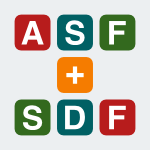 ASF+SDF-1997-BorovanskyKK #logic #specification
ASF+SDF-1997-BorovanskyKK #logic #specification- Rewriting as a unified specification tool for logic and control: the ELAN language (PB, CK, HK), p. 3.
 PPoPP-1997-TauraY #effectiveness #garbage collection #parallel #programming language #scalability
PPoPP-1997-TauraY #effectiveness #garbage collection #parallel #programming language #scalability- An Effective Garbage Collection Strategy for Parallel Programming Languages on Large Scale Distributed-Memory Machines (KT, AY), pp. 264–275.
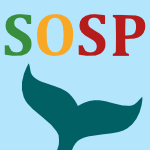 SOSP-1997-FordBBLLS #kernel #research
SOSP-1997-FordBBLLS #kernel #research- The Flux OSKit: A Substrate for Kernel and Language Research (BF, GB, GB, JL, AL, OS), pp. 38–51.
 CADE-1997-WolfS #named #natural language #proving
CADE-1997-WolfS #named #natural language #proving- ILF-SETHEO: Processing Model Elimination Proofs for Natural Language Output (AW, JS), pp. 61–64.
 CAV-1997-Fisler #decidability #diagrams #regular expression
CAV-1997-Fisler #decidability #diagrams #regular expression- Containing of Regular Languages in Non-Regular Timing Diagram Languages is Decidable (KF), pp. 155–166.
 CAV-1997-KestenMMPS #model checking
CAV-1997-KestenMMPS #model checking- Symbolic Model Checking with Rich ssertional Languages (YK, OM, MM, AP, ES), pp. 424–435.
 CSL-1997-AyariBP #named #specification
CSL-1997-AyariBP #named #specification- LISA: A Specification Language Based on WS2S (AA, DAB, AP), pp. 18–34.
 CSL-1997-HartonasH #concurrent #functional #higher-order
CSL-1997-HartonasH #concurrent #functional #higher-order- Full Abstractness for a Functional/Concurrent Language with Higher-Order Value-Passing (Extended Abstract) (CH, MH), pp. 239–254.
 ICLP-1997-AntoyEH #evaluation #functional #logic #parallel
ICLP-1997-AntoyEH #evaluation #functional #logic #parallel- Parallel Evaluation Strategies for Functional Logic Languages (SA, RE, MH), pp. 138–152.
 ICLP-1997-BruynoogheJK #analysis #logic programming #programming language
ICLP-1997-BruynoogheJK #analysis #logic programming #programming language- Live-Structure Analysis for Logic Programming Languages with Declarations (MB, GJ, AK), pp. 33–47.
 ICLP-1997-DahlTL #natural language
ICLP-1997-DahlTL #natural language- Assumption Grammars for Processing Natural Language (VD, PT, RL), pp. 256–270.
 ICLP-1997-KagedalD #approach #array #reuse
ICLP-1997-KagedalD #approach #array #reuse- A Practical Approach to Structure Reuse of Arrays in Single Assignment Languages (AK, SKD), pp. 18–32.
 ICLP-1997-MullerW #concurrent #constraints
ICLP-1997-MullerW #concurrent #constraints- Connecting Propagators with a Concurrent Constraint Language (TM, JW), p. 412.
 ILPS-1997-Dahl #logic programming #natural language
ILPS-1997-Dahl #logic programming #natural language- Logic Programming for Processing Natural Language (Abstract) (VD), pp. 41–42.
 ILPS-1997-Davila #logic #named
ILPS-1997-Davila #logic #named- OPENLOG: A Logic Language to Program Reactive and Rational Agents (JAD), p. 406.
 ILPS-1997-MullerW #concurrent #constraints
ILPS-1997-MullerW #concurrent #constraints- Extending a Concurrent Constraint Language by Propagators (TM, JW), pp. 149–163.
 LICS-1997-Laird #abstraction #functional
LICS-1997-Laird #abstraction #functional- Full Abstraction for Functional Languages with Control (JL), pp. 58–67.
 RTA-1997-Ringeissen #algorithm #programming language #prototype #rule-based #unification
RTA-1997-Ringeissen #algorithm #programming language #prototype #rule-based #unification- Prototyping Combination of Unification Algorithms with the ELAN Rule-Based Programming Language (CR), pp. 323–326.
 TLCA-1997-BelleM #analysis
TLCA-1997-BelleM #analysis- Typed Intermediate Languages for Shape Analysis (GB, EM), pp. 11–29.
 TLCA-1997-BerardiB #data type #functional
TLCA-1997-BerardiB #data type #functional- Minimum Information Code in a Pure Functional Language with Data Types (SB, LB), pp. 30–45.
 DAC-1996-SuttonD #design #process
DAC-1996-SuttonD #design #process- A Description Language for Design Process Management (PRS, SWD), pp. 175–180.
 PODS-1996-BenediktDLW #constraints #power of #query #relational
PODS-1996-BenediktDLW #constraints #power of #query #relational- Relational Expressive Power of Constraint Query Languages (MB, GD, LL, LW), pp. 5–16.
 PODS-1996-Toman #database #query
PODS-1996-Toman #database #query- Point vs. Interval-based Query Languages for Temporal Databases (DT), pp. 58–67.
 SIGMOD-1996-BunemanDHS #optimisation #query #semistructured data
SIGMOD-1996-BunemanDHS #optimisation #query #semistructured data- A Query Language and Optimization Techniques for Unstructured Data (PB, SBD, GGH, DS), pp. 505–516.
 SIGMOD-1996-CherniackZ #algebra #rule-based
SIGMOD-1996-CherniackZ #algebra #rule-based- Rule Languages and Internal Algebras for Rule-Based Optimizers (MC, SBZ), pp. 401–412.
 SIGMOD-1996-LibkinMW #array #design #implementation #multi #optimisation #query
SIGMOD-1996-LibkinMW #array #design #implementation #multi #optimisation #query- A Query Language for Multidimensional Arrays: Design, Implementation, and Optimization Techniques (LL, RM, LW), pp. 228–239.
 VLDB-1996-LakshmananSS #multi #named #relational
VLDB-1996-LakshmananSS #multi #named #relational- SchemaSQL — A Language for Interoperability in Relational Multi-Database Systems (LVSL, FS, INS), pp. 239–250.
 VLDB-1996-Suciu #composition #maintenance #query #semistructured data
VLDB-1996-Suciu #composition #maintenance #query #semistructured data- Query Decomposition and View Maintenance for Query Languages for Unstructured Data (DS), pp. 227–238.
 VLDB-1996-Suciu96a #analysis #implementation #parallel #query
VLDB-1996-Suciu96a #analysis #implementation #parallel #query- Implementation and Analysis of a Parallel Collection Query Language (DS), pp. 366–377.
 ITiCSE-1996-LeesC #learning #natural language #operating system
ITiCSE-1996-LeesC #learning #natural language #operating system- Applying natural language technology to the learning of operating systems functions (BL, JC), pp. 11–13.
 ESOP-1996-Bechet #encoding #partial evaluation #using
ESOP-1996-Bechet #encoding #partial evaluation #using- Removing Value Encoding Using Alternative Values in Partial Evaluation of Strongly-Typed Languages (DB), pp. 77–91.
 ESOP-1996-MaraninchiH #composition #nondeterminism #semantics
ESOP-1996-MaraninchiH #composition #nondeterminism #semantics- Compositional Semantics of Non-Deterministic Synchronous Languages (FM, NH), pp. 235–249.
 ESOP-1996-Rose #functional #linear
ESOP-1996-Rose #functional #linear- Linear Time Hierarchies for a Functional Language Machine Model (ER), pp. 311–325.
 ESOP-1996-ThuneA #towards
ESOP-1996-ThuneA #towards- Towards an Expressive Language for PDE Solvers (MT, KÅ), pp. 373–386.
 TACAS-1996-CuellarBH #agile #prototype #specification
TACAS-1996-CuellarBH #agile #prototype #specification- Rapid Prototyping for an Assertional Specification language (JC, DB, MH), pp. 402–406.
 TACAS-1996-Rauzy #analysis #constraints #reduction #specification #using
TACAS-1996-Rauzy #analysis #constraints #reduction #specification #using- Using the Constraint Language Toupie for “Software Cost Reduction” Specification Analysis (Abstract) (AR), p. 417.
 WPC-1996-Bull #comprehension #domain-specific language #safety #using
WPC-1996-Bull #comprehension #domain-specific language #safety #using- Comprehension of Safety-Critical Systems Using Domain-Specific Languages (TB), pp. 108–122.
 PLDI-1996-Adl-TabatabaiLLW #independence #mobile #performance #source code
PLDI-1996-Adl-TabatabaiLLW #independence #mobile #performance #source code- Efficient and Language-Independent Mobile Programs (ARAT, GL, SL, RW), pp. 127–136.
 PLDI-1996-ChandraRL #memory management #named #protocol
PLDI-1996-ChandraRL #memory management #named #protocol- Teapot: Language Support for Writing Memory Coherence Protocols (SC, BR, JRL), pp. 237–248.
 SAS-1996-AndersenH #analysis #functional #higher-order #partial evaluation #termination
SAS-1996-AndersenH #analysis #functional #higher-order #partial evaluation #termination- Termination Analysis for Offline Partial Evaluation of a Higher Order Functional Language (PHA, CKH), pp. 67–82.
 WIA-1996-Rodger #formal method #programming #tool support
WIA-1996-Rodger #formal method #programming #tool support- Integrating Hands-on Work into the Formal Languages Course via Tools and Programming (SHR), pp. 132–148.
 WIA-1996-SalomaaY #automaton #finite #nondeterminism
WIA-1996-SalomaaY #automaton #finite #nondeterminism- NFA to DFA Transformation for Finite Languages (KS, SY), pp. 149–158.
 FME-1996-ChalinGR #identification #interface #specification
FME-1996-ChalinGR #identification #interface #specification- Identification of and Solutions to Shortcomings of LCL, a Larch/C Interface Specification Language (PC, PG, TR), pp. 385–404.
 ICFP-1996-FlanaganN #design #functional #implementation #named #parallel
ICFP-1996-FlanaganN #design #functional #implementation #named #parallel- pHluid: The Design of a Parallel Functional Language Implementation on Workstations (CF, RSN), pp. 169–179.
 IFL-1996-BoquistJ #functional #lazy evaluation #optimisation
IFL-1996-BoquistJ #functional #lazy evaluation #optimisation- The GRIN Project: A Highly Optimising Back End for Lazy Functional Languages (UB, TJ), pp. 58–84.
 IFL-1996-BraineC #functional #object-oriented
IFL-1996-BraineC #functional #object-oriented- Introducing CLOVER: An Object-Oriented Functional Language (LB, CC), pp. 1–20.
 IFL-1996-Scholz #array #functional #on the #programming
IFL-1996-Scholz #array #functional #on the #programming- On Programming Scientific Applications in SAC — A Functional Language Extended by a Subsystem for High-Level Array Operations (SBS), pp. 85–104.
 IFL-1996-Serrarens #algorithm #functional #implementation
IFL-1996-Serrarens #algorithm #functional #implementation- Implementing the Conjugate Gradient Algorithm in a Functional Language (PRS), pp. 125–140.
 CSCW-1996-CortesM #collaboration #named #programming language
CSCW-1996-CortesM #collaboration #named #programming language- DCWPL: A Programming Language for Describing Collaborative Work (MC, PM), pp. 21–29.
 CSCW-1996-Wyner #coordination #design #distributed
CSCW-1996-Wyner #coordination #design #distributed- The Language of Coordination: A Method for the Distributed Design of Complex Organizations (doctoral colloquium) (GMW), p. 446.
 AdaEurope-1996-BurnsW #ada #concurrent #effectiveness #programming language
AdaEurope-1996-BurnsW #ada #concurrent #effectiveness #programming language- Ada 95: An Effective Concurrent Programming Language (AB, AJW), pp. 58–77.
 TRI-Ada-1996-KermarrecNP96a #ada #distributed #named
TRI-Ada-1996-KermarrecNP96a #ada #distributed #named- GNATDIST: A Configuration Language for Distributed Ada 95 Applications (YK, LN, LP), pp. 63–72.
 TRI-Ada-1996-NeedhamDGPZME #ada #design #eiffel #independence #inheritance #modelling #named #object-oriented
TRI-Ada-1996-NeedhamDGPZME #ada #design #eiffel #independence #inheritance #modelling #named #object-oriented- ADAM: A Language-Independent, Object-Oriented, Design Environment for Modeling Inheritance and Relationship Variants in Ada 95, C++, and Eiffel (DMN, SAD, KEG, TJP, PZ, MM, HJCE), pp. 99–113.
 CAiSE-1996-GalES #execution #named
CAiSE-1996-GalES #execution #named- TALE: A Temporal Active Language and Execution Model (AG, OE, AS), pp. 60–81.
 CIKM-1996-AndrewsLSS #database #implementation #on the #programming language
CIKM-1996-AndrewsLSS #database #implementation #on the #programming language- On Implementing SchemaLog — A Database Programming Language (AA, NS, LVSL, INS), pp. 309–316.
 ICML-1996-Bostrom #induction #logic programming #regular expression #source code
ICML-1996-Bostrom #induction #logic programming #regular expression #source code- Theory-Guideed Induction of Logic Programs by Inference of Regular Languages (HB), pp. 46–53.
 ICPR-1996-AlquezarS #context-sensitive grammar #learning #regular expression
ICPR-1996-AlquezarS #context-sensitive grammar #learning #regular expression- Learning of context-sensitive languages described by augmented regular expressions (RA, AS), pp. 745–749.
 ICPR-1996-ChaudhuriP #detection #fault
ICPR-1996-ChaudhuriP #detection #fault- OCR error detection and correction of an inflectional Indian language script (BBC, UP), pp. 245–249.
 ICPR-1996-ErenshteynLFMS #approach #comprehension #gesture #recognition
ICPR-1996-ErenshteynLFMS #approach #comprehension #gesture #recognition- Recognition approach to gesture language understanding (RE, PL, RAF, LM, GS), pp. 431–435.
 ICPR-1996-Lemaire #nondeterminism #recognition
ICPR-1996-Lemaire #nondeterminism #recognition- Use of a priori descriptions in a high-level language and management of the uncertainty in a scene recognition system (JL), pp. 560–564.
 ICPR-1996-SainzS #context-sensitive grammar #learning #modelling #using
ICPR-1996-SainzS #context-sensitive grammar #learning #modelling #using- Learning bidimensional context-dependent models using a context-sensitive language (MS, AS), pp. 565–569.
 ICPR-1996-SchwartzLMRZ #independence #recognition #speech #using
ICPR-1996-SchwartzLMRZ #independence #recognition #speech #using- Language-independent OCR using a continuous speech recognition system (RMS, CL, JM, CR, YZ), pp. 99–103.
 KDD-1996-ImielinskiVA #database #interface #mining #named #programming #query
KDD-1996-ImielinskiVA #database #interface #mining #named #programming #query- DataMine: Application Programming Interface and Query Language for Database Mining (TI, AV, AA), pp. 256–262.
 SEKE-1996-AdamsW #generative #information management #interface #natural language #representation
SEKE-1996-AdamsW #generative #information management #interface #natural language #representation- Generating Natural Language Interfaces for Terminological Knowledge Representation Systems (RA, HW), pp. 585–594.
 SEKE-1996-ChangM #design #visual notation
SEKE-1996-ChangM #design #visual notation- Customized Visual Language Design (SKC, PM), pp. 553–562.
 SEKE-1996-Hurley #identification #requirements #specification
SEKE-1996-Hurley #identification #requirements #specification- Identifying Language Requirements for Specifying Industrial-Strength Software Agents (WDH), pp. 238–245.
 SEKE-1996-KarallB #case study #independence #re-engineering #visualisation
SEKE-1996-KarallB #case study #independence #re-engineering #visualisation- Case Study: EasyCODE — A Language Independent Visualization Tool for Reengineering (OK, SB), pp. 353–360.
 SEKE-1996-Zadrozny #complexity #natural language
SEKE-1996-Zadrozny #complexity #natural language- Natural Language Processing: Structure and Complexity (WZ), pp. 595–602.
 SEKE-1996-ZhangZ #evolution #visual notation
SEKE-1996-ZhangZ #evolution #visual notation- Developing Visual Languages Through an Evolving Method (KZ, DQZ), pp. 514–521.
 SIGIR-1996-HullG #approach #information retrieval #multi #query
SIGIR-1996-HullG #approach #information retrieval #multi #query- Querying Across Languages: A Dictionary-Based Approach to Multilingual Information Retrieval (DAH, GG), pp. 49–57.
 OOPSLA-1996-DeanDGLC #compilation #named #object-oriented #optimisation
OOPSLA-1996-DeanDGLC #compilation #named #object-oriented #optimisation- Vortex: An Optimizing Compiler for Object-Oriented Languages (JD, GD, DG, VL, CC), pp. 83–100.
 OOPSLA-1996-DurhamJ #framework #programming language #runtime #visual notation
OOPSLA-1996-DurhamJ #framework #programming language #runtime #visual notation- A Framework for Run-Time Systems and its Visual Programming Language (AMD, REJ), pp. 406–420.
 OOPSLA-1996-NishimuraOT #equation #object-oriented #query
OOPSLA-1996-NishimuraOT #equation #object-oriented #query- An Equational Object-Oriented Data Model and its Data-Parallel Query Language (SN, AO, KT), pp. 1–17.
 ALP-1996-BandaHM #independence #logic
ALP-1996-BandaHM #independence #logic- Independence in Dynamically Scheduled Logic Languages (MJGdlB, MVH, KM), pp. 47–61.
 ALP-1996-Caires #logic #process #specification
ALP-1996-Caires #logic #process #specification- A Language for the Logical Specification of Processes and Relations (LC), pp. 150–164.
 ALP-1996-Nazareth96a #polymorphism #semantics #specification
ALP-1996-Nazareth96a #polymorphism #semantics #specification- The Semantic Treatment of Polymorphic Specification Languages (DN), pp. 330–344.
 PLILP-1996-GehrkeH #execution #named #specification
PLILP-1996-GehrkeH #execution #named #specification- ProFun — A Language for Executable Specifications (TG, MH), pp. 304–318.
 PLILP-1996-Liu #database #deduction #programming language
PLILP-1996-Liu #database #deduction #programming language- The LOL Deductive Database Programming Language (Extended Abstract) (ML), pp. 454–468.
 POPL-1996-Ashley #analysis #flexibility #higher-order
POPL-1996-Ashley #analysis #flexibility #higher-order- A Practical and Flexible Flow Analysis for Higher-Order Languages (JMA), pp. 184–194.
 POPL-1996-EnglerHK #code generation #independence #performance
POPL-1996-EnglerHK #code generation #independence #performance- ‘C: A Language for High-Level, Efficient, and Machine-Independent Dynamic Code Generation (DRE, WCH, MFK), pp. 131–144.
 POPL-1996-GovindarajanJM #constraints #logic #optimisation
POPL-1996-GovindarajanJM #constraints #logic #optimisation- Optimization and Relaxation in Constraint Logic Languages (KG, BJ, SM), pp. 91–103.
 POPL-1996-SagivRW #problem
POPL-1996-SagivRW #problem- Solving Shape-Analysis Problems in Languages with Destructive Updating (SS, TWR, RW), pp. 16–31.
 ICRE-1996-Hill #requirements
ICRE-1996-Hill #requirements- Parasitic Languages for Requirements (MH), pp. 69–75.
 ICRE-1996-OsborneM #natural language #requirements #specification
ICRE-1996-OsborneM #natural language #requirements #specification- Processing Natural Language Software Requirement Specifications (MO, CKM), pp. 229–237.
 SAC-1996-Jo #concurrent #empirical #object-oriented #programming language
SAC-1996-Jo #concurrent #empirical #object-oriented #programming language- An experiment on a concurrent object-oriented programming language (CHJ), pp. 98–104.
 SAC-1996-LeeL #concurrent #constraints #incremental #query
SAC-1996-LeeL #concurrent #constraints #incremental #query- Incremental querying in the concurrent CLP language IFD-Constraint Pandora (JHML, HfL), pp. 387–392.
 SAC-1996-WaillyB #data flow #functional #implementation #parallel #semantics #specification
SAC-1996-WaillyB #data flow #functional #implementation #parallel #semantics #specification- Specification of a functional synchronous dataflow language for parallel implementations with the denotational semantics (GdW, FB), pp. 414–419.
 CC-1996-LiK #performance #reuse
CC-1996-LiK #performance #reuse- Efficient Storage Reuse of Aggregates in Single Assignment Languages (ZL, CCK), pp. 238–252.
 CC-1996-VitekH #object-oriented
CC-1996-VitekH #object-oriented- Compact Dispatch Tables for Dynamically Typed Object Oriented Languages (JV, RNH), pp. 309–325.
 HPDC-1996-BotorogK #algorithm #distributed #imperative #named #performance #programming
HPDC-1996-BotorogK #algorithm #distributed #imperative #named #performance #programming- Skil: An Imperative Language with Algorithmic Skeletons for Efficient Distributed Programming (GHB, HK), pp. 243–252.
 CAV-1996-NelkenF #automation #natural language #specification
CAV-1996-NelkenF #automation #natural language #specification- Automatic Translation of Natural Language System Specifications (RN, NF), pp. 360–371.
 CSL-1996-EekelenSP #functional #graph grammar #programming language #semantics
CSL-1996-EekelenSP #functional #graph grammar #programming language #semantics- Graph Rewriting Semantics for Functional Programming Languages (MCJDvE, SS, MJP), pp. 106–128.
 JICSLP-1996-TamuraK #compilation #linear #logic programming #programming language #resource management
JICSLP-1996-TamuraK #compilation #linear #logic programming #programming language #resource management- Resource Management Method for a Compiler System of a Linear Logic Programming Language (Poster Abstract) (NT, YK), p. 545.
 LICS-1996-BenediktL #constraints #on the #query
LICS-1996-BenediktL #constraints #on the #query- On the Structure of Queries in Constraint Query Languages (MB, LL), pp. 25–34.
 RTA-1996-WaltersK #automaton #equation #named
RTA-1996-WaltersK #automaton #equation #named- EPIC: An Equational Language -Abstract Machine Supporting Tools- (HRW, JFTK), pp. 424–427.
 ICDAR-v1-1995-LeeT #clustering #modelling #recognition #semantics #word
ICDAR-v1-1995-LeeT #clustering #modelling #recognition #semantics #word- A language model based on semantically clustered words in a Chinese character recognition system (HJL, CHT), pp. 450–453.
 ICDAR-v1-1995-LefevreR #documentation #layout #named
ICDAR-v1-1995-LefevreR #documentation #layout #named- ODIL: an SGML description language of the layout structure of documents (PL, FR), pp. 480–488.
 ICDAR-v1-1995-SimonPJ #automation #documentation #generative #image
ICDAR-v1-1995-SimonPJ #automation #documentation #generative #image- (Chem)DeT/sub E/X automatic generation of a markup language description of (chemical) documents from bitmap images (AS, JCP, APJ), pp. 458–461.
 ICDAR-v2-1995-AzoklyI #documentation #layout #segmentation
ICDAR-v2-1995-AzoklyI #documentation #layout #segmentation- A language for document generic layout description and its use for segmentation into regions (AA, RI), pp. 1123–1126.
 ICDAR-v2-1995-Zarri #approach #documentation #information management #knowledge-based #representation
ICDAR-v2-1995-Zarri #approach #documentation #information management #knowledge-based #representation- The “Narrative Knowledge Representation Language”, a knowledge-based approach for representing the “meaning” of textual documents (GPZ), pp. 545–548.
 PODS-1995-Kanellakis #constraints #database #programming #tutorial
PODS-1995-Kanellakis #constraints #database #programming #tutorial- Constraint Programming and Database Languages: A Tutorial (PCK), pp. 46–53.
 SIGMOD-1995-BrodskyK #constraints #query
SIGMOD-1995-BrodskyK #constraints #query- The LyriC Language: Querying Constraint Objects (AB, YK), pp. 35–46.
 SIGMOD-1995-FegarasM #calculus #effectiveness #query #towards
SIGMOD-1995-FegarasM #calculus #effectiveness #query #towards- Towards an Effective Calculus for Object Query Languages (LF, DM), pp. 47–58.
 SIGMOD-1995-GardarinMP #execution #functional #named #query
SIGMOD-1995-GardarinMP #execution #functional #named #query- OFL: A Functional Execution Model for Object Query Languages (GG, FM, PP), pp. 59–70.
 VLDB-1995-SubietaKL #object-oriented #query
VLDB-1995-SubietaKL #object-oriented #query- Procedures in Object-Oriented Query Languages (KS, YK, JL), pp. 182–193.
 FPLE-1995-JacquotG #requirements
FPLE-1995-JacquotG #requirements- Requirements for an Ideal First Language (JPJ, JG), pp. 51–63.
 FPLE-1995-Keravnou #functional #programming
FPLE-1995-Keravnou #functional #programming- Introducing Computer Science Undergraduates to Principles of Programming Through a Functional Language (ETK), pp. 15–34.
 WCRE-1995-YehHR #data type
WCRE-1995-YehHR #data type- Recovering Abstract Data Types and Object Instances from a Conventional Procedural Language (ASY, DRH, HBR), pp. 227–236.
 PEPM-1995-Cridlig #analysis #concurrent #model checking #semantics #using
PEPM-1995-Cridlig #analysis #concurrent #model checking #semantics #using- Semantic Analysis of Shared-Memory Concurrent Languages using Abstract Model-Checking (RC), pp. 214–225.
 PEPM-1995-MalmkjaerO #higher-order
PEPM-1995-MalmkjaerO #higher-order- Polyvariant Specialisation for Higher-Order, Block-Structured Languages (KM, PØ), pp. 66–76.
 PLDI-1995-AikenFL #analysis #higher-order #memory management
PLDI-1995-AikenFL #analysis #higher-order #memory management- Better Static Memory Management: Improving Region-Based Analysis of Higher-Order Languages (AA, MF, RL), pp. 174–185.
 PLDI-1995-AmagbegnonBG #data flow #implementation
PLDI-1995-AmagbegnonBG #data flow #implementation- Implementation of the Data-Flow Synchronous Language SIGNAL (PA, LB, PLG), pp. 163–173.
 PLDI-1995-DeanCG #object-oriented
PLDI-1995-DeanCG #object-oriented- Selective Specialization for Object-Oriented Languages (JD, CC, DG), pp. 93–102.
 SAS-1995-Coorg #clustering #code generation #concurrent #functional #multi #strict #thread
SAS-1995-Coorg #clustering #code generation #concurrent #functional #multi #strict #thread- Partitioning Non-strict Functional Languages for Multi-threaded Code Generation (SRC), pp. 82–99.
 SAS-1995-Hannan #analysis #functional #stack #type system
SAS-1995-Hannan #analysis #functional #stack #type system- A Type-based Analysis for Stack Allocation in Functional Languages (JH), pp. 172–188.
 SAS-1995-KobayashiNY #communication #concurrent #programming language #static analysis
SAS-1995-KobayashiNY #communication #concurrent #programming language #static analysis- Static Analysis of Communication for Asynchronous Concurrent Programming Languages (NK, MN, AY), pp. 225–242.
 SAS-1995-SerranoW #compilation #functional #named #optimisation #strict
SAS-1995-SerranoW #compilation #functional #named #optimisation #strict- Bigloo: A Portable and Optimizing Compiler for Strict Functional Languages (MS, PW), pp. 366–381.
 SAS-1995-Tofte #functional #higher-order
SAS-1995-Tofte #functional #higher-order- Region Inference for Higher-Order Functional Languages (MT), pp. 19–20.
 DLT-1995-Asveld #context-free grammar #parsing #recognition #robust #towards
DLT-1995-Asveld #context-free grammar #parsing #recognition #robust #towards- Towards Robustness in Parsing — Fuzzifying Context-Free Language Recognition (PRJA), pp. 443–453.
 DLT-1995-CalbrixN
DLT-1995-CalbrixN- Prefix and Period Languages of Rational ω-Languages (HC, MN), pp. 341–349.
 DLT-1995-Cases #automaton #self
DLT-1995-Cases #automaton #self- From Synonymy to Self-Modifying Automata: Q-Diam Language (BC), pp. 454–459.
 DLT-1995-DrosteK #composition #quantifier
DLT-1995-DrosteK #composition #quantifier- Trace Languages Definable with Modular Quantifiers (MD, DK), pp. 386–395.
 DLT-1995-Georgescu #complexity #context-free grammar #metric #orthogonal
DLT-1995-Georgescu #complexity #context-free grammar #metric #orthogonal- The Orthogonality of Some Complexity Measures of Context-Free Languages (GG), pp. 73–78.
 DLT-1995-Giammarresi #2d #bibliography #finite
DLT-1995-Giammarresi #2d #bibliography #finite- Finite State Recognizability for Two-Dimensional Languages: A Brief Survey (DG), pp. 299–308.
 DLT-1995-Hromkovic #communication #complexity #generative #on the
DLT-1995-Hromkovic #communication #complexity #generative #on the- On the Communication Complexity of Distributive Language Generation (JH), pp. 237–246.
 DLT-1995-Ito #linear
DLT-1995-Ito #linear- Height Functions and Linear Languages (MI), pp. 98–101.
 DLT-1995-JancarMPPV #automaton #context-free grammar
DLT-1995-JancarMPPV #automaton #context-free grammar- Restarting Automata, Marcus Grammars and Context-Free Languages (PJ, FM, MP, MP, JV), pp. 102–111.
 DLT-1995-Jedrzejowicz #decidability #problem
DLT-1995-Jedrzejowicz #decidability #problem- An Undecidable Problem for Shuffle Languages (JJ), pp. 112–118.
 DLT-1995-KudlekM #algebra #distributed
DLT-1995-KudlekM #algebra #distributed- Rational and Algebraic Languages with Distributed Catenation (MK, AM), pp. 129–138.
 DLT-1995-KutribR #automaton #realtime
DLT-1995-KutribR #automaton #realtime- Real-Time One-Way Pushdown Cellular Automata Languages (MK, JR), pp. 420–429.
 DLT-1995-Mihalache #communication #parallel
DLT-1995-Mihalache #communication #parallel- Szilard Languages Associated to Parallel Communicating Grammar Systems (VM), pp. 247–256.
 DLT-1995-Nitsche #linear #logic #semantics
DLT-1995-Nitsche #linear #logic #semantics- A Finitary-Language Semantics for Propositional Linear Temporal Logic (UN), pp. 482–489.
 DLT-1995-SalomaaY #context-free grammar #nondeterminism
DLT-1995-SalomaaY #context-free grammar #nondeterminism- Nondeterminism Degrees for Context-Free Languages (KS, SY), pp. 154–165.
 DLT-1995-Satta #problem
DLT-1995-Satta #problem- The Membership Problem for Unordered Vector Languages (GS), pp. 267–275.
 DLT-1995-SimaW
DLT-1995-SimaW- Neural Language Acceptors (JS, JW), pp. 430–439.
 DLT-1995-TipleaE #normalisation #petri net
DLT-1995-TipleaE #normalisation #petri net- Hierarchies of Petri Net Languages and a Super-Normal Form (FLT, CE), pp. 396–405.
 ICALP-1995-LopezN
ICALP-1995-LopezN- Generalized Sturmian Languages (LML, PN), pp. 336–347.
 ICALP-1995-Vogler #equivalence
ICALP-1995-Vogler #equivalence- The Limit of Split_n-Language Equivalence (WV), pp. 636–647.
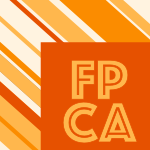 FPCA-1995-AdityaAS #semantics #strict
FPCA-1995-AdityaAS #semantics #strict- Semantics of Barriers in a Non-Strict, Implicitly-Parallel Language (SA, A, JES), pp. 204–215.
 FPCA-1995-BlellochG #functional #parallel
FPCA-1995-BlellochG #functional #parallel- Parallelism in Sequential Functional Languages (GEB, JG), pp. 226–237.
 FPCA-1995-Boquist #functional #interprocedural #lazy evaluation
FPCA-1995-Boquist #functional #interprocedural #lazy evaluation- Interprocedural Register Allocation for Lazy Functional Languages (UB), pp. 270–281.
 FPCA-1995-CousotC #abstract interpretation #constraints #formal method #program analysis
FPCA-1995-CousotC #abstract interpretation #constraints #formal method #program analysis- Formal Language, Grammar and Set-Constraint-Based Program Analysis by Abstract Interpretation (PC, RC), pp. 170–181.
 FPCA-1995-GunterRR #exception
FPCA-1995-GunterRR #exception- A Generalization of Exceptions and Control in ML-like Languages (CAG, DR, JGR), pp. 12–23.
 FPCA-1995-SharpR #specification #using
FPCA-1995-SharpR #specification #using- Using a Language of Functions and Relations for VLSI Specification (RS, OR), pp. 45–54.
 FPCA-1995-Wand #compilation #correctness #parallel
FPCA-1995-Wand #compilation #correctness #parallel- Compiler Correctness for Parallel Languages (MW), pp. 120–134.
 CHI-1995-MittalM #generative #interactive #natural language
CHI-1995-MittalM #generative #interactive #natural language- Dynamic Generation of Follow Up Question Menus: Facilitating Interactive Natural Language Dialogues (VOM, JDM), pp. 90–97.
 AdaEurope-1995-TaurisanoW #ada
AdaEurope-1995-TaurisanoW #ada- Ada in Mixed Language Applications (GT, IW), pp. 58–70.
 CIKM-1995-CorrelM #concurrent #on the
CIKM-1995-CorrelM #concurrent #on the- On Isolation, Concurrency, and the Venus Rule Language (SC, DPM), pp. 281–289.
 CIKM-1995-Tammet #using
CIKM-1995-Tammet #using- Using Resolution for Extending KL-ONE-type Languages (TT), pp. 326–332.
 CIKM-1995-Wang #algebra #database #multi #query
CIKM-1995-Wang #algebra #database #multi #query- Algebraic Query Languages on Temporal Databases with Multiple Time Granularities (XSW), pp. 304–311.
 ICML-1995-YamazakiPM #ambiguity #learning #natural language
ICML-1995-YamazakiPM #ambiguity #learning #natural language- Learning Hierarchies from Ambiguous Natural Language Data (TY, MJP, CJM), pp. 575–583.
 KDD-1995-Siebes #induction #query
KDD-1995-Siebes #induction #query- Data Surveying: Foundations of an Inductive Query Language (AS), pp. 269–274.
 SEKE-1995-Ait-AmeurBGPP #metaprogramming #specification
SEKE-1995-Ait-AmeurBGPP #metaprogramming #specification- Formal Specification and Metaprogramming in the EXPRESS Language (YAA, FB, PG, GP, JCP), pp. 181–188.
 SEKE-1995-Auguston #compilation #programming language
SEKE-1995-Auguston #compilation #programming language- Programming language RIGAL as a compiler writing tool (MA), p. 500.
 SEKE-1995-ChauC #semantics #syntax #visual notation
SEKE-1995-ChauC #semantics #syntax #visual notation- Visual Language Syntax and Semantics for Complex Reactive System (HLC, KFC), pp. 252–259.
 SEKE-1995-FarCK #design #reuse #specification #using
SEKE-1995-FarCK #design #reuse #specification #using- Software Creation: Using Specification and Description Language (SDL) for Capturing and Reusing Human Experts’ Knowledge in Software Design (BHF, HC, ZK), pp. 189–196.
 SEKE-1995-Jent #execution #named #specification
SEKE-1995-Jent #execution #named #specification- DODAN/2: An Executable Specification Language for OS/2 (SAJ), pp. 464–469.
 SEKE-1995-Junkermann #design #process
SEKE-1995-Junkermann #design #process- A Dedicated Process Design Language based on EER-models, Statecharts and Tables (GJ), pp. 487–496.
 SEKE-1995-Kazimierczak #automation #information management #natural language #programming #representation
SEKE-1995-Kazimierczak #automation #information management #natural language #programming #representation- Knowledge Representation on the Level of Natural Language for Purposes of Automatic Programming (JK), pp. 140–143.
 SEKE-1995-Miur #optimisation #query #visual notation
SEKE-1995-Miur #optimisation #query #visual notation- Optimizing Complex Objects Queries in A Visual Data Manipulation Language (TM), pp. 153–157.
 SEKE-1995-PanY #database #named #object-oriented #query
SEKE-1995-PanY #database #named #object-oriented #query- EQL: A Learn-Easy and Use-Easy Query Language for Object-Oriented Databases (WWP, WPY), pp. 366–373.
 SIGIR-1995-Chien #natural language #performance
SIGIR-1995-Chien #natural language #performance- Fast and Quasi-Natural Language Search for Gigabits of Chinese Texts (LFC), pp. 112–120.
 SIGIR-1995-NavarroB #query
SIGIR-1995-NavarroB #query- A Language for Queries on Structure and Contents of Textual (GN, RABY), pp. 93–101.
 ECOOP-1995-BruceSG #named #object-oriented #polymorphism #type safety
ECOOP-1995-BruceSG #named #object-oriented #polymorphism #type safety- PolyTOIL: A Type-Safe Polymorphic Object-Oriented Language (KBB, AS, RvG), pp. 27–51.
 ECOOP-1995-HolzleU #hardware #object-oriented #question
ECOOP-1995-HolzleU #hardware #object-oriented #question- Do Object-Oriented Languages Need Special Hardware Support? (UH, DU), pp. 283–302.
 OOPSLA-1995-AgesenH #comparison #feedback #object-oriented #optimisation #type inference
OOPSLA-1995-AgesenH #comparison #feedback #object-oriented #optimisation #type inference- Type Feedback vs. Concrete Type Inference: A Comparison of Optimization Techniques for Object-Oriented Languages (OA, UH), pp. 91–107.
 OOPSLA-1995-Malenfant #on the #programming language #semantics
OOPSLA-1995-Malenfant #on the #programming language #semantics- On the Semantic Diversity of Delegation-Based Programming Languages (JM), pp. 215–230.
 OOPSLA-1995-MasuharaMAY #compilation #concurrent #object-oriented #partial evaluation #using
OOPSLA-1995-MasuharaMAY #compilation #concurrent #object-oriented #partial evaluation #using- Compiling Away the Meta-Level in Object-Oriented Concurrent Reflective Languages Using Partial Evaluation (HM, SM, KA, AY), pp. 300–315.
 OOPSLA-1995-Smith #experience #prototype #user interface #using
OOPSLA-1995-Smith #experience #prototype #user interface #using- Using a Prototype-based Language for User Interface: The Newton Project’s Experience (WRS), pp. 61–72.
 LOPSTR-1995-GallardoT #abstract interpretation #cost analysis #framework #logic
LOPSTR-1995-GallardoT #abstract interpretation #cost analysis #framework #logic- Studying the Cost of Logic Languages in an Abstract Interpretation Framework for Granularity Analysis (MdMG, JMT), pp. 91–105.
 PLILP-1995-DouenceF #functional #implementation #taxonomy #towards
PLILP-1995-DouenceF #functional #implementation #taxonomy #towards- Towards a Taxonomy of Functional Languages Implementations (RD, PF), pp. 27–44.
 PLILP-1995-HansSW #functional #implementation #logic
PLILP-1995-HansSW #functional #implementation #logic- An Expression-Or-Parallel Implementation for a Functional Logic Language (WH, FS, SW), pp. 457–458.
 PLILP-1995-Marriott #constraints #multi #parsing #visual notation
PLILP-1995-Marriott #constraints #multi #parsing #visual notation- Parsing Visual Languages with Constraint Multiset Grammars (KM), pp. 24–25.
 POPL-1995-Bloom #semantics #specification
POPL-1995-Bloom #semantics #specification- Structured Operational Semantics as a Specification Language (BB), pp. 107–117.
 POPL-1995-Cardelli #distributed
POPL-1995-Cardelli #distributed- A Language with Distributed Scope (LC), pp. 286–297.
 POPL-1995-JagannathanW #analysis #higher-order
POPL-1995-JagannathanW #analysis #higher-order- A Unified Treatment of Flow Analysis in Higher-Order Languages (SJ, SW), pp. 393–407.
 POPL-1995-PlevyakZC #concurrent #object-oriented #performance
POPL-1995-PlevyakZC #concurrent #object-oriented #performance- Obtaining Sequential Efficiency for Concurrent Object-Oriented Languages (JP, XZ, AAC), pp. 311–321.
 POPL-1995-RieckeV
POPL-1995-RieckeV- Isolating Side Effects in Sequential Languages (JGR, RV), pp. 1–12.
 POPL-1995-SansomJ #functional #higher-order #profiling #strict
POPL-1995-SansomJ #functional #higher-order #profiling #strict- Time and Space Profiling for Non-Strict Higher-Order Functional Languages (PMS, SLPJ), pp. 355–366.
 SAC-1995-BoscLP #flexibility #quantifier #query #relational
SAC-1995-BoscLP #flexibility #quantifier #query #relational- Quantified statements in a flexible relational query language (PB, LL, OP), pp. 488–492.
 SAC-1995-Huntbach #concurrent #object-oriented
SAC-1995-Huntbach #concurrent #object-oriented- The concurrent object-oriented language braid (MMH), pp. 140–146.
 SAC-1995-Huntbach95a #concurrent #logic
SAC-1995-Huntbach95a #concurrent #logic- Search in concurrent logic languages (MMH), pp. 164–170.
 SAC-1995-LeeA #thread
SAC-1995-LeeA #thread- Object linkage mechanism for threaded interpretive languages (YML, DJA), pp. 374–378.
 SAC-1995-Scholz #concurrent #data type #functional #programming language
SAC-1995-Scholz #concurrent #data type #functional #programming language- Turning a functional data type into a concurrent programming language (ES), pp. 135–139.
 SAC-1995-Serrano #analysis #compilation #control flow #functional #paradigm
SAC-1995-Serrano #analysis #compilation #control flow #functional #paradigm- Control flow analysis: a functional languages compilation paradigm (MS), pp. 118–122.
 ESEC-1995-Jarzabek #named #specification
ESEC-1995-Jarzabek #named #specification- PQL: A Language for Specifying Abstract Program Views (SJ), pp. 324–342.
 IWMM-1995-Hamilton #functional #garbage collection #lazy evaluation
IWMM-1995-Hamilton #functional #garbage collection #lazy evaluation- Compile-Time Garbage Collection for Lazy Functional Languages (GWH), pp. 119–144.
 IWMM-1995-Rojemo #functional #garbage collection #lazy evaluation
IWMM-1995-Rojemo #functional #garbage collection #lazy evaluation- Generational Garbage Collection without Temporary Space Leaks for Lazy Functional Languages (NR), pp. 145–162.
 IWMM-1995-Virding #concurrent #erlang #garbage collection #realtime
IWMM-1995-Virding #concurrent #erlang #garbage collection #realtime- A Garbage Collector for the Concurrent Real-Time Language Erlang (RV), pp. 343–354.
 LCT-RTS-1995-ChungD #realtime
LCT-RTS-1995-ChungD #realtime- Language Constructs and Transformation for Hard Real-time Systems (TMC, HGD), pp. 41–49.
 LCT-RTS-1995-RenA #distributed #named #realtime #specification
LCT-RTS-1995-RenA #distributed #named #realtime #specification- RTsynchronizer: Language Support for Real-Time Specifications in Distributed Systems (SR, GA), pp. 50–59.
 ICLP-1995-Brand #algorithm #graph
ICLP-1995-Brand #algorithm #graph- A Decision Graph Algorithm for CCP Languages (PB), pp. 433–447.
 ICLP-1995-GregoryR #concurrent #declarative #named #programming language
ICLP-1995-GregoryR #concurrent #declarative #named #programming language- Tempo: A Declarative Concurrent Programming Language (SG, RR), pp. 515–529.
 ICLP-1995-NilssonTW #deduction #distributed #memory management #named #query #realtime
ICLP-1995-NilssonTW #deduction #distributed #memory management #named #query #realtime- Amnesia — A Distributed Real-Time Primary Memory DBMS with a Deductive Query Language (HN, TT, CW), p. 821.
 ICLP-1995-SahlinS #concurrent #constraints
ICLP-1995-SahlinS #concurrent #constraints- An Analyzer for a Concurrent Constraint Language (DS, TS), p. 828.
 ILPS-1995-BigotD #approach
ILPS-1995-BigotD #approach- A Simple Approach to Supporting Untagged Objects in Dynamically Typed Languages (PAB, SKD), pp. 257–271.
 ILPS-1995-GovindarajanJM #constraints #logic
ILPS-1995-GovindarajanJM #constraints #logic- Relaxation in Constraint Logic Languages (KG, BJ, SM), p. 637.
 ILPS-1995-TseWL #concurrent #logic programming #object-oriented #programming language #prolog
ILPS-1995-TseWL #concurrent #logic programming #object-oriented #programming language #prolog- P&P: A Combined Parlog and Prolog Concurrent Object-Oriented Logic Programming Language (MlT, WhW, HfL), p. 640.
 ILPS-1995-WinikoffH #implementation #linear #logic programming #programming language
ILPS-1995-WinikoffH #implementation #linear #logic programming #programming language- Implementing the Linear Logic Programming Language Lygon (MW, JH), pp. 66–80.
 LICS-1995-Jeffrey #concurrent #functional #monad #semantics
LICS-1995-Jeffrey #concurrent #functional #monad #semantics- A Fully Abstract Semantics for a Concurrent Functional Language with Monadic Types (AJ), pp. 255–264.
 DAC-1994-LeviaMR #analysis #design
DAC-1994-LeviaMR #analysis #design- Lessons in Language Design: Cost/Benefit analysis of VHDL Features (OL, SM, JR), pp. 447–453.
 KBSE-1994-KotikM #assurance #quality
KBSE-1994-KotikM #assurance #quality- Application of REFINE Language ToolsTM to Software Quality Assurance (GK, LM), p. 4.
 KBSE-1994-LoiaQ #logic programming #object-oriented #paradigm
KBSE-1994-LoiaQ #logic programming #object-oriented #paradigm- Integrating Object-Oriented Paradigms and Logic Programming: The OPLA Language (VL, MQ), pp. 158–164.
 PODS-1994-ColbyRSG #query
PODS-1994-ColbyRSG #query- A Query Language for List-Based Complex Objects (LSC, ELR, LVS, DVG), pp. 179–189.
 PODS-1994-HillebrandK #database #functional #order #query #λ-calculus
PODS-1994-HillebrandK #database #functional #order #query #λ-calculus- Functional Database Query Languages as Typed Lambda Calculi of Fixed Order (GGH, PCK), pp. 222–231.
 PODS-1994-LibkinW #set
PODS-1994-LibkinW #set- New Techniques for Studying Set Languages, Bag Languages and Aggregate Functions (LL, LW), pp. 155–166.
 PODS-1994-SuciuT #query
PODS-1994-SuciuT #query- A Query Language for NC (DS, VT), pp. 167–178.
 PODS-1994-Tannen #named #tutorial
PODS-1994-Tannen #named #tutorial- Tutorial: Languages for Collection Types (VT), pp. 150–154.
 SIGMOD-1994-FlokstraKS #database #design #specification
SIGMOD-1994-FlokstraKS #database #design #specification- The IMPRESS DDT: A Database Design Toolbox Based on a Formal Specification Language (JF, MvK, JS), p. 506.
 SIGMOD-1994-KuhnTS #multi
SIGMOD-1994-KuhnTS #multi- A Language Based Multidatabase System (EK, TT, KS), p. 509.
 VLDB-1994-BarjaPFWD #database #deduction #effectiveness #integration #object-oriented
VLDB-1994-BarjaPFWD #database #deduction #effectiveness #integration #object-oriented- An Effective Deductive Object-Oriented Database Through Language Integration (MLB, NWP, AAAF, MHW, AD), pp. 463–474.
 VLDB-1994-PoulovassilisS #algebra #database #optimisation #programming language #query
VLDB-1994-PoulovassilisS #algebra #database #optimisation #programming language #query- Investigation of Algebraic Query Optimisation Techniques for Database Programming Languages (AP, CS), pp. 415–426.
 ESOP-J-1992-Larcheveque94 #interprocedural #object-oriented
ESOP-J-1992-Larcheveque94 #interprocedural #object-oriented- Interprocedural Type Propagation for Object-Oriented Languages (JML), pp. 257–282.
 ESOP-1994-MuckS #continuation #functional #logic #semantics
ESOP-1994-MuckS #continuation #functional #logic #semantics- A Tiny Constrain Functional Logic Language and Its Continuation Semantics (AM, TS), pp. 439–453.
 ICSM-1994-PaulP #algebra #query #source code #using
ICSM-1994-PaulP #algebra #query #source code #using- Querying Source Code Using an Algebraic Query Language (SP, AP), pp. 127–136.
 PEPM-1994-DeanCG #identification #object-oriented
PEPM-1994-DeanCG #identification #object-oriented- Identifying Profitable Specialization in Object-Oriented Languages (JD, CC, DG), pp. 85–96.
 ICALP-1994-Droste #concurrent #monad #theorem
ICALP-1994-Droste #concurrent #monad #theorem- A KLeene Theorem for Recognizable Languages over Concurrency Monoids (MD), pp. 388–399.
 ICALP-1994-FernauS #ambiguity #geometry
ICALP-1994-FernauS #ambiguity #geometry- Valuations and Unambiguity of Languages, with Applications to Fractal Geometry (HF, LS), pp. 11–22.
 ICALP-1994-HotzP #analysis #context-free grammar #performance
ICALP-1994-HotzP #analysis #context-free grammar #performance- Fast Uniform Analysis of Coupled-Context-Free Languages (GH, GP), pp. 412–423.
 ICALP-1994-KanellakisHM #analysis #re-engineering
ICALP-1994-KanellakisHM #analysis #re-engineering- An Analysis of the Core-ML Language: Expressive Power and Type Reconstruction (PCK, GGH, HGM), pp. 83–105.
 ICALP-1994-Pin #polynomial #set
ICALP-1994-Pin #polynomial #set- Polynomial Closure of Group Languages and Open Sets of the Hall Topology (JÉP), pp. 424–435.
 LFP-1994-AdityaFH #garbage collection #re-engineering #runtime #using
LFP-1994-AdityaFH #garbage collection #re-engineering #runtime #using- Garbage Collection for Strongly-Typed Languages Using Run-Time Type Reconstruction (SA, CHF, JEH), pp. 12–23.
 LFP-1994-JagannathanW #parallel
LFP-1994-JagannathanW #parallel- Analyzing Stores and References in a Parallel Symbolic Language (SJ, SW), pp. 294–305.
 LFP-1994-SastryC #functional #parallel #strict
LFP-1994-SastryC #functional #parallel #strict- Parallel Destructive Updating in Strict Functional Languages (AVSS, WDC), pp. 263–272.
 TAGT-1994-BrandenburgS #automaton #graph #linear
TAGT-1994-BrandenburgS #automaton #graph #linear- Graph Automata for Linear Graph Languages (FJB, KS), pp. 336–350.
 CHI-1994-Oviatt94a #interface
CHI-1994-Oviatt94a #interface- Interface techniques for minimizing disfluent input to spoken language systems (SLO), pp. 205–210.
 CHI-1994-SparksMB94a #approach #object-oriented
CHI-1994-SparksMB94a #approach #object-oriented- An object-oriented approach to dialogue management in spoken language systems (RS, LM, HB), pp. 211–217.
 CSCW-1994-MichelisG
CSCW-1994-MichelisG- Situating Conversations Within the Language/Action Perspective: The Milan Conversation Model (GDM, MAG), pp. 89–100.
 TRI-Ada-1994-Moody #architecture #execution #multi #process
TRI-Ada-1994-Moody #architecture #execution #multi #process- The STARS Process Engine: Language and Architecture to Support Process Capture and Multi-User Execution (SAM), pp. 4–15.
 TRI-Ada-1994-RybinK #ada #programming language
TRI-Ada-1994-RybinK #ada #programming language- Ada-Based Programming Language Course in Moscow State University (SR, VSK), pp. 194–202.
 CIKM-1994-ChengG #database #pattern matching
CIKM-1994-ChengG #database #pattern matching- A Pattern Matching Language for Spatio-Temporal Databases (TSC, SKG), pp. 288–295.
 CIKM-1994-FininFMM #communication
CIKM-1994-FininFMM #communication- KQML As An Agent Communication Language (TWF, RF, DPM, RM), pp. 456–463.
 CIKM-1994-LabrouF #approach #communication #semantics
CIKM-1994-LabrouF #approach #communication #semantics- A Semantics Approach for KQML — A General Purpose Communication Language for Software Agents (YL, TWF), pp. 447–455.
 ICML-1994-Pereira #bias #machine learning #natural language #problem
ICML-1994-Pereira #bias #machine learning #natural language #problem- Frequencies vs. Biases: Machine Learning Problems in Natural Language Processing — Abstract (FCNP), p. 380.
 KR-1994-BaalenF #representation
KR-1994-BaalenF #representation- The Role of Reversible Grammars in Translating Between Representation Languages (JVB, RF), pp. 562–571.
 KR-1994-CadoliEG #logic #query
KR-1994-CadoliEG #logic #query- Default Logic as a Query Language (MC, TE, GG), pp. 99–108.
 KR-1994-Eugenio #natural language #representation
KR-1994-Eugenio #natural language #representation- Action Representation for Interpreting Purpose Clauses in Natural Language Instructions (BDE), pp. 158–169.
 KR-1994-Schubert #information management #natural language #reasoning #representation
KR-1994-Schubert #information management #natural language #reasoning #representation- Exploiting Natural Language for Knowledge Representation and Reasoning (Abstract) (LKS), pp. 650–651.
 SEKE-1994-Auguston #automation #debugging
SEKE-1994-Auguston #automation #debugging- A language for debugging automation (MA), pp. 108–115.
 SEKE-1994-CookeDGK #concurrent #linear #logic programming #source code
SEKE-1994-CookeDGK #concurrent #linear #logic programming #source code- Bag languages, concurrency, Horn logic programs, and linear logic (DEC, RD, AQG, VK), pp. 289–297.
 SEKE-1994-KrogstieS
SEKE-1994-KrogstieS- Extending a temporal rule language with deontic operators (JK, GS), pp. 314–321.
 SEKE-1994-Landes #design #knowledge-based #named
SEKE-1994-Landes #design #knowledge-based #named- DesignKARL — A language for the design of knowledge-based systems (DL), pp. 78–85.
 SIGIR-1994-ApteDW #automation #categorisation #independence #learning #modelling #towards
SIGIR-1994-ApteDW #automation #categorisation #independence #learning #modelling #towards- Towards Language Independent Automated Learning of Text Categorisation Models (CA, FD, SMW), pp. 23–30.
 SIGIR-1994-Turtle #comparison #evaluation #natural language #performance #query #retrieval
SIGIR-1994-Turtle #comparison #evaluation #natural language #performance #query #retrieval- Natural Language vs. Boolean Query Evaluation: A Comparison of Retrieval Performance (HRT), pp. 212–220.
 ECOOP-1994-BriggsW #analysis #design #object-oriented #specification
ECOOP-1994-BriggsW #analysis #design #object-oriented #specification- A Specification Language for Object-Oriented Analysis and Design (TLB, JW), pp. 365–385.
 ECOOP-1994-VitekH #message passing #performance
ECOOP-1994-VitekH #message passing #performance- Taming Message Passing: Efficient Method Look-Up for Dynamically Typed Languages (JV, RNH), pp. 432–449.
 OOPSLA-1994-LopezFB #constraints #imperative #implementation #programming language #virtual machine
OOPSLA-1994-LopezFB #constraints #imperative #implementation #programming language #virtual machine- Implementing Constraint Imperative Programming Languages: The Kaleidospace’93 Virtual Machine (GL, BNFB, AB), pp. 259–271.
 OOPSLA-1994-PlevyakC #object-oriented #precise #type inference
OOPSLA-1994-PlevyakC #object-oriented #precise #type inference- Precise Concrete Type Inference for Object-Oriented Languages (JP, AAC), pp. 324–340.
 TOOLS-EUROPE-1994-Wiener #comparison
TOOLS-EUROPE-1994-Wiener #comparison- Comparison of O-O languages (RW), p. 507.
 LOPSTR-1994-BarklundBD #logic programming #multi #programming language
LOPSTR-1994-BarklundBD #logic programming #multi #programming language- A Basis for a Multi-Level Meta-Logic Programming Language (JB, KB, PD), pp. 262–275.
 LOPSTR-1994-BrogiC #logic programming #metalanguage #source code
LOPSTR-1994-BrogiC #logic programming #metalanguage #source code- Gödel as a Meta-Language for Composing Logic Programs (AB, SC), pp. 377–394.
 PLILP-1994-BugliesiJ #encapsulation #logic #object-oriented
PLILP-1994-BugliesiJ #encapsulation #logic #object-oriented- A Logic for Encapsulation in Object Oriented Languages (MB, HMJ), pp. 215–229.
 PLILP-1994-HundehegeLX #hybrid #memory management #optimisation #program transformation #runtime #semantics
PLILP-1994-HundehegeLX #hybrid #memory management #optimisation #program transformation #runtime #semantics- Semantic-Based Static Program Transformations for Memory Space and Run Time Optimization in Hybrid Languages (JBH, WML, UX), pp. 453–454.
 PLILP-1994-MaraistS #functional #graph #reduction
PLILP-1994-MaraistS #functional #graph #reduction- A Graph Reduction Technique with Sharing across Narrowings for Functional-Logic Languages (JM, FSKS), pp. 355–369.
 PLILP-1994-Pettersson #implementation #named #semantics
PLILP-1994-Pettersson #implementation #named #semantics- RML — A New Language and Implementation for Natural Semantics (MP), pp. 117–131.
 PLILP-1994-Serrano #analysis #compilation #control flow #functional #higher-order #using
PLILP-1994-Serrano #analysis #compilation #control flow #functional #higher-order #using- Using Higher-Order Control Flow Analysis When Compiling Functional Languages (MS), pp. 447–448.
 POPL-1994-BosschereDGK #interprocedural #optimisation
POPL-1994-BosschereDGK #interprocedural #optimisation- Call Forwarding: A Simple Interprocedural Optimization Technique for Dynamically Typed Languages (KDB, SKD, DG, SK), pp. 409–420.
 POPL-1994-KatiyarLM #prototype #type system
POPL-1994-KatiyarLM #prototype #type system- A Type System for Prototyping Languages (DK, DCL, JCM), pp. 138–150.
 ICRE-1994-BucciCNT #object-oriented #specification
ICRE-1994-BucciCNT #object-oriented #specification- An object-oriented dual language for specifying reactive systems (GB, MC, PN, MT), pp. 6–15.
 ICRE-1994-GoldinB #abstraction #design #elicitation #evaluation #natural language #prototype #requirements
ICRE-1994-GoldinB #abstraction #design #elicitation #evaluation #natural language #prototype #requirements- AbstFinder, a prototype abstraction finder for natural language text for use in requirements elicitation: design, methodology, and evaluation (LG, DMB), pp. 84–93.
 ICRE-1994-SalekSTP #bibliography #natural language #specification
ICRE-1994-SalekSTP #bibliography #natural language #specification- The REVIEW system: from formal specifications to natural language (AS, PGS, JPT, JMP), pp. 220–229.
 SAC-1994-BordognaP #fuzzy #query
SAC-1994-BordognaP #fuzzy #query- A fuzzy query language with a linguistic hierarchical aggregator (GB, GP), pp. 184–187.
 SAC-1994-GhazalO #constraints #query #source code #termination
SAC-1994-GhazalO #constraints #query #source code #termination- Termination of programs in constraint query languages (AG, AMO), pp. 266–270.
 SAC-1994-StamatopoulosMH #development #parallel
SAC-1994-StamatopoulosMH #development #parallel- Extending a parallel CLP language to support the development of multi-agent systems (PS, DM, CH), pp. 410–414.
 FSE-1994-LevyS #approach #independence #specification
FSE-1994-LevyS #approach #independence #specification- A Language-Independent Approach to Specification Construction (NL, GS), pp. 76–86.
 ICSE-1994-GreenspanMB #modelling #on the #requirements #revisited
ICSE-1994-GreenspanMB #modelling #on the #requirements #revisited- On Formal Requirements Modeling Languages: RML Revisited (SJG, JM, AB), pp. 135–147.
 ASPLOS-1994-LarusRV #implementation #memory management #named #parallel
ASPLOS-1994-LarusRV #implementation #memory management #named #parallel- LCM: Memory System Support for Parallel Language Implementation (JRL, BR, GV), pp. 208–218.
 CC-1994-FranzleM #code generation #programming language #realtime #towards
CC-1994-FranzleM #code generation #programming language #realtime #towards- Towards Provably Correct Code Generation for a Hard Real-Time Programming Language (MF, MMO), pp. 294–308.
 CC-1994-Poetzsch-Heffter #formal method #performance #specification
CC-1994-Poetzsch-Heffter #formal method #performance #specification- Developing Efficient Interpreters Based on Formal Language Specifications (APH), pp. 233–247.
 CC-1994-RingstromFP #compilation #generative #parallel #performance #specification
CC-1994-RingstromFP #compilation #generative #parallel #performance #specification- Generating an Efficient Compiler for a Data Parallel Language from a Denotational Specification (JR, PF, MP), pp. 248–262.
 CADE-1994-Pfenning #deduction #metalanguage #named
CADE-1994-Pfenning #deduction #metalanguage #named- Elf: A Meta-Language for Deductive Systems (System Descrition) (FP), pp. 811–815.
 CAV-1994-HojatiMB #graph #using
CAV-1994-HojatiMB #graph #using- Improving Language Containment Using Fairness Graphs (RH, RBMT, RKB), pp. 391–403.
 ICLP-1994-Christiansen #performance
ICLP-1994-Christiansen #performance- Efficient and Complete Demo Predicates for Definite Clause Languages (HC), pp. 735–736.
 ICLP-1994-Guglielmi #concurrent #generative #logic programming #programming language
ICLP-1994-Guglielmi #concurrent #generative #logic programming #programming language- Concurrency and Plan Generation in a Logic Programming Language with a Sequential Operator (AG), pp. 240–254.
 ICLP-1994-Janson #implementation
ICLP-1994-Janson #implementation- Implementation of Andorra-based Languages (SJ), pp. 9–10.
 ICLP-1994-KumonH #concurrent #logic
ICLP-1994-KumonH #concurrent #logic- A New Transformation based on Process-Message Duality for Concurrent Logic Languages (KK, KH), pp. 684–698.
 ICLP-1994-McCainT #independence #logic programming #source code
ICLP-1994-McCainT #independence #logic programming #source code- Language Independence and Language Tolerance in Logic Programs (NM, HT), pp. 38–57.
 ICLP-1994-Moreno-Navarro
ICLP-1994-Moreno-Navarro- Default Rules: An Extension of Constructive Negation for Narrowing-based Languages (JJMN), pp. 535–549.
 ILPS-1994-Brisset #logic programming #polymorphism #programming language #type checking
ILPS-1994-Brisset #logic programming #polymorphism #programming language #type checking- Avoiding Dynamic Type Checking in a Polymorphic Logic Programming Language (PB), p. 674.
 ILPS-1994-CarlsonHJ #concurrent #programming
ILPS-1994-CarlsonHJ #concurrent #programming- AKL(FD) — A Concurrent Language for FD Programming (BC, SH, SJ), pp. 521–535.
 ILPS-1994-Lloyd #functional #logic programming #programming language
ILPS-1994-Lloyd #functional #logic programming #programming language- Combining Functional and Logic Programming Languages (JWL), pp. 43–57.
 LICS-1994-Pentus #calculus
LICS-1994-Pentus #calculus- Language Completeness of the Lambek Calculus (MP), pp. 487–496.
 DAC-1993-HojatiSBK #approach #model checking
DAC-1993-HojatiSBK #approach #model checking- A Unified Approach to Language Containment and Fair CTL Model Checking (RH, TRS, RKB, RPK), pp. 475–481.
 KBSE-1993-MacMillanFLLS #architecture #natural language #reuse #tool support
KBSE-1993-MacMillanFLLS #architecture #natural language #reuse #tool support- A Common Architecture to Encourage Reuse of Natural Language/Text Processing Tools (TRM, MF, SL, EPL, LJS), p. 20.
 HT-1993-AkscynM #design #experience #hypermedia
HT-1993-AkscynM #design #experience #hypermedia- Design of Hypermedia Script Languages: The KMS Experience (RMA, DLM), pp. 268–269.
 ICDAR-1993-IttnerB #analysis #layout
ICDAR-1993-IttnerB #analysis #layout- Language-free layout analysis (DJI, HSB), pp. 336–340.
 ICDAR-1993-LeeTC #markov #recognition
ICDAR-1993-LeeTC #markov #recognition- A Markov language model in Chinese text recognition (HJL, CHT, CHCC), pp. 72–75.
 ICDAR-1993-NakamuraFN #comprehension #diagrams #natural language
ICDAR-1993-NakamuraFN #comprehension #diagrams #natural language- Diagram understanding utilizing natural language text (YN, RF, MN), pp. 614–618.
 ICDAR-1993-NakayamaS #image
ICDAR-1993-NakayamaS #image- European language determination from image (TN, ALS), pp. 159–162.
 ICDAR-1993-YuTS #approach #architecture #documentation
ICDAR-1993-YuTS #approach #architecture #documentation- Document architecture language (DAL) approach to document processing (CLY, YYT, CYS), pp. 103–106.
 PODS-1993-LibkinW #query #semantics
PODS-1993-LibkinW #query #semantics- Semantic Representations and Query Languages for Or-sets (LL, LW), pp. 37–48.
 PODS-1993-Wong #normalisation #query
PODS-1993-Wong #normalisation #query- Normal Forms and Conservative Properties for Query Languages over Collection Types (LW), pp. 26–36.
 SIGMOD-1993-KupperSR #database #interface #named #natural language #relational
SIGMOD-1993-KupperSR #database #interface #named #natural language #relational- NAUDA — A Cooperative, Natural Language Interface to Relational Databases (DK, MS, DFR), pp. 529–533.
 VLDB-1993-BernsteinGW #named #transaction
VLDB-1993-BernsteinGW #named #transaction- STDL — A Portable Language for Transaction Processing (PAB, POG, TW), pp. 218–229.
 VLDB-1993-GhandeharizadehHJCELLTZ #database #execution #implementation #modelling #on the #specification
VLDB-1993-GhandeharizadehHJCELLTZ #database #execution #implementation #modelling #on the #specification- On Implementing a Language for Specifying Active Database Execution Models (SG, RH, DJ, JC, MEM, SHL, JL, CT, GZ), pp. 441–454.
 VLDB-1993-HoskingBM #comparative #evaluation #performance #persistent #programming language
VLDB-1993-HoskingBM #comparative #evaluation #performance #persistent #programming language- Update Logging for Persistent Programming Languages: A Comparative Performance Evaluation (ALH, EWB, JEBM), pp. 429–440.
 VLDB-1993-PoulovassilisS #approach #database #functional #logic
VLDB-1993-PoulovassilisS #approach #database #functional #logic- A Domain-theoretic Approach to Integrating Functional and Logic Database Languages (AP, CS), pp. 416–428.
 VLDB-1993-SrivastavaRSS #database #logic #object-oriented
VLDB-1993-SrivastavaRSS #database #logic #object-oriented- Coral++: Adding Object-Orientation to a Logic Database Language (DS, RR, PS, SS), pp. 158–170.
 CSM-1993-RugaberD #cobol #generative #source code
CSM-1993-RugaberD #cobol #generative #source code- The Transition of Application Programs From COBOL to a Fourth Generation Language (SR, SD), pp. 61–70.
 PEPM-1993-Consel #analysis
PEPM-1993-Consel #analysis- Polyvariant Binding-Time Analysis For Applicative Languages (CC), pp. 66–77.
 PEPM-1993-Consel93a #higher-order #partial evaluation
PEPM-1993-Consel93a #higher-order #partial evaluation- A Tour of Schism: A Partial Evaluation System For Higher-Order Applicative Languages (CC), pp. 145–154.
 PLDI-1993-Bourdoncle #debugging #higher-order #imperative
PLDI-1993-Bourdoncle #debugging #higher-order #imperative- Abstract Debugging of Higher-Order Imperative Languages (FB), pp. 46–55.
 WSA-1993-CridligG #analysis #semantics
WSA-1993-CridligG #analysis #semantics- Semantics and Analysis of Linda-Based Languages (RC, EG), pp. 72–86.
 WSA-1993-MaffeisG #architecture #dependence
WSA-1993-MaffeisG #architecture #dependence- Combining Dependability with Architectural Adatability by Means of the SIGNAL Language (OM, PLG), pp. 99–110.
 DLT-1993-AtanasiuM #word
DLT-1993-AtanasiuM #word- Substitution on Words and Languages (AA, VM), pp. 51–59.
 DLT-1993-BreveglieriCCC #parallel
DLT-1993-BreveglieriCCC #parallel- Fair First Languages and Parallel Programme Schemes (LB, AC, CC, SCR), pp. 389–418.
 DLT-1993-DammHLR #complexity
DLT-1993-DammHLR #complexity- Deterministic OL Languages are of Very Low Complexity: DOL is in AC0 (CD, MH, KJL, PR), pp. 305–313.
 DLT-1993-Fernau #parallel #strict
DLT-1993-Fernau #parallel #strict- Remarks on Adult Languages of Propagating Systems with Restricted Parallelism (HF), pp. 90–101.
 DLT-1993-Georgescu #context-free grammar #on the
DLT-1993-Georgescu #context-free grammar #on the- On the Index of Pure Context-free Grammars and Languages (GG), pp. 60–69.
 DLT-1993-Gimmarresi #2d
DLT-1993-Gimmarresi #2d- Two-Dimensional Languages and Recognizable Functions (DG), pp. 290–301.
 DLT-1993-JurvanenPT
DLT-1993-JurvanenPT- Tree Languages Recognizable by Regular Frontier Check (EJ, AP, WT), pp. 3–17.
 DLT-1993-MerzenichS #formal method
DLT-1993-MerzenichS #formal method- Fractals, Dimension, and Formal Languages (WM, LS), pp. 262–277.
 DLT-1993-Pardubska #communication #generative #on the #power of
DLT-1993-Pardubska #communication #generative #on the #power of- On the Power of Communication Structure for Distributive Generation of Languages (DP), pp. 419–429.
 DLT-1993-Raz #context-free grammar #equivalence #multi
DLT-1993-Raz #context-free grammar #equivalence #multi- Deciding Multiplicity Equivalence for Certain Context-free Languages (DR), pp. 18–29.
 DLT-1993-Vaida #programming language
DLT-1993-Vaida #programming language- Iteration Conditions of W. Ogden’s Type and Applications to Programming Languages (II) (DV), pp. 44–50.
 ICALP-1993-BaligaC #named
ICALP-1993-BaligaC #named- Learnability: Admissible, Co-finite, and Hypersimple Languages (GB, JC), pp. 289–300.
 ICALP-1993-JiangSSY #decidability #pattern matching
ICALP-1993-JiangSSY #decidability #pattern matching- Inclusion is Undecidable for Pattern Languages (TJ, AS, KS, SY), pp. 301–312.
 ICALP-1993-KannegantiC #higher-order #programming language #question #what
ICALP-1993-KannegantiC #higher-order #programming language #question #what- What is a Universal Higher-Order Programming Language? (RK, RC), pp. 682–695.
 ICALP-1993-MignosiS
ICALP-1993-MignosiS- If a D0L Language is k-Power Free then it is Circular (FM, PS), pp. 507–518.
 ICALP-1993-Simon
ICALP-1993-Simon- The Product of Rational Languages (IS), pp. 430–444.
 ICALP-1993-Wilke #algebra #testing
ICALP-1993-Wilke #algebra #testing- Algebras for Classifying Regular Tree Languages and an Application to Frontier Testability (TW), pp. 347–358.
 FME-1993-KalinichenkoNZ #composition #development #query #semantics #synthesis
FME-1993-KalinichenkoNZ #composition #development #query #semantics #synthesis- Application of Composition Development Method for definition of SYNTHESIS information resource query language semantics (LAK, NSN, VZ), pp. 428–441.
 FPCA-1993-AdityaC #polymorphism #re-engineering
FPCA-1993-AdityaC #polymorphism #re-engineering- Compiler-directed Type Reconstruction for Polymorphic Languages (SA, AC), pp. 74–82.
 FPCA-1993-CarlssonH #functional #lazy evaluation #named #user interface #visual notation
FPCA-1993-CarlssonH #functional #lazy evaluation #named #user interface #visual notation- FUDGETS: A Graphical User Interface in a Lazy Functional Language (MC, TH), pp. 321–330.
 FPCA-1993-Gordon #functional #lazy evaluation #semantics
FPCA-1993-Gordon #functional #lazy evaluation #semantics- An Operational Semantics for I/O in a Lazy Functional Language (ADG), pp. 136–145.
 FPCA-1993-HammarlundL #functional #on the #parallel #programming language
FPCA-1993-HammarlundL #functional #on the #parallel #programming language- On the Relation between Functional and Data Parallel Programming Languages (PH, BL), pp. 210–222.
 FPCA-1993-HartelL #benchmark #functional #implementation #lazy evaluation #metric
FPCA-1993-HartelL #benchmark #functional #implementation #lazy evaluation #metric- Benchmarking Implementations of Lazy Functional Languages (PHH, KL), pp. 341–349.
 FPCA-1993-KozatoO #benchmark #functional #image #lazy evaluation #metric #source code
FPCA-1993-KozatoO #benchmark #functional #image #lazy evaluation #metric #source code- Benchmarking Real-Life Image Processing Programs in Lazy Functional Languages (YK, GPO), pp. 18–30.
 FPCA-1993-Liu #evaluation #functional #lazy evaluation #logic #nondeterminism #towards
FPCA-1993-Liu #evaluation #functional #lazy evaluation #logic #nondeterminism #towards- Towards Lazy Evaluation, Sharing and Non-determinism in Resolution Based Functional Logic Languages (FL), pp. 201–209.
 FPCA-1993-MoreauR #evaluation #functional #parallel
FPCA-1993-MoreauR #evaluation #functional #parallel- Sound Rules for Parallel Evaluation of a Functional Language with callcc (LM, DR), pp. 125–135.
 FPCA-1993-PageM #experience #functional #scalability
FPCA-1993-PageM #experience #functional #scalability- Experience with a Large Scientific Application in a Functional Language (RLP, BDM), pp. 3–11.
 FPCA-1993-SastryCA #analysis #functional #strict
FPCA-1993-SastryCA #analysis #functional #strict- Order-of-evaluation Analysis for Destructive Updates in Strict Functional Languages with Flat Aggregates (AVSS, WDC, ZMA), pp. 266–275.
 HCI-SHI-1993-BenaliaDM #parallel #programming language #visual notation
HCI-SHI-1993-BenaliaDM #parallel #programming language #visual notation- HelpDraw Graphical Environment: A Step Beyond Data Parallel Programming Languages (ADB, JLD, PM), pp. 591–596.
 HCI-SHI-1993-Chau #interface #natural language #network
HCI-SHI-1993-Chau #interface #natural language #network- Natural Language Interfaces for Integrated Network Management (RC), pp. 368–372.
 HCI-SHI-1993-DillonND #experience #interactive #performance
HCI-SHI-1993-DillonND #experience #interactive #performance- Spoken Language Interaction: Effects of Vocabulary Size and Experience on User Efficiency and Acceptability (TWD, AFN, MJD), pp. 140–145.
 HCI-SHI-1993-GodbertPS #concept #constraints #interface #natural language #specification #using
HCI-SHI-1993-GodbertPS #concept #constraints #interface #natural language #specification #using- Natural Language Interfaces: Specifying and Using Conceptual Constraints (EG, RP, PS), pp. 385–390.
 HCI-SHI-1993-KurokawaMW #bidirectional #communication #people
HCI-SHI-1993-KurokawaMW #bidirectional #communication #people- Bidirectional Translation between Sign Language and Japanese for Communication with Deaf-Mute People (TK, TM, SW), pp. 1109–1114.
 HCI-SHI-1993-LeclercM #learning #natural language
HCI-SHI-1993-LeclercM #learning #natural language- Natural Language as Object and Medium in Computer-Based Learning (SL, SdM), pp. 373–378.
 HCI-SHI-1993-MittalP #generative #natural language
HCI-SHI-1993-MittalP #generative #natural language- Intelligent Help Facilities: Generating Natural Language Descriptions with Examples (VOM, CP), pp. 379–384.
 HCI-SHI-1993-ScholtzC #development #programming language
HCI-SHI-1993-ScholtzC #development #programming language- The Development of a Plan Based Tutor to Aid in Transfer between Programming Languages (JS, AC), pp. 519–524.
 HCI-SHI-1993-StaesT #query #recursion #visual notation
HCI-SHI-1993-StaesT #query #recursion #visual notation- OOQBE*: An Intuitive Graphical Query Language with Recursion (FS, LT), pp. 603–608.
 HCI-SHI-1993-TrabelsiKN #database #generative #heuristic #interface #natural language #query
HCI-SHI-1993-TrabelsiKN #database #generative #heuristic #interface #natural language #query- Heuristics for Generating Informative Responses to Failing User’s Queries in Natural Language Database Interfaces (ZT, YK, HN), pp. 362–367.
 INTERCHI-1993-FrishbergCDWS #interface
INTERCHI-1993-FrishbergCDWS #interface- Sign language interfaces (NJF, SC, LD, SW, RS), pp. 194–197.
 TRI-Ada-1993-LeifSBKLD #ada #development
TRI-Ada-1993-LeifSBKLD #ada #development- The Development of Software in the Ada Language for a Mid-Range Hematology Analyzer (RCL, JS, IB, MK, SBL, TD), pp. 340–346.
 CIKM-1993-MontesiB #constraints #query #transaction
CIKM-1993-MontesiB #constraints #query #transaction- Queries, Constraints, Updates and Transactions Within a Logic-Based Language (DM, EB), pp. 500–506.
 CIKM-1993-PetersLOS #behaviour #query
CIKM-1993-PetersLOS #behaviour #query- An Extensible Query Model and Its Languages for a Uniform Behavioral Object Management System (RJP, AL, MTÖ, DS), pp. 403–412.
 CIKM-1993-Saraiya #query
CIKM-1993-Saraiya #query- Projection-Propagation in Complex-Object Query Languages (YPS), pp. 413–422.
 ICML-1993-HuffmanL #interactive #learning #natural language
ICML-1993-HuffmanL #interactive #learning #natural language- Learning Procedures from Interactive Natural Language Instructions (SBH, JEL), pp. 143–150.
 SEKE-1993-ChanW #database #named #object-oriented
SEKE-1993-ChanW #database #named #object-oriented- DARET: A Logic-Based Language in Object-Oriented Databases (TWC, WCW), pp. 28–35.
 SEKE-1993-Cooke93a #multi #order #programming language
SEKE-1993-Cooke93a #multi #order #programming language- A High Level Programming Language Based Upon Ordered Multisets (DEC), pp. 117–124.
 SEKE-1993-Eberbach #algorithm #calculus #design #self #specification
SEKE-1993-Eberbach #algorithm #calculus #design #self #specification- The Design and Specification of SEMAL — A Cost Language Based on the Calculus of Self-Modifiable Algorithms (EE), pp. 166–173.
 SEKE-1993-LuciaNTT #development
SEKE-1993-LuciaNTT #development- The Tool Development Language TDL for the Software Development Environment WSDW (ADL, MN, GT, MT), pp. 421–428.
 SEKE-1993-MacMillanFLLS #architecture #natural language #reuse #tool support
SEKE-1993-MacMillanFLLS #architecture #natural language #reuse #tool support- A Common Architecture To Encourage Reuse Of Natural Language/Text Processing Tools (TRM, MLF, SJL, EPL, LJS), pp. 266–270.
 SEKE-1993-Ohnishi #requirements #specification #visual notation
SEKE-1993-Ohnishi #requirements #specification #visual notation- Visual Software Requirements Specification Language: VRDL (AO), pp. 219–221.
 SEKE-1993-PirriP #datalog #deduction #design #taxonomy #using
SEKE-1993-PirriP #datalog #deduction #design #taxonomy #using- Using Datalog as a Language for Data Dictionary Design: A Deductive Support (FP, CP), pp. 304–308.
 SEKE-1993-ReynoldsM #metric #process #programming language #refinement
SEKE-1993-ReynoldsM #metric #process #programming language #refinement- The Use of Refinement Metrics to Assess Programming Language Support for the Stepwise Refinement Process (RGR, JIM), pp. 150–157.
 SEKE-1993-StaryF #design #how #semantics #specification
SEKE-1993-StaryF #design #how #semantics #specification- How Semantical Design Languages Help to Preserve Specification/Design-Consistency (CS, RF), pp. 462–471.
 SEKE-1993-ZhangZX #parallel
SEKE-1993-ZhangZX #parallel- A Knowledge Processing Language and Its Parallel Inference System (CZ, QZ, JX), pp. 199–206.
 ECOOP-1993-CaseauP #higher-order #object-oriented
ECOOP-1993-CaseauP #higher-order #object-oriented- Attaching Second-Order Types to Methods in an Object-Oriented Language (YC, LP), pp. 142–160.
 ECOOP-1993-ChibaM #architecture #design #distributed
ECOOP-1993-ChibaM #architecture #design #distributed- Designing an Extensible Distributed Language with a Meta-Level Architecture (SC, TM), pp. 482–501.
 ECOOP-1993-FrolundA #coordination #framework #multi
ECOOP-1993-FrolundA #coordination #framework #multi- A Language Framework for Multi-Object Coordination (SF, GA), pp. 346–360.
 ECOOP-1993-Holzle #component #object-oriented
ECOOP-1993-Holzle #component #object-oriented- Integrating Independently-Developed Components in Object-Oriented Languages (UH), pp. 36–56.
 OOPSLA-1993-BruceCMGDM #decidability #object-oriented #type checking
OOPSLA-1993-BruceCMGDM #decidability #object-oriented #type checking- Safe and Decidable Type Checking in an Object-Oriented Language (KBB, JC, TPM, RvG, AD, RM), pp. 29–46.
 OOPSLA-1993-HoskingM #evaluation #fault #performance #persistent #programming language
OOPSLA-1993-HoskingM #evaluation #fault #performance #persistent #programming language- Object Fault Handling for Persistent Programming Languages: A Performance Evaluation (ALH, JEBM), pp. 288–303.
 OOPSLA-1993-MatsuokaTY #concurrent #encapsulation #object-oriented #performance
OOPSLA-1993-MatsuokaTY #concurrent #encapsulation #object-oriented #performance- Highly Efficient and Encapsulated Re-use of Synchronization Code in Concurrent Object-Oriented Languages (SM, KT, AY), pp. 109–126.
 TOOLS-EUROPE-1993-Madsen #bibliography #object-oriented
TOOLS-EUROPE-1993-Madsen #bibliography #object-oriented- Review of Object-Oriented Languages (OLM), p. 293.
 TOOLS-PACIFIC-1993-Parekh #architecture #object-oriented
TOOLS-PACIFIC-1993-Parekh #architecture #object-oriented- Object-Oriented Languages in the i960® Extended Architecture (PP), pp. 83–95.
 TOOLS-PACIFIC-1993-Schmidt #object-oriented #programming
TOOLS-PACIFIC-1993-Schmidt #object-oriented #programming- Object-Oriented Programming: The Language Landscape (HS), p. 331.
 TOOLS-USA-1993-CaromelR #concurrent #reuse
TOOLS-USA-1993-CaromelR #concurrent #reuse- Object-Based Concurrency: Ten Language Features to Achieve Reuse (DC, MR), pp. 205–213.
 TOOLS-USA-1993-ParrottW #approach #development #object-oriented
TOOLS-USA-1993-ParrottW #approach #development #object-oriented- Media Language: An Object-Oriented Approach to Generic Application Development (CP, PW), pp. 173–191.
 TOOLS-USA-1993-Wiener #eiffel #object-oriented #smalltalk
TOOLS-USA-1993-Wiener #eiffel #object-oriented #smalltalk- Comparing OOP Languages — A Critical Look at C++, Smalltalk, and Eiffel (RW), p. 526.
 LOPSTR-1993-Gurr #logic programming #programming language #representation
LOPSTR-1993-Gurr #logic programming #programming language #representation- Specialising the Ground Representation in the Logic Programming Language Gödel (CAG), pp. 124–140.
 PLILP-1993-BugliesiN #implementation #named
PLILP-1993-BugliesiN #implementation #named- SelfLog: Language and Implementation (MB, GN), pp. 412–413.
 PLILP-1993-DarlingtonGK #functional #linear #logic #perspective #programming language
PLILP-1993-DarlingtonGK #functional #linear #logic #perspective #programming language- Functional Programming Languages with Logical Variables: A Linear Logic View (JD, YG, MK), pp. 201–219.
 PLILP-1993-DovierP #implementation #logic #set
PLILP-1993-DovierP #implementation #logic #set- A WAM-Based Implementation of a Logical Language with Sets (AD, EP), pp. 275–290.
 PLILP-1993-Kastens #execution #implementation #specification
PLILP-1993-Kastens #execution #implementation #specification- Executable Specifications for Language Implementation (UK), pp. 1–11.
 PLILP-1993-Poetzsch-Heffter #programming language #prototype #specification #using
PLILP-1993-Poetzsch-Heffter #programming language #prototype #specification #using- Programming Language Specification and Prototyping Using the MAX System (APH), pp. 137–150.
 POPL-1993-Bruce #object-oriented #programming language #static typing #type checking
POPL-1993-Bruce #object-oriented #programming language #static typing #type checking- Safe Type Checking in a Statically-Typed Object-Oriented Programming Language (KBB), pp. 285–298.
 POPL-1993-OhoriK #communication #polymorphism #semantics
POPL-1993-OhoriK #communication #polymorphism #semantics- Semantics for Communication Primitives in an Polymorphic Language (AO, KK), pp. 99–112.
 POPL-1993-ReickeS #algebra #reasoning
POPL-1993-ReickeS #algebra #reasoning- Algebraic Reasoning and Completeness in Typed Languages (JGR, RS), pp. 185–195.
 RE-1993-IshiharaSK #dependence #natural language #specification #using
RE-1993-IshiharaSK #dependence #natural language #specification #using- A translation method from natural language specifications into formal specifications using contextual dependencies (YI, HS, TK), pp. 232–239.
 RE-1993-Ryan93a #natural language #requirements
RE-1993-Ryan93a #natural language #requirements- The role of natural language in requirements engineering (KR), pp. 240–242.
 SAC-1993-AlGhamdiU #programming language
SAC-1993-AlGhamdiU #programming language- Comparing and Assessing Programming Languages: Basis for a Qualitative Methodology (JA, JEU), pp. 222–229.
 SAC-1993-AthertonL #comprehension #natural language #probability
SAC-1993-AthertonL #comprehension #natural language #probability- A Probabilistic Model for Natural Language Understanding (MA, DAL), pp. 586–592.
 SAC-1993-HarrisonG #functional #programming
SAC-1993-HarrisonG #functional #programming- Dynamic Programming in a Pure Functional Language (RH, CAG), pp. 179–186.
 SAC-1993-KountanisS #concept #graph #learning
SAC-1993-KountanisS #concept #graph #learning- Graphs as a Language to Describe Learning System Concepts (DIK, ES), pp. 469–475.
 SAC-1993-StansiferW #object-oriented #reuse
SAC-1993-StansiferW #object-oriented #reuse- Method Reuse in Typed Object-Oriented Languages (RS, DW), pp. 63–70.
 ESEC-1993-PaoliT #design
ESEC-1993-PaoliT #design- Language Constructs for Cooperative Systems Design (FDP, FT), pp. 329–343.
 ICSE-1993-GarlanS #programming language
ICSE-1993-GarlanS #programming language- Adding Implicit Invocation to Rraditional Programming Languages (DG, CS), pp. 447–455.
 ICSE-1993-KaiserPB #modelling #process
ICSE-1993-KaiserPB #modelling #process- A Bi-Level Language for Software Process Modeling (GEK, SSP, IBS), pp. 132–143.
 ICSE-1993-KleynB #graph #programming #specification
ICSE-1993-KleynB #graph #programming #specification- A High Level Language for Specifying Graph Based Languages and Their Programming Environments (MFK, JCB), pp. 324–335.
 PPoPP-1993-BlellochCHSZ #implementation
PPoPP-1993-BlellochCHSZ #implementation- Implementation of a Portable Nested Data-Parallel Language (GEB, SC, JCH, JS, MZ), pp. 102–111.
 PPoPP-1993-HuelsbergenL #concurrent #garbage collection
PPoPP-1993-HuelsbergenL #concurrent #garbage collection- A Concurrent Copying Garbage Collector for Languages that Distinguish (Im)mutable Data (LH, JRL), pp. 73–82.
 PPoPP-1993-RaoW #equation
PPoPP-1993-RaoW #equation- An Equational Language for Data-Parallelism (PR, CW), pp. 112–118.
 PPoPP-1993-TauraMY #concurrent #implementation #multi #object-oriented #performance
PPoPP-1993-TauraMY #concurrent #implementation #multi #object-oriented #performance- An Efficient Implementation Scheme of Concurrent Object-Oriented Languages on Stock Multicomputers (KT, SM, AY), pp. 218–228.
 SOSP-1993-HoskingM #memory management #object-oriented
SOSP-1993-HoskingM #memory management #object-oriented- Protection Traps and Alternatives for Memory Management of an Object-Oriented Language (ALH, JEBM), pp. 106–119.
 CAV-1993-BalarinS #approach
CAV-1993-BalarinS #approach- An Iterative Approach to Language Containment (FB, ALSV), pp. 29–40.
 CAV-1993-HojatiBK #debugging #design #using
CAV-1993-HojatiBK #debugging #design #using- BDD-Based Debugging Of Design Using Language Containment and Fair CTL (RH, RKB, RPK), pp. 41–58.
 CSL-1993-GurevichH #c #programming language #semantics
CSL-1993-GurevichH #c #programming language #semantics- ERRATA to “The Semantics of the C Programming Language” (YG, JKH), pp. 334–336.
 ICLP-1993-BackerB #constraints #linear
ICLP-1993-BackerB #constraints #linear- A CLP Language Handling Disjunctions of Linear Constraints (BDB, HB), pp. 550–563.
 ICLP-1993-BevemyrLM #implementation #prolog
ICLP-1993-BevemyrLM #implementation #prolog- Reform Prolog: The Language and Its Implementation (JB, TL, HM), pp. 283–298.
 ICLP-1993-Debray #on the
ICLP-1993-Debray #on the- On Copy Avoidance in Single Assignment Languages (SKD), pp. 393–407.
 ILPS-1993-ChanS #prolog
ILPS-1993-ChanS #prolog- A Prolog-Based Definition of an Entity Relationship Language (HCC, KS), p. 650.
 ILPS-1993-Hui-Bon-Hoa #constraints
ILPS-1993-Hui-Bon-Hoa #constraints- An Intuitionistic Resolution Method for a Language Dealing with Scope Constraints (AHBH), p. 667.
 ILPS-1993-MorenoPM #logic programming #natural language
ILPS-1993-MorenoPM #logic programming #natural language- The Incorporation of Logic Formalisms to Natural Language Through Logic Programming (LM, MP, AM), p. 671.
 ILPS-1993-Pimentel #concurrent #logic #object-oriented
ILPS-1993-Pimentel #concurrent #logic #object-oriented- L2||O2: A Concurrent Object-oriented Logic Language (EP), p. 665.
 ILPS-1993-PostGK #parsing
ILPS-1993-PostGK #parsing- Deterministic Parsing of Languages with Dynamic Operators (KP, AVG, JK), pp. 456–472.
 ILPS-1993-TakahashiS #functional #prolog
ILPS-1993-TakahashiS #functional #prolog- Prolog Interpretation of A Functional-Logic Language (ST, FSKS), p. 672.
 RTA-1993-GuiO #algebra #higher-order #named #specification
RTA-1993-GuiO #algebra #higher-order #named #specification- LAMBDALG: Higher Order Algebraic Specification Language (YG, MO), pp. 462–466.
 HT-ECHT-1992-AmannS #graph #named #query
HT-ECHT-1992-AmannS #graph #named #query- Gram: A Graph Data Model and Query Language (BA, MS), pp. 201–211.
 PODS-1992-Beeri #challenge #modelling
PODS-1992-Beeri #challenge #modelling- New Data Models and Languages — the Challenge (CB), pp. 1–15.
 SIGMOD-1992-Cruz #database #named #object-oriented #visual notation
SIGMOD-1992-Cruz #database #named #object-oriented #visual notation- DOODLE: A Visual Language for Object-Oriented Databases (IFC), pp. 71–80.
 SIGMOD-1992-LieuwenD #approach #database #optimisation #programming language
SIGMOD-1992-LieuwenD #approach #database #optimisation #programming language- A Transformation-Based Approach to Optimizing Loops in Database Programming Languages (DFL, DJD), pp. 91–100.
 VLDB-1992-ChuITB #image #object-oriented #query
VLDB-1992-ChuITB #image #object-oriented #query- A Temporal Evolutionary Object-Oriented Data Model and Its Query Language for Medical Image Management (WWC, ITI, RKT, CMB), pp. 53–64.
 VLDB-1992-KramerLS #rule-based
VLDB-1992-KramerLS #rule-based- Updates in a Rule-Based Language for Objects (MK, GL, GS), pp. 251–262.
 ESOP-1992-Gnaedig #proving #specification #theorem proving
ESOP-1992-Gnaedig #proving #specification #theorem proving- ELIOS-OBJ Theorem Proving in a Specification Language (IG), pp. 182–199.
 ESOP-1992-Larcheveque #interprocedural #object-oriented
ESOP-1992-Larcheveque #interprocedural #object-oriented- Interprocedural Type Propagation for Object-Oriented Languages (JML), pp. 321–340.
 ESOP-1992-Tarlecki #specification
ESOP-1992-Tarlecki #specification- Modules for an Model-Oriented Specification Language: A Proposal for MetaSoft (AT), pp. 451–472.
 PEPM-1992-HarnettM #compilation #object-oriented #performance #towards
PEPM-1992-HarnettM #compilation #object-oriented #performance #towards- Towards Efficient Compilation of a Dynamic Object-Oriented Language (SH, MM), pp. 82–89.
 PLDI-1992-DiwanMH #compilation #garbage collection #static typing
PLDI-1992-DiwanMH #compilation #garbage collection #static typing- Compiler Support for Garbage Collection in a Statically Typed Language (AD, JEBM, RLH), pp. 273–282.
 PLDI-1992-JagannathanP #concurrent
PLDI-1992-JagannathanP #concurrent- A Customizable Substrate for Concurrent Languages (SJ, JP), pp. 55–67.
 WSA-1992-AmatoGM #analysis #concurrent #database #functional #programming language #transaction
WSA-1992-AmatoGM #analysis #concurrent #database #functional #programming language #transaction- Analysis of Concurrent Transactions in a Functional Database Programming Language (GA, FG, GM), pp. 174–184.
 WSA-1992-ParkG #analysis #lazy evaluation
WSA-1992-ParkG #analysis #lazy evaluation- Order-of-Demand Analysis for Lazy Languages (YGP, BG), pp. 91–101.
 ICALP-1992-BuntrockL #context-sensitive grammar #on the
ICALP-1992-BuntrockL #context-sensitive grammar #on the- On Growing Context-Sensitive Languages (GB, KL), pp. 77–88.
 ICALP-1992-KarhumakiPR #context-free grammar #polynomial #testing
ICALP-1992-KarhumakiPR #context-free grammar #polynomial #testing- Polynomial Size Test Sets for Context-Free Languages (JK, WP, WR), pp. 53–64.
 ICALP-1992-Olderog #communication #interface
ICALP-1992-Olderog #communication #interface- Interfaces between Languages for Communicating Systems (ERO), pp. 641–655.
 ICALP-1992-PeladeauP #on the
ICALP-1992-PeladeauP #on the- On Reverse and General Definite Tree Languages (Extended Abstract) (PP, AP), pp. 150–161.
 LFP-1992-ChirimarGR #invariant #linear #logic #memory management #proving
LFP-1992-ChirimarGR #invariant #linear #logic #memory management #proving- Proving Memory Management Invariants for a Language Based on Linear Logic (JC, CAG, JGR), pp. 139–150.
 LFP-1992-KaserPRRS #experience #implementation #lazy evaluation #parallel #performance
LFP-1992-KaserPRRS #experience #implementation #lazy evaluation #parallel #performance- Fast Parallel Implementation of Lazy Languages — The EQUALS Experience (OK, SP, CRR, IVR, RCS), pp. 335–344.
 LFP-1992-RoseM #c
LFP-1992-RoseM #c- Integrating the Scheme and C Languages (JRR, HM), pp. 247–259.
 LFP-1992-WangH #analysis #recursion
LFP-1992-WangH #analysis #recursion- Analysis of Recursive Types in Lisp-Like Languages (EW, PNH), pp. 216–225.
 CHI-1992-RadlinskiM #cobol
CHI-1992-RadlinskiM #cobol- Grace meets the “real world”: tutoring COBOL as a second language (BR, JM), pp. 343–350.
 TRI-Ada-C-1992-GoodmanM #ada
TRI-Ada-C-1992-GoodmanM #ada- Ada as an Introductory Language (DRG, RAM), pp. 122–125.
 CAiSE-1992-CasanovaHF #concept #declarative #modelling
CAiSE-1992-CasanovaHF #concept #declarative #modelling- A Declarative Conceptual Modelling Language: Description and Example Applications (MAC, ASH, ALF), pp. 589–611.
 CAiSE-1992-Dalianis #concept #generative #natural language #validation
CAiSE-1992-Dalianis #concept #generative #natural language #validation- A Method for Validating a Conceptual Model by Natural Language Discourse Generation (HD), pp. 425–444.
 CAiSE-1992-LopezHB #named #object-oriented #specification
CAiSE-1992-LopezHB #named #object-oriented #specification- OASIS: An Object-Oriented Specification Language (OP, FH, SB), pp. 348–363.
 CAiSE-1992-RollandP #approach #natural language #requirements
CAiSE-1992-RollandP #approach #natural language #requirements- A Natural Language Approach for Requirements Engineering (CR, CP), pp. 257–277.
 CAiSE-1992-ZicariCCGPRL #database #object-oriented
CAiSE-1992-ZicariCCGPRL #database #object-oriented- The SOL Object-Oriented Database Language (RZ, FC, CC, AG, AP, AR, GL), pp. 105–127.
 KR-1992-CadoliS #approximate #concept
KR-1992-CadoliS #approximate #concept- Approximation in Concept Description Languages (MC, MS), pp. 330–341.
 KR-1992-DoniniLNSN #concept
KR-1992-DoniniLNSN #concept- Adding Epistemic Operators to Concept Languages (FMD, ML, DN, AS, WN), pp. 342–353.
 KR-1992-Hanschke #concept #interactive #specification
KR-1992-Hanschke #concept #interactive #specification- Specifying Role Interaction in Concept Languages (PH), pp. 318–329.
 KR-1992-Iwanska #natural language #representation #semantics
KR-1992-Iwanska #natural language #representation #semantics- A General Semantic Model of Negation in Natural Language: Representation and Inference (LI), pp. 357–368.
 ML-1992-LiuS #natural language
ML-1992-LiuS #natural language- Augmenting and Efficiently Utilizing Domain Theory in Explanation-Based Natural Language Acquisition (RLL, VWS), pp. 282–289.
 SEKE-1992-ArmeniseBGM #assessment #bibliography #process #representation
SEKE-1992-ArmeniseBGM #assessment #bibliography #process #representation- Software Processes Representation Languages: Survey and Assessment (PA, SB, CG, AM), pp. 455–462.
 SEKE-1992-TakedaCM #named #re-engineering
SEKE-1992-TakedaCM #named #re-engineering- MERA: Meta Language for Software Engineering (KT, DNC, IM), pp. 495–502.
 SIGIR-1992-BlossevilleHMP #analysis #automation #classification #documentation #natural language #statistics
SIGIR-1992-BlossevilleHMP #analysis #automation #classification #documentation #natural language #statistics- Automatic Document Classification: Natural Language Processing, Statistical Analysis, and Expert System Techniques used together (MJB, GH, MGM, NP), pp. 51–58.
 ECOOP-1992-AksitBV #approach #integration #object-oriented
ECOOP-1992-AksitBV #approach #integration #object-oriented- An Object-Oriented Language-Database Integration Model: The Composition-Filters Approach (MA, LB, SV), pp. 372–395.
 ECOOP-1992-Freeman-BensonB #constraints #object-oriented
ECOOP-1992-Freeman-BensonB #constraints #object-oriented- Integrating Constraints with an Object-Oriented Language (BNFB, AB), pp. 268–286.
 ECOOP-1992-Frolund #concurrent #constraints #inheritance #object-oriented #programming language
ECOOP-1992-Frolund #concurrent #constraints #inheritance #object-oriented #programming language- Inheritance of Synchronization Constraints in Concurrent Object-Oriented Programming Languages (SF), pp. 185–196.
 ECOOP-1992-LanoH #object-oriented #reasoning #refinement #specification
ECOOP-1992-LanoH #object-oriented #reasoning #refinement #specification- Reasoning and Refinement in Object-Oriented Specification Languages (KL, HPH), pp. 78–97.
 OOPSLA-1992-DonyMC #prototype #taxonomy #validation
OOPSLA-1992-DonyMC #prototype #taxonomy #validation- Prototype-Based Languages: From a New Taxonomy to Constructive Proposals and Their Validation (CD, JM, PC), pp. 201–217.
 OOPSLA-1992-MasuharaMWY #concurrent #object-oriented
OOPSLA-1992-MasuharaMWY #concurrent #object-oriented- Object-Oriented Concurrent Reflective Languages can be Implemented Efficiently (HM, SM, TW, AY), pp. 127–144.
 OOPSLA-1992-TakashioT #distributed #named #object-oriented #programming language #realtime
OOPSLA-1992-TakashioT #distributed #named #object-oriented #programming language #realtime- DROL: An Object-Oriented Programming Language for Distributed Real-Time Systems (KT, MT), pp. 276–294.
 TOOLS-EUROPE-1992-DurrK #design #object-oriented #specification
TOOLS-EUROPE-1992-DurrK #design #object-oriented #specification- VDM++, A Formal Specification Language for OO Designs (ED, JvK), pp. 63–77.
 TOOLS-EUROPE-1992-Ege #bibliography #object-oriented #programming language
TOOLS-EUROPE-1992-Ege #bibliography #object-oriented #programming language- Overview of Object-Oriented Programming Languages (RKE), p. 427.
 TOOLS-USA-1992-BorningF #constraints
TOOLS-USA-1992-BorningF #constraints- Constraint-Based Languages and Systems (AB, BNFB), p. 266.
 TOOLS-USA-1992-Deutsch #challenge #named
TOOLS-USA-1992-Deutsch #challenge #named- Keynote: Objects: Challenges Beyond Languages and Applications (LPD), p. 7.
 TOOLS-USA-1992-Ege92a #object-oriented #programming language
TOOLS-USA-1992-Ege92a #object-oriented #programming language- Object-Oriented Programming Languages (RKE), p. 260.
 TOOLS-USA-1992-GrapeW #automation #development #evolution #generative #syntax
TOOLS-USA-1992-GrapeW #automation #development #evolution #generative #syntax- Automating the Development of Syntax Tree Generators for an Evolving Language (PG, KW), pp. 185–195.
 TOOLS-USA-1992-Odberg #database #object-oriented #query #what
TOOLS-USA-1992-Odberg #database #object-oriented #query #what- What “What” is and isn’t: On Query Languages for Object-Oriented Databases, or: Closing the Gap — Again (EO), pp. 13–24.
 TOOLS-USA-1992-Szafron #named #object-oriented #specification
TOOLS-USA-1992-Szafron #named #object-oriented #specification- SPECTalk: an Object-Oriented Data Specification Language (DS), pp. 123–137.
 ALP-1992-Hardin
ALP-1992-Hardin- Eta-conversion for the Languages of Explicit Substitutions (TH), pp. 306–321.
 PLILP-1992-Hanus #functional #logic programming #source code #using
PLILP-1992-Hanus #functional #logic programming #source code #using- Improving Control of Logic Programs by Using Functional Logic Languages (MH), pp. 1–23.
 PLILP-1992-Hoa #bottom-up #higher-order #interpreter #logic programming #programming language
PLILP-1992-Hoa #bottom-up #higher-order #interpreter #logic programming #programming language- A Bottom-Up Interpreter for a Higher-Order Logic Programming Language (AHBH), pp. 326–340.
 PLILP-1992-NilssonF #algorithm #debugging #functional #lazy evaluation
PLILP-1992-NilssonF #algorithm #debugging #functional #lazy evaluation- Algorithmic Debugging for Lazy Functional Languages (HN, PF), pp. 385–399.
 PLILP-1992-Reus #algebra #higher-order #implementation #specification
PLILP-1992-Reus #algebra #higher-order #implementation #specification- Implementing Higher-Order Functions in an Algebraic Specification Language with Narrowing (BR), pp. 483–484.
 PLILP-1992-Thiemann #bottom-up #evaluation #functional #named #source code #tool support
PLILP-1992-Thiemann #bottom-up #evaluation #functional #named #source code #tool support- LaToKi: A Language Toolkit for Bottom-Up Evaluation of Functional Programs (PT), pp. 481–482.
 POPL-1992-BatesL #linear #lr #string
POPL-1992-BatesL #linear #lr #string- Recognizing Substrings of LR(k) Languages in Linear Time (JB, AL), pp. 235–245.
 POPL-1992-JagadeesanP #functional #higher-order #logic #semantics
POPL-1992-JagadeesanP #functional #higher-order #logic #semantics- Abstract Semantics for a Higher-Order Functional Language with Logic Variables (RJ, KP), pp. 355–366.
 POPL-1992-Jorgensen #compilation #generative #lazy evaluation #partial evaluation
POPL-1992-Jorgensen #compilation #generative #lazy evaluation #partial evaluation- Generating a Compiler for a Lazy Language by Partial Evaluation (JJ), pp. 258–268.
 POPL-1992-NirkheP #imperative #partial evaluation #programming language #realtime
POPL-1992-NirkheP #imperative #partial evaluation #programming language #realtime- Partial Evaluation of High-Level Imperative Programming Languages, with Applications in Hard Real-Time Systems (VN, WP), pp. 269–280.
 ICSE-1992-Devanbu #independence #named
ICSE-1992-Devanbu #independence #named- GENOA: A Customizable Language- and Front-End Independent Code Analyzer (PTD), pp. 307–317.
 CC-1992-LangendoenH #code generation #functional #lazy evaluation #named
CC-1992-LangendoenH #code generation #functional #lazy evaluation #named- FCG: A Code Generator for Lazy Functional Languages (KL, PHH), pp. 278–296.
 CC-1992-Riedewald #development
CC-1992-Riedewald #development- The LDL — Language Development Laboratory (GR), pp. 88–94.
 CC-1992-SudholtS #analysis #data flow #interprocedural #object-oriented #on the
CC-1992-SudholtS #analysis #data flow #interprocedural #object-oriented #on the- On Interprocedural Data Flow Analysis for Object Oriented Languages (MS, CS), pp. 156–162.
 IWMM-1992-BekkersRU #logic programming #memory management #programming language
IWMM-1992-BekkersRU #logic programming #memory management #programming language- Dynamic Memory Management for Sequential Logic Programming Languages (YB, OR, LU), pp. 82–102.
 IWMM-1992-Chailloux #ambiguity #garbage collection #static typing
IWMM-1992-Chailloux #ambiguity #garbage collection #static typing- A Conservative Garbage Collector with Ambiguous Roots for Static Typechecking Languages (EC), pp. 218–229.
 CAV-1992-HojatiTKB #performance #regular expression
CAV-1992-HojatiTKB #performance #regular expression- Efficient ω-Regular Language Containment (RH, HJT, RPK, RKB), pp. 396–409.
 CSL-1992-GurevichH #c #programming language #semantics
CSL-1992-GurevichH #c #programming language #semantics- The Semantics of the C Programming Language (YG, JKH), pp. 274–308.
 CSL-1992-HonsellMST #formal method #functional
CSL-1992-HonsellMST #formal method #functional- A Theory of Classes for a Functional Language with Effects (FH, IAM, SFS, CLT), pp. 309–326.
 JICSLP-1992-AbreuPC #execution #product line
JICSLP-1992-AbreuPC #execution #product line- Improving Backward Execution in the Andorra Family of Languages (SA, LMP, PC), pp. 384–398.
 JICSLP-1992-Hodas #dependence #logic programming #programming language #semiparsing #specification
JICSLP-1992-Hodas #dependence #logic programming #programming language #semiparsing #specification- Specifying Filler-Gap Dependency Parsers in a Linear-Logic Programming Language (JSH), pp. 622–636.
 JICSLP-1992-KuchenLMR #constraints #functional #implementation #lazy evaluation #logic
JICSLP-1992-KuchenLMR #constraints #functional #implementation #lazy evaluation #logic- Implementing a Lazy Functional Logic Language with Disequality Constraints (HK, FJLF, JJMN, MRA), pp. 207–221.
 PODS-1991-GrumbachV #database #query
PODS-1991-GrumbachV #database #query- Tractable Query Languages for Complex Object Databases (SG, VV), pp. 315–327.
 PODS-1991-ImmermanPS #finite #product line #set
PODS-1991-ImmermanPS #finite #product line #set- The Expressiveness of a Family of Finite Set Languages (NI, SP, DWS), pp. 37–52.
 PODS-1991-Vadaparty #on the #power of #rule-based #set
PODS-1991-Vadaparty #on the #power of #rule-based #set- On the Power of Rule-Based Languages with Sets (KVV), pp. 26–36.
 SIGMOD-1991-Annevelink #approach #database #functional #programming language
SIGMOD-1991-Annevelink #approach #database #functional #programming language- Database Programming Languages: A Functional Approach (JA), pp. 318–327.
 SIGMOD-1991-KrishnamurthyLK #database
SIGMOD-1991-KrishnamurthyLK #database- Language Features for Interoperability of Databases with Schematic Discrepancies (RK, WL, WK), pp. 40–49.
 SIGMOD-1991-LouO #deduction #inheritance #named #object-oriented
SIGMOD-1991-LouO #deduction #inheritance #named #object-oriented- LLO: An Object-Oriented Deductive Language with Methods and Method Inheritance (YL, ZMÖ), pp. 198–207.
 SIGMOD-1991-Sheng #database #deduction #nondeterminism
SIGMOD-1991-Sheng #database #deduction #nondeterminism- A Non-deterministic Deductive Database Language (YHS), pp. 188–197.
 SIGMOD-1991-ShyyS #database #knowledge base #named #programming language
SIGMOD-1991-ShyyS #database #knowledge base #named #programming language- K: A High-Level Knowledge Base Programming Language for Advanced Database Applications (YMS, SYWS), pp. 338–347.
 VLDB-1991-Kent #database #object-oriented #problem #programming language
VLDB-1991-Kent #database #object-oriented #problem #programming language- Solving Domain Mismatch and Schema Mismatch Problems with an Object-Oriented Database Programming Language (WK), pp. 147–160.
 ESOP-J-1990-Felleisen91 #on the #power of #programming language
ESOP-J-1990-Felleisen91 #on the #power of #programming language- On the Expressive Power of Programming Languages (MF), pp. 35–75.
 PEPM-1991-HickeyS #partial evaluation #towards
PEPM-1991-HickeyS #partial evaluation #towards- Toward the Partial Evaluation of CLP Languages (TJH, DAS), pp. 43–51.
 PEPM-1991-Klimov #functional
PEPM-1991-Klimov #functional- Dynamic Specialization in Extended Functional Language with Monotone Objects (AVK), pp. 199–210.
 PEPM-1991-Meyer #imperative #partial evaluation
PEPM-1991-Meyer #imperative #partial evaluation- Techniques for Partial Evaluation of Imperative Languages (UM), pp. 94–105.
 PEPM-1991-NielBV #functional #polymorphism
PEPM-1991-NielBV #functional #polymorphism- Program Bifurcation for a Polymorphic Typed Functional Language (ADN, EB, KDV), pp. 142–153.
 PEPM-1991-Smith #constraints #logic programming #partial evaluation #pattern matching #programming language
PEPM-1991-Smith #constraints #logic programming #partial evaluation #pattern matching #programming language- Partial Evaluation of Pattern Matching in Constraint Logic Programming Languages (DAS), pp. 62–71.
 PEPM-1991-Takano #functional #lazy evaluation
PEPM-1991-Takano #functional #lazy evaluation- Generalized Partial Computation for a Lazy Functional Language (AT), pp. 1–11.
 PLDI-1991-Goldberg #garbage collection #programming language
PLDI-1991-Goldberg #garbage collection #programming language- Tag-Free Garbage Collection for Strongly Typed Programming Languages (BG), pp. 165–176.
 PLDI-1991-Reppy #concurrent #higher-order #named
PLDI-1991-Reppy #concurrent #higher-order #named- CML: A Higher-Order Concurrent Language (JHR), pp. 293–305.
 STOC-1991-Shapiro #category theory #concurrent
STOC-1991-Shapiro #category theory #concurrent- Separating Concurrent Languages with Categories of Language Embeddings (Extended Abstract) (EYS), pp. 198–208.
 WSA-1991-Breuer #analysis #learning #synthesis
WSA-1991-Breuer #analysis #learning #synthesis- An Analysis/Synthesis Language with Learning Strategies (PTB), pp. 202–209.
 WSA-1991-DurandSS #equation #partial evaluation #source code
WSA-1991-DurandSS #equation #partial evaluation #source code- Partial Evaluation of an Intermediate Language for Equational Programs (ID, DS, RS), pp. 98–106.
 WSA-1991-NielBV #functional #partial evaluation #problem #representation
WSA-1991-NielBV #functional #partial evaluation #problem #representation- Partial Evaluation of Polymorphically Typed Functional Languages: the Representation Problem (ADN, EB, KDV), pp. 90–97.
 ICALP-1991-GastinPZ #infinity #theorem
ICALP-1991-GastinPZ #infinity #theorem- A Kleene Theorem for Infinite Trace Languages (PG, AP, WZ), pp. 254–266.
 ICALP-1991-Hashiguchi #algorithm #generative #regular expression
ICALP-1991-Hashiguchi #algorithm #generative #regular expression- Algorithms for Determining the Smallest Number of Nonterminals (States) Sufficient for Generating (Accepting) a Regular Language (KH), pp. 641–648.
 ICALP-1991-KanepsF #automaton #probability #regular expression
ICALP-1991-KanepsF #automaton #probability #regular expression- Running Time to Recognize Nonregular Languages by 2-Way Probabilistic Automata (JK, RF), pp. 174–185.
 ICALP-1991-Wilke #theorem
ICALP-1991-Wilke #theorem- An Eilenberg Theorem for Infinity-Languages (TW), pp. 588–599.
 VDME-1991-1-KinnaesV #debugging #metalanguage
VDME-1991-1-KinnaesV #debugging #metalanguage- A Debugger for a Meta-IV-like Meta-Language (DK, KDV), pp. 597–603.
 VDME-1991-1-McParlandK #programming language #specification
VDME-1991-1-McParlandK #programming language #specification- A Specification of a Complex Programming Language Statement (PM, PK), pp. 658–667.
 VDME-1991-2-GuttagH #interface #tutorial
VDME-1991-2-GuttagH #interface #tutorial- A Tutorial on LARCH and LCL, A LARCH/C Interface Language (JVG, JJH), pp. 1–78.
 FPCA-1991-BarthNA #functional #named #parallel #strict
FPCA-1991-BarthNA #functional #named #parallel #strict- M-Structures: Extending a Parallel, Non-strict, Functional Language with State (PSB, RSN, A), pp. 538–568.
 FPCA-1991-JonesL #functional #strict
FPCA-1991-JonesL #functional #strict- Unboxed Values as First Class Citizens in a Non-Strict Functional Language (SLPJ, JL), pp. 636–666.
 FPCA-1991-LeungM #lazy evaluation #reasoning
FPCA-1991-LeungM #lazy evaluation #reasoning- Reasoning about Simple and Exhaustive Demand in Highter-Order Lazy Languages (AL, PM), pp. 328–351.
 FPCA-1991-SchauserCE #parallel #thread
FPCA-1991-SchauserCE #parallel #thread- Compiler-Controlled Multithreading for Lenient Parallel Languages (KES, DEC, TvE), pp. 50–72.
 FPCA-1991-SmetsersNGP #functional #generative #lazy evaluation #performance
FPCA-1991-SmetsersNGP #functional #generative #lazy evaluation #performance- Generating Efficient Code for Lazy Functional Languages (SS, EN, JHGvG, MJP), pp. 592–617.
 FPCA-1991-SwarupRI
FPCA-1991-SwarupRI- Assignments for Applicative Languages (VS, USR, EI), pp. 192–214.
 CHI-1991-HelmMO #parsing #visual notation
CHI-1991-HelmMO #parsing #visual notation- Building visual language parsers (RH, KM, MO), pp. 105–112.
 CHI-1991-LunatiR #interface
CHI-1991-LunatiR #interface- Spoken language interfaces: the OM system (JML, AIR), pp. 453–454.
 AdaEurope-1991-ColombiniTP #ada #realtime
AdaEurope-1991-ColombiniTP #ada #realtime- Ada as High Level Language for Real-Time Systems Exploiting RDBMS Techniques (CC, AdT, RP), pp. 384–393.
 AdaEurope-1991-CurtisS #ada #modelling #using
AdaEurope-1991-CurtisS #ada #modelling #using- Modelling the Temporal Summation of Neural Membranes Using the Ada Language (MCC, VJDS), pp. 2–19.
 CAiSE-1991-McBrienNPSSTTW #policy #specification
CAiSE-1991-McBrienNPSSTTW #policy #specification- A Rule Language to Capture and Model Business Policy Specifications (PM, MN, DP, AHS, US, BT, GT, RW), pp. 307–318.
 CAiSE-1991-Oelmann #object-oriented #representation #specification
CAiSE-1991-Oelmann #object-oriented #representation #specification- Representing a System Specification with a Temporal Dimension in an Object-Oriented Language (AO), pp. 540–560.
 KR-1991-DoniniLNN #complexity #concept
KR-1991-DoniniLNN #complexity #concept- The Complexity of Concept Languages (FMD, ML, DN, WN), pp. 151–162.
 KR-1991-HollunderB #concept #strict
KR-1991-HollunderB #concept #strict- Qualifying Number Restrictions in Concept Languages (BH, FB), pp. 335–346.
 ML-1991-NichollW #modelling #order
ML-1991-NichollW #modelling #order- Computer Modelling of Acquisition Orders in Child Language (SN, DCW), pp. 100–104.
 SIGIR-1991-Cleverdon #testing
SIGIR-1991-Cleverdon #testing- The Significance of the Cranfield Tests on Index Languages (CWC), pp. 3–12.
 ECOOP-1991-Barbedette #object-oriented #persistent
ECOOP-1991-Barbedette #object-oriented #persistent- Schema Modifications in the LISPO2 Persistent Object-Oriented Language (GB), pp. 77–96.
 ECOOP-1991-HolzleCU #dynamic typing #object-oriented #optimisation #polymorphism
ECOOP-1991-HolzleCU #dynamic typing #object-oriented #optimisation #polymorphism- Optimizing Dynamically-Typed Object-Oriented Languages With Polymorphic Inline Caches (UH, CC, DU), pp. 21–38.
 ECOOP-1991-Lacourte #distributed #exception #object-oriented
ECOOP-1991-Lacourte #distributed #exception #object-oriented- Exceptions in Guide, an Object-Oriented Language for Distributed Applications (SL), pp. 268–287.
 ECOOP-1991-MorzentiP #composition #logic #object-oriented #specification
ECOOP-1991-MorzentiP #composition #logic #object-oriented #specification- An Object-Oriented Logic Language for Modular System Specification (AM, PSP), pp. 39–58.
 ECOOP-1991-MugridgeHH #multi #programming language #static typing
ECOOP-1991-MugridgeHH #multi #programming language #static typing- Multi-Methods in a Statically-Typed Programming Language (WBM, JH, JGH), pp. 307–324.
 OOPSLA-1991-ChambersU #object-oriented
OOPSLA-1991-ChambersU #object-oriented- Making Pure Object-Oriented Languages Practical (CC, DU), pp. 1–15.
 OOPSLA-1991-HansonHR #case study #database #experience #implementation #object-oriented #persistent #programming language #tool support #using
OOPSLA-1991-HansonHR #case study #database #experience #implementation #object-oriented #persistent #programming language #tool support #using- Experiences in DBMS Implementation Using an Object-Oriented Persistent Programming Language and a Database Toolkit (ENH, TMH, MAR), pp. 314–328.
 OOPSLA-1991-Hogg #alias #named #object-oriented
OOPSLA-1991-Hogg #alias #named #object-oriented- Islands: Aliasing Protection in Object-Oriented Languages (JH), pp. 271–285.
 TOOLS-USA-1991-Caseau
TOOLS-USA-1991-Caseau- An O-O Language for Advanced Applications (YC), pp. 153–166.
 TOOLS-USA-1991-DukeKRS #specification
TOOLS-USA-1991-DukeKRS #specification- Associated Paper: The Object-Z Specification Language (RD, PK, GAR, GS), pp. 465–484.
 TOOLS-USA-1991-GrundyHH #programming #visual notation
TOOLS-USA-1991-GrundyHH #programming #visual notation- A Visual Programming Environment for O-O Languages (JCG, JGH, JH), pp. 129–138.
 TOOLS-USA-1991-LeaW #approach #distributed #object-oriented
TOOLS-USA-1991-LeaW #approach #distributed #object-oriented- Supporting Object-Oriented Languages in a Distributed Environment: The COOL Approach (RL, JW), pp. 37–48.
 TOOLS-USA-1991-LescaudronBB #concurrent #experience #object-oriented #programming #prototype
TOOLS-USA-1991-LescaudronBB #concurrent #experience #object-oriented #programming #prototype- Associated Paper: Prototyping Programming Environments for Object-Oriented Concurrent Languages: a Smalltalk-Based Experience (LL, JPB, MB), pp. 449–462.
 TOOLS-USA-1991-NagvarSK #approach #semantics #towards
TOOLS-USA-1991-NagvarSK #approach #semantics #towards- An O-O Approach Toward Semantic Interpretation of Indian Languages (PN, VS, GK), pp. 181–194.
 TOOLS-USA-1991-Omohundro #library
TOOLS-USA-1991-Omohundro #library- The Sather Language and Libraries (SMO), pp. 439–440.
 LOPSTR-1991-Huntbach #automation #concurrent #logic
LOPSTR-1991-Huntbach #automation #concurrent #logic- Automated Translation of Occam to a Concurrent Logic Language (MMH), pp. 254–275.
 PLILP-1991-Aasa #implementation #programming language #specification
PLILP-1991-Aasa #implementation #programming language #specification- Precedences in Specifications and Implementations of Programming Languages (AA), pp. 183–194.
 PLILP-1991-Ferenczi #composition #concept #distributed #prolog
PLILP-1991-Ferenczi #composition #concept #distributed #prolog- Concepts for a Modular and Distributed Prolog Language (SF), pp. 159–170.
 PLILP-1991-LoogenW #detection #functional
PLILP-1991-LoogenW #detection #functional- Dynamic Detection of Determinism in Functional Languages (RL, SW), pp. 335–346.
 POPL-1991-AikenM #static typing #type inference
POPL-1991-AikenM #static typing #type inference- Static Type Inference in a Dynamically Typed Language (AA, BRM), pp. 279–290.
 POPL-1991-Riecke #functional
POPL-1991-Riecke #functional- Fully Abstract Translations between Functional Languages (JGR), pp. 245–254.
 ESEC-1991-GhezziK #named #realtime #specification
ESEC-1991-GhezziK #named #realtime #specification- ASTRAL: An Assertion Language for Specifying Realtime Systems (CG, RAK), pp. 122–146.
 CAV-1991-DillHW #simulation #using
CAV-1991-DillHW #simulation #using- Checking for Language Inclusion Using Simulation Preorders (DLD, AJH, HWT), pp. 255–265.
 CAV-1991-FeigenbaumKL #complexity
CAV-1991-FeigenbaumKL #complexity- Complexity Results for POMSET Languages (JF, JAK, CL), pp. 343–353.
 ICLP-1991-Bottcher #logic programming #on the #programming language #transaction
ICLP-1991-Bottcher #logic programming #on the #programming language #transaction- On Transactions in Logic Programming Languages (SB), p. 889.
 ICLP-1991-ChabrierPL #constraints #logic programming #programming language
ICLP-1991-ChabrierPL #constraints #logic programming #programming language- Applications of Constraints Logic Programming Languages (JJC, CP, BL), p. 944.
 ICLP-1991-DovierOPR #finite #logic programming #programming language #set
ICLP-1991-DovierOPR #finite #logic programming #programming language #set- {log}: A Logic Programming Language with Finite Sets (AD, EGO, EP, GR), pp. 111–124.
 ICLP-1991-KorslootT #compilation #concurrent #logic programming #programming language
ICLP-1991-KorslootT #compilation #concurrent #logic programming #programming language- Compilation Techniques for Nondeterminate Flat Concurrent Logic Programming Languages (MK, ET), pp. 457–471.
 ICLP-1991-MigaultRC #prolog
ICLP-1991-MigaultRC #prolog- Prolog as a Host Language (BM, FR, LC), p. 890.
 ICLP-1991-Saint-Dizier #logic programming
ICLP-1991-Saint-Dizier #logic programming- Logic Programming for Language Processing (PSD), p. 947.
 ISLP-1991-BackerB #backtracking
ISLP-1991-BackerB #backtracking- Intelligent Backtracking for CLP Languages: An Application to CLP(R) (BDB, HB), pp. 405–419.
 ISLP-1991-HidakaKTT #clustering #commit #execution
ISLP-1991-HidakaKTT #clustering #commit #execution- A Static Load Partitioning Method based on Execution Profile for Committed Choice Languages (YH, HK, JT, HT), pp. 470–484.
 ISLP-1991-JansonH #kernel #paradigm #programming
ISLP-1991-JansonH #kernel #paradigm #programming- Programming Paradigms of the Andorra Kernel Language (SJ, SH), pp. 167–183.
 IWPTS-1991-SatoTKM #communication #generative #parametricity #specification #testing #tool support
IWPTS-1991-SatoTKM #communication #generative #parametricity #specification #testing #tool support- Parameter Specification Language and Test Data Generation Tools for Communication Software Testing (FS, HT, KK, TM), pp. 207–218.
 LICS-1991-AlessiB #semantics #towards
LICS-1991-AlessiB #semantics #towards- Towards a Semantics for the QUEST Language (FA, FB), pp. 12–21.
 LICS-1991-AvronH #database #first-order #on the #query
LICS-1991-AvronH #database #first-order #on the #query- On First Order Database Query Languages (AA, YH), pp. 226–231.
 LICS-1991-JouannaudO #algebra #execution #higher-order #specification
LICS-1991-JouannaudO #algebra #execution #higher-order #specification- A Computation Model for Executable Higher-Order Algebraic Specification Languages (JPJ, MO), pp. 350–361.
 RTA-1991-Brandenburg #bound #confluence #equivalence #graph grammar
RTA-1991-Brandenburg #bound #confluence #equivalence #graph grammar- The Equivalence of Boundary and Confluent Graph Grammars on Graph Languages of Bounded Degree (FJB), pp. 312–322.
 RTA-1991-Kucherov #on the #term rewriting
RTA-1991-Kucherov #on the #term rewriting- On Relationship Between Term Rewriting Systems and Regular Tree Languages (GK), pp. 299–311.
 TAV-1991-HorgnaL #c #data flow
TAV-1991-HorgnaL #c #data flow- Data Flow Coverage and the C Language (JRH, SL), pp. 87–97.
 TAV-1991-OstrandW #analysis #data flow #pointer #test coverage #testing
TAV-1991-OstrandW #analysis #data flow #pointer #test coverage #testing- Data Flow-Based Test Adequacy Analysis for Languages with Pointers (TJO, EJW), pp. 74–86.
 DAC-1990-Barnes #named
DAC-1990-Barnes #named- SKILL: A CAD System Extension Language (TJB), pp. 266–271.
 DAC-1990-IshiuraYY #behaviour #design #hardware #named #semantics
DAC-1990-IshiuraYY #behaviour #design #hardware #named #semantics- NES: The Behavioral Model for the Formal Semantics of a Hardware Design Language UDL/I (NI, HY, SY), pp. 8–13.
 ECHT-1990-BeeriK #hypermedia #logic #query
ECHT-1990-BeeriK #hypermedia #logic #query- A Logical Query Language for Hypertext Systems (CB, YK), pp. 67–80.
 ECHT-1990-StottsF #composition #hypermedia #scripting language
ECHT-1990-StottsF #composition #hypermedia #scripting language- Hierarchy, Composition, Scripting Languages, and Translators for Structured Hypertext (PDS, RF), pp. 180–193.
 PODS-1990-AbiteboulSV #nondeterminism
PODS-1990-AbiteboulSV #nondeterminism- Non-Deterministic Languages to Express Deterministic Transformations (SA, ES, VV), pp. 218–229.
 PODS-1990-KanellakisKR #constraints #query
PODS-1990-KanellakisKR #constraints #query- Constraint Query Languages (PCK, GMK, PZR), pp. 299–313.
 SIGMOD-1990-BlumS #query
SIGMOD-1990-BlumS #query- The INA: A Simple Query Language with Only Attribute Names (BIB, RDS), p. 390.
 SIGMOD-1990-Sheng #database #deduction #named #power of
SIGMOD-1990-Sheng #database #deduction #named #power of- IDLOG: Extending the Expressive Power of Deductive Database Languages (YHS), pp. 54–63.
 VLDB-1990-AoshimaIMSY #database #programming language
VLDB-1990-AoshimaIMSY #database #programming language- The C-based Database Programming Language Jasmine/C (MA, YI, AM, FS, YY), pp. 539–551.
 VLDB-1990-CatarciDL #concept #modelling #statistics
VLDB-1990-CatarciDL #concept #modelling #statistics- Concept Description Language for Statistical Data Modeling (TC, GD, ML), pp. 722–729.
 VLDB-1990-SudkampL #database
VLDB-1990-SudkampL #database- Elimination of View and Redundant Variables in a SQL-like Database Language for Extended NF2 Structures (NS, VL), pp. 302–313.
 ESOP-1990-BarendregtH #programming language #λ-calculus
ESOP-1990-BarendregtH #programming language #λ-calculus- Types in λ Calculi and Programming Languages (HB, KH), pp. 1–35.
 ESOP-1990-Bertot #implementation #interpreter #parallel
ESOP-1990-Bertot #implementation #interpreter #parallel- Implementation of an Interpreter for a Parallel Language in Centaur (YB), pp. 57–69.
 ESOP-1990-Felleisen #on the #power of #programming language
ESOP-1990-Felleisen #on the #power of #programming language- On the Expressive Power of Programming Languages (MF), pp. 134–151.
 ESOP-1990-Sands #analysis #complexity #higher-order #lazy evaluation
ESOP-1990-Sands #analysis #complexity #higher-order #lazy evaluation- Complexity Analysis for a Lazy Higher-Order Language (DS), pp. 361–376.
 PLDI-1990-BallanceMO #dependence #imperative #representation #web
PLDI-1990-BallanceMO #dependence #imperative #representation #web- The Program Dependence Web: A Representation Supporting Control, Data, and Demand-Driven Interpretation of Imperative Languages (RAB, ABM, KJO), pp. 257–271.
 ICALP-1990-Boer #object-oriented #parallel #proving
ICALP-1990-Boer #object-oriented #parallel #proving- A Proof System for the Parallel Object-Oriented Language POOL (FSdB), pp. 572–585.
 ICALP-1990-JainS #learning
ICALP-1990-JainS #learning- Language Learning by a “Team” (Extended Abstract) (SJ, AS), pp. 153–166.
 VDME-1990-BednarczykBP90a #semantics #towards
VDME-1990-BednarczykBP90a #semantics #towards- Towards the Semantics of the Definitional Language of MetaSoft (MAB, AMB, WP), pp. 471–503.
 LFP-1990-Consel #analysis #functional #higher-order
LFP-1990-Consel #analysis #functional #higher-order- Binding Time Analysis for High Order Untyped Functional Languages (CC), pp. 264–272.
 LFP-1990-GiorgiM #functional #implementation #parallel #programming language
LFP-1990-GiorgiM #functional #implementation #parallel #programming language- Continuation-Based Parallel Implementation of Functional Programming Languages (JFG, DLM), pp. 209–217.
 LFP-1990-Hanson #performance #recursion #stack
LFP-1990-Hanson #performance #recursion #stack- Efficient Stack Allocation for Tail-Recursive Languages (CH), pp. 106–118.
 LFP-1990-WalinskyB #compilation #functional #parallel #programming language
LFP-1990-WalinskyB #compilation #functional #parallel #programming language- A Functional Programming Language Compiler for Massively Parallel Computers (CW, DB), pp. 131–138.
 GG-1990-Chytil
GG-1990-Chytil- Cycle Chain Code Picture Languages (FJB, MC), pp. 157–173.
 GG-1990-Engelfriet #graph #higher-order #logic #monad
GG-1990-Engelfriet #graph #higher-order #logic #monad- A Characterization of Context-Free NCE Graph Languages by Monadic Second-Order Logic on Trees (JE), pp. 311–327.
 GG-1990-GlauertKS #graph grammar #named
GG-1990-GlauertKS #graph grammar #named- Dactl: An Experimental Graph Rewriting Language (JRWG, RK, MRS), pp. 378–395.
 GG-1990-KaplanLG #concurrent #specification
GG-1990-KaplanLG #concurrent #specification- Specifying Concurrent Languages and Systems with ???-Grammars (SMK, JPL, SKG), pp. 475–489.
 GG-1990-Lichtblau #polynomial
GG-1990-Lichtblau #polynomial- Recognizing Rooted Context-free Flowgraph Languages in Polynomial Time (UL), pp. 538–548.
 GG-1990-Schurr90b #graph grammar #named
GG-1990-Schurr90b #graph grammar #named- PROGRESS: A VHL-Language Based on Graph Grammars (AS), pp. 641–659.
 GG-1990-Vogler #graph #polynomial
GG-1990-Vogler #graph #polynomial- Recognizing Edge Replacement Graph Languages in Cubic Time (WV), pp. 676–687.
 CAiSE-1990-DunnO #concept #interpreter #natural language
CAiSE-1990-DunnO #concept #interpreter #natural language- A Natural Language Interpreter for Construction of Conceptual Schemas (LD, MEO), pp. 175–194.
 ML-1990-LytinenM #comparison #learning
ML-1990-LytinenM #comparison #learning- A Comparison of Learning Techniques in Second Language Learning (SLL, CEM), pp. 377–383.
 SEKE-1990-BairdS #aspect-oriented #programming language
SEKE-1990-BairdS #aspect-oriented #programming language- Theoretical Aspects of the Universal Programming Language Genotype (JCB, SKS), pp. 135–140.
 SEKE-1990-BerztissL #implementation #prototype
SEKE-1990-BerztissL #implementation #prototype- The Prototyping Language SF and its Implementation (ATB, CTL), pp. 51–57.
 SEKE-1990-Maim #named #representation
SEKE-1990-Maim #named #representation- CRL: Common Representation Language (EM), pp. 209–215.
 SEKE-1990-WangYT #information management #named #representation
SEKE-1990-WangYT #information management #named #representation- CKRL: A Connectionist Knowledge Representation Language (JW, YY, JT), pp. 166–170.
 SIGIR-1990-AnickBFHAR #information retrieval #interface #natural language #query
SIGIR-1990-AnickBFHAR #information retrieval #interface #natural language #query- A Direct Manipulation Interface for Boolean Information Retrieval via Natural Language Query (PGA, JDB, RAF, DRH, BA, JMR), pp. 135–150.
 OOPSLA-ECOOP-1990-AmericaL #inheritance #object-oriented #parallel #type system
OOPSLA-ECOOP-1990-AmericaL #inheritance #object-oriented #parallel #type system- A Parallel Object-Oriented Language with Inheritance and Subtyping (PA, FvdL), pp. 161–168.
 OOPSLA-ECOOP-1990-IshikawaTM #constraints #design #object-oriented #realtime
OOPSLA-ECOOP-1990-IshikawaTM #constraints #design #object-oriented #realtime- Object-Oriented Real-Time Language Design: Constructs for Timing Constraints (YI, HT, CWM), pp. 289–298.
 OOPSLA-ECOOP-1990-MadsenMM #object-oriented #revisited #type system
OOPSLA-ECOOP-1990-MadsenMM #object-oriented #revisited #type system- Strong Typing of Object-Oriented Languages Revisited (OLM, BM, BMP), pp. 140–150.
 ALP-1990-BronsardR #axiom #functional #logic
ALP-1990-BronsardR #axiom #functional #logic- Axiomatization of a Functional Logic Language (FB, USR), pp. 101–116.
 PLILP-1990-Bourdoncle #abstract interpretation #alias #interprocedural
PLILP-1990-Bourdoncle #abstract interpretation #alias #interprocedural- Interprocedural Abstract Interpretation of Block Structured Languages with Nested Procedures, Aliasing and Recursivity (FB), pp. 307–323.
 PLILP-1990-Ferdinand #functional #model transformation #pattern matching #using
PLILP-1990-Ferdinand #functional #model transformation #pattern matching #using- Pattern Matching in a Functional Transformation Language using Treeparsing (CF), pp. 358–371.
 PLILP-1990-Leroy #data transformation #performance #polymorphism #representation
PLILP-1990-Leroy #data transformation #performance #polymorphism #representation- Efficient Data Representation in Polymorphic Languages (XL), pp. 255–276.
 WAGA-1990-AlexinGHF #attribute grammar #comprehension #interface #natural language #specification
WAGA-1990-AlexinGHF #attribute grammar #comprehension #interface #natural language #specification- Attribute Grammar Specification for a Natural Language Understanding Interface (ZA, TG, TH, KF), pp. 313–326.
 WAGA-1990-JourdanBP #attribute grammar #design #evaluation #implementation
WAGA-1990-JourdanBP #attribute grammar #design #evaluation #implementation- The OLGA Attribute Grammar Description Language: Design, Implementation and Evaluation (MJ, CLB, DP), pp. 222–237.
 WAGA-1990-Levison #attribute grammar #generative #natural language
WAGA-1990-Levison #attribute grammar #generative #natural language- Gregory Lessard: Application of Attribute Grammars to Natural Language Sentence Generation (ML), pp. 298–312.
 WAGA-1990-PittC #natural language #semantics
WAGA-1990-PittC #natural language #semantics- Attributed Translation and the Semantics of Natural Language (JVP, JC), pp. 284–297.
 WAGA-1990-Wilhelm #attribute grammar #functional
WAGA-1990-Wilhelm #attribute grammar #functional- Tree Tranformations, Functional Languages, and Attribute Grammars (RW), pp. 116–129.
 CC-1990-HorvathAGF #comprehension #interface #multi #natural language #towards
CC-1990-HorvathAGF #comprehension #interface #multi #natural language #towards- Towards a Multilingual Natural Language Understanding Interface (Extended Abstract) (TH, ZA, TG, KF), pp. 217–218.
 CC-1990-ShahmehriF #algorithm #debugging #imperative
CC-1990-ShahmehriF #algorithm #debugging #imperative- Algorithmic Debugging for Imperative Languages with Side-Effects (Abstract) (NS, PF), pp. 226–227.
 PPoPP-1990-AmbriolaCD #design #distributed #implementation #logic #parallel #prolog
PPoPP-1990-AmbriolaCD #design #distributed #implementation #logic #parallel #prolog- Design and Distributed Implementation of the Parallel Logic Language Shared Prolog (VA, PC, MD), pp. 40–49.
 PPoPP-1990-ChangE #functional #implementation #predict
PPoPP-1990-ChangE #functional #implementation #predict- An Implementation of a Barotropic Numerical Weather Prediction Model in the Functional Language SISAL (PSC, GKE), pp. 109–117.
 PPoPP-1990-TickI #logic programming #parallel #programming language
PPoPP-1990-TickI #logic programming #parallel #programming language- Programming Techniques for Efficiently Exploiting Parallelism in Logic Programming Languages (ET, NI), pp. 31–39.
 CADE-1990-FeltyM #encoding #logic programming #programming language #λ-calculus
CADE-1990-FeltyM #encoding #logic programming #programming language #λ-calculus- Encoding a Dependent-Type Lambda-Calculus in a Logic Programming Language (APF, DM), pp. 221–235.
 CADE-1990-MullerBNNS #concept #reasoning #representation #tutorial
CADE-1990-MullerBNNS #concept #reasoning #representation #tutorial- Tutorial on Reasoning and Representation with Concept Languages (JM, FB, BN, WN, GS), p. 681.
 CAV-1990-NakamuraKFT #logic #using #verification
CAV-1990-NakamuraKFT #logic #using #verification- A Data Path Verifier for Register Transfer Level Using Temporal Logic Language Tokio (HN, YK, MF, HT), pp. 76–85.
 CSL-1990-BorgerS #prolog #semantics
CSL-1990-BorgerS #prolog #semantics- A Formal Operational Semantics for Languages of Type Prolog III (EB, PHS), pp. 67–79.
 CSL-1990-Vollmer #revisited
CSL-1990-Vollmer #revisited- The Gap-Language-Technique Revisited (HV), pp. 389–399.
 LICS-1990-DrosteG #formal method #programming language #semantics
LICS-1990-DrosteG #formal method #programming language #semantics- Universal Domains in the Theory of Denotational Semantics of Programming Languages (MD, RG), pp. 19–34.
 NACLP-1990-BoerP #comparison #concurrent #logic programming
NACLP-1990-BoerP #comparison #concurrent #logic programming- Concurrent Logic Programming: Asynchronism and Language Comparison (FSdB, CP), pp. 175–194.
 NACLP-1990-CodognetCC #abstract interpretation #concurrent #logic
NACLP-1990-CodognetCC #abstract interpretation #concurrent #logic- Abstract Interpretation for Concurrent Logic Languages (CC, PC, MMC), pp. 215–232.
 NACLP-1990-CoxMT #complexity #constraints #logic programming #programming language
NACLP-1990-CoxMT #complexity #constraints #logic programming #programming language- Computational Complexity and Constraint Logic Programming Languages (JC, KM, CT), pp. 401–415.
 NACLP-1990-JacquetM #comparative #logic programming #parallel #programming language #semantics
NACLP-1990-JacquetM #comparative #logic programming #parallel #programming language #semantics- Comparative Semantics for a Parallel Contextual Logic Programming Language (JMJ, LM), pp. 195–214.
 NACLP-1990-OzawaHH #garbage collection #generative #logic #parallel
NACLP-1990-OzawaHH #garbage collection #generative #logic #parallel- Generation Type Garbage Collection for Parallel Logic Languages (TO, AH, AH), pp. 291–305.
 NACLP-1990-Pereira #analysis #prolog
NACLP-1990-Pereira #analysis #prolog- Prolog and Natural-Language Analysis: Into the Third Decade (FCNP), pp. 813–832.
 NACLP-1990-SmithH #partial evaluation
NACLP-1990-SmithH #partial evaluation- Partial Evaluation of a CLP Language (DAS, TJH), pp. 119–138.
 DAC-1989-Karatsu #design #standard
DAC-1989-Karatsu #design #standard- VLSI Design Language Standardization Effort in Japan (OK), pp. 50–55.
 DAC-1989-Norrod #algorithm #automation #generative #hardware #testing
DAC-1989-Norrod #algorithm #automation #generative #hardware #testing- An Automatic Test Generation Algorithm for Hardware Description Languages (FEN), pp. 429–434.
 DAC-1989-YasuuraI #design #hardware #semantics #standard
DAC-1989-YasuuraI #design #hardware #semantics #standard- Semantics of a Hardware Design Language for Japanese Standardization (HY, NI), pp. 836–839.
 HT-1989-EvensonRW #design #hypermedia #representation #towards
HT-1989-EvensonRW #design #hypermedia #representation #towards- Towards a Design Language for Representing Hypermedia Cues (SE, JR, WW), pp. 83–92.
 SIGMOD-1989-AbiteboulK #query
SIGMOD-1989-AbiteboulK #query- Object Identity as a Query Language Primitive (SA, PCK), pp. 159–173.
 SIGMOD-1989-AgrawalG #database
SIGMOD-1989-AgrawalG #database- ODE (Object Database and Environment): The Language and the Data Model (RA, NHG), pp. 36–45.
 SIGMOD-1989-KiferL #higher-order #inheritance #named #reasoning
SIGMOD-1989-KiferL #higher-order #inheritance #named #reasoning- F-Logic: A Higher-Order language for Reasoning about Objects, Inheritance, and Scheme (MK, GL), pp. 134–146.
 SIGMOD-1989-OhoriBT #database #polymorphism #programming #static typing #type inference
SIGMOD-1989-OhoriBT #database #polymorphism #programming #static typing #type inference- Database Programming in Machiavelli — a Polymorphic Language with Static Type Inference (AO, PB, VT), pp. 46–57.
 VLDB-1989-AlashqurSL #database #named #object-oriented #query
VLDB-1989-AlashqurSL #database #named #object-oriented #query- OQL: A Query Language for Manipulating Object-oriented Databases (AMA, SYWS, HL), pp. 433–442.
 VLDB-1989-Creasy #concept #named
VLDB-1989-Creasy #concept #named- ENIAM: A More Complete Conceptual Schema Language (PNC), pp. 107–114.
 VLDB-1989-KuntzM #query #visual notation
VLDB-1989-KuntzM #query #visual notation- Pasta-3’s Graphical Query Language: Direct Manipulation, Cooperative Queries, Full Expressive Power (MK, RM), pp. 97–105.
 VLDB-1989-LecluseR #database #programming language
VLDB-1989-LecluseR #database #programming language- The O2 Database Programming Language (CL, PR), pp. 411–422.
 PLDI-1989-ChambersU #compilation #dynamic typing #named #object-oriented #optimisation #programming language
PLDI-1989-ChambersU #compilation #dynamic typing #named #object-oriented #optimisation #programming language- Customization: Optimizing Compiler Technology for SELF, A Dynamically-Typed Object-Oriented Programming Language (CC, DU), pp. 146–160.
 PLDI-1989-Fraser #code generation
PLDI-1989-Fraser #code generation- A Language for Writing Code Generators (CWF), pp. 238–245.
 PLDI-1989-SalomonC #parsing #programming language
PLDI-1989-SalomonC #parsing #programming language- Scannerless NSLR(1) Parsing of Programming Languages (DJS, GVC), pp. 170–178.
 Best-of-PLDI-1989-ChambersU89a #compilation #dynamic typing #object-oriented #optimisation #programming language
Best-of-PLDI-1989-ChambersU89a #compilation #dynamic typing #object-oriented #optimisation #programming language- A retrospective on: “customization: optimizing compiler technology for self, a dynamically-typed object-oriented programming language” (with retrospective) (CC, DU), pp. 295–312.
 ICALP-1989-CulikH
ICALP-1989-CulikH- Dominoes and the Regularity of DNS Splicing Languages (KCI, TH), pp. 222–233.
 ICALP-1989-LiV89a #approach #complexity #formal method
ICALP-1989-LiV89a #approach #complexity #formal method- A New Approach to Formal Language Theory by Kolmogorov Complexity (Preliminary Version) (ML, PMBV), pp. 506–520.
 FPCA-1989-AriolaA #named #parallel
FPCA-1989-AriolaA #named #parallel- P-TAC: A Parallel Intermediate Language (ZMA, A), pp. 230–242.
 FPCA-1989-Mauny #embedded #functional #parsing
FPCA-1989-Mauny #embedded #functional #parsing- Parsers and Printers as Stream Destructors and Constructors Embedded in Functional Languages (MM), pp. 360–370.
 FPCA-1989-Mogensen #specification
FPCA-1989-Mogensen #specification- Separating Binding Times in Language Specifications (TÆM), pp. 14–25.
 FPCA-1989-Traub #approach #clustering #compilation #functional #strict
FPCA-1989-Traub #approach #clustering #compilation #functional #strict- Compilation as Partitioning: A New Approach to Compiling Non-Strict Functional Languages (KRT), pp. 75–88.
 CHI-1989-CohenDMPSGST #natural language
CHI-1989-CohenDMPSGST #natural language- Synergistic use of direct manipulation and natural language (PRC, MD, DBM, FCNP, JWS, RAGJ, JLS, SWT), pp. 227–233.
 CHI-1989-Olsen #programming language #user interface
CHI-1989-Olsen #programming language #user interface- A programming language basis for user interface (DROJ), pp. 171–176.
 CHI-1989-WhalenP #hypermedia #information management #natural language
CHI-1989-WhalenP #hypermedia #information management #natural language- Conversational hypertext: information access through natural language dialogues with computers (TW, ASP), pp. 289–292.
 ML-1989-Kokar #concept #embedded
ML-1989-Kokar #concept #embedded- Concept Discovery Through Utilization of Invariance Embedded in the Description Language (MMK), pp. 478–479.
 ML-1989-RasZ #concept #learning
ML-1989-RasZ #concept #learning- Imprecise Concept Learning within a Growing Language (ZWR, MZ), pp. 314–319.
 SEKE-1989-WangS #database #query
SEKE-1989-WangS #database #query- A Form-based Pictorial Query Language For Pictorial Database (JW, QYS), pp. 152–157.
 SIGIR-1989-Amsler #development #knowledge base #natural language #research #towards
SIGIR-1989-Amsler #development #knowledge base #natural language #research #towards- Research Toward the Development of a Lexical Knowledge Base for Natural Language Processing (RAA), pp. 242–249.
 ECOOP-1989-Briot #design #in the small #named
ECOOP-1989-Briot #design #in the small #named- Actalk: A Testbed for Classifying and Designing Actor Languages in the Smalltalk-80 Environment (JPB), pp. 109–129.
 ECOOP-1989-KafuraL #concurrent #inheritance #object-oriented
ECOOP-1989-KafuraL #concurrent #inheritance #object-oriented- Inheritance in Actor Based Concurrent Object-Oriented Languages (DGK, KHL), pp. 131–145.
 ECOOP-1989-Yelland #object-oriented #semantics #towards
ECOOP-1989-Yelland #object-oriented #semantics #towards- First Steps Towards Fully Abstract Semantics for Object-Oriented Languages (PMY), pp. 347–364.
 OOPSLA-1989-BlockC
OOPSLA-1989-BlockC- An Extended Frame Language (FPB, NCC), pp. 151–157.
 OOPSLA-1989-BosL #named #parallel #protocol
OOPSLA-1989-BosL #named #parallel #protocol- PROCOL — A Parallel Object Language with Protocols (JvdB, CL), pp. 95–102.
 OOPSLA-1989-ChambersUL #dynamic typing #implementation #object-oriented #performance #prototype
OOPSLA-1989-ChambersUL #dynamic typing #implementation #object-oriented #performance #prototype- An Efficient Implementation of SELF — a Dynamically-Typed Object-Oriented Language Based on Prototypes (CC, DU, EL), pp. 49–70.
 OOPSLA-1989-ConnorDMB #inheritance #multi
OOPSLA-1989-ConnorDMB #inheritance #multi- An Object Addressing Mechanism for Statically Types Languages with Multiple Inheritance (RCHC, AD, RM, ALB), pp. 279–285.
 OOPSLA-1989-DixonMSV #inheritance #multi #performance
OOPSLA-1989-DixonMSV #inheritance #multi #performance- A Fast Method Dispatcher for Compiled Languages with Multiple Inheritance (RD, TM, PS, MV), pp. 211–214.
 OOPSLA-1989-Ferber #object-oriented
OOPSLA-1989-Ferber #object-oriented- Computational Reflection in Class-Based Object-Oriented Languages (JF), pp. 317–326.
 OOPSLA-1989-ShahRHB #modelling #named
OOPSLA-1989-ShahRHB #modelling #named- DSM: An Object-Relationship Modeling Language (AVS, JER, JHH, REB), pp. 191–202.
 POPL-1989-AbadiCPP #dynamic typing #static typing #type system
POPL-1989-AbadiCPP #dynamic typing #static typing #type system- Dynamic Typing in a Statically-Typed Language (MA, LC, BCP, GDP), pp. 213–227.
 POPL-1989-GopinathH #functional
POPL-1989-GopinathH #functional- Copy Elimination in Functional Languages (KG, JLH), pp. 303–314.
 ESEC-1989-Gottler #graph grammar #implementation #paradigm #visual notation
ESEC-1989-Gottler #graph grammar #implementation #paradigm #visual notation- Graph Grammars, a new Paradigm for Implementing Visual Languages (HG), pp. 336–350.
 ESEC-1989-Shutt #development #program analysis #specification #tool support #using
ESEC-1989-Shutt #development #program analysis #specification #tool support #using- A Rigorous Development Strategy Using the OBJ Specification Language and the MALPAS Program Analysis Tools (RNS), pp. 260–291.
 ICSE-1989-JadoulDP #agile #algebra #data type #prototype #specification
ICSE-1989-JadoulDP #agile #algebra #data type #prototype #specification- An Algebraic Data Type Specification Language and Its Rapid Prototyping Environment (LJ, LD, WVP), pp. 74–84.
 ICSE-1989-SaekiHE #development #natural language #process #specification
ICSE-1989-SaekiHE #development #natural language #process #specification- Software Development Process from Natural Language Specification (MS, HH, HE), pp. 64–73.
 ICSE-1989-TichyAH #named #natural language
ICSE-1989-TichyAH #named #natural language- NLH/E: A Natural Language Help System (WFT, RA, LH), pp. 364–374.
 LICS-1989-AbiteboulV #first-order #fixpoint #logic
LICS-1989-AbiteboulV #first-order #fixpoint #logic- Fixpoint Extensions of First-Order Logic and Datalog-Like Languages (SA, VV), pp. 71–79.
 LICS-1989-JagadeesanPP #functional #logic #semantics
LICS-1989-JagadeesanPP #functional #logic #semantics- A Fully Abstract Semantics for a Functional Language with Logic Variables (RJ, PP, KP), pp. 294–303.
 LICS-1989-Pfenning #logic #metaprogramming #named
LICS-1989-Pfenning #logic #metaprogramming #named- Elf: A Language for Logic Definition and Verified Metaprogramming (FP), pp. 313–322.
 NACLP-1989-MaherS #constraints #logic programming #programming language #query
NACLP-1989-MaherS #constraints #logic programming #programming language #query- Expanding Query Power in Constraint Logic Programming Languages (MJM, PJS), pp. 20–36.
 NACLP-1989-Nystrom #concurrent #execution #logic
NACLP-1989-Nystrom #concurrent #execution #logic- Variable-Free Execution of Concurrent Logic Languages (SON), pp. 536–552.
 NACLP-1989-Roy #prolog #unification
NACLP-1989-Roy #prolog #unification- An Intermediate Language to Support Prolog’s Unification (PVR), pp. 1148–1164.
 RTA-1989-Gottler #graph grammar #implementation #visual notation
RTA-1989-Gottler #graph grammar #implementation #visual notation- Graph Grammars, A New Paradigma for Implementing Visual Languages (HG), pp. 152–166.
 DAC-1988-DrongowskiBRIW #design #hardware #visual notation
DAC-1988-DrongowskiBRIW #design #hardware #visual notation- A Graphical Hardware Design Language (PJD, JRB, RR, SI, THW), pp. 108–114.
 PODS-1988-AbiteboulV #database #declarative
PODS-1988-AbiteboulV #database #declarative- Procedural and Declarative Database Update Languages (SA, VV), pp. 240–250.
 PODS-1988-Kuper #logic programming #on the #power of #programming language #set
PODS-1988-Kuper #logic programming #on the #power of #programming language #set- On the Expressive Power of Logic Programming Languages with Sets (GMK), pp. 10–14.
 SIGMOD-1988-CareyDV #query
SIGMOD-1988-CareyDV #query- A Data Model and Query Language for EXODUS (MJC, DJD, SLV), pp. 413–423.
 SIGMOD-1988-CarusoS #database #object-oriented
SIGMOD-1988-CarusoS #database #object-oriented- Meta-Functions and Contexts in an Object-Oriented Database Language (MC, ES), pp. 56–65.
 SIGMOD-1988-DelcambreE #interpreter #relational #self
SIGMOD-1988-DelcambreE #interpreter #relational #self- A Self-Controlling Interpreter for the Relational Production Language (LMLD, JNE), pp. 396–403.
 VLDB-1988-EgenhoferF #query #towards #user interface
VLDB-1988-EgenhoferF #query #towards #user interface- Towards a Spatial Query Language: User Interface Considerations (MJE, AUF), pp. 124–133.
 VLDB-1988-KrishnamurthyN #horn clause #towards
VLDB-1988-KrishnamurthyN #horn clause #towards- Towards a Real Horn Clause Language (RK, SAN), pp. 252–263.
 VLDB-1988-LingatCR #agile #prototype
VLDB-1988-LingatCR #agile #prototype- Rapid Application Prototyping the PROQUEL Language (JYL, PC, CR), pp. 206–217.
 ESOP-1988-BahlkeS #formal method #interactive #programming
ESOP-1988-BahlkeS #formal method #interactive #programming- The PSG System: From Formal Language Definitions to Interactive Programming Environments (RB, GS), pp. 374–375.
 ESOP-1988-BertDEDDSW #functional #logic #named #programming language
ESOP-1988-BertDEDDSW #functional #logic #named #programming language- LPG: A Generic, Logic and Functional Programming Language (DB, PD, RE, OD, DD, PYS, FW), pp. 376–377.
 ESOP-1988-BretzE #exception #functional
ESOP-1988-BretzE #exception #functional- An Exception Handling Construct for Functional Languages (MB, JE), pp. 160–174.
 ESOP-1988-Heckmann #functional #specification
ESOP-1988-Heckmann #functional #specification- A Functional Language for the Specification of Complex Tree Transformations (RH), pp. 175–190.
 ESOP-1988-Heckmann88a #functional #specification
ESOP-1988-Heckmann88a #functional #specification- A Functional Language for the Specification of Complex Tree Transformations (System Exhibition) (RH), p. 380.
 ESOP-1988-Kaes #parametricity #polymorphism #programming language
ESOP-1988-Kaes #parametricity #polymorphism #programming language- Parametric Overloading in Polymorphic Programming Languages (SK), pp. 131–144.
 ESOP-1988-WeemeeuwBH #architecture #data flow #implementation #logic programming #on the #programming language
ESOP-1988-WeemeeuwBH #architecture #data flow #implementation #logic programming #on the #programming language- On Implementing Logic Programming Languages on a Dataflow Architecture (PW, MB, MDH), pp. 359–372.
 PLDI-1988-BallanceBG #abstraction #analysis #editing #incremental #syntax
PLDI-1988-BallanceBG #abstraction #analysis #editing #incremental #syntax- Grammatical Abstraction and Incremental Syntax Analysis in a Language-Based Editor (RAB, JB, SLG), pp. 185–198.
 PLDI-1988-PlebanL #automation #compilation #imperative #programming language
PLDI-1988-PlebanL #automation #compilation #imperative #programming language- An Automatically Generated, Realistic Compiler for an Imperative Programming Language (UFP, PL), pp. 222–232.
 PLDI-1988-YellinS #incremental #named
PLDI-1988-YellinS #incremental #named- INC: A Language for Incremental Computations (DMY, RES), pp. 115–124.
 ICALP-1988-BerstelR
ICALP-1988-BerstelR- Zeta Functions of Recognizable Languages (JB, CR), pp. 93–104.
 ICALP-1988-FlajoletGT #probability #random
ICALP-1988-FlajoletGT #probability #random- Random Allocations and Probabilistic Languages (PF, DG, LT), pp. 239–253.
 ICALP-1988-LengauerW #analysis #graph #performance
ICALP-1988-LengauerW #analysis #graph #performance- Efficient Analysis of Graph Properties on Context-free Graph Languages (Extended Abstract) (TL, EW), pp. 379–393.
 ICALP-1988-StraubingTT #quantifier #regular expression
ICALP-1988-StraubingTT #quantifier #regular expression- regular Languages Defined with Generalized Quantifiers (HS, DT, WT), pp. 561–575.
 ICALP-1988-Turakainen #decidability #equivalence
ICALP-1988-Turakainen #decidability #equivalence- The Equivalence of DGSM Replications on Q-Rational Languages is Decidable (PT), pp. 654–666.
 VDME-1988-Bear #specification
VDME-1988-Bear #specification- Structuring for the VDM Specification Language (SB), pp. 2–25.
 VDME-1988-JagerGK #functional #named
VDME-1988-JagerGK #functional #named- SAMPLE — A Functional Language (MJ, MG, SK), pp. 202–217.
 VDME-1988-JiangX #abstraction #execution #named #specification
VDME-1988-JiangX #abstraction #execution #named #specification- NUSL: An Executable Specification Language Based on Data Abstraction (XJ, YX), pp. 124–138.
 VDME-1988-Middelburg #specification
VDME-1988-Middelburg #specification- The VIP VDM Specification Language (KM), pp. 187–201.
 VDME-1988-NielsenHWG #tool support
VDME-1988-NielsenHWG #tool support- The RAISE Language, Method and Tools (MN, KH, KRW, CG), pp. 376–405.
 VDME-1988-ONeill #ada #development
VDME-1988-ONeill #ada #development- VDM Development with ADA as the Target Language (DO), pp. 116–123.
 LFP-1988-AasaPS #functional #syntax
LFP-1988-AasaPS #functional #syntax- Concrete Syntax for Data Objects in Functional Languages (AA, KP, DS), pp. 96–105.
 LFP-1988-GharachorlooSH #approach #performance
LFP-1988-GharachorlooSH #approach #performance- A Simple and Efficient Implmentation Approach for Single Assignment Languages (KG, VS, JLH), pp. 259–268.
 LFP-1988-Lamping #programming language
LFP-1988-Lamping #programming language- A Unified System of Parameterization for Programming Languages (JL), pp. 316–326.
 LFP-1988-OhoriB #database #programming language #type inference
LFP-1988-OhoriB #database #programming language #type inference- Type Inference in a Database Programming Language (AO, PB), pp. 174–183.
 LFP-1988-Reddy #object-oriented #semantics
LFP-1988-Reddy #object-oriented #semantics- Objects as Closures: Abstract Semantics of Object-Oriented Languages (USR), pp. 289–297.
 ML-1988-Kelly
ML-1988-Kelly- Theory Discovery and the Hypothesis Language (KTK), pp. 325–338.
 SIGIR-1988-JacobsR #information retrieval #natural language
SIGIR-1988-JacobsR #information retrieval #natural language- Natural Language Techniques for Intelligent Information Retrieval (PSJ, LFR), pp. 85–99.
 SIGIR-1988-Veronis #fault #interface #natural language
SIGIR-1988-Veronis #fault #interface #natural language- Correction of Phonographic Errors in Natural Language Interfaces (JV), pp. 101–115.
 ECOOP-1988-BuhrZ #object-oriented
ECOOP-1988-BuhrZ #object-oriented- Nesting in an Object-Oriented Language is NOT for the Birds (PAB, CRZ), pp. 128–145.
 ECOOP-1988-ClericiO #algebra #inheritance #named #specification
ECOOP-1988-ClericiO #algebra #inheritance #named #specification- GSBL: An Algebraic Specification Language Based on Inheritance (SC, FO), pp. 78–92.
 ECOOP-1988-DoiKH #concurrent #implementation #kernel #object-oriented #operating system #using
ECOOP-1988-DoiKH #concurrent #implementation #kernel #object-oriented #operating system #using- An Implementation of an Operating System Kernel Using Concurrent Object-Oriented Language ABCL/c+ (ND, YK, KH), pp. 250–266.
 ECOOP-1988-Dony #exception #object-oriented
ECOOP-1988-Dony #exception #object-oriented- An Object-Oriented Exception Handling System for an Object-Oriented Language (CD), pp. 146–161.
 ECOOP-1988-KnudsenM #education #object-oriented #programming language
ECOOP-1988-KnudsenM #education #object-oriented #programming language- Teaching Object-Oriented Programming Is More than Teaching Object-Oriented Programming Languages (JLK, OLM), pp. 21–40.
 ECOOP-1988-LaenensV #bibliography #database #object-oriented #programming language
ECOOP-1988-LaenensV #bibliography #database #object-oriented #programming language- An Overview of OOPS+, An Object-Oriented Database Programming Language (EL, DV), pp. 350–373.
 OOPSLA-1988-MatsuokaK #communication #distributed #object-oriented #tuple #using
OOPSLA-1988-MatsuokaK #communication #distributed #object-oriented #tuple #using- Using Tuple Space Communication in Distributed Object-Oriented Languages (SM, SK), pp. 276–284.
 OOPSLA-1988-Shibayama #approach #concurrent #distributed #how #implementation
OOPSLA-1988-Shibayama #approach #concurrent #distributed #how #implementation- How To Invent Distributed Implementation Schemes of an Object-Based Concurrent Language: A Transformational Approach (ES), pp. 297–305.
 OOPSLA-1988-WatanabeY #concurrent #object-oriented
OOPSLA-1988-WatanabeY #concurrent #object-oriented- Reflection in an Object-Oriented Concurrent Language (TW, AY), pp. 306–315.
 ALP-1988-Giovannetti #programming language
ALP-1988-Giovannetti #programming language- Narrowing and Resolution in Logic-Functional programming Languages (Abstract) (EG), p. 30.
 ALP-1988-Moreno-NavarroR #functional #logic programming #named #programming language
ALP-1988-Moreno-NavarroR #functional #logic programming #named #programming language- BABEL: A Functional and Logic Programming Language based on Constructor Discipline and Narrowing (JJMN, MRA), pp. 223–232.
 ALP-1988-Schnoebelen #compilation #functional #pattern matching
ALP-1988-Schnoebelen #compilation #functional #pattern matching- Refined Compilation of Pattern-Matching for Functional Languages (PS), pp. 233–243.
 ALP-1988-You #equation
ALP-1988-You #equation- Solving Equations in an Equational Language (JHY), pp. 245–254.
 PLILP-1988-Dang #definite clause grammar #interactive #specification #using
PLILP-1988-Dang #definite clause grammar #interactive #specification #using- Formal Specification of Interactive Languages Using Definite Clause Grammars (WD), pp. 283–291.
 POPL-1988-JohnsonD #continuation
POPL-1988-JohnsonD #continuation- Stores and Partial Continuations as First-Class Objects in a Language and its Environment (GFJ, DD), pp. 158–168.
 ICSE-1988-Roman #concurrent #scalability #visualisation
ICSE-1988-Roman #concurrent #scalability #visualisation- Language and Visualization Support for Large-Scale Concurrency (GCR), pp. 296–308.
 CCHSC-1988-Koskimies #aspect-oriented #implementation #re-engineering
CCHSC-1988-Koskimies #aspect-oriented #implementation #re-engineering- Software Engineering Aspects in Language Implementation (KK), pp. 39–51.
 CCHSC-1988-LippsMW #bibliography #case study #experience #named #program transformation #specification
CCHSC-1988-LippsMW #bibliography #case study #experience #named #program transformation #specification- OPTRAN — A Language/System for the Specification of Program Transformations: System Overview and Experiences (PL, UM, RW), pp. 52–65.
 CCHSC-1988-Mughal #generative #incremental #programming #thread
CCHSC-1988-Mughal #generative #incremental #programming #thread- Generation of Incremental Indirect Threaded Code for Language-Based Programming Environments (KAM), pp. 230–242.
 PPEALS-1988-LeeSF #implementation #multi #on the
PPEALS-1988-LeeSF #implementation #multi #on the- On the Implementation of Applicative Languages on Shared-Memory, MIMD Multiprocessors (CCL, SKS, JF), pp. 188–197.
 CADE-1988-FeltyGHMNS #logic programming #named #programming language #prolog #λ-calculus
CADE-1988-FeltyGHMNS #logic programming #named #programming language #prolog #λ-calculus- Lambda-Prolog: An Extended Logic Programming Language (APF, ELG, JH, DM, GN, AS), pp. 754–755.
 CADE-1988-FeltyM #higher-order #logic programming #programming language #proving #specification #theorem proving
CADE-1988-FeltyM #higher-order #logic programming #programming language #proving #specification #theorem proving- Specifying Theorem Provers in a Higher-Order Logic Programming Language (APF, DM), pp. 61–80.
 CADE-1988-Simon #natural language #proving
CADE-1988-Simon #natural language #proving- Checking Natural Language Proofs (DS), pp. 141–150.
 CADE-1988-WakayamaP
CADE-1988-WakayamaP- Case Inference in Resolution-Based Languages (TW, THP), pp. 313–322.
 CSL-1988-BeierleDPRSS #information management #representation
CSL-1988-BeierleDPRSS #information management #representation- The Knowledge Representation Language LLILOG (CB, JD, UP, CRR, PHS, RS), pp. 14–51.
 CSL-1988-SchonfeldS #integration
CSL-1988-SchonfeldS #integration- Integration of Descriptive and Procedural Language Constructs (WS, WS), pp. 344–356.
 JICSCP-1988-FalaschiLMP88 #declarative #logic #semantics
JICSCP-1988-FalaschiLMP88 #declarative #logic #semantics- A New Declarative Semantics for Logic Languages (MF, GL, MM, CP), pp. 993–1005.
 JICSCP-1988-HirschmanHS88 #case study #natural language
JICSCP-1988-HirschmanHS88 #case study #natural language- OR-Parallel Speed-Up in Natural Language Processing: A Case Study (LH, WCH, RCS), pp. 263–279.
 JICSCP-1988-TrehanW88 #commit #logic #nondeterminism #parallel #parsing
JICSCP-1988-TrehanW88 #commit #logic #nondeterminism #parallel #parsing- A Parallel Chart Parser for the Committed Choice Non-Deterministic Logic Languages (RT, PFW), pp. 212–232.
 JICSCP-1988-Zaniolo88 #data-driven #design #implementation #logic
JICSCP-1988-Zaniolo88 #data-driven #design #implementation #logic- Design and Implementation of a Logic Based Language for Data Intensive Applications (CZ), pp. 1666–1687.
 DAC-1987-Brei #metalanguage #named #representation
DAC-1987-Brei #metalanguage #named #representation- Needed: A Meta-Language for Evaluating the Expressiveness of EDIF, IGES, VHDL and Other Representation Mechanisms (MLB), p. 565.
 DAC-1987-GranackiP #interface #named #natural language #specification
DAC-1987-GranackiP #interface #named #natural language #specification- PHRAN-SPAN: A Natural Language Interface for System Specifications (JJGJ, ACP), pp. 416–422.
 PODS-1987-AbiteboulV #database #specification
PODS-1987-AbiteboulV #database #specification- A Transcation Language Complete for Database Update and Specification (SA, VV), pp. 260–268.
 PODS-1987-BeeriNRST #database #logic #set
PODS-1987-BeeriNRST #database #logic #set- Sets and Negation in a Logic Database Language (LDL1) (CB, SAN, RR, OS, ST), pp. 21–37.
 SIGMOD-1987-CruzMW #query #recursion #visual notation
SIGMOD-1987-CruzMW #query #recursion #visual notation- A Graphical Query Language Supporting Recursion (IFC, AOM, PTW), pp. 323–330.
 VLDB-1987-BancilhonBKV #database
VLDB-1987-BancilhonBKV #database- FAD, a Powerful and Simple Database Language (FB, TB, SK, PV), pp. 97–105.
 VLDB-1987-ChristensenZ #comparison #database #embedded #self
VLDB-1987-ChristensenZ #comparison #database #embedded #self- A Comparison of Self-Contained and Embedded Database Languages (AC, TUZ), pp. 209–216.
 VLDB-1987-HowellsFG #query #relational #text-to-text
VLDB-1987-HowellsFG #query #relational #text-to-text- A Source-to-Source Meta-Translation System for Relational Query Languages (DIH, NJF, WAG), pp. 227–234.
 PLDI-1987-BahlkeMS #debugging #generative
PLDI-1987-BahlkeMS #debugging #generative- A generator for language-specific debugging systems (RB, BM, GS), pp. 92–101.
 PLDI-1987-DavidsonG #c #interpreter #named #programming language
PLDI-1987-DavidsonG #c #interpreter #named #programming language- Cint: a RISC interpreter for the C programming language (JWD, JVG), pp. 189–198.
 PLDI-1987-HarrES #documentation
PLDI-1987-HarrES #documentation- Interpreting ABF — a language for document construction (HH, MWE, JS), pp. 205–213.
 PLDI-1987-KearnsF #concurrent #named
PLDI-1987-KearnsF #concurrent #named- CCAL: An interpreted language for experimentation in concurrent control (PK, CC, MF), pp. 283–291.
 PLDI-1987-KoskimiesP #approach #named #object-oriented #tool support
PLDI-1987-KoskimiesP #approach #named #object-oriented #tool support- TOOLS: a unifying approach to object-oriented language interpretation (KK, JP), pp. 153–164.
 PLDI-1987-OBagyG #interpreter #programming language #recursion
PLDI-1987-OBagyG #interpreter #programming language #recursion- A recursive interpreter for the Icon programming language (JO, REG), pp. 138–149.
 PLDI-1987-ShebsK #automation #data type #design #implementation
PLDI-1987-ShebsK #automation #data type #design #implementation- Automatic design and implementation of language data types (SS, RRK), pp. 26–37.
 PLDI-1987-SkedzielewskiYO #debugging #interactive #interpreter #named
PLDI-1987-SkedzielewskiYO #debugging #interactive #interpreter #named- DI: an interactive debugging interpreter for applicative languages (SKS, RKY, RRO), pp. 102–112.
 ICALP-1987-AalbersbergH #problem
ICALP-1987-AalbersbergH #problem- Decision Problems for Regular Trace Languages (IJA, HJH), pp. 250–259.
 ICALP-1987-Karhumaki #formal method #on the #roadmap
ICALP-1987-Karhumaki #formal method #on the #roadmap- On Recent Trends in Formal Language Theory (JK), pp. 136–162.
 ICALP-1987-Pin #automaton #finite #on the
ICALP-1987-Pin #automaton #finite #on the- On the Language Accepted by Finite Reversible Automata (JÉP), pp. 237–249.
 FPCA-1987-BrusELP #functional #graph #named
FPCA-1987-BrusELP #functional #graph #named- CLEAN: A language for functional graph writing (THB, MCJDvE, MOvL, MJP), pp. 364–384.
 FPCA-1987-Burn #evaluation #functional #parallel
FPCA-1987-Burn #evaluation #functional #parallel- Evaluation transformers — a model for the parallel evaluation of functional languages (extended abstract) (GLB), pp. 446–470.
 FPCA-1987-DarlingtonW #behaviour #functional
FPCA-1987-DarlingtonW #behaviour #functional- Controlling the behaviour of functional language systems (JD, RLW), pp. 278–300.
 FPCA-1987-GautierG #declarative #named #programming #realtime
FPCA-1987-GautierG #declarative #named #programming #realtime- SIGNAL: A declarative language for synchronous programming of real-time systems (TG, PLG), pp. 257–277.
 FPCA-1987-GrossS #array
FPCA-1987-GrossS #array- Mapping a single-assignment language onto the Warp systolic array (TRG, AS), pp. 347–363.
 HCI-CE-1987-Gonzalez-SustaetaM #database #natural language #paradigm #query #semantics
HCI-CE-1987-Gonzalez-SustaetaM #database #natural language #paradigm #query #semantics- A Semantic Paradigm to Solve Natural Language Database Queries (JGS, CM), pp. 113–120.
 HCI-CE-1987-Raskin #human-computer #interactive
HCI-CE-1987-Raskin #human-computer #interactive- The Role of Nature Language Processing in Human-Computer Interaction (VR), pp. 121–128.
 SIGIR-1987-CroftL #approach #documentation #natural language #retrieval
SIGIR-1987-CroftL #approach #documentation #natural language #retrieval- An Approach to Natural Language Processing for Document Retrieval (WBC, DDL), pp. 26–32.
 ECOOP-1987-America #inheritance #object-oriented #parallel #type system
ECOOP-1987-America #inheritance #object-oriented #parallel #type system- Inheritance and Subtyping in a Parallel Object-Oriented Language (PA), pp. 234–242.
 ECOOP-1987-BlakeC #implementation #object-oriented #on the #smalltalk
ECOOP-1987-BlakeC #implementation #object-oriented #on the #smalltalk- On Including Part Hierarchies in Object-Oriented Languages with an Implementation in Smalltalk (EHB, SC), pp. 41–50.
 ECOOP-1987-BorningO #empirical #motivation #named
ECOOP-1987-BorningO #empirical #motivation #named- Deltatalk: An Empirically and Aesthetically Motivated Simplification of the Smalltalk-80 Language (AB, TO), pp. 1–10.
 ECOOP-1987-HalbertO #inheritance #object-oriented #using
ECOOP-1987-HalbertO #inheritance #object-oriented #using- Using Types and Inheritance in Object-Oriented Languages (DCH, PDO), pp. 20–31.
 ECOOP-1987-HurC #bibliography #object-oriented #parallel
ECOOP-1987-HurC #bibliography #object-oriented #parallel- Overview of a Parallel Object-Oriented Language CLIX (JHH, KC), pp. 265–273.
 ECOOP-1987-MossK #concurrent #owl
ECOOP-1987-MossK #concurrent #owl- Concurrency Features for the Trellis/Owl Language (JEBM, WHK), pp. 171–180.
 OOPSLA-1987-AndrewsH #database #development #object-oriented
OOPSLA-1987-AndrewsH #database #development #object-oriented- Combining Language and Database Advances in an Object-Oriented Development Environment (TA, CH), pp. 430–440.
 OOPSLA-1987-BloomZ #database #design #object-oriented #programming language
OOPSLA-1987-BloomZ #database #design #object-oriented #programming language- Issues in the Design of Object-Oriented Database Programming Languages (TB, SBZ), pp. 441–451.
 OOPSLA-1987-Rumbaugh #object-oriented #semantics
OOPSLA-1987-Rumbaugh #object-oriented #semantics- Relations as Semantic Constructs in an Object-Oriented Language (JER), pp. 466–481.
 OOPSLA-1987-Wegner #design
OOPSLA-1987-Wegner #design- Dimensions of Object-Based Language Design (PW), pp. 168–182.
 POPL-1987-AptFK #distributed #programming
POPL-1987-AptFK #distributed #programming- Appraising Fairness in Languages for Distributed Programming (KRA, NF, SK), pp. 189–198.
 POPL-1987-CaiP #design #performance
POPL-1987-CaiP #design #performance- Binding Performance at Language Design Time (JC, RP), pp. 85–97.
 POPL-1987-CaspiPHP #declarative #named #programming
POPL-1987-CaspiPHP #declarative #named #programming- Lustre: A Declarative Language for Programming Synchronous Systems (PC, DP, NH, JP), pp. 178–188.
 POPL-1987-CheritonW #multi #programming language
POPL-1987-CheritonW #multi #programming language- Extensions for Multi-Module Records in Conventional Programming Languages (DRC, MEW), pp. 296–306.
 POPL-1987-FelleisenF #calculus #higher-order
POPL-1987-FelleisenF #calculus #higher-order- A Calculus for Assignments in Higher-Order Languages (MF, DPF), pp. 314–325.
 POPL-1987-HuizingGR #abstraction #realtime #semantics
POPL-1987-HuizingGR #abstraction #realtime #semantics- Full Abstraction of a Real-Time Denotational Semantics for an Occam-like Language (CH, RG, WPdR), pp. 223–237.
 POPL-1987-Saraswat #concurrent #logic programming #programming language #semantics
POPL-1987-Saraswat #concurrent #logic programming #programming language #semantics- The Concurrent Logic Programming Language CP: Definition and Operational Semantics (VAS), pp. 49–62.
 ESEC-1987-Christ-NeumannS #named #object-oriented #specification
ESEC-1987-Christ-NeumannS #named #object-oriented #specification- ASDL — An Object-Oriented Specification Language for Syntax-Directed Environments (MLCN, HWS), pp. 71–79.
 ICSE-1987-Kramer #data type #distributed #named #petri net #specification
ICSE-1987-Kramer #data type #distributed #named #petri net #specification- SEGRAS — A Formal and Semigraphical Language Combining Petri Nets and Abstract Data Types for the Specification of Distributed Systems (BJK), pp. 116–125.
 ASPLOS-1987-DitzelM #c #design #programming language #trade-off
ASPLOS-1987-DitzelM #c #design #programming language #trade-off- Design Tradeoffs to Support the C Programming Language in the CRISP Microprocessor (DRD, HRM), pp. 158–163.
 ASPLOS-1987-HayesFWZ #architecture #execution #programming language
ASPLOS-1987-HayesFWZ #architecture #execution #programming language- An Architecture for the Direct Execution of the Forth Programming Language (JRH, MEF, RLW, TZ), pp. 42–49.
 ASPLOS-1987-WallP #experience #using
ASPLOS-1987-WallP #experience #using- The Mahler Experience: Using and Intermediate Language as the Machine Description (DWW, MLP), pp. 100–104.
 ASPLOS-1987-Wirth #architecture #hardware #programming language
ASPLOS-1987-Wirth #architecture #hardware #programming language- Hardware Architectures for Programming Languages and Programming Languages for Hardware Architectures (NW), pp. 2–8.
 CSL-1987-Dahlhaus #approach #parallel #programming
CSL-1987-Dahlhaus #approach #parallel #programming- Is SETL a Suitable Language for Parallel Programming — A Theoretical Approach (ED), pp. 56–63.
 CSL-1987-Leiss #object-oriented #on the #programming language #type inference
CSL-1987-Leiss #object-oriented #on the #programming language #type inference- On Type Inference for Object-Oriented Programming Languages (HL), pp. 151–172.
 ICLP-1987-Ebcioglu87 #logic programming #music #performance #programming language
ICLP-1987-Ebcioglu87 #logic programming #music #performance #programming language- An Efficient Logic Programming Language and Its Application to Music (KE), pp. 513–532.
 ICLP-1987-LeviP87 #approach #declarative #logic #semantics
ICLP-1987-LeviP87 #approach #declarative #logic #semantics- An Approach to the Declarative Semantics of Synchronization in Logic Languages (GL, CP), pp. 877–893.
 ICLP-1987-OhkiTF87 #logic programming #object-oriented #parallel #programming language
ICLP-1987-OhkiTF87 #logic programming #object-oriented #parallel #programming language- An Object-Oriented Programming Language Based on the Parallel Logic Programming Language KL1 (MO, AT, KF), pp. 894–909.
 ICLP-1987-SaccaZ87 #implementation #logic #query #recursion
ICLP-1987-SaccaZ87 #implementation #logic #query #recursion- Implementation of Recursive Queries for a Data Language Based on Pure Horn Logic (DS, CZ), pp. 104–135.
 ICLP-1987-Sato87 #concurrent #logic #named
ICLP-1987-Sato87 #concurrent #logic #named- Quty: A Concurrent Language Based on Logic and Function (MS), pp. 1034–1056.
 ICLP-1987-Tamaki87 #compilation #prolog
ICLP-1987-Tamaki87 #compilation #prolog- Stream-Based Compilation of Ground I/O PROLOG into Committed-Choice Languages (HT), pp. 376–393.
 LICS-1987-Goerdt #hoare #imperative #logic
LICS-1987-Goerdt #hoare #imperative #logic- Hoare Logic for λ-Terms as Basis of Hoare Logic for Imperative Languages (AG), pp. 293–299.
 LICS-1987-Reynolds #algol
LICS-1987-Reynolds #algol- Conjunctive Types and Algol-like Languages (JCR), p. 119.
 RTA-1987-Benois #algorithm #automaton #complexity #regular expression #term rewriting
RTA-1987-Benois #algorithm #automaton #complexity #regular expression #term rewriting- Descendants of Regular Language in a Class of Rewriting Systems: Algorithm and Complexity of an Automata Construction (MB), pp. 121–132.
 SLP-1987-BushCMD87 #experience #hardware #prolog #specification
SLP-1987-BushCMD87 #experience #hardware #prolog #specification- Experience with Prolog as a Hardware Specification Language (WRB, GC, PCM, AMD), pp. 490–498.
 SLP-1987-Drabent87 #logic programming #question #source code
SLP-1987-Drabent87 #logic programming #question #source code- Do Logic Programs Resemble Programs in Conventional Languages? (WD), pp. 289–396.
 SLP-1987-LeviPBGM87 #logic #semantics
SLP-1987-LeviPBGM87 #logic #semantics- A Complete Semantic Characterization of K-Leaf: A Logic Language with Partial Functions (GL, CP, PGB, EG, CM), pp. 318–327.
 SLP-1987-ShinNHM87 #canonical #functional #logic #unification
SLP-1987-ShinNHM87 #canonical #functional #logic #unification- A Functional Logic Language Based on Canonical Unification (DWS, JHN, SH, SM), pp. 328–334.
 DAC-1986-IvieL #named #simulation
DAC-1986-IvieL #named #simulation- STL — a high level language for simulation and test (JI, KWLL), pp. 517–523.
 DAC-1986-NgTR
DAC-1986-NgTR- A language for describing rectilinear Steiner tree configurations (APCN, CDT, PR), pp. 659–662.
 DAC-1986-Shahdad #bibliography
DAC-1986-Shahdad #bibliography- An overview of VHDL language and technology (MS), pp. 320–326.
 DAC-1986-Solworth #compilation #named
DAC-1986-Solworth #compilation #named- GENERIC: a silicon compiler support language (JAS), pp. 524–530.
 SIGMOD-1986-BunemanA #database #inheritance #persistent #programming language
SIGMOD-1986-BunemanA #database #inheritance #persistent #programming language- Inheritance and Persistence in Database Programming Languages (PB, MPA), pp. 4–15.
 SIGMOD-1986-FrassonE
SIGMOD-1986-FrassonE- Principles of an Icons-Based Command Language (CF, MEr), pp. 144–152.
 VLDB-1986-JunetFL #database #named #query #semantics
VLDB-1986-JunetFL #database #named #query #semantics- ECRINS/86: An Extended Entity-Relationship Data Base Management System and its Semantic Query Language (MJ, GF, ML), pp. 259–266.
 VLDB-1986-LowdenR #natural language #query #relational
VLDB-1986-LowdenR #natural language #query #relational- The REMIT System for Paraphrasing Relational Query Expressions into Natural Language (BGTL, ANDR), pp. 365–371.
 VLDB-1986-PistorA #design #interface
VLDB-1986-PistorA #design #interface- Designing A Generalized NF2 Model with an SQL-Type Language Interface (PP, FA), pp. 278–285.
 VLDB-1986-TsurZ #named
VLDB-1986-TsurZ #named- LDL: A Logic-Based Data Language (ST, CZ), pp. 33–41.
 ESOP-1986-BertE #design #functional #implementation #logic #programming language
ESOP-1986-BertE #design #functional #implementation #logic #programming language- Design and Implementation of a Generic, Logic and Functional Programming Language (DB, RE), pp. 119–132.
 ESOP-1986-DahlhausM #programming language
ESOP-1986-DahlhausM #programming language- The Choice of Programming Primitives for SETL-Like Programming Languages (ED, JAM), pp. 160–172.
 ESOP-1986-GlaserH #implementation
ESOP-1986-GlaserH #implementation- Another Implementation Technique for Applicative Languages (HG, SH), pp. 70–81.
 ESOP-1986-Nielson #code generation #correctness #metalanguage
ESOP-1986-Nielson #code generation #correctness #metalanguage- Correctness of Code Generation from a Two-Level Meta-Language (FN), pp. 30–40.
 ESOP-1986-NielsonN #aspect-oriented #metalanguage
ESOP-1986-NielsonN #aspect-oriented #metalanguage- Pragmatic Aspects of Two-Level Denotational Meta-Languages (HRN, FN), pp. 133–143.
 STOC-1986-Barrington #bound #branch #source code
STOC-1986-Barrington #bound #branch #source code- Bounded-Width Polynomial-Size Branching Programs Recognize Exactly Those Languages in NC¹ (DAMB), pp. 1–5.
 ICALP-1986-Brandenburg #product line
ICALP-1986-Brandenburg #product line- Intersections of Some Families of Languages (FJB), pp. 60–68.
 ICALP-1986-DymondR #context-free grammar #memory management #parallel #recognition
ICALP-1986-DymondR #context-free grammar #memory management #parallel #recognition- Parallel RAMs with Owned Global Memory and Deterministic Context-Free Language Recognition (Extended Abstract) (PWD, WLR), pp. 95–104.
 ICALP-1986-HartmanisH #complexity
ICALP-1986-HartmanisH #complexity- Complexity Classes Without Machines: On Complete Languages for UP (JH, LAH), pp. 123–135.
 ICALP-1986-Hromkovic #modelling #parallel #recognition #trade-off
ICALP-1986-Hromkovic #modelling #parallel #recognition #trade-off- Tradeoffs for Language Recognition on Parallel Computing Models (JH), pp. 157–166.
 ICALP-1986-Stirling #composition #concurrent #correctness #logic
ICALP-1986-Stirling #composition #concurrent #correctness #logic- A Compositional Reformulation of Owicki-Gries’s Partial Correctness Logic for a Concurrent While Language (CS), pp. 407–415.
 ICALP-1986-Straubing
ICALP-1986-Straubing- Semigroups and Languages of Dot-Depth 2 (HS), pp. 416–423.
 LFP-1986-ClementDDK
LFP-1986-ClementDDK- A Simple Applicative Language: Mini-ML (DC, JD, TD, GK), pp. 13–27.
 LFP-1986-FairbairnW #code generation #functional
LFP-1986-FairbairnW #code generation #functional- Code Generation Techniques for Functional Languages (JF, SW), pp. 94–104.
 LFP-1986-Knight #architecture #functional
LFP-1986-Knight #architecture #functional- An Architecture for Mostly Functional Languages (TFK), pp. 105–112.
 LFP-1986-MaunyS #automaton #category theory #functional #implementation
LFP-1986-MaunyS #automaton #category theory #functional #implementation- Implementing Functional Languages in the Categorical Abstract Machine (MM, AS), pp. 266–278.
 LFP-1986-NielsonN #compilation #functional #semantics
LFP-1986-NielsonN #compilation #functional #semantics- Semantics Directed Compiling for Functional Languages (HRN, FN), pp. 249–257.
 LFP-1986-Thatte #equation #programming language #semantics #towards
LFP-1986-Thatte #equation #programming language #semantics #towards- Towards a Semantic Theory for Equational Programming Languages (SRT), pp. 332–342.
 GG-1986-AalbersbergER #complexity #strict
GG-1986-AalbersbergER #complexity #strict- Restricting the complexity of regular DNLC languages (IJA, JE, GR), pp. 147–166.
 GG-1986-Siromoney #array #roadmap
GG-1986-Siromoney #array #roadmap- Advances in array languages (RS), pp. 549–563.
 CSCW-1986-Winograd #design
CSCW-1986-Winograd #design- A language/action perspective on the design of cooperative work (TW), pp. 203–220.
 CRAI-1986-AstesianoR #approach #programming language #semantics #tutorial
CRAI-1986-AstesianoR #approach #programming language #semantics #tutorial- The SMoLCS Approach to the Formal Semantics of Programming Languages — A Tutorial Introduction (EA, GR), pp. 81–116.
 CRAI-1986-LuckhamHMBH #ada #distributed #specification
CRAI-1986-LuckhamHMBH #ada #distributed #specification- Task Sequencing Languages for Specifying Distributed Ada Systems (DCL, DPH, SM, DLB, MAH), pp. 249–305.
 CRAI-1986-Mitchell #ada #multi #programming
CRAI-1986-Mitchell #ada #multi #programming- Engineering VAX Ada for a Multi-Language Programming Environment (CZM), pp. 30–47.
 SIGIR-1986-BoscCR #named #natural language #user interface
SIGIR-1986-BoscCR #named #natural language #user interface- CALIN — A User Interface Based on a Simple Natural Language (PB, MC, SR), pp. 114–122.
 SIGIR-1986-Doszkocs #information retrieval #natural language #online #problem
SIGIR-1986-Doszkocs #information retrieval #natural language #online #problem- IR, NLP, AI and UFOS: Or IR-Relevance, Natural Language Problems, Artful Intelligence and User-Friendly Online Systems (TED), pp. 49–57.
 OOPSLA-1986-FukunagaH #experience #object-oriented #prolog
OOPSLA-1986-FukunagaH #experience #object-oriented #prolog- An Experience with a Prolog-based Object-Oriented Language (KF, SH), pp. 224–231.
 OOPSLA-1986-IshikawaT #concurrent #implementation #information management #object-oriented #representation
OOPSLA-1986-IshikawaT #concurrent #implementation #information management #object-oriented #representation- A Concurrent Object-Oriented Knowledge Representation Language Orient84/K: Its Features and Implementation (YI, MT), pp. 232–241.
 OOPSLA-1986-Jacobson #realtime #scalability
OOPSLA-1986-Jacobson #realtime #scalability- Language Support for Changeable Large Real Time Systems (IJ), pp. 377–384.
 OOPSLA-1986-JonesR #distributed #kernel #object-oriented
OOPSLA-1986-JonesR #distributed #kernel #object-oriented- Mach and Matchmaker: Kernel and Language Support for Object-Oriented Distributed Systems (MBJ, RFR), pp. 67–77.
 OOPSLA-1986-Kaehler #memory management #object-oriented
OOPSLA-1986-Kaehler #memory management #object-oriented- Virtual Memory on a Narrow Machine for an Object-Oriented Language (TK), pp. 87–106.
 OOPSLA-1986-KahnTMB #concurrent #logic programming #programming language
OOPSLA-1986-KahnTMB #concurrent #logic programming #programming language- Objects in Concurrent Logic Programming Languages (KMK, EDT, MSM, DGB), pp. 242–257.
 OOPSLA-1986-Snyder #encapsulation #inheritance #object-oriented #programming language
OOPSLA-1986-Snyder #encapsulation #inheritance #object-oriented #programming language- Encapsulation and Inheritance in Object-Oriented Programming Languages (AS), pp. 38–45.
 POPL-1986-AmericaBKR #object-oriented #parallel #semantics
POPL-1986-AmericaBKR #object-oriented #parallel #semantics- Operational Semantics of a Parallel Object-Oriented Language (PA, JdB, JNK, JJMMR), pp. 194–208.
 POPL-1986-Chen #compilation #parallel
POPL-1986-Chen #compilation #parallel- A Parallel Language and its Compilation to Multiprocessor Machines or VLSI (MCC), pp. 131–139.
 POPL-1986-CytronLZ
POPL-1986-CytronLZ- Code Motion of Control Structures in High-Level Languages (RC, AL, FKZ), pp. 70–85.
 POPL-1986-LiskovHG #communication #distributed #process
POPL-1986-LiskovHG #communication #distributed #process- Limitations of Synchronous Communication with Static Process Structure in Languages for Distributed Computing (BL, MH, LG), pp. 150–159.
 POPL-1986-RepsMT #editing
POPL-1986-RepsMT #editing- Remote Attribute Updating for Language-Based Editors (TWR, CM, TT), pp. 1–13.
 ICLP-1986-Beckman86 #concurrent #logic programming #programming language #semantics #towards
ICLP-1986-Beckman86 #concurrent #logic programming #programming language #semantics #towards- Towards a Formal Semantics for Concurrent Logic Programming Languages (LB), pp. 335–349.
 ICLP-1986-FujitaKTM86 #compilation #logic programming #named #programming language #prolog
ICLP-1986-FujitaKTM86 #compilation #logic programming #named #programming language #prolog- Tokio: Logic Programming Language Based on Temporal Logic and its Compilation to Prolog (MF, SK, HT, TMO), pp. 695–709.
 ICLP-1986-Levy86a #execution #memory management
ICLP-1986-Levy86a #execution #memory management- Shared Memory Execution of Committed-choice Languages (JL), pp. 298–312.
 ICLP-1986-MartelliR86 #logic programming #on the #semantics
ICLP-1986-MartelliR86 #logic programming #on the #semantics- On the Semantics of Logic Programing Languages (AM, GR), pp. 327–334.
 ICLP-1986-Matsumoto86 #analysis #natural language #parallel #parsing
ICLP-1986-Matsumoto86 #analysis #natural language #parallel #parsing- A Parallel Parsing System for Natural Language Analysis (YM), pp. 396–409.
 ICLP-1986-TakeuchiF86 #logic programming #parallel #programming language
ICLP-1986-TakeuchiF86 #logic programming #parallel #programming language- Parallel Logic Programming Languages (AT, KF), pp. 242–254.
 ICLP-1986-YangA86 #logic #named #parallel #prolog
ICLP-1986-YangA86 #logic #named #parallel #prolog- P-Prolog: A Parallel Logic Language Based on Exclusive Relation (RY, HA), pp. 255–269.
 LICS-1986-GermanCH #axiom
LICS-1986-GermanCH #axiom- True Relative Completeness of an Axiom System for the Language L4 (Abridged) (SMG, EMC, JYH), pp. 11–25.
 SLP-1986-BekkersCRU86 #garbage collection #implementation #logic programming #memory management #named #programming language #realtime
SLP-1986-BekkersCRU86 #garbage collection #implementation #logic programming #memory management #named #programming language #realtime- MALI: A Memory with a Real-time Garbage Collector for Implementing Logic Programming Languages (YB, BC, OR, LU), pp. 258–264.
 SLP-1986-BoscoG86 #deduction #named
SLP-1986-BoscoG86 #deduction #named- IDEAL: An Ideal Deductive Applicative Language (PGB, EG), pp. 89–94.
 SLP-1986-Crammond86 #execution #nondeterminism
SLP-1986-Crammond86 #execution #nondeterminism- An Execution Model for Committed-Choice Non-Deterministic Languages (JAC), pp. 148–158.
 DAC-1985-BlackmanFR #compilation
DAC-1985-BlackmanFR #compilation- The Silc silicon compiler: language and features (TB, JRF, CR), pp. 232–237.
 DAC-1985-Cory #layout #named
DAC-1985-Cory #layout #named- Layla: a VLSI layout language (WEC), pp. 245–251.
 DAC-1985-GranackiKP #automation #bibliography #design #interface #natural language
DAC-1985-GranackiKP #automation #bibliography #design #interface #natural language- The ADAM advanced design automation system: overview, planner and natural language interface (JJG, DK, ACP), pp. 727–730.
 DAC-1985-Mata #named #specification
DAC-1985-Mata #named #specification- ALLENDE: a procedural language for the hierarchical specification of VLSI layouts (JMdM), pp. 183–189.
 DAC-1985-MeshkinpourE #design #functional
DAC-1985-MeshkinpourE #design #functional- A functional language for description and design of digital systems: sequential constructs (FM, MDE), pp. 238–244.
 DAC-1985-SamadD #interface #natural language #towards
DAC-1985-SamadD #interface #natural language #towards- Towards a natural language interface for CAD (TS, SWD), pp. 2–8.
 PODS-1985-GadiaV #database #query
PODS-1985-GadiaV #database #query- A Query Language for a Homogeneous Temporal Database (SKG, JHV), pp. 51–56.
 SIGMOD-1985-OzsoyogluOM #physics #summary
SIGMOD-1985-OzsoyogluOM #physics #summary- A Language and a Physical Organization Technique for Summary Tables (GÖ, ZMÖ, FM), pp. 3–16.
 SIGMOD-1985-SellisS #database #optimisation #query
SIGMOD-1985-SellisS #database #optimisation #query- Optimization of Extended Database Query Languages (TKS, LDS), pp. 424–436.
 SIGMOD-1985-Ullman #database #implementation #logic #query
SIGMOD-1985-Ullman #database #implementation #logic #query- Implementation of Logical Query Languages for Databases (Abstract) (JDU), p. 444.
 SIGMOD-1985-VossenB #aspect-oriented #database #relational #retrieval #user interface
SIGMOD-1985-VossenB #aspect-oriented #database #relational #retrieval #user interface- A High-Level User Interface for Update and Retrieval in Relational Databases — Language Aspects (GV, VB), pp. 343–353.
 VLDB-1985-KlausnerG #multi #named #semantics
VLDB-1985-KlausnerG #multi #named #semantics- Multirelations — Semantice and Languages (AK, NG), pp. 251–258.
 STOC-1985-BakkerMOZ #concurrent #semantics
STOC-1985-BakkerMOZ #concurrent #semantics- Transition Systems, Infinitary Languages and the Semantics of Uniform Concurrency (JWdB, JJCM, ERO, JIZ), pp. 252–262.
 STOC-1985-BruceL #equation #modelling #morphism
STOC-1985-BruceL #equation #modelling #morphism- Provable Isomorphisms and Domain Equations in Models of Typed Languages (Preliminary Version) (KBB, GL), pp. 263–272.
 ICALP-1985-Chrobak #automaton #multi
ICALP-1985-Chrobak #automaton #multi- Hierarchies of One-Way Multihead Automata Languages (MC), pp. 101–110.
 ICALP-1985-Kortelainen #commutative #regular expression
ICALP-1985-Kortelainen #commutative #regular expression- Every Commutative Quasirational Language is Regular (JK), pp. 348–355.
 FPCA-1985-ODonnell85 #architecture
FPCA-1985-ODonnell85 #architecture- An Architecture that Efficiently Updates Associative Aggregates in Applicative Programing Languages (JTO), pp. 164–189.
 FPCA-1985-Turner85 #functional #named #polymorphism #strict
FPCA-1985-Turner85 #functional #named #polymorphism #strict- Miranda: A Non-Strict Functional language with Polymorphic Types (DAT), pp. 1–16.
 FPCA-1985-Wadler85 #backtracking #exception #functional #how #lazy evaluation #pattern matching
FPCA-1985-Wadler85 #backtracking #exception #functional #how #lazy evaluation #pattern matching- How to Replace Failure by a List of Successes: A method for exception handling, backtracking, and pattern matching in lazy functional languages (PW), pp. 113–128.
 FPCA-1985-Young85 #architecture #composition #functional
FPCA-1985-Young85 #architecture #composition #functional- A Functional Language and Modular Architecture for Scientific Computing (MFY), pp. 305–318.
 SIGIR-1985-ChouekaKP #performance
SIGIR-1985-ChouekaKP #performance- Efficient Variants of Huffman Codes in High Level Languages (YC, STK, YP), pp. 122–130.
 SIGIR-1985-Williamson #named
SIGIR-1985-Williamson #named- ANNOD — A Navigator of Natural-language Organized (Textual) Data (REW), pp. 252–266.
 POPL-1985-FraserH #low level
POPL-1985-FraserH #low level- High-Level Language Facilities for Low-Level Services (CWF, DRH), pp. 217–224.
 POPL-1985-JohnsonF #editing #evaluation #incremental #metalanguage
POPL-1985-JohnsonF #editing #evaluation #incremental #metalanguage- A Meta-Language and System for Nonlocal Incremental Attribute Evaluation in Language-Based Editors (GFJ, CNF), pp. 141–151.
 POPL-1985-JonesRT #distributed #interface #named #specification
POPL-1985-JonesRT #distributed #interface #named #specification- Matchmaker: An Interface Specification Language for Distributed Processing (MBJ, RFR, MRT), pp. 225–235.
 ICSE-1985-FrancescoLV #concurrent #debugging #interactive
ICSE-1985-FrancescoLV #concurrent #debugging #interactive- An Interactive Debugger for a Concurrent Language (NDF, DL, GV), pp. 320–329.
 SLP-1985-Fribourg85 #interpreter #logic programming #named #programming language
SLP-1985-Fribourg85 #interpreter #logic programming #named #programming language- SLOG: A Logic Programming Language Interpreter Based on Clausal Superposition and Rewriting (LF), pp. 172–184.
 SLP-1985-Reddy85 #functional #semantics
SLP-1985-Reddy85 #functional #semantics- Narrowing as the Operational Semantics of Functional Languages (USR), pp. 138–151.
 DAC-1984-Dewey #hardware
DAC-1984-Dewey #hardware- The VHSIC hardware description language (VHDL) program (AD), pp. 556–557.
 DAC-1984-EvansBD #algorithm #design #named #synthesis
DAC-1984-EvansBD #algorithm #design #named #synthesis- ADL: An algorithmic design language for integrated circuit synthesis (WHE, JCB, NHD), pp. 66–72.
 DAC-1984-Lieberherr #hardware #standard #towards
DAC-1984-Lieberherr #hardware #standard #towards- Towards a standard hardware description language (KJL), pp. 265–272.
 DAC-1984-OdawaraST #functional
DAC-1984-OdawaraST #functional- A symbolic functional description language (GO, JS, MT), pp. 73–80.
 DAC-1984-PowellE #interpreter
DAC-1984-PowellE #interpreter- The icewater language and interpreter (PADP, MIE), pp. 98–102.
 DAC-1984-Roach
DAC-1984-Roach- The rectangle placement language (JAR), pp. 405–411.
 DAC-1984-SlutzOW
DAC-1984-SlutzOW- Block description language (BDL): A structural description language (ES, GO, JW), pp. 81–85.
 DAC-1984-VeigaL #hardware #multi #named
DAC-1984-VeigaL #hardware #multi #named- HARPA: A hierarchical multi-level hardware description language (PV, ML), pp. 59–65.
 PODS-1984-Salveter #database #natural language
PODS-1984-Salveter #database #natural language- A Transportable Natural Language Database Update System (SCS), pp. 239–247.
 PODS-1984-Snodgrass #query
PODS-1984-Snodgrass #query- The Temporal Query Language TQuel (RTS), pp. 204–213.
 VLDB-1984-LamersdorfMS #modelling
VLDB-1984-LamersdorfMS #modelling- Language Support for Office Modelling (WL, GM, JWS), pp. 280–288.
 SCC-1984-Koskimies #analysis #semantics #specification
SCC-1984-Koskimies #analysis #semantics #specification- A specification language for one-pass semantic analysis (KK), pp. 179–189.
 SCC-1984-SchmidtV #automation #compilation #multi
SCC-1984-SchmidtV #automation #compilation #multi- A multi-language compiler system with automatically generated codegenerators (US, RV), pp. 202–212.
 ICALP-1984-Ferment #matrix #product line
ICALP-1984-Ferment #matrix #product line- Principality Results About Some Matrix Languages Families (DF), pp. 151–161.
 ICALP-1984-Fribourg #equation #programming language
ICALP-1984-Fribourg #equation #programming language- Oriented Equational Clauses as a Programming Language (LF), pp. 162–173.
 ICALP-1984-MargolisP
ICALP-1984-MargolisP- Languages and Inverse Semigroups (SWM, JÉP), pp. 337–346.
 ICALP-1984-Reisig #partial order #semantics
ICALP-1984-Reisig #partial order #semantics- Partial Order Semantics versus Interleaving Semantics for CSP-like Languages and its Impact on Fairness (WR), pp. 403–413.
 ICALP-1984-RestivoR #formal method #permutation
ICALP-1984-RestivoR #formal method #permutation- Cancellation, Pumping and Permutation in Formal Languages (AR, CR), pp. 414–422.
 LFP-1984-Cardelli #compilation #functional
LFP-1984-Cardelli #compilation #functional- Compiling a Functional Language (LC), pp. 208–217.
 LFP-1984-Dannenberg #functional #named #realtime
LFP-1984-Dannenberg #functional #named #realtime- Arctic: A Functional Language for Real-Time Control (RBD), pp. 96–103.
 LFP-1984-Griswold #evaluation #programming language
LFP-1984-Griswold #evaluation #programming language- Expression Evaluation in the ICON Programming Language (REG), pp. 177–183.
 LFP-1984-Katayama #approach #functional #programming language #type checking #type inference
LFP-1984-Katayama #approach #functional #programming language #type checking #type inference- Type Inference and Type Checking for Functional Programming Languages: A Reduced Computation Approach (TK), pp. 263–272.
 LFP-1984-MalachiMW #named #programming language
LFP-1984-MalachiMW #named #programming language- TABLOG: The Deductive-Tableau Programming Language (YM, ZM, RJW), pp. 323–330.
 LFP-1984-RivieresS #implementation
LFP-1984-RivieresS #implementation- The Implementation of Procedurally Reflective Languages (JdR, BCS), pp. 331–347.
 LFP-1984-Sheeran #design
LFP-1984-Sheeran #design- muFP, A Language for VLSI Design (MS), pp. 104–112.
 POPL-1984-Bandes #programming language
POPL-1984-Bandes #programming language- Constraining-Unification and the Programming Language Unicorn (RGB), pp. 106–110.
 POPL-1984-Halpern #algol #axiom #hoare
POPL-1984-Halpern #algol #axiom #hoare- A Good Hoare Axiom System for an Algol-like Language (JYH), pp. 262–271.
 POPL-1984-HudakK #combinator #compilation #functional
POPL-1984-HudakK #combinator #compilation #functional- A Combinator-Based Compiler for a Functional Language (PH, DAK), pp. 122–132.
 POPL-1984-Murtagh #algol #memory management
POPL-1984-Murtagh #algol #memory management- A Less Dynamic Memory Allocation Scheme for Algol-like Languages (TPM), pp. 283–289.
 POPL-1984-SuzukiT #object-oriented #performance
POPL-1984-SuzukiT #object-oriented #performance- Creating Efficient Systems for Object-Oriented Languages (NS, MT), pp. 290–296.
 ILPC-1984-CrammondM84 #architecture #logic #parallel
ILPC-1984-CrammondM84 #architecture #logic #parallel- An Architecture for Parallel Logic Languages (JAC, CDFM), pp. 183–194.
 ILPC-1984-Miklos84 #case study #comparison #logic programming #programming language
ILPC-1984-Miklos84 #case study #comparison #logic programming #programming language- A Comparison of two Logic Programming Languages: A Case Study (MS), pp. 41–51.
 SLP-1984-PortoF84 #approach #logic programming #natural language #semantics
SLP-1984-PortoF84 #approach #logic programming #natural language #semantics- Natural Language Semantics: A Logic Programming Approach (AP, MF), pp. 228–232.
 SLP-1984-Tamaki84 #logic programming #programming language #semantics
SLP-1984-Tamaki84 #logic programming #programming language #semantics- Semantics of a Logic Programming Language with a Reducibility Predicate (HT), pp. 259–264.
 DAC-1983-Hahn #design #multi
DAC-1983-Hahn #design #multi- Computer Design Language — Version Munich (CDLM) a modern multi-level language (WH), pp. 4–11.
 DAC-1983-LieberherrK #hardware #named
DAC-1983-LieberherrK #hardware #named- Zeus: A hardware description language for VLSI (KJL, SEK), pp. 17–23.
 DAC-1983-RobinsonD #hardware
DAC-1983-RobinsonD #hardware- Programmimg languages for hardware description (PR, JD), pp. 12–16.
 PODS-1983-Kintala #attribute grammar #query
PODS-1983-Kintala #attribute grammar #query- Attributed Grammars for Query Language Translations (CMRK), pp. 137–148.
 SIGMOD-1983-Zaniolo #database
SIGMOD-1983-Zaniolo #database- The Database Language GEM (CZ), pp. 207–218.
 VLDB-1983-GolshaniMS #algebra #database #query #specification
VLDB-1983-GolshaniMS #algebra #database #query #specification- A Modal System of Algebras for Database Specification and Query/Update Language Support (FG, TSEM, MRS), pp. 331–339.
 VLDB-1983-ThompsonRTS #database #interface #natural language
VLDB-1983-ThompsonRTS #database #interface #natural language- Building Usable Menu-Based Natural Language Interfaces To Databases (CWT, KMR, HRT, RMS), pp. 43–55.
 STOC-1983-Immerman #complexity
STOC-1983-Immerman #complexity- Languages Which Capture Complexity Classes (Preliminary Report) (NI), pp. 347–354.
 ICALP-1983-DelestV #algebra
ICALP-1983-DelestV #algebra- Algebraic Languages and Polyominoes Enumeration (MPD, GV), pp. 173–181.
 ICALP-1983-Gabarro #complexity
ICALP-1983-Gabarro #complexity- Initial Index: A New Complexity Function for Languages (JG), pp. 226–236.
 ICALP-1983-Moller #algebra #data-driven #evaluation #functional #lazy evaluation #semantics
ICALP-1983-Moller #algebra #data-driven #evaluation #functional #lazy evaluation #semantics- An Algebraic Semantics for Busy (Data-Driven) and Lazy (Demand-Driven) Evaluation and its Application to a Functional Language (BM), pp. 513–526.
 ICALP-1983-RestM #complexity #finite #on the
ICALP-1983-RestM #complexity #finite #on the- On the Group Complexity of a Finite Language (EBLR, SWM), pp. 433–444.
 Ada-1983-Persch #compilation
Ada-1983-Persch #compilation- The Use of Diana in Compilers, Language Transformers, Formatters and Debuggers (GP), pp. 76–87.
 Ada-1983-PerschD
Ada-1983-PerschD- The Intermediate Language Diana (GP, MD), pp. 23–34.
 SIGIR-1983-BatesB #information retrieval #interface #natural language #using
SIGIR-1983-BatesB #information retrieval #interface #natural language #using- Information Retrieval Using a Transportable Natural Language Interface (MB, RJB), pp. 81–86.
 SIGIR-1983-Kukich #automation #database #generative #knowledge-based #natural language
SIGIR-1983-Kukich #automation #database #generative #knowledge-based #natural language- Knowledge-Based Report Generations: A Technique for Automatically Generating Natural Language Reports from Databases (KK), pp. 246–250.
 SIGIR-1983-Sopena #information management #natural language
SIGIR-1983-Sopena #information management #natural language- Natural Language Grammars for an Information System (LDS), pp. 75–80.
 POPL-1983-KristensenMMN #abstraction #programming language
POPL-1983-KristensenMMN #abstraction #programming language- Abstraction Mechanisms in the BETA Programming Language (BBK, OLM, BMP, KN), pp. 285–298.
 POPL-1983-LampsonS #polymorphism
POPL-1983-LampsonS #polymorphism- Practical Use of a Polymorphic Applicative Language (BWL, EES), pp. 237–255.
 POPL-1983-MannaP #how #proving
POPL-1983-MannaP #how #proving- How to Cook a Temporal Proof System for Your Pet Language (ZM, AP), pp. 141–154.
 POPL-1983-Pratt #data flow #design #paradigm #programming
POPL-1983-Pratt #data flow #design #paradigm #programming- Five Paradigm Shifts in Language Design and their Realization in Viron, a Dataflow Programming Environment (VRP), pp. 1–9.
 DAC-1982-DesMaraisSW #functional #modelling #simulation
DAC-1982-DesMaraisSW #functional #modelling #simulation- A functional level modelling language for digital simulation (PJD, ESYS, PSW), pp. 315–320.
 DAC-1982-LiptonNSVV #named
DAC-1982-LiptonNSVV #named- ALI: A procedural language to describe VLSI layouts (RJL, SCN, RS, JV, GV), pp. 467–474.
 DAC-1982-MaisselO #approach #design #documentation #hardware #interactive #simulation #synthesis
DAC-1982-MaisselO #approach #design #documentation #hardware #interactive #simulation #synthesis- Interactive design language: A unified approach to hardware simulation, synthesis and documentation (LIM, DLO), pp. 193–201.
 DAC-1982-Sparr #database
DAC-1982-Sparr #database- A language for a scientific and engineering database system (TMS), pp. 865–871.
 DAC-1982-TraceyK #hardware
DAC-1982-TraceyK #hardware- A hardware description language for processor based digital systems (JHT, KSK), pp. 330–337.
 SIGMOD-1982-DintelmanM #implementation #query
SIGMOD-1982-DintelmanM #implementation #query- An Implementation of a Query Language Supporting Path Expressions (SMD, ATM), pp. 87–93.
 SIGMOD-1982-Longstaff #named #query
SIGMOD-1982-Longstaff #named #query- ERQ: Controlled Inference and Instruction Techniques for DBMS Query Languages (JL), pp. 111–117.
 SIGMOD-1982-MaierRSSW #independence #logic #query #relational #towards
SIGMOD-1982-MaierRSSW #independence #logic #query #relational #towards- Toward Logical Data Independence: A Relational Query Language Without Relations (DM, DR, SCS, JS, DSW), pp. 51–60.
 SIGMOD-1982-ManolaP #database #named #query
SIGMOD-1982-ManolaP #database #named #query- CQLF — A Query Language for CODASYL-Type Databases (FM, AP), pp. 94–103.
 SIGMOD-1982-SchlageterRPU #network #query
SIGMOD-1982-SchlageterRPU #network #query- The Network Query Language NOAH (GS, MR, UP, RU), pp. 104–110.
 VLDB-1982-GangopadhyayDB #approach #network #object-oriented #semantics
VLDB-1982-GangopadhyayDB #approach #network #object-oriented #semantics- Semantics of Network Data Manipulation Languages: An Object-Oriented Approach (DG, UD, JCB), pp. 357–369.
 VLDB-1982-LochovskyT #database #interactive #query
VLDB-1982-LochovskyT #database #interactive #query- An Interactive Query Language for External Data Bases (FHL, DT), pp. 11–21.
 SCC-1982-Bird #code generation #generative #implementation #specification
SCC-1982-Bird #code generation #generative #implementation #specification- An Implementation of a Code Generator Specification Language for Table Driven Code Generators (PLB), pp. 44–55.
 SCC-1982-Turba #execution
SCC-1982-Turba #execution- A Facility for the Downward Execution of a High-Level Language (TNT), pp. 127–133.
 STOC-1982-Vardi #complexity #query #relational
STOC-1982-Vardi #complexity #query #relational- The Complexity of Relational Query Languages (Extended Abstract) (MYV), pp. 137–146.
 ICALP-1982-BerklingF #functional #programming language #λ-calculus
ICALP-1982-BerklingF #functional #programming language #λ-calculus- A Modification of the λ-Calculus as a Base for Functional Programming Languages (KJB, EF), pp. 35–47.
 ICALP-1982-BertoniMS #equivalence #problem
ICALP-1982-BertoniMS #equivalence #problem- Equivalence and Membership Problems for Regular Trace Languages (AB, GM, NS), pp. 61–71.
 ICALP-1982-CaseL #identification #induction
ICALP-1982-CaseL #identification #induction- Machine Inductive Inference and Language Identification (JC, CL), pp. 107–115.
 ICALP-1982-EhrenfeuchtHR #context-free grammar
ICALP-1982-EhrenfeuchtHR #context-free grammar- Conditions Enforcing Regularity of Context-Free Languages (AE, DH, GR), pp. 187–191.
 ICALP-1982-EhrenfeuchtR #morphism
ICALP-1982-EhrenfeuchtR #morphism- Repetitions in Homomorphisms and Languages (AE, GR), pp. 192–211.
 ICALP-1982-HarelK #induction #programming language #set
ICALP-1982-HarelK #induction #programming language #set- A Programming Language for the Inductive Sets, and Applications (DH, DK), pp. 313–329.
 ICALP-1982-KrevnerY #precedence #theorem
ICALP-1982-KrevnerY #precedence #theorem- An Iteration Theorem for Simple Precedence Languages (Extended Abstract) (YK, AY), pp. 360–368.
 ICALP-1982-Winskel #semantics
ICALP-1982-Winskel #semantics- Event Structure Semantics for CCS and Related Languages (GW), pp. 561–576.
 LFP-1982-EggertS #logic programming #programming language
LFP-1982-EggertS #logic programming #programming language- Logic Enhancement: A Metho for Extending Logic Programming Languages (PRE, DVS), pp. 74–80.
 LFP-1982-Hughes #combinator #implementation
LFP-1982-Hughes #combinator #implementation- Super Combinators: A New Implementation Method for Applicative Languages (RJMH), pp. 1–10.
 LFP-1982-MacQueenS #semantics
LFP-1982-MacQueenS #semantics- A Semantic Model of Types for Applicative Languages (DBM, RS), pp. 243–252.
 LFP-1982-Moss #how #prolog #using
LFP-1982-Moss #how #prolog #using- How to Define a Language Using PROLOG (CDSM), pp. 67–73.
 GG-1982-HabelK #on the
GG-1982-HabelK #on the- On context-free gragh languages generated by edge replacement (AH, HJK), pp. 143–158.
 GG-1982-JanssensR #generative #graph
GG-1982-JanssensR #generative #graph- Hypergraph systems generating graph languages (DJ, GR), pp. 172–185.
 GG-1982-MaurerRW
GG-1982-MaurerRW- Chain code picture languages (HAM, GR, EW), pp. 232–244.
 GG-1982-Messerschmidt #automation #graph #natural language
GG-1982-Messerschmidt #automation #graph #natural language- Graph transductions in the field of automatic translation of natural languages (JM), pp. 255–266.
 GG-1982-Schnitzler #graph #morphism #problem
GG-1982-Schnitzler #graph #morphism #problem- The isomorphism problem is polynomially solvable for certain graph languages (MS), pp. 369–379.
 SIGIR-1982-Doszkocs #information management #natural language #research
SIGIR-1982-Doszkocs #information management #natural language #research- From Research to Application: The Cite Natural Language Information System (TED), pp. 251–262.
 POPL-1982-Cooper #database #on the #power of #query #relational
POPL-1982-Cooper #database #on the #power of #query #relational- On the Expressive Power of Query Languages for Relational Databases (ECC), pp. 361–365.
 POPL-1982-GansnerHKMS #correctness #query #semantics
POPL-1982-GansnerHKMS #correctness #query #semantics- Semantics and Correctness of a Query Language Translation (EG, JRH, CMRK, DJM, PS), pp. 289–298.
 POPL-1982-JohnsonF #editing
POPL-1982-JohnsonF #editing- Non-Syntactic Attribute Flow in Language Based Editors (GFJ, CNF), pp. 185–195.
 POPL-1982-Komorowski #data type #implementation #partial evaluation #prolog
POPL-1982-Komorowski #data type #implementation #partial evaluation #prolog- Partial Evaluation as a Means for Inferencing Data Structures in an Applicative Language: A Theory and Implementation in the Case of Prolog (HJK), pp. 255–267.
 POPL-1982-Sandberg #flexibility #named #syntax
POPL-1982-Sandberg #flexibility #named #syntax- Lithe: A Language Combining a Flexible Syntax, Classes (DS), pp. 142–145.
 POPL-1982-Voda #named #operating system #programming language
POPL-1982-Voda #named #operating system #programming language- Maple: a Programming Language, Operating System (PJV), pp. 157–168.
 ICSE-1982-BabichWW #ada #design #tool support
ICSE-1982-BabichWW #ada #design #tool support- Design Considerations in Language Processing Tools for Ada (WAB, LW, MW), pp. 40–47.
 ICSE-1982-MuraiSDMF #specification
ICSE-1982-MuraiSDMF #specification- Requirement Specification Description System in Japanese Language — JISDOS (JM, NS, ND, MM, TF), pp. 127–136.
 ICSE-1982-RudmikCC #consistency #design #embedded
ICSE-1982-RudmikCC #consistency #design #embedded- Consistency Checking within Embedded Design Languages (AR, BEC, HC), pp. 236–245.
 ICSE-1982-ShiratoriGN #communication #design #protocol
ICSE-1982-ShiratoriGN #communication #design #protocol- A New Design Language for Communication Protocols and a Systematic Design Method of Communication Systems (NS, JG, SN), pp. 403–413.
 ASPLOS-1982-BerenbaumCL #operating system
ASPLOS-1982-BerenbaumCL #operating system- The Operating System and Language Support Features of the BELLMAC-32 Microprocessor (ADB, MWC, PML), pp. 30–38.
 ILPC-1982-ChakravarthyMT82 #database #logic #relational
ILPC-1982-ChakravarthyMT82 #database #logic #relational- Interfacing Predicate Logic Languages and Relational Databases (USC, JM, DT), pp. 91–98.
 ILPC-1982-Ennals82 #education #logic
ILPC-1982-Ennals82 #education #logic- Teaching Logic as a Computer Language in Schools (RE), pp. 99–104.
 ILPC-1982-Eshghi82 #fault #logic #metalanguage #programming
ILPC-1982-Eshghi82 #fault #logic #metalanguage #programming- Application of Meta-language Programming to Fault Finding in Logic Circuits (KE), pp. 240–246.
 ILPC-1982-MaluszynskiN82 #comparison #logic programming #programming language #prolog
ILPC-1982-MaluszynskiN82 #comparison #logic programming #programming language #prolog- A Comparison of the Logic Programming Language Prolog with Two-levels Grammars (JM, JFN), pp. 193–199.
 ILPC-1982-Nakashima82 #named #prolog
ILPC-1982-Nakashima82 #named #prolog- Prolog/KR — Language Features (HN), pp. 65–70.
 ILPC-1982-Pasero82 #natural language
ILPC-1982-Pasero82 #natural language- A Dialogue in Natural Language (RP), pp. 231–239.
 ILPC-1982-PereiraSO82 #evaluation #named #natural language
ILPC-1982-PereiraSO82 #evaluation #named #natural language- ORBI — An Expert System for Environmental Resource Evaluation through Natural Language (LMP, PS, EO), pp. 200–209.
 ILPC-1982-Pique82 #natural language #on the #representation #semantics
ILPC-1982-Pique82 #natural language #on the #representation #semantics- On a Semantic Representation of Natural Language Sentences (JFP), pp. 215–223.
 ILPC-1982-Porto82 #logic #named #programming
ILPC-1982-Porto82 #logic #named #programming- Epilog: A Language for Extended Programming in Logic (AP), pp. 31–37.
 DAC-1981-GoatesP #array #design #layout #lisp #logic #modelling #named
DAC-1981-GoatesP #array #design #layout #lisp #logic #modelling #named- ABLE: A LISP-based layout modeling language with user-definable procedural models for storage/logic array design (GBG, SSP), pp. 322–329.
 DAC-1981-HoltS #design #specification
DAC-1981-HoltS #design #specification- BOLT-a block oriented design specification language (DH, SS), pp. 276–279.
 DAC-1981-Lambert #design #physics
DAC-1981-Lambert #design #physics- Graphics language / one — IBM Corporate-Wide physical design data format (DRL), pp. 713–719.
 DAC-1981-Trimberger #interactive #layout
DAC-1981-Trimberger #interactive #layout- Combining graphics and a layout language in a single interactive system (ST), pp. 234–239.
 SIGMOD-1981-LuoY #information management
SIGMOD-1981-LuoY #information management- Form Operation By Example: A Language For Office Information Processing (DL, SBY), pp. 212–223.
 VLDB-1981-BorgidaW #modelling #proving #semantics
VLDB-1981-BorgidaW #modelling #proving #semantics- Data Models and Data Manipulation Languages: Complementary Semantics and Proof Theory (AB, HKTW), pp. 260–271.
 STOC-1981-Leivant #complexity #independence #parametricity #polymorphism #programming language #theorem
STOC-1981-Leivant #complexity #independence #parametricity #polymorphism #programming language #theorem- The Complexity of Parameter Passing in Polymorphic Procedures (or: Programming Language Theorems Independent of Very Strong Theories) (DL), pp. 38–45.
 STOC-1981-Orlin #complexity #optimisation #problem
STOC-1981-Orlin #complexity #optimisation #problem- The Complexity of Dynamic Languages and Dynamic Optimization Problems (JBO), pp. 218–227.
 ICALP-1981-BlattnerL #bound
ICALP-1981-BlattnerL #bound- Parikh-Bounded Languages (MB, ML), pp. 316–323.
 ICALP-1981-Istrail #product line
ICALP-1981-Istrail #product line- Chomsky-Schützenberger Representations for Families of Languages and Grammatical Types (SI), pp. 333–347.
 ICALP-1981-Reutenauer #regular expression
ICALP-1981-Reutenauer #regular expression- A New Characterization of the Regular Languages (CR), pp. 177–183.
 PS-1981-EhrigKTWW #algebra #parametricity #specification
PS-1981-EhrigKTWW #algebra #parametricity #specification- Parameter Passing in Algebraic Specification Languages (HE, HJK, JWT, EGW, JBW), pp. 322–369.
 PS-1981-KapurMS #named
PS-1981-KapurMS #named- Tecton: A Language for Manipulating Generic Objects (DK, DRM, AAS), pp. 402–414.
 PS-1981-Sorensen #specification
PS-1981-Sorensen #specification- A Specification Language (IHS), pp. 381–401.
 POPL-1981-Chandra #database #programming
POPL-1981-Chandra #database #programming- Programming Primitives for Database Languages (AKC), pp. 50–62.
 POPL-1981-Condry
POPL-1981-Condry- Paging as a “Language Processing” Task (MWC), pp. 63–76.
 POPL-1981-HalpernM #axiom #programming language
POPL-1981-HalpernM #axiom #programming language- Axiomatic Definitions of Programming Languages, II (JYH, ARM), pp. 139–148.
 ICSE-1981-CashinJKL #composition #experience
ICSE-1981-CashinJKL #composition #experience- Experience with a Modular Typed Language: PROTEL (PMC, MLJ, RFK, DML), pp. 136–143.
 ICSE-1981-Lewis
ICSE-1981-Lewis- Beyond ALBE/P: Language Neutral Form (JWL), pp. 422–429.
 ICSE-1981-MyersO #fortran
ICSE-1981-MyersO #fortran- BIGMAC II: A FORTRAN Language Augmentation Tool (EWM, LJO), pp. 410–421.
 SIGMOD-1980-AllchinKW #independence #named
SIGMOD-1980-AllchinKW #independence #named- FLASH: A Language-Independent, Portable File Access System (JEA, AMK, GW), pp. 151–156.
 SIGMOD-1980-HammerB #data-driven #named #programming language
SIGMOD-1980-HammerB #data-driven #named #programming language- DIAL: A Programming Language for Data Intensive Applications (MH, BB), pp. 75–92.
 VLDB-1980-Date #database
VLDB-1980-Date #database- An Introduction to the Unified Database Language (UDL) (CJD), pp. 15–32.
 VLDB-1980-Demolombe #calculus #estimation #query #tuple
VLDB-1980-Demolombe #calculus #estimation #query #tuple- Estimation of the Number of Tuples Satisfying a Query Expressed in Predicate Calculus Language (RD), pp. 55–63.
 ICALP-1980-AlbertC #context-free grammar #equivalence #morphism #testing
ICALP-1980-AlbertC #context-free grammar #equivalence #morphism #testing- Test Sets for Homomorphism Equivalence on Context Free Languages (JA, KCI), pp. 12–18.
 ICALP-1980-AlbertW
ICALP-1980-AlbertW- Languages with Homomorphic Replacements (JA, LMW), pp. 19–29.
 ICALP-1980-AstesianoC
ICALP-1980-AstesianoC- Languages with Reducing Reflective Types (EA, GC), pp. 38–50.
 ICALP-1980-EhrenfeuchtR
ICALP-1980-EhrenfeuchtR- DOS Systems and Languages (AE, GR), pp. 134–141.
 ICALP-1980-EhrigKTWW #algebra #data type #specification
ICALP-1980-EhrigKTWW #algebra #data type #specification- Parameterized Data Types in Algebraic Specification Languages (Short Version) (HE, HJK, JWT, EGW, JBW), pp. 157–168.
 ICALP-1980-LangmaackO #hoare #programming language
ICALP-1980-LangmaackO #hoare #programming language- Present-Day Hoare-Like Systems for Programming Languages with Procedures: Power, Limits and most Likely Expressions (HL, ERO), pp. 363–373.
 LISP-1980-BurstallMS #named
LISP-1980-BurstallMS #named- HOPE: An Experimental Applicative Language (RMB, DBM, DS), pp. 136–143.
 LISP-1980-EmanuelsonH #compilation #embedded #lisp #on the
LISP-1980-EmanuelsonH #compilation #embedded #lisp #on the- On Compiling Embedded Languages in LISP (PE, AH), pp. 208–215.
 LISP-1980-Print #parallel
LISP-1980-Print #parallel- Explicit Parallelism in LISP-like Languages (GP), pp. 13–18.
 TFDA-1980-Bjorner #metalanguage
TFDA-1980-Bjorner #metalanguage- Reference Manual for the Meta-Language (DB), pp. 607–623.
 SIGIR-1980-Hirschman
SIGIR-1980-Hirschman- Retrieving Time Information From Natural-Language Texts (LH), pp. 154–171.
 SIGIR-1980-MazlackF #database #query
SIGIR-1980-MazlackF #database #query- Establishing a Basis for Mapping Natural-Language Statements Onto a Database Query Language (LJM, RAF), pp. 192–202.
 POPL-1980-DemersD80a #design #principle
POPL-1980-DemersD80a #design #principle- “Type-Completeness” as a Language Design Principle (AJD, JED), pp. 234–244.
 POPL-1980-Klint #bibliography #programming language
POPL-1980-Klint #bibliography #programming language- An Overview of the Summer Programming Language (PK), pp. 47–55.
 POPL-1980-MeyerH #assessment #axiom #programming language
POPL-1980-MeyerH #assessment #axiom #programming language- Axiomatic Definitions of Programming Languages: A Theoretical Assessment (ARM, JYH), pp. 203–212.
 POPL-1980-MorrisSW #experience #string
POPL-1980-MorrisSW #experience #string- Experience with an Applicative String Processing Language (JHMJ, ES, PW), pp. 32–46.
 POPL-1980-Sethi #case study #programming language #semantics #specification
POPL-1980-Sethi #case study #programming language #semantics #specification- A Case Study in Specifying the Semantics of a Programming Language (RS), pp. 117–130.
 SDCG-1980-DeRemerJ #compilation
SDCG-1980-DeRemerJ #compilation- Tree-affix dendrogrammars for languages and compilers (FD, RJ), pp. 300–319.
 DAC-1979-Ayres #specification
DAC-1979-Ayres #specification- IC specification language (RA), pp. 307–309.
 DAC-1979-Chu #concept #design
DAC-1979-Chu #concept #design- Concepts of a microcomputer design language (YC), pp. 45–52.
 DAC-1979-Cleemput #hardware
DAC-1979-Cleemput #hardware- Computer hardware description languages and their applications (WMvC), pp. 554–560.
 SIGMOD-1979-BunemanF #functional #named #query
SIGMOD-1979-BunemanF #functional #named #query- FQL — A Functional Query Language (PB, REF), pp. 52–58.
 SIGMOD-1979-Shipman #functional
SIGMOD-1979-Shipman #functional- The Functional Data Model and the Data Language DAPLEX (Abstract) (DWS), p. 59.
 VLDB-1979-Dahl #database #deduction #design #logic #natural language
VLDB-1979-Dahl #database #deduction #design #logic #natural language- Logical Design of Deductive Natural Language Consultable Data Bases (VD), pp. 24–31.
 VLDB-1979-Demolombe #calculus #semantics
VLDB-1979-Demolombe #calculus #semantics- Semantic Checking of Questions Expressed in Predicate Calculus Language (RD), pp. 444–450.
 VLDB-1979-Pirotte #design #relational
VLDB-1979-Pirotte #design #relational- Fundamental and Secondary Issues in the Design of Non-Procedural Relational Languages (AP), pp. 239–250.
 VLDB-1979-Sandewall
VLDB-1979-Sandewall- A Description Language and Pilot-System Executive for Information-Transport Systems (ES), pp. 101–110.
 SCC-1979-DoneganNF #code generation
SCC-1979-DoneganNF #code generation- A code generator generator language (MKD, REN, SF), pp. 58–64.
 SCC-1979-Frailey #independence #optimisation
SCC-1979-Frailey #independence #optimisation- An intermediate language for source and target independent code optimization (DJF), pp. 188–200.
 SCC-1979-GrahamJR
SCC-1979-GrahamJR- Hashed symbol tables for languages with explicit scope control (SLG, WNJ, OR), pp. 50–57.
 SCC-1979-LeBlancF #compilation #implementation #on the
SCC-1979-LeBlancF #compilation #implementation #on the- On implementing separate compilation in block-structured languages (RJL, CNF), pp. 139–143.
 SCC-1979-Nelson #comparison #pascal
SCC-1979-Nelson #comparison #pascal- A comparison of PASCAL intermediate languages (PAN), pp. 208–213.
 STOC-1979-ODonnell #independence #programming language #theorem
STOC-1979-ODonnell #independence #programming language #theorem- A Programming Language Theorem Which Is Independent of Peano Arithmetic (MO), pp. 176–188.
 ICALP-1979-Chottin #strict #term rewriting
ICALP-1979-Chottin #strict #term rewriting- Strict Deterministic Languages and Controlled Rewriting Systems (LC), pp. 104–117.
 ICALP-1979-Culik #on the #product line
ICALP-1979-Culik #on the #product line- On the Homomorphic Characterizations of Families of Languages (KCI), pp. 161–170.
 ICALP-1979-FichB
ICALP-1979-FichB- A Characterization of a Dot-Depth Two Analogue of Generalized Definite Languages (FEF, JAB), pp. 230–244.
 ICALP-1979-Hartmanis #on the
ICALP-1979-Hartmanis #on the- On the Succintness of Different Representations of Languages (JH), pp. 282–288.
 ICALP-1979-Istrail #fixpoint #monad #recursion #semantics #source code #theorem
ICALP-1979-Istrail #fixpoint #monad #recursion #semantics #source code #theorem- A Fixed-Point Theorem for Recursive-Enumerable Languages and Some Considerations About Fixed-Point Semantics of Monadic Programs (SI), pp. 289–303.
 ICALP-1979-Rozenberg #approach #formal method #parallel
ICALP-1979-Rozenberg #approach #formal method #parallel- A Systematic Approach to Formal Language Theory Through Parallel Rewriting (GR), pp. 471–478.
 ICALP-1979-Ruzzo #complexity #context-free grammar #on the #parsing #recognition
ICALP-1979-Ruzzo #complexity #context-free grammar #on the #parsing #recognition- On the Complexity of General Context-Free Language Parsing and Recognition (Extended Abstract) (WLR), pp. 489–497.
 ICALP-1979-Selman #behaviour #polynomial #set
ICALP-1979-Selman #behaviour #polynomial #set- P-Selective Sets, Tally Languages, and the Behavior of Polynomial Time Reducibilities on NP (ALS), pp. 546–555.
 ICALP-1979-Therien
ICALP-1979-Therien- Languages of Nilpotent and Solvable Groups (Extended Abstract) (DT), pp. 616–632.
 ICALP-1979-Wegner #approach #decidability #two-level grammar
ICALP-1979-Wegner #approach #decidability #two-level grammar- Bracketed Two-Level Grammars — A Decidable and Practical Approach to Language Definitions (LMW), pp. 668–682.
 POPL-1979-AhoU #retrieval
POPL-1979-AhoU #retrieval- The Universality of Data Retrieval Languages (AVA, JDU), pp. 110–120.
 POPL-1979-CasanovaB #logic #relational
POPL-1979-CasanovaB #logic #relational- The Logic of a Relational Data Manipulation Language (MAC, PAB), pp. 101–109.
 POPL-1979-Fong #automation #source code
POPL-1979-Fong #automation #source code- Automatic Improvement of Programs in Very High Level Languages (ACF), pp. 21–28.
 POPL-1979-GreifM #programming language #semantics #specification
POPL-1979-GreifM #programming language #semantics #specification- Specifying Programming Language Semantics (IG, ARM), pp. 180–189.
 ICSE-1979-BanatreB #process
ICSE-1979-BanatreB #process- Language Features for Description of Cooperating Processes (JPB, MB), pp. 308–314.
 DAC-1978-Kleine #automation #design #documentation #process
DAC-1978-Kleine #automation #design #documentation #process- Automating the software design process by means of software design and documentation language (HK), pp. 371–379.
 SIGMOD-1978-Morgan #interface #natural language
SIGMOD-1978-Morgan #interface #natural language- Natural Language Interfaces (HLM), p. 1.
 SIGMOD-1978-MylopoulosBW #design #interactive
SIGMOD-1978-MylopoulosBW #design #interactive- A Language Facility for Designing Interactive Database-Intensive Applications (Abstract) (JM, PAB, HKTW), p. 17.
 VLDB-1978-Atkinson #database #programming language
VLDB-1978-Atkinson #database #programming language- Programming Languages and Databases (MPA), pp. 408–419.
 VLDB-1978-Manola #database #framework #on the
VLDB-1978-Manola #database #framework #on the- On Relating the CODASYL Database Languages and the ANSI/SPARC Framework (FM), p. 132.
 VLDB-1978-Raben #database #natural language
VLDB-1978-Raben #database #natural language- Natural Language Data Bases (JR), p. 144.
 ICALP-1978-AlbertMR #generative
ICALP-1978-AlbertMR #generative- Simple EOL Forms under Uniform Interpretation Generating CF Languages (JA, HAM, GR), pp. 1–14.
 ICALP-1978-Berman #complexity
ICALP-1978-Berman #complexity- Relationship Between Density and Deterministic Complexity of NP-Complete Languages (PB), pp. 63–71.
 VDM-1978-Bjorner #metalanguage #programming #tutorial
VDM-1978-Bjorner #metalanguage #programming #tutorial- Programming in the META-Language: A Tutorial (DB), pp. 24–217.
 VDM-1978-Bjorner78a #abstraction #operating system #pl-i #specification #tutorial
VDM-1978-Bjorner78a #abstraction #operating system #pl-i #specification #tutorial- Software Abstraction Principles: Tutorial Examples of: An Operating System Command Language Specification, and a PL/I-like On-Condition Language Definition (DB), pp. 337–374.
 VDM-1978-Jones #metalanguage
VDM-1978-Jones #metalanguage- The META-Language: A Reference Manual (CBJ), pp. 218–277.
 VDM-1978-Lucas #formal method #on the #programming language
VDM-1978-Lucas #formal method #on the #programming language- On the Formalization of Programming Languages: Early History and Main Approaches (PL), pp. 1–23.
 GG-1978-Kreowski #graph
GG-1978-Kreowski #graph- A Pumping Lemma for Context-Free Graph Languages (HJK), pp. 270–283.
 GG-1978-Pratt #graph #programming language #semantics #using
GG-1978-Pratt #graph #programming language #semantics #using- Definition of Programming Language Semantics Using Grammars for Hierarchical Graphs (TWP), pp. 389–400.
 SIGIR-1978-BaxterJ #database #query #relational
SIGIR-1978-BaxterJ #database #query #relational- A Block Structured Query Language for Accessing a Relational Data Base (AQB, RRJ), pp. 109–130.
 POPL-1978-JoshiLY #constraints #programming language #semantics #syntax
POPL-1978-JoshiLY #constraints #programming language #semantics #syntax- Local Constraints in the Syntax and Semantics of Programming Languages (AKJ, LSL, KY), pp. 255–264.
 ICSE-1978-Fisher #design #higher-order #interactive #requirements
ICSE-1978-Fisher #design #higher-order #interactive #requirements- The Interaction Between the Preliminary Designs and the Technical Requirements for the DoD Common High Order Language (DAF), pp. 82–83.
 DAC-1977-Cleemput
DAC-1977-Cleemput- An hierarchical language for the structural description of digital systems (WMvC), pp. 377–385.
 DAC-1977-EvangelistiGO #design
DAC-1977-EvangelistiGO #design- Designing with LCD: language for computer design (CJE, GG, HO), pp. 369–376.
 DAC-1977-JaffeY #automation #diagrams #using
DAC-1977-JaffeY #automation #diagrams #using- Automating analog circuit diagrams using a list processing language (RCJ, JPY), pp. 391–395.
 DAC-1977-PedroG #algorithm #automation #design #named #set
DAC-1977-PedroG #algorithm #automation #design #named #set- DOCIL: An automatic system for printed circuit board (PCB) designing. A board description language and an algorithm to connect a set of points (TdP, RG), pp. 174–181.
 SIGMOD-1977-Scheuermann #concept #database #simulation
SIGMOD-1977-Scheuermann #concept #database #simulation- Concepts of a Data Base Simulation Language (PS), pp. 144–156.
 SIGMOD-1977-Schmidt
SIGMOD-1977-Schmidt- Some High-level Language Constructs for Data of Type Relation (Abstract) (JWS), p. 9.
 SIGMOD-1977-Swartwout #database #network #specification
SIGMOD-1977-Swartwout #database #network #specification- An Access Path Specification Language for Restructuring Network Databases (DES), pp. 88–101.
 VLDB-1977-AntonacciDST #implementation #problem #query #relational
VLDB-1977-AntonacciDST #implementation #problem #query #relational- Structure and Implementation of a Relational Query Language for the Problem Solver (FA, PD, VNS, AT), pp. 351–358.
 VLDB-1977-Harris #database #natural language #query
VLDB-1977-Harris #database #natural language #query- User-Oriented Data Base Query with the ROBOT Natural Language Query System (LRH), pp. 303–312.
 VLDB-1977-HendrixSSS #interface #natural language
VLDB-1977-HendrixSSS #interface #natural language- Developing a Natural Language Interface to Complex Data (GGH, EDS, DS, JS), p. 292.
 VLDB-1977-KambayashiTY #relational
VLDB-1977-KambayashiTY #relational- A Relational Data Language with Simplified Binary Relation Handling Capability (YK, KT, SY), pp. 338–350.
 VLDB-1977-LacroixP #relational
VLDB-1977-LacroixP #relational- Domain-Oriented Relational Languages (ML, AP), pp. 370–378.
 VLDB-1977-StonebrakerR #programming language
VLDB-1977-StonebrakerR #programming language- Observations on Data Manipulation Languages and Their Embedding in General Purpose Programming Languages (MS, LAR), pp. 128–143.
 STOC-1977-Beatty #ll #theorem
STOC-1977-Beatty #ll #theorem- Iteration Theorems for LL(k) Languages (JCB), pp. 122–131.
 ICALP-1977-Brandenburg #bound #context-sensitive grammar
ICALP-1977-Brandenburg #bound #context-sensitive grammar- The Contextsensitivity Bounds of Contextsensitive Grammars and Languages (FJB), pp. 120–134.
 ICALP-1977-Damm
ICALP-1977-Damm- Languages Defined by Higher Type Program Schemes (WD), pp. 164–179.
 ICALP-1977-DikovskyM #ambiguity #context-free grammar #on the
ICALP-1977-DikovskyM #ambiguity #context-free grammar #on the- On Three Types of Unambiguity of Context-Free Languages (AJD, LSM), pp. 193–205.
 ICALP-1977-HopnerO
ICALP-1977-HopnerO- Renaming and Erasing in Szilard Languages (MH, MO), pp. 244–257.
 ICALP-1977-Monien
ICALP-1977-Monien- About the Derivation Languages of Grammars and Machines (BM), pp. 337–351.
 ICALP-1977-Streinu #finite #ll
ICALP-1977-Streinu #finite #ll- LL(k) Languages are Closed Under Union with Finite Languages (IS), pp. 504–508.
 ICALP-1977-Sudborough #complexity
ICALP-1977-Sudborough #complexity- The Time and Tape Complexity of Developmental Languages (IHS), pp. 509–523.
 POPL-1977-CherniavskyK #consistency #hoare #programming language #semantics
POPL-1977-CherniavskyK #consistency #hoare #programming language #semantics- A Complete and Consistent Hoare Semantics for a Simple Programming Language (JCC, SNK), pp. 1–9.
 POPL-1977-Clarke #axiom #hoare #programming language
POPL-1977-Clarke #axiom #hoare #programming language- Programming Language Constructs for Which it is Impossible to Obtain “Good” Hoare-Like Axiom Systems (EMC), pp. 10–20.
 POPL-1977-Fong
POPL-1977-Fong- Generalized Common Subexpressions in Very High Level Languages (ACF), pp. 48–57.
 DAC-1976-AkbenH
DAC-1976-AkbenH- A language for selective distortion of spatial structures (FA, SGH), pp. 141–150.
 DAC-1976-Hubbard #design
DAC-1976-Hubbard #design- Language extensibility and program design (RDHJ), pp. 371–376.
 SIGMOD-1976-Date #architecture #database
SIGMOD-1976-Date #architecture #database- An Architecture for High-Level Language Database Extensions (CJD), pp. 101–122.
 SIGMOD-1976-DeheneffeH #database #named #network
SIGMOD-1976-DeheneffeH #database #named #network- NUL: A Navigational User’s Language for a Network Structured Data Base (CD, HH), pp. 135–142.
 SIGMOD-1976-Tsichritzis #named
SIGMOD-1976-Tsichritzis #named- LSL: A Link and Selector Language (DT), pp. 123–133.
 VLDB-1976-Bekke #data type #relational
VLDB-1976-Bekke #data type #relational- A Data Manipulation Language for Relational Data Structures (JHtB), pp. 159–168.
 VLDB-1976-HartsonH #database #semantics
VLDB-1976-HartsonH #database #semantics- A Semantic Model for Data Base Protection Languages (HRH, DKH), pp. 27–42.
 STOC-1976-GrahamHR #context-free grammar #on the #polynomial #recognition
STOC-1976-GrahamHR #context-free grammar #on the #polynomial #recognition- On Line Context Free Language Recognition in Less than Cubic Time (Extended Abstract) (SLG, MAH, WLR), pp. 112–120.
 STOC-1976-Sudborough #automaton #context-free grammar #multi #on the #power of
STOC-1976-Sudborough #automaton #context-free grammar #multi #on the #power of- On Deterministic Context-Free Languages, Multihead Automata, and the Power of an Auxiliary Pushdown Store (IHS), pp. 141–148.
 ICALP-1976-Linna #context-free grammar #on the
ICALP-1976-Linna #context-free grammar #on the- On ω-sets Associated with Context-Free Languages (ML), pp. 1–19.
 ICALP-1976-Soisalon-SoininenU #ll
ICALP-1976-Soisalon-SoininenU #ll- A Characterization of LL(k) Languages (ESS, EU), pp. 20–30.
 DIPL-1976-AndrewsM #parallel
DIPL-1976-AndrewsM #parallel- Language features for parallel processing and resource control (GRA, JRM), pp. 243–287.
 DIPL-1976-Cheatham #design #programming language
DIPL-1976-Cheatham #design #programming language- Programming language design issues (TECJ), pp. 399–435.
 DIPL-1976-Dennis #concurrent #design
DIPL-1976-Dennis #concurrent #design- A language design for structured concurrency (JBD), pp. 231–242.
 DIPL-1976-DreisbachW #realtime #requirements
DIPL-1976-DreisbachW #realtime #requirements- Requirements for real-time languages (TAD, LW), pp. 298–312.
 DIPL-1976-FischerL #data access #runtime
DIPL-1976-FischerL #data access #runtime- Run-time checking of data access in Pascal-like languages (CNF, RJL), pp. 215–230.
 DIPL-1976-Fisher #programming language
DIPL-1976-Fisher #programming language- The Common Programming Language Effort of the Department of Defense (DF), pp. 1–6.
 DIPL-1976-IchbiahF #compilation #implementation
DIPL-1976-IchbiahF #compilation #implementation- Language definition and compilation in LIS and its implementation (JI, GF), pp. 288–297.
 DIPL-1976-London #design #verification
DIPL-1976-London #design #verification- Remarks on the impact of program verification on language design (RLL), pp. 313–320.
 DIPL-1976-RichardL #design
DIPL-1976-RichardL #design- A reminder for language designers (FR, HFL), pp. 345–389.
 POPL-1976-FongU #induction
POPL-1976-FongU #induction- Induction Variables in Very High Level Languages (ACF, JDU), pp. 104–112.
 POPL-1976-JonesM #design #optimisation #programming language #towards
POPL-1976-JonesM #design #optimisation #programming language #towards- Binding Time Optimization in Programming Languages: Some Thoughts Toward the Design of an Ideal Language (NDJ, SSM), pp. 77–94.
 ICSE-1976-Chow
ICSE-1976-Chow- A Generalized Assertion Language (TSC), pp. 392–399.
 ICSE-1976-Chu #design
ICSE-1976-Chu #design- Introducing a Software Design Language (YC), pp. 297–304.
 ICSE-1976-Feldman #case study #programming language
ICSE-1976-Feldman #case study #programming language- New Languages from Old: The Extension of Programming Languages by Embedding, with a Case Study (MBF), pp. 237–242.
 ICSE-1976-JonesL #data access
ICSE-1976-JonesL #data access- A Language Extension for Controlling Access to Shared Data (Abstract) (AKJ, BL), p. 235.
 ICSE-1976-KerschbergOP #query #relational
ICSE-1976-KerschbergOP #query #relational- A Synthetic English Query Language for a Relational Accociative Processor (LK, EAO, JESP), pp. 505–519.
 ICSE-1976-Mashey #programming language #using
ICSE-1976-Mashey #programming language #using- Using a Command Language as a High-Level Programming Language (JRM), pp. 169–176.
 ICSE-1976-Wexelblat #design #how #programming
ICSE-1976-Wexelblat #design #how #programming- Maxims for Malfeasant Designers, or How to Design Languages to Make Programming as Difficult as Possible (RLW), pp. 331–336.
 DAC-1975-ThompsonB #interface #specification
DAC-1975-ThompsonB #interface #specification- A module interface specification language (EWT, RFB), pp. 42–49.
 SIGMOD-1975-AstrahanC #implementation #query
SIGMOD-1975-AstrahanC #implementation #query- Implementation of a Structured English Query Language (Abstract) (MMA, DDC), p. 54.
 SIGMOD-1975-Schneider #named #network #specification
SIGMOD-1975-Schneider #named #network #specification- DSCL — A Data Specification and Conversion Language for Networks (GMS), pp. 139–148.
 SIGMOD-1975-ShuHL #named
SIGMOD-1975-ShuHL #named- CONVERT: A High Level Translation Definition Language for Data Conversion (Abstract) (NCS, BCH, VYL), p. 111.
 VLDB-1975-Hill #named
VLDB-1975-Hill #named- Datalanguage: The Access Language on the Datacomputer (JMH), pp. 591–592.
 STOC-1975-EgliC #concept #programming language #semantics
STOC-1975-EgliC #concept #programming language #semantics- Computability Concepts for Programming Language Semantics (HE, RLC), pp. 98–106.
 STOC-1975-EhrenfeuchtR #formal method #on the #predict
STOC-1975-EhrenfeuchtR #formal method #on the #predict- On (Un)predictability of Formal Languages (Extended Abstract) (AE, GR), pp. 117–120.
 STOC-1975-EhrenfeuchtR75a #combinator #interactive #on the
STOC-1975-EhrenfeuchtR75a #combinator #interactive #on the- On the (Combinatorial) Structure of L Languages without Interactions (AE, GR), pp. 137–144.
 STOC-1975-Perrault #theorem #transducer
STOC-1975-Perrault #theorem #transducer- Intercalation Theorems for Tree Transducer Languages (CRP), pp. 126–136.
 STOC-1975-Skyum #on the #parallel
STOC-1975-Skyum #on the #parallel- On Decomposing Languages Defined by Parallel Devices (SS), pp. 121–125.
 STOC-1975-Wotschke #polynomial #problem #recognition
STOC-1975-Wotschke #polynomial #problem #recognition- Degree-Languages, Polynomial Time Recognition, and the LBA Problem (DW), pp. 145–152.
 POPL-1975-CookO #data type
POPL-1975-CookO #data type- An Assertion Language for Data Structures (SAC, DCO), pp. 160–166.
 POPL-1975-Ligler #approach #design
POPL-1975-Ligler #approach #design- A Mathematical Approach to Language Design (GTL), pp. 41–53.
 POPL-1975-Naur #natural language #programming language
POPL-1975-Naur #natural language #programming language- Programming Languages, Natural Languages, and Mathematics (PN), pp. 137–148.
 POPL-1975-Schwartz #automation #data type
POPL-1975-Schwartz #automation #data type- Automatic Data Structure Choice in a Language of Very High Level (JTS), pp. 36–40.
 SIGFIDET-1974-ChamberlinB #named #query
SIGFIDET-1974-ChamberlinB #named #query- SEQUEL: A Structured English Query Language (DDC, RFB), pp. 249–264.
 SIGFIDET-1974-Lucking #database #development
SIGFIDET-1974-Lucking #database #development- Data Base Languages, in Particular DDL, Development at CODASYL (JRL), pp. 35–50.
 SIGFIDET-1974-MertenF #approach
SIGFIDET-1974-MertenF #approach- A Data Description Language Approach to File Translation (AGM, JPF), pp. 191–205.
 SIGFIDET-1974-RamirezRP #automation #generative #source code #using
SIGFIDET-1974-RamirezRP #automation #generative #source code #using- Automatic Generation of Data Conversion Programs Using A Data Description Language (JAR, NAR, NSP), pp. 207–225.
 STOC-1974-BookNP #bound #context-free grammar #linear #multi
STOC-1974-BookNP #bound #context-free grammar #linear #multi- Intersections of Linear Context-Free Languages and Reversal-Bounded Multipushdown Machines (Extended Abstract) (RVB, MN, MP), pp. 290–296.
 STOC-1974-CookS #polynomial #requirements
STOC-1974-CookS #polynomial #requirements- Storage Requirements for Deterministic Polynomial Time Recognizable Languages (SAC, RS), pp. 33–39.
 STOC-1974-CourcelleV #axiom #recursion #semantics
STOC-1974-CourcelleV #axiom #recursion #semantics- Semantics and Axiomatics of a Simple Recursive Language (BC, JV), pp. 13–26.
 STOC-1974-HuntR #context-free grammar
STOC-1974-HuntR #context-free grammar- Computational Parallels between the Regular and Context-Free Languages (HBHI, DJR), pp. 64–74.
 ICALP-1974-Blattner #context-free grammar #set
ICALP-1974-Blattner #context-free grammar #set- Transductions of Context-Free Languages into Sets of Sentential Forms (MB), pp. 511–522.
 ICALP-1974-EhrenfeuchtR #morphism #term rewriting #trade-off
ICALP-1974-EhrenfeuchtR #morphism #term rewriting #trade-off- Trade-off between the Use of Nonterminals, Codings and Homomorphisms in Defining Languages for Some Classes of Rewriting Systems (AE, GR), pp. 473–480.
 ICALP-1974-Leeuwen #formal method #theorem
ICALP-1974-Leeuwen #formal method #theorem- A Generalisation of Parikh’s Theorem in Formal Language Theory (JvL), pp. 17–26.
 ICALP-1974-PaciniMT #graph #recursion #representation
ICALP-1974-PaciniMT #graph #recursion #representation- Graph Representation and Computation Rules for Typeless Recursive Languages (GP, CM, FT), pp. 157–169.
 ICALP-1974-ShamirB
ICALP-1974-ShamirB- Checking Stacks and Context-Free Programmed Grammars Accept p-complete Languages (ES, CB), pp. 27–33.
 DAC-1973-Mitchell #standard
DAC-1973-Mitchell #standard- A standard test language — GOAL (Ground Operations Aerospace Language) (TRM), pp. 87–96.
 DAC-1973-PerskyG #named
DAC-1973-PerskyG #named- GRAFOS — A symbolic routing language (GP, HKG), pp. 173–181.
 STOC-1973-Greibach #context-free grammar #polynomial
STOC-1973-Greibach #context-free grammar #polynomial- Jump PDA’s, Deterministic Context-Free Languages Principal AFDLs and Polynomial Time Recognition-Extended Abstract (SAG), pp. 20–28.
 STOC-1973-Hunt #complexity #on the
STOC-1973-Hunt #complexity #on the- On the Time and Tape Complexity of Languages I (HBHI), pp. 10–19.
 STOC-1973-Vuillemin #implementation #programming language #recursion
STOC-1973-Vuillemin #implementation #programming language #recursion- Correct and Optimal Implementations of Recursion in a Simple Programming Language (JV), pp. 224–239.
 STOC-1973-Wagner #algebra #programming language
STOC-1973-Wagner #algebra #programming language- From Algebras to Programming Languages (EGW), pp. 214–223.
 SIGIR-1973-Claybrook #implementation #named #retrieval
SIGIR-1973-Claybrook #implementation #named #retrieval- FOL: A Language for Implementing File Organizations for Information Storage and Retrieval Systems (BGC), pp. 101–112.
 SIGIR-1973-Crouch #evaluation #implementation #retrieval
SIGIR-1973-Crouch #evaluation #implementation #retrieval- An Evaluation of Languages for the Implementation of Information Storage and Retrieval Systems (CJC), pp. 113–117.
 SIGIR-1973-MartinG #design #information retrieval #interactive
SIGIR-1973-MartinG #design #information retrieval #interactive- Language Decisions Made While Designing an Interactive Information Retrieval System (THM, RLG), pp. 86–100.
 SIGIR-1973-Waksman #information retrieval #query
SIGIR-1973-Waksman #information retrieval #query- Information Retrieval and the Query Language (AW), pp. 61–70.
 POPL-1973-Backus #programming language #semantics
POPL-1973-Backus #programming language #semantics- Programming Language Semantics and Closed Applicative Languages (JWB), pp. 71–86.
 SIGFIDET-1972-Raichelson #concept #information management
SIGFIDET-1972-Raichelson #concept #information management- A Concept Paper on “Host” vs. “Own” Data Manipulation Languages in Military Information Systems (ER), pp. 67–75.
 SIGFIDET-1972-Smith #using
SIGFIDET-1972-Smith #using- A Method for Data Translation Using the Stored Data Definition and Translation Task Group Languages (DCPS), pp. 107–124.
 STOC-1972-Hamlet #independence #problem #programming language
STOC-1972-Hamlet #independence #problem #programming language- A Patent Problem for Abstract Programming Languages: Machine-Independent Computations (RGH), pp. 193–197.
 STOC-1972-LindenmayerR
STOC-1972-LindenmayerR- Developmental Systems and Languages (AL, GR), pp. 214–221.
 ICALP-1972-AguzziPS #algorithm #approach #programming language #semantics
ICALP-1972-AguzziPS #algorithm #approach #programming language #semantics- An Algorithmic Approach to the Semantics of Programming Languages (GA, RP, RS), pp. 147–166.
 ICALP-1972-Baker #context-free grammar #context-sensitive grammar #generative
ICALP-1972-Baker #context-free grammar #context-sensitive grammar #generative- Context-Sensitive Grammars Generating Context-Free Languages (BSB), pp. 501–506.
 ICALP-1972-Bertoni #approximate #complexity #probability #problem
ICALP-1972-Bertoni #approximate #complexity #probability #problem- Complexity Problems Related to the Approximation of Probabilistic Languages and Events by Deterministic Machines (AB), pp. 507–516.
 ICALP-1972-Book #complexity #formal method
ICALP-1972-Book #complexity #formal method- Complexity Classes of Formal Languages (Extended Abstract) (RVB), pp. 517–520.
 ICALP-1972-Kuroda #on the #similarity
ICALP-1972-Kuroda #on the #similarity- On Structural Similarity of Phrase-Structure Languages (SYK), pp. 467–474.
 ICALP-1972-Linna #finite #regular expression
ICALP-1972-Linna #finite #regular expression- Finite Power Property of Regular Languages (ML), pp. 87–98.
 ICALP-1972-Thierrin
ICALP-1972-Thierrin- Convex Languages (GT), pp. 481–492.
 ICALP-1972-Turner #approach #complexity #infinity
ICALP-1972-Turner #approach #complexity #infinity- An Infinite Hierarchy of Term Languages — An Approach to Mathematical Complexity (RT), pp. 593–608.
 ICALP-1972-WeissMS #algebra #context-free grammar #parsing
ICALP-1972-WeissMS #algebra #context-free grammar #parsing- Algebraic Parsing Techniques for Context-Free Languages (SFW, GM, DFS), pp. 493–498.
 ICALP-1972-Zalcstein
ICALP-1972-Zalcstein- Syntactic Semigroups of Some Classes of Star-Free Languages (YZ), pp. 135–144.
 DAC-1971-BarayS #design #modelling
DAC-1971-BarayS #design #modelling- A digital system modeling philosophy and design language (MB, SYHS), pp. 1–22.
 DAC-1971-BaraySC #design
DAC-1971-BaraySC #design- The structure and operation of a design language compatible simulator (MB, SYHS, RLC), pp. 23–34.
 DAC-1971-SuBC #modelling
DAC-1971-SuBC #modelling- A system modeling language translator (SYHS, MB, RLC), pp. 35–49.
 STOC-1971-Boasson #theorem
STOC-1971-Boasson #theorem- An Iteration Theorem for One-Counter Languages (LB), pp. 116–120.
 STOC-1971-GinsburgG #recursion
STOC-1971-GinsburgG #recursion- Intersection-Closed full AFL and the Recursively Enumerable Languages (SG, JG), pp. 121–131.
 STOC-1971-Stanat #formal method
STOC-1971-Stanat #formal method- Formal Languages and Power Series (DFS), pp. 1–11.
 STOC-1971-Wagner #algebra #recursion
STOC-1971-Wagner #algebra #recursion- An Algebraic Theory of Recursive Definitions and Recursive Languages (EGW), pp. 12–23.
 SIGIR-1971-KelloggBDF #data transformation #natural language
SIGIR-1971-KelloggBDF #data transformation #natural language- The Converse Natural Language Data Management System: Current Status and Plans (CK, JDB, TD, KF), pp. 33–46.
 SIGIR-1971-PacakP #automation #semantics
SIGIR-1971-PacakP #automation #semantics- The Function of Semantics in Automated Language Processing (MP, AWP), pp. 5–18.
 SOSP-1971-Alsberg #operating system
SOSP-1971-Alsberg #operating system- Extensible Data Features in the Operating System Language OSL/2 (PA), pp. 31–34.
 SIGFIDET-1970-CODASYL #named
SIGFIDET-1970-CODASYL #named- CODASYL: Task Group of Codasyl System Committee: Storage Structure Definition Language (SSDL), pp. 313–314.
 SIGFIDET-1970-CODASYL70a #design #named
SIGFIDET-1970-CODASYL70a #design #named- CODASYL: Storage Structure Definition Language Task Group: Design Objectives for a Storage Structure Definition Language (SSDL), pp. 329–337.
 SIGFIDET-1970-EllisN
SIGFIDET-1970-EllisN- A Data Description Language for Hierarchical Data Files (MEE, KHN), pp. 87–106.
 SIGFIDET-1970-Fry70a #summary
SIGFIDET-1970-Fry70a #summary- Storage Structure Definition Language (pre-discussion summary) (JPF), p. 279.
 SIGFIDET-1970-McGee #development
SIGFIDET-1970-McGee #development- Informal Definitions for the Development of a Storage Structure Definition Language (WCM), pp. 338–353.
 SIGFIDET-1970-SibleyT
SIGFIDET-1970-SibleyT- Preliminary Discussion of a General Data to Storage Structure Mapping Language (EHS, RWT), pp. 368–380.
 STOC-1970-Cook #recognition
STOC-1970-Cook #recognition- Path Systems and Language Recognition (SAC), pp. 70–72.
 STOC-1970-Lewis70a #product line
STOC-1970-Lewis70a #product line- Closure of Families of Languages under Substitution Operators (DJL), pp. 100–108.
 STOC-1970-Lindstrom #design #incremental #parsing
STOC-1970-Lindstrom #design #incremental #parsing- The Design of Parsers for Incremental Language Processors (GL), pp. 81–91.
 STOC-1970-Morris #precedence
STOC-1970-Morris #precedence- A Result on the Relationship between Simple Precedence Languages and Reducing Transition Languages (JBM), pp. 73–80.
 STOC-1970-Nivat #on the #product line
STOC-1970-Nivat #on the #product line- On Some Families of Languages Related to the Dyck Language (MN), pp. 221–225.
 STOC-1970-Rounds #proving #theorem
STOC-1970-Rounds #proving #theorem- Tree-Oriented Proofs of Some Theorems on Context-Free and Indexed Languages (WCR), pp. 109–116.
 STOC-1970-Ullian #product line #theorem
STOC-1970-Ullian #product line #theorem- Three Theorems on Abstract Families of Languages (JSU), pp. 226–230.
 DAC-1969-Srinivasan #design
DAC-1969-Srinivasan #design- A discussion of CDLI, a computer description language and associated design aid systems (CVS), p. 383.
 STOC-1969-Blum69a #compilation #formal method #programming language #semantics #towards
STOC-1969-Blum69a #compilation #formal method #programming language #semantics #towards- Towards a Theory of Semantics and Compilers for Programming Languages (EKB), pp. 217–227.
 STOC-1969-BookG #realtime
STOC-1969-BookG #realtime- Quasi-Realtime Languages (Extended Abstract) (RVB, SAG), pp. 15–18.
 STOC-1969-Chandler #product line
STOC-1969-Chandler #product line- Abstract Families of Deterministic Languages (WJC), pp. 21–30.
 STOC-1969-Fischer #precedence
STOC-1969-Fischer #precedence- Some Properties of Precedence Languages (MJF), pp. 181–190.
 STOC-1969-Ogden #stack #theorem
STOC-1969-Ogden #stack #theorem- Intercalation Theorems for Stack Languages (WFO), pp. 31–42.
 STOC-1969-PetersR #analysis #context-free grammar #revisited
STOC-1969-PetersR #analysis #context-free grammar #revisited- Context-Sensitive Immediate Constituent Analysis — Context-Free Languages Revisited (PSPJ, RWR), pp. 1–8.
 STOC-1969-Shepard #algebra
STOC-1969-Shepard #algebra- Languages in General Algebras (CDS), pp. 155–163.
 STOC-1969-Ullian #algorithm #ambiguity #context-free grammar #problem
STOC-1969-Ullian #algorithm #ambiguity #context-free grammar #problem- The Inherent Ambiguity Partial Algorithm Problem for Context Free Languages (JSU), pp. 19–20.
 STOC-1969-Zeiger #formal method #modelling #programming language
STOC-1969-Zeiger #formal method #modelling #programming language- Formal Models for Some Features of Programming Languages (HPZ), pp. 211–215.
 DAC-1968-Darringer
DAC-1968-Darringer- A language for the description of digital computer processors (JAD).
 DAC-1967-Weindlin #automation #design #programming language #question
DAC-1967-Weindlin #automation #design #programming language #question- Is there a “Best” Programming Language For Design Automation? (MW).
 SHARE-1965-SmithH #design #named
SHARE-1965-SmithH #design #named- Autodraft: A language and processor for design and drafting (ODS, HRH).
 SHARE-1964-RossF #visual notation
SHARE-1964-RossF #visual notation- Verbal and graphical language for the AED system: A progress report (DTR, CGF).
 ECSA-2015-AlvaresRS #architecture #component #configuration management
ECSA-2015-AlvaresRS #architecture #component #configuration management ECSA-2015-RademacherPS #design #domain-specific language #framework #independence #web #web service
ECSA-2015-RademacherPS #design #domain-specific language #framework #independence #web #web service CASE-2015-TheorinB #implementation #symmetry
CASE-2015-TheorinB #implementation #symmetry CASE-2015-WareS #synthesis #using
CASE-2015-WareS #synthesis #using DATE-2015-DeAntoniDTCC #concurrent #domain-specific language #metalanguage #towards
DATE-2015-DeAntoniDTCC #concurrent #domain-specific language #metalanguage #towards DATE-2015-Ibing #architecture #execution #symbolic computation
DATE-2015-Ibing #architecture #execution #symbolic computation DATE-2015-YanCC #consistency #natural language #specification
DATE-2015-YanCC #consistency #natural language #specification DATE-2015-YazdanbakhshMTP #approximate #design #hardware #named
DATE-2015-YazdanbakhshMTP #approximate #design #hardware #named HT-2015-GavilanesGPTKG #twitter
HT-2015-GavilanesGPTKG #twitter HT-2015-KershawRS #network #online #social
HT-2015-KershawRS #network #online #social PODS-2015-Green #declarative #enterprise #named
PODS-2015-Green #declarative #enterprise #named SIGMOD-2015-AlexandrovKKSTK #parallel
SIGMOD-2015-AlexandrovKKSTK #parallel SIGMOD-2015-AmsterdamerKM #interface #mining #named #natural language
SIGMOD-2015-AmsterdamerKM #interface #mining #named #natural language VLDB-2015-AmsterdamerKM #interface #natural language #query
VLDB-2015-AmsterdamerKM #interface #natural language #query ITiCSE-2015-DiethelmG #education
ITiCSE-2015-DiethelmG #education ITiCSE-2015-PalI #programming
ITiCSE-2015-PalI #programming ESOP-2015-BattyMNPS #concurrent #problem #programming language #semantics
ESOP-2015-BattyMNPS #concurrent #problem #programming language #semantics ESOP-2015-CoxCR #abstraction #multi #source code
ESOP-2015-CoxCR #abstraction #multi #source code ESOP-2015-VasconcelosJFH #analysis #functional #lazy evaluation #recursion #type system
ESOP-2015-VasconcelosJFH #analysis #functional #lazy evaluation #recursion #type system TACAS-2015-KantLMPBD #independence #model checking #named
TACAS-2015-KantLMPBD #independence #model checking #named ICSME-2015-AbidDCM #automation #c++ #generative #natural language #summary #using
ICSME-2015-AbidDCM #automation #c++ #generative #natural language #summary #using ICSME-2015-PawelkaJ #case study #identifier #natural language
ICSME-2015-PawelkaJ #case study #identifier #natural language MSR-2015-HellendoornDB #modelling
MSR-2015-HellendoornDB #modelling SANER-2015-JiangSPLZ #comprehension #developer #interactive #natural language #query
SANER-2015-JiangSPLZ #comprehension #developer #interactive #natural language #query SANER-2015-PalixFL #algorithm #difference
SANER-2015-PalixFL #algorithm #difference SANER-2015-SharmaTL #automation #identification #named #twitter
SANER-2015-SharmaTL #automation #identification #named #twitter PEPM-2015-KootH #analysis #exception #functional #higher-order #semantics #strict #type system
PEPM-2015-KootH #analysis #exception #functional #higher-order #semantics #strict #type system PEPM-2015-VerstoepH #analysis #functional #higher-order #strict
PEPM-2015-VerstoepH #analysis #functional #higher-order #strict SAS-2015-AldousM #low level #static analysis
SAS-2015-AldousM #low level #static analysis CIAA-J-2013-JirasekJ15 #bound #on the #regular expression
CIAA-J-2013-JirasekJ15 #bound #on the #regular expression CIAA-2015-CaronMM #on the
CIAA-2015-CaronMM #on the CIAA-2015-Madejski #linear #permutation #problem
CIAA-2015-Madejski #linear #permutation #problem DLT-2015-BellRS #formal method
DLT-2015-BellRS #formal method DLT-2015-Bojanczyk #monad
DLT-2015-Bojanczyk #monad DLT-2015-EremondiIM #on the
DLT-2015-EremondiIM #on the DLT-2015-HanKS #fault
DLT-2015-HanKS #fault DLT-2015-JirasekJ #bound
DLT-2015-JirasekJ #bound ICALP-v1-2015-FullaZ #constraints #infinity
ICALP-v1-2015-FullaZ #constraints #infinity ICALP-v1-2015-GoldreichGR #branch #context-free grammar #proving #proximity #source code
ICALP-v1-2015-GoldreichGR #branch #context-free grammar #proving #proximity #source code ICALP-v2-2015-BenesBLS #automaton #parametricity
ICALP-v2-2015-BenesBLS #automaton #parametricity ICALP-v2-2015-CiobanuDE #equation #set
ICALP-v2-2015-CiobanuDE #equation #set ICALP-v2-2015-SwernofskyW #complexity #on the
ICALP-v2-2015-SwernofskyW #complexity #on the LATA-2015-NayakK #on the #word
LATA-2015-NayakK #on the #word FM-2015-AhrendtCPS #runtime #specification #verification
FM-2015-AhrendtCPS #runtime #specification #verification FM-2015-SafilianMD #feature model #formal method #modelling #semantics
FM-2015-SafilianMD #feature model #formal method #modelling #semantics SEFM-2015-CarvalhoBCCMS #csp #natural language #requirements #testing
SEFM-2015-CarvalhoBCCMS #csp #natural language #requirements #testing SEFM-2015-NicolaMPST #interactive #interpreter #modelling #twitter
SEFM-2015-NicolaMPST #interactive #interpreter #modelling #twitter SFM-2015-BrandauerCCFJPT #parallel
SFM-2015-BrandauerCCFJPT #parallel ICFP-2015-BaumanBHKPST #functional #jit #named
ICFP-2015-BaumanBHKPST #functional #jit #named ICFP-2015-Chlipala #compilation #functional #optimisation
ICFP-2015-Chlipala #compilation #functional #optimisation ICFP-2015-DannerLR #functional #induction #semantics
ICFP-2015-DannerLR #functional #induction #semantics ICFP-2015-NeisHKMDV #compilation #higher-order #imperative #named
ICFP-2015-NeisHKMDV #compilation #higher-order #imperative #named ICFP-2015-RendelTO #automation #pattern matching #problem
ICFP-2015-RendelTO #automation #pattern matching #problem GaM-2015-BakFPR #graph #interpreter #programming language
GaM-2015-BakFPR #graph #interpreter #programming language ICGT-2015-Oliveira #graph transformation #reachability #slicing
ICGT-2015-Oliveira #graph transformation #reachability #slicing CHI-2015-CaiGGM #education #named
CHI-2015-CaiGGM #education #named CHI-2015-FowlerPCBOZ #modelling #performance #personalisation #type system
CHI-2015-FowlerPCBOZ #modelling #performance #personalisation #type system CHI-2015-Hale #editing #wiki
CHI-2015-Hale #editing #wiki CHI-2015-PlimmerHZKYJBD #interactive #tool support
CHI-2015-PlimmerHZKYJBD #interactive #tool support CHI-2015-PolitisBP #multimodal
CHI-2015-PolitisBP #multimodal CSCW-2015-BraggRL #taxonomy
CSCW-2015-BraggRL #taxonomy CSCW-2015-MatthewsMCMHB #community #what
CSCW-2015-MatthewsMCMHB #community #what DUXU-UI-2015-MorrisonKM #design #smarttech
DUXU-UI-2015-MorrisonKM #design #smarttech HCI-IT-2015-WalkerSJ #interactive #performance
HCI-IT-2015-WalkerSJ #interactive #performance HIMI-IKD-2015-EldesoukyMSD #interface #knowledge base #natural language
HIMI-IKD-2015-EldesoukyMSD #interface #knowledge base #natural language LCT-2015-FlanaganYSH #fault #predict
LCT-2015-FlanaganYSH #fault #predict SCSM-2015-KinclNPS #analysis #independence #sentiment
SCSM-2015-KinclNPS #analysis #independence #sentiment AdaEurope-2015-PavleticVRKK #debugging #framework
AdaEurope-2015-PavleticVRKK #debugging #framework CAiSE-2015-Francescomarino #using #workflow
CAiSE-2015-Francescomarino #using #workflow ICEIS-v1-2015-BrodskyL #knowledge base #modelling #reuse #towards
ICEIS-v1-2015-BrodskyL #knowledge base #modelling #reuse #towards ICEIS-v1-2015-MeisenKMRJ #named #online #query
ICEIS-v1-2015-MeisenKMRJ #named #online #query ICEIS-v1-2015-PfaffK #automation #benchmark #classification #documentation #identification #metric #natural language
ICEIS-v1-2015-PfaffK #automation #benchmark #classification #documentation #identification #metric #natural language ICEIS-v2-2015-BraunE #enterprise #framework #modelling
ICEIS-v2-2015-BraunE #enterprise #framework #modelling ICEIS-v2-2015-MoraisS #interface #modelling #quality
ICEIS-v2-2015-MoraisS #interface #modelling #quality ECIR-2015-EsuliF #categorisation
ECIR-2015-EsuliF #categorisation ECIR-2015-ValcarcePB #case study #modelling #recommendation
ECIR-2015-ValcarcePB #case study #modelling #recommendation ICML-2015-AllamanisTGW #modelling #natural language #source code
ICML-2015-AllamanisTGW #modelling #natural language #source code ICML-2015-JerniteRS #approach #learning #markov #modelling #performance #random
ICML-2015-JerniteRS #approach #learning #markov #modelling #performance #random RecSys-2015-Valcarce #modelling #recommendation #statistics
RecSys-2015-Valcarce #modelling #recommendation #statistics RecSys-2015-ValcarcePB #case study #modelling #recommendation
RecSys-2015-ValcarcePB #case study #modelling #recommendation SEKE-2015-AdjoyanS #architecture #product line
SEKE-2015-AdjoyanS #architecture #product line SEKE-2015-AdornesGLF #architecture #distributed #domain-specific language #memory management #pipes and filters
SEKE-2015-AdornesGLF #architecture #distributed #domain-specific language #memory management #pipes and filters SEKE-2015-BonifacioCFPK #domain-specific language #named #rest #specification
SEKE-2015-BonifacioCFPK #domain-specific language #named #rest #specification SEKE-2015-WuCZX15a #case study #comparative #object-oriented #programming language
SEKE-2015-WuCZX15a #case study #comparative #object-oriented #programming language SIGIR-2015-GangulyRMJ #information retrieval #word
SIGIR-2015-GangulyRMJ #information retrieval #word SIGIR-2015-SchamoniR #information retrieval #orthogonal #scalability
SIGIR-2015-SchamoniR #information retrieval #orthogonal #scalability ECMFA-J-2012-LaraGC15 #metamodelling #modelling
ECMFA-J-2012-LaraGC15 #metamodelling #modelling ECMFA-J-2012-PfeifferW15 #design #development #multi
ECMFA-J-2012-PfeifferW15 #design #development #multi ICMT-J-2012-AtkinsonGT15 #model transformation #modelling #multi
ICMT-J-2012-AtkinsonGT15 #model transformation #modelling #multi ICMT-J-2012-KuselSWKRS15 #model transformation #question #reuse
ICMT-J-2012-KuselSWKRS15 #model transformation #question #reuse MoDELS-2015-FoucheNGE #diagrams #generative #modelling #standard #tool support
MoDELS-2015-FoucheNGE #diagrams #generative #modelling #standard #tool support MoDELS-2015-GregoricsGKDD #algorithm #diagrams #layout #visualisation
MoDELS-2015-GregoricsGKDD #algorithm #diagrams #layout #visualisation MoDELS-2015-GreifenbergLRR #domain-specific language
MoDELS-2015-GreifenbergLRR #domain-specific language MoDELS-2015-HolldoblerRW #model transformation
MoDELS-2015-HolldoblerRW #model transformation MoDELS-2015-LarsenDCM #behaviour #coordination
MoDELS-2015-LarsenDCM #behaviour #coordination MoDELS-2015-PescadorGGCL #development #domain-specific language #modelling
MoDELS-2015-PescadorGGCL #development #domain-specific language #modelling ECOOP-2015-ShinnarSH #calculus #compilation
ECOOP-2015-ShinnarSH #calculus #compilation ECOOP-2015-VekrisCJ #trust #type system #verification
ECOOP-2015-VekrisCJ #trust #type system #verification Onward-2015-LiPPK #semantics
Onward-2015-LiPPK #semantics Onward-2015-PolitoDBF #framework
Onward-2015-PolitoDBF #framework OOPSLA-2015-FelgentreffMBH #constraints #programming language #theorem proving
OOPSLA-2015-FelgentreffMBH #constraints #programming language #theorem proving OOPSLA-2015-JantzRKD #memory management
OOPSLA-2015-JantzRKD #memory management OOPSLA-2015-VoelterDKE #c #case study #embedded #using
OOPSLA-2015-VoelterDKE #c #case study #embedded #using GPCE-2015-AdamS #domain-specific language #tool support #towards
GPCE-2015-AdamS #domain-specific language #tool support #towards GPCE-2015-FlorenceFFTKWNY #named #programming language
GPCE-2015-FlorenceFFTKWNY #named #programming language GPCE-2015-RingertRW #behaviour #code generation #tool support
GPCE-2015-RingertRW #behaviour #code generation #tool support GPCE-2015-ScherrC #domain-specific language #embedded #staged
GPCE-2015-ScherrC #domain-specific language #embedded #staged PPDP-2015-GiantsiosPS #functional #testing
PPDP-2015-GiantsiosPS #functional #testing PPDP-2015-MeiklejohnR #coordination #distributed #named #programming
PPDP-2015-MeiklejohnR #coordination #distributed #named #programming PPDP-2015-Schmidt-Schauss #call-by #functional #semantics
PPDP-2015-Schmidt-Schauss #call-by #functional #semantics POPL-2015-AlurDR #declarative #named #string
POPL-2015-AlurDR #declarative #named #string POPL-2015-BastaniAA #context-free grammar #reachability #specification #using
POPL-2015-BastaniAA #context-free grammar #reachability #specification #using POPL-2015-Buneman #database #programming #question
POPL-2015-Buneman #database #programming #question POPL-2015-Pous #algebra #algorithm #equivalence #testing
POPL-2015-Pous #algebra #algorithm #equivalence #testing POPL-2015-Staton #algebra #programming language #quantum
POPL-2015-Staton #algebra #programming language #quantum SAC-2015-CordobaL #design #effectiveness #java #modelling
SAC-2015-CordobaL #design #effectiveness #java #modelling SAC-2015-MarquesRA #named #representation #traceability
SAC-2015-MarquesRA #named #representation #traceability SAC-2015-MarquesRPSM #coordination #named #network
SAC-2015-MarquesRPSM #coordination #named #network SAC-2015-RuyFBG #ontology #pattern matching #process #standard #towards
SAC-2015-RuyFBG #ontology #pattern matching #process #standard #towards SAC-2015-SousaS #domain-specific language #simulation #tool support
SAC-2015-SousaS #domain-specific language #simulation #tool support SAC-2015-TakanoI #correctness #functional #lazy evaluation #semantics
SAC-2015-TakanoI #correctness #functional #lazy evaluation #semantics SAC-2015-VorobyovKS #monitoring #specification
SAC-2015-VorobyovKS #monitoring #specification ESEC-FSE-2015-0002SGBZ #automation #impact analysis #named #natural language #requirements
ESEC-FSE-2015-0002SGBZ #automation #impact analysis #named #natural language #requirements ESEC-FSE-2015-CasalnuovoVDF #developer #experience #git #social
ESEC-FSE-2015-CasalnuovoVDF #developer #experience #git #social ESEC-FSE-2015-Jain #automation #generative #programming language
ESEC-FSE-2015-Jain #automation #generative #programming language ESEC-FSE-2015-Konopka #dependence #eye tracking #identification #navigation
ESEC-FSE-2015-Konopka #dependence #eye tracking #identification #navigation ESEC-FSE-2015-NguyenKN #slicing #web
ESEC-FSE-2015-NguyenKN #slicing #web ESEC-FSE-2015-Olajubu #domain-specific language #modelling
ESEC-FSE-2015-Olajubu #domain-specific language #modelling ESEC-FSE-2015-ParkEZNH #approximate #composition #named #programming
ESEC-FSE-2015-ParkEZNH #approximate #composition #named #programming ESEC-FSE-2015-SaraivaBZ #developer #how #n-gram
ESEC-FSE-2015-SaraivaBZ #developer #how #n-gram ICSE-v1-2015-NanzF #case study #comparative #programming language
ICSE-v1-2015-NanzF #case study #comparative #programming language ICSE-v1-2015-NguyenN #graph #statistics
ICSE-v1-2015-NguyenN #graph #statistics ICSE-v2-2015-ArnaoudovaHMA #natural language #re-engineering #retrieval
ICSE-v2-2015-ArnaoudovaHMA #natural language #re-engineering #retrieval ICSE-v2-2015-ChitchyanCR
ICSE-v2-2015-ChitchyanCR ICSE-v2-2015-FranksTDH #modelling #named
ICSE-v2-2015-FranksTDH #modelling #named SLE-2015-DegueuleCBBJ #composition #development #domain-specific language #metalanguage #named #reuse
SLE-2015-DegueuleCBBJ #composition #development #domain-specific language #metalanguage #named #reuse SLE-2015-GammaitoniKG #design #using
SLE-2015-GammaitoniKG #design #using SLE-2015-LatombeCCDP #concurrent #domain-specific language #execution #modelling #weaving
SLE-2015-LatombeCCDP #concurrent #domain-specific language #execution #modelling #weaving SLE-2015-Lopez-Fernandez #validation #visual notation
SLE-2015-Lopez-Fernandez #validation #visual notation SLE-2015-MaroSATG #domain-specific language #editing #experience #industrial #on the #uml #visual notation
SLE-2015-MaroSATG #domain-specific language #editing #experience #industrial #on the #uml #visual notation SLE-2015-Pearce
SLE-2015-Pearce SLE-2015-UmuhozaBRC #empirical #modelling #process
SLE-2015-UmuhozaBRC #empirical #modelling #process SPLC-2015-FerrariSGD #diagrams #documentation #feature model #natural language #tool support
SPLC-2015-FerrariSGD #diagrams #documentation #feature model #natural language #tool support SPLC-2015-FontBHC #automation #formal method #product line #variability
SPLC-2015-FontBHC #automation #formal method #product line #variability SPLC-2015-KuhnCO #product line
SPLC-2015-KuhnCO #product line SPLC-2015-PatelS #as a service #automation #testing #using #variability
SPLC-2015-PatelS #as a service #automation #testing #using #variability ASPLOS-2015-ZhangWSM #data flow #design #hardware #information management #security
ASPLOS-2015-ZhangWSM #data flow #design #hardware #information management #security CC-2015-BourkeCPPP #code generation #hybrid
CC-2015-BourkeCPPP #code generation #hybrid CC-2015-HollingumS #context-free grammar #framework #reachability #scalability #towards
CC-2015-HollingumS #context-free grammar #framework #reachability #scalability #towards PPoPP-2015-ChenCM #named #parallel
PPoPP-2015-ChenCM #named #parallel CADE-2015-DinBH #concurrent #deduction #modelling #named #verification
CADE-2015-DinBH #concurrent #deduction #modelling #named #verification CSL-2015-DuparcFH #ambiguity #on the
CSL-2015-DuparcFH #ambiguity #on the ICLP-2015-Hallen #data mining #higher-order #logic #mining #specification
ICLP-2015-Hallen #data mining #higher-order #logic #mining #specification ISSTA-2015-YueAZ #automation #framework #generative #named #natural language #testing
ISSTA-2015-YueAZ #automation #framework #generative #named #natural language #testing LICS-2015-AdamekMUM
LICS-2015-AdamekMUM LICS-2015-Place #quantifier #regular expression
LICS-2015-Place #quantifier #regular expression CBSE-2014-HorcasPF #architecture #injection #quality #variability
CBSE-2014-HorcasPF #architecture #injection #quality #variability CBSE-2014-SpacekDT #architecture #component #implementation #modelling #programming #prototype
CBSE-2014-SpacekDT #architecture #component #implementation #modelling #programming #prototype ECSA-2014-CavalcanteOB #architecture #code generation #implementation
ECSA-2014-CavalcanteOB #architecture #code generation #implementation WICSA-2014-BabazadehP #design #distributed #framework
WICSA-2014-BabazadehP #design #distributed #framework ASE-2014-Angerer #impact analysis #multi #product line #variability
ASE-2014-Angerer #impact analysis #multi #product line #variability ASE-2014-DeweyRH #constraints #fuzzing #logic programming #using
ASE-2014-DeweyRH #constraints #fuzzing #logic programming #using DATE-2014-DhruvaKGT #cyber-physical
DATE-2014-DhruvaKGT #cyber-physical DocEng-2014-CabralLMFASR #framework #independence #summary
DocEng-2014-CabralLMFASR #framework #independence #summary PODS-2014-ArenasGP #query #semantics #web
PODS-2014-ArenasGP #query #semantics #web PODS-2014-GottlobRS
PODS-2014-GottlobRS SIGMOD-2014-GulwaniM #data analysis #interactive #named #natural language #programming #spreadsheet
SIGMOD-2014-GulwaniM #data analysis #interactive #named #natural language #programming #spreadsheet SIGMOD-2014-LiJ #database #interactive #interface #named #natural language #query #relational
SIGMOD-2014-LiJ #database #interactive #interface #named #natural language #query #relational SIGMOD-2014-ZouHWYHZ #approach #data-driven #graph #natural language #rdf
SIGMOD-2014-ZouHWYHZ #approach #data-driven #graph #natural language #rdf VLDB-2014-KlonatosKRC #performance #query
VLDB-2014-KlonatosKRC #performance #query VLDB-2014-KlonatosKRC14a #performance #query
VLDB-2014-KlonatosKRC14a #performance #query VLDB-2014-ShirakawaHN #independence #named #realtime #twitter
VLDB-2014-ShirakawaHN #independence #named #realtime #twitter VLDB-2015-LiJ14 #database #interactive #interface #natural language #relational
VLDB-2015-LiJ14 #database #interactive #interface #natural language #relational TFPIE-2014-MorazanA #automaton #formal method #functional #student
TFPIE-2014-MorazanA #automaton #formal method #functional #student TFPIE-2014-Winter #authentication #functional #named #programming language
TFPIE-2014-Winter #authentication #functional #named #programming language ESOP-2014-Garnock-JonesTF #network
ESOP-2014-Garnock-JonesTF #network ESOP-2014-PercontiA #compilation #multi #semantics #using #verification
ESOP-2014-PercontiA #compilation #multi #semantics #using #verification ESOP-2014-SlepakSM #morphism #polymorphism #rank
ESOP-2014-SlepakSM #morphism #polymorphism #rank FoSSaCS-2014-AdamekMMU #theorem
FoSSaCS-2014-AdamekMMU #theorem FoSSaCS-2014-KobayashiIT #higher-order
FoSSaCS-2014-KobayashiIT #higher-order TACAS-2014-MalerM #learning #regular expression #scalability
TACAS-2014-MalerM #learning #regular expression #scalability TACAS-2014-Wang0LWL #automaton #specification
TACAS-2014-Wang0LWL #automaton #specification WRLA-2014-ArusoaieLRSSR
WRLA-2014-ArusoaieLRSSR CSMR-WCRE-2014-BaggeZ #problem
CSMR-WCRE-2014-BaggeZ #problem CSMR-WCRE-2014-LammelLSV #comparison #implementation
CSMR-WCRE-2014-LammelLSV #comparison #implementation CSMR-WCRE-2014-TomassettiRT #automation
CSMR-WCRE-2014-TomassettiRT #automation ICPC-2014-StefikHMAYS #design #empirical #programming language #what
ICPC-2014-StefikHMAYS #design #empirical #programming language #what ICPC-2014-XiaLWZW #debugging #locality
ICPC-2014-XiaLWZW #debugging #locality MSR-2014-CampbellHA #fault #modelling #syntax
MSR-2014-CampbellHA #fault #modelling #syntax MSR-2014-MertenMBP #natural language #semistructured data
MSR-2014-MertenMBP #natural language #semistructured data SCAM-2014-CaraccioloCSL #corpus #multi #named
SCAM-2014-CaraccioloCSL #corpus #multi #named SCAM-2014-YooBE #slicing
SCAM-2014-YooBE #slicing PEPM-J-2013-ServettoZ14 #library
PEPM-J-2013-ServettoZ14 #library PEPM-J-2013-WeijersHH14 #fault #higher-order #polymorphism #security
PEPM-J-2013-WeijersHH14 #fault #higher-order #polymorphism #security PEPM-2014-CheneyLRW #effectiveness #query
PEPM-2014-CheneyLRW #effectiveness #query PLDI-2014-CaiGRO #difference #formal method #higher-order #λ-calculus
PLDI-2014-CaiGRO #difference #formal method #higher-order #λ-calculus PLDI-2014-DAntoniVLM #named #performance #transducer
PLDI-2014-DAntoniVLM #named #performance #transducer PLDI-2014-LuJS #parallel #scripting language
PLDI-2014-LuJS #parallel #scripting language PLDI-2014-RaychevVY #code completion #modelling #statistics
PLDI-2014-RaychevVY #code completion #modelling #statistics PLDI-2014-StorkNSMFMA #approach #named #programming language
PLDI-2014-StorkNSMFMA #approach #named #programming language PLDI-2014-TorlakB #lightweight #virtual machine
PLDI-2014-TorlakB #lightweight #virtual machine PLDI-2014-VilkB #named
PLDI-2014-VilkB #named SAS-2014-CoxCR #analysis #automation #source code
SAS-2014-CoxCR #analysis #automation #source code DLT-J-2013-BertoniCD14 #automaton #context-free grammar #decidability #on the #problem #quantum
DLT-J-2013-BertoniCD14 #automaton #context-free grammar #decidability #on the #problem #quantum DLT-J-2013-CarninoL14 #automaton
DLT-J-2013-CarninoL14 #automaton DLT-J-2013-DrosteV14 #context-free grammar #theorem
DLT-J-2013-DrosteV14 #context-free grammar #theorem DLT-J-2013-IbarraR14 #complexity
DLT-J-2013-IbarraR14 #complexity DLT-J-2013-Shur14 #anti #finite
DLT-J-2013-Shur14 #anti #finite AFL-2014-Brinda
AFL-2014-Brinda AFL-2014-BrzozowskiD13
AFL-2014-BrzozowskiD13 AFL-2014-Crespi-ReghizziP #commutative #composition
AFL-2014-Crespi-ReghizziP #commutative #composition AFL-2014-HolzerJ #automaton #product line #regular expression
AFL-2014-HolzerJ #automaton #product line #regular expression AFL-2014-Valdats #complexity #regular expression
AFL-2014-Valdats #complexity #regular expression CIAA-2014-BiasiY #automaton
CIAA-2014-BiasiY #automaton CIAA-2014-Blanchet-SadriGS #automaton
CIAA-2014-Blanchet-SadriGS #automaton CIAA-2014-CevorovaJK #on the #regular expression
CIAA-2014-CevorovaJK #on the #regular expression CIAA-2014-JiraskovaPS
CIAA-2014-JiraskovaPS CIAA-2014-Otto #automaton #bibliography
CIAA-2014-Otto #automaton #bibliography CIAA-2014-Pighizzini #automaton
CIAA-2014-Pighizzini #automaton DLT-2014-DayRS #pattern matching
DLT-2014-DayRS #pattern matching DLT-2014-MarsaultS
DLT-2014-MarsaultS DLT-2014-Schmid #regular expression
DLT-2014-Schmid #regular expression DLT-2014-TorreNP #automaton #bound
DLT-2014-TorreNP #automaton #bound ICALP-v2-2014-Chaturvedi #towards
ICALP-v2-2014-Chaturvedi #towards LATA-2014-FormentiHKP #complexity
LATA-2014-FormentiHKP #complexity LATA-2014-KoHS #top-down
LATA-2014-KoHS #top-down LATA-2014-MazadiGZ #pattern matching
LATA-2014-MazadiGZ #pattern matching LATA-2014-OttoM #automaton #order
LATA-2014-OttoM #automaton #order FM-2014-ChristakisLS #formal method #verification
FM-2014-ChristakisLS #formal method #verification ICFP-2014-GibbonsW #domain-specific language #functional
ICFP-2014-GibbonsW #domain-specific language #functional IFL-2014-AronssonAS #domain-specific language #embedded
IFL-2014-AronssonAS #domain-specific language #embedded IFL-2014-LeF #functional #parallel
IFL-2014-LeF #functional #parallel ICGT-2014-RidderR #morphism #problem
ICGT-2014-RidderR #morphism #problem CHI-2014-HaimsonBH #online
CHI-2014-HaimsonBH #online CHI-2014-LiR14a #named
CHI-2014-LiR14a #named CSCW-2014-HwangYHYLMKS #mobile #named
CSCW-2014-HwangYHYLMKS #mobile #named CSCW-2014-MitraG #people #predict
CSCW-2014-MitraG #people #predict DUXU-TMT-2014-DanylakK #game studies
DUXU-TMT-2014-DanylakK #game studies HCI-AIMT-2014-AlkhashramiAA #design #interface #learning
HCI-AIMT-2014-AlkhashramiAA #design #interface #learning HCI-AIMT-2014-EndrassHHTA #communication #interactive
HCI-AIMT-2014-EndrassHHTA #communication #interactive HCI-AIMT-2014-ErikssonLSSK #interface #question
HCI-AIMT-2014-ErikssonLSSK #interface #question HCI-AIMT-2014-KrennEKA
HCI-AIMT-2014-KrennEKA HIMI-DE-2014-LiH
HIMI-DE-2014-LiH LCT-NLE-2014-WangLC #learning #online #student
LCT-NLE-2014-WangLC #learning #online #student LCT-TRE-2014-Jebali #question
LCT-TRE-2014-Jebali #question LCT-TRE-2014-ShimizuO #effectiveness #learning #question
LCT-TRE-2014-ShimizuO #effectiveness #learning #question VISSOFT-2014-BergelMDG #dependence #domain-specific language #graph #visualisation
VISSOFT-2014-BergelMDG #dependence #domain-specific language #graph #visualisation VISSOFT-2014-Noble #programming language
VISSOFT-2014-Noble #programming language AdaEurope-2014-PedroPPP #ada #framework #programming language #runtime #towards #verification
AdaEurope-2014-PedroPPP #ada #framework #programming language #runtime #towards #verification HILT-2014-BarnesT #ada #design #lessons learnt
HILT-2014-BarnesT #ada #design #lessons learnt HILT-2014-BocchinoGGS #named #programming language
HILT-2014-BocchinoGGS #named #programming language HILT-2014-GacekBCSW #architecture #assurance #modelling #named
HILT-2014-GacekBCSW #architecture #assurance #modelling #named HILT-2014-MatsakisK #rust
HILT-2014-MatsakisK #rust HILT-2014-Seidewitz #execution #modelling #uml
HILT-2014-Seidewitz #execution #modelling #uml HILT-2014-SzaboVKRS #development #embedded #named
HILT-2014-SzaboVKRS #development #embedded #named HILT-2014-TaftMPM #ada #parallel #programming
HILT-2014-TaftMPM #ada #parallel #programming CAiSE-2014-CarvalhoAG #domain-specific language #ontology #semantics #using
CAiSE-2014-CarvalhoAG #domain-specific language #ontology #semantics #using ICEIS-v1-2014-BrodskyHL #named #query
ICEIS-v1-2014-BrodskyHL #named #query ICEIS-v1-2014-KleinSRF #formal method #integration #on the #using
ICEIS-v1-2014-KleinSRF #formal method #integration #on the #using ICEIS-v2-2014-GippMBPN #detection #semantics #similarity #using #visualisation
ICEIS-v2-2014-GippMBPN #detection #semantics #similarity #using #visualisation ICEIS-v2-2014-PfisterHN #agile #concurrent #design #diagrams #framework #metamodelling #modelling #synthesis #towards #visual notation
ICEIS-v2-2014-PfisterHN #agile #concurrent #design #diagrams #framework #metamodelling #modelling #synthesis #towards #visual notation ICEIS-v3-2014-SilvaOAL #declarative #empirical #imperative #process
ICEIS-v3-2014-SilvaOAL #declarative #empirical #imperative #process CIKM-2014-RahimiSK #analysis #axiom #information retrieval
CIKM-2014-RahimiSK #analysis #axiom #information retrieval CIKM-2014-SondhiZ #community #knowledge base #mining #natural language #online
CIKM-2014-SondhiZ #community #knowledge base #mining #natural language #online CIKM-2014-TuLLH #ad hoc #documentation #information retrieval
CIKM-2014-TuLLH #ad hoc #documentation #information retrieval CIKM-2014-VineZKSB #semantics #similarity
CIKM-2014-VineZKSB #semantics #similarity ECIR-2014-FiliceCCB #effectiveness #kernel #learning #online
ECIR-2014-FiliceCCB #effectiveness #kernel #learning #online ECIR-2014-LeeC #feedback #pseudo
ECIR-2014-LeeC #feedback #pseudo ECIR-2014-NarducciPS #named #retrieval #semantics
ECIR-2014-NarducciPS #named #retrieval #semantics ECIR-2014-YounusOP #approach #behaviour #microblog #modelling #personalisation
ECIR-2014-YounusOP #approach #behaviour #microblog #modelling #personalisation ICML-c2-2014-BalleHP #comparison #empirical #learning #probability
ICML-c2-2014-BalleHP #comparison #empirical #learning #probability ICML-c2-2014-BothaB #composition #modelling #word
ICML-c2-2014-BothaB #composition #modelling #word ICML-c2-2014-KirosSZ #modelling #multimodal
ICML-c2-2014-KirosSZ #modelling #multimodal ICML-c2-2014-PaigeW #compilation #probability #programming language
ICML-c2-2014-PaigeW #compilation #probability #programming language ICPR-2014-ChenWCN #detection #fault #modelling #network
ICPR-2014-ChenWCN #detection #fault #modelling #network ICPR-2014-DiezVPRB #optimisation #recognition
ICPR-2014-DiezVPRB #optimisation #recognition ICPR-2014-DuCZ #aspect-oriented #identification #using
ICPR-2014-DuCZ #aspect-oriented #identification #using ICPR-2014-ViitaniemiKL
ICPR-2014-ViitaniemiKL KDD-2014-Munro
KDD-2014-Munro KDIR-2014-AbdallahI #classification #modelling #n-gram #using #web
KDIR-2014-AbdallahI #classification #modelling #n-gram #using #web KDIR-2014-DeglInnocentiNT #approach #knowledge base #multi
KDIR-2014-DeglInnocentiNT #approach #knowledge base #multi KEOD-2014-DogmusPE #natural language #ontology #query
KEOD-2014-DogmusPE #natural language #ontology #query MLDM-2014-KhasnabishSDS #detection #learning #programming language #source code #using
MLDM-2014-KhasnabishSDS #detection #learning #programming language #source code #using SEKE-2014-FreireKAJNAG #domain-specific language #empirical #formal method #re-engineering
SEKE-2014-FreireKAJNAG #domain-specific language #empirical #formal method #re-engineering SEKE-2014-ShankarN #automation #metric #tool support
SEKE-2014-ShankarN #automation #metric #tool support SIGIR-2014-TangWZ #recommendation
SIGIR-2014-TangWZ #recommendation SIGIR-2014-VoseckyLN #collaboration #modelling #personalisation #topic #twitter
SIGIR-2014-VoseckyLN #collaboration #modelling #personalisation #topic #twitter SIGIR-2014-VulicZM #e-commerce #formal method #learning
SIGIR-2014-VulicZM #e-commerce #formal method #learning BX-2014-Wider #bidirectional #domain-specific language #implementation #model transformation #scala
BX-2014-Wider #bidirectional #domain-specific language #implementation #model transformation #scala ECMFA-2014-CuadradoGL #model transformation #towards
ECMFA-2014-CuadradoGL #model transformation #towards ECMFA-2014-Goldschmidt #domain-specific language #framework #multi #towards
ECMFA-2014-Goldschmidt #domain-specific language #framework #multi #towards ECMFA-2014-PfeifferRW #independence #traceability
ECMFA-2014-PfeifferRW #independence #traceability ICMT-2014-BlouinPDSD #case study #experience #graph grammar #modelling
ICMT-2014-BlouinPDSD #case study #experience #graph grammar #modelling ICMT-2014-ErginS #design pattern #graph #model transformation #towards
ICMT-2014-ErginS #design pattern #graph #model transformation #towards MoDELS-2014-KrikavaCF #domain-specific language #named #scala
MoDELS-2014-KrikavaCF #domain-specific language #named #scala MoDELS-2014-KrikavaCF #domain-specific language #named #scala
MoDELS-2014-KrikavaCF #domain-specific language #named #scala ECOOP-2014-AnconaC #induction #object-oriented #type system
ECOOP-2014-AnconaC #induction #object-oriented #type system ECOOP-2014-FelgentreffBHLOFK #constraints #implementation #named #ocl
ECOOP-2014-FelgentreffBHLOFK #constraints #implementation #named #ocl ECOOP-2014-MayerS #automation #domain-specific language #framework #java #multi #refactoring
ECOOP-2014-MayerS #automation #domain-specific language #framework #java #multi #refactoring ECOOP-2014-OmarKNCPA #composition
ECOOP-2014-OmarKNCPA #composition Onward-2014-AcherCC #domain-specific language
Onward-2014-AcherCC #domain-specific language Onward-2014-Conversy #programming language #visual notation
Onward-2014-Conversy #programming language #visual notation Onward-2014-KaraivanovRV #programming language #statistics
Onward-2014-KaraivanovRV #programming language #statistics Onward-2014-PhilipsRCM #development #towards #web
Onward-2014-PhilipsRCM #development #towards #web Onward-2014-Skene #logic #programming language
Onward-2014-Skene #logic #programming language Onward-2014-SpasojevicLN #ecosystem #mining #type inference
Onward-2014-SpasojevicLN #ecosystem #mining #type inference Onward-2014-StefikH #community #programming language
Onward-2014-StefikH #community #programming language Onward-2014-VisserWTNVPK #design #implementation #verification
Onward-2014-VisserWTNVPK #design #implementation #verification OOPSLA-2014-HolkNSL #data type #gpu #memory management #programming language
OOPSLA-2014-HolkNSL #data type #gpu #memory management #programming language OOPSLA-2014-MitschkeEKMS #named
OOPSLA-2014-MitschkeEKMS #named OOPSLA-2014-WangCC #abstraction #compilation #verification
OOPSLA-2014-WangCC #abstraction #compilation #verification PLATEAU-2014-KoitzS #comparison #education #empirical #hybrid #programming language #visual notation
PLATEAU-2014-KoitzS #comparison #education #empirical #hybrid #programming language #visual notation PLATEAU-2014-KubelkaBR #programming #smalltalk
PLATEAU-2014-KubelkaBR #programming #smalltalk PLATEAU-2014-KurilovaPA #design #named #programming language #security
PLATEAU-2014-KurilovaPA #design #named #programming language #security GPCE-2014-Asai #compilation #using
GPCE-2014-Asai #compilation #using GPCE-2014-GousetiPS #algebra #implementation
GPCE-2014-GousetiPS #algebra #implementation GPCE-2014-HumerWWWW #abstract syntax tree #domain-specific language #self
GPCE-2014-HumerWWWW #abstract syntax tree #domain-specific language #self GPCE-2014-ShiodaIS #domain-specific language #embedded #library #metaprogramming #named
GPCE-2014-ShiodaIS #domain-specific language #embedded #library #metaprogramming #named PPDP-2014-MehnerSSV #functional #parametricity #proving #theorem
PPDP-2014-MehnerSSV #functional #parametricity #proving #theorem PPDP-2014-PachecoZH #bidirectional #functional #named #xml
PPDP-2014-PachecoZH #bidirectional #functional #named #xml PADL-2014-LakinP #compilation #functional #programming language #using
PADL-2014-LakinP #compilation #functional #programming language #using POPL-2014-CasinghinoSW #proving #source code
POPL-2014-CasinghinoSW #proving #source code POPL-2014-GordonGRRBG #named #probability #programming language
POPL-2014-GordonGRRBG #named #probability #programming language RE-2014-AntonelliRLO #using
RE-2014-AntonelliRLO #using RE-2014-PruskiLAOARC #named #natural language #query #towards
RE-2014-PruskiLAOARC #named #natural language #query #towards RE-2014-RiazKSW #automation #identification #natural language #requirements #security
RE-2014-RiazKSW #automation #identification #natural language #requirements #security REFSQ-2014-FerraridSG #natural language #requirements
REFSQ-2014-FerraridSG #natural language #requirements REFSQ-2014-KnaussO #automation #categorisation #natural language #requirements
REFSQ-2014-KnaussO #automation #categorisation #natural language #requirements SAC-2014-FalboRGBA #enterprise #ontology #pattern matching #towards
SAC-2014-FalboRGBA #enterprise #ontology #pattern matching #towards SAC-2014-HalderZC #analysis #database #information management #query
SAC-2014-HalderZC #analysis #database #information management #query SAC-2014-KrikavaCF14a #domain-specific language #modelling #using
SAC-2014-KrikavaCF14a #domain-specific language #modelling #using SAC-2014-ReisIB #syntax
SAC-2014-ReisIB #syntax SAC-2014-Rohrig #domain-specific language #process #scheduling
SAC-2014-Rohrig #domain-specific language #process #scheduling SAC-2014-Umatani #calculus #implementation
SAC-2014-Umatani #calculus #implementation SAC-2014-ZiadiHPZT #approach #independence #product line #towards
SAC-2014-ZiadiHPZT #approach #independence #product line #towards FSE-2014-BinkleyGHIKY #independence #named #slicing
FSE-2014-BinkleyGHIKY #independence #named #slicing FSE-2014-RayPFD #case study #git #programming language #quality #scalability
FSE-2014-RayPFD #case study #git #programming language #quality #scalability ICSE-2014-NikzadCG #development #energy #middleware #mobile #named
ICSE-2014-NikzadCG #development #energy #middleware #mobile #named LDTA-J-2011-SauthoffG #analysis #domain-specific language #optimisation #programming
LDTA-J-2011-SauthoffG #analysis #domain-specific language #optimisation #programming SLE-2014-DiekmannT #composition #editing #named
SLE-2014-DiekmannT #composition #editing #named SLE-2014-KuhnLGSA #metamodelling #modelling #product line #programming language
SLE-2014-KuhnLGSA #metamodelling #modelling #product line #programming language SLE-2014-MeyersDLSVW #framework #generative #named
SLE-2014-MeyersDLSVW #framework #generative #named SLE-2014-TisiJDSC #assembly #model transformation
SLE-2014-TisiJDSC #assembly #model transformation SPLC-2014-DieumegardTP #approach #data flow #library #product line #semantics #specification
SPLC-2014-DieumegardTP #approach #data flow #library #product line #semantics #specification SPLC-2014-Reinhartz-BergerF #modelling #orthogonal #variability
SPLC-2014-Reinhartz-BergerF #modelling #orthogonal #variability SPLC-2014-VacchiCCA #automation #component #implementation #model inference #variability
SPLC-2014-VacchiCCA #automation #component #implementation #model inference #variability SPLC-2014-YuZZJ #automation #case study #feature model #named
SPLC-2014-YuZZJ #automation #case study #feature model #named ASPLOS-2014-0001KOTRKSHC #named #policy #security
ASPLOS-2014-0001KOTRKSHC #named #policy #security ASPLOS-2014-BucurKC #execution #prototype #symbolic computation
ASPLOS-2014-BucurKC #execution #prototype #symbolic computation ASPLOS-2014-RibicY #energy
ASPLOS-2014-RibicY #energy ASPLOS-2014-SantosRSW #mobile #runtime #using
ASPLOS-2014-SantosRSW #mobile #runtime #using ASPLOS-2014-Wood #architecture #named
ASPLOS-2014-Wood #architecture #named ASPLOS-2014-WoodCG #detection #low level
ASPLOS-2014-WoodCG #detection #low level CGO-2014-HongSWO #domain-specific language #graph #scalability
CGO-2014-HongSWO #domain-specific language #graph #scalability CGO-2014-YanXYR #detection #memory management #named
CGO-2014-YanXYR #detection #memory management #named HPDC-2014-FaltBKYZ #named #parallel #streaming
HPDC-2014-FaltBKYZ #named #parallel #streaming OSDI-2014-MooreDKC #named #scripting language
OSDI-2014-MooreDKC #named #scripting language PPoPP-2014-Olukotun #domain-specific language #parallel #programming
PPoPP-2014-Olukotun #domain-specific language #parallel #programming CAV-2014-RakamaricE #implementation #named #verification
CAV-2014-RakamaricE #implementation #named #verification ICLP-J-2014-CruzRGP #concurrent #graph #linear #logic programming #programming language
ICLP-J-2014-CruzRGP #concurrent #graph #linear #logic programming #programming language ICLP-J-2014-Jackson #domain-specific language
ICLP-J-2014-Jackson #domain-specific language LICS-CSL-2014-PlaceZ #first-order #logic #regular expression
LICS-CSL-2014-PlaceZ #first-order #logic #regular expression RTA-TLCA-2014-Schmidt-Schauss #analysis #concurrent #programming language #semantics
RTA-TLCA-2014-Schmidt-Schauss #analysis #concurrent #programming language #semantics CBSE-2013-JafroodiG #implementation
CBSE-2013-JafroodiG #implementation ECSA-2013-SilvaMCB #architecture #lightweight #product line
ECSA-2013-SilvaMCB #architecture #lightweight #product line ECSA-2013-ThatSOB #design pattern
ECSA-2013-ThatSOB #design pattern QoSA-2013-TekinerdoganD #architecture #evaluation #framework
QoSA-2013-TekinerdoganD #architecture #evaluation #framework ASE-2013-AnnervazKSS #analysis #domain model #modelling #natural language #quality #requirements
ASE-2013-AnnervazKSS #analysis #domain model #modelling #natural language #quality #requirements ASE-2013-Hellerstein #case study #design #distributed #experience #named
ASE-2013-Hellerstein #case study #design #distributed #experience #named DAC-2013-LeGHD #simulation #using #verification
DAC-2013-LeGHD #simulation #using #verification DocEng-2013-YuanM #repository #retrieval
DocEng-2013-YuanM #repository #retrieval HT-2013-BastosPT #topic #twitter
HT-2013-BastosPT #topic #twitter ICDAR-2013-BuiVM #documentation #invariant #navigation
ICDAR-2013-BuiVM #documentation #invariant #navigation ICDAR-2013-FischerFBS #keyword #modelling
ICDAR-2013-FischerFBS #keyword #modelling ICDAR-2013-GerdjikovMN
ICDAR-2013-GerdjikovMN ICDAR-2013-RomeroS #modelling #recognition
ICDAR-2013-RomeroS #modelling #recognition ICDAR-2013-SankaranJ #detection #fault
ICDAR-2013-SankaranJ #detection #fault ICDAR-2013-SuDPL #comprehension #documentation #novel #word
ICDAR-2013-SuDPL #comprehension #documentation #novel #word PODS-2013-LibkinRV #adaptation #graph #query #rdf
PODS-2013-LibkinRV #adaptation #graph #query #rdf SIGMOD-2013-HuangZ #natural language #rdf
SIGMOD-2013-HuangZ #natural language #rdf SIGMOD-2013-ZhangGBFRP #named #statistics #using
SIGMOD-2013-ZhangGBFRP #named #statistics #using VLDB-2013-CaoB #implementation #performance #quantifier #query #relational
VLDB-2013-CaoB #implementation #performance #quantifier #query #relational VLDB-2013-Madaan #documentation #multi #query #repository
VLDB-2013-Madaan #documentation #multi #query #repository VLDB-2013-SeoPSL #analysis #distributed #graph #scalability
VLDB-2013-SeoPSL #analysis #distributed #graph #scalability CSEET-2013-NobleHBB #design #education #programming language #question #re-engineering
CSEET-2013-NobleHBB #design #education #programming language #question #re-engineering ITiCSE-2013-Alshaigy #development #education #interactive #learning #programming language #python
ITiCSE-2013-Alshaigy #development #education #interactive #learning #programming language #python ESOP-2013-JeanninKS
ESOP-2013-JeanninKS FASE-2013-ZhongTX #api #behaviour #difference
FASE-2013-ZhongTX #api #behaviour #difference FoSSaCS-2013-GianantonioE
FoSSaCS-2013-GianantonioE TACAS-2013-GangeNSSS #bound #constraints #model checking #regular expression
TACAS-2013-GangeNSSS #bound #constraints #model checking #regular expression CSMR-2013-PolychniatisHJBV #dependence #detection
CSMR-2013-PolychniatisHJBV #dependence #detection ICPC-2013-MayerS #framework #java
ICPC-2013-MayerS #framework #java ICPC-2013-MorenoASMPV #automation #generative #java #natural language #summary
ICPC-2013-MorenoASMPV #automation #generative #java #natural language #summary ICPC-2013-MorenoMPV #automation #generative #java #named #natural language #summary
ICPC-2013-MorenoMPV #automation #generative #java #named #natural language #summary ICSM-2013-AsaduzzamanRSP #approach #hybrid #independence #named #source code
ICSM-2013-AsaduzzamanRSP #approach #hybrid #independence #named #source code MSR-2013-AllamanisS13a #mining #modelling #repository #source code #using
MSR-2013-AllamanisS13a #mining #modelling #repository #source code #using PASTE-2013-SarimbekovSKZBBA #virtual machine
PASTE-2013-SarimbekovSKZBBA #virtual machine SCAM-2013-Schink #database #multi #named #refactoring #relational
SCAM-2013-Schink #database #multi #named #refactoring #relational WCRE-2013-BaggeZ #problem
WCRE-2013-BaggeZ #problem WCRE-2013-SaeidiHKJ #analysis #legacy #modelling #named #tool support
WCRE-2013-SaeidiHKJ #analysis #legacy #modelling #named #tool support PEPM-2013-OliveiraL #domain-specific language #graph #syntax
PEPM-2013-OliveiraL #domain-specific language #graph #syntax PEPM-2013-ServettoZ #library
PEPM-2013-ServettoZ #library PEPM-2013-WeijersHH #fault #higher-order #polymorphism #security
PEPM-2013-WeijersHH #fault #higher-order #polymorphism #security PLDI-2013-DeVitoHAHV #multi #named
PLDI-2013-DeVitoHAHV #multi #named PLDI-2013-ElmasBNS #concurrent #debugging #domain-specific language #named
PLDI-2013-ElmasBNS #concurrent #debugging #domain-specific language #named PLDI-2013-GreenLRSV #named #programming language #quantum #scalability
PLDI-2013-GreenLRSV #named #programming language #quantum #scalability PLDI-2013-Ragan-KelleyBAPDA #compilation #image #locality #named #optimisation #parallel #pipes and filters
PLDI-2013-Ragan-KelleyBAPDA #compilation #image #locality #named #optimisation #parallel #pipes and filters PLDI-2013-Schneider #programming language #security
PLDI-2013-Schneider #programming language #security CIAA-J-2012-Brzozowski13 #regular expression
CIAA-J-2012-Brzozowski13 #regular expression DLT-J-2012-BrzozowskiT13 #complexity #regular expression
DLT-J-2012-BrzozowskiT13 #complexity #regular expression DLT-J-2012-EsikO13 #context-free grammar #on the #word
DLT-J-2012-EsikO13 #context-free grammar #on the #word DLT-J-2012-GeffertP13
DLT-J-2012-GeffertP13 DLT-J-2012-HanKS13 #context-free grammar #regular expression
DLT-J-2012-HanKS13 #context-free grammar #regular expression DLT-J-2012-LehtinenO13 #context-free grammar #morphism
DLT-J-2012-LehtinenO13 #context-free grammar #morphism DLT-J-2012-Schmid13 #regular expression
DLT-J-2012-Schmid13 #regular expression CIAA-2013-Campeanu #implementation
CIAA-2013-Campeanu #implementation CIAA-2013-IbarraR #problem
CIAA-2013-IbarraR #problem CIAA-2013-JirasekJ #bound #on the #regular expression
CIAA-2013-JirasekJ #bound #on the #regular expression CIAA-2013-MaiaMR #complexity #finite
CIAA-2013-MaiaMR #complexity #finite DLT-2013-BertoniCD #automaton #context-free grammar #decidability #finite #linear #problem #quantum
DLT-2013-BertoniCD #automaton #context-free grammar #decidability #finite #linear #problem #quantum DLT-2013-CarninoL #automaton
DLT-2013-CarninoL #automaton DLT-2013-DrosteV #context-free grammar #theorem
DLT-2013-DrosteV #context-free grammar #theorem DLT-2013-IbarraR #complexity
DLT-2013-IbarraR #complexity DLT-2013-KlimaP #automaton
DLT-2013-KlimaP #automaton DLT-2013-LuPC
DLT-2013-LuPC DLT-2013-PanellaPLM #precedence
DLT-2013-PanellaPLM #precedence DLT-2013-Pin #regular expression
DLT-2013-Pin #regular expression DLT-2013-Shur #anti #finite #order
DLT-2013-Shur #anti #finite #order ICALP-v2-2013-CzerwinskiMM #performance #regular expression #sequence
ICALP-v2-2013-CzerwinskiMM #performance #regular expression #sequence ICALP-v2-2013-EtessamiSY #context-free grammar #probability #regular expression
ICALP-v2-2013-EtessamiSY #context-free grammar #probability #regular expression ICALP-v2-2013-Janin #algebra #automaton #logic
ICALP-v2-2013-Janin #algebra #automaton #logic LATA-2013-AtminasLM
LATA-2013-AtminasLM LATA-2013-ChatterjeeCR #how
LATA-2013-ChatterjeeCR #how LATA-2013-DengZDZ #concurrent #π-calculus
LATA-2013-DengZDZ #concurrent #π-calculus LATA-2013-IbarraR #automaton #bound #on the
LATA-2013-IbarraR #automaton #bound #on the LATA-2013-MontanariS #logic #regular expression
LATA-2013-MontanariS #logic #regular expression LATA-2013-RotBR #equivalence #induction #proving
LATA-2013-RotBR #equivalence #induction #proving LATA-2013-SelivanovK #algebra
LATA-2013-SelivanovK #algebra CEFP-2013-Brady #dependent type #domain-specific language #embedded #implementation #programming language
CEFP-2013-Brady #dependent type #domain-specific language #embedded #implementation #programming language CEFP-2013-Gibbons #domain-specific language #functional #programming
CEFP-2013-Gibbons #domain-specific language #functional #programming ICFP-2013-BernardyC #context-free grammar #divide and conquer #parsing #performance
ICFP-2013-BernardyC #context-free grammar #divide and conquer #parsing #performance ICFP-2013-CheneyLW #query
ICFP-2013-CheneyLW #query ICFP-2013-LorenzenE #automation #composition #verification
ICFP-2013-LorenzenE #automation #composition #verification ICFP-2013-SvenningssonS #composition #embedded #monad
ICFP-2013-SvenningssonS #composition #embedded #monad GCM-J-2012-Flick #graph grammar
GCM-J-2012-Flick #graph grammar GCM-J-2012-KniemeyerK #graph transformation #model transformation #named
GCM-J-2012-KniemeyerK #graph transformation #model transformation #named GT-VMT-2013-KupperKB #category theory
GT-VMT-2013-KupperKB #category theory CHI-2013-EdgeCW #learning #named
CHI-2013-EdgeCW #learning #named CHI-2013-GreenHM
CHI-2013-GreenHM CHI-2013-KuksenokBWL #challenge
CHI-2013-KuksenokBWL #challenge CHI-2013-MonroeLOSPM #approach #challenge #query #specification #visual notation
CHI-2013-MonroeLOSPM #approach #challenge #query #specification #visual notation CHI-2013-TausczikP #feedback #realtime #using
CHI-2013-TausczikP #feedback #realtime #using CSCW-2013-HailpernDHSLK #communication #framework #named #research
CSCW-2013-HailpernDHSLK #communication #framework #named #research CSCW-2013-WangFC #idea
CSCW-2013-WangFC #idea DUXU-CXC-2013-Al-ArifiAAAA #communication #towards
DUXU-CXC-2013-Al-ArifiAAAA #communication #towards DUXU-CXC-2013-MouraVCBSTLK #exclamation #game studies #how #learning #mobile
DUXU-CXC-2013-MouraVCBSTLK #exclamation #game studies #how #learning #mobile DUXU-CXC-2013-SturmSG #locality #performance
DUXU-CXC-2013-SturmSG #locality #performance HCI-AMTE-2013-MeixnerOK #development #evaluation #industrial #modelling #user interface
HCI-AMTE-2013-MeixnerOK #development #evaluation #industrial #modelling #user interface HCI-AS-2013-EskildsenR #challenge #integration #learning
HCI-AS-2013-EskildsenR #challenge #integration #learning HCI-AS-2013-LimaRSBSO #learning
HCI-AS-2013-LimaRSBSO #learning HCI-AS-2013-OnoIY #comparative #education #evaluation
HCI-AS-2013-OnoIY #comparative #education #evaluation HCI-IMT-2013-FroehlichLS #interface #taxonomy
HCI-IMT-2013-FroehlichLS #interface #taxonomy HCI-IMT-2013-GalatasPM #artificial reality #distance #multi #recognition #robust #speech #video
HCI-IMT-2013-GalatasPM #artificial reality #distance #multi #recognition #robust #speech #video HCI-IMT-2013-WuOMS #design #information management #query #visual notation
HCI-IMT-2013-WuOMS #design #information management #query #visual notation HIMI-D-2013-EricksonS #modelling
HIMI-D-2013-EricksonS #modelling HIMI-D-2013-LiaoLH #concept #modelling #ontology #perspective #security #towards
HIMI-D-2013-LiaoLH #concept #modelling #ontology #perspective #security #towards HIMI-D-2013-ZeshanMA #bibliography #ontology #quality #web #web service
HIMI-D-2013-ZeshanMA #bibliography #ontology #quality #web #web service HIMI-HSM-2013-ChunJHJSLCJ #natural language #using
HIMI-HSM-2013-ChunJHJSLCJ #natural language #using HIMI-HSM-2013-HosonoMINSMT #communication #people
HIMI-HSM-2013-HosonoMINSMT #communication #people VISSOFT-2013-HomerN #editing #programming language
VISSOFT-2013-HomerN #editing #programming language HILT-2013-Jackson #domain-specific language
HILT-2013-Jackson #domain-specific language CAiSE-2013-BaryannisP #calculus #named #specification #web #web service
CAiSE-2013-BaryannisP #calculus #named #specification #web #web service CAiSE-2013-Henderson-SellersCG #modelling #on the
CAiSE-2013-Henderson-SellersCG #modelling #on the EDOC-2013-AtkinsonGF #enterprise #modelling
EDOC-2013-AtkinsonGF #enterprise #modelling EDOC-2013-SelwayGMS #approach #formal method #natural language #specification #using
EDOC-2013-SelwayGMS #approach #formal method #natural language #specification #using ICEIS-v2-2013-BouassidaBA #design #named #semantics
ICEIS-v2-2013-BouassidaBA #design #named #semantics ICEIS-v2-2013-SierraCVCV #education #re-engineering #recommendation
ICEIS-v2-2013-SierraCVCV #education #re-engineering #recommendation ICEIS-v3-2013-MalekanA #collaboration #modelling #network #process
ICEIS-v3-2013-MalekanA #collaboration #modelling #network #process CIKM-2013-LuBL #enterprise #retrieval
CIKM-2013-LuBL #enterprise #retrieval ECIR-2013-Franco-SalvadorGR #detection #multi #network #semantics #using
ECIR-2013-Franco-SalvadorGR #detection #multi #network #semantics #using ECIR-2013-RahimiS #approach #corpus #modelling
ECIR-2013-RahimiS #approach #corpus #modelling ICML-c1-2013-XiaoG #adaptation #probability #sequence
ICML-c1-2013-XiaoG #adaptation #probability #sequence MLDM-2013-SouzaP #random #recognition #word
MLDM-2013-SouzaP #random #recognition #word SEKE-2013-SakamotoWF #design pattern #object-oriented #programming language
SEKE-2013-SakamotoWF #design pattern #object-oriented #programming language SIGIR-2013-FreitasFOC #approach #graph #linked data #natural language #open data #query #semantics
SIGIR-2013-FreitasFOC #approach #graph #linked data #natural language #open data #query #semantics SIGIR-2013-SordoniNB #dependence #information retrieval #modelling #quantum
SIGIR-2013-SordoniNB #dependence #information retrieval #modelling #quantum SIGIR-2013-TureL #information retrieval #modelling
SIGIR-2013-TureL #information retrieval #modelling SKY-2013-SuarezMFM #automation #generative #natural language #semantics #using
SKY-2013-SuarezMFM #automation #generative #natural language #semantics #using AMT-2013-NalchigarSC #model transformation #non-functional #requirements #towards
AMT-2013-NalchigarSC #model transformation #non-functional #requirements #towards BX-2013-HofmannPW
BX-2013-HofmannPW ECMFA-2013-Gogolla #constraints #modelling #ocl
ECMFA-2013-Gogolla #constraints #modelling #ocl ECMFA-2013-Storrle #ad hoc #declarative #named #query
ECMFA-2013-Storrle #ad hoc #declarative #named #query ICMT-2013-WillinkHK #qvt
ICMT-2013-WillinkHK #qvt MoDELS-2013-NoyritGT #analysis #domain-specific language #integration #modelling #using
MoDELS-2013-NoyritGT #analysis #domain-specific language #integration #modelling #using MoDELS-2013-StorrleF #analysis #physics #towards #visual notation
MoDELS-2013-StorrleF #analysis #physics #towards #visual notation MoDELS-2013-NoyritGT #analysis #domain-specific language #integration #modelling #using
MoDELS-2013-NoyritGT #analysis #domain-specific language #integration #modelling #using MoDELS-2013-StorrleF #analysis #physics #towards #visual notation
MoDELS-2013-StorrleF #analysis #physics #towards #visual notation ECOOP-2013-SujeethRBLCPWPJOO #composition #domain-specific language #reuse
ECOOP-2013-SujeethRBLCPWPJOO #composition #domain-specific language #reuse Onward-2013-OhshimaLFK #declarative #framework #interactive #user interface
Onward-2013-OhshimaLFK #declarative #framework #interactive #user interface Onward-2013-TorlakB
Onward-2013-TorlakB OOPSLA-2013-BolzDT
OOPSLA-2013-BolzDT OOPSLA-2013-MeyerovichR #analysis #empirical #programming language
OOPSLA-2013-MeyerovichR #analysis #empirical #programming language OOPSLA-2013-TreichlerBA #clustering
OOPSLA-2013-TreichlerBA #clustering GPCE-2013-Bodik #biology #modelling #programming language
GPCE-2013-Bodik #biology #modelling #programming language GPCE-2013-ErdwegR #framework
GPCE-2013-ErdwegR #framework LOPSTR-2013-AntoyJ #compilation #functional #logic
LOPSTR-2013-AntoyJ #compilation #functional #logic PPDP-2013-JedynakBB #coq
PPDP-2013-JedynakBB #coq PPDP-2013-MandelPP #functional #refinement
PPDP-2013-MandelPP #functional #refinement PPDP-2013-MontenegroPS #analysis #functional #regular expression #using
PPDP-2013-MontenegroPS #analysis #functional #regular expression #using PADL-2013-BrasselHPR #constraints #equation #functional #implementation
PADL-2013-BrasselHPR #constraints #equation #functional #implementation PADL-2013-DreyMHC #debugging
PADL-2013-DreyMHC #debugging PADL-2013-FourtounisPR #functional #implementation #lazy evaluation
PADL-2013-FourtounisPR #functional #implementation #lazy evaluation POPL-2013-Adams #parsing
POPL-2013-Adams #parsing POPL-2013-BenzakenCNS #semantics
POPL-2013-BenzakenCNS #semantics POPL-2013-Krishnamurthi #programming language
POPL-2013-Krishnamurthi #programming language POPL-2013-Myers #distributed #how
POPL-2013-Myers #distributed #how POPL-2013-StatonL #programming language
POPL-2013-StatonL #programming language RE-2013-DwarakanathRS #automation #natural language #requirements #taxonomy
RE-2013-DwarakanathRS #automation #natural language #requirements #taxonomy RE-2013-SchneiderBB #architecture #enterprise #implementation #modelling #requirements
RE-2013-SchneiderBB #architecture #enterprise #implementation #modelling #requirements REFSQ-2013-FerrariGT #clustering #documentation #natural language #requirements #using
REFSQ-2013-FerrariGT #clustering #documentation #natural language #requirements #using REFSQ-2013-Ott #automation #bibliography #categorisation #natural language #scalability #specification
REFSQ-2013-Ott #automation #bibliography #categorisation #natural language #scalability #specification SAC-OOPS-J-2009-BettiniCD13 #flexibility #java #on the
SAC-OOPS-J-2009-BettiniCD13 #flexibility #java #on the SAC-PL-J-2011-AcherCLF13 #domain-specific language #feature model #modelling #named #scalability
SAC-PL-J-2011-AcherCLF13 #domain-specific language #feature model #modelling #named #scalability SAC-PL-J-2011-DinkelakerEM13 #compilation #embedded #incremental #syntax
SAC-PL-J-2011-DinkelakerEM13 #compilation #embedded #incremental #syntax SAC-2013-Bettini #implementation #java #semantics #xtext
SAC-2013-Bettini #implementation #java #semantics #xtext SAC-2013-CarvalhoFBSMMB #generative #natural language #requirements #specification #testing
SAC-2013-CarvalhoFBSMMB #generative #natural language #requirements #specification #testing SAC-2013-CelestiniNT #coordination #specification
SAC-2013-CelestiniNT #coordination #specification SAC-2013-DelahayeKS #c #dynamic analysis #source code #specification
SAC-2013-DelahayeKS #c #dynamic analysis #source code #specification SAC-2013-GroppeSW #embedded #xml
SAC-2013-GroppeSW #embedded #xml SAC-2013-GrueauA #modelling #towards
SAC-2013-GrueauA #modelling #towards SAC-2013-HahnMPM #composition #semantics #web #web service
SAC-2013-HahnMPM #composition #semantics #web #web service SAC-2013-HalderC #database #query #slicing
SAC-2013-HalderC #database #query #slicing SAC-2013-HongJ #named #network #object-oriented #programming language
SAC-2013-HongJ #named #network #object-oriented #programming language SAC-2013-LaboreiroBSRO #microblog
SAC-2013-LaboreiroBSRO #microblog SAC-2013-LourencoSM #concurrent
SAC-2013-LourencoSM #concurrent SAC-2013-MarianiO #probability
SAC-2013-MarianiO #probability SAC-2013-SilvaC #exception #interface #java
SAC-2013-SilvaC #exception #interface #java SAC-2013-WestermannHF #automation #empirical #performance #specification
SAC-2013-WestermannHF #automation #empirical #performance #specification SAC-2013-WoutersG #development #domain-specific language #empirical #metamodelling #modelling
SAC-2013-WoutersG #development #domain-specific language #empirical #metamodelling #modelling ESEC-FSE-2013-NguyenNN #migration #statistics
ESEC-FSE-2013-NguyenNN #migration #statistics ESEC-FSE-2013-NguyenNNN #semantics #source code #statistics
ESEC-FSE-2013-NguyenNNN #semantics #source code #statistics ICSE-2013-DyerNRN #framework #named #repository #scalability
ICSE-2013-DyerNRN #framework #named #repository #scalability ICSE-2013-HauptmannJEHVB #natural language #smell #testing
ICSE-2013-HauptmannJEHVB #natural language #smell #testing ICSE-2013-Slankas #data access #database #implementation #natural language #policy
ICSE-2013-Slankas #data access #database #implementation #natural language #policy LDTA-J-2009-AndersenBC #algebra #composition
LDTA-J-2009-AndersenBC #algebra #composition SLE-2013-ErdwegSVBBCGHKLKMPPSSSVVVWW #challenge #state of the art
SLE-2013-ErdwegSVBBCGHKLKMPPSSSVVVWW #challenge #state of the art SLE-2013-FehrenbachEO #domain-specific language #evolution
SLE-2013-FehrenbachEO #domain-specific language #evolution SLE-2013-LammelMV #tool support #wiki
SLE-2013-LammelMV #tool support #wiki SLE-2013-SobernigSB #domain-specific language #energy #scheduling
SLE-2013-SobernigSB #domain-specific language #energy #scheduling SLE-2013-VacchiCPC #development #domain-specific language #variability
SLE-2013-VacchiCPC #development #domain-specific language #variability SLE-2013-VasudevanT #ambiguity #detection #programming language
SLE-2013-VasudevanT #ambiguity #detection #programming language SLE-2013-WachsmuthKVGV #analysis #incremental #independence
SLE-2013-WachsmuthKVGV #analysis #incremental #independence SPLC-2013-EichelbergerS #analysis #modelling #variability
SPLC-2013-EichelbergerS #analysis #modelling #variability SPLC-2013-FerrariSd #documentation #mining #natural language
SPLC-2013-FerrariSd #documentation #mining #natural language SPLC-2013-HaberHKLRMS #modelling
SPLC-2013-HaberHKLRMS #modelling SPLC-2013-HaugenWC #named #variability
SPLC-2013-HaugenWC #named #variability CC-2013-BhaskaracharyaB #data flow #framework #named #visual notation
CC-2013-BhaskaracharyaB #data flow #framework #named #visual notation CGO-2013-ZhangM #named #parallel
CGO-2013-ZhangM #named #parallel LCTES-2013-Wu
LCTES-2013-Wu PLOS-2013-BurtsevMER #analysis #named #performance #streaming
PLOS-2013-BurtsevMER #analysis #named #performance #streaming CSL-2013-ColcombetKLB #automaton
CSL-2013-ColcombetKLB #automaton CSL-2013-SchmidtW #abduction #complexity #constraints #similarity
CSL-2013-SchmidtW #abduction #complexity #constraints #similarity ICLP-J-2013-Balduccini
ICLP-J-2013-Balduccini ICLP-J-2013-BanbaraSTIS #modelling #programming #set
ICLP-J-2013-BanbaraSTIS #modelling #programming #set ICLP-J-2013-Schwitter #challenge #natural language
ICLP-J-2013-Schwitter #challenge #natural language ICST-2013-AfshanMS #evolution #natural language #string #testing #using
ICST-2013-AfshanMS #evolution #natural language #string #testing #using ICST-2013-SakamotoSTWF #framework #metric #multi #named #programming language #test coverage #tool support
ICST-2013-SakamotoSTWF #framework #metric #multi #named #programming language #test coverage #tool support ICST-2013-Torsel #domain-specific language #model checking #modelling #testing #using #web
ICST-2013-Torsel #domain-specific language #model checking #modelling #testing #using #web RTA-2013-BoichutCR #approximate
RTA-2013-BoichutCR #approximate CBSE-2012-RouvoyM #agile #architecture #prototype
CBSE-2012-RouvoyM #agile #architecture #prototype WICSA-ECSA-2012-TauschPA #analysis #domain-specific language #named #traceability
WICSA-ECSA-2012-TauschPA #analysis #domain-specific language #named #traceability WICSA-ECSA-2012-WoodsB #architecture #case study #experience #industrial #information management #scalability #using
WICSA-ECSA-2012-WoodsB #architecture #case study #experience #industrial #information management #scalability #using CASE-2012-DotoliFIR #agile #modelling #simulation #using
CASE-2012-DotoliFIR #agile #modelling #simulation #using CASE-2012-LeeB #execution #framework #lifecycle #simulation #using
CASE-2012-LeeB #execution #framework #lifecycle #simulation #using DAC-2012-BachrachVRLWAWA #embedded #hardware #named #scala
DAC-2012-BachrachVRLWAWA #embedded #hardware #named #scala DAC-2012-Harris #design #natural language #specification
DAC-2012-Harris #design #natural language #specification DRR-2012-MorillotLG #modelling
DRR-2012-MorillotLG #modelling ITiCSE-2012-GinatA #composition #pseudo
ITiCSE-2012-GinatA #composition #pseudo TFPIE-2012-ODonnell #education #functional #hardware #using
TFPIE-2012-ODonnell #education #functional #hardware #using FASE-2012-LiT #domain-specific language #erlang #refactoring
FASE-2012-LiT #domain-specific language #erlang #refactoring FASE-2012-LongCMM #abstraction #refinement
FASE-2012-LongCMM #abstraction #refinement FASE-2012-RuscioMMPP #architecture #modelling
FASE-2012-RuscioMMPP #architecture #modelling FASE-2012-SalayFC #independence #modelling #refinement #using
FASE-2012-SalayFC #independence #modelling #refinement #using FoSSaCS-2012-BolligCGK #model checking #word
FoSSaCS-2012-BolligCGK #model checking #word FoSSaCS-2012-KurzST #on the #regular expression
FoSSaCS-2012-KurzST #on the #regular expression TACAS-2012-HardinSWP #verification
TACAS-2012-HardinSWP #verification ICPC-2012-KeivanlooRR #clone detection #detection #named #semantics
ICPC-2012-KeivanlooRR #clone detection #detection #named #semantics ICSM-2012-Pollock #analysis #challenge #natural language
ICSM-2012-Pollock #analysis #challenge #natural language SCAM-2012-MayerS #analysis #refactoring
SCAM-2012-MayerS #analysis #refactoring WCRE-2012-Al-OmariKRR #detection #dot-net #programming language
WCRE-2012-Al-OmariKRR #detection #dot-net #programming language PEPM-2012-GotoS #approach #functional
PEPM-2012-GotoS #approach #functional PEPM-2012-JainZS #nondeterminism
PEPM-2012-JainZS #nondeterminism PLDI-2012-DubachCRBF #architecture #compilation
PLDI-2012-DubachCRBF #architecture #compilation PLDI-2012-OhHLLY #analysis #design #implementation
PLDI-2012-OhHLLY #analysis #design #implementation PLDI-2012-ZhangAM
PLDI-2012-ZhangAM FLOPS-2012-AntoyP #compilation #functional #logic
FLOPS-2012-AntoyP #compilation #functional #logic FLOPS-2012-RoseVS #data flow #hybrid #programming language #query
FLOPS-2012-RoseVS #data flow #hybrid #programming language #query AFL-J-2011-BrzozowskiL12 #complexity
AFL-J-2011-BrzozowskiL12 #complexity AFL-J-2011-FazekasLS12 #context-free grammar #on the
AFL-J-2011-FazekasLS12 #context-free grammar #on the AFL-J-2011-IbarraS12 #bound #linear
AFL-J-2011-IbarraS12 #bound #linear AFL-J-2011-Pin12 #equation
AFL-J-2011-Pin12 #equation DLT-J-2011-ChaturvediOT12 #game studies #infinity
DLT-J-2011-ChaturvediOT12 #game studies #infinity DLT-J-2011-ZhengQL12 #automaton #finite #quantum
DLT-J-2011-ZhengQL12 #automaton #finite #quantum CIAA-2012-AmarniL #kernel #sequence
CIAA-2012-AmarniL #kernel #sequence CIAA-2012-Brzozowski #regular expression
CIAA-2012-Brzozowski #regular expression CIAA-2012-JahnKL
CIAA-2012-JahnKL DLT-2012-BealCDJL #decidability #geometry #regular expression
DLT-2012-BealCDJL #decidability #geometry #regular expression DLT-2012-BrzozowskiT #regular expression
DLT-2012-BrzozowskiT #regular expression DLT-2012-DennunzioFP
DLT-2012-DennunzioFP DLT-2012-EsikO #context-free grammar #on the #word
DLT-2012-EsikO #context-free grammar #on the #word DLT-2012-FlickK #on the
DLT-2012-FlickK #on the DLT-2012-GandhiKL #complexity #finite #on the #word
DLT-2012-GandhiKL #complexity #finite #on the #word DLT-2012-GeffertP
DLT-2012-GeffertP DLT-2012-HanKS #context-free grammar #regular expression
DLT-2012-HanKS #context-free grammar #regular expression DLT-2012-KetemaS #normalisation #string #termination
DLT-2012-KetemaS #normalisation #string #termination DLT-2012-KlimaP #automaton
DLT-2012-KlimaP #automaton DLT-2012-LehtinenO #context-free grammar #morphism
DLT-2012-LehtinenO #context-free grammar #morphism DLT-2012-ReidenbachS #pattern matching
DLT-2012-ReidenbachS #pattern matching DLT-2012-Schmid #regular expression
DLT-2012-Schmid #regular expression ICALP-v2-2012-BojanczykL #independence
ICALP-v2-2012-BojanczykL #independence ICALP-v2-2012-BojanczykP #infinity #regular expression #set
ICALP-v2-2012-BojanczykP #infinity #regular expression #set ICALP-v2-2012-DiekertKRW #regular expression
ICALP-v2-2012-DiekertKRW #regular expression ICALP-v2-2012-Torunczyk #problem #word
ICALP-v2-2012-Torunczyk #problem #word LATA-2012-Asarin #information management
LATA-2012-Asarin #information management LATA-2012-Dowek #automaton #formal method #physics #quantum
LATA-2012-Dowek #automaton #formal method #physics #quantum LATA-2012-DubeLT #regular expression
LATA-2012-DubeLT #regular expression LATA-2012-GeilkeZ #algorithm #learning #pattern matching #polynomial
LATA-2012-GeilkeZ #algorithm #learning #pattern matching #polynomial LATA-2012-Genova #normalisation #set
LATA-2012-Genova #normalisation #set LATA-2012-Hetzl #proving
LATA-2012-Hetzl #proving LATA-2012-Rabkin
LATA-2012-Rabkin IFM-2012-RochaCMS #execution #interactive #verification
IFM-2012-RochaCMS #execution #interactive #verification SEFM-2012-NikolicPZ #imperative #modelling #rule-based #simulation
SEFM-2012-NikolicPZ #imperative #modelling #rule-based #simulation SFM-2012-CabotG #constraints #ocl
SFM-2012-CabotG #constraints #ocl ICFP-2012-Axelsson #embedded #syntax
ICFP-2012-Axelsson #embedded #syntax ICFP-2012-Olukotun #domain-specific language #embedded #performance
ICFP-2012-Olukotun #domain-specific language #embedded #performance ICFP-2012-Sheard #design #programming #reduction
ICFP-2012-Sheard #design #programming #reduction IFL-2012-SculthorpeFG #haskell #program transformation
IFL-2012-SculthorpeFG #haskell #program transformation GT-VMT-2012-BrugginkHK #automaton #graph #towards
GT-VMT-2012-BrugginkHK #automaton #graph #towards ICGT-2012-Ong #graph transformation #multi #programming language #rule-based #using
ICGT-2012-Ong #graph transformation #multi #programming language #rule-based #using CHI-2012-BaoHCQHG #named #wiki
CHI-2012-BaoHCQHG #named #wiki CHI-2012-BogartBDAW #case study #debugging #design #interactive #programming
CHI-2012-BogartBDAW #case study #debugging #design #interactive #programming CHI-2012-DearmanT #using
CHI-2012-DearmanT #using CHI-2012-DenefK #design #pattern matching
CHI-2012-DenefK #design #pattern matching CHI-2012-LeivaA #automation #exclamation
CHI-2012-LeivaA #automation #exclamation CHI-2012-MetoyerLRC #comprehension #visualisation
CHI-2012-MetoyerLRC #comprehension #visualisation CHI-2012-PiperWH #authoring #game studies #interactive #process #tool support
CHI-2012-PiperWH #authoring #game studies #interactive #process #tool support AdaEurope-2012-Tempelmeier #ada #concept #education #programming language
AdaEurope-2012-Tempelmeier #ada #concept #education #programming language HILT-2012-Leino12a #proving #using #verification #why
HILT-2012-Leino12a #proving #using #verification #why HILT-2012-Steele #lifecycle #programming language
HILT-2012-Steele #lifecycle #programming language CAiSE-2012-LaraGC #approach #modelling
CAiSE-2012-LaraGC #approach #modelling CAiSE-2012-LeopoldMP #generative #modelling #natural language #process
CAiSE-2012-LeopoldMP #generative #modelling #natural language #process ICEIS-J-2012-VianaPP12a #domain-specific language #framework #modelling
ICEIS-J-2012-VianaPP12a #domain-specific language #framework #modelling ICEIS-v1-2012-TeguiakAJS #database #modelling #named
ICEIS-v1-2012-TeguiakAJS #database #modelling #named ICEIS-v2-2012-FreireCGL #modelling #multi #named
ICEIS-v2-2012-FreireCGL #modelling #multi #named ICEIS-v2-2012-VianaPP #domain-specific language #framework #generative #modelling #reuse
ICEIS-v2-2012-VianaPP #domain-specific language #framework #generative #modelling #reuse CIKM-2012-BaeK #classification #effectiveness #recommendation
CIKM-2012-BaeK #classification #effectiveness #recommendation CIKM-2012-DarwishMM #microblog #retrieval
CIKM-2012-DarwishMM #microblog #retrieval CIKM-2012-ReyesD #natural language #preprocessor
CIKM-2012-ReyesD #natural language #preprocessor ECIR-2012-ChhedaFM #word
ECIR-2012-ChhedaFM #word ECIR-2012-Garcia-MoyaAL #modelling #probability #retrieval #sentiment
ECIR-2012-Garcia-MoyaAL #modelling #probability #retrieval #sentiment ECIR-2012-KarimzadehganZ #analysis #axiom #information retrieval
ECIR-2012-KarimzadehganZ #analysis #axiom #information retrieval ECIR-2012-LiG #information retrieval
ECIR-2012-LiG #information retrieval ECIR-2012-ParaparB #clustering #constraints #modelling
ECIR-2012-ParaparB #clustering #constraints #modelling ICML-2012-GuoX #classification #learning #multi
ICML-2012-GuoX #classification #learning #multi ICML-2012-MatuszekFZBF #learning
ICML-2012-MatuszekFZBF #learning ICML-2012-MnihT #algorithm #modelling #performance #probability
ICML-2012-MnihT #algorithm #modelling #performance #probability ICPR-2012-FrinkenZBBFB #memory management #modelling #network #recognition
ICPR-2012-FrinkenZBBFB #memory management #modelling #network #recognition KDD-2012-Mayer #identification #internet #multi
KDD-2012-Mayer #identification #internet #multi KEOD-2012-AygulCC #multi #natural language #ontology #query
KEOD-2012-AygulCC #multi #natural language #ontology #query KR-2012-BaralL #declarative #reasoning #representation
KR-2012-BaralL #declarative #reasoning #representation KR-2012-HalpernK #ambiguity #difference
KR-2012-HalpernK #ambiguity #difference SEKE-2012-AlbuquerquePL #approach #case study #experience #natural language #requirements #reuse
SEKE-2012-AlbuquerquePL #approach #case study #experience #natural language #requirements #reuse SEKE-2012-ConradoC #domain-specific language #embedded #visual notation
SEKE-2012-ConradoC #domain-specific language #embedded #visual notation SEKE-2012-HumairaSOWF #framework #metric #multi #programming language #source code #towards
SEKE-2012-HumairaSOWF #framework #metric #multi #programming language #source code #towards SEKE-2012-NarkngamL #diagrams #domain-specific language #process #uml
SEKE-2012-NarkngamL #diagrams #domain-specific language #process #uml SIGIR-2012-TsagkiasB #behaviour #modelling
SIGIR-2012-TsagkiasB #behaviour #modelling SIGIR-2012-TureLO #information retrieval
SIGIR-2012-TureLO #information retrieval ICMT-J-2011-WimmerKKRSSKPLSW12 #inheritance #model transformation
ICMT-J-2011-WimmerKKRSSKPLSW12 #inheritance #model transformation BX-2012-Zaytsev #evolution
BX-2012-Zaytsev #evolution ECMFA-2012-GoldschmidtM #domain-specific language #query
ECMFA-2012-GoldschmidtM #domain-specific language #query ECMFA-2012-KolovosRWMP #approach #documentation #lightweight #xml
ECMFA-2012-KolovosRWMP #approach #documentation #lightweight #xml ECMFA-2012-LaraG #metamodelling #modelling
ECMFA-2012-LaraG #metamodelling #modelling ECMFA-2012-PfeifferW #development #multi #named
ECMFA-2012-PfeifferW #development #multi #named ICMT-2012-Cuadrado #model transformation #product line #towards
ICMT-2012-Cuadrado #model transformation #product line #towards ICMT-2012-GeorgeWS #domain-specific language #model transformation #scala #type safety
ICMT-2012-GeorgeWS #domain-specific language #model transformation #scala #type safety ICMT-2012-PachecoC #bidirectional #model transformation #multi #named #xml
ICMT-2012-PachecoC #bidirectional #model transformation #multi #named #xml ICMT-2012-WagelaarIRP #co-evolution #emf #semantics #virtual machine
ICMT-2012-WagelaarIRP #co-evolution #emf #semantics #virtual machine ICMT-2012-WimmerKKRSS #model transformation #reuse #rule-based
ICMT-2012-WimmerKKRSS #model transformation #reuse #rule-based MoDELS-2012-JacksonSB #constraints #declarative #detection #fault #specification
MoDELS-2012-JacksonSB #constraints #declarative #detection #fault #specification MoDELS-2012-PfeifferW #development
MoDELS-2012-PfeifferW #development MoDELS-2012-RabbiM #agile #development #domain-specific language #workflow
MoDELS-2012-RabbiM #agile #development #domain-specific language #workflow MoDELS-2012-JacksonSB #constraints #declarative #detection #fault #specification
MoDELS-2012-JacksonSB #constraints #declarative #detection #fault #specification MoDELS-2012-PfeifferW #development
MoDELS-2012-PfeifferW #development MoDELS-2012-RabbiM #agile #development #domain-specific language #workflow
MoDELS-2012-RabbiM #agile #development #domain-specific language #workflow ECOOP-2012-Ancona #induction #object-oriented #semantics
ECOOP-2012-Ancona #induction #object-oriented #semantics ECOOP-2012-BonoKM #composition #named
ECOOP-2012-BonoKM #composition #named ECOOP-2012-LeeGHM #metaprogramming #named
ECOOP-2012-LeeGHM #metaprogramming #named ECOOP-2012-MorandatHOV #data analysis #design
ECOOP-2012-MorandatHOV #data analysis #design Onward-2012-Gabriel #programming language
Onward-2012-Gabriel #programming language Onward-2012-HafizAJ #pattern matching #security
Onward-2012-HafizAJ #pattern matching #security Onward-2012-Heinlein #composition #named #programming language #static typing
Onward-2012-Heinlein #composition #named #programming language #static typing Onward-2012-MeyerovichR #named #programming language
Onward-2012-MeyerovichR #named #programming language OOPSLA-2012-Anderson #fine-grained #parallel #policy #resource management #using
OOPSLA-2012-Anderson #fine-grained #parallel #policy #resource management #using OOPSLA-2012-CastanosEINNOW #compilation #jit #on the #scripting language #static typing
OOPSLA-2012-CastanosEINNOW #compilation #jit #on the #scripting language #static typing OOPSLA-2012-MullerC #concurrent #towards
OOPSLA-2012-MullerC #concurrent #towards PLATEAU-2012-MeyerovichR12a #bibliography #case study #developer #experience #how #repository
PLATEAU-2012-MeyerovichR12a #bibliography #case study #developer #experience #how #repository PLATEAU-2012-SpinellisKL #comparative #programming language #testing
PLATEAU-2012-SpinellisKL #comparative #programming language #testing PLATEAU-2012-UrmaM #evolution #programming language #query #source code
PLATEAU-2012-UrmaM #evolution #programming language #query #source code TOOLS-EUROPE-2012-FavreLSV #community #named
TOOLS-EUROPE-2012-FavreLSV #community #named TOOLS-EUROPE-2012-MarrD #abstraction #concurrent #identification #implementation #multi #virtual machine
TOOLS-EUROPE-2012-MarrD #abstraction #concurrent #identification #implementation #multi #virtual machine TOOLS-EUROPE-2012-SoekenWD #behaviour #development #natural language #using
TOOLS-EUROPE-2012-SoekenWD #behaviour #development #natural language #using GPCE-2012-EfftingeEKZMHH #domain-specific language #implementation #java #named
GPCE-2012-EfftingeEKZMHH #domain-specific language #implementation #java #named LOPSTR-2012-ChristiansenHLP #data analysis #declarative #pipes and filters
LOPSTR-2012-ChristiansenHLP #data analysis #declarative #pipes and filters PPDP-2012-PlasmeijerLMAK #functional #programming
PPDP-2012-PlasmeijerLMAK #functional #programming PADL-2012-BradyH #domain-specific language #embedded #programming
PADL-2012-BradyH #domain-specific language #embedded #programming PADL-2012-BromanN #equation #modelling #object-oriented #semantics
PADL-2012-BromanN #equation #modelling #object-oriented #semantics POPL-2012-HeideggerBT #contract #scripting language
POPL-2012-HeideggerBT #contract #scripting language POPL-2012-MonsantoFHW #compilation #network #programming language #runtime
POPL-2012-MonsantoFHW #compilation #network #programming language #runtime POPL-2012-Rexford #network #programmable #programming language
POPL-2012-Rexford #network #programmable #programming language POPL-2012-YangYS #automation #policy #privacy
POPL-2012-YangYS #automation #policy #privacy RE-2012-BerenbachSN #industrial #modelling #requirements
RE-2012-BerenbachSN #industrial #modelling #requirements RE-2012-Ott #fault #legacy #natural language #specification #using
RE-2012-Ott #fault #legacy #natural language #specification #using RE-2012-ShakerAW #feature model #modelling #requirements
RE-2012-ShakerAW #feature model #modelling #requirements RE-2012-YangRGWN #automation #detection #natural language #nondeterminism #requirements
RE-2012-YangRGWN #automation #detection #natural language #nondeterminism #requirements REFSQ-2012-QureshiJP #adaptation #modelling #requirements #self #towards
REFSQ-2012-QureshiJP #adaptation #modelling #requirements #self #towards SAC-PL-J-2009-J-BiggarVG12 #compilation #scripting language
SAC-PL-J-2009-J-BiggarVG12 #compilation #scripting language SAC-2012-BromanFHA #comparison #domain-specific language #implementation
SAC-2012-BromanFHA #comparison #domain-specific language #implementation SAC-2012-ChiprianovKR #architecture #enterprise #modelling
SAC-2012-ChiprianovKR #architecture #enterprise #modelling SAC-2012-GjondrekajLPT #adaptation #coordination #modelling
SAC-2012-GjondrekajLPT #adaptation #coordination #modelling SAC-2012-MetivierBCKL #constraints #declarative
SAC-2012-MetivierBCKL #constraints #declarative SAC-2012-PozzaniC #named #query #sql
SAC-2012-PozzaniC #named #query #sql SAC-2012-PriamiQZ #biology #graph #imperative #self
SAC-2012-PriamiQZ #biology #graph #imperative #self SAC-2012-ScholteRBK #analysis #empirical #validation #web
SAC-2012-ScholteRBK #analysis #empirical #validation #web FSE-2012-CugolaGPT #adaptation #declarative #mobile #named
FSE-2012-CugolaGPT #adaptation #declarative #mobile #named FSE-2012-DiGiuseppeJ #automation #fault #semantics
FSE-2012-DiGiuseppeJ #automation #fault #semantics FSE-2012-XiaoPTX #automation #documentation #policy #security
FSE-2012-XiaoPTX #automation #documentation #policy #security ICSE-2012-AtkinsonGK #domain-specific language
ICSE-2012-AtkinsonGK #domain-specific language ICSE-2012-Faghih #modelling
ICSE-2012-Faghih #modelling ICSE-2012-IwamaNT #industrial #natural language #parsing #specification
ICSE-2012-IwamaNT #industrial #natural language #parsing #specification ICSE-2012-NguyenNNN #detection #named #web
ICSE-2012-NguyenNNN #detection #named #web ICSE-2012-PanditaXZXOP #api #natural language #specification
ICSE-2012-PanditaXZXOP #api #natural language #specification ICSE-2012-VoelterP #composition
ICSE-2012-VoelterP #composition LDTA-2012-ErdwegGR #composition
LDTA-2012-ErdwegGR #composition LDTA-2012-JongeV #refactoring
LDTA-2012-JongeV #refactoring LDTA-2012-LinckeS #concept #higher-order #object-oriented
LDTA-2012-LinckeS #concept #higher-order #object-oriented LDTA-2012-Voigtlander #bidirectional #programming language
LDTA-2012-Voigtlander #bidirectional #programming language SLE-2012-HillsKV #metalanguage #type safety
SLE-2012-HillsKV #metalanguage #type safety PLEASE-2012-AcherMHCL #feature model #modelling #tool support
PLEASE-2012-AcherMHCL #feature model #modelling #tool support LCTES-2012-GerardGPP #array #compilation #composition #data flow #memory management #optimisation
LCTES-2012-GerardGPP #array #compilation #composition #data flow #memory management #optimisation PPoPP-2012-BonettaPPB #named #rest #scripting language #web #web service
PPoPP-2012-BonettaPPB #named #rest #scripting language #web #web service PPoPP-2012-KamilCBCGHMF #domain-specific language #effectiveness #embedded #parallel #performance
PPoPP-2012-KamilCBCGHMF #domain-specific language #effectiveness #embedded #parallel #performance PPoPP-2012-LeissaHW #programming
PPoPP-2012-LeissaHW #programming CAV-2012-LahiriHKR #imperative #named #semantics #source code
CAV-2012-LahiriHKR #imperative #named #semantics #source code CSL-2012-GrandjeanO #complexity
CSL-2012-GrandjeanO #complexity ICLP-2012-BacciCFV #automation #functional #logic #specification #synthesis
ICLP-2012-BacciCFV #automation #functional #logic #specification #synthesis ICLP-2012-ZomboriCS #constraints #logic programming #static typing #type inference #using
ICLP-2012-ZomboriCS #constraints #logic programming #static typing #type inference #using ICST-2012-DurelliOD #mutation testing #testing #towards #virtual machine
ICST-2012-DurelliOD #mutation testing #testing #towards #virtual machine ICST-2012-GligoricMM #model checking #named #programming language
ICST-2012-GligoricMM #model checking #named #programming language ICST-2012-Li #automation #testing
ICST-2012-Li #automation #testing LICS-2012-Hoshino #call-by #combinator #semantics
LICS-2012-Hoshino #call-by #combinator #semantics LICS-2012-JainMS #complexity
LICS-2012-JainMS #complexity LICS-2012-Jancar #decidability #equivalence #first-order
LICS-2012-Jancar #decidability #equivalence #first-order LICS-2012-KrebsS #first-order
LICS-2012-KrebsS #first-order ECSA-2011-BarbosaBGS #architecture #aspect-oriented #named #product line
ECSA-2011-BarbosaBGS #architecture #aspect-oriented #named #product line ECSA-2011-DemirliT #architecture
ECSA-2011-DemirliT #architecture ECSA-2011-SilvaB #architecture #specification #using
ECSA-2011-SilvaB #architecture #specification #using ASE-2011-AcherCLF11a #feature model #modelling
ASE-2011-AcherCLF11a #feature model #modelling ASE-2011-BacchelliCLM #documentation #natural language #semiparsing
ASE-2011-BacchelliCLM #documentation #natural language #semiparsing ASE-2011-HillPV #code search #natural language #source code
ASE-2011-HillPV #code search #natural language #source code ASE-2011-KimmigMM #natural language #query #source code
ASE-2011-KimmigMM #natural language #query #source code ASE-2011-Li #consistency #natural language #requirements #towards
ASE-2011-Li #consistency #natural language #requirements #towards DAC-2011-AuerbachBCRS #hardware #object-oriented
DAC-2011-AuerbachBCRS #hardware #object-oriented DocEng-2011-CardosoJLRC #independence #performance
DocEng-2011-CardosoJLRC #independence #performance ICDAR-2011-ChowdhuryGC #finite #online #recognition #transducer
ICDAR-2011-ChowdhuryGC #finite #online #recognition #transducer ICDAR-2011-LiMV #visual notation
ICDAR-2011-LiMV #visual notation ICDAR-2011-SaabniE #independence #using
ICDAR-2011-SaabniE #independence #using ICDAR-2011-Smith #modelling
ICDAR-2011-Smith #modelling ICDAR-2011-SongXZYZ #algorithm #documentation #image #multi
ICDAR-2011-SongXZYZ #algorithm #documentation #image #multi PODS-2011-AbiteboulBGA #data transformation #rule-based #web
PODS-2011-AbiteboulBGA #data transformation #rule-based #web VLDB-2011-BeyerEGBEKOS #data analysis #named #scalability #scripting language #semistructured data
VLDB-2011-BeyerEGBEKOS #data analysis #named #scalability #scripting language #semistructured data VLDB-2011-FurcheGGSS #named #scalability #web
VLDB-2011-FurcheGGSS #named #scalability #web CSEET-2011-NanzTPM #assessment #concurrent #education #empirical
CSEET-2011-NanzTPM #assessment #concurrent #education #empirical ITiCSE-2011-BowerM #comparison #learning
ITiCSE-2011-BowerM #comparison #learning ITiCSE-2011-MselleM #concept #education #memory management #programming
ITiCSE-2011-MselleM #concept #education #memory management #programming ITiCSE-2011-OliveiraMR11a #case study #natural language #programming
ITiCSE-2011-OliveiraMR11a #case study #natural language #programming ITiCSE-2011-TremblayL
ITiCSE-2011-TremblayL ESOP-2011-KoutavasH #encryption #higher-order #testing
ESOP-2011-KoutavasH #encryption #higher-order #testing FASE-2011-EsmaeilsabzaliD #modelling #quality #semantics
FASE-2011-EsmaeilsabzaliD #modelling #quality #semantics FoSSaCS-2011-Hoshino #functional #linear #programming language
FoSSaCS-2011-Hoshino #functional #linear #programming language FoSSaCS-2011-MollerS #context-free grammar #html #validation
FoSSaCS-2011-MollerS #context-free grammar #html #validation ICPC-J-2009-StefikG11 #empirical #programming language
ICPC-J-2009-StefikG11 #empirical #programming language SCAM-J-2009-LammelZ11 #grammar recovery #java #specification
SCAM-J-2009-LammelZ11 #grammar recovery #java #specification ICPC-2011-StefikSSS #programming language #towards
ICPC-2011-StefikSSS #programming language #towards ICSM-2011-RastkarMB #generative #natural language #source code #summary
ICSM-2011-RastkarMB #generative #natural language #source code #summary MSR-2011-CallauRTR #developer #how #programming language #smalltalk
MSR-2011-CallauRTR #developer #how #programming language #smalltalk MSR-2011-KarusG #case study #evolution #open source
MSR-2011-KarusG #case study #evolution #open source PEPM-2011-Mogensen #partial evaluation
PEPM-2011-Mogensen #partial evaluation PEPM-2011-WangG #embedded #programming #protocol
PEPM-2011-WangG #embedded #programming #protocol PLDI-2011-AnselMETCSSBY #compilation #independence #self
PLDI-2011-AnselMETCSSBY #compilation #independence #self PLDI-2011-LiTOKCSH #data flow #hardware #named
PLDI-2011-LiTOKCSH #data flow #hardware #named PLDI-2011-PrabhuGZJA #commutative #parallel #programming #set
PLDI-2011-PrabhuGZJA #commutative #parallel #programming #set PLDI-2011-Tobin-HochstadtSCFF #library
PLDI-2011-Tobin-HochstadtSCFF #library DLT-J-2009-BertoniCR11 #context-free grammar #problem
DLT-J-2009-BertoniCR11 #context-free grammar #problem DLT-J-2009-BrzozowskiGS11 #formal method #theorem
DLT-J-2009-BrzozowskiGS11 #formal method #theorem DLT-J-2009-Fazekas11 #regular expression
DLT-J-2009-Fazekas11 #regular expression DLT-J-2009-GazdagN11 #theorem
DLT-J-2009-GazdagN11 #theorem CIAA-J-2010-DiekertK11 #regular expression
CIAA-J-2010-DiekertK11 #regular expression DLT-J-2010-Giammarresi11 #subclass
DLT-J-2010-Giammarresi11 #subclass DLT-J-2010-JiraskovaM11 #complexity #regular expression
DLT-J-2010-JiraskovaM11 #complexity #regular expression AFL-2011-BrzozowskiJLS #complexity #regular expression
AFL-2011-BrzozowskiJLS #complexity #regular expression AFL-2011-BrzozowskiL #complexity
AFL-2011-BrzozowskiL #complexity AFL-2011-CanoJ
AFL-2011-CanoJ AFL-2011-HolzerJK
AFL-2011-HolzerJK AFL-2011-IbarraS #bound #linear
AFL-2011-IbarraS #bound #linear AFL-2011-Ito #strict
AFL-2011-Ito #strict AFL-2011-Pin #equation
AFL-2011-Pin #equation CIAA-2011-BechetDF #strict
CIAA-2011-BechetDF #strict CIAA-2011-HolzerKM #complexity #nondeterminism
CIAA-2011-HolzerKM #complexity #nondeterminism DLT-2011-BattaglinoFFR #encoding #regular expression
DLT-2011-BattaglinoFFR #encoding #regular expression DLT-2011-BonizzoniJ #constant
DLT-2011-BonizzoniJ #constant DLT-2011-BrzozowskiY #complexity
DLT-2011-BrzozowskiY #complexity DLT-2011-ChaturvediOT #game studies #infinity
DLT-2011-ChaturvediOT #game studies #infinity DLT-2011-HolzerKL
DLT-2011-HolzerKL DLT-2011-HundeshagenO #automaton #regular expression
DLT-2011-HundeshagenO #automaton #regular expression DLT-2011-KortelainenS #bound #context-free grammar
DLT-2011-KortelainenS #bound #context-free grammar DLT-2011-SelivanovK #algebra #regular expression
DLT-2011-SelivanovK #algebra #regular expression DLT-2011-Shur
DLT-2011-Shur ICALP-v2-2011-BenediktPR #cost analysis
ICALP-v2-2011-BenediktPR #cost analysis ICALP-v2-2011-CartonCP #linear #order #regular expression #word
ICALP-v2-2011-CartonCP #linear #order #regular expression #word ICALP-v2-2011-SuenagaH #hybrid #modelling #programming
ICALP-v2-2011-SuenagaH #hybrid #modelling #programming LATA-2011-AnselmoGM #classification #string
LATA-2011-AnselmoGM #classification #string LATA-2011-BerglundBH
LATA-2011-BerglundBH LATA-2011-CaseJLOSS #automation #learning #pattern matching #subclass
LATA-2011-CaseJLOSS #automation #learning #pattern matching #subclass LATA-2011-CharlierDHS #finite
LATA-2011-CharlierDHS #finite LATA-2011-ChatterjeeF
LATA-2011-ChatterjeeF LATA-2011-Gelderie #automaton #regular expression
LATA-2011-Gelderie #automaton #regular expression SFM-2011-ClarkeDHJSSSW #behaviour #modelling #variability
SFM-2011-ClarkeDHJSSSW #behaviour #modelling #variability CEFP-2011-Pali
CEFP-2011-Pali ICFP-2011-AhmedB #continuation #multi #semantics
ICFP-2011-AhmedB #continuation #multi #semantics ICFP-2011-ChyzakD #generative #ml #runtime #using #web
ICFP-2011-ChyzakD #generative #ml #runtime #using #web ICFP-2011-FisherFWZ #named #programming #tool support
ICFP-2011-FisherFWZ #named #programming #tool support ICFP-2011-FosterHFMRSW #named #network #programming language
ICFP-2011-FosterHFMRSW #named #network #programming language ICFP-2011-OhoriU #database #ml #programming language #standard
ICFP-2011-OhoriU #database #ml #programming language #standard ICFP-2011-UenoOO #functional #garbage collection #performance
ICFP-2011-UenoOO #functional #garbage collection #performance IFL-2011-PerssonAS #embedded #monad
IFL-2011-PerssonAS #embedded #monad IFL-2011-Thomsen #functional #logic #optimisation #using
IFL-2011-Thomsen #functional #logic #optimisation #using GT-VMT-2011-BottoniF #diagrams #specification #visual notation
GT-VMT-2011-BottoniF #diagrams #specification #visual notation GT-VMT-2011-BrugginkH #decidability #graph
GT-VMT-2011-BrugginkH #decidability #graph CHI-2011-EdgeSCZL #learning #mobile #named
CHI-2011-EdgeSCZL #learning #mobile #named CHI-2011-HailpernDHKDH #named #towards
CHI-2011-HailpernDHKDH #named #towards CHI-2011-TrustyT #learning #web
CHI-2011-TrustyT #learning #web CSCW-2011-HautasaariBII #collaboration #grid
CSCW-2011-HautasaariBII #collaboration #grid CSCW-2011-TangCDRSH #facebook #self
CSCW-2011-TangCDRSH #facebook #self DUXU-v1-2011-Hasan #multi #online #visual notation #word
DUXU-v1-2011-Hasan #multi #online #visual notation #word HCD-2011-KimKK #people
HCD-2011-KimKK #people HIMI-v2-2011-HosonoIMSNTY
HIMI-v2-2011-HosonoIMSNTY IDGD-2011-RinconBCPC #community #human-computer #interactive
IDGD-2011-RinconBCPC #community #human-computer #interactive AdaEurope-2011-Burns #hardware #parallel #programming language #realtime
AdaEurope-2011-Burns #hardware #parallel #programming language #realtime AdaEurope-2011-Hatton #evolution #natural language #on the
AdaEurope-2011-Hatton #evolution #natural language #on the AdaEurope-2011-Ploedereder #manycore #programming language
AdaEurope-2011-Ploedereder #manycore #programming language AdaEurope-2011-Taft #implementation #manycore #parallel #programming #specification
AdaEurope-2011-Taft #implementation #manycore #parallel #programming #specification SIGAda-2011-Rogers #safety
SIGAda-2011-Rogers #safety SIGAda-2011-Taft #implementation #parallel #specification
SIGAda-2011-Taft #implementation #parallel #specification CAiSE-2011-FriedrichMP #generative #natural language #process
CAiSE-2011-FriedrichMP #generative #natural language #process CAiSE-2011-SonnenbergHHMB #modelling
CAiSE-2011-SonnenbergHHMB #modelling EDOC-2011-WoutersG #execution #modelling #named
EDOC-2011-WoutersG #execution #modelling #named ICEIS-J-2011-AliPTD11a #query
ICEIS-J-2011-AliPTD11a #query ICEIS-J-2011-BajwaC #modelling #natural language #specification #uml
ICEIS-J-2011-BajwaC #modelling #natural language #specification #uml ICEIS-v2-2011-BajwaNCA #interface #modelling #natural language
ICEIS-v2-2011-BajwaNCA #interface #modelling #natural language CIKM-2011-BarbosaB #crawling #modelling
CIKM-2011-BarbosaB #crawling #modelling CIKM-2011-KarimzadehganZ #documentation #modelling #query #retrieval
CIKM-2011-KarimzadehganZ #documentation #modelling #query #retrieval CIKM-2011-KumarLB #modelling
CIKM-2011-KumarLB #modelling CIKM-2011-LinTC #classification #independence #sentiment #using #word
CIKM-2011-LinTC #classification #independence #sentiment #using #word CIKM-2011-MagdyJ #performance #using
CIKM-2011-MagdyJ #performance #using CIKM-2011-MomtaziK #retrieval
CIKM-2011-MomtaziK #retrieval CIKM-2011-WangYZ #approach
CIKM-2011-WangYZ #approach CIKM-2011-YiA #query #web
CIKM-2011-YiA #query #web ECIR-2011-DuanZ #concurrent #modelling #retrieval #thread
ECIR-2011-DuanZ #concurrent #modelling #retrieval #thread ECIR-2011-HerbertSG #information retrieval #query
ECIR-2011-HerbertSG #information retrieval #query ECIR-2011-ZhouH #comprehension #learning #natural language #random
ECIR-2011-ZhouH #comprehension #learning #natural language #random ICML-2011-SocherLNM #natural language #network #parsing #recursion
ICML-2011-SocherLNM #natural language #network #parsing #recursion ICML-2011-SujeethLBRCWAOO #domain-specific language #machine learning #named #parallel
ICML-2011-SujeethLBRCWAOO #domain-specific language #machine learning #named #parallel KDD-2011-LinSM #adaptation #modelling #online #topic #twitter
KDD-2011-LinSM #adaptation #modelling #online #topic #twitter KDIR-2011-CamelinDHQL #comprehension #concept
KDIR-2011-CamelinDHQL #comprehension #concept KDIR-2011-CostantiniFP #analysis #framework #natural language #representation
KDIR-2011-CostantiniFP #analysis #framework #natural language #representation KEOD-2011-BelouaerBM
KEOD-2011-BelouaerBM KEOD-2011-Kral #recognition
KEOD-2011-Kral #recognition KEOD-2011-SchmidtKL #automation #documentation #domain-specific language
KEOD-2011-SchmidtKL #automation #documentation #domain-specific language SEKE-2011-BarrosNHT #case study #natural language #specification
SEKE-2011-BarrosNHT #case study #natural language #specification SEKE-2011-ZengHLCHLE #embedded #named
SEKE-2011-ZengHLCHLE #embedded #named SIGIR-2011-GengLWWS #assessment #feature model #quality #statistics #web
SIGIR-2011-GengLWWS #assessment #feature model #quality #statistics #web SIGIR-2011-LevelingMJ
SIGIR-2011-LevelingMJ SIGIR-2011-TsagkiasRW #geometry #modelling
SIGIR-2011-TsagkiasRW #geometry #modelling SIGIR-2011-WangHND #classification #information management #matrix #using #web
SIGIR-2011-WangHND #classification #information management #matrix #using #web BX-2011-Foster #bidirectional
BX-2011-Foster #bidirectional BX-2011-Glueck #programming language
BX-2011-Glueck #programming language BX-2011-Gogolla #metamodelling
BX-2011-Gogolla #metamodelling BX-2011-Greenyer #bidirectional #model transformation
BX-2011-Greenyer #bidirectional #model transformation BX-2011-Yokoyama #programming language
BX-2011-Yokoyama #programming language ECMFA-2011-PfeifferW
ECMFA-2011-PfeifferW ECMFA-2011-RumpeSVW #agile #development #domain-specific language
ECMFA-2011-RumpeSVW #agile #development #domain-specific language ECMFA-2011-Tolvanen #domain-specific language #modelling
ECMFA-2011-Tolvanen #domain-specific language #modelling ICMT-2011-BergmannURV #emf #graph #modelling #query
ICMT-2011-BergmannURV #emf #graph #modelling #query ICMT-2011-HornE #model transformation
ICMT-2011-HornE #model transformation ICMT-2011-WimmerKKRSSKPLSW #comparison #inheritance #model transformation
ICMT-2011-WimmerKKRSSKPLSW #comparison #inheritance #model transformation ECOOP-2011-SteimannKP #constraints #eiffel #refactoring
ECOOP-2011-SteimannKP #constraints #eiffel #refactoring Onward-2011-Adamczyk #on the
Onward-2011-Adamczyk #on the Onward-2011-AnslowMM #evaluation #programming language #tool support #usability
Onward-2011-AnslowMM #evaluation #programming language #tool support #usability Onward-2011-Derk #perspective #programming language #what
Onward-2011-Derk #perspective #programming language #what Onward-2011-MarceauFK #error message #fault #interactive
Onward-2011-MarceauFK #error message #fault #interactive Onward-2011-NevesGF #stack
Onward-2011-NevesGF #stack Onward-2011-Orchard #design #programming language
Onward-2011-Orchard #design #programming language OOPSLA-2011-AcarCR #parallel #scheduling
OOPSLA-2011-AcarCR #parallel #scheduling OOPSLA-2011-AustinDF
OOPSLA-2011-AustinDF OOPSLA-2011-ErdwegRKO #named
OOPSLA-2011-ErdwegRKO #named OOPSLA-2011-HarrisAIM #composition #named
OOPSLA-2011-HarrisAIM #composition #named OOPSLA-2011-KatsVV #development #testing
OOPSLA-2011-KatsVV #development #testing OOPSLA-2011-LorenzR #named #programming
OOPSLA-2011-LorenzR #named #programming OOPSLA-2011-VerwaestBLN #flexibility #lightweight
OOPSLA-2011-VerwaestBLN #flexibility #lightweight PLATEAU-2011-BarisicAGB #case study #domain-specific language #quality
PLATEAU-2011-BarisicAGB #case study #domain-specific language #quality PLATEAU-2011-SadowskiK #case study #evaluation #heuristic #parallel #programming language
PLATEAU-2011-SadowskiK #case study #evaluation #heuristic #parallel #programming language PLATEAU-2011-StefikSSS #comparison #empirical #perl #programming language #using
PLATEAU-2011-StefikSSS #comparison #empirical #perl #programming language #using TOOLS-EUROPE-2011-BockischSMA #bibliography #execution
TOOLS-EUROPE-2011-BockischSMA #bibliography #execution TOOLS-EUROPE-2011-SchwarzLN #dependence #injection #named
TOOLS-EUROPE-2011-SchwarzLN #dependence #injection #named GPCE-J-2005-SiekL11 #in the large #programming
GPCE-J-2005-SiekL11 #in the large #programming GPCE-2011-ErdwegKRKOV #editing #library
GPCE-2011-ErdwegKRKOV #editing #library GPCE-2011-LindemanKV #domain-specific language
GPCE-2011-LindemanKV #domain-specific language LOPSTR-2011-Almendros-JimenezCGS #declarative #functional #xquery
LOPSTR-2011-Almendros-JimenezCGS #declarative #functional #xquery LOPSTR-2011-FernandezKN #graph grammar
LOPSTR-2011-FernandezKN #graph grammar LOPSTR-2011-Gallagher #analysis #logic programming #source code #using
LOPSTR-2011-Gallagher #analysis #logic programming #source code #using LOPSTR-2011-Henglein #domain-specific language #implementation #symbolic computation
LOPSTR-2011-Henglein #domain-specific language #implementation #symbolic computation LOPSTR-2011-MoralesHH #composition #logic
LOPSTR-2011-MoralesHH #composition #logic PPDP-2011-SauthoffJG #declarative #programming
PPDP-2011-SauthoffJG #declarative #programming PADL-2011-CaballeroGS #functional #xpath
PADL-2011-CaballeroGS #functional #xpath PADL-2011-HolkBWHCL #communication #declarative #named
PADL-2011-HolkBWHCL #communication #declarative #named PADL-2011-Kaivola #execution #framework #functional #validation
PADL-2011-Kaivola #execution #framework #functional #validation PADL-2011-Mooney #learning
PADL-2011-Mooney #learning POPL-2011-BocchinoHHAAWS #nondeterminism #parallel
POPL-2011-BocchinoHHAAWS #nondeterminism #parallel POPL-2011-GordonHHJS #concurrent #verification
POPL-2011-GordonHHJS #concurrent #verification POPL-2011-MacLaurin #design #programming language #visual notation
POPL-2011-MacLaurin #design #programming language #visual notation RE-2011-DietschAWP #ambiguity #formal method #industrial #standard #visual notation
RE-2011-DietschAWP #ambiguity #formal method #industrial #standard #visual notation SAC-2011-AcherCLF #domain-specific language #feature model #modelling
SAC-2011-AcherCLF #domain-specific language #feature model #modelling SAC-2011-CoupeyF #adaptation #component #framework #functional
SAC-2011-CoupeyF #adaptation #component #framework #functional SAC-2011-DinkelakerEM #embedded #incremental #syntax
SAC-2011-DinkelakerEM #embedded #incremental #syntax SAC-2011-HauptPH #approach #programming language #type system
SAC-2011-HauptPH #approach #programming language #type system SAC-2011-Norta #collaboration
SAC-2011-Norta #collaboration SAC-2011-ShiC #authoring #data access #interface #natural language #policy
SAC-2011-ShiC #authoring #data access #interface #natural language #policy ESEC-FSE-2011-GligoricBJ #mutation testing #named #testing
ESEC-FSE-2011-GligoricBJ #mutation testing #named #testing GTTSE-2011-Blasband #compilation #legacy
GTTSE-2011-Blasband #compilation #legacy GTTSE-2011-HeidenreichJKSW #modelling
GTTSE-2011-HeidenreichJKSW #modelling GTTSE-2011-Voelter #composition #ide
GTTSE-2011-Voelter #composition #ide ICSE-2011-AldrichGHMNSSSTW #programming language
ICSE-2011-AldrichGHMNSSSTW #programming language ICSE-2011-AraujoBL #concurrent #contract #java #modelling #runtime
ICSE-2011-AraujoBL #concurrent #contract #java #modelling #runtime ICSE-2011-BhattacharyaN #c #c++ #case study #development #maintenance #programming language
ICSE-2011-BhattacharyaN #c #c++ #case study #development #maintenance #programming language ICSE-2011-BosS #domain-specific language #forensics
ICSE-2011-BosS #domain-specific language #forensics LDTA-2011-JohnstoneSB #named
LDTA-2011-JohnstoneSB #named SLE-2011-Czarnecki #design #modelling #variability
SLE-2011-Czarnecki #design #modelling #variability SLE-2011-ErwigW #design #exclamation #process #semantics
SLE-2011-ErwigW #design #exclamation #process #semantics SLE-2011-KaminskiW #attribute grammar #functional #programming language
SLE-2011-KaminskiW #attribute grammar #functional #programming language SLE-2011-SeibelHNG #black box #composition #execution #model transformation
SLE-2011-SeibelHNG #black box #composition #execution #model transformation SLE-2011-StappersWRAN #case study #domain-specific language #formal method #industrial #using
SLE-2011-StappersWRAN #case study #domain-specific language #formal method #industrial #using SLE-2011-TombelleVR #approach #modelling #reuse
SLE-2011-TombelleVR #approach #modelling #reuse SLE-2011-Wojciechowski #communication #concurrent #scripting language
SLE-2011-Wojciechowski #communication #concurrent #scripting language SPLC-2011-TolvanenK #domain-specific language #modelling #product line
SPLC-2011-TolvanenK #domain-specific language #modelling #product line SPLC-2011-VolterV #domain-specific language #product line #using
SPLC-2011-VolterV #domain-specific language #product line #using ASPLOS-2011-EsmaeilzadehCXBM #hardware #performance #roadmap #scalability
ASPLOS-2011-EsmaeilzadehCXBM #hardware #performance #roadmap #scalability ASPLOS-2011-HoangFJ #compilation
ASPLOS-2011-HoangFJ #compilation ASPLOS-2011-SchupbachBRP #approach #declarative
ASPLOS-2011-SchupbachBRP #approach #declarative CC-2011-Axelsen #imperative #programming language
CC-2011-Axelsen #imperative #programming language CGO-2011-Altman #tool support
CGO-2011-Altman #tool support CGO-2011-AnselWCOEA #algorithm #compilation
CGO-2011-AnselWCOEA #algorithm #compilation CGO-2011-NewburnSLMGTWDCWGLZ #array #compilation #embedded
CGO-2011-NewburnSLMGTWDCWGLZ #array #compilation #embedded LCTES-2011-AlbertAGZ #analysis #parallel
LCTES-2011-AlbertAGZ #analysis #parallel LCTES-2011-BenvenisteBCP #compilation #hybrid
LCTES-2011-BenvenisteBCP #compilation #hybrid PPoPP-2011-CatanzaroGK #compilation #embedded #named #parallel
PPoPP-2011-CatanzaroGK #compilation #embedded #named #parallel CADE-2011-Ranta #logic #what
CADE-2011-Ranta #logic #what CADE-2011-SchneiderS #automation #first-order #ontology #owl #proving #reasoning #theorem proving #using
CADE-2011-SchneiderS #automation #first-order #ontology #owl #proving #reasoning #theorem proving #using CAV-2011-KieferMOWW #automaton #equivalence #probability
CAV-2011-KieferMOWW #automaton #equivalence #probability ICLP-2011-CasolaryL #programming #representation #set
ICLP-2011-CasolaryL #programming #representation #set ICLP-2011-Wilson #axiom #implementation
ICLP-2011-Wilson #axiom #implementation ICLP-2011-ZomboriCS #functional #prolog #static typing #type checking
ICLP-2011-ZomboriCS #functional #prolog #static typing #type checking ICLP-J-2011-Haemmerle #concurrent #constraints #linear #logic
ICLP-J-2011-Haemmerle #concurrent #constraints #linear #logic ICST-2011-AtkinsonBHS #framework #testing #towards
ICST-2011-AtkinsonBHS #framework #testing #towards ICTSS-2011-EnderlinDGO #contract #named #php #specification #testing
ICTSS-2011-EnderlinDGO #contract #named #php #specification #testing LICS-2011-CarayolHS
LICS-2011-CarayolHS LICS-2011-KufleitnerL #infinity #word
LICS-2011-KufleitnerL #infinity #word RTA-2011-FalkeKS #analysis #c #compilation #source code #termination #using
RTA-2011-FalkeKS #analysis #c #compilation #source code #termination #using ECSA-2010-RuscioMMPP #architecture #framework #named
ECSA-2010-RuscioMMPP #architecture #framework #named ASE-2010-AliHGH #specification #tool support #visual notation
ASE-2010-AliHGH #specification #tool support #visual notation ASE-2010-YangWRN #automation #coordination #detection #natural language #requirements
ASE-2010-YangWRN #automation #coordination #detection #natural language #requirements CASE-2010-LeeFBSSFS #behaviour #evaluation #framework #modelling
CASE-2010-LeeFBSSFS #behaviour #evaluation #framework #modelling DAC-2010-GajskiAS #question #synthesis #what
DAC-2010-GajskiAS #question #synthesis #what DRR-2010-ChenMT #automation #performance #using #validation #word
DRR-2010-ChenMT #automation #performance #using #validation #word DRR-2010-HuangDC #modelling #recognition #word
DRR-2010-HuangDC #modelling #recognition #word HT-2010-GippB #approach #detection #identification #independence
HT-2010-GippB #approach #detection #identification #independence HT-2010-LiuFZ #recommendation #social
HT-2010-LiuFZ #recommendation #social PODS-2010-BarceloHLW #query
PODS-2010-BarceloHLW #query PODS-2010-DeutchKM #fixpoint #markov #on the #probability #query
PODS-2010-DeutchKM #fixpoint #markov #on the #probability #query PODS-2010-GeladeIMN #approximate #xml
PODS-2010-GeladeIMN #approximate #xml SIGMOD-2010-ArmbrustTFFPLTT #named #performance #query
SIGMOD-2010-ArmbrustTFFPLTT #named #performance #query SIGMOD-2010-CampbellKE #sql
SIGMOD-2010-CampbellKE #sql SIGMOD-2010-PoundIW #flexibility #keyword #query
SIGMOD-2010-PoundIW #flexibility #keyword #query VLDB-2010-MozafariZZ #execution #query #regular expression #relational #sequence #word #xml
VLDB-2010-MozafariZZ #execution #query #regular expression #relational #sequence #word #xml ITiCSE-2010-MarcosFM #modelling
ITiCSE-2010-MarcosFM #modelling ESOP-2010-BaillotGM #functional #linear #logic
ESOP-2010-BaillotGM #functional #linear #logic ESOP-2010-SouleHGGAKW #calculus
ESOP-2010-SouleHGGAKW #calculus FASE-2010-EsmaeilsabzaliD #modelling #semantics
FASE-2010-EsmaeilsabzaliD #modelling #semantics TACAS-2010-LeinoR #design #encoding #logic #polymorphism #verification
TACAS-2010-LeinoR #design #encoding #logic #polymorphism #verification WRLA-2010-RiveraDV #behaviour #domain-specific language #on the #realtime #semantics #visual notation
WRLA-2010-RiveraDV #behaviour #domain-specific language #on the #realtime #semantics #visual notation WRLA-2010-SerbanutaR #named #programming language #semantics
WRLA-2010-SerbanutaR #named #programming language #semantics ICPC-2010-AbebeT #concept #natural language #parsing
ICPC-2010-AbebeT #concept #natural language #parsing ICPC-2010-LammelP #comprehension #domain-specific language
ICPC-2010-LammelP #comprehension #domain-specific language ICSM-2010-HasanSBA #process
ICSM-2010-HasanSBA #process SCAM-2010-BrixtelFLBR #clone detection #detection #independence
SCAM-2010-BrixtelFLBR #clone detection #detection #independence SCAM-2010-KatsV #aspect-oriented #case study #encapsulation #framework #logic #programming #using
SCAM-2010-KatsV #aspect-oriented #case study #encapsulation #framework #logic #programming #using WCRE-2010-Boughanmi #analysis #multi
WCRE-2010-Boughanmi #analysis #multi PEPM-2010-Siek #metalanguage
PEPM-2010-Siek #metalanguage PLDI-2010-LeeWHGM #debugging #detection #interface #named
PLDI-2010-LeeWHGM #debugging #detection #interface #named PLDI-2010-MarinoSMMN #concurrent #memory management #named #performance #programming language
PLDI-2010-MarinoSMMN #concurrent #memory management #named #performance #programming language PLDI-2010-TateCH #assembly #object-oriented
PLDI-2010-TateCH #assembly #object-oriented PLDI-2010-XiW
PLDI-2010-XiW FLOPS-2010-RemyY
FLOPS-2010-RemyY AFL-J-2008-AfoninK10 #on the #regular expression
AFL-J-2008-AfoninK10 #on the #regular expression AFL-J-2008-KlimaP10a
AFL-J-2008-KlimaP10a DLT-J-2008-Ada10 #communication #complexity #nondeterminism #on the #regular expression
DLT-J-2008-Ada10 #communication #complexity #nondeterminism #on the #regular expression DLT-J-2008-BassinoGN10 #complexity #finite
DLT-J-2008-BassinoGN10 #complexity #finite DLT-J-2008-GawrychowskiKRS10 #context-free grammar #polynomial
DLT-J-2008-GawrychowskiKRS10 #context-free grammar #polynomial DLT-J-2008-KlimaP10
DLT-J-2008-KlimaP10 CIAA-2010-ChamparnaudDJ #geometry
CIAA-2010-ChamparnaudDJ #geometry CIAA-2010-DiekertK #complexity #regular expression
CIAA-2010-DiekertK #complexity #regular expression CIAA-2010-Johnson #natural language #using
CIAA-2010-Johnson #natural language #using DLT-2010-Giammarresi #2d
DLT-2010-Giammarresi #2d DLT-2010-JiraskovaM #complexity #regular expression
DLT-2010-JiraskovaM #complexity #regular expression DLT-2010-LehtinenO #equation #on the
DLT-2010-LehtinenO #equation #on the DLT-2010-MarinK #revisited
DLT-2010-MarinK #revisited DLT-2010-PribavkinaR #complexity #regular expression
DLT-2010-PribavkinaR #complexity #regular expression DLT-2010-Rigo #formal method
DLT-2010-Rigo #formal method ICALP-v2-2010-HabermehlMW #petri net
ICALP-v2-2010-HabermehlMW #petri net LATA-2010-Brzozowski #complexity
LATA-2010-Brzozowski #complexity LATA-2010-ChamparnaudDJ #geometry #regular expression
LATA-2010-ChamparnaudDJ #geometry #regular expression LATA-2010-Clark #modelling
LATA-2010-Clark #modelling LATA-2010-HemmerlingSK #difference #equation #network #process #programming language #specification
LATA-2010-HemmerlingSK #difference #equation #network #process #programming language #specification LATA-2010-Leupold #context-free grammar #word
LATA-2010-Leupold #context-free grammar #word LATA-2010-NagyO
LATA-2010-NagyO LATA-2010-VelardoD #comparison #order #petri net
LATA-2010-VelardoD #comparison #order #petri net LATA-2010-YoshinakaKS #context-free grammar #multi
LATA-2010-YoshinakaKS #context-free grammar #multi IFM-2010-DiosMP #pointer
IFM-2010-DiosMP #pointer ICFP-2010-BradyH #domain-specific language #implementation #partial evaluation #using
ICFP-2010-BradyH #domain-specific language #implementation #partial evaluation #using ICFP-2010-CrestaniS #case study #experience #programming language #student
ICFP-2010-CrestaniS #case study #experience #programming language #student ICFP-2010-Gordon #metalanguage #ml #named #question
ICFP-2010-Gordon #metalanguage #ml #named #question ICFP-2010-McCreightCT #compilation #framework #garbage collection
ICFP-2010-McCreightCT #compilation #framework #garbage collection ICFP-2010-StampoulisS #logic #named
ICFP-2010-StampoulisS #logic #named ICFP-2010-Tobin-HochstadtF #logic
ICFP-2010-Tobin-HochstadtF #logic IFL-2010-AxelssonCSSEP #design #embedded #implementation
IFL-2010-AxelssonCSSEP #design #embedded #implementation IFL-2010-BoeijinkHK #functional #lazy evaluation
IFL-2010-BoeijinkHK #functional #lazy evaluation GT-VMT-2010-BlumeBK #graph #invariant
GT-VMT-2010-BlumeBK #graph #invariant GT-VMT-2010-SyrianiV #model transformation
GT-VMT-2010-SyrianiV #model transformation ICGT-2010-Blume #graph #verification
ICGT-2010-Blume #graph #verification CHI-2010-CavenderOBL #collaboration #online
CHI-2010-CavenderOBL #collaboration #online CHI-2010-MaFC #named
CHI-2010-MaFC #named CHI-2010-Rantanen
CHI-2010-Rantanen CHI-2010-TarkanSDGBWA #design #named #programming language
CHI-2010-TarkanSDGBWA #design #named #programming language CSCW-2010-ScholandTP #analysis #network #social
CSCW-2010-ScholandTP #analysis #network #social SOFTVIS-2010-RobertsonCL #memory management #named #visualisation
SOFTVIS-2010-RobertsonCL #memory management #named #visualisation EDOC-2010-BajwaBL #constraints #generative #natural language #ocl #specification
EDOC-2010-BajwaBL #constraints #generative #natural language #ocl #specification EDOC-2010-Gronmo #aspect-oriented #graph transformation #question
EDOC-2010-Gronmo #aspect-oriented #graph transformation #question ICEIS-AIDSS-2010-FariaGSMM #automation #natural language #ontology #using
ICEIS-AIDSS-2010-FariaGSMM #automation #natural language #ontology #using ICEIS-AIDSS-2010-MajdoubiTG #modelling #representation #semantics
ICEIS-AIDSS-2010-MajdoubiTG #modelling #representation #semantics ICEIS-DISI-2010-BarczynskiFBS #adaptation #concept #information management #modelling #named #using
ICEIS-DISI-2010-BarczynskiFBS #adaptation #concept #information management #modelling #named #using ICEIS-ISAS-2010-BaraoS #bibliography #perspective
ICEIS-ISAS-2010-BaraoS #bibliography #perspective ICEIS-J-2010-BorovskiyKZ10a #api #data access #enterprise #query
ICEIS-J-2010-BorovskiyKZ10a #api #data access #enterprise #query CIKM-2010-ChubakR #natural language
CIKM-2010-ChubakR #natural language CIKM-2010-KerneQWDLM #metadata #named #representation #semantics
CIKM-2010-KerneQWDLM #metadata #named #representation #semantics CIKM-2010-KobdaniSBKH #natural language #re-engineering #relational
CIKM-2010-KobdaniSBKH #natural language #re-engineering #relational CIKM-2010-LiuWMKC #information retrieval #natural language
CIKM-2010-LiuWMKC #information retrieval #natural language CIKM-2010-YangZ #analysis #multi
CIKM-2010-YangZ #analysis #multi ECIR-2010-AlyDHS #concept #modelling #retrieval #using
ECIR-2010-AlyDHS #concept #modelling #retrieval #using ECIR-2010-AnderkaSP #bound #similarity #why
ECIR-2010-AnderkaSP #bound #similarity #why ECIR-2010-BerberichBAW #approach #modelling
ECIR-2010-BerberichBAW #approach #modelling ECIR-2010-GottronL #comparison #identification
ECIR-2010-GottronL #comparison #identification ECIR-2010-KapteinHK #how #modelling #question
ECIR-2010-KapteinHK #how #modelling #question ECIR-2010-Lapata #image #information retrieval #multi #natural language
ECIR-2010-Lapata #image #information retrieval #multi #natural language ECIR-2010-Shi #information retrieval #mining #web
ECIR-2010-Shi #information retrieval #mining #web ECIR-2010-SteinPT #web
ECIR-2010-SteinPT #web ECIR-2010-TuHCLZ #approach #information retrieval #modelling #semantics
ECIR-2010-TuHCLZ #approach #information retrieval #modelling #semantics ICML-2010-GerrishB #approach
ICML-2010-GerrishB #approach ICPR-2010-AkceB #probability
ICPR-2010-AkceB #probability ICPR-2010-ChakrabortyG #recognition #speech
ICPR-2010-ChakrabortyG #recognition #speech ICPR-2010-HuangT #recognition
ICPR-2010-HuangT #recognition ICPR-2010-LutfYL #identification #using
ICPR-2010-LutfYL #identification #using ICPR-2010-MehtaSJBJ
ICPR-2010-MehtaSJBJ ICPR-2010-YangL10a #random #recognition #robust
ICPR-2010-YangL10a #random #recognition #robust ICPR-2010-ZafrullaBYPSH #education #game studies #verification
ICPR-2010-ZafrullaBYPSH #education #game studies #verification ICPR-2010-ZhangSQ10a #automation #keyword
ICPR-2010-ZhangSQ10a #automation #keyword KEOD-2010-CasasCC #fibonacci #modelling #representation #specification #towards #using
KEOD-2010-CasasCC #fibonacci #modelling #representation #specification #towards #using KEOD-2010-Ruiz-MartinezVMH #natural language #ontology
KEOD-2010-Ruiz-MartinezVMH #natural language #ontology KMIS-2010-ZyglarskiB #keyword #markov #natural language #network
KMIS-2010-ZyglarskiB #keyword #markov #natural language #network KR-2010-BienvenuLW #logic
KR-2010-BienvenuLW #logic SEKE-2010-KhwajaU #execution #implementation #realtime #specification
SEKE-2010-KhwajaU #execution #implementation #realtime #specification SEKE-2010-SubburajU #design #specification
SEKE-2010-SubburajU #design #specification SEKE-2010-WangPACC #analysis #automation #process
SEKE-2010-WangPACC #analysis #automation #process SIGIR-2010-AwadallahRW #classification
SIGIR-2010-AwadallahRW #classification SIGIR-2010-Barron-Cedeno #detection #on the #reuse
SIGIR-2010-Barron-Cedeno #detection #on the #reuse SIGIR-2010-MomtaziK #information retrieval
SIGIR-2010-MomtaziK #information retrieval SIGIR-2010-RothK #modelling #retrieval #using
SIGIR-2010-RothK #modelling #retrieval #using SIGIR-2010-WangLG #information retrieval #multi #web
SIGIR-2010-WangLG #information retrieval #multi #web ECMFA-2010-Vallecillo #modelling #on the
ECMFA-2010-Vallecillo #modelling #on the ECMFA-2010-WalterPSE #domain model
ECMFA-2010-WalterPSE #domain model MoDELS-v1-2010-GuerraLKPS #model transformation #named #product line
MoDELS-v1-2010-GuerraLKPS #model transformation #named #product line MoDELS-v1-2010-MaderC #modelling #traceability #visual notation
MoDELS-v1-2010-MaderC #modelling #traceability #visual notation MoDELS-v2-2010-EsmaeilsabzaliDA #framework #modelling #requirements
MoDELS-v2-2010-EsmaeilsabzaliDA #framework #modelling #requirements MoDELS-v2-2010-Voelter #development #embedded #projectional
MoDELS-v2-2010-Voelter #development #embedded #projectional ECOOP-2010-HeideggerT #scripting language
ECOOP-2010-HeideggerT #scripting language ECOOP-2010-RenggliGN #tool support
ECOOP-2010-RenggliGN #tool support OOPSLA-2010-AuerbachBCR #architecture #named
OOPSLA-2010-AuerbachBCR #architecture #named OOPSLA-2010-ChafiDMRSHOO #parallel
OOPSLA-2010-ChafiDMRSHOO #parallel OOPSLA-2010-DavisK #abstraction
OOPSLA-2010-DavisK #abstraction OOPSLA-2010-KatsV #declarative #ide #specification #spoofax
OOPSLA-2010-KatsV #declarative #ide #specification #spoofax OOPSLA-2010-ReichenbachISAG #garbage collection #what
OOPSLA-2010-ReichenbachISAG #garbage collection #what OOPSLA-2010-ServettoZ #composition #java #named
OOPSLA-2010-ServettoZ #composition #java #named OOPSLA-2010-WegielK #type safety
OOPSLA-2010-WegielK #type safety TOOLS-EUROPE-2010-ArnaudDDPBS #execution
TOOLS-EUROPE-2010-ArnaudDDPBS #execution TOOLS-EUROPE-2010-Xu #domain-specific language #embedded #generative #named
TOOLS-EUROPE-2010-Xu #domain-specific language #embedded #generative #named GPCE-J-2007-FrisbyKWA10 #algebra #combinator
GPCE-J-2007-FrisbyKWA10 #algebra #combinator GPCE-2010-AtkinsonFL
GPCE-2010-AtkinsonFL GPCE-2010-Erwig #research #variability
GPCE-2010-Erwig #research #variability GPCE-2010-HoferO #component #composition #domain-specific language #scala
GPCE-2010-HoferO #component #composition #domain-specific language #scala GPCE-2010-Lammel
GPCE-2010-Lammel GPCE-2010-PorkolabS #domain-specific language #generative #integration #library #parsing
GPCE-2010-PorkolabS #domain-specific language #generative #integration #library #parsing LOPSTR-2010-AlbertGRP #composition #generative #imperative #testing
LOPSTR-2010-AlbertGRP #composition #generative #imperative #testing PADL-2010-Costa #implementation #on the
PADL-2010-Costa #implementation #on the PADL-2010-GrumbachW #distributed #programming #rule-based
PADL-2010-GrumbachW #distributed #programming #rule-based PADL-2010-WangG #approach #domain-specific language #implementation #protocol #stack
PADL-2010-WangG #approach #domain-specific language #implementation #protocol #stack POPL-2010-Chlipala #compilation #functional
POPL-2010-Chlipala #compilation #functional POPL-2010-WrigstadNLOV #scripting language
POPL-2010-WrigstadNLOV #scripting language RE-2010-JuretaBEM #consistency #generative #modelling #named #nondeterminism #requirements #towards
RE-2010-JuretaBEM #consistency #generative #modelling #named #nondeterminism #requirements #towards RE-2010-SinhaPTN #analysis #automation #case study #natural language
RE-2010-SinhaPTN #analysis #automation #case study #natural language RE-2010-YangRGWN #ambiguity #analysis #natural language #requirements
RE-2010-YangRGWN #ambiguity #analysis #natural language #requirements REFSQ-2010-BruijnD #ambiguity #case study #natural language #requirements
REFSQ-2010-BruijnD #ambiguity #case study #natural language #requirements SAC-2010-BucchiaroneGFT #experience #natural language #requirements #scalability #set #using
SAC-2010-BucchiaroneGFT #experience #natural language #requirements #scalability #set #using SAC-2010-FahndrichBL #contract #embedded
SAC-2010-FahndrichBL #contract #embedded SAC-2010-ForgetBLP #architecture #design #embedded #multi #realtime
SAC-2010-ForgetBLP #architecture #design #embedded #multi #realtime SAC-2010-KrajcaV #functional #memory management #parallel #transaction
SAC-2010-KrajcaV #functional #memory management #parallel #transaction SAC-2010-LiuCXMBG #architecture #domain-specific language #question
SAC-2010-LiuCXMBG #architecture #domain-specific language #question SAC-2010-MatteucciPS #named #natural language
SAC-2010-MatteucciPS #named #natural language SAC-2010-MissenBC #detection #using
SAC-2010-MissenBC #detection #using SAC-2010-ReisS #constant #programming language
SAC-2010-ReisS #constant #programming language SAC-2010-RytzO #design #object-oriented #polymorphism #scala
SAC-2010-RytzO #design #object-oriented #polymorphism #scala FSE-2010-WuLWXLLGGZZ #data flow
FSE-2010-WuLWXLLGGZZ #data flow ICSE-2010-AschauerDP #evolution #industrial #interactive #modelling
ICSE-2010-AschauerDP #evolution #industrial #interactive #modelling ICSE-2010-Badreddin #named #programming language
ICSE-2010-Badreddin #named #programming language ICSE-2010-Malavolta #architecture #generative
ICSE-2010-Malavolta #architecture #generative ICSE-2010-WurschGRG #developer #natural language #query
ICSE-2010-WurschGRG #developer #natural language #query ICSE-2010-ZhongTXZW #api #migration #mining
ICSE-2010-ZhongTXZW #api #migration #mining LDTA-2009-AndersenB10 #algebra
LDTA-2009-AndersenB10 #algebra LDTA-2009-ClarkT10 #formal method
LDTA-2009-ClarkT10 #formal method LDTA-2009-EngelenB10 #modelling #visual notation
LDTA-2009-EngelenB10 #modelling #visual notation LDTA-2009-KatsKV10 #composition #domain-specific language #editing #plugin
LDTA-2009-KatsKV10 #composition #domain-specific language #editing #plugin LDTA-2010-Bagge #implementation
LDTA-2010-Bagge #implementation LDTA-2010-BrandMSH #case study #domain-specific language #experience
LDTA-2010-BrandMSH #case study #domain-specific language #experience LDTA-2010-Giavitto #domain-specific language #simulation
LDTA-2010-Giavitto #domain-specific language #simulation LDTA-2010-JansenPKA #functional #workflow
LDTA-2010-JansenPKA #functional #workflow LDTA-2010-KlintSV #domain-specific language #implementation #maintenance #on the #tool support
LDTA-2010-KlintSV #domain-specific language #implementation #maintenance #on the #tool support SLE-2010-AtkinsonKG #modelling
SLE-2010-AtkinsonKG #modelling SLE-2010-BarrocaLAFS #model transformation #named
SLE-2010-BarrocaLAFS #model transformation #named SLE-2010-BraatzB #algebra #domain-specific language #graph transformation #modelling #rdf
SLE-2010-BraatzB #algebra #domain-specific language #graph transformation #modelling #rdf SLE-2010-CicchettiREP #bidirectional #model transformation #named
SLE-2010-CicchettiREP #bidirectional #model transformation #named SLE-2010-Erwig #research #variability
SLE-2010-Erwig #research #variability SLE-2010-FavreGLP #analysis #empirical
SLE-2010-FavreGLP #analysis #empirical SLE-2010-HubauxBHMH #case study #feature model #industrial #modelling
SLE-2010-HubauxBHMH #case study #feature model #industrial #modelling SLE-2010-ZaytsevL #documentation
SLE-2010-ZaytsevL #documentation ASPLOS-2010-HarrisTCU #architecture #multi #runtime
ASPLOS-2010-HarrisTCU #architecture #multi #runtime CC-2010-IuCZ #database #imperative #named #query
CC-2010-IuCZ #database #imperative #named #query CGO-2010-WilliamsMG #scripting language
CGO-2010-WilliamsMG #scripting language ISMM-2010-AlbertGG #garbage collection #memory management #parametricity #requirements
ISMM-2010-AlbertGG #garbage collection #memory management #parametricity #requirements ICLP-2010-Demeyer10 #concurrent #declarative #program analysis #programming
ICLP-2010-Demeyer10 #concurrent #declarative #program analysis #programming ICLP-2010-Martinez10 #concurrent #constraints #design #implementation #linear #logic programming #programming language
ICLP-2010-Martinez10 #concurrent #constraints #design #implementation #linear #logic programming #programming language ICLP-J-2010-Gomez-ZamalloaAP #generative #imperative #object-oriented #testing
ICLP-J-2010-Gomez-ZamalloaAP #generative #imperative #object-oriented #testing ICST-2010-SinhaSP #automation #case study #named #natural language
ICST-2010-SinhaSP #automation #case study #named #natural language LICS-2010-CaliGLMP #datalog #information management #logic #product line #query #representation
LICS-2010-CaliGLMP #datalog #information management #logic #product line #query #representation LICS-2010-Laird #game studies #polymorphism #programming language #semantics
LICS-2010-Laird #game studies #polymorphism #programming language #semantics WICSA-ECSA-2009-Weyns #multi #pattern matching
WICSA-ECSA-2009-Weyns #multi #pattern matching ASE-2009-BiermannEEH #eclipse #framework #generative #modelling #simulation
ASE-2009-BiermannEEH #eclipse #framework #generative #modelling #simulation ASE-2009-DeeptimahantiB #automation #generative #modelling #natural language #requirements #uml
ASE-2009-DeeptimahantiB #automation #generative #modelling #natural language #requirements #uml ASE-2009-Wright #interactive #modelling #web
ASE-2009-Wright #interactive #modelling #web ASE-2009-ZhongZXM #api #documentation #natural language #specification
ASE-2009-ZhongZXM #api #documentation #natural language #specification DATE-2009-BraunesS #generative
DATE-2009-BraunesS #generative DocEng-2009-JoshiL #analysis #documentation #image #natural language #using #web
DocEng-2009-JoshiL #analysis #documentation #image #natural language #using #web DocEng-2009-RijsselbergenKVMW
DocEng-2009-RijsselbergenKVMW DocEng-2009-SoaresMS #declarative #hypermedia #imperative
DocEng-2009-SoaresMS #declarative #hypermedia #imperative ICDAR-2009-NakaiKI #documentation #image #realtime #retrieval #using #web
ICDAR-2009-NakaiKI #documentation #image #realtime #retrieval #using #web ICDAR-2009-WangJW #identification #performance
ICDAR-2009-WangJW #identification #performance ICDAR-2009-WangYL #recognition
ICDAR-2009-WangYL #recognition ICDAR-2009-WuthrichLFIBVS #documentation #integration #recognition
ICDAR-2009-WuthrichLFIBVS #documentation #integration #recognition SIGMOD-2009-BrodskyBCEW #abstraction #database #programming #query
SIGMOD-2009-BrodskyBCEW #abstraction #database #programming #query SIGMOD-2009-IsardY #distributed #programming language #using
SIGMOD-2009-IsardY #distributed #programming language #using ITiCSE-2009-Almeida-MartinezUV #education #named #visualisation
ITiCSE-2009-Almeida-MartinezUV #education #named #visualisation ITiCSE-2009-MiuraSK #concept #interactive #object-oriented #programming language
ITiCSE-2009-MiuraSK #concept #interactive #object-oriented #programming language ESOP-2009-BuscemiM #distributed #process
ESOP-2009-BuscemiM #distributed #process ESOP-2009-Eber #contract #design #programming language #question #specification #tool support #what
ESOP-2009-Eber #contract #design #programming language #question #specification #tool support #what ESOP-2009-RajanTSL #composition #design #named #policy #verification #web #web service
ESOP-2009-RajanTSL #composition #design #named #policy #verification #web #web service ESOP-2009-Reynolds #category theory #design #programming language #using
ESOP-2009-Reynolds #category theory #design #programming language #using FoSSaCS-2009-AlurDMW #on the
FoSSaCS-2009-AlurDMW #on the ICPC-J-2008-VidacsBG09 #c #c++ #preprocessor #slicing
ICPC-J-2008-VidacsBG09 #c #c++ #preprocessor #slicing CSMR-2009-LuciaDGR #behaviour #identification #parsing #visual notation
CSMR-2009-LuciaDGR #behaviour #identification #parsing #visual notation ICPC-2009-ForwardLB #analysis #comprehension
ICPC-2009-ForwardLB #analysis #comprehension ICPC-2009-NilssonLHN #fact extraction #natural language #parsing #source code
ICPC-2009-NilssonLHN #fact extraction #natural language #parsing #source code ICSM-2009-YoshikawaHS #natural language #ontology #source code #traceability #using
ICSM-2009-YoshikawaHS #natural language #ontology #source code #traceability #using SCAM-2009-AlikacemS #framework #metric
SCAM-2009-AlikacemS #framework #metric SCAM-2009-KlintSV #analysis #domain-specific language #named #rascal #source code
SCAM-2009-KlintSV #analysis #domain-specific language #named #rascal #source code SCAM-2009-LammelZ #grammar recovery #java #specification
SCAM-2009-LammelZ #grammar recovery #java #specification WCRE-1999-FerzundAW99a #debugging
WCRE-1999-FerzundAW99a #debugging PLDI-2009-AnselCWOZEA #algorithm #compilation #named
PLDI-2009-AnselCWOZEA #algorithm #compilation #named PLDI-2009-GalESAMHKHZORSRBCF
PLDI-2009-GalESAMHKHZORSRBCF PLDI-2009-HammerAC #named #self
PLDI-2009-HammerAC #named #self PLDI-2009-HooimeijerW #constraints #regular expression #set
PLDI-2009-HooimeijerW #constraints #regular expression #set PLDI-2009-ZeeKR #imperative #proving #source code
PLDI-2009-ZeeKR #imperative #proving #source code CIAA-J-2008-ChamparnaudDJ09 #algorithm #geometry #performance #regular expression
CIAA-J-2008-ChamparnaudDJ09 #algorithm #geometry #performance #regular expression CIAA-J-2008-DixonES09 #analysis
CIAA-J-2008-DixonES09 #analysis CIAA-J-2008-Pighizzini09 #automaton
CIAA-J-2008-Pighizzini09 #automaton CIAA-2009-VuilleminG #automaton #normalisation #regular expression
CIAA-2009-VuilleminG #automaton #normalisation #regular expression DLT-2009-BehleKR #quantifier #regular expression
DLT-2009-BehleKR #quantifier #regular expression DLT-2009-BertoniCR #context-free grammar #problem
DLT-2009-BertoniCR #context-free grammar #problem DLT-2009-BrzozowskiGS #formal method #theorem
DLT-2009-BrzozowskiGS #formal method #theorem DLT-2009-Egecioglu #approximate #context-free grammar
DLT-2009-Egecioglu #approximate #context-free grammar DLT-2009-Fazekas #regular expression
DLT-2009-Fazekas #regular expression DLT-2009-JeandelT #logic
DLT-2009-JeandelT #logic DLT-2009-Kanazawa #context-free grammar #multi
DLT-2009-Kanazawa #context-free grammar #multi DLT-2009-Shur #bound
DLT-2009-Shur #bound DLT-2009-Zetzsche #matrix #petri net
DLT-2009-Zetzsche #matrix #petri net ICALP-v2-2009-BrancoP #equation #polynomial #regular expression
ICALP-v2-2009-BrancoP #equation #polynomial #regular expression ICALP-v2-2009-PlaceS #decidability
ICALP-v2-2009-PlaceS #decidability LATA-2009-AbdullaDB #comparison #petri net
LATA-2009-AbdullaDB #comparison #petri net LATA-2009-AfoninG #regular expression
LATA-2009-AfoninG #regular expression LATA-2009-Akama #commutative #learning
LATA-2009-Akama #commutative #learning LATA-2009-BonizzoniFMM
LATA-2009-BonizzoniFMM LATA-2009-BordihnHK #problem #subclass
LATA-2009-BordihnHK #problem #subclass LATA-2009-BrzozowskiSX #problem
LATA-2009-BrzozowskiSX #problem LATA-2009-Courcelle #algorithm #graph #higher-order #logic #monad
LATA-2009-Courcelle #algorithm #graph #higher-order #logic #monad LATA-2009-HanSY #complexity #regular expression
LATA-2009-HanSY #complexity #regular expression LATA-2009-NakamuraHT #predict
LATA-2009-NakamuraHT #predict LATA-2009-Onodera #locality #using
LATA-2009-Onodera #locality #using LATA-2009-Strassburger #theorem
LATA-2009-Strassburger #theorem FM-2009-SaidBS #refinement #state machine #tool support #uml
FM-2009-SaidBS #refinement #state machine #tool support #uml CEFP-2009-FluetBFRRSX #functional #parallel #programming
CEFP-2009-FluetBFRRSX #functional #parallel #programming ICFP-2009-Pierce #education #programming language #proving #using
ICFP-2009-Pierce #education #programming language #proving #using ICFP-2009-Sampson #case study #experience #functional #haskell #lazy evaluation
ICFP-2009-Sampson #case study #experience #functional #haskell #lazy evaluation CHI-2009-HornSCJ #education #programming language #visual notation
CHI-2009-HornSCJ #education #programming language #visual notation CHI-2009-LeshedPHCBLMG #behaviour #feedback #realtime #visualisation
CHI-2009-LeshedPHCBLMG #behaviour #feedback #realtime #visualisation HCD-2009-AnandBCD #case study #interface
HCD-2009-AnandBCD #case study #interface HCI-NIMT-2009-PedroRBBA #domain-specific language #syntax #visual notation
HCI-NIMT-2009-PedroRBBA #domain-specific language #syntax #visual notation HCI-NIMT-2009-TamadaOU #c #education
HCI-NIMT-2009-TamadaOU #c #education HCI-VAD-2009-KashiwagiXSKO #learning #physics #process
HCI-VAD-2009-KashiwagiXSKO #learning #physics #process HIMI-II-2009-YangL #empirical #web
HIMI-II-2009-YangL #empirical #web IDGD-2009-BoseS #hypermedia
IDGD-2009-BoseS #hypermedia IDGD-2009-PetriePS #locality #navigation
IDGD-2009-PetriePS #locality #navigation AdaEurope-2009-ZoviV #programming language #requirements
AdaEurope-2009-ZoviV #programming language #requirements SIGAda-2009-Brosgol #c# #dot-net #framework
SIGAda-2009-Brosgol #c# #dot-net #framework SIGAda-2009-Jennings #named #re-engineering #tool support
SIGAda-2009-Jennings #named #re-engineering #tool support SIGAda-2009-Ochem #ada #multi #programming
SIGAda-2009-Ochem #ada #multi #programming SIGAda-2009-TardieuP #ada #programming language
SIGAda-2009-TardieuP #ada #programming language CAiSE-2009-GiachettiMP #automation #domain-specific language #generative #modelling #uml #using
CAiSE-2009-GiachettiMP #automation #domain-specific language #generative #modelling #uml #using EDOC-2009-GovernatoriI #modelling #network #policy #reasoning #social
EDOC-2009-GovernatoriI #modelling #network #policy #reasoning #social EDOC-2009-MilanovicG #modelling #process #towards
EDOC-2009-MilanovicG #modelling #process #towards EDOC-2009-QuartelEJS #architecture #enterprise #modelling #requirements
EDOC-2009-QuartelEJS #architecture #enterprise #modelling #requirements ICEIS-DISI-2009-AmiratO #architecture #first-order #metamodelling #named
ICEIS-DISI-2009-AmiratO #architecture #first-order #metamodelling #named ICEIS-DISI-2009-NunesAAS #domain-specific language #framework
ICEIS-DISI-2009-NunesAAS #domain-specific language #framework CIKM-2009-CaoCCJZ #categorisation #modelling #retrieval
CIKM-2009-CaoCCJZ #categorisation #modelling #retrieval CIKM-2009-DriesNR #network #query
CIKM-2009-DriesNR #network #query CIKM-2009-ElbassuoniRSSW #query #ranking
CIKM-2009-ElbassuoniRSSW #query #ranking CIKM-2009-HuangSN #documentation #graph #word
CIKM-2009-HuangSN #documentation #graph #word CIKM-2009-LvZ09a #case study #comparative #feedback #modelling #pseudo #query
CIKM-2009-LvZ09a #case study #comparative #feedback #modelling #pseudo #query CIKM-2009-MomtaziK #approach #clustering #modelling #retrieval #word
CIKM-2009-MomtaziK #approach #clustering #modelling #retrieval #word CIKM-2009-PuH #clustering #feedback #pseudo #semantics #using
CIKM-2009-PuH #clustering #feedback #pseudo #semantics #using CIKM-2009-Shi #adaptation #information retrieval #mining #web
CIKM-2009-Shi #adaptation #information retrieval #mining #web ECIR-2009-MaisonnasseGC #concept #modelling
ECIR-2009-MaisonnasseGC #concept #modelling ECIR-2009-UdupaSBB #information retrieval #mining #query #quote
ECIR-2009-UdupaSBB #information retrieval #mining #query #quote ICML-2009-MartinsSX #approximate #natural language #parsing
ICML-2009-MartinsSX #approximate #natural language #parsing ICML-2009-Smith #natural language #predict #summary #tutorial
ICML-2009-Smith #natural language #predict #summary #tutorial KDIR-2009-EnguixDJ #mining #natural language
KDIR-2009-EnguixDJ #mining #natural language KDIR-2009-GoyalBM #query #using
KDIR-2009-GoyalBM #query #using KDIR-2009-NettletonMM #case study #evaluation #image #internet
KDIR-2009-NettletonMM #case study #evaluation #image #internet KDIR-2009-SchmidtGG #information management
KDIR-2009-SchmidtGG #information management MLDM-2009-MendesA #approach #mining #natural language
MLDM-2009-MendesA #approach #mining #natural language SEKE-2009-Al-SharifJ09a #debugging
SEKE-2009-Al-SharifJ09a #debugging SEKE-2009-CachiaM #development #lifecycle #modelling
SEKE-2009-CachiaM #development #lifecycle #modelling SEKE-2009-KornerB #natural language #ontology #specification
SEKE-2009-KornerB #natural language #ontology #specification SEKE-2009-SarkarCCB #concept #graph #multi #specification
SEKE-2009-SarkarCCB #concept #graph #multi #specification SEKE-2009-TorresGP #java #modelling #persistent
SEKE-2009-TorresGP #java #modelling #persistent SIGIR-2009-LvZ #information retrieval #modelling
SIGIR-2009-LvZ #information retrieval #modelling SIGIR-2009-McCarley
SIGIR-2009-McCarley SIGIR-2009-McNameeNM
SIGIR-2009-McNameeNM SIGIR-2009-ParaparLB #documentation #modelling
SIGIR-2009-ParaparLB #documentation #modelling SIGIR-2009-Schanda #detection
SIGIR-2009-Schanda #detection SIGIR-2009-ShaparenkoJ #documentation #identification #modelling
SIGIR-2009-ShaparenkoJ #documentation #identification #modelling SIGIR-2009-ZhaoY #information retrieval #proximity
SIGIR-2009-ZhaoY #information retrieval #proximity ECMDA-FA-2009-ChenM #consistency #guidelines #uml
ECMDA-FA-2009-ChenM #consistency #guidelines #uml ECMDA-FA-2009-GronmoMO #comparison #model transformation
ECMDA-FA-2009-GronmoMO #comparison #model transformation ECMDA-FA-2009-IzquierdoM #domain-specific language #legacy #modelling
ECMDA-FA-2009-IzquierdoM #domain-specific language #legacy #modelling ECMDA-FA-2009-Kolovos #comparison #modelling
ECMDA-FA-2009-Kolovos #comparison #modelling ICMT-2009-CuadradoJMB #navigation
ICMT-2009-CuadradoJMB #navigation ICMT-2009-Garcia-MagarinoGF #algorithm #generative #model transformation
ICMT-2009-Garcia-MagarinoGF #algorithm #generative #model transformation MoDELS-2009-CengarleGR #modelling #variability
MoDELS-2009-CengarleGR #modelling #variability MoDELS-2009-Chimiak-Opoka #constraints #ocl
MoDELS-2009-Chimiak-Opoka #constraints #ocl MoDELS-2009-EsfahaniMSGM #composition #modelling
MoDELS-2009-EsfahaniMSGM #composition #modelling MoDELS-2009-FleureyS #adaptation #execution #modelling #simulation #specification
MoDELS-2009-FleureyS #adaptation #execution #modelling #simulation #specification MoDELS-2009-GerthKE #independence #modelling #process
MoDELS-2009-GerthKE #independence #modelling #process MoDELS-2009-HermansPD #case study #domain-specific language
MoDELS-2009-HermansPD #case study #domain-specific language MoDELS-2009-JohannesZFCKP #composition
MoDELS-2009-JohannesZFCKP #composition MoDELS-2009-KleinerAB #parsing
MoDELS-2009-KleinerAB #parsing MoDELS-2009-MilanovicGWH #modelling #process
MoDELS-2009-MilanovicGWH #modelling #process MoDELS-2009-MoiseevHS #approach #generative #implementation #ocl
MoDELS-2009-MoiseevHS #approach #generative #implementation #ocl MoDELS-2009-ShtelmaCM #domain-specific language #execution #integration #message passing
MoDELS-2009-ShtelmaCM #domain-specific language #execution #integration #message passing MoDELS-2009-WalterPS #domain-specific language #framework #named #ontology
MoDELS-2009-WalterPS #domain-specific language #framework #named #ontology MoDELS-2009-WienandsG #domain-specific language #industrial #visual notation
MoDELS-2009-WienandsG #domain-specific language #industrial #visual notation MoDELS-2009-CengarleGR #modelling #variability
MoDELS-2009-CengarleGR #modelling #variability MoDELS-2009-Chimiak-Opoka #constraints #ocl
MoDELS-2009-Chimiak-Opoka #constraints #ocl MoDELS-2009-EsfahaniMSGM #composition #modelling
MoDELS-2009-EsfahaniMSGM #composition #modelling MoDELS-2009-FleureyS #adaptation #execution #modelling #simulation #specification
MoDELS-2009-FleureyS #adaptation #execution #modelling #simulation #specification MoDELS-2009-GerthKE #independence #modelling #process
MoDELS-2009-GerthKE #independence #modelling #process MoDELS-2009-HermansPD #case study #domain-specific language
MoDELS-2009-HermansPD #case study #domain-specific language MoDELS-2009-JohannesZFCKP #composition
MoDELS-2009-JohannesZFCKP #composition MoDELS-2009-KleinerAB #parsing
MoDELS-2009-KleinerAB #parsing MoDELS-2009-MilanovicGWH #modelling #process
MoDELS-2009-MilanovicGWH #modelling #process MoDELS-2009-MoiseevHS #approach #generative #implementation #ocl
MoDELS-2009-MoiseevHS #approach #generative #implementation #ocl MoDELS-2009-ShtelmaCM #domain-specific language #execution #integration #message passing
MoDELS-2009-ShtelmaCM #domain-specific language #execution #integration #message passing MoDELS-2009-WalterPS #domain-specific language #framework #named #ontology
MoDELS-2009-WalterPS #domain-specific language #framework #named #ontology MoDELS-2009-WienandsG #domain-specific language #industrial #visual notation
MoDELS-2009-WienandsG #domain-specific language #industrial #visual notation ECOOP-2009-AnconaL #induction #object-oriented #type system
ECOOP-2009-AnconaL #induction #object-oriented #type system OOPSLA-2009-BaniassadM
OOPSLA-2009-BaniassadM OOPSLA-2009-CharlesFSDV #eclipse #ide
OOPSLA-2009-CharlesFSDV #eclipse #ide OOPSLA-2009-FurrAF #scripting language #static typing #type system
OOPSLA-2009-FurrAF #scripting language #static typing #type system OOPSLA-2009-KatsJNV #agile #composition #fault #feedback #parsing
OOPSLA-2009-KatsJNV #agile #composition #fault #feedback #parsing OOPSLA-2009-KnollM #named #pattern matching
OOPSLA-2009-KnollM #named #pattern matching OOPSLA-2009-MeyerovichGBCGBK #ajax #named #programming language
OOPSLA-2009-MeyerovichGBCGBK #ajax #named #programming language OOPSLA-2009-OverbeyJ #programming language #refactoring #tool support
OOPSLA-2009-OverbeyJ #programming language #refactoring #tool support TOOLS-EUROPE-2009-BebenitaCGF #compilation #object-oriented
TOOLS-EUROPE-2009-BebenitaCGF #compilation #object-oriented TOOLS-EUROPE-2009-HovsepyanBBJ #domain-specific language #modelling #specification
TOOLS-EUROPE-2009-HovsepyanBBJ #domain-specific language #modelling #specification TOOLS-EUROPE-2009-KastnerATKB #approach #correctness #independence #product line
TOOLS-EUROPE-2009-KastnerATKB #approach #correctness #independence #product line TOOLS-EUROPE-2009-KloseO #aspect-oriented #classification #framework #monitoring #runtime
TOOLS-EUROPE-2009-KloseO #aspect-oriented #classification #framework #monitoring #runtime TOOLS-EUROPE-2009-RutleRLW #diagrams #formal method #modelling
TOOLS-EUROPE-2009-RutleRLW #diagrams #formal method #modelling TOOLS-EUROPE-2009-SadilekW #grammarware #semantics #using
TOOLS-EUROPE-2009-SadilekW #grammarware #semantics #using GPCE-2009-HeidenreichJSWB #generative
GPCE-2009-HeidenreichJSWB #generative GPCE-2009-KongCY #parsing
GPCE-2009-KongCY #parsing GPCE-2009-LiuGS #framework #invariant
GPCE-2009-LiuGS #framework #invariant PPDP-2009-Tarau #data transformation #declarative #embedded #model transformation
PPDP-2009-Tarau #data transformation #declarative #embedded #model transformation PPDP-2009-ZhuDFJMPW #ad hoc #distributed
PPDP-2009-ZhuDFJMPW #ad hoc #distributed POPL-2009-Harris #memory management #transaction
POPL-2009-Harris #memory management #transaction POPL-2009-JonssonN #call-by #higher-order #supercompilation
POPL-2009-JonssonN #call-by #higher-order #supercompilation POPL-2009-TozawaTOM #php
POPL-2009-TozawaTOM #php RE-2009-EsmaeilsabzaliDAN #modelling #semantics
RE-2009-EsmaeilsabzaliDAN #modelling #semantics RE-2009-GhanavatiAP #analysis #evaluation
RE-2009-GhanavatiAP #analysis #evaluation RE-2009-Weber-JahnkeO #fault #natural language #requirements
RE-2009-Weber-JahnkeO #fault #natural language #requirements SAC-2009-AmoR #named #query
SAC-2009-AmoR #named #query SAC-2009-BiggarVG #compilation #scripting language
SAC-2009-BiggarVG #compilation #scripting language SAC-2009-GroppeNL #java #named #query #rdf #satisfiability #semantics #type safety #web
SAC-2009-GroppeNL #java #named #query #rdf #satisfiability #semantics #type safety #web SAC-2009-KumarPV
SAC-2009-KumarPV SAC-2009-Mogensen #game studies #specification
SAC-2009-Mogensen #game studies #specification SAC-2009-SchippersHH #implementation
SAC-2009-SchippersHH #implementation SAC-2009-SoaresRCB #declarative #xml
SAC-2009-SoaresRCB #declarative #xml GTTSE-2009-GjosaeterP #compilation #education #metamodelling
GTTSE-2009-GjosaeterP #compilation #education #metamodelling GTTSE-2009-JezequelBF #modelling
GTTSE-2009-JezequelBF #modelling GTTSE-2009-Selic #design #modelling #perspective #re-engineering #theory and practice
GTTSE-2009-Selic #design #modelling #perspective #re-engineering #theory and practice GTTSE-2009-Sloane #kiama #lightweight
GTTSE-2009-Sloane #kiama #lightweight GTTSE-2009-Zaytsev #convergence #framework
GTTSE-2009-Zaytsev #convergence #framework ICSE-2009-ApelKL #automation #composition #independence #named
ICSE-2009-ApelKL #automation #composition #independence #named SLE-2009-AlferezSMGKAA #composition #multi #product line #requirements
SLE-2009-AlferezSMGKAA #composition #multi #product line #requirements SLE-2009-Bagge
SLE-2009-Bagge SLE-2009-HemelV #domain-specific language #framework #independence #named
SLE-2009-HemelV #domain-specific language #framework #independence #named SLE-2009-HerrmannsdoerferRW #evolution
SLE-2009-HerrmannsdoerferRW #evolution SLE-2009-IrazabalP #data type #model transformation #modelling
SLE-2009-IrazabalP #data type #model transformation #modelling SLE-2009-KalninaKCS #synthesis #visual notation
SLE-2009-KalninaKCS #synthesis #visual notation SLE-2009-LairdB #domain-specific language #evolution #towards
SLE-2009-LairdB #domain-specific language #evolution #towards SLE-2009-RenggliDN
SLE-2009-RenggliDN SLE-2009-SpiewakZ #database #named #query #scala
SLE-2009-SpiewakZ #database #named #query #scala SLE-2009-WendeTZ #approach #composition #towards
SLE-2009-WendeTZ #approach #composition #towards SLE-2009-ZschalerKDPR #metamodelling
SLE-2009-ZschalerKDPR #metamodelling SLE-2009-ZschalerSSARFMAK #product line #variability
SLE-2009-ZschalerSSARFMAK #product line #variability SPLC-2009-Voelter #domain-specific language #product line #using
SPLC-2009-Voelter #domain-specific language #product line #using SPLC-2009-WestonCR #composition #feature model #framework #modelling #natural language #requirements #semantics
SPLC-2009-WestonCR #composition #feature model #framework #modelling #natural language #requirements #semantics HPDC-2009-ZimaHCC
HPDC-2009-ZimaHCC ISMM-2009-AlbertGG #analysis #garbage collection
ISMM-2009-AlbertGG #analysis #garbage collection CSL-2009-Bojanczyk #algebra
CSL-2009-Bojanczyk #algebra CSL-2009-GheerbrantC #linear
CSL-2009-GheerbrantC #linear ICLP-2009-Ashley-RollmanLGPC #independence #scalability
ICLP-2009-Ashley-RollmanLGPC #independence #scalability ICLP-2009-BottalicoB #biology #constraints
ICLP-2009-BottalicoB #biology #constraints ICLP-2009-CampliB #concurrent #constraints
ICLP-2009-CampliB #concurrent #constraints ICLP-2009-Inclezan #composition
ICLP-2009-Inclezan #composition ICLP-2009-Paolucci #natural language #research #summary #tool support
ICLP-2009-Paolucci #natural language #research #summary #tool support ICLP-2009-Todorova #natural language #prolog #using
ICLP-2009-Todorova #natural language #prolog #using LICS-2009-ChatterjeeDH
LICS-2009-ChatterjeeDH ECSA-2008-BernardoB #algebra #architecture #process
ECSA-2008-BernardoB #algebra #architecture #process ECSA-2008-MohammadA #architecture #component #named
ECSA-2008-MohammadA #architecture #component #named ECSA-2008-TerraV #architecture #constraints #dependence #towards
ECSA-2008-TerraV #architecture #constraints #dependence #towards WICSA-2008-ZimmermannZGL #architecture #design #modelling #pattern matching #reuse
WICSA-2008-ZimmermannZGL #architecture #design #modelling #pattern matching #reuse ASE-2008-KollmannG #specification #static analysis #student
ASE-2008-KollmannG #specification #static analysis #student ASE-2008-MalavoltaMP #architecture #framework #named #tool support
ASE-2008-MalavoltaMP #architecture #framework #named #tool support ASE-2008-UbayashiONYT #named #uml
ASE-2008-UbayashiONYT #named #uml DATE-2008-SteinhorstH #model checking #specification #using
DATE-2008-SteinhorstH #model checking #specification #using DocEng-2008-BlouinBL #named
DocEng-2008-BlouinBL #named SIGMOD-2008-AlbrightDGGLKSSW #data-driven #game studies #named #scalability
SIGMOD-2008-AlbrightDGGLKSSW #data-driven #game studies #named #scalability SIGMOD-2008-HeS #data access #database #graph #named #query
SIGMOD-2008-HeS #data access #database #graph #named #query SIGMOD-2008-OlstonRSKT
SIGMOD-2008-OlstonRSKT VLDB-2008-BaykanHW #identification #web
VLDB-2008-BaykanHW #identification #web VLDB-2008-TerwilligerMB #query #sql #xml
VLDB-2008-TerwilligerMB #query #sql #xml ITiCSE-2008-BarchinoMG #assessment
ITiCSE-2008-BarchinoMG #assessment ITiCSE-2008-SandersL #programming language #python #student
ITiCSE-2008-SandersL #programming language #python #student ITiCSE-2008-SierraCF #learning
ITiCSE-2008-SierraCF #learning ESOP-2008-Cheney #query #regular expression #type system #xml
ESOP-2008-Cheney #query #regular expression #type system #xml FASE-2008-CamaraSC #composition #interpreter #named
FASE-2008-CamaraSC #composition #interpreter #named FASE-2008-DaviesBM #distributed #optimisation
FASE-2008-DaviesBM #distributed #optimisation FASE-2008-EhrigEEP #consistency #integration #modelling #visual notation
FASE-2008-EhrigEEP #consistency #integration #modelling #visual notation FoSSaCS-2008-BarrasB #calculus #dependent type #programming language
FoSSaCS-2008-BarrasB #calculus #dependent type #programming language TACAS-2008-FarzanCCTW #automation #composition #regular expression #verification
TACAS-2008-FarzanCCTW #automation #composition #regular expression #verification TACAS-2008-LiS
TACAS-2008-LiS CSMR-2008-LajiosSV #metric
CSMR-2008-LajiosSV #metric ICPC-2008-VidacsJBG #c #c++ #preprocessor #slicing
ICPC-2008-VidacsJBG #c #c++ #preprocessor #slicing WCRE-2008-GeestVDV #domain-specific language #generative
WCRE-2008-GeestVDV #domain-specific language #generative WCRE-2008-Muliawan #higher-order #model transformation #using
WCRE-2008-Muliawan #higher-order #model transformation #using WCRE-2008-Vermolen #evolution
WCRE-2008-Vermolen #evolution PEPM-2008-GillenwaterMSZTGO #hardware #static typing #using
PEPM-2008-GillenwaterMSZTGO #hardware #static typing #using PEPM-2008-HageH #lazy evaluation
PEPM-2008-HageH #lazy evaluation PEPM-2008-JancuraP #framework #ide #integration #programming language
PEPM-2008-JancuraP #framework #ide #integration #programming language SAS-2008-BalakrishnanSIWG #analysis #detection #named #refinement
SAS-2008-BalakrishnanSIWG #analysis #detection #named #refinement SAS-2008-KiddLR #reduction
SAS-2008-KiddLR #reduction FLOPS-2008-NievaSS #constraints #database #deduction #formal method
FLOPS-2008-NievaSS #constraints #database #deduction #formal method DLT-J-2007-HanS08 #complexity #finite
DLT-J-2007-HanS08 #complexity #finite DLT-J-2007-Jez08 #boolean grammar
DLT-J-2007-Jez08 #boolean grammar DLT-J-2007-Ravikumar08 #ambiguity #context-free grammar
DLT-J-2007-Ravikumar08 #ambiguity #context-free grammar DLT-J-2007-Selivanov08
DLT-J-2007-Selivanov08 AFL-2008-AfoninK #regular expression
AFL-2008-AfoninK #regular expression AFL-2008-AngB
AFL-2008-AngB AFL-2008-DassowT
AFL-2008-DassowT AFL-2008-GazdagN #theorem
AFL-2008-GazdagN #theorem AFL-2008-KlimaP
AFL-2008-KlimaP AFL-2008-Szathmary #natural language
AFL-2008-Szathmary #natural language CIAA-2008-ChamparnaudDJ #automaton #geometry #regular expression #testing
CIAA-2008-ChamparnaudDJ #automaton #geometry #regular expression #testing CIAA-2008-DixonES #analysis
CIAA-2008-DixonES #analysis CIAA-2008-DolzhenkoJ #2d #complexity #on the #transducer
CIAA-2008-DolzhenkoJ #2d #complexity #on the #transducer CIAA-2008-GarciaPAR #automaton #finite #learning #nondeterminism #regular expression #using
CIAA-2008-GarciaPAR #automaton #finite #learning #nondeterminism #regular expression #using CIAA-2008-Pighizzini #automaton
CIAA-2008-Pighizzini #automaton CIAA-2008-Salomaa
CIAA-2008-Salomaa DLT-2008-Ada #communication #complexity #nondeterminism #on the #regular expression
DLT-2008-Ada #communication #complexity #nondeterminism #on the #regular expression DLT-2008-DAlessandroV #formal method
DLT-2008-DAlessandroV #formal method DLT-2008-GawrychowskiKRS #context-free grammar #polynomial
DLT-2008-GawrychowskiKRS #context-free grammar #polynomial DLT-2008-GeffertMP #automaton #regular expression #representation
DLT-2008-GeffertMP #automaton #regular expression #representation DLT-2008-Jiraskova #complexity #on the #regular expression
DLT-2008-Jiraskova #complexity #on the #regular expression DLT-2008-KlimaP
DLT-2008-KlimaP DLT-2008-SelivanovW #complexity
DLT-2008-SelivanovW #complexity ICALP-A-2008-Courcelle #aspect-oriented #graph #higher-order #logic #monad
ICALP-A-2008-Courcelle #aspect-oriented #graph #higher-order #logic #monad ICALP-B-2008-BojanczykS #first-order #logic #quantifier
ICALP-B-2008-BojanczykS #first-order #logic #quantifier ICALP-B-2008-GehrkeGP #equation #regular expression
ICALP-B-2008-GehrkeGP #equation #regular expression ICALP-B-2008-YokoyamaAG #theorem
ICALP-B-2008-YokoyamaAG #theorem LATA-2008-Crespi-ReghizziP #set
LATA-2008-Crespi-ReghizziP #set LATA-2008-Domaratzki #formal method #tool support
LATA-2008-Domaratzki #formal method #tool support LATA-2008-KlimaP #morphism
LATA-2008-KlimaP #morphism LATA-2008-Klunder #automaton #finite #using
LATA-2008-Klunder #automaton #finite #using LATA-2008-OttoP #2d #taxonomy
LATA-2008-OttoP #2d #taxonomy LATA-2008-SalomaaSY
LATA-2008-SalomaaSY FM-2008-KuritaCN #development #mobile #specification
FM-2008-KuritaCN #development #mobile #specification FM-2008-MateescuT #concurrent #model checking
FM-2008-MateescuT #concurrent #model checking SEFM-2008-DjokoDF #aspect-oriented
SEFM-2008-DjokoDF #aspect-oriented SFM-2008-DemattePR #tutorial
SFM-2008-DemattePR #tutorial ICFP-2008-Danvy #programming language
ICFP-2008-Danvy #programming language ICFP-2008-FluetRR #framework #parallel #scheduling
ICFP-2008-FluetRR #framework #parallel #scheduling ICFP-2008-JiaVMZZSZ #named #programming language
ICFP-2008-JiaVMZZSZ #named #programming language IFL-2008-GiorgidzeN #functional #haskell #hybrid #modelling
IFL-2008-GiorgidzeN #functional #haskell #hybrid #modelling IFL-2008-SvenssonSC #embedded #named #parallel #programming
IFL-2008-SvenssonSC #embedded #named #parallel #programming IFL-2008-WangG #ad hoc #haskell #library
IFL-2008-WangG #ad hoc #haskell #library GT-VMT-2006-GuerraDL08 #domain-specific language #metric #specification #visual notation
GT-VMT-2006-GuerraDL08 #domain-specific language #metric #specification #visual notation GT-VMT-2006-RensinkN08 #graph transformation #qvt #semantics
GT-VMT-2006-RensinkN08 #graph transformation #qvt #semantics GT-VMT-2006-XuLW08 #reasoning #visual notation
GT-VMT-2006-XuLW08 #reasoning #visual notation GT-VMT-2008-HassanMS #design #implementation #interactive #programming language
GT-VMT-2008-HassanMS #design #implementation #interactive #programming language GT-VMT-2008-Weinell #graph #query #reduction
GT-VMT-2008-Weinell #graph #query #reduction ICGT-2008-BrugginkK #graph #on the
ICGT-2008-BrugginkK #graph #on the ICGT-2008-Weinell #graph
ICGT-2008-Weinell #graph CSCW-2008-GillFGO
CSCW-2008-GillFGO SOFTVIS-2008-Almeida-MartinezUV #abstract syntax tree #named #syntax #visualisation
SOFTVIS-2008-Almeida-MartinezUV #abstract syntax tree #named #syntax #visualisation SIGAda-2008-Brosgol #assessment #named #safety
SIGAda-2008-Brosgol #assessment #named #safety SIGAda-2008-CicaleseWSBFGRS #architecture #distributed #multi #scalability
SIGAda-2008-CicaleseWSBFGRS #architecture #distributed #multi #scalability SIGAda-2008-Doran #ada #development #embedded #named #programming language #realtime
SIGAda-2008-Doran #ada #development #embedded #named #programming language #realtime SIGAda-2008-SwardW #architecture #enterprise #multi #using
SIGAda-2008-SwardW #architecture #enterprise #multi #using CAiSE-2008-MuehlenR #how #modelling #process
CAiSE-2008-MuehlenR #how #modelling #process ICEIS-DISI-2008-Favre
ICEIS-DISI-2008-Favre ICEIS-DISI-2008-KaranikolasSNY #concept #database #enterprise #information management
ICEIS-DISI-2008-KaranikolasSNY #concept #database #enterprise #information management ICEIS-DISI-2008-PapastefanatosVSAPV #automation #database #evolution
ICEIS-DISI-2008-PapastefanatosVSAPV #automation #database #evolution ICEIS-HCI-2008-Perez-MarinPM #automation #concept #interactive #modelling #natural language
ICEIS-HCI-2008-Perez-MarinPM #automation #concept #interactive #modelling #natural language ICEIS-ISAS2-2008-AmiratO #architecture #modelling #reasoning #representation
ICEIS-ISAS2-2008-AmiratO #architecture #modelling #reasoning #representation CIKM-2008-BordognaCPR #clustering #documentation #web
CIKM-2008-BordognaCPR #clustering #documentation #web CIKM-2008-Domingos #information management #logic #markov
CIKM-2008-Domingos #information management #logic #markov CIKM-2008-HeW #feedback #information retrieval
CIKM-2008-HeW #feedback #information retrieval CIKM-2008-LinZ #novel #statistics
CIKM-2008-LinZ #novel #statistics CIKM-2008-MahouiTSC #identification #modelling #predict #using
CIKM-2008-MahouiTSC #identification #modelling #predict #using CIKM-2008-NurmiLBFKP #natural language #retrieval
CIKM-2008-NurmiLBFKP #natural language #retrieval CIKM-2008-RogatiYC #corpus #information retrieval #optimisation
CIKM-2008-RogatiYC #corpus #information retrieval #optimisation CIKM-2008-ThomoV #automaton #integration #xml
CIKM-2008-ThomoV #automaton #integration #xml ECIR-2008-BenderskyK #documentation #modelling #retrieval
ECIR-2008-BenderskyK #documentation #modelling #retrieval ECIR-2008-BlancoB #documentation #modelling #probability
ECIR-2008-BlancoB #documentation #modelling #probability ECIR-2008-KneesPSSS #approach #music #natural language
ECIR-2008-KneesPSSS #approach #music #natural language ECIR-2008-MarlowCRA #multi #web
ECIR-2008-MarlowCRA #multi #web ECIR-2008-NaKL #documentation #modelling #multi #normalisation #topic
ECIR-2008-NaKL #documentation #modelling #multi #normalisation #topic ECIR-2008-OfoghiYM #identification #natural language #semantics
ECIR-2008-OfoghiYM #identification #natural language #semantics ECIR-2008-SongHRB #composition #mining #modelling #multi #query #using
ECIR-2008-SongHRB #composition #mining #modelling #multi #query #using ECIR-2008-WiegandK #classification #modelling #optimisation
ECIR-2008-WiegandK #classification #modelling #optimisation ICML-2008-ChenM #learning
ICML-2008-ChenM #learning ICML-2008-CollobertW #architecture #learning #multi #natural language #network
ICML-2008-CollobertW #architecture #learning #multi #natural language #network ICPR-2008-AgrisBK #adaptation #agile #approach #recognition #using
ICPR-2008-AgrisBK #adaptation #agile #approach #recognition #using ICPR-2008-MatsuoSS #automation #generative #recognition
ICPR-2008-MatsuoSS #automation #generative #recognition ICPR-2008-SaitohMK #analysis #performance
ICPR-2008-SaitohMK #analysis #performance SEKE-2008-EzenwoyeS #approach #reliability #web #web service
SEKE-2008-EzenwoyeS #approach #reliability #web #web service SEKE-2008-IlievaB #diagrams #generative #natural language #representation #requirements #uml #visual notation
SEKE-2008-IlievaB #diagrams #generative #natural language #representation #requirements #uml #visual notation SEKE-2008-JinB #database #fuzzy #relational
SEKE-2008-JinB #database #fuzzy #relational SEKE-2008-KhwajaU #execution #modelling #named #specification
SEKE-2008-KhwajaU #execution #modelling #named #specification SEKE-2008-KraftBS #clone detection #detection
SEKE-2008-KraftBS #clone detection #detection SEKE-2008-PatroneR #bound #logic #programming language
SEKE-2008-PatroneR #bound #logic #programming language SEKE-2008-QayyumO #architecture #dot-net
SEKE-2008-QayyumO #architecture #dot-net SIGIR-2008-BanchsK #information retrieval
SIGIR-2008-BanchsK #information retrieval SIGIR-2008-Diaz08a #feedback #modelling
SIGIR-2008-Diaz08a #feedback #modelling SIGIR-2008-FortunaRPGM
SIGIR-2008-FortunaRPGM SIGIR-2008-KapteinLHK #modelling #using #web
SIGIR-2008-KapteinLHK #modelling #using #web SIGIR-2008-Kurland #approach #clustering #documentation #ranking
SIGIR-2008-Kurland #approach #clustering #documentation #ranking SIGIR-2008-MeiZZ #framework #graph #modelling #optimisation
SIGIR-2008-MeiZZ #framework #graph #modelling #optimisation SIGIR-2008-Murray #library #modelling #process
SIGIR-2008-Murray #library #modelling #process SIGIR-2008-NaKKL #information retrieval #proximity
SIGIR-2008-NaKKL #information retrieval #proximity SIGIR-2008-Trieschnigg #information retrieval
SIGIR-2008-Trieschnigg #information retrieval SIGIR-2008-TrieschniggMRK #concept #modelling #using
SIGIR-2008-TrieschniggMRK #concept #modelling #using SIGIR-2008-WuH #interactive #named
SIGIR-2008-WuH #interactive #named BX-2008-Axelsen
BX-2008-Axelsen BX-2008-Axelsen1
BX-2008-Axelsen1 BX-2008-Cunha
BX-2008-Cunha BX-2008-Czarnecki1 #bidirectional #modelling
BX-2008-Czarnecki1 #bidirectional #modelling BX-2008-Fisher
BX-2008-Fisher BX-2008-Foster
BX-2008-Foster BX-2008-Glueck
BX-2008-Glueck BX-2008-Glueck1 #programming language #tutorial
BX-2008-Glueck1 #programming language #tutorial BX-2008-Hu
BX-2008-Hu BX-2008-Kato
BX-2008-Kato BX-2008-Laemmel
BX-2008-Laemmel BX-2008-Lutterkort
BX-2008-Lutterkort BX-2008-Matsuda
BX-2008-Matsuda BX-2008-Mu
BX-2008-Mu BX-2008-Nakano
BX-2008-Nakano BX-2008-Voigtlaender
BX-2008-Voigtlaender BX-2008-Wang
BX-2008-Wang ECMDA-FA-2008-GronmoSMK #aspect-oriented #interactive #semantics
ECMDA-FA-2008-GronmoSMK #aspect-oriented #interactive #semantics ECMDA-FA-2008-RosePKP #generative
ECMDA-FA-2008-RosePKP #generative ECMDA-FA-2008-SadilekW #domain-specific language #modelling #prototype #visual notation
ECMDA-FA-2008-SadilekW #domain-specific language #modelling #prototype #visual notation ICMT-2008-KolovosPP #model transformation
ICMT-2008-KolovosPP #model transformation ICMT-2008-Kurtev #model transformation
ICMT-2008-Kurtev #model transformation ICMT-2008-Wagelaar #composition #model transformation #rule-based
ICMT-2008-Wagelaar #composition #model transformation #rule-based MoDELS-2008-HemelVV #modelling #named #object-oriented #web #workflow
MoDELS-2008-HemelVV #modelling #named #object-oriented #web #workflow MoDELS-2008-KelsenM #approach #lightweight #modelling #semantics
MoDELS-2008-KelsenM #approach #lightweight #modelling #semantics MoDELS-2008-VermolenV #co-evolution #evolution
MoDELS-2008-VermolenV #co-evolution #evolution MoDELS-2008-ZamaniKB #enterprise #pattern matching #verification
MoDELS-2008-ZamaniKB #enterprise #pattern matching #verification MoDELS-2008-HemelVV #modelling #named #object-oriented #web #workflow
MoDELS-2008-HemelVV #modelling #named #object-oriented #web #workflow MoDELS-2008-KelsenM #approach #lightweight #modelling #semantics
MoDELS-2008-KelsenM #approach #lightweight #modelling #semantics MoDELS-2008-VermolenV #co-evolution #evolution
MoDELS-2008-VermolenV #co-evolution #evolution MoDELS-2008-ZamaniKB #enterprise #pattern matching #verification
MoDELS-2008-ZamaniKB #enterprise #pattern matching #verification ECOOP-2008-DemskyD #named #robust
ECOOP-2008-DemskyD #named #robust ECOOP-2008-Gray #inheritance
ECOOP-2008-Gray #inheritance ECOOP-2008-HavingaBA #aspect-oriented #prototype
ECOOP-2008-HavingaBA #aspect-oriented #prototype ECOOP-2008-RajanL #named #quantifier
ECOOP-2008-RajanL #named #quantifier OOPSLA-2008-NystromSPG #object-oriented
OOPSLA-2008-NystromSPG #object-oriented OOPSLA-2008-SimpkinsBIM #adaptation #learning #programming language #towards
OOPSLA-2008-SimpkinsBIM #adaptation #learning #programming language #towards OOPSLA-2008-WillisPN #java #query
OOPSLA-2008-WillisPN #java #query TOOLS-EUROPE-2008-BettiniBV #composition #java
TOOLS-EUROPE-2008-BettiniBV #composition #java TOOLS-EUROPE-2008-KrahnRV #composition #development #domain-specific language #named
TOOLS-EUROPE-2008-KrahnRV #composition #development #domain-specific language #named TOOLS-EUROPE-2008-NielsenE #composition #optimisation #static typing
TOOLS-EUROPE-2008-NielsenE #composition #optimisation #static typing GPCE-2008-Batory #modelling #using
GPCE-2008-Batory #modelling #using GPCE-2008-MercadalPCL #coordination #domain-specific language #named
GPCE-2008-MercadalPCL #coordination #domain-specific language #named PPDP-2008-MeraLCH #automaton #estimation #execution #towards
PPDP-2008-MeraLCH #automaton #estimation #execution #towards PPDP-2008-PaoliniP #linear #programming language #semantics
PPDP-2008-PaoliniP #linear #programming language #semantics SAC-2008-BaveraB #analysis #bytecode #data flow #policy #type system
SAC-2008-BaveraB #analysis #bytecode #data flow #policy #type system SAC-2008-BeckerRHST #xml
SAC-2008-BeckerRHST #xml SAC-2008-EinseleIH #independence #recognition #word
SAC-2008-EinseleIH #independence #recognition #word SAC-2008-GomezKV
SAC-2008-GomezKV SAC-2008-Mevius #modelling #novel #process
SAC-2008-Mevius #modelling #novel #process SAC-2008-RebeloSLFC #aspectj #contract #implementation #java #modelling
SAC-2008-RebeloSLFC #aspectj #contract #implementation #java #modelling SAC-2008-RossiT #execution #modelling #named #process
SAC-2008-RossiT #execution #modelling #named #process SAC-2008-TeleckenML #specification #visual notation
SAC-2008-TeleckenML #specification #visual notation FSE-2008-OsterweilCEPWBH #dataset #experience #process #using #workflow
FSE-2008-OsterweilCEPWBH #dataset #experience #process #using #workflow ICSE-2008-ReichertKSMH #analysis #network #protocol
ICSE-2008-ReichertKSMH #analysis #network #protocol ICSE-2008-WangZXAS #approach #debugging #detection #execution #natural language #using
ICSE-2008-WangZXAS #approach #debugging #detection #execution #natural language #using ATEM-J-2006-FavreGLW #named
ATEM-J-2006-FavreGLW #named ATEM-J-2006-HeymansSTBMC #diagrams #feature model
ATEM-J-2006-HeymansSTBMC #diagrams #feature model ATEM-J-2006-LohmannRW #aspect-oriented #prolog
ATEM-J-2006-LohmannRW #aspect-oriented #prolog LDTA-2007-HameyG08 #domain-specific language #experience #implementation #stratego #using
LDTA-2007-HameyG08 #domain-specific language #experience #implementation #stratego #using LDTA-2007-KallebergV08 #compilation #model transformation
LDTA-2007-KallebergV08 #compilation #model transformation LDTA-2007-KlintKV08 #ide #parametricity
LDTA-2007-KlintKV08 #ide #parametricity SLE-2008-BastenK #fact extraction #named #parametricity #source code
SLE-2008-BastenK #fact extraction #named #parametricity #source code SLE-2008-Brand #modelling
SLE-2008-Brand #modelling SLE-2008-FritzscheJAMGSBK #automation #embedded #model transformation #modelling
SLE-2008-FritzscheJAMGSBK #automation #embedded #model transformation #modelling SLE-2008-GjosaeterIP #case study #named
SLE-2008-GjosaeterIP #case study #named SLE-2008-GorpKJ #higher-order #integration #model transformation
SLE-2008-GorpKJ #higher-order #integration #model transformation SLE-2008-HageK #analysis #library #named
SLE-2008-HageK #analysis #library #named SLE-2008-Kleppe
SLE-2008-Kleppe SLE-2008-RiveraGLV #behaviour #maude #modelling #rule-based #semantics #visual notation
SLE-2008-RiveraGLV #behaviour #maude #modelling #rule-based #semantics #visual notation SLE-2008-SanchezLFG #process #product line #specification
SLE-2008-SanchezLFG #process #product line #specification SPLC-2008-HaugenMOOS #domain-specific language #standard #variability
SPLC-2008-HaugenMOOS #domain-specific language #standard #variability SPLC-2008-SantosKL #automation #domain-specific language #generative #modelling
SPLC-2008-SantosKL #automation #domain-specific language #generative #modelling ASPLOS-2008-DeviettiBMZ #architecture #bound #c #named #programming language #safety
ASPLOS-2008-DeviettiBMZ #architecture #bound #c #named #programming language #safety ASPLOS-2008-JoaoMKAP #object-oriented #performance
ASPLOS-2008-JoaoMKAP #object-oriented #performance CGO-2008-MurphyMSSA #type safety
CGO-2008-MurphyMSSA #type safety LCTES-2008-BiernackiCHP #code generation #composition #data flow
LCTES-2008-BiernackiCHP #code generation #composition #data flow LCTES-2008-CohenK #named #regular expression
LCTES-2008-CohenK #named #regular expression OSDI-2008-YuIFBEGC #distributed #named #using
OSDI-2008-YuIFBEGC #distributed #named #using PPoPP-2008-GregorL #c# #design #framework #implementation
PPoPP-2008-GregorL #c# #design #framework #implementation CSL-2008-ChatterjeeDH
CSL-2008-ChatterjeeDH CSL-2008-ColcombetL #calculus #problem #μ-calculus
CSL-2008-ColcombetL #calculus #problem #μ-calculus CSL-2008-Place #logic
CSL-2008-Place #logic ICLP-2008-BuccafurriCL #logic #reasoning #semantics #social
ICLP-2008-BuccafurriCL #logic #reasoning #semantics #social ICLP-2008-CiprianoDM #compilation #declarative #modelling
ICLP-2008-CiprianoDM #compilation #declarative #modelling ICLP-2008-PiancastelliO #logic #multi #web
ICLP-2008-PiancastelliO #logic #multi #web IJCAR-2008-BenzmullerRS #higher-order #logic #named
IJCAR-2008-BenzmullerRS #higher-order #logic #named LICS-2008-BojanczykSS
LICS-2008-BojanczykSS RTA-2008-JacquemardR
RTA-2008-JacquemardR VMCAI-2008-JonesH
VMCAI-2008-JonesH VMCAI-2008-Pistoia #program analysis #programming language #security
VMCAI-2008-Pistoia #program analysis #programming language #security WICSA-2007-OliveiraW #approach #architecture #modelling
WICSA-2007-OliveiraW #approach #architecture #modelling ASE-2007-Alexander #design #named
ASE-2007-Alexander #design #named ASE-2007-CharlesFS #eclipse #framework #ide #named
ASE-2007-CharlesFS #eclipse #framework #ide #named ASE-2007-HoskingG #domain-specific language #implementation #tool support #visual notation
ASE-2007-HoskingG #domain-specific language #implementation #tool support #visual notation ASE-2007-Leavens #java #ml #modelling #tutorial
ASE-2007-Leavens #java #ml #modelling #tutorial DAC-2007-BhattacharyaRS #process
DAC-2007-BhattacharyaRS #process DAC-2007-GoldgeisserCD #hardware #modelling
DAC-2007-GoldgeisserCD #hardware #modelling DATE-2007-EckerESSVH #abstraction #interactive #performance #representation #simulation
DATE-2007-EckerESSVH #abstraction #interactive #performance #representation #simulation DocEng-2007-PuginI #semantics
DocEng-2007-PuginI #semantics DocEng-2007-ThompsonKS #declarative #xml
DocEng-2007-ThompsonKS #declarative #xml HT-2007-ZhouGTB #automation #generative #hypermedia #modelling #named
HT-2007-ZhouGTB #automation #generative #hypermedia #modelling #named ICDAR-2007-Furmaniak #segmentation #using
ICDAR-2007-Furmaniak #segmentation #using ICDAR-2007-HiranoOOY #analysis #documentation #information management #layout
ICDAR-2007-HiranoOOY #analysis #documentation #information management #layout ICDAR-2007-LuLT #categorisation #identification
ICDAR-2007-LuLT #categorisation #identification ICDAR-2007-NamboodiriNJ #on the #using
ICDAR-2007-NamboodiriNJ #on the #using ICDAR-2007-ProchassonVM #modelling
ICDAR-2007-ProchassonVM #modelling ICDAR-2007-YoshidaN #approach #documentation #modelling #parsing #web
ICDAR-2007-YoshidaN #approach #documentation #modelling #parsing #web ICDAR-2007-ZiaratbanFF #feature model #recognition #using
ICDAR-2007-ZiaratbanFF #feature model #recognition #using PODS-2007-BadiaV #query
PODS-2007-BadiaV #query SIGMOD-2007-HeWCLR #automation #named #tool support
SIGMOD-2007-HeWCLR #automation #named #tool support SIGMOD-2007-LiCYSJ #adaptation #interface #named #natural language #query #xml
SIGMOD-2007-LiCYSJ #adaptation #interface #named #natural language #query #xml VLDB-2007-AntovaKO #query
VLDB-2007-AntovaKO #query ITiCSE-2007-Albin-Clark #implementation #multi #named #pseudo
ITiCSE-2007-Albin-Clark #implementation #multi #named #pseudo ITiCSE-2007-RodgerLR #automaton #formal method #interactive
ITiCSE-2007-RodgerLR #automaton #formal method #interactive WRLA-J-2004-CervesatoS07 #dependent type #logic #representation #specification
WRLA-J-2004-CervesatoS07 #dependent type #logic #representation #specification WRLA-2006-FarzanM07 #partial order #programming language #reduction #semantics
WRLA-2006-FarzanM07 #partial order #programming language #reduction #semantics WRLA-2006-HillsSR07 #framework #generative #performance
WRLA-2006-HillsSR07 #framework #generative #performance ESOP-2007-BuscemiM #constraints #named #specification
ESOP-2007-BuscemiM #constraints #named #specification ESOP-2007-EnnalsG #multi
ESOP-2007-EnnalsG #multi ESOP-2007-HaackPSS #java
ESOP-2007-HaackPSS #java ESOP-2007-MantelR #classification #security #what
ESOP-2007-MantelR #classification #security #what ESOP-2007-Pitts #equivalence #higher-order
ESOP-2007-Pitts #equivalence #higher-order FASE-2007-BurdyHP #behaviour #bytecode #design #interface #java #specification
FASE-2007-BurdyHP #behaviour #bytecode #design #interface #java #specification FASE-2007-GaoHW #flexibility #modelling
FASE-2007-GaoHW #flexibility #modelling FoSSaCS-2007-TozawaM #complexity #context-free grammar
FoSSaCS-2007-TozawaM #complexity #context-free grammar PASTE-2007-PollockVSHFM #natural language #program analysis
PASTE-2007-PollockVSHFM #natural language #program analysis PASTE-2007-ShepherdPV #case study #natural language #program analysis #reverse engineering
PASTE-2007-ShepherdPV #case study #natural language #program analysis #reverse engineering WCRE-2007-DuffyM #approach #automation #c++ #grammar recovery
WCRE-2007-DuffyM #approach #automation #c++ #grammar recovery PEPM-2007-EllnerT #semantics #visual notation
PEPM-2007-EllnerT #semantics #visual notation PEPM-2007-FischerMM #named #programming
PEPM-2007-FischerMM #named #programming PEPM-2007-YokoyamaG #programming language #self
PEPM-2007-YokoyamaG #programming language #self PLDI-2007-Chlipala #assembly #compilation #λ-calculus
PLDI-2007-Chlipala #assembly #compilation #λ-calculus PLDI-2007-KillianABJV #distributed #named
PLDI-2007-KillianABJV #distributed #named PLDI-2007-PerryMRLAW #assembly #fault tolerance
PLDI-2007-PerryMRLAW #assembly #fault tolerance SAS-2007-ChenWWKC #aspect-oriented #compilation #functional
SAS-2007-ChenWWKC #aspect-oriented #compilation #functional SAS-2007-GallJ #automaton #infinity #representation #verification
SAS-2007-GallJ #automaton #infinity #representation #verification SAS-2007-Mycroft #analysis #design #evolution #hardware #motivation #programming language
SAS-2007-Mycroft #analysis #design #evolution #hardware #motivation #programming language CIAA-J-2006-Glockler07 #automaton
CIAA-J-2006-Glockler07 #automaton CIAA-2007-AckermanS #performance #regular expression
CIAA-2007-AckermanS #performance #regular expression CIAA-2007-AnselmoGM #2d #automaton
CIAA-2007-AnselmoGM #2d #automaton CIAA-2007-CaucalCFR #context-free grammar #performance #throughput
CIAA-2007-CaucalCFR #context-free grammar #performance #throughput CIAA-2007-Klunder #automaton #finite
CIAA-2007-Klunder #automaton #finite CIAA-2007-MrazPO #context-free grammar #nondeterminism
CIAA-2007-MrazPO #context-free grammar #nondeterminism DLT-2007-AnselmoGM #2d #nondeterminism
DLT-2007-AnselmoGM #2d #nondeterminism DLT-2007-Frid
DLT-2007-Frid DLT-2007-HanS #complexity #finite
DLT-2007-HanS #complexity #finite DLT-2007-Henzinger
DLT-2007-Henzinger DLT-2007-Jez #boolean grammar
DLT-2007-Jez #boolean grammar DLT-2007-JuliaD
DLT-2007-JuliaD DLT-2007-Kunc #equation #question #what
DLT-2007-Kunc #equation #question #what DLT-2007-MalcherP #bound #complexity #context-free grammar
DLT-2007-MalcherP #bound #complexity #context-free grammar DLT-2007-OchmanskiS
DLT-2007-OchmanskiS DLT-2007-Selivanov
DLT-2007-Selivanov ICALP-2007-ArenasBL #automaton #fixpoint #regular expression #word
ICALP-2007-ArenasBL #automaton #fixpoint #regular expression #word ICALP-2007-BodirskyCKO #constraints
ICALP-2007-BodirskyCKO #constraints LATA-2007-BlanpainCD #geometry
LATA-2007-BlanpainCD #geometry LATA-2007-BorchertR
LATA-2007-BorchertR LATA-2007-GruberH #automaton #complexity #finite #nondeterminism
LATA-2007-GruberH #automaton #complexity #finite #nondeterminism LATA-2007-HanW #regular expression
LATA-2007-HanW #regular expression LATA-2007-KutribM #automaton #performance #recognition #using
LATA-2007-KutribM #automaton #performance #recognition #using LATA-2007-KutribR #automaton #regular expression
LATA-2007-KutribR #automaton #regular expression LATA-2007-Nemeth #approach #comparative #on the
LATA-2007-Nemeth #approach #comparative #on the LATA-2007-Povarov #complexity #regular expression
LATA-2007-Povarov #complexity #regular expression LATA-2007-StawikowskaO #on the
LATA-2007-StawikowskaO #on the LATA-2007-Stiebe #matrix
LATA-2007-Stiebe #matrix ICFP-2007-FredlundS #distributed #functional #model checking #named #programming language
ICFP-2007-FredlundS #distributed #functional #model checking #named #programming language ICFP-2007-NystromTK #distributed
ICFP-2007-NystromTK #distributed ICFP-2007-Park #higher-order #type safety
ICFP-2007-Park #higher-order #type safety ICFP-2007-SymeNM #lightweight #pattern matching
ICFP-2007-SymeNM #lightweight #pattern matching ILC-2007-MehnertB #domain-specific language
ILC-2007-MehnertB #domain-specific language ILC-2007-RepenningI #lisp
ILC-2007-RepenningI #lisp AGTIVE-2007-AndresLG #domain-specific language #visual notation
AGTIVE-2007-AndresLG #domain-specific language #visual notation AGTIVE-2007-FussT #algorithm #graph transformation #model transformation #simulation
AGTIVE-2007-FussT #algorithm #graph transformation #model transformation #simulation AGTIVE-2007-KniemeyerK #framework #modelling #programming language
AGTIVE-2007-KniemeyerK #framework #modelling #programming language AGTIVE-2007-Kurtev #model transformation #qvt #standard #state of the art
AGTIVE-2007-Kurtev #model transformation #qvt #standard #state of the art AGTIVE-2007-RangerW #graph grammar
AGTIVE-2007-RangerW #graph grammar GT-VMT-2007-BalasubramanianNNSTK #graph transformation #model transformation
GT-VMT-2007-BalasubramanianNNSTK #graph transformation #model transformation GT-VMT-2007-LindqvistLP #query
GT-VMT-2007-LindqvistLP #query GT-VMT-2007-WorzbergerHH #graph #tool support #workflow
GT-VMT-2007-WorzbergerHH #graph #tool support #workflow CHI-2007-KamRDTC #design #framework #learning #locality
CHI-2007-KamRDTC #design #framework #learning #locality HCI-AS-2007-CorradiniBH #2d #game studies #interface #natural language
HCI-AS-2007-CorradiniBH #2d #game studies #interface #natural language HCI-IDU-2007-MartinR #design #human-computer #pattern matching
HCI-IDU-2007-MartinR #design #human-computer #pattern matching HCI-IPT-2007-ThuU #multi
HCI-IPT-2007-ThuU #multi HCI-IPT-2007-WissmannB #tool support #visualisation
HCI-IPT-2007-WissmannB #tool support #visualisation HCI-MIE-2007-DerakhshiK #bound #fuzzy #network #predict #sequence #using #word
HCI-MIE-2007-DerakhshiK #bound #fuzzy #network #predict #sequence #using #word HCI-MIE-2007-Marcus #communication #mobile #user interface
HCI-MIE-2007-Marcus #communication #mobile #user interface HCI-MIE-2007-SunCSC #algorithm #gesture #integration #interface #natural language
HCI-MIE-2007-SunCSC #algorithm #gesture #integration #interface #natural language HCI-MIE-2007-ZhongCZL #adaptation #identification #incremental #online
HCI-MIE-2007-ZhongCZL #adaptation #identification #incremental #online HIMI-IIE-2007-LaukaitisVG #architecture #information retrieval #natural language
HIMI-IIE-2007-LaukaitisVG #architecture #information retrieval #natural language HIMI-IIE-2007-TsengLH #learning #mobile
HIMI-IIE-2007-TsengLH #learning #mobile SIGAda-2007-Brosgol #assessment #named #safety
SIGAda-2007-Brosgol #assessment #named #safety EDOC-2007-MilanovicKGGWDH #integration #process #using
EDOC-2007-MilanovicKGGWDH #integration #process #using ICEIS-AIDSS-2007-AlevizosKPSB #fuzzy #information retrieval #multi
ICEIS-AIDSS-2007-AlevizosKPSB #fuzzy #information retrieval #multi ICEIS-DISI-2007-OHaganSS #collaboration #composition #named #process
ICEIS-DISI-2007-OHaganSS #collaboration #composition #named #process ICEIS-EIS-2007-Egyhazy #architecture #comparison #design #security
ICEIS-EIS-2007-Egyhazy #architecture #comparison #design #security ICEIS-EIS-2007-LiHG #modelling #named #process #visual notation
ICEIS-EIS-2007-LiHG #modelling #named #process #visual notation ICEIS-EIS-2007-Rodriguez #collaboration #coordination #education #learning #modelling #process
ICEIS-EIS-2007-Rodriguez #collaboration #coordination #education #learning #modelling #process CIKM-2007-BacheBC #modelling #probability
CIKM-2007-BacheBC #modelling #probability CIKM-2007-CaoGNB #markov #modelling #query
CIKM-2007-CaoGNB #markov #modelling #query CIKM-2007-CombiMP #query #sql
CIKM-2007-CombiMP #query #sql CIKM-2007-XuBCY #information retrieval #social #using
CIKM-2007-XuBCY #information retrieval #social #using ECIR-2007-BoyerB #natural language #web
ECIR-2007-BoyerB #natural language #web ECIR-2007-CrivellariNF #how #information retrieval
ECIR-2007-CrivellariNF #how #information retrieval ECIR-2007-KongL #documentation #modelling #multi #network #xml
ECIR-2007-KongL #documentation #modelling #multi #network #xml ECIR-2007-MerkelK #classification #modelling #query
ECIR-2007-MerkelK #classification #modelling #query ECIR-2007-WeiC #ad hoc #framework #modelling #performance #retrieval
ECIR-2007-WeiC #ad hoc #framework #modelling #performance #retrieval ICML-2007-MnihH #modelling #statistics #visual notation
ICML-2007-MnihH #modelling #statistics #visual notation KDD-2007-ChewBKA #information retrieval #using
KDD-2007-ChewBKA #information retrieval #using SEKE-2007-FeijoFMGH #concept #modelling #named #query #xml
SEKE-2007-FeijoFMGH #concept #modelling #named #query #xml SEKE-2007-Ilieva #information management #natural language #representation #visual notation
SEKE-2007-Ilieva #information management #natural language #representation #visual notation SEKE-2007-LeitaoTB #named #natural language #specification #testing
SEKE-2007-LeitaoTB #named #natural language #specification #testing SEKE-2007-RushtonT #reasoning #source code
SEKE-2007-RushtonT #reasoning #source code SEKE-2007-TeekayuphunS #approach #hybrid #natural language #query
SEKE-2007-TeekayuphunS #approach #hybrid #natural language #query SEKE-2007-ZaitM #named #ontology #web
SEKE-2007-ZaitM #named #ontology #web SIGIR-2007-AzzopardiRB #analysis #query #topic #using
SIGIR-2007-AzzopardiRB #analysis #query #topic #using SIGIR-2007-GaoNNZHWH #query #using
SIGIR-2007-GaoNNZHWH #query #using SIGIR-2007-Jones #natural language
SIGIR-2007-Jones #natural language SIGIR-2007-MaisonnasseGC #dependence #information retrieval
SIGIR-2007-MaisonnasseGC #dependence #information retrieval SIGIR-2007-Metzler #modelling #parametricity #using
SIGIR-2007-Metzler #modelling #parametricity #using SIGIR-2007-TanVFZ #feedback #information retrieval #modelling
SIGIR-2007-TanVFZ #feedback #information retrieval #modelling SIGIR-2007-WinaverKD #framework #modelling #query #robust #towards
SIGIR-2007-WinaverKD #framework #modelling #query #robust #towards SIGIR-2007-ZhangX #estimation #modelling #performance
SIGIR-2007-ZhangX #estimation #modelling #performance ECMDA-FA-2007-Kleppe #generative #ide #metamodelling #towards
ECMDA-FA-2007-Kleppe #generative #ide #metamodelling #towards ECMDA-FA-2007-Warmer #domain-specific language #modelling #using
ECMDA-FA-2007-Warmer #domain-specific language #modelling #using MoDELS-2007-HessellundCW #development #domain-specific language #multi
MoDELS-2007-HessellundCW #development #domain-specific language #multi MoDELS-2007-KrahnRV #syntax
MoDELS-2007-KrahnRV #syntax MoDELS-2007-WhittleMAJER #composition #diagrams #uml
MoDELS-2007-WhittleMAJER #composition #diagrams #uml MoDELS-2007-XuL #interactive #monitoring #visual notation
MoDELS-2007-XuL #interactive #monitoring #visual notation MoDELS-2007-HessellundCW #development #domain-specific language #multi
MoDELS-2007-HessellundCW #development #domain-specific language #multi MoDELS-2007-KrahnRV #syntax
MoDELS-2007-KrahnRV #syntax MoDELS-2007-WhittleMAJER #composition #diagrams #uml
MoDELS-2007-WhittleMAJER #composition #diagrams #uml MoDELS-2007-XuL #interactive #monitoring #visual notation
MoDELS-2007-XuL #interactive #monitoring #visual notation ECOOP-2007-LinB #data flow #domain-specific language #named
ECOOP-2007-LinB #data flow #domain-specific language #named ECOOP-2007-WykKBS #attribute grammar #grammarware #java
ECOOP-2007-WykKBS #attribute grammar #grammarware #java OOPSLA-2007-LeffR #domain-specific language #named #relational #visual notation
OOPSLA-2007-LeffR #domain-specific language #named #relational #visual notation OOPSLA-2007-McDirmid #live programming #programming language
OOPSLA-2007-McDirmid #live programming #programming language OOPSLA-2007-Meijer #programming language
OOPSLA-2007-Meijer #programming language OOPSLA-2007-TanM #analysis #c #java #named
OOPSLA-2007-TanM #analysis #c #java #named TOOLS-EUROPE-2007-HenrikssonJZA #composition #named #reuse
TOOLS-EUROPE-2007-HenrikssonJZA #composition #named #reuse TOOLS-EUROPE-2007-KolovosPPR #in the small
TOOLS-EUROPE-2007-KolovosPPR #in the small TOOLS-EUROPE-2007-LeitnerEOC #programming language
TOOLS-EUROPE-2007-LeitnerEOC #programming language GPCE-2007-LienhardtSS #component #kernel #named #programming
GPCE-2007-LienhardtSS #component #kernel #named #programming GPCE-2007-WeaverKFA #algebra #combinator
GPCE-2007-WeaverKFA #algebra #combinator GPCE-2007-WykS #parsing
GPCE-2007-WykS #parsing LOPSTR-2007-FerrariFMO #generative #modelling #object-oriented
LOPSTR-2007-FerrariFMO #generative #modelling #object-oriented PPDP-2007-EncinaLRH #functional #lazy evaluation #parallel
PPDP-2007-EncinaLRH #functional #lazy evaluation #parallel PADL-2007-Bond #declarative #modelling
PADL-2007-Bond #declarative #modelling POPL-2007-Chen #compilation #inheritance #multi
POPL-2007-Chen #compilation #inheritance #multi POPL-2007-JumpM #detection #garbage collection #memory management #named
POPL-2007-JumpM #detection #garbage collection #memory management #named POPL-2007-MandelbaumFWFG #functional #ml #named
POPL-2007-MandelbaumFWFG #functional #ml #named POPL-2007-MatthewsF #multi #semantics #source code
POPL-2007-MatthewsF #multi #semantics #source code POPL-2007-Murthy #design #enterprise #programming language #λ-calculus
POPL-2007-Murthy #design #enterprise #programming language #λ-calculus REFSQ-2007-LaukaitisV #development #information management #natural language
REFSQ-2007-LaukaitisV #development #information management #natural language REFSQ-2007-MatuleviciusH #empirical #modelling
REFSQ-2007-MatuleviciusH #empirical #modelling SAC-MT-J-2006-JouaultK07 #model transformation #on the
SAC-MT-J-2006-JouaultK07 #model transformation #on the SAC-MT-J-2006-KurtevBJ07 #atl #composition #model transformation #rule-based
SAC-MT-J-2006-KurtevBJ07 #atl #composition #model transformation #rule-based SAC-MT-J-2006-VarroB07 #framework #model transformation
SAC-MT-J-2006-VarroB07 #framework #model transformation SAC-OOPS-J-2006-LagorioZ07 #java #named
SAC-OOPS-J-2006-LagorioZ07 #java #named SAC-2007-CuadradoM #model transformation
SAC-2007-CuadradoM #model transformation SAC-2007-SchusterS #documentation #estimation #natural language #query #random #web
SAC-2007-SchusterS #documentation #estimation #natural language #query #random #web GTTSE-2007-Visser #case study #domain-specific language #named
GTTSE-2007-Visser #case study #domain-specific language #named GTTSE-2007-Wachsmuth #domain-specific language #modelling #semantics
GTTSE-2007-Wachsmuth #domain-specific language #modelling #semantics GTTSE-2007-WykM #analysis #composition #java
GTTSE-2007-WykM #analysis #composition #java ICSE-2007-GrundyH #diagrams #sketching #visual notation
ICSE-2007-GrundyH #diagrams #sketching #visual notation ICSE-2007-KarailaS #case study #experience #industrial #metaprogramming #visual notation
ICSE-2007-KarailaS #case study #experience #industrial #metaprogramming #visual notation ICSE-2007-KojarskiL #aspect-oriented #feature model #framework #identification #interactive #multi
ICSE-2007-KojarskiL #aspect-oriented #feature model #framework #identification #interactive #multi ICSE-2007-RunesonAN #detection #fault #natural language #using
ICSE-2007-RunesonAN #detection #fault #natural language #using LDTA-J-2003-Wyk #aspect-oriented #composition #implementation #programming
LDTA-J-2003-Wyk #aspect-oriented #composition #implementation #programming ATEM-2007-FavreGLW
ATEM-2007-FavreGLW CGO-2007-WangCWSA #code generation #memory management #optimisation #transaction
CGO-2007-WangCWSA #code generation #memory management #optimisation #transaction LCTES-2007-PermandlaRB #java #type system #virtual machine
LCTES-2007-PermandlaRB #java #type system #virtual machine ICLP-2007-BaralDT #information management #natural language #prolog #set #towards
ICLP-2007-BaralDT #information management #natural language #prolog #set #towards ICLP-2007-DovierFP #constraints #multi
ICLP-2007-DovierFP #constraints #multi ICLP-2007-Hanus #declarative #multi
ICLP-2007-Hanus #declarative #multi ICLP-2007-KoninckSD #algorithm #logic
ICLP-2007-KoninckSD #algorithm #logic ICLP-2007-West #animation #logic programming #programming language #specification
ICLP-2007-West #animation #logic programming #programming language #specification LICS-2007-SangiorgiKS #bisimulation #higher-order
LICS-2007-SangiorgiKS #bisimulation #higher-order LICS-2007-TorreMP #context-sensitive grammar #robust
LICS-2007-TorreMP #context-sensitive grammar #robust RTA-2007-HillsR #analysis #logic #named #prototype
RTA-2007-HillsR #analysis #logic #named #prototype TLCA-2007-LiptonN #constraints #higher-order #logic programming #programming language #semantics
TLCA-2007-LiptonN #constraints #higher-order #logic programming #programming language #semantics VMCAI-2007-KlaedtkeRS #abstraction #hybrid #refinement #verification
VMCAI-2007-KlaedtkeRS #abstraction #hybrid #refinement #verification CBSE-2006-Lumpe #abstraction #component #framework #modelling #named #reasoning
CBSE-2006-Lumpe #abstraction #component #framework #modelling #named #reasoning CBSE-2006-PerezACR #architecture #aspect-oriented #design
CBSE-2006-PerezACR #architecture #aspect-oriented #design ASE-2006-Antkiewicz #modelling #using
ASE-2006-Antkiewicz #modelling #using ASE-2006-GrundyHZL #editing #generative #specification #visual notation
ASE-2006-GrundyHZL #editing #generative #specification #visual notation ASE-2006-PaarT #data type #owl #programming language #xml
ASE-2006-PaarT #data type #owl #programming language #xml PODS-2006-BohannonPV #lens #relational
PODS-2006-BohannonPV #lens #relational SIGMOD-2006-Hanrahan #analysis #named #query #visualisation
SIGMOD-2006-Hanrahan #analysis #named #query #visualisation SIGMOD-2006-LooCGGHMRRS #declarative #execution #network #optimisation
SIGMOD-2006-LooCGGHMRRS #declarative #execution #network #optimisation ITiCSE-2006-AdamsBBELS #education #programming language
ITiCSE-2006-AdamsBBELS #education #programming language ITiCSE-2006-Gal-EzerT #algebra #how #question #regular expression
ITiCSE-2006-Gal-EzerT #algebra #how #question #regular expression ITiCSE-2006-HielscherW #automaton #education #formal method #learning #named
ITiCSE-2006-HielscherW #automaton #education #formal method #learning #named ITiCSE-2006-Rodger #automaton #formal method #learning
ITiCSE-2006-Rodger #automaton #formal method #learning ESOP-2006-CarpinetiL #contract #web #web service
ESOP-2006-CarpinetiL #contract #web #web service ESOP-2006-CooperK #call-by #data flow
ESOP-2006-CooperK #call-by #data flow ESOP-2006-Fruja #dot-net #runtime #type safety
ESOP-2006-Fruja #dot-net #runtime #type safety ESOP-2006-YuI #assembly
ESOP-2006-YuI #assembly FASE-2006-CooneyDR #implementation #named #programming language
FASE-2006-CooneyDR #implementation #named #programming language CSMR-2006-BrandKVV #framework #independence #pretty-printing
CSMR-2006-BrandKVV #framework #independence #pretty-printing CSMR-2006-CostagliolaLDGR #case study #design pattern #visual notation
CSMR-2006-CostagliolaLDGR #case study #design pattern #visual notation ICPC-2006-MoiseWHH #reverse engineering #scripting language
ICPC-2006-MoiseWHH #reverse engineering #scripting language ICSM-2006-KontogiannisLW #comprehension #maintenance #multi #scalability
ICSM-2006-KontogiannisLW #comprehension #maintenance #multi #scalability MSR-2006-KimZKHMGPWZ #mining #named #repository
MSR-2006-KimZKHMGPWZ #mining #named #repository SCAM-2006-StreinKL #program analysis #refactoring
SCAM-2006-StreinKL #program analysis #refactoring SCAM-2006-WykKBJSR #c #compilation #composition #framework #java #tool support
SCAM-2006-WykKBJSR #c #compilation #composition #framework #java #tool support WCRE-2006-Ribic #concept #decompiler #embedded #equivalence #execution #implementation #programming language
WCRE-2006-Ribic #concept #decompiler #embedded #equivalence #execution #implementation #programming language PEPM-2006-IwamaIK #analysis #exception #functional #resource management
PEPM-2006-IwamaIK #analysis #exception #functional #resource management PEPM-2006-WangCK #aspect-oriented #functional #higher-order #weaving
PEPM-2006-WangCK #aspect-oriented #functional #higher-order #weaving PLDI-2006-BergerZ #memory management #named #probability #safety
PLDI-2006-BergerZ #memory management #named #probability #safety PLDI-2006-CarlstromMCCMKO #programming language #transaction
PLDI-2006-CarlstromMCCMKO #programming language #transaction PLDI-2006-DhurjatiKA #alias #analysis #named
PLDI-2006-DhurjatiKA #alias #analysis #named FLOPS-2006-IgnatoffCK #adaptation #framework #functional #object-oriented
FLOPS-2006-IgnatoffCK #adaptation #framework #functional #object-oriented FLOPS-2006-Roy #convergence #design
FLOPS-2006-Roy #convergence #design DLT-J-2005-AfoninH06 #problem #regular expression #set
DLT-J-2005-AfoninH06 #problem #regular expression #set DLT-J-2005-BesC06 #linear #order #theorem #word
DLT-J-2005-BesC06 #linear #order #theorem #word DLT-J-2005-Pribavkina06 #on the #word
DLT-J-2005-Pribavkina06 #on the #word CIAA-2006-Glockler #automaton
CIAA-2006-Glockler #automaton CIAA-2006-PargaGR #algorithm #product line #regular expression
CIAA-2006-PargaGR #algorithm #product line #regular expression CIAA-2006-Thurston #automaton #parsing #regular expression
CIAA-2006-Thurston #automaton #parsing #regular expression DLT-2006-BertoniCP #context-free grammar #xml
DLT-2006-BertoniCP #context-free grammar #xml DLT-2006-BonizzoniM #reflexive
DLT-2006-BonizzoniM #reflexive DLT-2006-DediuKKN #approach #generative #graph grammar
DLT-2006-DediuKKN #approach #generative #graph grammar DLT-2006-GurevichW #question #state machine
DLT-2006-GurevichW #question #state machine DLT-2006-HanSW #regular expression
DLT-2006-HanSW #regular expression DLT-2006-ItoLS #bound
DLT-2006-ItoLS #bound DLT-2006-Jurdzinski #context-sensitive grammar
DLT-2006-Jurdzinski #context-sensitive grammar DLT-2006-MenzelPS #graph
DLT-2006-MenzelPS #graph DLT-2006-OkhotinY #equation
DLT-2006-OkhotinY #equation DLT-2006-Paun
DLT-2006-Paun DLT-2006-Shur #combinator #complexity
DLT-2006-Shur #combinator #complexity ICALP-v2-2006-Murlak
ICALP-v2-2006-Murlak FM-2006-AmalioSP
FM-2006-AmalioSP ICFP-2006-DenielouL #abstraction #distributed #type system
ICFP-2006-DenielouL #abstraction #distributed #type system ICFP-2006-KawanakaH #bidirectional #model transformation #named #xml
ICFP-2006-KawanakaH #bidirectional #model transformation #named #xml IFL-2006-BonenfantFHH #execution #functional #worst-case
IFL-2006-BonenfantFHH #execution #functional #worst-case IFL-2006-Hidalgo-HerreroOR #evaluation #functional #parallel
IFL-2006-Hidalgo-HerreroOR #evaluation #functional #parallel CHI-2006-Adar #graph #interface #named
CHI-2006-Adar #graph #interface #named CHI-2006-HamzahTIH #effectiveness
CHI-2006-HamzahTIH #effectiveness CHI-2006-PearsonHBPN #adaptation #behaviour #how #human-computer #word
CHI-2006-PearsonHBPN #adaptation #behaviour #how #human-computer #word SOFTVIS-2006-GauvinB #automation #data flow #layout #programming language #visual notation
SOFTVIS-2006-GauvinB #automation #data flow #layout #programming language #visual notation SOFTVIS-2006-KaravirtaKM #algorithm #animation #taxonomy
SOFTVIS-2006-KaravirtaKM #algorithm #animation #taxonomy EDOC-2006-BendraouGB #abstraction #execution #modelling #named #process #uml
EDOC-2006-BendraouGB #abstraction #execution #modelling #named #process #uml EDOC-2006-Zhang #collaboration
EDOC-2006-Zhang #collaboration ICEIS-AIDSS-2006-MarinagiAKS #fuzzy #information retrieval
ICEIS-AIDSS-2006-MarinagiAKS #fuzzy #information retrieval ICEIS-HCI-2006-ElarissKH #evaluation #information management #query #visual notation
ICEIS-HCI-2006-ElarissKH #evaluation #information management #query #visual notation ICEIS-ISAS-2006-ReiterKRSS #framework #generative #model transformation
ICEIS-ISAS-2006-ReiterKRSS #framework #generative #model transformation ICEIS-ISAS-2006-ShishkovDL
ICEIS-ISAS-2006-ShishkovDL ICEIS-ISAS-2006-SoeiroBM #composition #specification #xml
ICEIS-ISAS-2006-SoeiroBM #composition #specification #xml CIKM-2006-BaiTWLZ #data type
CIKM-2006-BaiTWLZ #data type CIKM-2006-KadriN #estimation #information retrieval #query
CIKM-2006-KadriN #estimation #information retrieval #query CIKM-2006-LeuskiL #modelling
CIKM-2006-LeuskiL #modelling CIKM-2006-ShiN #adaptation #corpus #information retrieval #parallel
CIKM-2006-ShiN #adaptation #corpus #information retrieval #parallel ECIR-2006-AzzopardiL #multi #performance
ECIR-2006-AzzopardiL #multi #performance ECIR-2006-KoolenAKR #approach #documentation #retrieval
ECIR-2006-KoolenAKR #approach #documentation #retrieval ECIR-2006-ZhouZH #approach #concept #information retrieval #modelling #using
ECIR-2006-ZhouZH #approach #concept #information retrieval #modelling #using ICPR-v1-2006-AwadHS #recognition #segmentation
ICPR-v1-2006-AwadHS #recognition #segmentation ICPR-v1-2006-WangCWG #invariant #recognition #verification
ICPR-v1-2006-WangCWG #invariant #recognition #verification ICPR-v2-2006-YangS #detection #random #using
ICPR-v2-2006-YangS #detection #random #using ICPR-v3-2006-GarainDBP #image #summary
ICPR-v3-2006-GarainDBP #image #summary ICPR-v3-2006-YaoYLJ #algorithm #realtime #recognition #scalability
ICPR-v3-2006-YaoYLJ #algorithm #realtime #recognition #scalability ICPR-v4-2006-WangAC #identification #multi #recognition #using
ICPR-v4-2006-WangAC #identification #multi #recognition #using ICPR-v4-2006-YinAC #identification
ICPR-v4-2006-YinAC #identification KR-2006-WachterH #graph #representation
KR-2006-WachterH #graph #representation SEKE-2006-BuchwalderP #implementation #modelling #named #web
SEKE-2006-BuchwalderP #implementation #modelling #named #web SEKE-2006-ChenLC #programming language
SEKE-2006-ChenLC #programming language SEKE-2006-JavedMSB #context-free grammar #domain-specific language #incremental
SEKE-2006-JavedMSB #context-free grammar #domain-specific language #incremental SEKE-2006-ShanZ #consistency #constraints #modelling #specification
SEKE-2006-ShanZ #consistency #constraints #modelling #specification SIGIR-2006-KurlandL #clustering #exclamation #modelling
SIGIR-2006-KurlandL #clustering #exclamation #modelling SIGIR-2006-MurrayLC #behaviour #modelling #predict #query
SIGIR-2006-MurrayLC #behaviour #modelling #predict #query SIGIR-2006-SmuckerA06a #documentation #modelling #retrieval
SIGIR-2006-SmuckerA06a #documentation #modelling #retrieval SIGIR-2006-WangO #bidirectional #information retrieval
SIGIR-2006-WangO #bidirectional #information retrieval SIGIR-2006-ZhouHZLS #approach #information retrieval #modelling #semantics
SIGIR-2006-ZhouHZLS #approach #information retrieval #modelling #semantics ECMDA-FA-2006-BraheO #modelling #process #uml
ECMDA-FA-2006-BraheO #modelling #process #uml ECMDA-FA-2006-CuadradoMT #model transformation #named
ECMDA-FA-2006-CuadradoMT #model transformation #named ECMDA-FA-2006-EngelPK #model merging #using
ECMDA-FA-2006-EngelPK #model merging #using ECMDA-FA-2006-KolovosPP
ECMDA-FA-2006-KolovosPP ECMDA-FA-2006-MesingCL #aspect-oriented #constraints #named
ECMDA-FA-2006-MesingCL #aspect-oriented #constraints #named MoDELS-2006-AlanenLP #diagrams #modelling
MoDELS-2006-AlanenLP #diagrams #modelling MoDELS-2006-AntkiewiczC #modelling
MoDELS-2006-AntkiewiczC #modelling MoDELS-2006-Baar #modelling #syntax #visual notation
MoDELS-2006-Baar #modelling #syntax #visual notation MoDELS-2006-CuadradoM #empirical #model transformation
MoDELS-2006-CuadradoM #empirical #model transformation MoDELS-2006-DucasseG #execution #metalanguage #smalltalk #using
MoDELS-2006-DucasseG #execution #metalanguage #smalltalk #using MoDELS-2006-KappelKKKRRSW #integration #metamodelling #modelling #ontology #semantics
MoDELS-2006-KappelKKKRRSW #integration #metamodelling #modelling #ontology #semantics MoDELS-2006-KolovosPP #modelling
MoDELS-2006-KolovosPP #modelling MoDELS-2006-AlanenLP #diagrams #modelling
MoDELS-2006-AlanenLP #diagrams #modelling MoDELS-2006-AntkiewiczC #modelling
MoDELS-2006-AntkiewiczC #modelling MoDELS-2006-Baar #modelling #syntax #visual notation
MoDELS-2006-Baar #modelling #syntax #visual notation MoDELS-2006-CuadradoM #empirical #model transformation
MoDELS-2006-CuadradoM #empirical #model transformation MoDELS-2006-DucasseG #execution #metalanguage #smalltalk #using
MoDELS-2006-DucasseG #execution #metalanguage #smalltalk #using MoDELS-2006-KappelKKKRRSW #integration #metamodelling #modelling #ontology #semantics
MoDELS-2006-KappelKKKRRSW #integration #metamodelling #modelling #ontology #semantics MoDELS-2006-KolovosPP #modelling
MoDELS-2006-KolovosPP #modelling ECOOP-2006-ChinM #interactive #named
ECOOP-2006-ChinM #interactive #named ECOOP-2006-Dezani-CiancagliniMYD #object-oriented
ECOOP-2006-Dezani-CiancagliniMYD #object-oriented OOPSLA-2006-CohenGM #java #named #tool support
OOPSLA-2006-CohenGM #java #named #tool support QAPL-2005-AghaMS06 #named #object-oriented #probability #specification
QAPL-2005-AghaMS06 #named #object-oriented #probability #specification GPCE-2006-BarronC #domain-specific language #named #pervasive
GPCE-2006-BarronC #domain-specific language #named #pervasive GPCE-2006-LeavensABBCFHJMJSSS #roadmap #verification
GPCE-2006-LeavensABBCFHJMJSSS #roadmap #verification GPCE-2006-Riehl #tool support
GPCE-2006-Riehl #tool support GPCE-2006-VieraP #analysis #multi
GPCE-2006-VieraP #analysis #multi PPDP-2006-Volanschi #compilation #confluence #named
PPDP-2006-Volanschi #compilation #confluence #named PADL-2006-Volder #declarative #named
PADL-2006-Volder #declarative #named POPL-2006-Dam #decidability #proving
POPL-2006-Dam #decidability #proving POPL-2006-FisherMW
POPL-2006-FisherMW POPL-2006-KimYC #multi #polymorphism #type system
POPL-2006-KimYC #multi #polymorphism #type system POPL-2006-Odersky #component #empirical #question #scala
POPL-2006-Odersky #component #empirical #question #scala POPL-2006-Sweeney #developer #game studies #perspective #programming language
POPL-2006-Sweeney #developer #game studies #perspective #programming language POPL-2006-VaziriTD #constraints #object-oriented
POPL-2006-VaziriTD #constraints #object-oriented RE-2006-ChantreeNRW #identification #natural language #requirements
RE-2006-ChantreeNRW #identification #natural language #requirements RE-2006-Wasson #case study #requirements
RE-2006-Wasson #case study #requirements SAC-2006-ArtemenkoMSW #documentation #evaluation #identification #multi
SAC-2006-ArtemenkoMSW #documentation #evaluation #identification #multi SAC-2006-BaldoniBT #java #named #object-oriented #programming language
SAC-2006-BaldoniBT #java #named #object-oriented #programming language SAC-2006-BaloghV #framework #model transformation
SAC-2006-BaloghV #framework #model transformation SAC-2006-ColomboPR #architecture #formal method #modelling #realtime #uml
SAC-2006-ColomboPR #architecture #formal method #modelling #realtime #uml SAC-2006-DelavalR #domain-specific language #generative #synthesis
SAC-2006-DelavalR #domain-specific language #generative #synthesis SAC-2006-FabryD #aspect-oriented #kernel #named #transaction
SAC-2006-FabryD #aspect-oriented #kernel #named #transaction SAC-2006-GiegerichS #challenge #compilation #domain-specific language #programming
SAC-2006-GiegerichS #challenge #compilation #domain-specific language #programming SAC-2006-KurtevBJ #atl #composition #evaluation #model transformation #rule-based
SAC-2006-KurtevBJ #atl #composition #evaluation #model transformation #rule-based SAC-2006-LagorioZ #java
SAC-2006-LagorioZ #java SAC-2006-LejdforsO #embedded #generative #gpu #implementation
SAC-2006-LejdforsO #embedded #generative #gpu #implementation SAC-2006-ListK #concept #evaluation #modelling #process
SAC-2006-ListK #concept #evaluation #modelling #process SAC-2006-Savoy
SAC-2006-Savoy SAC-2006-Tratt #model transformation
SAC-2006-Tratt #model transformation SAC-2006-Wang #case study #domain-specific language #modelling
SAC-2006-Wang #case study #domain-specific language #modelling ICSE-2006-Dong #modelling #semantics #specification #web
ICSE-2006-Dong #modelling #semantics #specification #web ICSE-2006-HuangS #aspectj
ICSE-2006-HuangS #aspectj ICSE-2006-Liu #integration #specification #visual notation
ICSE-2006-Liu #integration #specification #visual notation ICSE-2006-VerbaereEM #named #refactoring #scripting language
ICSE-2006-VerbaereEM #named #refactoring #scripting language LDTA-J-2004-BegelG #algorithm #ambiguity #named #programming language
LDTA-J-2004-BegelG #algorithm #ambiguity #named #programming language LDTA-J-2004-Cordy #model transformation #txl
LDTA-J-2004-Cordy #model transformation #txl LDTA-2006-JuergensP #tool support
LDTA-2006-JuergensP #tool support LDTA-2006-SierraF #agile #attribute grammar #framework #prolog #prototype
LDTA-2006-SierraF #agile #attribute grammar #framework #prolog #prototype LDTA-2006-ZengME #data flow #domain-specific language #generative
LDTA-2006-ZengME #data flow #domain-specific language #generative CC-2006-Necula #dependent type #low level #type system #using
CC-2006-Necula #dependent type #low level #type system #using ISMM-2006-Corry #java #stack
ISMM-2006-Corry #java #stack OSDI-2006-ZhouCABEHNB #named #using
OSDI-2006-ZhouCABEHNB #named #using CAV-2006-AlurCM
CAV-2006-AlurCM CSL-2006-Srba #automaton #bisimulation #equivalence #simulation
CSL-2006-Srba #automaton #bisimulation #equivalence #simulation ICLP-2006-GrellSS #biology #modelling #network #programming #set
ICLP-2006-GrellSS #biology #modelling #network #programming #set ICLP-2006-OrtizV #combinator #logic #natural language #using
ICLP-2006-OrtizV #combinator #logic #natural language #using ICLP-2006-Phan #logic programming #memory management #programming language
ICLP-2006-Phan #logic programming #memory management #programming language ICLP-2006-QuintanoR #database #framework #logic programming #natural language #query #using
ICLP-2006-QuintanoR #database #framework #logic programming #natural language #query #using ICLP-2006-SilvaC #compilation #design #implementation #logic programming #optimisation #programming language
ICLP-2006-SilvaC #compilation #design #implementation #logic programming #optimisation #programming language ICLP-2006-UedaKHM #declarative
ICLP-2006-UedaKHM #declarative IJCAR-2006-GelderS #automation #generative #higher-order #logic #parsing
IJCAR-2006-GelderS #automation #generative #higher-order #logic #parsing IJCAR-2006-SutcliffeSCG #finite #using
IJCAR-2006-SutcliffeSCG #finite #using ISSTA-2006-ZhangKPWJMZ #analysis
ISSTA-2006-ZhangKPWJMZ #analysis RTA-2006-GieslSST #analysis #automation #haskell #programming language #term rewriting #termination
RTA-2006-GieslSST #analysis #automation #haskell #programming language #term rewriting #termination TestCom-2006-RosiereJP #testing
TestCom-2006-RosiereJP #testing WICSA-2005-WoodsH #architecture
WICSA-2005-WoodsH #architecture ASE-2005-LiuGH #visual notation #web #web service
ASE-2005-LiuGH #visual notation #web #web service ASE-2005-WuG #automation #domain-specific language #generative #testing #tool support
ASE-2005-WuG #automation #domain-specific language #generative #testing #tool support DATE-2005-CheongL #embedded #named
DATE-2005-CheongL #embedded #named DATE-2005-Edwards #challenge #hardware #synthesis
DATE-2005-Edwards #challenge #hardware #synthesis DATE-2005-MishchenkoBJVY #equation #performance #using
DATE-2005-MishchenkoBJVY #equation #performance #using HT-2005-Hauber #hypermedia #navigation #towards
HT-2005-Hauber #hypermedia #navigation #towards ICDAR-2005-BertolamiB #integration #multi #recognition
ICDAR-2005-BertolamiB #integration #multi #recognition ICDAR-2005-CostagliolaDR #diagrams #sketching
ICDAR-2005-CostagliolaDR #diagrams #sketching ICDAR-2005-GarainD #approach #documentation
ICDAR-2005-GarainD #approach #documentation ICDAR-2005-KeyesSW #modelling #recognition #statistics #using #visual notation
ICDAR-2005-KeyesSW #modelling #recognition #statistics #using #visual notation ICDAR-2005-LiuCL #identification #image #machine learning #using
ICDAR-2005-LiuCL #identification #image #machine learning #using ICDAR-2005-QuiniouAC #modelling #online #recognition #statistics
ICDAR-2005-QuiniouAC #modelling #online #recognition #statistics ICDAR-2005-SternbyF #adaptation #graph #independence #online #recognition
ICDAR-2005-SternbyF #adaptation #graph #independence #online #recognition ICDAR-2005-ZanibbiBC05a #recognition
ICDAR-2005-ZanibbiBC05a #recognition PODS-2005-Koch #complexity #functional #on the #query #recursion #xquery
PODS-2005-Koch #complexity #functional #on the #query #recursion #xquery SIGMOD-2005-BragaCCR #learning #named #query #visual notation #xml
SIGMOD-2005-BragaCCR #learning #named #query #visual notation #xml SIGMOD-2005-LiYJ #interactive #interface #named #natural language #query #xml
SIGMOD-2005-LiYJ #interactive #interface #named #natural language #query #xml VLDB-2005-MeierWAS #classification #fuzzy #query #using
VLDB-2005-MeierWAS #classification #fuzzy #query #using ITiCSE-2005-GellerS #c# #dot-net
ITiCSE-2005-GellerS #c# #dot-net ITiCSE-2005-HoodH #concept #education #programming #using
ITiCSE-2005-HoodH #concept #education #programming #using ITiCSE-2005-Kumar05a #programming language
ITiCSE-2005-Kumar05a #programming language ITiCSE-2005-Velazquez-Iturbide #programming language
ITiCSE-2005-Velazquez-Iturbide #programming language ITiCSE-2005-WermelingerD #automaton #formal method #prolog #tool support
ITiCSE-2005-WermelingerD #automaton #formal method #prolog #tool support WRLA-2004-CervesatoS05 #dependent type #logic #representation #specification
WRLA-2004-CervesatoS05 #dependent type #logic #representation #specification WRLA-2004-Marti-OlietMV05 #maude #towards
WRLA-2004-Marti-OlietMV05 #maude #towards ESOP-2005-JeffreyR #java #semantics
ESOP-2005-JeffreyR #java #semantics ESOP-2005-TseZ #classification #design
ESOP-2005-TseZ #classification #design ESOP-2005-TsuikiS #functional
ESOP-2005-TsuikiS #functional FoSSaCS-2005-AehligMO #safety #strict #string
FoSSaCS-2005-AehligMO #safety #strict #string FoSSaCS-2005-FocardiRS #calculus #process #security
FoSSaCS-2005-FocardiRS #calculus #process #security TACAS-2005-VardhanSVA #using #verification
TACAS-2005-VardhanSVA #using #verification CSMR-2005-Al-EkramK #analysis #framework #representation #xml
CSMR-2005-Al-EkramK #analysis #framework #representation #xml CSMR-2005-CostagliolaLDGR #design pattern #parsing #visual notation
CSMR-2005-CostagliolaLDGR #design pattern #parsing #visual notation MSR-2005-HindleG #formal method #named #query #repository
MSR-2005-HindleG #formal method #named #query #repository PASTE-2005-PrivatD #compilation #object-oriented #performance #static analysis
PASTE-2005-PrivatD #compilation #object-oriented #performance #static analysis SCAM-2005-BermudoKH #assembly #control flow #graph #re-engineering #source code
SCAM-2005-BermudoKH #assembly #control flow #graph #re-engineering #source code WCRE-2005-CaretteC #assembly #legacy
WCRE-2005-CaretteC #assembly #legacy WCRE-2005-MoiseW #dependence #representation
WCRE-2005-MoiseW #dependence #representation WCRE-2005-SpoonS #higher-order #navigation #scalability #semantics
WCRE-2005-SpoonS #higher-order #navigation #scalability #semantics PLDI-2005-FisherG #ad hoc #domain-specific language #named
PLDI-2005-FisherG #ad hoc #domain-specific language #named PLDI-2005-KrishnaswamiA #encapsulation #higher-order
PLDI-2005-KrishnaswamiA #encapsulation #higher-order PLDI-2005-SiekL #programming
PLDI-2005-SiekL #programming STOC-2005-BojanczykC #automaton #regular expression
STOC-2005-BojanczykC #automaton #regular expression CIAA-J-2004-BordihnHK05 #context-free grammar #problem #subclass
CIAA-J-2004-BordihnHK05 #context-free grammar #problem #subclass CIAA-J-2004-Yli-Jyra05 #approximate #dependence #regular expression
CIAA-J-2004-Yli-Jyra05 #approximate #dependence #regular expression DLT-J-2004-DassowH05 #problem #product line
DLT-J-2004-DassowH05 #problem #product line DLT-J-2004-Staiger05 #infinity
DLT-J-2004-Staiger05 #infinity CIAA-2005-Freivalds #automaton #finite #quantum
CIAA-2005-Freivalds #automaton #finite #quantum CIAA-2005-Sakarovitch #automaton
CIAA-2005-Sakarovitch #automaton DLT-2005-AfoninH #problem #regular expression #set
DLT-2005-AfoninH #problem #regular expression #set DLT-2005-BesC #linear #order #theorem #word
DLT-2005-BesC #linear #order #theorem #word DLT-2005-EpifanioGM #approximate
DLT-2005-EpifanioGM #approximate DLT-2005-GruberHKK #automaton #on the
DLT-2005-GruberHKK #automaton #on the DLT-2005-KariKST #on the #word
DLT-2005-KariKST #on the #word DLT-2005-Kortelainen #generative #polynomial #recursion
DLT-2005-Kortelainen #generative #polynomial #recursion DLT-2005-Kunc #on the #set
DLT-2005-Kunc #on the #set DLT-2005-Massazza #ambiguity #problem
DLT-2005-Massazza #ambiguity #problem DLT-2005-Pribavkina #on the #word
DLT-2005-Pribavkina #on the #word DLT-2005-Straubing #regular expression
DLT-2005-Straubing #regular expression ICALP-2005-AlurKMV #automaton
ICALP-2005-AlurKMV #automaton ICALP-2005-BeaudryLT #regular expression
ICALP-2005-BeaudryLT #regular expression FM-2005-KimBC #approach #formal method #modelling #towards
FM-2005-KimBC #approach #formal method #modelling #towards IFM-2005-BodeveixFLM #domain-specific language #formal method
IFM-2005-BodeveixFLM #domain-specific language #formal method ICFP-2005-DantasWWW #aspect-oriented #functional #named #polymorphism #programming language
ICFP-2005-DantasWWW #aspect-oriented #functional #named #polymorphism #programming language ICFP-2005-Harper #programming language
ICFP-2005-Harper #programming language ICFP-2005-MasuharaTY #aspect-oriented #functional #ml
ICFP-2005-MasuharaTY #aspect-oriented #functional #ml ICFP-2005-RamseyFG
ICFP-2005-RamseyFG ICFP-2005-SewellLWNAHV #design #distributed #named #programming language
ICFP-2005-SewellLWNAHV #design #distributed #named #programming language ICFP-2005-WestbrookSW #approach #imperative #programming
ICFP-2005-WestbrookSW #approach #imperative #programming CHI-2005-TeeMFMMPF #visual notation
CHI-2005-TeeMFMMPF #visual notation EDOC-2005-GovernatoriM #contract #domain-specific language
EDOC-2005-GovernatoriM #contract #domain-specific language ICEIS-v1-2005-RisheACVGHW #database #semantics #xml
ICEIS-v1-2005-RisheACVGHW #database #semantics #xml ICEIS-v2-2005-Celikel #approach #encryption #identification
ICEIS-v2-2005-Celikel #approach #encryption #identification ICEIS-v2-2005-LinhalisM #component #execution #imperative #natural language
ICEIS-v2-2005-LinhalisM #component #execution #imperative #natural language ICEIS-v2-2005-Roubtsova #specification #workflow
ICEIS-v2-2005-Roubtsova #specification #workflow CIKM-2005-BaiSBNC #information retrieval #modelling #query #using
CIKM-2005-BaiSBNC #information retrieval #modelling #query #using CIKM-2005-Kamps #modelling
CIKM-2005-Kamps #modelling CIKM-2005-LiuLYMFG #database #intranet #natural language #query
CIKM-2005-LiuLYMFG #database #intranet #natural language #query CIKM-2005-MasonL #complexity #named #query #relational #sql
CIKM-2005-MasonL #complexity #named #query #relational #sql CIKM-2005-PuM #equation #functional #query #specification
CIKM-2005-PuM #equation #functional #query #specification CIKM-2005-TaoWMZ #documentation #estimation
CIKM-2005-TaoWMZ #documentation #estimation ICML-2005-WangWGSC #markov #modelling #random #semantics
ICML-2005-WangWGSC #markov #modelling #random #semantics KDD-2005-KoppelSZ #fault #mining
KDD-2005-KoppelSZ #fault #mining KDD-2005-TaoZ #corpus #integration #mining
KDD-2005-TaoZ #corpus #integration #mining SEKE-2005-AyalaCCGHSFMQ #analysis #comparative #modelling
SEKE-2005-AyalaCCGHSFMQ #analysis #comparative #modelling SEKE-2005-ChangL #compilation #data-driven
SEKE-2005-ChangL #compilation #data-driven SEKE-2005-MhiriMG #information management #named #ontology #specification #towards
SEKE-2005-MhiriMG #information management #named #ontology #specification #towards SIGIR-2005-AzzopardiGC #probability
SIGIR-2005-AzzopardiGC #probability SIGIR-2005-BrisaboaFNP #adaptation #natural language
SIGIR-2005-BrisaboaFNP #adaptation #natural language SIGIR-2005-GaoNB #modelling #word
SIGIR-2005-GaoNB #modelling #word SIGIR-2005-Grivolla #approach #automation #documentation #natural language #query #retrieval #using
SIGIR-2005-Grivolla #approach #automation #documentation #natural language #query #retrieval #using SIGIR-2005-HoenkampD #semantics
SIGIR-2005-HoenkampD #semantics SIGIR-2005-KurlandL #modelling #rank #ranking #using
SIGIR-2005-KurlandL #modelling #rank #ranking #using SIGIR-2005-KurlandLD #clustering #modelling #pseudo #using
SIGIR-2005-KurlandLD #clustering #modelling #pseudo #using SIGIR-2005-Leidner #natural language
SIGIR-2005-Leidner #natural language SIGIR-2005-LiuJC #information retrieval
SIGIR-2005-LiuJC #information retrieval SIGIR-2005-MarkoSMH #information retrieval
SIGIR-2005-MarkoSMH #information retrieval SIGIR-2005-MonzD #ambiguity #information retrieval
SIGIR-2005-MonzD #ambiguity #information retrieval SIGIR-2005-OlssonOH #classification
SIGIR-2005-OlssonOH #classification ECMDA-FA-2005-ChanP #approach #contract #design #metamodelling
ECMDA-FA-2005-ChanP #approach #contract #design #metamodelling ECMDA-FA-2005-ChiversP #bidirectional #named
ECMDA-FA-2005-ChiversP #bidirectional #named ECMDA-FA-2005-Kleppe #towards
ECMDA-FA-2005-Kleppe #towards MoDELS-2005-EstublierVI #domain-specific language #re-engineering
MoDELS-2005-EstublierVI #domain-specific language #re-engineering MoDELS-2005-GuizzardiPS #approach #modelling #ontology
MoDELS-2005-GuizzardiPS #approach #modelling #ontology MoDELS-2005-MullerFJ #execution #metalanguage #object-oriented #weaving
MoDELS-2005-MullerFJ #execution #metalanguage #object-oriented #weaving MoDELS-2005-VokacG #case study #challenge #domain-specific language #experience #multi #tool support #using
MoDELS-2005-VokacG #case study #challenge #domain-specific language #experience #multi #tool support #using MoDELS-2005-EstublierVI #domain-specific language #re-engineering
MoDELS-2005-EstublierVI #domain-specific language #re-engineering MoDELS-2005-GuizzardiPS #approach #modelling #ontology
MoDELS-2005-GuizzardiPS #approach #modelling #ontology MoDELS-2005-MullerFJ #execution #metalanguage #object-oriented #weaving
MoDELS-2005-MullerFJ #execution #metalanguage #object-oriented #weaving MoDELS-2005-VokacG #case study #challenge #domain-specific language #experience #multi #tool support #using
MoDELS-2005-VokacG #case study #challenge #domain-specific language #experience #multi #tool support #using ECOOP-2005-BiermanW #object-oriented
ECOOP-2005-BiermanW #object-oriented ECOOP-2005-FooteJN #multi #performance
ECOOP-2005-FooteJN #multi #performance ECOOP-2005-SmithD #java #named
ECOOP-2005-SmithD #java #named OOPSLA-2005-MartinLL #fault #query #security #using
OOPSLA-2005-MartinLL #fault #query #security #using QAPL-2004-ClarkHM05 #quantifier
QAPL-2004-ClarkHM05 #quantifier GPCE-2005-AliasB #domain-specific language #on the #re-engineering
GPCE-2005-AliasB #domain-specific language #on the #re-engineering GPCE-2005-LawallDMM #composition #domain-specific language
GPCE-2005-LawallDMM #composition #domain-specific language GPCE-2005-MossM #code generation #domain-specific language #performance
GPCE-2005-MossM #code generation #domain-specific language #performance GPCE-2005-SiekL #library #requirements #scalability
GPCE-2005-SiekL #library #requirements #scalability GPCE-2005-TanterN #aspect-oriented #kernel #multi
GPCE-2005-TanterN #aspect-oriented #kernel #multi LOPSTR-2005-SimonMG #design #implementation #realtime
LOPSTR-2005-SimonMG #design #implementation #realtime PPDP-2005-LunaPS #compilation #experience #functional
PPDP-2005-LunaPS #compilation #experience #functional POPL-2005-AnconaDDZ #bytecode #compilation #composition #java #polymorphism
POPL-2005-AnconaDDZ #bytecode #compilation #composition #java #polymorphism POPL-2005-BruniMM #composition
POPL-2005-BruniMM #composition POPL-2005-ChenT #object-oriented
POPL-2005-ChenT #object-oriented POPL-2005-ParkPT #probability
POPL-2005-ParkPT #probability RE-2005-BoydZF #empirical #natural language
RE-2005-BoydZF #empirical #natural language RE-2005-GeorgiadesAP #natural language #requirements #semantics #syntax
RE-2005-GeorgiadesAP #natural language #requirements #semantics #syntax SAC-2005-BravettiGLZ #e-commerce #formal method
SAC-2005-BravettiGLZ #e-commerce #formal method SAC-2005-BryP #paradigm #web
SAC-2005-BryP #paradigm #web SAC-2005-MandlW #effectiveness #evaluation #information retrieval
SAC-2005-MandlW #effectiveness #evaluation #information retrieval SAC-2005-MartinsS #identification #web
SAC-2005-MartinsS #identification #web SAC-2005-RekhisB #automation #forensics #verification
SAC-2005-RekhisB #automation #forensics #verification SAC-2005-WangG #approach #domain-specific language #framework #implementation #prototype #semantics
SAC-2005-WangG #approach #domain-specific language #framework #implementation #prototype #semantics SAC-2005-WuGRM #debugging #domain-specific language #weaving
SAC-2005-WuGRM #debugging #domain-specific language #weaving GTTSE-2005-BravenboerGV #domain-specific language #stratego #using
GTTSE-2005-BravenboerGV #domain-specific language #stratego #using ICSE-2005-RajanS #design #named #object-oriented
ICSE-2005-RajanS #design #named #object-oriented ATEM-2004-KarailaS05 #case study #industrial #metadata #on the #reuse #reverse engineering #visual notation
ATEM-2004-KarailaS05 #case study #industrial #metadata #on the #reuse #reverse engineering #visual notation ATEM-2004-Lammel05c #tool support
ATEM-2004-Lammel05c #tool support LDTA-2005-CrepinsekMBJS #context-free grammar #domain-specific language
LDTA-2005-CrepinsekMBJS #context-free grammar #domain-specific language LDTA-2005-GrigorenkoST #named #visual notation
LDTA-2005-GrigorenkoST #named #visual notation LDTA-2005-SloaneW #eclipse #education #eli #programming language #using
LDTA-2005-SloaneW #eclipse #education #eli #programming language #using LDTA-2005-Watt #design #programming #scripting language
LDTA-2005-Watt #design #programming #scripting language SPLC-2005-TolvanenK #case study #domain-specific language #experience #modelling
SPLC-2005-TolvanenK #case study #domain-specific language #experience #modelling CC-2005-RyuR #debugging #multi #programming
CC-2005-RyuR #debugging #multi #programming HPDC-2005-ShasharinaVSV #distributed #interactive #named
HPDC-2005-ShasharinaVSV #distributed #interactive #named PPoPP-2005-CoarfaDMCEMYC #c #evaluation #fortran #parallel
PPoPP-2005-CoarfaDMCEMYC #c #evaluation #fortran #parallel PPoPP-2005-Yelick
PPoPP-2005-Yelick CAV-2005-dAmorimR #monitoring #performance
CAV-2005-dAmorimR #monitoring #performance CAV-2005-Yavuz-KahveciBB #verification
CAV-2005-Yavuz-KahveciBB #verification CSL-2005-Murlak #on the
CSL-2005-Murlak #on the ICLP-2005-BortolussiW #concurrent #constraints #distributed #probability #programming language
ICLP-2005-BortolussiW #concurrent #constraints #distributed #probability #programming language ICLP-2005-ChristiansenD #abduction #logic programming #named #programming language #prolog
ICLP-2005-ChristiansenD #abduction #logic programming #named #programming language #prolog ICLP-2005-Horrocks #logic #named #ontology #owl
ICLP-2005-Horrocks #logic #named #ontology #owl ICLP-2005-Nogueira #information management #programming language
ICLP-2005-Nogueira #information management #programming language ICLP-2005-Wielemaker #implementation #prolog #query #semantics #web
ICLP-2005-Wielemaker #implementation #prolog #query #semantics #web LICS-2005-AltenkirchG #functional #programming language #quantum
LICS-2005-AltenkirchG #functional #programming language #quantum LICS-2005-BaierG #automaton #probability #regular expression
LICS-2005-BaierG #automaton #probability #regular expression LICS-2005-EscardoK #programming language
LICS-2005-EscardoK #programming language LICS-2005-JiaSWG #compilation #stack
LICS-2005-JiaSWG #compilation #stack TestCom-2005-PuderW #functional #middleware #testing
TestCom-2005-PuderW #functional #middleware #testing TLCA-2005-MorrisettAF #linear #named
TLCA-2005-MorrisettAF #linear #named ASE-2004-MarceauCKR #data flow #debugging
ASE-2004-MarceauCKR #data flow #debugging DAC-2004-BehmLLRV #experience #generative #industrial #testing #verification
DAC-2004-BehmLLRV #experience #generative #industrial #testing #verification DAC-2004-KulkarniBS #domain-specific language #framework
DAC-2004-KulkarniBS #domain-specific language #framework DATE-v2-2004-Singh #co-evolution #design
DATE-v2-2004-Singh #co-evolution #design DocEng-2004-SilvaRSM #composition #concept #xml
DocEng-2004-SilvaRSM #composition #concept #xml DocEng-2004-TroncyC
DocEng-2004-TroncyC HT-2004-StottsF #classification #hypermedia
HT-2004-StottsF #classification #hypermedia VLDB-2004-LawWZ #data type #database #modelling #query #sequence
VLDB-2004-LawWZ #data type #database #modelling #query #sequence ITiCSE-2004-ChesnevarGM #automaton #formal method #learning
ITiCSE-2004-ChesnevarGM #automaton #formal method #learning ESOP-2004-EspanaE #functional #logic #semantics
ESOP-2004-EspanaE #functional #logic #semantics FASE-2004-BardohlELT #aspect-oriented #graph transformation #metamodelling #performance #visual notation
FASE-2004-BardohlELT #aspect-oriented #graph transformation #metamodelling #performance #visual notation FoSSaCS-2004-BaillotM #polynomial #λ-calculus
FoSSaCS-2004-BaillotM #polynomial #λ-calculus FoSSaCS-2004-HennessyRY #mobile #named
FoSSaCS-2004-HennessyRY #mobile #named FoSSaCS-2004-MalerP #on the
FoSSaCS-2004-MalerP #on the CSMR-2004-Martin #automation #generative #program transformation #source code
CSMR-2004-Martin #automation #generative #program transformation #source code ICSM-2004-BriandLYP #constraints #development #empirical #ocl #uml
ICSM-2004-BriandLYP #constraints #development #empirical #ocl #uml PEPM-2004-BeyerCHJM #query #verification
PEPM-2004-BeyerCHJM #query #verification PEPM-2004-LawallMD #design #implementation #process #scheduling
PEPM-2004-LawallMD #design #implementation #process #scheduling PLDI-2004-ChinCQR #object-oriented
PLDI-2004-ChinCQR #object-oriented PLDI-2004-VachharajaniVA #component #modelling #reuse #specification
PLDI-2004-VachharajaniVA #component #modelling #reuse #specification SAS-2004-BeyerCHJM #query #verification
SAS-2004-BeyerCHJM #query #verification SAS-2004-SunBN #composition #constraints #data flow #object-oriented
SAS-2004-SunBN #composition #constraints #data flow #object-oriented STOC-2004-AlurM #automaton
STOC-2004-AlurM #automaton FLOPS-2004-CaballeroR #debugging #declarative #functional #named
FLOPS-2004-CaballeroR #debugging #declarative #functional #named FLOPS-2004-Selinger #bibliography #programming language #quantum
FLOPS-2004-Selinger #bibliography #programming language #quantum CIAA-2004-BordihnHK #context-free grammar #linear #problem
CIAA-2004-BordihnHK #context-free grammar #linear #problem CIAA-2004-DelgadoM #approximate #regular expression
CIAA-2004-DelgadoM #approximate #regular expression CIAA-2004-JirasekJS #complexity #regular expression
CIAA-2004-JirasekJS #complexity #regular expression CIAA-2004-LeeS #regular expression
CIAA-2004-LeeS #regular expression CIAA-2004-Yli-Jyra #approximate #dependence #regular expression
CIAA-2004-Yli-Jyra #approximate #dependence #regular expression DLT-2004-AnselmoGM #2d #regular expression
DLT-2004-AnselmoGM #2d #regular expression DLT-2004-BordihnHK #automaton #geometry
DLT-2004-BordihnHK #automaton #geometry DLT-2004-Dassow #product line
DLT-2004-Dassow #product line DLT-2004-KutribMW #context-free grammar #linear
DLT-2004-KutribMW #context-free grammar #linear DLT-2004-Reidenbach #equivalence #on the #pattern matching #problem
DLT-2004-Reidenbach #equivalence #on the #pattern matching #problem DLT-2004-Staiger #on the
DLT-2004-Staiger #on the DLT-2004-Truthe
DLT-2004-Truthe ICALP-2004-Kunc
ICALP-2004-Kunc ICALP-2004-MagniezR #testing
ICALP-2004-MagniezR #testing IFM-2004-Bujorianu #integration #specification #using
IFM-2004-Bujorianu #integration #specification #using IFM-2004-DongQS #generative #specification
IFM-2004-DongQS #generative #specification IFM-2004-Melham #functional #model checking #proving #theorem proving
IFM-2004-Melham #functional #model checking #proving #theorem proving IFM-2004-PickinJ #diagrams #sequence chart #uml #using
IFM-2004-PickinJ #diagrams #sequence chart #uml #using SEFM-2004-NaiyongJ #co-evolution #design #hardware #modelling #specification
SEFM-2004-NaiyongJ #co-evolution #design #hardware #modelling #specification SFM-2004-CacciagranoC
SFM-2004-CacciagranoC ICFP-2004-HermanM #embedded #partial evaluation #static analysis
ICFP-2004-HermanM #embedded #partial evaluation #static analysis ICFP-2004-MarlowJ #higher-order #performance
ICFP-2004-MarlowJ #higher-order #performance ICFP-2004-TolmachAN #functional #implementation #logic #multi #thread #using
ICFP-2004-TolmachAN #functional #implementation #logic #multi #thread #using ICGT-2004-ClarkESW #design #metamodelling #model transformation
ICGT-2004-ClarkESW #design #metamodelling #model transformation CSCW-2004-GergleKF #visual notation
CSCW-2004-GergleKF #visual notation AdaEurope-2004-Nadrchal #on the fly #realtime #requirements
AdaEurope-2004-Nadrchal #on the fly #realtime #requirements ICEIS-v1-2004-BouchouCAJL #mining #named #xml
ICEIS-v1-2004-BouchouCAJL #mining #named #xml ICEIS-v3-2004-BragaMG #development #pattern matching #using
ICEIS-v3-2004-BragaMG #development #pattern matching #using ICEIS-v3-2004-ClarkeWD #effectiveness #representation #xml
ICEIS-v3-2004-ClarkeWD #effectiveness #representation #xml ICEIS-v4-2004-VoG #information management #programming language
ICEIS-v4-2004-VoG #information management #programming language ECIR-2004-CloughS #feedback #image #retrieval
ECIR-2004-CloughS #feedback #image #retrieval ECIR-2004-CloughS04a #ambiguity #information retrieval #using #word
ECIR-2004-CloughS04a #ambiguity #information retrieval #using #word ECIR-2004-SandersonCPL #image #retrieval
ECIR-2004-SandersonCPL #image #retrieval ICPR-v1-2004-ListF #named #xml
ICPR-v1-2004-ListF #named #xml ICPR-v2-2004-GutierrezRA #identification
ICPR-v2-2004-GutierrezRA #identification ICPR-v2-2004-LiT #modelling #recognition #set
ICPR-v2-2004-LiT #modelling #recognition #set ICPR-v2-2004-ZimmermannB #integration #optimisation #recognition #statistics
ICPR-v2-2004-ZimmermannB #integration #optimisation #recognition #statistics ICPR-v4-2004-FangGGC #approach #automation #novel
ICPR-v4-2004-FangGGC #approach #automation #novel KR-2004-Coste-MarquisLLM #representation
KR-2004-Coste-MarquisLLM #representation SEKE-2004-Flake #concept #constraints #ocl
SEKE-2004-Flake #concept #constraints #ocl SEKE-2004-Hobbs #design pattern #specification #using
SEKE-2004-Hobbs #design pattern #specification #using SEKE-2004-LiW #education
SEKE-2004-LiW #education SIGIR-2004-AzzopardiGR #documentation #modelling
SIGIR-2004-AzzopardiGR #documentation #modelling SIGIR-2004-ChengTCWLC #corpus #information retrieval #query #web
SIGIR-2004-ChengTCWLC #corpus #information retrieval #query #web SIGIR-2004-Collins-ThompsonC #bibliography #information retrieval
SIGIR-2004-Collins-ThompsonC #bibliography #information retrieval SIGIR-2004-CrestanL #natural language
SIGIR-2004-CrestanL #natural language SIGIR-2004-GaoNWC #dependence #information retrieval
SIGIR-2004-GaoNWC #dependence #information retrieval SIGIR-2004-HiemstraRZ #information retrieval #modelling
SIGIR-2004-HiemstraRZ #information retrieval #modelling SIGIR-2004-KurlandL #ad hoc #corpus #information retrieval #modelling
SIGIR-2004-KurlandL #ad hoc #corpus #information retrieval #modelling SIGIR-2004-LarkeyFCL #modelling #multi #topic
SIGIR-2004-LarkeyFCL #modelling #multi #topic SIGIR-2004-LiuC #clustering #modelling #retrieval #using
SIGIR-2004-LiuC #clustering #modelling #retrieval #using SIGIR-2004-Martin #natural language #reliability #verification #web
SIGIR-2004-Martin #natural language #reliability #verification #web SIGIR-2004-MetzlerLC #modelling #multi
SIGIR-2004-MetzlerLC #modelling #multi SIGIR-2004-ZhangV #automation #information retrieval #using #web
SIGIR-2004-ZhangV #automation #information retrieval #using #web UML-2004-AbieAKMR #security #uml
UML-2004-AbieAKMR #security #uml TOOLS-USA-2003-RibetAZC04 #consistency #eiffel
TOOLS-USA-2003-RibetAZC04 #consistency #eiffel OOPSLA-2004-BirkaE #type system
OOPSLA-2004-BirkaE #type system OOPSLA-2004-BrachaU #design #named #object-oriented #programming language
OOPSLA-2004-BrachaU #design #named #object-oriented #programming language OOPSLA-2004-BravenboerV #domain-specific language #strict #syntax
OOPSLA-2004-BravenboerV #domain-specific language #strict #syntax OOPSLA-2004-FactorSS #approach #library #object-oriented #standard
OOPSLA-2004-FactorSS #approach #library #object-oriented #standard OOPSLA-2004-ScharliBD #encapsulation #object-oriented
OOPSLA-2004-ScharliBD #encapsulation #object-oriented GPCE-2004-DouenceT #aspect-oriented #control flow
GPCE-2004-DouenceT #aspect-oriented #control flow GPCE-2004-JacksonC #aspect-oriented #programming
GPCE-2004-JacksonC #aspect-oriented #programming GPCE-2004-Mosses #composition
GPCE-2004-Mosses #composition GPCE-2004-NeverovR #multi #named #object-oriented #programming language
GPCE-2004-NeverovR #multi #named #object-oriented #programming language GPCE-2004-PadovaniCZ #approach #documentation #generative #implementation
GPCE-2004-PadovaniCZ #approach #documentation #generative #implementation GPCE-2004-PasalicL #metaprogramming
GPCE-2004-PasalicL #metaprogramming LOPSTR-2004-BossiPR #imperative #security
LOPSTR-2004-BossiPR #imperative #security PPDP-2004-BeyerCHJM #query #verification
PPDP-2004-BeyerCHJM #query #verification PPDP-2004-DoughertyGL #normalisation
PPDP-2004-DoughertyGL #normalisation PPDP-2004-GrecoGSS #datalog #logic programming #multi #programming language #reasoning
PPDP-2004-GrecoGSS #datalog #logic programming #multi #programming language #reasoning PPDP-2004-KrsticM #semantics
PPDP-2004-KrsticM #semantics PADL-2004-Fall #declarative #nondeterminism
PADL-2004-Fall #declarative #nondeterminism POPL-2004-AnconaZ #java
POPL-2004-AnconaZ #java POPL-2004-YuKS #dot-net #formal method #runtime
POPL-2004-YuKS #dot-net #formal method #runtime SAC-J-2003-ShinjoKP04 #imperative #interface #performance
SAC-J-2003-ShinjoKP04 #imperative #interface #performance SAC-2004-BergholzC #interface #learning #query #web
SAC-2004-BergholzC #interface #learning #query #web SAC-2004-Bracha #programming language #towards
SAC-2004-Bracha #programming language #towards SAC-2004-Hamie #constraints #java #modelling #ocl
SAC-2004-Hamie #constraints #java #modelling #ocl SAC-2004-HatalaREW #communication #implementation #learning #network #repository
SAC-2004-HatalaREW #communication #implementation #learning #network #repository SAC-2004-Jorgensen #component #incremental #independence #integration #java
SAC-2004-Jorgensen #component #incremental #independence #integration #java SAC-2004-KampsR #effectiveness #information retrieval
SAC-2004-KampsR #effectiveness #information retrieval SAC-2004-LinsG #automation #identification
SAC-2004-LinsG #automation #identification SAC-2004-OssowskiM #coordination #modelling
SAC-2004-OssowskiM #coordination #modelling SAC-2004-PouliquenSIG #recognition #visualisation
SAC-2004-PouliquenSIG #recognition #visualisation SAC-2004-TorgersenHEABG #java #programming language
SAC-2004-TorgersenHEABG #java #programming language SAC-2004-ZumpanoGTV #on the #optimisation #power of #problem #semantics
SAC-2004-ZumpanoGTV #on the #optimisation #power of #problem #semantics SAC-PL-J-2004-FagorziZ #case study #encoding #multi
SAC-PL-J-2004-FagorziZ #case study #encoding #multi SAC-PL-J-2004-TorgersenEHABG #java #programming language
SAC-PL-J-2004-TorgersenEHABG #java #programming language LDTA-2004-BegelG #ambiguity #analysis #tool support
LDTA-2004-BegelG #ambiguity #analysis #tool support LDTA-2004-Cordy #named #programming language #tool support #txl
LDTA-2004-Cordy #named #programming language #tool support #txl SPLC-2004-Gomaa #design #modelling #product line #uml
SPLC-2004-Gomaa #design #modelling #product line #uml SPLC-2004-Greenfield04a #domain-specific language #framework #tool support #using
SPLC-2004-Greenfield04a #domain-specific language #framework #tool support #using ISMM-2004-SagonasW #concurrent #garbage collection #incremental
ISMM-2004-SagonasW #concurrent #garbage collection #incremental LCTES-2004-ConwayE #domain-specific language #named
LCTES-2004-ConwayE #domain-specific language #named LCTES-2004-QinRM #architecture #concurrent #development #modelling #synthesis #tool support
LCTES-2004-QinRM #architecture #concurrent #development #modelling #synthesis #tool support ICLP-2004-BryPS #evolution #logic programming #programming language #query #web
ICLP-2004-BryPS #evolution #logic programming #programming language #query #web ICLP-2004-CheneyU #logic programming #named #programming language #prolog
ICLP-2004-CheneyU #logic programming #named #programming language #prolog IJCAR-2004-MeseguerR #analysis #formal method #logic #semantics #specification #tool support
IJCAR-2004-MeseguerR #analysis #formal method #logic #semantics #specification #tool support LICS-2004-Marcial-RomeroE #semantics
LICS-2004-Marcial-RomeroE #semantics LICS-2004-OuaknineW #automaton #decidability #on the #problem
LICS-2004-OuaknineW #automaton #decidability #on the #problem VMCAI-2004-TanASW #assembly #semantics
VMCAI-2004-TanASW #assembly #semantics DATE-2003-AraS #component #transaction #verification
DATE-2003-AraS #component #transaction #verification DATE-2003-Castro-LopezFMR #behaviour #hardware #modelling #simulation #using
DATE-2003-Castro-LopezFMR #behaviour #hardware #modelling #simulation #using DATE-2003-DoucetSG #framework
DATE-2003-DoucetSG #framework DATE-2003-YevtushenkoVBPS #equation
DATE-2003-YevtushenkoVBPS #equation DocEng-2003-GarainDMC #pattern matching
DocEng-2003-GarainDMC #pattern matching DRR-2003-YanikogluK #recognition
DRR-2003-YanikogluK #recognition ICDAR-2003-AlamHKRTW #approach #natural language #summary #web
ICDAR-2003-AlamHKRTW #approach #natural language #summary #web ICDAR-2003-ChaudhurySVH #documentation #image #interactive
ICDAR-2003-ChaudhurySVH #documentation #image #interactive ICDAR-2003-FernandoKH #database #recognition #research
ICDAR-2003-FernandoKH #database #recognition #research ICDAR-2003-KorkmazKAA
ICDAR-2003-KorkmazKAA SIGMOD-2003-Chamberlin #named #query #xml #xquery
SIGMOD-2003-Chamberlin #named #query #xml #xquery VLDB-2003-LernerS #named #optimisation #order #query
VLDB-2003-LernerS #named #optimisation #order #query ITiCSE-2003-Yehezkel #execution
ITiCSE-2003-Yehezkel #execution ESOP-2003-GorrieriLM #analysis #encryption #protocol #realtime
ESOP-2003-GorrieriLM #analysis #encryption #protocol #realtime ESOP-2003-HaackW #fault #higher-order #slicing
ESOP-2003-HaackW #fault #higher-order #slicing ESOP-2003-Leroy #perspective #programming language #security #static analysis
ESOP-2003-Leroy #perspective #programming language #security #static analysis FASE-2003-SoraVB #component #composition
FASE-2003-SoraVB #component #composition FASE-2003-ZhaoR #aspectj #behaviour #interface #named #specification
FASE-2003-ZhaoR #aspectj #behaviour #interface #named #specification FoSSaCS-2003-DunfieldP #call-by
FoSSaCS-2003-DunfieldP #call-by IWPC-2003-LinosCBO #comprehension #dependence #multi
IWPC-2003-LinosCBO #comprehension #dependence #multi WCRE-2003-Latendresse #generative #lightweight #named #regular expression #robust #semiparsing
WCRE-2003-Latendresse #generative #lightweight #named #regular expression #robust #semiparsing PLDI-2003-GayLBWBC #approach #embedded
PLDI-2003-GayLBWBC #approach #embedded SAS-2003-CarlssonSW #analysis #concurrent
SAS-2003-CarlssonSW #analysis #concurrent SAS-2003-Logozzo #analysis #composition #object-oriented
SAS-2003-Logozzo #analysis #composition #object-oriented CIAA-2003-BravoN #parsing
CIAA-2003-BravoN #parsing CIAA-2003-Castano #lr #parsing
CIAA-2003-Castano #lr #parsing CIAA-2003-TammU #automaton #regular expression
CIAA-2003-TammU #automaton #regular expression CIAA-2003-Zijl #regular expression
CIAA-2003-Zijl #regular expression DLT-2003-AnselmoM #formal method #perspective #problem
DLT-2003-AnselmoM #formal method #perspective #problem DLT-2003-BonizzoniFMZ #finite #reflexive #regular expression
DLT-2003-BonizzoniFMZ #finite #reflexive #regular expression DLT-2003-DAlessandroV #on the
DLT-2003-DAlessandroV #on the DLT-2003-DrewesH #education #learning
DLT-2003-DrewesH #education #learning DLT-2003-Giammarresi #bound #set
DLT-2003-Giammarresi #bound #set DLT-2003-Plandowski #product line #scalability #testing
DLT-2003-Plandowski #product line #scalability #testing ICALP-2003-DenisE #automaton #probability
ICALP-2003-DenisE #automaton #probability ICALP-2003-Okhotin #equation #problem
ICALP-2003-Okhotin #equation #problem FME-2003-Chalin #effectiveness #ml
FME-2003-Chalin #effectiveness #ml SEFM-2003-BouassidaBGH #design #formal method #framework
SEFM-2003-BouassidaBGH #design #formal method #framework ICFP-2003-BenzakenCF #named #xml
ICFP-2003-BenzakenCF #named #xml ICFP-2003-Mairson #analysis #game studies #semantics
ICFP-2003-Mairson #analysis #game studies #semantics IFL-2003-PangC #haskell #object-oriented
IFL-2003-PangC #haskell #object-oriented IFL-2003-SeguraP #analysis #correctness #nondeterminism
IFL-2003-SeguraP #analysis #correctness #nondeterminism AGTIVE-2003-DepkeHH #design #graph transformation #modelling
AGTIVE-2003-DepkeHH #design #graph transformation #modelling CAiSE-2003-KovseM #sql
CAiSE-2003-KovseM #sql CAiSE-2003-Olive #concept #modelling #object-oriented
CAiSE-2003-Olive #concept #modelling #object-oriented CAiSE-2003-TosicPPEM #web #web service
CAiSE-2003-TosicPPEM #web #web service EDOC-2003-DijkmanQPS #approach #modelling
EDOC-2003-DijkmanQPS #approach #modelling EDOC-2003-JonkersBABBBDGSHIJLLPSTZ #architecture #enterprise #towards
EDOC-2003-JonkersBABBBDGSHIJLLPSTZ #architecture #enterprise #towards EDOC-2003-NealCLMGK #contract #identification #monitoring #requirements
EDOC-2003-NealCLMGK #contract #identification #monitoring #requirements ICEIS-v2-2003-Zarri #information management #representation #semantics #using #web
ICEIS-v2-2003-Zarri #information management #representation #semantics #using #web ICEIS-v3-2003-AllouiMO #approach #architecture #generative #modelling #using
ICEIS-v3-2003-AllouiMO #approach #architecture #generative #modelling #using ICEIS-v3-2003-ArbaouiHOTV #difference #enterprise #process
ICEIS-v3-2003-ArbaouiHOTV #difference #enterprise #process ICEIS-v3-2003-BarjisG #requirements
ICEIS-v3-2003-BarjisG #requirements ICEIS-v3-2003-FaulknerK #architecture #information management #towards
ICEIS-v3-2003-FaulknerK #architecture #information management #towards ICEIS-v3-2003-NassarCCEK #modelling #towards
ICEIS-v3-2003-NassarCCEK #modelling #towards ICEIS-v3-2003-WohedPDH #analysis #modelling
ICEIS-v3-2003-WohedPDH #analysis #modelling CIKM-2003-AbdulJaleelL #information retrieval #statistics
CIKM-2003-AbdulJaleelL #information retrieval #statistics CIKM-2003-BallesterosS #retrieval
CIKM-2003-BallesterosS #retrieval CIKM-2003-LiC #modelling
CIKM-2003-LiC #modelling CIKM-2003-NallapatiCA #feedback #modelling #query #statistics
CIKM-2003-NallapatiCA #feedback #modelling #query #statistics CIKM-2003-SrikanthS #approach #information retrieval #modelling #query
CIKM-2003-SrikanthS #approach #information retrieval #modelling #query ECIR-2003-PengS #classification #modelling #n-gram #naive bayes
ECIR-2003-PengS #classification #modelling #n-gram #naive bayes SEKE-2003-FlakeM #constraints #ocl #semantics
SEKE-2003-FlakeM #constraints #ocl #semantics SEKE-2003-TongrungrojanaL #modelling #web
SEKE-2003-TongrungrojanaL #modelling #web SIGIR-2003-AllanK #framework #modelling
SIGIR-2003-AllanK #framework #modelling SIGIR-2003-AzzopardiGR #information retrieval #metric
SIGIR-2003-AzzopardiGR #information retrieval #metric SIGIR-2003-BruzaS #comparison #dependence #modelling #probability #using
SIGIR-2003-BruzaS #comparison #dependence #modelling #probability #using SIGIR-2003-SadatYU #automation #corpus #information retrieval
SIGIR-2003-SadatYU #automation #corpus #information retrieval SIGIR-2003-SrikanthS #dependence #documentation #modelling #query #retrieval
SIGIR-2003-SrikanthS #dependence #documentation #modelling #query #retrieval SIGIR-2003-VirgaK
SIGIR-2003-VirgaK SIGIR-2003-ZaragozaHT #ad hoc #information retrieval
SIGIR-2003-ZaragozaHT #ad hoc #information retrieval UML-2003-SchmidtV #model checking #modelling #named #visual notation
UML-2003-SchmidtV #model checking #modelling #named #visual notation ECOOP-2003-AldrichSCN #abstraction
ECOOP-2003-AldrichSCN #abstraction OOPSLA-2003-FahndrichL #object-oriented
OOPSLA-2003-FahndrichL #object-oriented OOPSLA-2003-GarciaJLSW #case study #comparative #programming
OOPSLA-2003-GarciaJLSW #case study #comparative #programming OOPSLA-2003-HarrisF #lightweight #transaction
OOPSLA-2003-HarrisF #lightweight #transaction OOPSLA-2003-LaffertyC #aspect-oriented #independence #programming
OOPSLA-2003-LaffertyC #aspect-oriented #independence #programming GPCE-2003-CalcagnoTHL #abstract syntax tree #implementation #multi #using
GPCE-2003-CalcagnoTHL #abstract syntax tree #implementation #multi #using GPCE-2003-HammondM #domain-specific language #embedded #named #realtime
GPCE-2003-HammondM #domain-specific language #embedded #named #realtime GPCE-2003-Kastner #analysis #hardware #named #optimisation
GPCE-2003-Kastner #analysis #hardware #named #optimisation GPCE-2003-PintoFT #architecture #component #development #named
GPCE-2003-PintoFT #architecture #component #development #named GPCE-2003-ZiaeiA #coordination #distributed #named #petri net
GPCE-2003-ZiaeiA #coordination #distributed #named #petri net LOPSTR-2003-FlenerPA #combinator #modelling #problem #relational
LOPSTR-2003-FlenerPA #combinator #modelling #problem #relational PPDP-2003-FissoreGK #rule-based #termination
PPDP-2003-FissoreGK #rule-based #termination PPDP-2003-HirschowitzLW #call-by #compilation #functional #recursion
PPDP-2003-HirschowitzLW #call-by #compilation #functional #recursion PADL-2003-ClareK #data mining #functional #lazy evaluation #mining
PADL-2003-ClareK #data mining #functional #lazy evaluation #mining PADL-2003-Davila #named
PADL-2003-Davila #named PADL-2003-ErdemLNR #programming #set #using
PADL-2003-ErdemLNR #programming #set #using PADL-2003-FernandezHS #combinator #constraints #functional #logic #problem
PADL-2003-FernandezHS #combinator #constraints #functional #logic #problem PADL-2003-KiselyovK #named #xml
PADL-2003-KiselyovK #named #xml PADL-2003-LiM #constraints #datalog #trust
PADL-2003-LiM #constraints #datalog #trust PADL-2003-Mogensen #specification
PADL-2003-Mogensen #specification PADL-2003-Page #biology #database #declarative #mining
PADL-2003-Page #biology #database #declarative #mining POPL-2003-Crary #assembly #towards
POPL-2003-Crary #assembly #towards POPL-2003-ZibinG #algorithm #incremental
POPL-2003-ZibinG #algorithm #incremental SAC-2003-FinkO #architecture #coordination #framework
SAC-2003-FinkO #architecture #coordination #framework SAC-2003-Huntbach #concurrent #programming language
SAC-2003-Huntbach #concurrent #programming language SAC-2003-Meo #data mining #mining #optimisation
SAC-2003-Meo #data mining #mining #optimisation SAC-2003-ShapiroT #natural language #query #web
SAC-2003-ShapiroT #natural language #query #web ICSE-2003-JarzabekBZZ #named #xml
ICSE-2003-JarzabekBZZ #named #xml LDTA-J-2001-DohM #programming language #semantics
LDTA-J-2001-DohM #programming language #semantics LDTA-2003-CostagliolaDFG #analysis #development #visual notation
LDTA-2003-CostagliolaDFG #analysis #development #visual notation LDTA-2003-Hufflen #bibliography
LDTA-2003-Hufflen #bibliography LDTA-2003-Wyk #aspect-oriented #composition
LDTA-2003-Wyk #aspect-oriented #composition CC-2003-MoreauRV #compilation #multi #pattern matching
CC-2003-MoreauRV #compilation #multi #pattern matching CC-2003-Ryder #analysis #object-oriented #precise #programming language
CC-2003-Ryder #analysis #object-oriented #precise #programming language CSL-2003-GroheS #finite #monad #query
CSL-2003-GroheS #finite #monad #query ICLP-2003-UedaK
ICLP-2003-UedaK LICS-2003-LibkinN #logic #query
LICS-2003-LibkinN #logic #query LICS-2003-Murawski #equivalence #on the
LICS-2003-Murawski #equivalence #on the LICS-2003-Pierce #generative #programming language
LICS-2003-Pierce #generative #programming language RTA-2003-OhsakiST
RTA-2003-OhsakiST RTA-2003-RouV #incremental #regular expression #testing
RTA-2003-RouV #incremental #regular expression #testing WICSA-2002-CuestaFBB #architecture
WICSA-2002-CuestaFBB #architecture DATE-2002-BjorklundL #kernel #towards
DATE-2002-BjorklundL #kernel #towards DATE-2002-BruschiCFS #design #fault #simulation
DATE-2002-BruschiCFS #design #fault #simulation DATE-2002-LogothetisS #generative #modelling #realtime
DATE-2002-LogothetisS #generative #modelling #realtime DATE-2002-PaskoVS #c++ #design
DATE-2002-PaskoVS #c++ #design DocEng-2002-BesR #multi #pretty-printing #process
DocEng-2002-BesR #multi #pretty-printing #process DocEng-2002-Vion-DuryLP #modelling #xml
DocEng-2002-Vion-DuryLP #modelling #xml PODS-2002-GottlobK #datalog #information management #monad #power of #web
PODS-2002-GottlobK #datalog #information management #monad #power of #web VLDB-2002-DaynesC #flexibility #lightweight
VLDB-2002-DaynesC #flexibility #lightweight ITiCSE-2002-ShahK #parametricity #programming language
ITiCSE-2002-ShahK #parametricity #programming language ESOP-2002-Grossman #imperative
ESOP-2002-Grossman #imperative ESOP-2002-McGuireKH #programming language
ESOP-2002-McGuireKH #programming language FASE-2002-ClarkEK #approach #metamodelling #modelling #precise
FASE-2002-ClarkEK #approach #metamodelling #modelling #precise FoSSaCS-2002-BolligLN
FoSSaCS-2002-BolligLN TACAS-2002-ArmoniFFGGKLMSTVZ #logic
TACAS-2002-ArmoniFFGGKLMSTVZ #logic WRLA-2002-StehrT #maude #network #programming language #specification
WRLA-2002-StehrT #maude #network #programming language #specification CSMR-2002-BoulychevKT #on the #re-engineering
CSMR-2002-BoulychevKT #on the #re-engineering CSMR-2002-Leitao #lisp #pattern matching #refactoring #source code
CSMR-2002-Leitao #lisp #pattern matching #refactoring #source code ICSM-2002-HuntT
ICSM-2002-HuntT SCAM-2002-BunusF #combinator #declarative #equation #graph transformation #semantics
SCAM-2002-BunusF #combinator #declarative #equation #graph transformation #semantics SCAM-2002-HarmerW #metric #object-oriented #programming language
SCAM-2002-HarmerW #metric #object-oriented #programming language SCAM-2002-RamseyA #framework #using
SCAM-2002-RamseyA #framework #using PEPM-2002-BrabrandS #metaprogramming #syntax
PEPM-2002-BrabrandS #metaprogramming #syntax PEPM-2002-GomezL #analysis #automation #bound #higher-order
PEPM-2002-GomezL #analysis #automation #bound #higher-order PEPM-2002-MeurLC #partial evaluation #programming language #towards
PEPM-2002-MeurLC #partial evaluation #programming language #towards PLDI-2002-HallemCXE #analysis
PLDI-2002-HallemCXE #analysis SAS-2002-SabelfeldM #communication #concurrent
SAS-2002-SabelfeldM #communication #concurrent SAS-2002-WhaleyL #analysis #performance #points-to #strict
SAS-2002-WhaleyL #analysis #performance #points-to #strict CIAA-J-2000-Bruggemann-KleinW02 #automaton #nondeterminism
CIAA-J-2000-Bruggemann-KleinW02 #automaton #nondeterminism CIAA-J-2000-CampeanuPY02 #algorithm #automaton #finite #performance
CIAA-J-2000-CampeanuPY02 #algorithm #automaton #finite #performance CIAA-J-2000-PighizziniS02 #complexity
CIAA-J-2000-PighizziniS02 #complexity CIAA-2002-Korner #automaton #finite #on the
CIAA-2002-Korner #automaton #finite #on the CIAA-2002-Okhotin #linear #performance #recognition
CIAA-2002-Okhotin #linear #performance #recognition CIAA-2002-Polak #equation
CIAA-2002-Polak #equation DLT-2002-Domaratzki #automaton #bound #finite
DLT-2002-Domaratzki #automaton #bound #finite DLT-2002-HolzerK #complexity #nondeterminism
DLT-2002-HolzerK #complexity #nondeterminism DLT-2002-HorvathLL #regular expression
DLT-2002-HorvathLL #regular expression DLT-2002-Okhotin #automaton #linear #representation
DLT-2002-Okhotin #automaton #linear #representation ICALP-2002-Bala #regular expression
ICALP-2002-Bala #regular expression ICALP-2002-JurdzinskiL
ICALP-2002-JurdzinskiL ICALP-2002-Lombardy #automaton #on the
ICALP-2002-Lombardy #automaton #on the FME-2002-MarinovK #named #relational
FME-2002-MarinovK #named #relational FME-2002-UmeduTYNHT #mobile #multi
FME-2002-UmeduTYNHT #mobile #multi AFP-2002-FournetFMS02 #concurrent #distributed #mobile #named #programming
AFP-2002-FournetFMS02 #concurrent #distributed #mobile #named #programming AFP-2002-Wadler02 #functional #named #query #xml #xquery
AFP-2002-Wadler02 #functional #named #query #xml #xquery ICFP-2002-GlynnSSS #analysis #exception #strict
ICFP-2002-GlynnSSS #analysis #exception #strict ICFP-2002-Myers #functional #programming language #towards
ICFP-2002-Myers #functional #programming language #towards ICFP-2002-PasalicTS #staged
ICFP-2002-PasalicTS #staged IFL-2002-LindahlS #compilation #float
IFL-2002-LindahlS #compilation #float IFL-2002-VervoortP #functional #lazy evaluation
IFL-2002-VervoortP #functional #lazy evaluation ICGT-2002-Klempien-Hinrichs
ICGT-2002-Klempien-Hinrichs CHI-2002-LinTL #design #interactive #scalability #sketching #visual notation
CHI-2002-LinTL #design #interactive #scalability #sketching #visual notation CHI-2002-SuhmBMFGGP #case study #comparative #natural language #speech
CHI-2002-SuhmBMFGGP #case study #comparative #natural language #speech CSCW-2002-DavisSL #standard
CSCW-2002-DavisSL #standard VISSOFT-2002-Sajaniemi #comprehension #editing #independence #multi
VISSOFT-2002-Sajaniemi #comprehension #editing #independence #multi Ada-2002-Thom #ada #exclamation #integration #modelling #programming language #standard #uml #using
Ada-2002-Thom #ada #exclamation #integration #modelling #programming language #standard #uml #using AdaEurope-2002-Lamm #ada #contract #design
AdaEurope-2002-Lamm #ada #contract #design AdaEurope-2002-WardA #ada #compilation #hardware
AdaEurope-2002-WardA #ada #compilation #hardware CAiSE-2002-SoderstromAJPW #framework #modelling #process #towards
CAiSE-2002-SoderstromAJPW #framework #modelling #process #towards CAiSE-2002-SuI #case study #comparative #ontology #tool support
CAiSE-2002-SuI #case study #comparative #ontology #tool support ICEIS-2002-CarrascoMG #data mining #flexibility #mining #named #query
ICEIS-2002-CarrascoMG #data mining #flexibility #mining #named #query ICEIS-2002-EstebanGJ #enterprise #information management #information retrieval #modelling #multi
ICEIS-2002-EstebanGJ #enterprise #information management #information retrieval #modelling #multi ICEIS-2002-FilhoL #uml
ICEIS-2002-FilhoL #uml ICEIS-2002-GnasaW #information management #interface #natural language
ICEIS-2002-GnasaW #information management #interface #natural language ICEIS-2002-LarreTMT #integration #using
ICEIS-2002-LarreTMT #integration #using ICEIS-2002-Veryha #classification #database #fuzzy #implementation #query #relational #using
ICEIS-2002-Veryha #classification #database #fuzzy #implementation #query #relational #using CIKM-2002-LiuC #modelling #retrieval
CIKM-2002-LiuC #modelling #retrieval CIKM-2002-NallapatiA #dependence #modelling #using
CIKM-2002-NallapatiA #dependence #modelling #using CIKM-2002-SiJCO #framework #modelling
CIKM-2002-SiJCO #framework #modelling ECIR-2002-OardE #retrieval
ECIR-2002-OardE #retrieval ICPR-v1-2002-ErdemS #automation #communication #detection #gesture
ICPR-v1-2002-ErdemS #automation #communication #detection #gesture ICPR-v1-2002-YuanGYW #modelling #recognition
ICPR-v1-2002-YuanGYW #modelling #recognition SEKE-2002-CostagliolaDFG #modelling #using #visual notation
SEKE-2002-CostagliolaDFG #modelling #using #visual notation SIGIR-2002-FedericoB #information retrieval #query #statistics #using
SIGIR-2002-FedericoB #information retrieval #query #statistics #using SIGIR-2002-HansenPKBS #design #information retrieval #interface
SIGIR-2002-HansenPKBS #design #information retrieval #interface SIGIR-2002-Hiemstra #approach #information retrieval #modelling #query
SIGIR-2002-Hiemstra #approach #information retrieval #modelling #query SIGIR-2002-JinHZ #information retrieval
SIGIR-2002-JinHZ #information retrieval SIGIR-2002-JinSHC #information retrieval #using
SIGIR-2002-JinSHC #information retrieval #using SIGIR-2002-KeskustaloHA #framework #query
SIGIR-2002-KeskustaloHA #framework #query SIGIR-2002-Koskenniemi #information retrieval #natural language #question
SIGIR-2002-Koskenniemi #information retrieval #natural language #question SIGIR-2002-McNameeM #query
SIGIR-2002-McNameeM #query SIGIR-2002-SrikanthS #documentation #modelling #retrieval
SIGIR-2002-SrikanthS #documentation #modelling #retrieval SIGIR-2002-ZhaiL #information retrieval #modelling
SIGIR-2002-ZhaiL #information retrieval #modelling UML-2002-LodderstedtBD #modelling #named #security #uml
UML-2002-LodderstedtBD #modelling #named #security #uml UML-2002-NaumenkoW #metamodelling #modelling
UML-2002-NaumenkoW #metamodelling #modelling UML-2002-Whittle #automation #modelling #uml
UML-2002-Whittle #automation #modelling #uml OOPSLA-2002-Dmitriev #java #programming language
OOPSLA-2002-Dmitriev #java #programming language OOPSLA-2002-KhurshidMJ
OOPSLA-2002-KhurshidMJ TOOLS-USA-2002-Plosch #evaluation #java #programming language
TOOLS-USA-2002-Plosch #evaluation #java #programming language GPCE-2002-Back #named #scripting language #specification
GPCE-2002-Back #named #scripting language #specification GPCE-2002-BrichauMV #composition #logic #metaprogramming
GPCE-2002-BrichauMV #composition #logic #metaprogramming PPDP-2002-DrapeMS #dot-net #logic programming #using
PPDP-2002-DrapeMS #dot-net #logic programming #using PPDP-2002-NielsenPV #concurrent #constraints #on the #power of #programming language
PPDP-2002-NielsenPV #concurrent #constraints #on the #power of #programming language PPDP-2002-PembeciNH #domain-specific language #functional #integration
PPDP-2002-PembeciNH #domain-specific language #functional #integration PADL-2002-BunusF #debugging #declarative #equation #modelling
PADL-2002-BunusF #debugging #declarative #equation #modelling PADL-2002-Meadows #analysis #declarative #using
PADL-2002-Meadows #analysis #declarative #using PADL-2002-ShenSNS #eclipse #interface #programming language
PADL-2002-ShenSNS #eclipse #interface #programming language SAC-2002-AvdicausevicMLZ #aspect-oriented
SAC-2002-AvdicausevicMLZ #aspect-oriented SAC-2002-BettiniLP #framework
SAC-2002-BettiniLP #framework SAC-2002-JoA #programming language
SAC-2002-JoA #programming language SAC-2002-LeeB #automation #documentation #object-oriented #requirements #specification
SAC-2002-LeeB #automation #documentation #object-oriented #requirements #specification SAC-2002-TolksdorfK #distributed #object-oriented #programming
SAC-2002-TolksdorfK #distributed #object-oriented #programming ICSE-2002-CysneirosL #elicitation #modelling #non-functional #requirements
ICSE-2002-CysneirosL #elicitation #modelling #non-functional #requirements ICSE-2002-DashofyHT #agile #architecture #development #framework #xml
ICSE-2002-DashofyHT #agile #architecture #development #framework #xml ICSE-2002-ZimmermanLL #readability #requirements #specification
ICSE-2002-ZimmermanLL #readability #requirements #specification LDTA-2002-Consel #domain-specific language #how #what #why
LDTA-2002-Consel #domain-specific language #how #what #why LDTA-2002-HenriquesPMLAZ #automation #generative #tool support
LDTA-2002-HenriquesPMLAZ #automation #generative #tool support LDTA-2002-KastensS #generative #named #visual notation
LDTA-2002-KastensS #generative #named #visual notation ASPLOS-2002-Estrin #architecture #challenge #network #research
ASPLOS-2002-Estrin #architecture #challenge #network #research ASPLOS-2002-KohlerMC #composition #optimisation #programming language
ASPLOS-2002-KohlerMC #composition #optimisation #programming language CC-2002-MernikLAZ #development #interactive #named #programming language
CC-2002-MernikLAZ #development #interactive #named #programming language CC-2002-NeculaMRW #analysis #c #named #source code #tool support
CC-2002-NeculaMRW #analysis #c #named #source code #tool support CC-2002-ThiesKA #named #streaming
CC-2002-ThiesKA #named #streaming CC-2002-WykMBK #attribute grammar #composition #design
CC-2002-WykMBK #attribute grammar #composition #design ISMM-2002-JohanssonSW #architecture #concurrent #message passing #using
ISMM-2002-JohanssonSW #architecture #concurrent #message passing #using ICLP-2002-BryS #declarative #model transformation #query #semistructured data #simulation #towards #unification #xml
ICLP-2002-BryS #declarative #model transformation #query #semistructured data #simulation #towards #unification #xml LICS-2002-BenediktL #algebra #automaton #logic #query
LICS-2002-BenediktL #algebra #automaton #logic #query LICS-2002-NygaardW #process
LICS-2002-NygaardW #process RTA-2002-LeclandR #implementation #named
RTA-2002-LeclandR #implementation #named RTA-2002-OhsakiT #decidability #equation
RTA-2002-OhsakiT #decidability #equation WICSA-2001-DashofyHT #architecture #xml
WICSA-2001-DashofyHT #architecture #xml ASE-2001-BultanY #verification
ASE-2001-BultanY #verification DATE-2001-HoffmannNPBM #development #generative #quality #tool support #using
DATE-2001-HoffmannNPBM #development #generative #quality #tool support #using DATE-2001-TerechkoPE #architecture #clustering #named
DATE-2001-TerechkoPE #architecture #clustering #named DocEng-2001-Muchaluat-SaadeS #architecture #authoring #convergence #hypermedia #towards
DocEng-2001-Muchaluat-SaadeS #architecture #authoring #convergence #hypermedia #towards ICDAR-2001-ElgammalI01a #documentation #hybrid #identification #image
ICDAR-2001-ElgammalI01a #documentation #hybrid #identification #image ICDAR-2001-Hurst #layout #using
ICDAR-2001-Hurst #layout #using ICDAR-2001-MartiB01a #modelling #on the #recognition
ICDAR-2001-MartiB01a #modelling #on the #recognition ICDAR-2001-PitrelliR #modelling #recognition
ICDAR-2001-PitrelliR #modelling #recognition PODS-2001-BenediktLSS #query #string
PODS-2001-BenediktLSS #query #string VLDB-2001-GalhardasFSSS #algorithm #declarative
VLDB-2001-GalhardasFSSS #algorithm #declarative VLDB-2001-SadriZZA #data mining #mining #query
VLDB-2001-SadriZZA #data mining #mining #query FASE-J-1998-BradleyHKR01 #design #realtime
FASE-J-1998-BradleyHKR01 #design #realtime ESOP-2001-Backhouse
ESOP-2001-Backhouse ESOP-2001-CardelliG #logic #query
ESOP-2001-CardelliG #logic #query ESOP-2001-CuoqP #composition
ESOP-2001-CuoqP #composition ESOP-2001-GraunkeKHF #programming language #web
ESOP-2001-GraunkeKHF #programming language #web FASE-2001-ClarkEK #calculus #metamodelling #semantics #uml
FASE-2001-ClarkEK #calculus #metamodelling #semantics #uml FASE-2001-JacobsP #java #logic #ml #modelling
FASE-2001-JacobsP #java #logic #ml #modelling FASE-2001-Stevens #case study #modelling #on the
FASE-2001-Stevens #case study #modelling #on the FoSSaCS-2001-BusiGZ #coordination
FoSSaCS-2001-BusiGZ #coordination FoSSaCS-2001-GourantonRS
FoSSaCS-2001-GourantonRS FoSSaCS-2001-HabelP #graph transformation #programming language
FoSSaCS-2001-HabelP #graph transformation #programming language FoSSaCS-2001-Morin #on the #sequence chart #traceability
FoSSaCS-2001-Morin #on the #sequence chart #traceability FoSSaCS-2001-Tini #axiom #semantics
FoSSaCS-2001-Tini #axiom #semantics TACAS-2001-Finkbeiner #nondeterminism
TACAS-2001-Finkbeiner #nondeterminism TACAS-2001-MycroftS #co-evolution #design #functional #hardware #using
TACAS-2001-MycroftS #co-evolution #design #functional #hardware #using CSMR-2001-GoedickeZ #design pattern #documentation #migration #pattern matching
CSMR-2001-GoedickeZ #design pattern #documentation #migration #pattern matching ICSM-2001-JongeM #effectiveness #maintenance #tool support
ICSM-2001-JongeM #effectiveness #maintenance #tool support ICSM-2001-Terekhov #automation #case study
ICSM-2001-Terekhov #automation #case study SCAM-2001-DeruelleMBB #analysis #distributed #multi
SCAM-2001-DeruelleMBB #analysis #distributed #multi SCAM-2001-Vanter #source code #tool support
SCAM-2001-Vanter #source code #tool support WCRE-2001-KullbachR #approach #comprehension #named
WCRE-2001-KullbachR #approach #comprehension #named PLDI-2001-GayA
PLDI-2001-GayA PLDI-2001-KennedyS #design #dot-net #implementation #runtime
PLDI-2001-KennedyS #design #dot-net #implementation #runtime PLDI-2001-KumarMYL #named #programmable
PLDI-2001-KumarMYL #named #programmable PLDI-2001-SchnarrHL #compilation #named
PLDI-2001-SchnarrHL #compilation #named PLDI-2001-XiongJJP #algorithm #compilation #named
PLDI-2001-XiongJJP #algorithm #compilation #named SAS-2001-BagnaraGHZ #analysis #constraints
SAS-2001-BagnaraGHZ #analysis #constraints SAS-2001-Myers #distributed
SAS-2001-Myers #distributed SAS-2001-Schneider #security #what #why
SAS-2001-Schneider #security #what #why STOC-2001-BulatovKJ #complexity #constraints
STOC-2001-BulatovKJ #complexity #constraints FLOPS-2001-AlbertHV #declarative #multi
FLOPS-2001-AlbertHV #declarative #multi FLOPS-2001-DanvyR #haskell #syntax
FLOPS-2001-DanvyR #haskell #syntax FLOPS-2001-LeachN #constraints #higher-order #logic programming #programming language
FLOPS-2001-LeachN #constraints #higher-order #logic programming #programming language CIAA-2001-AlegriaAEEU #finite #natural language #using
CIAA-2001-AlegriaAEEU #finite #natural language #using CIAA-2001-DaciukN #automaton #finite #modelling #representation
CIAA-2001-DaciukN #automaton #finite #modelling #representation DLT-2001-BeaudryHNO #on the #product line
DLT-2001-BeaudryHNO #on the #product line DLT-2001-Cachat #power of
DLT-2001-Cachat #power of DLT-2001-DomaratzkiSY #formal method
DLT-2001-DomaratzkiSY #formal method DLT-2001-EngelfrietM #string #transducer
DLT-2001-EngelfrietM #string #transducer DLT-2001-Esik #equation #fixpoint
DLT-2001-Esik #equation #fixpoint DLT-2001-ItoK #petri net
DLT-2001-ItoK #petri net DLT-2001-Lischke #complexity
DLT-2001-Lischke #complexity DLT-2001-NiemannW #context-sensitive grammar
DLT-2001-NiemannW #context-sensitive grammar DLT-2001-NiemannW01a #regular expression
DLT-2001-NiemannW01a #regular expression DLT-2001-Staiger
DLT-2001-Staiger ICALP-2001-AbdullaBB #effectiveness #queue
ICALP-2001-AbdullaBB #effectiveness #queue ICALP-2001-Bouajjani #infinity #term rewriting #verification
ICALP-2001-Bouajjani #infinity #term rewriting #verification ICALP-2001-HarjuIKS #morphism
ICALP-2001-HarjuIKS #morphism FME-2001-Pahl #component #contract #modelling #uml
FME-2001-Pahl #component #contract #modelling #uml ICFP-2001-XiH #assembly
ICFP-2001-XiH #assembly SVIS-2001-HundhausenD #algorithm #visualisation
SVIS-2001-HundhausenD #algorithm #visualisation SVIS-2001-WinterKR #bibliography #graph
SVIS-2001-WinterKR #bibliography #graph AdaEurope-2001-Lamm #component #library
AdaEurope-2001-Lamm #component #library AdaEurope-2001-Tokar #ada #runtime
AdaEurope-2001-Tokar #ada #runtime SIGAda-2001-Amey
SIGAda-2001-Amey SIGAda-2001-Dewar #ada #development
SIGAda-2001-Dewar #ada #development CAiSE-2001-BrinkkemperSH #development
CAiSE-2001-BrinkkemperSH #development EDOC-2001-TanakaNKN #enterprise #information management
EDOC-2001-TanakaNKN #enterprise #information management ICEIS-v1-2001-AllouiO #architecture #component #distributed #process #using
ICEIS-v1-2001-AllouiO #architecture #component #distributed #process #using ICEIS-v2-2001-MannarinoLH #coordination #enterprise #modelling #named
ICEIS-v2-2001-MannarinoLH #coordination #enterprise #modelling #named CIKM-2001-AljlaylF #effectiveness #information retrieval
CIKM-2001-AljlaylF #effectiveness #information retrieval CIKM-2001-ConradD #automation #recognition
CIKM-2001-ConradD #automation #recognition CIKM-2001-GhaniJM #corpus #mining #web
CIKM-2001-GhaniJM #corpus #mining #web CIKM-2001-RadevQZBZFP #mining #natural language #web
CIKM-2001-RadevQZBZFP #mining #natural language #web CIKM-2001-ZhaiL #approach #feedback #information retrieval #modelling
CIKM-2001-ZhaiL #approach #feedback #information retrieval #modelling KDD-2001-LinP #induction #natural language #semantics
KDD-2001-LinP #induction #natural language #semantics SEKE-2001-CarpaniR #concept #constraints #multi
SEKE-2001-CarpaniR #concept #constraints #multi SEKE-2001-GomezAG #specification #testing
SEKE-2001-GomezAG #specification #testing SIGIR-2001-FuhrG #documentation #information retrieval #named #query #xml
SIGIR-2001-FuhrG #documentation #information retrieval #named #query #xml SIGIR-2001-GaoXZHNZ #information retrieval #modelling #query #statistics #using
SIGIR-2001-GaoXZHNZ #information retrieval #modelling #query #statistics #using SIGIR-2001-GhaniJM #automation #corpus #generative #query #web
SIGIR-2001-GhaniJM #automation #corpus #generative #query #web SIGIR-2001-GollinsS #information retrieval
SIGIR-2001-GollinsS #information retrieval SIGIR-2001-LaffertyZ #documentation #information retrieval #modelling #query
SIGIR-2001-LaffertyZ #documentation #information retrieval #modelling #query SIGIR-2001-LavrenkoC #modelling
SIGIR-2001-LavrenkoC #modelling SIGIR-2001-ZhaiL #ad hoc #case study #information retrieval #modelling
SIGIR-2001-ZhaiL #ad hoc #case study #information retrieval #modelling UML-2001-DemuthHL #database #ocl #specification
UML-2001-DemuthHL #database #ocl #specification UML-2001-DumasH #diagrams #process #specification #uml #workflow
UML-2001-DumasH #diagrams #process #specification #uml #workflow UML-2001-LatronicoK #diagrams #embedded #formal method #representation #sequence chart
UML-2001-LatronicoK #diagrams #embedded #formal method #representation #sequence chart UML-2001-Stevens #modelling #on the
UML-2001-Stevens #modelling #on the ECOOP-2001-AnconaZ #java
ECOOP-2001-AnconaZ #java ECOOP-2001-Simonyi
ECOOP-2001-Simonyi OOPSLA-2001-FindlerF #contract #object-oriented
OOPSLA-2001-FindlerF #contract #object-oriented TOOLS-EUROPE-2001-HollanderMN
TOOLS-EUROPE-2001-HollanderMN TOOLS-EUROPE-2001-ThorupT #object-oriented #programming language
TOOLS-EUROPE-2001-ThorupT #object-oriented #programming language TOOLS-USA-2001-AlagarP #formal method #named #specification #transaction
TOOLS-USA-2001-AlagarP #formal method #named #specification #transaction TOOLS-USA-2001-ArnoutS #contract #design #dot-net #eiffel
TOOLS-USA-2001-ArnoutS #contract #design #dot-net #eiffel TOOLS-USA-2001-Arsanjani #approach #architecture #component #design #enterprise
TOOLS-USA-2001-Arsanjani #approach #architecture #component #design #enterprise TOOLS-USA-2001-Arsanjani01c #adaptation #design #pattern matching #scalability
TOOLS-USA-2001-Arsanjani01c #adaptation #design #pattern matching #scalability TOOLS-USA-2001-Breuel #code generation #implementation #java #using
TOOLS-USA-2001-Breuel #code generation #implementation #java #using TOOLS-USA-2001-Liu #logic programming #named #object-oriented #programming language
TOOLS-USA-2001-Liu #logic programming #named #object-oriented #programming language TOOLS-USA-2001-MichaelOR
TOOLS-USA-2001-MichaelOR GCSE-2001-HanenbergBU #aspect-oriented
GCSE-2001-HanenbergBU #aspect-oriented LOPSTR-2001-AlbertV #declarative #multi #profiling
LOPSTR-2001-AlbertV #declarative #multi #profiling LOPSTR-2001-Shankar #functional #static analysis
LOPSTR-2001-Shankar #functional #static analysis QAPL-2001-BrogiPW #comparison #linear
QAPL-2001-BrogiPW #comparison #linear SAIG-2001-HarrisonS #adaptation #staged
SAIG-2001-HarrisonS #adaptation #staged PADL-2001-BaldoniBCP #logic #programming #using #web
PADL-2001-BaldoniBCP #logic #programming #using #web PADL-2001-Leuschel #csp #design #implementation #prolog #specification
PADL-2001-Leuschel #csp #design #implementation #prolog #specification PADL-2001-PetersonHRH #declarative #named #visual notation
PADL-2001-PetersonHRH #declarative #named #visual notation POPL-2001-GordonS #multi #type system
POPL-2001-GordonS #multi #type system POPL-2001-IshtiaqO #data type
POPL-2001-IshtiaqO #data type POPL-2001-Mitchell #programming language #security
POPL-2001-Mitchell #programming language #security SAC-2001-MernikNAZ #implementation
SAC-2001-MernikNAZ #implementation SAC-2001-Omicini #coordination #modelling
SAC-2001-Omicini #coordination #modelling SAC-2001-RajeC #design pattern #named #specification
SAC-2001-RajeC #design pattern #named #specification SAC-2001-VuongSD #distributed #policy #security #using #xml
SAC-2001-VuongSD #distributed #policy #security #using #xml ESEC-FSE-2001-WermelingerLF #architecture #graph
ESEC-FSE-2001-WermelingerLF #architecture #graph ICSE-2001-McUmberC #formal method #framework #uml
ICSE-2001-McUmberC #formal method #framework #uml LDTA-2001-BrandDHJJKKMOSVVV #asf+sdf #component #development #ide
LDTA-2001-BrandDHJJKKMOSVVV #asf+sdf #component #development #ide LDTA-2001-DohM #programming language #semantics
LDTA-2001-DohM #programming language #semantics LDTA-2001-GayoDLR #composition #monad #named #prototype #semantics #using
LDTA-2001-GayoDLR #composition #monad #named #prototype #semantics #using LDTA-2001-Klint #collaboration #development #interactive #tool support
LDTA-2001-Klint #collaboration #development #interactive #tool support LDTA-2001-LammelR #prolog
LDTA-2001-LammelR #prolog CC-2001-BrandDHJJKKMOSVVV #asf+sdf #component #development #ide
CC-2001-BrandDHJJKKMOSVVV #asf+sdf #component #development #ide LCTES-OM-2001-AdveLE #adaptation #compilation #distributed
LCTES-OM-2001-AdveLE #adaptation #compilation #distributed LCTES-OM-2001-MerillonM #embedded #framework #hardware
LCTES-OM-2001-MerillonM #embedded #framework #hardware LCTES-OM-2001-UnnikrishnanSL #analysis #automation #garbage collection #memory management
LCTES-OM-2001-UnnikrishnanSL #analysis #automation #garbage collection #memory management PPoPP-2001-WiseFGA #matrix
PPoPP-2001-WiseFGA #matrix ICLP-2001-Clergerie #natural language #parsing
ICLP-2001-Clergerie #natural language #parsing RTA-2001-Visser #named #program transformation #stratego
RTA-2001-Visser #named #program transformation #stratego RTA-2001-Woinowski #normalisation
RTA-2001-Woinowski #normalisation ASE-2000-ChaudetO #algebra #architecture #evolution #named #process
ASE-2000-ChaudetO #algebra #architecture #evolution #named #process DAC-2000-HutchingsN #design #programming language #using
DAC-2000-HutchingsN #design #programming language #using DATE-2000-ItoCJ #design #java
DATE-2000-ItoCJ #design #java DATE-2000-PeesHM #using
DATE-2000-PeesHM #using PODS-2000-DantsinV #complexity #query
PODS-2000-DantsinV #complexity #query PODS-2000-Kreutzer #constraints #database #fixpoint #linear #query
PODS-2000-Kreutzer #constraints #database #fixpoint #linear #query PODS-2000-NevenS #pattern matching #performance
PODS-2000-NevenS #pattern matching #performance SIGMOD-2000-ChristophidesCS #integration #on the #performance #query #xml
SIGMOD-2000-ChristophidesCS #integration #on the #performance #query #xml ITiCSE-2000-Raner #education #object-oriented #visualisation
ITiCSE-2000-Raner #education #object-oriented #visualisation ESOP-2000-BusiZ #coordination #data-driven #on the
ESOP-2000-BusiZ #coordination #data-driven #on the ESOP-2000-CejtinJW
ESOP-2000-CejtinJW ESOP-2000-LawallM #continuation
ESOP-2000-LawallM #continuation FASE-2000-AnlauffKPS #component #composition #domain-specific language #using
FASE-2000-AnlauffKPS #component #composition #domain-specific language #using FoSSaCS-2000-HussonM #on the
FoSSaCS-2000-HussonM #on the TACAS-2000-CastilloW #model checking
TACAS-2000-CastilloW #model checking TACAS-2000-NiemannB #editing #specification #visual notation
TACAS-2000-NiemannB #editing #specification #visual notation CSMR-2000-HenryB #metric #multi
CSMR-2000-HenryB #metric #multi CSMR-2000-JohnstoneSW #assembly #challenge #compilation #control flow #what
CSMR-2000-JohnstoneSW #assembly #challenge #compilation #control flow #what CSMR-2000-SellinkV #assessment #development #re-engineering
CSMR-2000-SellinkV #assessment #development #re-engineering PLDI-2000-RamseyJ #exception #implementation #multi
PLDI-2000-RamseyJ #exception #implementation #multi SAS-2000-FinkKS #analysis #array
SAS-2000-FinkKS #analysis #array CIAA-2000-Karttunen #finite #natural language #transducer
CIAA-2000-Karttunen #finite #natural language #transducer CIAA-2000-PaunSY #algorithm #automaton #finite
CIAA-2000-PaunSY #algorithm #automaton #finite CIAA-2000-Pighizzini #complexity
CIAA-2000-Pighizzini #complexity ICALP-2000-GhicaM #algol #reasoning #regular expression #using
ICALP-2000-GhicaM #algol #reasoning #regular expression #using ICALP-2000-HenriksenMKT #graph #on the #sequence
ICALP-2000-HenriksenMKT #graph #on the #sequence ICALP-2000-Kuske #infinity #logic
ICALP-2000-Kuske #infinity #logic ICALP-2000-MycroftS #functional #parallel
ICALP-2000-MycroftS #functional #parallel ICALP-2000-Urbanski #automaton #on the
ICALP-2000-Urbanski #automaton #on the WLC-2000-Carton #word
WLC-2000-Carton #word WLC-2000-Dassow #difference #generative #on the
WLC-2000-Dassow #difference #generative #on the WLC-2000-DomosiI #context-sensitive grammar #parsing #problem
WLC-2000-DomosiI #context-sensitive grammar #parsing #problem WLC-2000-DomosiK #context-free grammar
WLC-2000-DomosiK #context-free grammar WLC-2000-KelarevT #combinator #monad
WLC-2000-KelarevT #combinator #monad WLC-2000-Konstantinidis #detection
WLC-2000-Konstantinidis #detection WLC-2000-LombardyS #on the
WLC-2000-LombardyS #on the IFM-2000-Bowen #animation #hardware #logic programming #semantics #specification
IFM-2000-Bowen #animation #hardware #logic programming #semantics #specification IFM-2000-ButlerF #process
IFM-2000-ButlerF #process ICFP-2000-Faxen #evaluation #functional #lazy evaluation
ICFP-2000-Faxen #evaluation #functional #lazy evaluation ICFP-2000-Sage #declarative #haskell #named #user interface
ICFP-2000-Sage #declarative #haskell #named #user interface IFL-2000-Hammond #behaviour #bound #concurrent
IFL-2000-Hammond #behaviour #bound #concurrent IFL-2000-HanusHN #declarative #multi #named #object-oriented
IFL-2000-HanusHN #declarative #multi #named #object-oriented IFL-2000-PenaS #analysis #nondeterminism
IFL-2000-PenaS #analysis #nondeterminism AdaEurope-2000-SoundarajanF #exception #object-oriented #reasoning #using
AdaEurope-2000-SoundarajanF #exception #object-oriented #reasoning #using EDOC-2000-ImajoMSIYTU #cobol #scripting language
EDOC-2000-ImajoMSIYTU #cobol #scripting language CIKM-2000-Elworthy #database #image #natural language #retrieval #using
CIKM-2000-Elworthy #database #image #natural language #retrieval #using CIKM-2000-GhaniJ #database #learning #multi
CIKM-2000-GhaniJ #database #learning #multi CIKM-2000-LavrenkoSLOJA #modelling #recommendation
CIKM-2000-LavrenkoSLOJA #modelling #recommendation ICML-2000-BoschZ #in memory #learning #multi
ICML-2000-BoschZ #in memory #learning #multi ICML-2000-Collins #natural language #parsing #ranking
ICML-2000-Collins #natural language #parsing #ranking ICML-2000-HallH #information retrieval #learning #multi #natural language
ICML-2000-HallH #information retrieval #learning #multi #natural language ICML-2000-WalkerWL #comprehension #fault #identification #natural language #using
ICML-2000-WalkerWL #comprehension #fault #identification #natural language #using ICPR-v2-2000-BauerHK #recognition #statistics #using
ICPR-v2-2000-BauerHK #recognition #statistics #using ICPR-v2-2000-Fernau #n-gram
ICPR-v2-2000-Fernau #n-gram ICPR-v4-2000-ImagawaMTALI #recognition
ICPR-v4-2000-ImagawaMTALI #recognition ICPR-v4-2000-KojimaITF #behaviour #generative #image #natural language #video
ICPR-v4-2000-KojimaITF #behaviour #generative #image #natural language #video KDD-2000-CortesFPR #data type #named
KDD-2000-CortesFPR #data type #named KR-2000-BaralMS #problem #using
KR-2000-BaralMS #problem #using KR-2000-Giunchiglia #concurrent #constraints #nondeterminism #satisfiability
KR-2000-Giunchiglia #concurrent #constraints #nondeterminism #satisfiability KR-2000-Jamil #inheritance #logic #parametricity
KR-2000-Jamil #inheritance #logic #parametricity KR-2000-MartinG #concept #learning #policy #using
KR-2000-MartinG #concept #learning #policy #using SIGIR-2000-SpererO #information retrieval
SIGIR-2000-SpererO #information retrieval UML-2000-Knapmann #constraints
UML-2000-Knapmann #constraints UML-2000-SilvaP #interactive #modelling #named
UML-2000-SilvaP #interactive #modelling #named ECOOP-2000-Duggan #approach #domain-specific language #mixin #programming language #reuse #semantics
ECOOP-2000-Duggan #approach #domain-specific language #mixin #programming language #reuse #semantics ECOOP-2000-FontouraPR #framework #modelling #named #object-oriented #uml
ECOOP-2000-FontouraPR #framework #modelling #named #object-oriented #uml ECOOP-2000-Madsen #programming language #towards
ECOOP-2000-Madsen #programming language #towards TOOLS-EUROPE-2000-Graham #case study #generative #requirements
TOOLS-EUROPE-2000-Graham #case study #generative #requirements TOOLS-EUROPE-2000-KleppeW00a #constraints #ocl
TOOLS-EUROPE-2000-KleppeW00a #constraints #ocl TOOLS-PACIFIC-2000-JacobsenK #interface #modelling
TOOLS-PACIFIC-2000-JacobsenK #interface #modelling TOOLS-USA-2000-Adolph #case study #pattern matching
TOOLS-USA-2000-Adolph #case study #pattern matching TOOLS-USA-2000-VaziriJ #constraints #ocl #uml
TOOLS-USA-2000-VaziriJ #constraints #ocl #uml TOOLS-USA-2000-ViegaRB #automation
TOOLS-USA-2000-ViegaRB #automation GCSE-2000-Veldhuizen #java
GCSE-2000-Veldhuizen #java LOPSTR-2000-Wilson #specification
LOPSTR-2000-Wilson #specification LOPSTR-J-2000-AlbertAV #effectiveness #functional #logic #partial evaluation
LOPSTR-J-2000-AlbertAV #effectiveness #functional #logic #partial evaluation SAIG-2000-CalcagnoM #imperative #multi
SAIG-2000-CalcagnoM #imperative #multi SAIG-2000-ElliottFM #compilation #embedded
SAIG-2000-ElliottFM #compilation #embedded SAIG-2000-Kieburtz #domain-specific language #implementation
SAIG-2000-Kieburtz #domain-specific language #implementation SAIG-2000-Makholm #on the
SAIG-2000-Makholm #on the POPL-2000-ChambersHV #design pattern #tool support
POPL-2000-ChambersHV #design pattern #tool support ICRE-2000-GervasiN #case study #lightweight #natural language #requirements #validation
ICRE-2000-GervasiN #case study #lightweight #natural language #requirements #validation SAC-2000-BarbosaC #coordination
SAC-2000-BarbosaC #coordination SAC-2000-BusiZ #coordination #data-driven #order
SAC-2000-BusiZ #coordination #data-driven #order SAC-2000-DoyonD #bytecode #java #verification
SAC-2000-DoyonD #bytecode #java #verification SAC-2000-HarrisonN #named #object-oriented #persistent
SAC-2000-HarrisonN #named #object-oriented #persistent SAC-2000-MillerS #concurrent #csp #process
SAC-2000-MillerS #concurrent #csp #process SAC-2000-OchKO #data flow #semistructured data #using
SAC-2000-OchKO #data flow #semistructured data #using SAC-2000-PowerM #approach #c++ #modelling #problem #programming language
SAC-2000-PowerM #approach #c++ #modelling #problem #programming language SAC-2000-TrujilloPG #database #multi #object-oriented #specification
SAC-2000-TrujilloPG #database #multi #object-oriented #specification SAC-2000-Wyk #domain-specific language
SAC-2000-Wyk #domain-specific language ICSE-2000-Bultan #model checking #specification
ICSE-2000-Bultan #model checking #specification ICSE-2000-CassLSMWO #interpreter #named #process
ICSE-2000-CassLSMWO #interpreter #named #process CADE-2000-Pulman #automation #comprehension #deduction #named #natural language #tutorial
CADE-2000-Pulman #automation #comprehension #deduction #named #natural language #tutorial CL-2000-BonchiGP #database #logic #on the #verification
CL-2000-BonchiGP #database #logic #on the #verification CL-2000-Liang #generative #logic programming #parsing #programming language
CL-2000-Liang #generative #logic programming #parsing #programming language CL-2000-MancarellaNRT #analysis #declarative #named
CL-2000-MancarellaNRT #analysis #declarative #named TestCom-2000-GrabowskiWWH #design #on the #testing
TestCom-2000-GrabowskiWWH #design #on the #testing ASE-1999-FuchsST #first-order #logic #natural language
ASE-1999-FuchsST #first-order #logic #natural language ASE-1999-Wile #architecture #metalanguage #named
ASE-1999-Wile #architecture #metalanguage #named DAC-1999-PeesHZM #architecture #modelling #named #programmable
DAC-1999-PeesHZM #architecture #modelling #named #programmable DATE-1999-HalambiGGKDN #architecture #compilation #named
DATE-1999-HalambiGGKDN #architecture #compilation #named DATE-1999-JerrayaE #design #multi
DATE-1999-JerrayaE #design #multi DATE-1999-MartinolleDCF #user interface
DATE-1999-MartinolleDCF #user interface DATE-1999-ZhuG #design #named
DATE-1999-ZhuG #design #named ICDAR-1999-ChaudhuryS #identification
ICDAR-1999-ChaudhuryS #identification ICDAR-1999-XiLT #novel
ICDAR-1999-XiLT #novel SIGMOD-1999-CallanCD #automation #database #modelling
SIGMOD-1999-CallanCD #automation #database #modelling SIGMOD-1999-Greer
SIGMOD-1999-Greer VLDB-1999-HoskingC #design #implementation #named #orthogonal #performance #persistent #programming language
VLDB-1999-HoskingC #design #implementation #named #orthogonal #performance #persistent #programming language ITiCSE-1999-KoffmanW #java #using
ITiCSE-1999-KoffmanW #java #using ESOP-1999-KrishnamurthiEF
ESOP-1999-KrishnamurthiEF ESOP-1999-TrifonovS
ESOP-1999-TrifonovS FoSSaCS-1999-BorealeNP #formal method #testing
FoSSaCS-1999-BorealeNP #formal method #testing FoSSaCS-1999-Maneth #metaprogramming #string #transducer
FoSSaCS-1999-Maneth #metaprogramming #string #transducer ICSM-1999-DucasseRD #approach #detection #independence
ICSM-1999-DucasseRD #approach #detection #independence WCRE-1999-CaprileT #identifier
WCRE-1999-CaprileT #identifier PEPM-1999-ChinGK #effectiveness #lazy evaluation #multi #optimisation #traversal
PEPM-1999-ChinGK #effectiveness #lazy evaluation #multi #optimisation #traversal SAS-1999-BessonJT #analysis
SAS-1999-BessonJT #analysis FLOPS-1999-HanusL #functional #logic #program analysis #semantics
FLOPS-1999-HanusL #functional #logic #program analysis #semantics FLOPS-1999-Lux #encapsulation #functional #implementation #lazy evaluation #logic
FLOPS-1999-Lux #encapsulation #functional #implementation #lazy evaluation #logic DLT-1999-AndreiK #bidirectional #linear #parsing
DLT-1999-AndreiK #bidirectional #linear #parsing DLT-1999-Anselmo #problem
DLT-1999-Anselmo #problem DLT-1999-BuchholzKK #automaton #on the
DLT-1999-BuchholzKK #automaton #on the DLT-1999-DrewesKK
DLT-1999-DrewesKK DLT-1999-Holzer #on the
DLT-1999-Holzer #on the DLT-1999-KvetonK
DLT-1999-KvetonK DLT-1999-NiemannO #automaton
DLT-1999-NiemannO #automaton DLT-1999-RuizG
DLT-1999-RuizG DLT-1999-SalomaaY #composition #finite #on the
DLT-1999-SalomaaY #composition #finite #on the DLT-1999-Stiebe #matrix
DLT-1999-Stiebe #matrix ICALP-1999-CraryM #low level #programming language
ICALP-1999-CraryM #low level #programming language ICALP-1999-FlescaG #graph #order #query #regular expression
ICALP-1999-FlescaG #graph #order #query #regular expression WIA-1999-AmilhastreJV #finite #heuristic
WIA-1999-AmilhastreJV #finite #heuristic WIA-1999-CampeanuCSY #complexity #finite
WIA-1999-CampeanuCSY #complexity #finite WIA-1999-NoordG #compilation #finite #natural language #regular expression
WIA-1999-NoordG #compilation #finite #natural language #regular expression FM-v1-1999-EertinkJLTV #design #process
FM-v1-1999-EertinkJLTV #design #process FM-v2-1999-CavalcantiN #object-oriented #refinement #semantics
FM-v2-1999-CavalcantiN #object-oriented #refinement #semantics ICFP-1999-FlattFKF #lisp #operating system #programming language
ICFP-1999-FlattFKF #lisp #operating system #programming language ICFP-1999-LaunchburyLC #architecture #design #haskell #on the
ICFP-1999-LaunchburyLC #architecture #design #haskell #on the ICFP-1999-LeagueST #java #representation
ICFP-1999-LeagueST #java #representation ICFP-1999-Nilsson #debugging #functional #lazy evaluation
ICFP-1999-Nilsson #debugging #functional #lazy evaluation ICFP-1999-ZdancewicGM #programming language #proving
ICFP-1999-ZdancewicGM #programming language #proving IFL-1999-DidrichGSTT #functional #programming language
IFL-1999-DidrichGSTT #functional #programming language IFL-1999-Groningen #functional #lazy evaluation #multi #optimisation #recursion #tuple
IFL-1999-Groningen #functional #lazy evaluation #multi #optimisation #recursion #tuple AGTIVE-1999-BardohlNS #development #named #visual notation
AGTIVE-1999-BardohlNS #development #named #visual notation AGTIVE-1999-Blostein #semantics #syntax #visual notation
AGTIVE-1999-Blostein #semantics #syntax #visual notation AGTIVE-1999-Levialdi #question #visual notation
AGTIVE-1999-Levialdi #question #visual notation AGTIVE-1999-PlasmeijerE #functional #graph grammar #mobile
AGTIVE-1999-PlasmeijerE #functional #graph grammar #mobile AGTIVE-1999-PrusinkiewiczHM #modelling
AGTIVE-1999-PrusinkiewiczHM #modelling AGTIVE-1999-RodgersV99a #graph grammar #programming language
AGTIVE-1999-RodgersV99a #graph grammar #programming language CHI-1999-BruckmanE #analysis #fault #programming language
CHI-1999-BruckmanE #analysis #fault #programming language HCI-CCAD-1999-FujishigeJK #automaton #finite #recognition #using #word
HCI-CCAD-1999-FujishigeJK #automaton #finite #recognition #using #word HCI-EI-1999-KawanoK #animation #comprehension
HCI-EI-1999-KawanoK #animation #comprehension HCI-EI-1999-LuSUI
HCI-EI-1999-LuSUI HCI-EI-1999-MosconiP99a #testing #usability #visual notation
HCI-EI-1999-MosconiP99a #testing #usability #visual notation AdaEurope-1999-Korochkin #ada #education
AdaEurope-1999-Korochkin #ada #education AdaEurope-1999-Mermet #design #specification #standard
AdaEurope-1999-Mermet #design #specification #standard AdaEurope-1999-MillanLM #ada #adaptation #java #persistent #using
AdaEurope-1999-MillanLM #ada #adaptation #java #persistent #using AdaEurope-1999-Tuosto #ada #coordination #implementation #network
AdaEurope-1999-Tuosto #ada #coordination #implementation #network SIGAda-1999-Tonndorf #ada #programming language #question
SIGAda-1999-Tonndorf #ada #programming language #question EDOC-1999-AagedalM #enterprise #perspective #uml
EDOC-1999-AagedalM #enterprise #perspective #uml EDOC-1999-BlancGD #concept #enterprise #uml #using
EDOC-1999-BlancGD #concept #enterprise #uml #using ICEIS-1999-AbeysingheH #modelling #natural language #process
ICEIS-1999-AbeysingheH #modelling #natural language #process ICEIS-1999-Falsarella #corba #execution #framework #implementation #multi #using
ICEIS-1999-Falsarella #corba #execution #framework #implementation #multi #using ICEIS-1999-Goossens #ambiguity #approach #modelling #object-oriented
ICEIS-1999-Goossens #ambiguity #approach #modelling #object-oriented ICEIS-1999-SchumacherCHK #automation #coordination #simulation
ICEIS-1999-SchumacherCHK #automation #coordination #simulation CIKM-1999-LeeB #multi #named #query #semantics
CIKM-1999-LeeB #multi #named #query #semantics CIKM-1999-SongC #information retrieval
CIKM-1999-SongC #information retrieval ICML-1999-Bosch #abstraction #in memory #learning
ICML-1999-Bosch #abstraction #in memory #learning ICML-1999-ThompsonCM #information management #learning #natural language #parsing
ICML-1999-ThompsonCM #information management #learning #natural language #parsing SIGIR-1999-JonesSCKS #comparison #information retrieval #query
SIGIR-1999-JonesSCKS #comparison #information retrieval #query SIGIR-1999-NieSID #automation #information retrieval #mining #parallel #web
SIGIR-1999-NieSID #automation #information retrieval #mining #parallel #web SIGIR-1999-SongC #information retrieval
SIGIR-1999-SongC #information retrieval SIGIR-1999-XuC #clustering #distributed #modelling #retrieval
SIGIR-1999-XuC #clustering #distributed #modelling #retrieval UML-1999-BernerGJ #classification #modelling #object-oriented
UML-1999-BernerGJ #classification #modelling #object-oriented UML-1999-KentH #constraints #visual notation
UML-1999-KentH #constraints #visual notation UML-1999-Overgaard #approach #formal method #modelling
UML-1999-Overgaard #approach #formal method #modelling UML-1999-PaigeO #comparison #modelling
UML-1999-PaigeO #comparison #modelling UML-1999-Sourrouille #behaviour #implementation #inheritance #object-oriented #uml
UML-1999-Sourrouille #behaviour #implementation #inheritance #object-oriented #uml OOPSLA-1999-Blanchet #analysis #java #object-oriented
OOPSLA-1999-Blanchet #analysis #java #object-oriented OOPSLA-1999-FreundM #bytecode #framework #java #verification
OOPSLA-1999-FreundM #bytecode #framework #java #verification OOPSLA-1999-LipkindPK #distributed #parallel
OOPSLA-1999-LipkindPK #distributed #parallel OOPSLA-1999-OvlingerW #recursion #specification #traversal
OOPSLA-1999-OvlingerW #recursion #specification #traversal OOPSLA-1999-RinatMS #morphism #object-oriented #polymorphism
OOPSLA-1999-RinatMS #morphism #object-oriented #polymorphism TOOLS-ASIA-1999-AmanoW #adaptation #object-oriented
TOOLS-ASIA-1999-AmanoW #adaptation #object-oriented TOOLS-ASIA-1999-Jin #query
TOOLS-ASIA-1999-Jin #query TOOLS-ASIA-1999-LuDD #approach #evolution #object-oriented #using
TOOLS-ASIA-1999-LuDD #approach #evolution #object-oriented #using TOOLS-EUROPE-1999-Coplien #pattern matching
TOOLS-EUROPE-1999-Coplien #pattern matching TOOLS-EUROPE-1999-CzajkowskiE #internet
TOOLS-EUROPE-1999-CzajkowskiE #internet TOOLS-EUROPE-1999-Madsen #integration #object-oriented #state machine #towards
TOOLS-EUROPE-1999-Madsen #integration #object-oriented #state machine #towards TOOLS-EUROPE-1999-Osterbye
TOOLS-EUROPE-1999-Osterbye TOOLS-EUROPE-1999-RamosP #information management #object-oriented #physics #representation #simulation
TOOLS-EUROPE-1999-RamosP #information management #object-oriented #physics #representation #simulation TOOLS-PACIFIC-1999-PriceSR #modelling
TOOLS-PACIFIC-1999-PriceSR #modelling TOOLS-USA-1999-ColletR #constraints #ocl #performance #towards
TOOLS-USA-1999-ColletR #constraints #ocl #performance #towards TOOLS-USA-1999-Dedene #case study #education #eiffel #experience #programming language #student
TOOLS-USA-1999-Dedene #case study #education #eiffel #experience #programming language #student TOOLS-USA-1999-FrankBBHY #adaptation #generative #modelling #process #quality
TOOLS-USA-1999-FrankBBHY #adaptation #generative #modelling #process #quality TOOLS-USA-1999-Joyner #c++ #comparison #eiffel #java
TOOLS-USA-1999-Joyner #c++ #comparison #eiffel #java TOOLS-USA-1999-Riehle
TOOLS-USA-1999-Riehle TOOLS-USA-1999-Taft #design #programming language #quality
TOOLS-USA-1999-Taft #design #programming language #quality GCSE-1999-DobsonNWTF #framework #named
GCSE-1999-DobsonNWTF #framework #named PPDP-1999-Davila #abduction #logic programming #named #programming language
PPDP-1999-Davila #abduction #logic programming #named #programming language PPDP-1999-Hanus #declarative #distributed #multi #programming
PPDP-1999-Hanus #declarative #distributed #multi #programming PPDP-1999-JonesRR #assembly #garbage collection #named
PPDP-1999-JonesRR #assembly #garbage collection #named PADL-1999-CadoliPSV #execution #named #problem #specification
PADL-1999-CadoliPSV #execution #named #problem #specification PADL-1999-HakliNTU #declarative #implementation #query #string
PADL-1999-HakliNTU #declarative #implementation #query #string PADL-1999-SiddabathuniDU #deduction #object-oriented
PADL-1999-SiddabathuniDU #deduction #object-oriented PADL-1999-SoininenN #declarative
PADL-1999-SoininenN #declarative POPL-1999-GlewM #assembly #composition #type safety
POPL-1999-GlewM #assembly #composition #type safety SAC-1999-ArcelliF #flexibility #logic programming #named #programming language #retrieval
SAC-1999-ArcelliF #flexibility #logic programming #named #programming language #retrieval SAC-1999-LeavensWB #data flow #diagrams #semantics #specification
SAC-1999-LeavensWB #data flow #diagrams #semantics #specification SAC-1999-Papadopoulos #coordination #modelling
SAC-1999-Papadopoulos #coordination #modelling SAC-1999-RauberR #coordination #parallel #source code
SAC-1999-RauberR #coordination #parallel #source code ESEC-FSE-1999-GrimaudLV #named #smarttech
ESEC-FSE-1999-GrimaudLV #named #smarttech ESEC-FSE-1999-LevesonHR #design #lessons learnt #process #specification
ESEC-FSE-1999-LevesonHR #design #lessons learnt #process #specification ESEC-FSE-1999-WarboysBGKMMM #collaboration #composition #generative #process
ESEC-FSE-1999-WarboysBGKMMM #collaboration #composition #generative #process ICSE-1999-MedvidovicRT #architecture #development #evolution
ICSE-1999-MedvidovicRT #architecture #development #evolution CC-1999-AnlauffKP #design #prototype #tool support
CC-1999-AnlauffKP #design #prototype #tool support CC-1999-TourweM #object-oriented #optimisation
CC-1999-TourweM #object-oriented #optimisation CADE-1999-Nipkow #programming language #proving #theorem proving
CADE-1999-Nipkow #programming language #proving #theorem proving CAV-1999-Etessami #automaton #invariant #logic
CAV-1999-Etessami #automaton #invariant #logic CSL-1999-GastinM #concurrent #parallel #programming language #semantics
CSL-1999-GastinM #concurrent #parallel #programming language #semantics CSL-1999-KinoshitaP #call-by #programming language
CSL-1999-KinoshitaP #call-by #programming language ICLP-1999-HirataY #concurrent #declarative #logic
ICLP-1999-HirataY #concurrent #declarative #logic ICLP-1999-KangT #linear #logic programming #programming language #static analysis
ICLP-1999-KangT #linear #logic programming #programming language #static analysis ICLP-1999-OsorioJN #declarative #functional #query
ICLP-1999-OsorioJN #declarative #functional #query RTA-1999-HofbauerH #testing
RTA-1999-HofbauerH #testing RTA-1999-Otto #formal method #on the
RTA-1999-Otto #formal method #on the RTA-1999-SaubionS #implementation #on the
RTA-1999-SaubionS #implementation #on the TLCA-1999-Andreoli #coordination
TLCA-1999-Andreoli #coordination ASE-1998-SellinkV #assessment #development #re-engineering
ASE-1998-SellinkV #assessment #development #re-engineering DATE-1998-CalvezHMP #generative #multi #programmable
DATE-1998-CalvezHMP #generative #multi #programmable HT-1998-Dyke #generative #hypermedia #visual notation
HT-1998-Dyke #generative #hypermedia #visual notation PODS-1998-NevenB #attribute grammar #documentation #query
PODS-1998-NevenB #attribute grammar #documentation #query PODS-1998-NevenBGV #database #query
PODS-1998-NevenBGV #database #query PODS-1998-VandeurzenGG #database #linear #query
PODS-1998-VandeurzenGG #database #linear #query VLDB-1998-DarEGP #database #using
VLDB-1998-DarEGP #database #using VLDB-1998-GingrasL #multi #named
VLDB-1998-GingrasL #multi #named ITiCSE-1998-Scoy #programming language #using
ITiCSE-1998-Scoy #programming language #using ITiCSE-1998-WardS #javascript #multi #programming language #student
ITiCSE-1998-WardS #javascript #multi #programming language #student ESOP-1998-HenselHJT #logic #modelling #object-oriented #tool support
ESOP-1998-HenselHJT #logic #modelling #object-oriented #tool support ESOP-1998-HondaVK #programming
ESOP-1998-HondaVK #programming FASE-1998-BradleyHKR #modelling #specification
FASE-1998-BradleyHKR #modelling #specification FASE-1998-Dubois #formal method #named #requirements #tool support
FASE-1998-Dubois #formal method #named #requirements #tool support FASE-1998-KahrsS #design #specification
FASE-1998-KahrsS #design #specification FASE-1998-Lechner #concept #concurrent #object-oriented #reuse
FASE-1998-Lechner #concept #concurrent #object-oriented #reuse FoSSaCS-1998-Matz #on the
FoSSaCS-1998-Matz #on the FoSSaCS-1998-Moggi #category theory
FoSSaCS-1998-Moggi #category theory FoSSaCS-1998-NiemannO #context-sensitive grammar
FoSSaCS-1998-NiemannO #context-sensitive grammar WRLA-1998-VisserB
WRLA-1998-VisserB CSMR-1998-Marchesi #metric #modelling #object-oriented
CSMR-1998-Marchesi #metric #modelling #object-oriented ICSM-1998-CifuentesSF #assembly
ICSM-1998-CifuentesSF #assembly ICSM-1998-HallHW #deployment
ICSM-1998-HallHW #deployment IWPC-1998-Kamp #approach #comprehension #multi #repository #tool support
IWPC-1998-Kamp #approach #comprehension #multi #repository #tool support WCRE-1998-KullbachWDE #comprehension #multi
WCRE-1998-KullbachWDE #comprehension #multi PLDI-1998-FlattF #named
PLDI-1998-FlattF #named PLDI-1998-FrigoLR #implementation #parallel #thread
PLDI-1998-FrigoLR #implementation #parallel #thread PLDI-1998-LewisLS #array #evaluation #implementation
PLDI-1998-LewisLS #array #evaluation #implementation SAS-1998-Volpe #alias #first-order #logic programming #source code
SAS-1998-Volpe #alias #first-order #logic programming #source code FLOPS-1998-AbramovG #approach #programming language #semantics #standard
FLOPS-1998-AbramovG #approach #programming language #semantics #standard ICALP-1998-Abadi
ICALP-1998-Abadi ICALP-1998-BorchertKS #first-order #on the
ICALP-1998-BorchertKS #first-order #on the ICALP-1998-HenzingerRS #realtime
ICALP-1998-HenzingerRS #realtime ICALP-1998-PnueliSS #validation
ICALP-1998-PnueliSS #validation WIA-1998-Blum #on the #parsing
WIA-1998-Blum #on the #parsing WIA-1998-CampeanuSY #finite
WIA-1998-CampeanuSY #finite WIA-1998-Goeman #linear #lr #on the #parsing #string
WIA-1998-Goeman #linear #lr #on the #parsing #string FM-1998-KutterST #design #domain-specific language #lifecycle
FM-1998-KutterST #design #domain-specific language #lifecycle AFP-1998-Augustsson98 #dependent type #named
AFP-1998-Augustsson98 #dependent type #named AFP-1998-Sheard98 #ml #programming language #staged #using
AFP-1998-Sheard98 #ml #programming language #staged #using AFP-1998-SwierstraAS98 #combinator #design #implementation
AFP-1998-SwierstraAS98 #combinator #design #implementation ICFP-1998-Augustsson #dependent type #named
ICFP-1998-Augustsson #dependent type #named ICFP-1998-Erlich #design pattern #implementation
ICFP-1998-Erlich #design pattern #implementation ICFP-1998-FinneLMJ #haskell #interface #named
ICFP-1998-FinneLMJ #haskell #interface #named ICFP-1998-Haiming #context-free grammar #recursion
ICFP-1998-Haiming #context-free grammar #recursion ICFP-1998-HicksKMGN #named #network
ICFP-1998-HicksKMGN #named #network ICFP-1998-Kiselyov98b
ICFP-1998-Kiselyov98b ICFP-1998-Nordlander #polymorphism #type system
ICFP-1998-Nordlander #polymorphism #type system ICFP-1998-ShaoLM #implementation
ICFP-1998-ShaoLM #implementation ICFP-1998-Yang #encoding
ICFP-1998-Yang #encoding IFL-1998-Assmann #coordination #implementation #performance #process
IFL-1998-Assmann #coordination #implementation #performance #process IFL-1998-HallBTK #functional #parallel #semantics #strict #towards
IFL-1998-HallBTK #functional #parallel #semantics #strict #towards TAGT-1998-BardohlE #concept #editing #visual notation
TAGT-1998-BardohlE #concept #editing #visual notation TAGT-1998-EngelfrietM #graph grammar
TAGT-1998-EngelfrietM #graph grammar TAGT-1998-FischerNTZ #diagrams #graph grammar #java #modelling
TAGT-1998-FischerNTZ #diagrams #graph grammar #java #modelling TAGT-1998-MunchSW #constraints #multi
TAGT-1998-MunchSW #constraints #multi CHI-1998-WalkerFFMH #email #interface #what
CHI-1998-WalkerFFMH #email #interface #what ICML-1998-LittmanJK #corpus #independence #learning #representation
ICML-1998-LittmanJK #corpus #independence #learning #representation SIGIR-1998-BallesterosC #ambiguity #retrieval
SIGIR-1998-BallesterosC #ambiguity #retrieval SIGIR-1998-EichmannRS #information retrieval
SIGIR-1998-EichmannRS #information retrieval SIGIR-1998-Pirkola #information retrieval #query #taxonomy
SIGIR-1998-Pirkola #information retrieval #query #taxonomy SIGIR-1998-PonteC #approach #information retrieval #modelling
SIGIR-1998-PonteC #approach #information retrieval #modelling UML-1998-HamieCHKM #constraints #ocl
UML-1998-HamieCHKM #constraints #ocl UML-1998-JezequelGP #distributed #modelling #validation
UML-1998-JezequelGP #distributed #modelling #validation UML-1998-KleppeWC #constraints #metamodelling #ocl #uml
UML-1998-KleppeWC #constraints #metamodelling #ocl #uml UML-1998-MellorTAL #execution #precise #semantics #uml
UML-1998-MellorTAL #execution #precise #semantics #uml ECOOP-1998-FritzsonE #modelling #named #object-oriented #simulation
ECOOP-1998-FritzsonE #modelling #named #object-oriented #simulation ECOOP-1998-Guimaraes #static typing
ECOOP-1998-Guimaraes #static typing ECOOP-1998-MasuharaY #concurrent #design #partial evaluation
ECOOP-1998-MasuharaY #concurrent #design #partial evaluation OOPSLA-1998-BrachaOSW #java #programming language
OOPSLA-1998-BrachaOSW #java #programming language OOPSLA-1998-CartwrightS #java #programming language #runtime
OOPSLA-1998-CartwrightS #java #programming language #runtime OOPSLA-1998-FreundM #bytecode #java #type system
OOPSLA-1998-FreundM #bytecode #java #type system TOOLS-ASIA-1998-LuJLFCXW #domain model #modelling #named
TOOLS-ASIA-1998-LuJLFCXW #domain model #modelling #named TOOLS-ASIA-1998-NgHS #multi #paradigm
TOOLS-ASIA-1998-NgHS #multi #paradigm TOOLS-PACIFIC-1998-Chiba #metaprogramming #object-oriented
TOOLS-PACIFIC-1998-Chiba #metaprogramming #object-oriented TOOLS-PACIFIC-1998-Noble #design #object-oriented #pattern matching #towards
TOOLS-PACIFIC-1998-Noble #design #object-oriented #pattern matching #towards TOOLS-USA-1998-Joyner #c++ #comparison #eiffel #java #object-oriented
TOOLS-USA-1998-Joyner #c++ #comparison #eiffel #java #object-oriented TOOLS-USA-1998-Mitchell #analysis #constraints #contract #ocl #uml
TOOLS-USA-1998-Mitchell #analysis #constraints #contract #ocl #uml TOOLS-USA-1998-Watkins #contract #interface #programming #using
TOOLS-USA-1998-Watkins #contract #interface #programming #using ALP-PLILP-1998-Arenas-SanchezLR #constraints #functional #lazy evaluation #logic #multi
ALP-PLILP-1998-Arenas-SanchezLR #constraints #functional #lazy evaluation #logic #multi ALP-PLILP-1998-ConselM #architecture #development #using
ALP-PLILP-1998-ConselM #architecture #development #using ALP-PLILP-1998-Pitts #higher-order #semantics
ALP-PLILP-1998-Pitts #higher-order #semantics ALP-PLILP-1998-PontelliRG #complexity #object-oriented
ALP-PLILP-1998-PontelliRG #complexity #object-oriented LOPSTR-1998-FuchsSS #logic #specification
LOPSTR-1998-FuchsSS #logic #specification POPL-1998-JagannathanTWW #alias #analysis #higher-order
POPL-1998-JagannathanTWW #alias #analysis #higher-order POPL-1998-JonesSLT #haskell #ml
POPL-1998-JonesSLT #haskell #ml POPL-1998-MorrisettWCG #assembly #system f
POPL-1998-MorrisettWCG #assembly #system f POPL-1998-RielyH #distributed #mobile #process
POPL-1998-RielyH #distributed #mobile #process POPL-1998-SmithV #concurrent #data flow #imperative #multi #thread
POPL-1998-SmithV #concurrent #data flow #imperative #multi #thread REFSQ-1998-FabbriniFGGR #natural language #on the #quality #requirements
REFSQ-1998-FabbriniFGGR #natural language #on the #quality #requirements SAC-1998-BeschHW #design #interface #modelling #parallel
SAC-1998-BeschHW #design #interface #modelling #parallel SAC-1998-ChanVSGA #specification #workflow
SAC-1998-ChanVSGA #specification #workflow SAC-1998-DentiNO #coordination #on the #power of #programming
SAC-1998-DentiNO #coordination #on the #power of #programming SAC-1998-PapadopoulosA #coordination #information management #modelling #process #using
SAC-1998-PapadopoulosA #coordination #information management #modelling #process #using FSE-1998-Jackson #analysis #design
FSE-1998-Jackson #analysis #design ICSE-1998-RobbinsMR #architecture #design #standard
ICSE-1998-RobbinsMR #architecture #design #standard CC-1998-Burnett #challenge #programming language #research #visual notation
CC-1998-Burnett #challenge #programming language #research #visual notation CC-1998-KuiperS #generative #incremental #named #tool support
CC-1998-KuiperS #generative #incremental #named #tool support CC-1998-LapkowskiH #multi #pointer
CC-1998-LapkowskiH #multi #pointer ISMM-1998-WallaceR #functional #lazy evaluation
ISMM-1998-WallaceR #functional #lazy evaluation LCTES-1998-LiuG #analysis #automation #bound
LCTES-1998-LiuG #analysis #automation #bound JICSLP-1998-DovierPRP #finite #on the #representation #set
JICSLP-1998-DovierPRP #finite #on the #representation #set JICSLP-1998-HodasWTK #implementation #linear #logic programming #performance #programming language
JICSLP-1998-HodasWTK #implementation #linear #logic programming #performance #programming language JICSLP-1998-Zhou #algorithm #compilation #constraints
JICSLP-1998-Zhou #algorithm #compilation #constraints LICS-1998-Bernstein #congruence #higher-order #semantics #theorem
LICS-1998-Bernstein #congruence #higher-order #semantics #theorem ASE-1997-AmbriolaG #natural language #requirements
ASE-1997-AmbriolaG #natural language #requirements ASE-1997-PunshonTSF #case study #natural language #specification
ASE-1997-PunshonTSF #case study #natural language #specification DAC-1997-HadjiyiannisHD #named #set
DAC-1997-HadjiyiannisHD #named #set EDTC-1997-RomanowiczLLRABMP #hardware #modelling #simulation #transducer #using
EDTC-1997-RomanowiczLLRABMP #hardware #modelling #simulation #transducer #using ICDAR-1997-ChaudhuriP
ICDAR-1997-ChaudhuriP ICDAR-1997-CracknellDD #approach #object-oriented
ICDAR-1997-CracknellDD #approach #object-oriented ICDAR-1997-HurstD #layout
ICDAR-1997-HurstD #layout ICDAR-1997-NobileBSK #documentation #identification #online #using #word
ICDAR-1997-NobileBSK #documentation #identification #online #using #word PODS-1997-BenediktL #database #relational
PODS-1997-BenediktL #database #relational PODS-1997-GyssensBG #geometry #query
PODS-1997-GyssensBG #geometry #query SIGMOD-1997-GingrasLSPS #multi
SIGMOD-1997-GingrasLSPS #multi VLDB-1997-ChavdaW #query #towards #visual notation
VLDB-1997-ChavdaW #query #towards #visual notation VLDB-1997-MaratheS #array
VLDB-1997-MaratheS #array ITiCSE-WGR-1997-Jimenez-PerisP #detection #independence
ITiCSE-WGR-1997-Jimenez-PerisP #detection #independence TACAS-1997-Boulton #reasoning
TACAS-1997-Boulton #reasoning PEPM-1997-HornofN #analysis #imperative
PEPM-1997-HornofN #analysis #imperative PEPM-1997-MelskiR #constraints #context-free grammar #reachability #set
PEPM-1997-MelskiR #constraints #context-free grammar #reachability #set PEPM-1997-Sheard #online #polymorphism
PEPM-1997-Sheard #online #polymorphism PLDI-1997-TauraY #approach #compilation #effectiveness #implementation #multi #performance #thread
PLDI-1997-TauraY #approach #compilation #effectiveness #implementation #multi #performance #thread PLDI-1997-WagnerG #analysis #incremental #programming language
PLDI-1997-WagnerG #analysis #incremental #programming language SAS-1997-IgarashiK #analysis #communication #concurrent #programming language #type system
SAS-1997-IgarashiK #analysis #communication #concurrent #programming language #type system SAS-1997-JagannathanWW #analysis
SAS-1997-JagannathanWW #analysis SAS-1997-PanitzS #automation #functional #higher-order #named #proving #source code #strict #termination
SAS-1997-PanitzS #automation #functional #higher-order #named #proving #source code #strict #termination DLT-1997-Dassow
DLT-1997-Dassow DLT-1997-DassowMP #context-free grammar
DLT-1997-DassowMP #context-free grammar DLT-1997-DavidES #learning #string
DLT-1997-DavidES #learning #string DLT-1997-IkedaA #complexity #on the
DLT-1997-IkedaA #complexity #on the DLT-1997-Julia
DLT-1997-Julia DLT-1997-Kuich #automaton #named
DLT-1997-Kuich #automaton #named DLT-1997-MateescuSY #context-free grammar #decidability
DLT-1997-MateescuSY #context-free grammar #decidability DLT-1997-Moshkov #complexity #nondeterminism #recognition #regular expression #word
DLT-1997-Moshkov #complexity #nondeterminism #recognition #regular expression #word DLT-1997-Zhiltsova #context-free grammar #probability
DLT-1997-Zhiltsova #context-free grammar #probability ICALP-1997-BeaudryLT #finite
ICALP-1997-BeaudryLT #finite ICALP-1997-KarhumakiPM #equation #word
ICALP-1997-KarhumakiPM #equation #word WIA-1997-Caron #automaton #named #regular expression
WIA-1997-Caron #automaton #named #regular expression WIA-1997-KirazE #automaton #implementation #multi #prolog #speech
WIA-1997-KirazE #automaton #implementation #multi #prolog #speech WIA-1997-Ponty #performance #regular expression
WIA-1997-Ponty #performance #regular expression WIA-1997-SalomaaWY #implementation #performance #regular expression #using
WIA-1997-SalomaaWY #implementation #performance #regular expression #using FME-1997-AndersonT #diagrams #programmable #programming language
FME-1997-AndersonT #diagrams #programmable #programming language ICFP-1997-AertsV #functional #user interface
ICFP-1997-AertsV #functional #user interface ICFP-1997-DussartHT #imperative
ICFP-1997-DussartHT #imperative ICFP-1997-Wailly #data flow #functional #named #parallel
ICFP-1997-Wailly #data flow #functional #named #parallel IFL-1997-Chitil #functional #lazy evaluation
IFL-1997-Chitil #functional #lazy evaluation IFL-1997-DidrichGMP #algebra #in the large #programming
IFL-1997-DidrichGMP #algebra #in the large #programming IFL-1997-JonesNO #assembly #named
IFL-1997-JonesNO #assembly #named HCI-CC-1997-KameiMSH #integration
HCI-CC-1997-KameiMSH #integration HCI-CC-1997-SavidisS97a #complexity #declarative #framework #specification
HCI-CC-1997-SavidisS97a #complexity #declarative #framework #specification HCI-SEC-1997-HigashinoK #video
HCI-SEC-1997-HigashinoK #video HCI-SEC-1997-LuII
HCI-SEC-1997-LuII HCI-SEC-1997-MurphyKG #interface #learning
HCI-SEC-1997-MurphyKG #interface #learning HCI-SEC-1997-Ntuen #formal method
HCI-SEC-1997-Ntuen #formal method HCI-SEC-1997-TakedaI #named
HCI-SEC-1997-TakedaI #named AdaEurope-1997-CoolingDC #development #education #programming language
AdaEurope-1997-CoolingDC #development #education #programming language EDOC-1997-VolmanJSWM #enterprise #modelling #process
EDOC-1997-VolmanJSWM #enterprise #modelling #process KDD-1997-HahnS #information management #natural language
KDD-1997-HahnS #information management #natural language SIGIR-1997-BallesterosC #information retrieval #query
SIGIR-1997-BallesterosC #information retrieval #query SIGIR-1997-DavisO #implementation #named #retrieval #scalability
SIGIR-1997-DavisO #implementation #named #retrieval #scalability SIGIR-1997-KlavansTJ #automation #effectiveness #multi #natural language #semiparsing #speech
SIGIR-1997-KlavansTJ #automation #effectiveness #multi #natural language #semiparsing #speech SIGIR-1997-SheridanWS #performance #retrieval #speech
SIGIR-1997-SheridanWS #performance #retrieval #speech UML-1997-Frank #modelling #object-oriented #open science #research #state of the art
UML-1997-Frank #modelling #object-oriented #open science #research #state of the art UML-1997-Prasse #comparison #evaluation #modelling #object-oriented #uml
UML-1997-Prasse #comparison #evaluation #modelling #object-oriented #uml UML-1997-SeemannG #design #named #object-oriented #programming language
UML-1997-SeemannG #design #named #object-oriented #programming language ECOOP-1997-BenzakenS #constraints #database #object-oriented #programming language
ECOOP-1997-BenzakenS #constraints #database #object-oriented #programming language ECOOP-1997-BreuHHKPRT #formal method #modelling #towards
ECOOP-1997-BreuHHKPRT #formal method #modelling #towards ECOOP-1997-BrucePF #object-oriented #type system
ECOOP-1997-BrucePF #object-oriented #type system ECOOP-1997-HolstS #framework #inheritance #object-oriented
ECOOP-1997-HolstS #framework #inheritance #object-oriented OOPSLA-1997-AgesenFM #java
OOPSLA-1997-AgesenFM #java OOPSLA-1997-GroveDDC #graph #object-oriented
OOPSLA-1997-GroveDDC #graph #object-oriented TOOLS-ASIA-1997-Coplien97a #c++ #programming #using
TOOLS-ASIA-1997-Coplien97a #c++ #programming #using TOOLS-ASIA-1997-Diehl #modelling #object-oriented
TOOLS-ASIA-1997-Diehl #modelling #object-oriented TOOLS-ASIA-1997-WuCMY #component #named #object-oriented
TOOLS-ASIA-1997-WuCMY #component #named #object-oriented TOOLS-PACIFIC-1997-CasadeiA #implementation
TOOLS-PACIFIC-1997-CasadeiA #implementation TOOLS-PACIFIC-1997-Gil #object-oriented
TOOLS-PACIFIC-1997-Gil #object-oriented TOOLS-PACIFIC-1997-Holmes #concurrent #java #library #programming
TOOLS-PACIFIC-1997-Holmes #concurrent #java #library #programming TOOLS-PACIFIC-1997-Thomas #modelling
TOOLS-PACIFIC-1997-Thomas #modelling TOOLS-USA-1997-GolubskiP #named #object-oriented
TOOLS-USA-1997-GolubskiP #named #object-oriented TOOLS-USA-1997-HolstS #incremental #object-oriented
TOOLS-USA-1997-HolstS #incremental #object-oriented TOOLS-USA-1997-Normark #design #modelling #object-oriented #towards
TOOLS-USA-1997-Normark #design #modelling #object-oriented #towards TOOLS-USA-1997-Rossum #python
TOOLS-USA-1997-Rossum #python TOOLS-USA-1997-Schmidt97a
TOOLS-USA-1997-Schmidt97a TOOLS-USA-1997-Winroth #c++ #interface #library #scripting language
TOOLS-USA-1997-Winroth #c++ #interface #library #scripting language ALP-1997-SuzukiNI #calculus #functional #higher-order #lazy evaluation #logic
ALP-1997-SuzukiNI #calculus #functional #higher-order #lazy evaluation #logic PLILP-1997-Fujinami #automation #code generation #object-oriented #runtime
PLILP-1997-Fujinami #automation #code generation #object-oriented #runtime POPL-1997-Godefroid #model checking #programming language #using
POPL-1997-Godefroid #model checking #programming language #using POPL-1997-JanssonJ #named #programming language
POPL-1997-JanssonJ #named #programming language POPL-1997-Sands #functional #proving
POPL-1997-Sands #functional #proving RE-1997-BoisDZ #on the #problem
RE-1997-BoisDZ #on the #problem ESEC-FSE-1997-MedvidovicT #architecture #framework
ESEC-FSE-1997-MedvidovicT #architecture #framework ESEC-FSE-1997-SuttonO #design #process
ESEC-FSE-1997-SuttonO #design #process ICSE-1997-Waldo #java #named #re-engineering #tutorial
ICSE-1997-Waldo #java #named #re-engineering #tutorial ASF+SDF-1997-BorovanskyKK #logic #specification
ASF+SDF-1997-BorovanskyKK #logic #specification PPoPP-1997-TauraY #effectiveness #garbage collection #parallel #programming language #scalability
PPoPP-1997-TauraY #effectiveness #garbage collection #parallel #programming language #scalability SOSP-1997-FordBBLLS #kernel #research
SOSP-1997-FordBBLLS #kernel #research CADE-1997-WolfS #named #natural language #proving
CADE-1997-WolfS #named #natural language #proving CAV-1997-Fisler #decidability #diagrams #regular expression
CAV-1997-Fisler #decidability #diagrams #regular expression CAV-1997-KestenMMPS #model checking
CAV-1997-KestenMMPS #model checking CSL-1997-AyariBP #named #specification
CSL-1997-AyariBP #named #specification CSL-1997-HartonasH #concurrent #functional #higher-order
CSL-1997-HartonasH #concurrent #functional #higher-order ICLP-1997-AntoyEH #evaluation #functional #logic #parallel
ICLP-1997-AntoyEH #evaluation #functional #logic #parallel ICLP-1997-BruynoogheJK #analysis #logic programming #programming language
ICLP-1997-BruynoogheJK #analysis #logic programming #programming language ICLP-1997-DahlTL #natural language
ICLP-1997-DahlTL #natural language ICLP-1997-KagedalD #approach #array #reuse
ICLP-1997-KagedalD #approach #array #reuse ICLP-1997-MullerW #concurrent #constraints
ICLP-1997-MullerW #concurrent #constraints ILPS-1997-Dahl #logic programming #natural language
ILPS-1997-Dahl #logic programming #natural language ILPS-1997-Davila #logic #named
ILPS-1997-Davila #logic #named ILPS-1997-MullerW #concurrent #constraints
ILPS-1997-MullerW #concurrent #constraints LICS-1997-Laird #abstraction #functional
LICS-1997-Laird #abstraction #functional RTA-1997-Ringeissen #algorithm #programming language #prototype #rule-based #unification
RTA-1997-Ringeissen #algorithm #programming language #prototype #rule-based #unification TLCA-1997-BelleM #analysis
TLCA-1997-BelleM #analysis TLCA-1997-BerardiB #data type #functional
TLCA-1997-BerardiB #data type #functional DAC-1996-SuttonD #design #process
DAC-1996-SuttonD #design #process PODS-1996-BenediktDLW #constraints #power of #query #relational
PODS-1996-BenediktDLW #constraints #power of #query #relational PODS-1996-Toman #database #query
PODS-1996-Toman #database #query SIGMOD-1996-BunemanDHS #optimisation #query #semistructured data
SIGMOD-1996-BunemanDHS #optimisation #query #semistructured data SIGMOD-1996-CherniackZ #algebra #rule-based
SIGMOD-1996-CherniackZ #algebra #rule-based SIGMOD-1996-LibkinMW #array #design #implementation #multi #optimisation #query
SIGMOD-1996-LibkinMW #array #design #implementation #multi #optimisation #query VLDB-1996-LakshmananSS #multi #named #relational
VLDB-1996-LakshmananSS #multi #named #relational VLDB-1996-Suciu #composition #maintenance #query #semistructured data
VLDB-1996-Suciu #composition #maintenance #query #semistructured data VLDB-1996-Suciu96a #analysis #implementation #parallel #query
VLDB-1996-Suciu96a #analysis #implementation #parallel #query ITiCSE-1996-LeesC #learning #natural language #operating system
ITiCSE-1996-LeesC #learning #natural language #operating system ESOP-1996-Bechet #encoding #partial evaluation #using
ESOP-1996-Bechet #encoding #partial evaluation #using ESOP-1996-MaraninchiH #composition #nondeterminism #semantics
ESOP-1996-MaraninchiH #composition #nondeterminism #semantics ESOP-1996-Rose #functional #linear
ESOP-1996-Rose #functional #linear ESOP-1996-ThuneA #towards
ESOP-1996-ThuneA #towards TACAS-1996-CuellarBH #agile #prototype #specification
TACAS-1996-CuellarBH #agile #prototype #specification TACAS-1996-Rauzy #analysis #constraints #reduction #specification #using
TACAS-1996-Rauzy #analysis #constraints #reduction #specification #using WPC-1996-Bull #comprehension #domain-specific language #safety #using
WPC-1996-Bull #comprehension #domain-specific language #safety #using PLDI-1996-Adl-TabatabaiLLW #independence #mobile #performance #source code
PLDI-1996-Adl-TabatabaiLLW #independence #mobile #performance #source code PLDI-1996-ChandraRL #memory management #named #protocol
PLDI-1996-ChandraRL #memory management #named #protocol SAS-1996-AndersenH #analysis #functional #higher-order #partial evaluation #termination
SAS-1996-AndersenH #analysis #functional #higher-order #partial evaluation #termination WIA-1996-Rodger #formal method #programming #tool support
WIA-1996-Rodger #formal method #programming #tool support WIA-1996-SalomaaY #automaton #finite #nondeterminism
WIA-1996-SalomaaY #automaton #finite #nondeterminism FME-1996-ChalinGR #identification #interface #specification
FME-1996-ChalinGR #identification #interface #specification ICFP-1996-FlanaganN #design #functional #implementation #named #parallel
ICFP-1996-FlanaganN #design #functional #implementation #named #parallel IFL-1996-BoquistJ #functional #lazy evaluation #optimisation
IFL-1996-BoquistJ #functional #lazy evaluation #optimisation IFL-1996-BraineC #functional #object-oriented
IFL-1996-BraineC #functional #object-oriented IFL-1996-Scholz #array #functional #on the #programming
IFL-1996-Scholz #array #functional #on the #programming IFL-1996-Serrarens #algorithm #functional #implementation
IFL-1996-Serrarens #algorithm #functional #implementation CSCW-1996-CortesM #collaboration #named #programming language
CSCW-1996-CortesM #collaboration #named #programming language CSCW-1996-Wyner #coordination #design #distributed
CSCW-1996-Wyner #coordination #design #distributed AdaEurope-1996-BurnsW #ada #concurrent #effectiveness #programming language
AdaEurope-1996-BurnsW #ada #concurrent #effectiveness #programming language TRI-Ada-1996-KermarrecNP96a #ada #distributed #named
TRI-Ada-1996-KermarrecNP96a #ada #distributed #named TRI-Ada-1996-NeedhamDGPZME #ada #design #eiffel #independence #inheritance #modelling #named #object-oriented
TRI-Ada-1996-NeedhamDGPZME #ada #design #eiffel #independence #inheritance #modelling #named #object-oriented CAiSE-1996-GalES #execution #named
CAiSE-1996-GalES #execution #named CIKM-1996-AndrewsLSS #database #implementation #on the #programming language
CIKM-1996-AndrewsLSS #database #implementation #on the #programming language ICML-1996-Bostrom #induction #logic programming #regular expression #source code
ICML-1996-Bostrom #induction #logic programming #regular expression #source code ICPR-1996-AlquezarS #context-sensitive grammar #learning #regular expression
ICPR-1996-AlquezarS #context-sensitive grammar #learning #regular expression ICPR-1996-ChaudhuriP #detection #fault
ICPR-1996-ChaudhuriP #detection #fault ICPR-1996-ErenshteynLFMS #approach #comprehension #gesture #recognition
ICPR-1996-ErenshteynLFMS #approach #comprehension #gesture #recognition ICPR-1996-Lemaire #nondeterminism #recognition
ICPR-1996-Lemaire #nondeterminism #recognition ICPR-1996-SainzS #context-sensitive grammar #learning #modelling #using
ICPR-1996-SainzS #context-sensitive grammar #learning #modelling #using ICPR-1996-SchwartzLMRZ #independence #recognition #speech #using
ICPR-1996-SchwartzLMRZ #independence #recognition #speech #using KDD-1996-ImielinskiVA #database #interface #mining #named #programming #query
KDD-1996-ImielinskiVA #database #interface #mining #named #programming #query SEKE-1996-AdamsW #generative #information management #interface #natural language #representation
SEKE-1996-AdamsW #generative #information management #interface #natural language #representation SEKE-1996-ChangM #design #visual notation
SEKE-1996-ChangM #design #visual notation SEKE-1996-Hurley #identification #requirements #specification
SEKE-1996-Hurley #identification #requirements #specification SEKE-1996-KarallB #case study #independence #re-engineering #visualisation
SEKE-1996-KarallB #case study #independence #re-engineering #visualisation SEKE-1996-Zadrozny #complexity #natural language
SEKE-1996-Zadrozny #complexity #natural language SEKE-1996-ZhangZ #evolution #visual notation
SEKE-1996-ZhangZ #evolution #visual notation SIGIR-1996-HullG #approach #information retrieval #multi #query
SIGIR-1996-HullG #approach #information retrieval #multi #query OOPSLA-1996-DeanDGLC #compilation #named #object-oriented #optimisation
OOPSLA-1996-DeanDGLC #compilation #named #object-oriented #optimisation OOPSLA-1996-DurhamJ #framework #programming language #runtime #visual notation
OOPSLA-1996-DurhamJ #framework #programming language #runtime #visual notation OOPSLA-1996-NishimuraOT #equation #object-oriented #query
OOPSLA-1996-NishimuraOT #equation #object-oriented #query ALP-1996-BandaHM #independence #logic
ALP-1996-BandaHM #independence #logic ALP-1996-Caires #logic #process #specification
ALP-1996-Caires #logic #process #specification ALP-1996-Nazareth96a #polymorphism #semantics #specification
ALP-1996-Nazareth96a #polymorphism #semantics #specification PLILP-1996-GehrkeH #execution #named #specification
PLILP-1996-GehrkeH #execution #named #specification PLILP-1996-Liu #database #deduction #programming language
PLILP-1996-Liu #database #deduction #programming language POPL-1996-Ashley #analysis #flexibility #higher-order
POPL-1996-Ashley #analysis #flexibility #higher-order POPL-1996-EnglerHK #code generation #independence #performance
POPL-1996-EnglerHK #code generation #independence #performance POPL-1996-GovindarajanJM #constraints #logic #optimisation
POPL-1996-GovindarajanJM #constraints #logic #optimisation POPL-1996-SagivRW #problem
POPL-1996-SagivRW #problem ICRE-1996-Hill #requirements
ICRE-1996-Hill #requirements ICRE-1996-OsborneM #natural language #requirements #specification
ICRE-1996-OsborneM #natural language #requirements #specification SAC-1996-Jo #concurrent #empirical #object-oriented #programming language
SAC-1996-Jo #concurrent #empirical #object-oriented #programming language SAC-1996-LeeL #concurrent #constraints #incremental #query
SAC-1996-LeeL #concurrent #constraints #incremental #query SAC-1996-WaillyB #data flow #functional #implementation #parallel #semantics #specification
SAC-1996-WaillyB #data flow #functional #implementation #parallel #semantics #specification CC-1996-LiK #performance #reuse
CC-1996-LiK #performance #reuse CC-1996-VitekH #object-oriented
CC-1996-VitekH #object-oriented HPDC-1996-BotorogK #algorithm #distributed #imperative #named #performance #programming
HPDC-1996-BotorogK #algorithm #distributed #imperative #named #performance #programming CAV-1996-NelkenF #automation #natural language #specification
CAV-1996-NelkenF #automation #natural language #specification CSL-1996-EekelenSP #functional #graph grammar #programming language #semantics
CSL-1996-EekelenSP #functional #graph grammar #programming language #semantics JICSLP-1996-TamuraK #compilation #linear #logic programming #programming language #resource management
JICSLP-1996-TamuraK #compilation #linear #logic programming #programming language #resource management LICS-1996-BenediktL #constraints #on the #query
LICS-1996-BenediktL #constraints #on the #query RTA-1996-WaltersK #automaton #equation #named
RTA-1996-WaltersK #automaton #equation #named ICDAR-v1-1995-LeeT #clustering #modelling #recognition #semantics #word
ICDAR-v1-1995-LeeT #clustering #modelling #recognition #semantics #word ICDAR-v1-1995-LefevreR #documentation #layout #named
ICDAR-v1-1995-LefevreR #documentation #layout #named ICDAR-v1-1995-SimonPJ #automation #documentation #generative #image
ICDAR-v1-1995-SimonPJ #automation #documentation #generative #image ICDAR-v2-1995-AzoklyI #documentation #layout #segmentation
ICDAR-v2-1995-AzoklyI #documentation #layout #segmentation ICDAR-v2-1995-Zarri #approach #documentation #information management #knowledge-based #representation
ICDAR-v2-1995-Zarri #approach #documentation #information management #knowledge-based #representation PODS-1995-Kanellakis #constraints #database #programming #tutorial
PODS-1995-Kanellakis #constraints #database #programming #tutorial SIGMOD-1995-BrodskyK #constraints #query
SIGMOD-1995-BrodskyK #constraints #query SIGMOD-1995-FegarasM #calculus #effectiveness #query #towards
SIGMOD-1995-FegarasM #calculus #effectiveness #query #towards SIGMOD-1995-GardarinMP #execution #functional #named #query
SIGMOD-1995-GardarinMP #execution #functional #named #query VLDB-1995-SubietaKL #object-oriented #query
VLDB-1995-SubietaKL #object-oriented #query FPLE-1995-JacquotG #requirements
FPLE-1995-JacquotG #requirements FPLE-1995-Keravnou #functional #programming
FPLE-1995-Keravnou #functional #programming WCRE-1995-YehHR #data type
WCRE-1995-YehHR #data type PEPM-1995-Cridlig #analysis #concurrent #model checking #semantics #using
PEPM-1995-Cridlig #analysis #concurrent #model checking #semantics #using PEPM-1995-MalmkjaerO #higher-order
PEPM-1995-MalmkjaerO #higher-order PLDI-1995-AikenFL #analysis #higher-order #memory management
PLDI-1995-AikenFL #analysis #higher-order #memory management PLDI-1995-AmagbegnonBG #data flow #implementation
PLDI-1995-AmagbegnonBG #data flow #implementation PLDI-1995-DeanCG #object-oriented
PLDI-1995-DeanCG #object-oriented SAS-1995-Coorg #clustering #code generation #concurrent #functional #multi #strict #thread
SAS-1995-Coorg #clustering #code generation #concurrent #functional #multi #strict #thread SAS-1995-Hannan #analysis #functional #stack #type system
SAS-1995-Hannan #analysis #functional #stack #type system SAS-1995-KobayashiNY #communication #concurrent #programming language #static analysis
SAS-1995-KobayashiNY #communication #concurrent #programming language #static analysis SAS-1995-SerranoW #compilation #functional #named #optimisation #strict
SAS-1995-SerranoW #compilation #functional #named #optimisation #strict SAS-1995-Tofte #functional #higher-order
SAS-1995-Tofte #functional #higher-order DLT-1995-Asveld #context-free grammar #parsing #recognition #robust #towards
DLT-1995-Asveld #context-free grammar #parsing #recognition #robust #towards DLT-1995-CalbrixN
DLT-1995-CalbrixN DLT-1995-Cases #automaton #self
DLT-1995-Cases #automaton #self DLT-1995-DrosteK #composition #quantifier
DLT-1995-DrosteK #composition #quantifier DLT-1995-Georgescu #complexity #context-free grammar #metric #orthogonal
DLT-1995-Georgescu #complexity #context-free grammar #metric #orthogonal DLT-1995-Giammarresi #2d #bibliography #finite
DLT-1995-Giammarresi #2d #bibliography #finite DLT-1995-Hromkovic #communication #complexity #generative #on the
DLT-1995-Hromkovic #communication #complexity #generative #on the DLT-1995-Ito #linear
DLT-1995-Ito #linear DLT-1995-JancarMPPV #automaton #context-free grammar
DLT-1995-JancarMPPV #automaton #context-free grammar DLT-1995-Jedrzejowicz #decidability #problem
DLT-1995-Jedrzejowicz #decidability #problem DLT-1995-KudlekM #algebra #distributed
DLT-1995-KudlekM #algebra #distributed DLT-1995-KutribR #automaton #realtime
DLT-1995-KutribR #automaton #realtime DLT-1995-Mihalache #communication #parallel
DLT-1995-Mihalache #communication #parallel DLT-1995-Nitsche #linear #logic #semantics
DLT-1995-Nitsche #linear #logic #semantics DLT-1995-SalomaaY #context-free grammar #nondeterminism
DLT-1995-SalomaaY #context-free grammar #nondeterminism DLT-1995-Satta #problem
DLT-1995-Satta #problem DLT-1995-SimaW
DLT-1995-SimaW DLT-1995-TipleaE #normalisation #petri net
DLT-1995-TipleaE #normalisation #petri net ICALP-1995-LopezN
ICALP-1995-LopezN ICALP-1995-Vogler #equivalence
ICALP-1995-Vogler #equivalence FPCA-1995-AdityaAS #semantics #strict
FPCA-1995-AdityaAS #semantics #strict FPCA-1995-BlellochG #functional #parallel
FPCA-1995-BlellochG #functional #parallel FPCA-1995-Boquist #functional #interprocedural #lazy evaluation
FPCA-1995-Boquist #functional #interprocedural #lazy evaluation FPCA-1995-CousotC #abstract interpretation #constraints #formal method #program analysis
FPCA-1995-CousotC #abstract interpretation #constraints #formal method #program analysis FPCA-1995-GunterRR #exception
FPCA-1995-GunterRR #exception FPCA-1995-SharpR #specification #using
FPCA-1995-SharpR #specification #using FPCA-1995-Wand #compilation #correctness #parallel
FPCA-1995-Wand #compilation #correctness #parallel CHI-1995-MittalM #generative #interactive #natural language
CHI-1995-MittalM #generative #interactive #natural language AdaEurope-1995-TaurisanoW #ada
AdaEurope-1995-TaurisanoW #ada CIKM-1995-CorrelM #concurrent #on the
CIKM-1995-CorrelM #concurrent #on the CIKM-1995-Tammet #using
CIKM-1995-Tammet #using CIKM-1995-Wang #algebra #database #multi #query
CIKM-1995-Wang #algebra #database #multi #query ICML-1995-YamazakiPM #ambiguity #learning #natural language
ICML-1995-YamazakiPM #ambiguity #learning #natural language KDD-1995-Siebes #induction #query
KDD-1995-Siebes #induction #query SEKE-1995-Ait-AmeurBGPP #metaprogramming #specification
SEKE-1995-Ait-AmeurBGPP #metaprogramming #specification SEKE-1995-Auguston #compilation #programming language
SEKE-1995-Auguston #compilation #programming language SEKE-1995-ChauC #semantics #syntax #visual notation
SEKE-1995-ChauC #semantics #syntax #visual notation SEKE-1995-FarCK #design #reuse #specification #using
SEKE-1995-FarCK #design #reuse #specification #using SEKE-1995-Jent #execution #named #specification
SEKE-1995-Jent #execution #named #specification SEKE-1995-Junkermann #design #process
SEKE-1995-Junkermann #design #process SEKE-1995-Kazimierczak #automation #information management #natural language #programming #representation
SEKE-1995-Kazimierczak #automation #information management #natural language #programming #representation SEKE-1995-Miur #optimisation #query #visual notation
SEKE-1995-Miur #optimisation #query #visual notation SEKE-1995-PanY #database #named #object-oriented #query
SEKE-1995-PanY #database #named #object-oriented #query SIGIR-1995-Chien #natural language #performance
SIGIR-1995-Chien #natural language #performance SIGIR-1995-NavarroB #query
SIGIR-1995-NavarroB #query ECOOP-1995-BruceSG #named #object-oriented #polymorphism #type safety
ECOOP-1995-BruceSG #named #object-oriented #polymorphism #type safety ECOOP-1995-HolzleU #hardware #object-oriented #question
ECOOP-1995-HolzleU #hardware #object-oriented #question OOPSLA-1995-AgesenH #comparison #feedback #object-oriented #optimisation #type inference
OOPSLA-1995-AgesenH #comparison #feedback #object-oriented #optimisation #type inference OOPSLA-1995-Malenfant #on the #programming language #semantics
OOPSLA-1995-Malenfant #on the #programming language #semantics OOPSLA-1995-MasuharaMAY #compilation #concurrent #object-oriented #partial evaluation #using
OOPSLA-1995-MasuharaMAY #compilation #concurrent #object-oriented #partial evaluation #using OOPSLA-1995-Smith #experience #prototype #user interface #using
OOPSLA-1995-Smith #experience #prototype #user interface #using LOPSTR-1995-GallardoT #abstract interpretation #cost analysis #framework #logic
LOPSTR-1995-GallardoT #abstract interpretation #cost analysis #framework #logic PLILP-1995-DouenceF #functional #implementation #taxonomy #towards
PLILP-1995-DouenceF #functional #implementation #taxonomy #towards PLILP-1995-HansSW #functional #implementation #logic
PLILP-1995-HansSW #functional #implementation #logic PLILP-1995-Marriott #constraints #multi #parsing #visual notation
PLILP-1995-Marriott #constraints #multi #parsing #visual notation POPL-1995-Bloom #semantics #specification
POPL-1995-Bloom #semantics #specification POPL-1995-Cardelli #distributed
POPL-1995-Cardelli #distributed POPL-1995-JagannathanW #analysis #higher-order
POPL-1995-JagannathanW #analysis #higher-order POPL-1995-PlevyakZC #concurrent #object-oriented #performance
POPL-1995-PlevyakZC #concurrent #object-oriented #performance POPL-1995-RieckeV
POPL-1995-RieckeV POPL-1995-SansomJ #functional #higher-order #profiling #strict
POPL-1995-SansomJ #functional #higher-order #profiling #strict SAC-1995-BoscLP #flexibility #quantifier #query #relational
SAC-1995-BoscLP #flexibility #quantifier #query #relational SAC-1995-Huntbach #concurrent #object-oriented
SAC-1995-Huntbach #concurrent #object-oriented SAC-1995-Huntbach95a #concurrent #logic
SAC-1995-Huntbach95a #concurrent #logic SAC-1995-LeeA #thread
SAC-1995-LeeA #thread SAC-1995-Scholz #concurrent #data type #functional #programming language
SAC-1995-Scholz #concurrent #data type #functional #programming language SAC-1995-Serrano #analysis #compilation #control flow #functional #paradigm
SAC-1995-Serrano #analysis #compilation #control flow #functional #paradigm ESEC-1995-Jarzabek #named #specification
ESEC-1995-Jarzabek #named #specification IWMM-1995-Hamilton #functional #garbage collection #lazy evaluation
IWMM-1995-Hamilton #functional #garbage collection #lazy evaluation IWMM-1995-Rojemo #functional #garbage collection #lazy evaluation
IWMM-1995-Rojemo #functional #garbage collection #lazy evaluation IWMM-1995-Virding #concurrent #erlang #garbage collection #realtime
IWMM-1995-Virding #concurrent #erlang #garbage collection #realtime LCT-RTS-1995-ChungD #realtime
LCT-RTS-1995-ChungD #realtime LCT-RTS-1995-RenA #distributed #named #realtime #specification
LCT-RTS-1995-RenA #distributed #named #realtime #specification ICLP-1995-Brand #algorithm #graph
ICLP-1995-Brand #algorithm #graph ICLP-1995-GregoryR #concurrent #declarative #named #programming language
ICLP-1995-GregoryR #concurrent #declarative #named #programming language ICLP-1995-NilssonTW #deduction #distributed #memory management #named #query #realtime
ICLP-1995-NilssonTW #deduction #distributed #memory management #named #query #realtime ICLP-1995-SahlinS #concurrent #constraints
ICLP-1995-SahlinS #concurrent #constraints ILPS-1995-BigotD #approach
ILPS-1995-BigotD #approach ILPS-1995-GovindarajanJM #constraints #logic
ILPS-1995-GovindarajanJM #constraints #logic ILPS-1995-TseWL #concurrent #logic programming #object-oriented #programming language #prolog
ILPS-1995-TseWL #concurrent #logic programming #object-oriented #programming language #prolog ILPS-1995-WinikoffH #implementation #linear #logic programming #programming language
ILPS-1995-WinikoffH #implementation #linear #logic programming #programming language LICS-1995-Jeffrey #concurrent #functional #monad #semantics
LICS-1995-Jeffrey #concurrent #functional #monad #semantics DAC-1994-LeviaMR #analysis #design
DAC-1994-LeviaMR #analysis #design KBSE-1994-KotikM #assurance #quality
KBSE-1994-KotikM #assurance #quality KBSE-1994-LoiaQ #logic programming #object-oriented #paradigm
KBSE-1994-LoiaQ #logic programming #object-oriented #paradigm PODS-1994-ColbyRSG #query
PODS-1994-ColbyRSG #query PODS-1994-HillebrandK #database #functional #order #query #λ-calculus
PODS-1994-HillebrandK #database #functional #order #query #λ-calculus PODS-1994-LibkinW #set
PODS-1994-LibkinW #set PODS-1994-SuciuT #query
PODS-1994-SuciuT #query PODS-1994-Tannen #named #tutorial
PODS-1994-Tannen #named #tutorial SIGMOD-1994-FlokstraKS #database #design #specification
SIGMOD-1994-FlokstraKS #database #design #specification SIGMOD-1994-KuhnTS #multi
SIGMOD-1994-KuhnTS #multi VLDB-1994-BarjaPFWD #database #deduction #effectiveness #integration #object-oriented
VLDB-1994-BarjaPFWD #database #deduction #effectiveness #integration #object-oriented VLDB-1994-PoulovassilisS #algebra #database #optimisation #programming language #query
VLDB-1994-PoulovassilisS #algebra #database #optimisation #programming language #query ESOP-J-1992-Larcheveque94 #interprocedural #object-oriented
ESOP-J-1992-Larcheveque94 #interprocedural #object-oriented ESOP-1994-MuckS #continuation #functional #logic #semantics
ESOP-1994-MuckS #continuation #functional #logic #semantics ICSM-1994-PaulP #algebra #query #source code #using
ICSM-1994-PaulP #algebra #query #source code #using PEPM-1994-DeanCG #identification #object-oriented
PEPM-1994-DeanCG #identification #object-oriented ICALP-1994-Droste #concurrent #monad #theorem
ICALP-1994-Droste #concurrent #monad #theorem ICALP-1994-FernauS #ambiguity #geometry
ICALP-1994-FernauS #ambiguity #geometry ICALP-1994-HotzP #analysis #context-free grammar #performance
ICALP-1994-HotzP #analysis #context-free grammar #performance ICALP-1994-KanellakisHM #analysis #re-engineering
ICALP-1994-KanellakisHM #analysis #re-engineering ICALP-1994-Pin #polynomial #set
ICALP-1994-Pin #polynomial #set LFP-1994-AdityaFH #garbage collection #re-engineering #runtime #using
LFP-1994-AdityaFH #garbage collection #re-engineering #runtime #using LFP-1994-JagannathanW #parallel
LFP-1994-JagannathanW #parallel LFP-1994-SastryC #functional #parallel #strict
LFP-1994-SastryC #functional #parallel #strict TAGT-1994-BrandenburgS #automaton #graph #linear
TAGT-1994-BrandenburgS #automaton #graph #linear CHI-1994-Oviatt94a #interface
CHI-1994-Oviatt94a #interface CHI-1994-SparksMB94a #approach #object-oriented
CHI-1994-SparksMB94a #approach #object-oriented CSCW-1994-MichelisG
CSCW-1994-MichelisG TRI-Ada-1994-Moody #architecture #execution #multi #process
TRI-Ada-1994-Moody #architecture #execution #multi #process TRI-Ada-1994-RybinK #ada #programming language
TRI-Ada-1994-RybinK #ada #programming language CIKM-1994-ChengG #database #pattern matching
CIKM-1994-ChengG #database #pattern matching CIKM-1994-FininFMM #communication
CIKM-1994-FininFMM #communication CIKM-1994-LabrouF #approach #communication #semantics
CIKM-1994-LabrouF #approach #communication #semantics ICML-1994-Pereira #bias #machine learning #natural language #problem
ICML-1994-Pereira #bias #machine learning #natural language #problem KR-1994-BaalenF #representation
KR-1994-BaalenF #representation KR-1994-CadoliEG #logic #query
KR-1994-CadoliEG #logic #query KR-1994-Eugenio #natural language #representation
KR-1994-Eugenio #natural language #representation KR-1994-Schubert #information management #natural language #reasoning #representation
KR-1994-Schubert #information management #natural language #reasoning #representation SEKE-1994-Auguston #automation #debugging
SEKE-1994-Auguston #automation #debugging SEKE-1994-CookeDGK #concurrent #linear #logic programming #source code
SEKE-1994-CookeDGK #concurrent #linear #logic programming #source code SEKE-1994-KrogstieS
SEKE-1994-KrogstieS SEKE-1994-Landes #design #knowledge-based #named
SEKE-1994-Landes #design #knowledge-based #named SIGIR-1994-ApteDW #automation #categorisation #independence #learning #modelling #towards
SIGIR-1994-ApteDW #automation #categorisation #independence #learning #modelling #towards SIGIR-1994-Turtle #comparison #evaluation #natural language #performance #query #retrieval
SIGIR-1994-Turtle #comparison #evaluation #natural language #performance #query #retrieval ECOOP-1994-BriggsW #analysis #design #object-oriented #specification
ECOOP-1994-BriggsW #analysis #design #object-oriented #specification ECOOP-1994-VitekH #message passing #performance
ECOOP-1994-VitekH #message passing #performance OOPSLA-1994-LopezFB #constraints #imperative #implementation #programming language #virtual machine
OOPSLA-1994-LopezFB #constraints #imperative #implementation #programming language #virtual machine OOPSLA-1994-PlevyakC #object-oriented #precise #type inference
OOPSLA-1994-PlevyakC #object-oriented #precise #type inference TOOLS-EUROPE-1994-Wiener #comparison
TOOLS-EUROPE-1994-Wiener #comparison LOPSTR-1994-BarklundBD #logic programming #multi #programming language
LOPSTR-1994-BarklundBD #logic programming #multi #programming language LOPSTR-1994-BrogiC #logic programming #metalanguage #source code
LOPSTR-1994-BrogiC #logic programming #metalanguage #source code PLILP-1994-BugliesiJ #encapsulation #logic #object-oriented
PLILP-1994-BugliesiJ #encapsulation #logic #object-oriented PLILP-1994-HundehegeLX #hybrid #memory management #optimisation #program transformation #runtime #semantics
PLILP-1994-HundehegeLX #hybrid #memory management #optimisation #program transformation #runtime #semantics PLILP-1994-MaraistS #functional #graph #reduction
PLILP-1994-MaraistS #functional #graph #reduction PLILP-1994-Pettersson #implementation #named #semantics
PLILP-1994-Pettersson #implementation #named #semantics PLILP-1994-Serrano #analysis #compilation #control flow #functional #higher-order #using
PLILP-1994-Serrano #analysis #compilation #control flow #functional #higher-order #using POPL-1994-BosschereDGK #interprocedural #optimisation
POPL-1994-BosschereDGK #interprocedural #optimisation POPL-1994-KatiyarLM #prototype #type system
POPL-1994-KatiyarLM #prototype #type system ICRE-1994-BucciCNT #object-oriented #specification
ICRE-1994-BucciCNT #object-oriented #specification ICRE-1994-GoldinB #abstraction #design #elicitation #evaluation #natural language #prototype #requirements
ICRE-1994-GoldinB #abstraction #design #elicitation #evaluation #natural language #prototype #requirements ICRE-1994-SalekSTP #bibliography #natural language #specification
ICRE-1994-SalekSTP #bibliography #natural language #specification SAC-1994-BordognaP #fuzzy #query
SAC-1994-BordognaP #fuzzy #query SAC-1994-GhazalO #constraints #query #source code #termination
SAC-1994-GhazalO #constraints #query #source code #termination SAC-1994-StamatopoulosMH #development #parallel
SAC-1994-StamatopoulosMH #development #parallel FSE-1994-LevyS #approach #independence #specification
FSE-1994-LevyS #approach #independence #specification ICSE-1994-GreenspanMB #modelling #on the #requirements #revisited
ICSE-1994-GreenspanMB #modelling #on the #requirements #revisited ASPLOS-1994-LarusRV #implementation #memory management #named #parallel
ASPLOS-1994-LarusRV #implementation #memory management #named #parallel CC-1994-FranzleM #code generation #programming language #realtime #towards
CC-1994-FranzleM #code generation #programming language #realtime #towards CC-1994-Poetzsch-Heffter #formal method #performance #specification
CC-1994-Poetzsch-Heffter #formal method #performance #specification CC-1994-RingstromFP #compilation #generative #parallel #performance #specification
CC-1994-RingstromFP #compilation #generative #parallel #performance #specification CADE-1994-Pfenning #deduction #metalanguage #named
CADE-1994-Pfenning #deduction #metalanguage #named CAV-1994-HojatiMB #graph #using
CAV-1994-HojatiMB #graph #using ICLP-1994-Christiansen #performance
ICLP-1994-Christiansen #performance ICLP-1994-Guglielmi #concurrent #generative #logic programming #programming language
ICLP-1994-Guglielmi #concurrent #generative #logic programming #programming language ICLP-1994-Janson #implementation
ICLP-1994-Janson #implementation ICLP-1994-KumonH #concurrent #logic
ICLP-1994-KumonH #concurrent #logic ICLP-1994-McCainT #independence #logic programming #source code
ICLP-1994-McCainT #independence #logic programming #source code ICLP-1994-Moreno-Navarro
ICLP-1994-Moreno-Navarro ILPS-1994-Brisset #logic programming #polymorphism #programming language #type checking
ILPS-1994-Brisset #logic programming #polymorphism #programming language #type checking ILPS-1994-CarlsonHJ #concurrent #programming
ILPS-1994-CarlsonHJ #concurrent #programming ILPS-1994-Lloyd #functional #logic programming #programming language
ILPS-1994-Lloyd #functional #logic programming #programming language LICS-1994-Pentus #calculus
LICS-1994-Pentus #calculus DAC-1993-HojatiSBK #approach #model checking
DAC-1993-HojatiSBK #approach #model checking KBSE-1993-MacMillanFLLS #architecture #natural language #reuse #tool support
KBSE-1993-MacMillanFLLS #architecture #natural language #reuse #tool support HT-1993-AkscynM #design #experience #hypermedia
HT-1993-AkscynM #design #experience #hypermedia ICDAR-1993-IttnerB #analysis #layout
ICDAR-1993-IttnerB #analysis #layout ICDAR-1993-LeeTC #markov #recognition
ICDAR-1993-LeeTC #markov #recognition ICDAR-1993-NakamuraFN #comprehension #diagrams #natural language
ICDAR-1993-NakamuraFN #comprehension #diagrams #natural language ICDAR-1993-NakayamaS #image
ICDAR-1993-NakayamaS #image ICDAR-1993-YuTS #approach #architecture #documentation
ICDAR-1993-YuTS #approach #architecture #documentation PODS-1993-LibkinW #query #semantics
PODS-1993-LibkinW #query #semantics PODS-1993-Wong #normalisation #query
PODS-1993-Wong #normalisation #query SIGMOD-1993-KupperSR #database #interface #named #natural language #relational
SIGMOD-1993-KupperSR #database #interface #named #natural language #relational VLDB-1993-BernsteinGW #named #transaction
VLDB-1993-BernsteinGW #named #transaction VLDB-1993-GhandeharizadehHJCELLTZ #database #execution #implementation #modelling #on the #specification
VLDB-1993-GhandeharizadehHJCELLTZ #database #execution #implementation #modelling #on the #specification VLDB-1993-HoskingBM #comparative #evaluation #performance #persistent #programming language
VLDB-1993-HoskingBM #comparative #evaluation #performance #persistent #programming language VLDB-1993-PoulovassilisS #approach #database #functional #logic
VLDB-1993-PoulovassilisS #approach #database #functional #logic VLDB-1993-SrivastavaRSS #database #logic #object-oriented
VLDB-1993-SrivastavaRSS #database #logic #object-oriented CSM-1993-RugaberD #cobol #generative #source code
CSM-1993-RugaberD #cobol #generative #source code PEPM-1993-Consel #analysis
PEPM-1993-Consel #analysis PEPM-1993-Consel93a #higher-order #partial evaluation
PEPM-1993-Consel93a #higher-order #partial evaluation PLDI-1993-Bourdoncle #debugging #higher-order #imperative
PLDI-1993-Bourdoncle #debugging #higher-order #imperative WSA-1993-CridligG #analysis #semantics
WSA-1993-CridligG #analysis #semantics WSA-1993-MaffeisG #architecture #dependence
WSA-1993-MaffeisG #architecture #dependence DLT-1993-AtanasiuM #word
DLT-1993-AtanasiuM #word DLT-1993-BreveglieriCCC #parallel
DLT-1993-BreveglieriCCC #parallel DLT-1993-DammHLR #complexity
DLT-1993-DammHLR #complexity DLT-1993-Fernau #parallel #strict
DLT-1993-Fernau #parallel #strict DLT-1993-Georgescu #context-free grammar #on the
DLT-1993-Georgescu #context-free grammar #on the DLT-1993-Gimmarresi #2d
DLT-1993-Gimmarresi #2d DLT-1993-JurvanenPT
DLT-1993-JurvanenPT DLT-1993-MerzenichS #formal method
DLT-1993-MerzenichS #formal method DLT-1993-Pardubska #communication #generative #on the #power of
DLT-1993-Pardubska #communication #generative #on the #power of DLT-1993-Raz #context-free grammar #equivalence #multi
DLT-1993-Raz #context-free grammar #equivalence #multi DLT-1993-Vaida #programming language
DLT-1993-Vaida #programming language ICALP-1993-BaligaC #named
ICALP-1993-BaligaC #named ICALP-1993-JiangSSY #decidability #pattern matching
ICALP-1993-JiangSSY #decidability #pattern matching ICALP-1993-KannegantiC #higher-order #programming language #question #what
ICALP-1993-KannegantiC #higher-order #programming language #question #what ICALP-1993-MignosiS
ICALP-1993-MignosiS ICALP-1993-Simon
ICALP-1993-Simon ICALP-1993-Wilke #algebra #testing
ICALP-1993-Wilke #algebra #testing FME-1993-KalinichenkoNZ #composition #development #query #semantics #synthesis
FME-1993-KalinichenkoNZ #composition #development #query #semantics #synthesis FPCA-1993-AdityaC #polymorphism #re-engineering
FPCA-1993-AdityaC #polymorphism #re-engineering FPCA-1993-CarlssonH #functional #lazy evaluation #named #user interface #visual notation
FPCA-1993-CarlssonH #functional #lazy evaluation #named #user interface #visual notation FPCA-1993-Gordon #functional #lazy evaluation #semantics
FPCA-1993-Gordon #functional #lazy evaluation #semantics FPCA-1993-HammarlundL #functional #on the #parallel #programming language
FPCA-1993-HammarlundL #functional #on the #parallel #programming language FPCA-1993-HartelL #benchmark #functional #implementation #lazy evaluation #metric
FPCA-1993-HartelL #benchmark #functional #implementation #lazy evaluation #metric FPCA-1993-KozatoO #benchmark #functional #image #lazy evaluation #metric #source code
FPCA-1993-KozatoO #benchmark #functional #image #lazy evaluation #metric #source code FPCA-1993-Liu #evaluation #functional #lazy evaluation #logic #nondeterminism #towards
FPCA-1993-Liu #evaluation #functional #lazy evaluation #logic #nondeterminism #towards FPCA-1993-MoreauR #evaluation #functional #parallel
FPCA-1993-MoreauR #evaluation #functional #parallel FPCA-1993-PageM #experience #functional #scalability
FPCA-1993-PageM #experience #functional #scalability FPCA-1993-SastryCA #analysis #functional #strict
FPCA-1993-SastryCA #analysis #functional #strict HCI-SHI-1993-BenaliaDM #parallel #programming language #visual notation
HCI-SHI-1993-BenaliaDM #parallel #programming language #visual notation HCI-SHI-1993-Chau #interface #natural language #network
HCI-SHI-1993-Chau #interface #natural language #network HCI-SHI-1993-DillonND #experience #interactive #performance
HCI-SHI-1993-DillonND #experience #interactive #performance HCI-SHI-1993-GodbertPS #concept #constraints #interface #natural language #specification #using
HCI-SHI-1993-GodbertPS #concept #constraints #interface #natural language #specification #using HCI-SHI-1993-KurokawaMW #bidirectional #communication #people
HCI-SHI-1993-KurokawaMW #bidirectional #communication #people HCI-SHI-1993-LeclercM #learning #natural language
HCI-SHI-1993-LeclercM #learning #natural language HCI-SHI-1993-MittalP #generative #natural language
HCI-SHI-1993-MittalP #generative #natural language HCI-SHI-1993-ScholtzC #development #programming language
HCI-SHI-1993-ScholtzC #development #programming language HCI-SHI-1993-StaesT #query #recursion #visual notation
HCI-SHI-1993-StaesT #query #recursion #visual notation HCI-SHI-1993-TrabelsiKN #database #generative #heuristic #interface #natural language #query
HCI-SHI-1993-TrabelsiKN #database #generative #heuristic #interface #natural language #query INTERCHI-1993-FrishbergCDWS #interface
INTERCHI-1993-FrishbergCDWS #interface TRI-Ada-1993-LeifSBKLD #ada #development
TRI-Ada-1993-LeifSBKLD #ada #development CIKM-1993-MontesiB #constraints #query #transaction
CIKM-1993-MontesiB #constraints #query #transaction CIKM-1993-PetersLOS #behaviour #query
CIKM-1993-PetersLOS #behaviour #query CIKM-1993-Saraiya #query
CIKM-1993-Saraiya #query ICML-1993-HuffmanL #interactive #learning #natural language
ICML-1993-HuffmanL #interactive #learning #natural language SEKE-1993-ChanW #database #named #object-oriented
SEKE-1993-ChanW #database #named #object-oriented SEKE-1993-Cooke93a #multi #order #programming language
SEKE-1993-Cooke93a #multi #order #programming language SEKE-1993-Eberbach #algorithm #calculus #design #self #specification
SEKE-1993-Eberbach #algorithm #calculus #design #self #specification SEKE-1993-LuciaNTT #development
SEKE-1993-LuciaNTT #development SEKE-1993-MacMillanFLLS #architecture #natural language #reuse #tool support
SEKE-1993-MacMillanFLLS #architecture #natural language #reuse #tool support SEKE-1993-Ohnishi #requirements #specification #visual notation
SEKE-1993-Ohnishi #requirements #specification #visual notation SEKE-1993-PirriP #datalog #deduction #design #taxonomy #using
SEKE-1993-PirriP #datalog #deduction #design #taxonomy #using SEKE-1993-ReynoldsM #metric #process #programming language #refinement
SEKE-1993-ReynoldsM #metric #process #programming language #refinement SEKE-1993-StaryF #design #how #semantics #specification
SEKE-1993-StaryF #design #how #semantics #specification SEKE-1993-ZhangZX #parallel
SEKE-1993-ZhangZX #parallel ECOOP-1993-CaseauP #higher-order #object-oriented
ECOOP-1993-CaseauP #higher-order #object-oriented ECOOP-1993-ChibaM #architecture #design #distributed
ECOOP-1993-ChibaM #architecture #design #distributed ECOOP-1993-FrolundA #coordination #framework #multi
ECOOP-1993-FrolundA #coordination #framework #multi ECOOP-1993-Holzle #component #object-oriented
ECOOP-1993-Holzle #component #object-oriented OOPSLA-1993-BruceCMGDM #decidability #object-oriented #type checking
OOPSLA-1993-BruceCMGDM #decidability #object-oriented #type checking OOPSLA-1993-HoskingM #evaluation #fault #performance #persistent #programming language
OOPSLA-1993-HoskingM #evaluation #fault #performance #persistent #programming language OOPSLA-1993-MatsuokaTY #concurrent #encapsulation #object-oriented #performance
OOPSLA-1993-MatsuokaTY #concurrent #encapsulation #object-oriented #performance TOOLS-EUROPE-1993-Madsen #bibliography #object-oriented
TOOLS-EUROPE-1993-Madsen #bibliography #object-oriented TOOLS-PACIFIC-1993-Parekh #architecture #object-oriented
TOOLS-PACIFIC-1993-Parekh #architecture #object-oriented TOOLS-PACIFIC-1993-Schmidt #object-oriented #programming
TOOLS-PACIFIC-1993-Schmidt #object-oriented #programming TOOLS-USA-1993-CaromelR #concurrent #reuse
TOOLS-USA-1993-CaromelR #concurrent #reuse TOOLS-USA-1993-ParrottW #approach #development #object-oriented
TOOLS-USA-1993-ParrottW #approach #development #object-oriented TOOLS-USA-1993-Wiener #eiffel #object-oriented #smalltalk
TOOLS-USA-1993-Wiener #eiffel #object-oriented #smalltalk LOPSTR-1993-Gurr #logic programming #programming language #representation
LOPSTR-1993-Gurr #logic programming #programming language #representation PLILP-1993-BugliesiN #implementation #named
PLILP-1993-BugliesiN #implementation #named PLILP-1993-DarlingtonGK #functional #linear #logic #perspective #programming language
PLILP-1993-DarlingtonGK #functional #linear #logic #perspective #programming language PLILP-1993-DovierP #implementation #logic #set
PLILP-1993-DovierP #implementation #logic #set PLILP-1993-Kastens #execution #implementation #specification
PLILP-1993-Kastens #execution #implementation #specification PLILP-1993-Poetzsch-Heffter #programming language #prototype #specification #using
PLILP-1993-Poetzsch-Heffter #programming language #prototype #specification #using POPL-1993-Bruce #object-oriented #programming language #static typing #type checking
POPL-1993-Bruce #object-oriented #programming language #static typing #type checking POPL-1993-OhoriK #communication #polymorphism #semantics
POPL-1993-OhoriK #communication #polymorphism #semantics POPL-1993-ReickeS #algebra #reasoning
POPL-1993-ReickeS #algebra #reasoning RE-1993-IshiharaSK #dependence #natural language #specification #using
RE-1993-IshiharaSK #dependence #natural language #specification #using RE-1993-Ryan93a #natural language #requirements
RE-1993-Ryan93a #natural language #requirements SAC-1993-AlGhamdiU #programming language
SAC-1993-AlGhamdiU #programming language SAC-1993-AthertonL #comprehension #natural language #probability
SAC-1993-AthertonL #comprehension #natural language #probability SAC-1993-HarrisonG #functional #programming
SAC-1993-HarrisonG #functional #programming SAC-1993-KountanisS #concept #graph #learning
SAC-1993-KountanisS #concept #graph #learning SAC-1993-StansiferW #object-oriented #reuse
SAC-1993-StansiferW #object-oriented #reuse ESEC-1993-PaoliT #design
ESEC-1993-PaoliT #design ICSE-1993-GarlanS #programming language
ICSE-1993-GarlanS #programming language ICSE-1993-KaiserPB #modelling #process
ICSE-1993-KaiserPB #modelling #process ICSE-1993-KleynB #graph #programming #specification
ICSE-1993-KleynB #graph #programming #specification PPoPP-1993-BlellochCHSZ #implementation
PPoPP-1993-BlellochCHSZ #implementation PPoPP-1993-HuelsbergenL #concurrent #garbage collection
PPoPP-1993-HuelsbergenL #concurrent #garbage collection PPoPP-1993-RaoW #equation
PPoPP-1993-RaoW #equation PPoPP-1993-TauraMY #concurrent #implementation #multi #object-oriented #performance
PPoPP-1993-TauraMY #concurrent #implementation #multi #object-oriented #performance SOSP-1993-HoskingM #memory management #object-oriented
SOSP-1993-HoskingM #memory management #object-oriented CAV-1993-BalarinS #approach
CAV-1993-BalarinS #approach CAV-1993-HojatiBK #debugging #design #using
CAV-1993-HojatiBK #debugging #design #using CSL-1993-GurevichH #c #programming language #semantics
CSL-1993-GurevichH #c #programming language #semantics ICLP-1993-BackerB #constraints #linear
ICLP-1993-BackerB #constraints #linear ICLP-1993-BevemyrLM #implementation #prolog
ICLP-1993-BevemyrLM #implementation #prolog ICLP-1993-Debray #on the
ICLP-1993-Debray #on the ILPS-1993-ChanS #prolog
ILPS-1993-ChanS #prolog ILPS-1993-Hui-Bon-Hoa #constraints
ILPS-1993-Hui-Bon-Hoa #constraints ILPS-1993-MorenoPM #logic programming #natural language
ILPS-1993-MorenoPM #logic programming #natural language ILPS-1993-Pimentel #concurrent #logic #object-oriented
ILPS-1993-Pimentel #concurrent #logic #object-oriented ILPS-1993-PostGK #parsing
ILPS-1993-PostGK #parsing ILPS-1993-TakahashiS #functional #prolog
ILPS-1993-TakahashiS #functional #prolog RTA-1993-GuiO #algebra #higher-order #named #specification
RTA-1993-GuiO #algebra #higher-order #named #specification HT-ECHT-1992-AmannS #graph #named #query
HT-ECHT-1992-AmannS #graph #named #query PODS-1992-Beeri #challenge #modelling
PODS-1992-Beeri #challenge #modelling SIGMOD-1992-Cruz #database #named #object-oriented #visual notation
SIGMOD-1992-Cruz #database #named #object-oriented #visual notation SIGMOD-1992-LieuwenD #approach #database #optimisation #programming language
SIGMOD-1992-LieuwenD #approach #database #optimisation #programming language VLDB-1992-ChuITB #image #object-oriented #query
VLDB-1992-ChuITB #image #object-oriented #query VLDB-1992-KramerLS #rule-based
VLDB-1992-KramerLS #rule-based ESOP-1992-Gnaedig #proving #specification #theorem proving
ESOP-1992-Gnaedig #proving #specification #theorem proving ESOP-1992-Larcheveque #interprocedural #object-oriented
ESOP-1992-Larcheveque #interprocedural #object-oriented ESOP-1992-Tarlecki #specification
ESOP-1992-Tarlecki #specification PEPM-1992-HarnettM #compilation #object-oriented #performance #towards
PEPM-1992-HarnettM #compilation #object-oriented #performance #towards PLDI-1992-DiwanMH #compilation #garbage collection #static typing
PLDI-1992-DiwanMH #compilation #garbage collection #static typing PLDI-1992-JagannathanP #concurrent
PLDI-1992-JagannathanP #concurrent WSA-1992-AmatoGM #analysis #concurrent #database #functional #programming language #transaction
WSA-1992-AmatoGM #analysis #concurrent #database #functional #programming language #transaction WSA-1992-ParkG #analysis #lazy evaluation
WSA-1992-ParkG #analysis #lazy evaluation ICALP-1992-BuntrockL #context-sensitive grammar #on the
ICALP-1992-BuntrockL #context-sensitive grammar #on the ICALP-1992-KarhumakiPR #context-free grammar #polynomial #testing
ICALP-1992-KarhumakiPR #context-free grammar #polynomial #testing ICALP-1992-Olderog #communication #interface
ICALP-1992-Olderog #communication #interface ICALP-1992-PeladeauP #on the
ICALP-1992-PeladeauP #on the LFP-1992-ChirimarGR #invariant #linear #logic #memory management #proving
LFP-1992-ChirimarGR #invariant #linear #logic #memory management #proving LFP-1992-KaserPRRS #experience #implementation #lazy evaluation #parallel #performance
LFP-1992-KaserPRRS #experience #implementation #lazy evaluation #parallel #performance LFP-1992-RoseM #c
LFP-1992-RoseM #c LFP-1992-WangH #analysis #recursion
LFP-1992-WangH #analysis #recursion CHI-1992-RadlinskiM #cobol
CHI-1992-RadlinskiM #cobol TRI-Ada-C-1992-GoodmanM #ada
TRI-Ada-C-1992-GoodmanM #ada CAiSE-1992-CasanovaHF #concept #declarative #modelling
CAiSE-1992-CasanovaHF #concept #declarative #modelling CAiSE-1992-Dalianis #concept #generative #natural language #validation
CAiSE-1992-Dalianis #concept #generative #natural language #validation CAiSE-1992-LopezHB #named #object-oriented #specification
CAiSE-1992-LopezHB #named #object-oriented #specification CAiSE-1992-RollandP #approach #natural language #requirements
CAiSE-1992-RollandP #approach #natural language #requirements CAiSE-1992-ZicariCCGPRL #database #object-oriented
CAiSE-1992-ZicariCCGPRL #database #object-oriented KR-1992-CadoliS #approximate #concept
KR-1992-CadoliS #approximate #concept KR-1992-DoniniLNSN #concept
KR-1992-DoniniLNSN #concept KR-1992-Hanschke #concept #interactive #specification
KR-1992-Hanschke #concept #interactive #specification KR-1992-Iwanska #natural language #representation #semantics
KR-1992-Iwanska #natural language #representation #semantics ML-1992-LiuS #natural language
ML-1992-LiuS #natural language SEKE-1992-ArmeniseBGM #assessment #bibliography #process #representation
SEKE-1992-ArmeniseBGM #assessment #bibliography #process #representation SEKE-1992-TakedaCM #named #re-engineering
SEKE-1992-TakedaCM #named #re-engineering SIGIR-1992-BlossevilleHMP #analysis #automation #classification #documentation #natural language #statistics
SIGIR-1992-BlossevilleHMP #analysis #automation #classification #documentation #natural language #statistics ECOOP-1992-AksitBV #approach #integration #object-oriented
ECOOP-1992-AksitBV #approach #integration #object-oriented ECOOP-1992-Freeman-BensonB #constraints #object-oriented
ECOOP-1992-Freeman-BensonB #constraints #object-oriented ECOOP-1992-Frolund #concurrent #constraints #inheritance #object-oriented #programming language
ECOOP-1992-Frolund #concurrent #constraints #inheritance #object-oriented #programming language ECOOP-1992-LanoH #object-oriented #reasoning #refinement #specification
ECOOP-1992-LanoH #object-oriented #reasoning #refinement #specification OOPSLA-1992-DonyMC #prototype #taxonomy #validation
OOPSLA-1992-DonyMC #prototype #taxonomy #validation OOPSLA-1992-MasuharaMWY #concurrent #object-oriented
OOPSLA-1992-MasuharaMWY #concurrent #object-oriented OOPSLA-1992-TakashioT #distributed #named #object-oriented #programming language #realtime
OOPSLA-1992-TakashioT #distributed #named #object-oriented #programming language #realtime TOOLS-EUROPE-1992-DurrK #design #object-oriented #specification
TOOLS-EUROPE-1992-DurrK #design #object-oriented #specification TOOLS-EUROPE-1992-Ege #bibliography #object-oriented #programming language
TOOLS-EUROPE-1992-Ege #bibliography #object-oriented #programming language TOOLS-USA-1992-BorningF #constraints
TOOLS-USA-1992-BorningF #constraints TOOLS-USA-1992-Deutsch #challenge #named
TOOLS-USA-1992-Deutsch #challenge #named TOOLS-USA-1992-Ege92a #object-oriented #programming language
TOOLS-USA-1992-Ege92a #object-oriented #programming language TOOLS-USA-1992-GrapeW #automation #development #evolution #generative #syntax
TOOLS-USA-1992-GrapeW #automation #development #evolution #generative #syntax TOOLS-USA-1992-Odberg #database #object-oriented #query #what
TOOLS-USA-1992-Odberg #database #object-oriented #query #what TOOLS-USA-1992-Szafron #named #object-oriented #specification
TOOLS-USA-1992-Szafron #named #object-oriented #specification ALP-1992-Hardin
ALP-1992-Hardin PLILP-1992-Hanus #functional #logic programming #source code #using
PLILP-1992-Hanus #functional #logic programming #source code #using PLILP-1992-Hoa #bottom-up #higher-order #interpreter #logic programming #programming language
PLILP-1992-Hoa #bottom-up #higher-order #interpreter #logic programming #programming language PLILP-1992-NilssonF #algorithm #debugging #functional #lazy evaluation
PLILP-1992-NilssonF #algorithm #debugging #functional #lazy evaluation PLILP-1992-Reus #algebra #higher-order #implementation #specification
PLILP-1992-Reus #algebra #higher-order #implementation #specification PLILP-1992-Thiemann #bottom-up #evaluation #functional #named #source code #tool support
PLILP-1992-Thiemann #bottom-up #evaluation #functional #named #source code #tool support POPL-1992-BatesL #linear #lr #string
POPL-1992-BatesL #linear #lr #string POPL-1992-JagadeesanP #functional #higher-order #logic #semantics
POPL-1992-JagadeesanP #functional #higher-order #logic #semantics POPL-1992-Jorgensen #compilation #generative #lazy evaluation #partial evaluation
POPL-1992-Jorgensen #compilation #generative #lazy evaluation #partial evaluation POPL-1992-NirkheP #imperative #partial evaluation #programming language #realtime
POPL-1992-NirkheP #imperative #partial evaluation #programming language #realtime ICSE-1992-Devanbu #independence #named
ICSE-1992-Devanbu #independence #named CC-1992-LangendoenH #code generation #functional #lazy evaluation #named
CC-1992-LangendoenH #code generation #functional #lazy evaluation #named CC-1992-Riedewald #development
CC-1992-Riedewald #development CC-1992-SudholtS #analysis #data flow #interprocedural #object-oriented #on the
CC-1992-SudholtS #analysis #data flow #interprocedural #object-oriented #on the IWMM-1992-BekkersRU #logic programming #memory management #programming language
IWMM-1992-BekkersRU #logic programming #memory management #programming language IWMM-1992-Chailloux #ambiguity #garbage collection #static typing
IWMM-1992-Chailloux #ambiguity #garbage collection #static typing CAV-1992-HojatiTKB #performance #regular expression
CAV-1992-HojatiTKB #performance #regular expression CSL-1992-GurevichH #c #programming language #semantics
CSL-1992-GurevichH #c #programming language #semantics CSL-1992-HonsellMST #formal method #functional
CSL-1992-HonsellMST #formal method #functional JICSLP-1992-AbreuPC #execution #product line
JICSLP-1992-AbreuPC #execution #product line JICSLP-1992-Hodas #dependence #logic programming #programming language #semiparsing #specification
JICSLP-1992-Hodas #dependence #logic programming #programming language #semiparsing #specification JICSLP-1992-KuchenLMR #constraints #functional #implementation #lazy evaluation #logic
JICSLP-1992-KuchenLMR #constraints #functional #implementation #lazy evaluation #logic PODS-1991-GrumbachV #database #query
PODS-1991-GrumbachV #database #query PODS-1991-ImmermanPS #finite #product line #set
PODS-1991-ImmermanPS #finite #product line #set PODS-1991-Vadaparty #on the #power of #rule-based #set
PODS-1991-Vadaparty #on the #power of #rule-based #set SIGMOD-1991-Annevelink #approach #database #functional #programming language
SIGMOD-1991-Annevelink #approach #database #functional #programming language SIGMOD-1991-KrishnamurthyLK #database
SIGMOD-1991-KrishnamurthyLK #database SIGMOD-1991-LouO #deduction #inheritance #named #object-oriented
SIGMOD-1991-LouO #deduction #inheritance #named #object-oriented SIGMOD-1991-Sheng #database #deduction #nondeterminism
SIGMOD-1991-Sheng #database #deduction #nondeterminism SIGMOD-1991-ShyyS #database #knowledge base #named #programming language
SIGMOD-1991-ShyyS #database #knowledge base #named #programming language VLDB-1991-Kent #database #object-oriented #problem #programming language
VLDB-1991-Kent #database #object-oriented #problem #programming language ESOP-J-1990-Felleisen91 #on the #power of #programming language
ESOP-J-1990-Felleisen91 #on the #power of #programming language PEPM-1991-HickeyS #partial evaluation #towards
PEPM-1991-HickeyS #partial evaluation #towards PEPM-1991-Klimov #functional
PEPM-1991-Klimov #functional PEPM-1991-Meyer #imperative #partial evaluation
PEPM-1991-Meyer #imperative #partial evaluation PEPM-1991-NielBV #functional #polymorphism
PEPM-1991-NielBV #functional #polymorphism PEPM-1991-Smith #constraints #logic programming #partial evaluation #pattern matching #programming language
PEPM-1991-Smith #constraints #logic programming #partial evaluation #pattern matching #programming language PEPM-1991-Takano #functional #lazy evaluation
PEPM-1991-Takano #functional #lazy evaluation PLDI-1991-Goldberg #garbage collection #programming language
PLDI-1991-Goldberg #garbage collection #programming language PLDI-1991-Reppy #concurrent #higher-order #named
PLDI-1991-Reppy #concurrent #higher-order #named STOC-1991-Shapiro #category theory #concurrent
STOC-1991-Shapiro #category theory #concurrent WSA-1991-Breuer #analysis #learning #synthesis
WSA-1991-Breuer #analysis #learning #synthesis WSA-1991-DurandSS #equation #partial evaluation #source code
WSA-1991-DurandSS #equation #partial evaluation #source code WSA-1991-NielBV #functional #partial evaluation #problem #representation
WSA-1991-NielBV #functional #partial evaluation #problem #representation ICALP-1991-GastinPZ #infinity #theorem
ICALP-1991-GastinPZ #infinity #theorem ICALP-1991-Hashiguchi #algorithm #generative #regular expression
ICALP-1991-Hashiguchi #algorithm #generative #regular expression ICALP-1991-KanepsF #automaton #probability #regular expression
ICALP-1991-KanepsF #automaton #probability #regular expression ICALP-1991-Wilke #theorem
ICALP-1991-Wilke #theorem VDME-1991-1-KinnaesV #debugging #metalanguage
VDME-1991-1-KinnaesV #debugging #metalanguage VDME-1991-1-McParlandK #programming language #specification
VDME-1991-1-McParlandK #programming language #specification VDME-1991-2-GuttagH #interface #tutorial
VDME-1991-2-GuttagH #interface #tutorial FPCA-1991-BarthNA #functional #named #parallel #strict
FPCA-1991-BarthNA #functional #named #parallel #strict FPCA-1991-JonesL #functional #strict
FPCA-1991-JonesL #functional #strict FPCA-1991-LeungM #lazy evaluation #reasoning
FPCA-1991-LeungM #lazy evaluation #reasoning FPCA-1991-SchauserCE #parallel #thread
FPCA-1991-SchauserCE #parallel #thread FPCA-1991-SmetsersNGP #functional #generative #lazy evaluation #performance
FPCA-1991-SmetsersNGP #functional #generative #lazy evaluation #performance FPCA-1991-SwarupRI
FPCA-1991-SwarupRI CHI-1991-HelmMO #parsing #visual notation
CHI-1991-HelmMO #parsing #visual notation CHI-1991-LunatiR #interface
CHI-1991-LunatiR #interface AdaEurope-1991-ColombiniTP #ada #realtime
AdaEurope-1991-ColombiniTP #ada #realtime AdaEurope-1991-CurtisS #ada #modelling #using
AdaEurope-1991-CurtisS #ada #modelling #using CAiSE-1991-McBrienNPSSTTW #policy #specification
CAiSE-1991-McBrienNPSSTTW #policy #specification CAiSE-1991-Oelmann #object-oriented #representation #specification
CAiSE-1991-Oelmann #object-oriented #representation #specification KR-1991-DoniniLNN #complexity #concept
KR-1991-DoniniLNN #complexity #concept KR-1991-HollunderB #concept #strict
KR-1991-HollunderB #concept #strict ML-1991-NichollW #modelling #order
ML-1991-NichollW #modelling #order SIGIR-1991-Cleverdon #testing
SIGIR-1991-Cleverdon #testing ECOOP-1991-Barbedette #object-oriented #persistent
ECOOP-1991-Barbedette #object-oriented #persistent ECOOP-1991-HolzleCU #dynamic typing #object-oriented #optimisation #polymorphism
ECOOP-1991-HolzleCU #dynamic typing #object-oriented #optimisation #polymorphism ECOOP-1991-Lacourte #distributed #exception #object-oriented
ECOOP-1991-Lacourte #distributed #exception #object-oriented ECOOP-1991-MorzentiP #composition #logic #object-oriented #specification
ECOOP-1991-MorzentiP #composition #logic #object-oriented #specification ECOOP-1991-MugridgeHH #multi #programming language #static typing
ECOOP-1991-MugridgeHH #multi #programming language #static typing OOPSLA-1991-ChambersU #object-oriented
OOPSLA-1991-ChambersU #object-oriented OOPSLA-1991-HansonHR #case study #database #experience #implementation #object-oriented #persistent #programming language #tool support #using
OOPSLA-1991-HansonHR #case study #database #experience #implementation #object-oriented #persistent #programming language #tool support #using OOPSLA-1991-Hogg #alias #named #object-oriented
OOPSLA-1991-Hogg #alias #named #object-oriented TOOLS-USA-1991-Caseau
TOOLS-USA-1991-Caseau TOOLS-USA-1991-DukeKRS #specification
TOOLS-USA-1991-DukeKRS #specification TOOLS-USA-1991-GrundyHH #programming #visual notation
TOOLS-USA-1991-GrundyHH #programming #visual notation TOOLS-USA-1991-LeaW #approach #distributed #object-oriented
TOOLS-USA-1991-LeaW #approach #distributed #object-oriented TOOLS-USA-1991-LescaudronBB #concurrent #experience #object-oriented #programming #prototype
TOOLS-USA-1991-LescaudronBB #concurrent #experience #object-oriented #programming #prototype TOOLS-USA-1991-NagvarSK #approach #semantics #towards
TOOLS-USA-1991-NagvarSK #approach #semantics #towards TOOLS-USA-1991-Omohundro #library
TOOLS-USA-1991-Omohundro #library LOPSTR-1991-Huntbach #automation #concurrent #logic
LOPSTR-1991-Huntbach #automation #concurrent #logic PLILP-1991-Aasa #implementation #programming language #specification
PLILP-1991-Aasa #implementation #programming language #specification PLILP-1991-Ferenczi #composition #concept #distributed #prolog
PLILP-1991-Ferenczi #composition #concept #distributed #prolog PLILP-1991-LoogenW #detection #functional
PLILP-1991-LoogenW #detection #functional POPL-1991-AikenM #static typing #type inference
POPL-1991-AikenM #static typing #type inference POPL-1991-Riecke #functional
POPL-1991-Riecke #functional ESEC-1991-GhezziK #named #realtime #specification
ESEC-1991-GhezziK #named #realtime #specification CAV-1991-DillHW #simulation #using
CAV-1991-DillHW #simulation #using CAV-1991-FeigenbaumKL #complexity
CAV-1991-FeigenbaumKL #complexity ICLP-1991-Bottcher #logic programming #on the #programming language #transaction
ICLP-1991-Bottcher #logic programming #on the #programming language #transaction ICLP-1991-ChabrierPL #constraints #logic programming #programming language
ICLP-1991-ChabrierPL #constraints #logic programming #programming language ICLP-1991-DovierOPR #finite #logic programming #programming language #set
ICLP-1991-DovierOPR #finite #logic programming #programming language #set ICLP-1991-KorslootT #compilation #concurrent #logic programming #programming language
ICLP-1991-KorslootT #compilation #concurrent #logic programming #programming language ICLP-1991-MigaultRC #prolog
ICLP-1991-MigaultRC #prolog ICLP-1991-Saint-Dizier #logic programming
ICLP-1991-Saint-Dizier #logic programming ISLP-1991-BackerB #backtracking
ISLP-1991-BackerB #backtracking ISLP-1991-HidakaKTT #clustering #commit #execution
ISLP-1991-HidakaKTT #clustering #commit #execution ISLP-1991-JansonH #kernel #paradigm #programming
ISLP-1991-JansonH #kernel #paradigm #programming IWPTS-1991-SatoTKM #communication #generative #parametricity #specification #testing #tool support
IWPTS-1991-SatoTKM #communication #generative #parametricity #specification #testing #tool support LICS-1991-AlessiB #semantics #towards
LICS-1991-AlessiB #semantics #towards LICS-1991-AvronH #database #first-order #on the #query
LICS-1991-AvronH #database #first-order #on the #query LICS-1991-JouannaudO #algebra #execution #higher-order #specification
LICS-1991-JouannaudO #algebra #execution #higher-order #specification RTA-1991-Brandenburg #bound #confluence #equivalence #graph grammar
RTA-1991-Brandenburg #bound #confluence #equivalence #graph grammar RTA-1991-Kucherov #on the #term rewriting
RTA-1991-Kucherov #on the #term rewriting TAV-1991-HorgnaL #c #data flow
TAV-1991-HorgnaL #c #data flow TAV-1991-OstrandW #analysis #data flow #pointer #test coverage #testing
TAV-1991-OstrandW #analysis #data flow #pointer #test coverage #testing DAC-1990-Barnes #named
DAC-1990-Barnes #named DAC-1990-IshiuraYY #behaviour #design #hardware #named #semantics
DAC-1990-IshiuraYY #behaviour #design #hardware #named #semantics ECHT-1990-BeeriK #hypermedia #logic #query
ECHT-1990-BeeriK #hypermedia #logic #query ECHT-1990-StottsF #composition #hypermedia #scripting language
ECHT-1990-StottsF #composition #hypermedia #scripting language PODS-1990-AbiteboulSV #nondeterminism
PODS-1990-AbiteboulSV #nondeterminism PODS-1990-KanellakisKR #constraints #query
PODS-1990-KanellakisKR #constraints #query SIGMOD-1990-BlumS #query
SIGMOD-1990-BlumS #query SIGMOD-1990-Sheng #database #deduction #named #power of
SIGMOD-1990-Sheng #database #deduction #named #power of VLDB-1990-AoshimaIMSY #database #programming language
VLDB-1990-AoshimaIMSY #database #programming language VLDB-1990-CatarciDL #concept #modelling #statistics
VLDB-1990-CatarciDL #concept #modelling #statistics VLDB-1990-SudkampL #database
VLDB-1990-SudkampL #database ESOP-1990-BarendregtH #programming language #λ-calculus
ESOP-1990-BarendregtH #programming language #λ-calculus ESOP-1990-Bertot #implementation #interpreter #parallel
ESOP-1990-Bertot #implementation #interpreter #parallel ESOP-1990-Felleisen #on the #power of #programming language
ESOP-1990-Felleisen #on the #power of #programming language ESOP-1990-Sands #analysis #complexity #higher-order #lazy evaluation
ESOP-1990-Sands #analysis #complexity #higher-order #lazy evaluation PLDI-1990-BallanceMO #dependence #imperative #representation #web
PLDI-1990-BallanceMO #dependence #imperative #representation #web ICALP-1990-Boer #object-oriented #parallel #proving
ICALP-1990-Boer #object-oriented #parallel #proving ICALP-1990-JainS #learning
ICALP-1990-JainS #learning VDME-1990-BednarczykBP90a #semantics #towards
VDME-1990-BednarczykBP90a #semantics #towards LFP-1990-Consel #analysis #functional #higher-order
LFP-1990-Consel #analysis #functional #higher-order LFP-1990-GiorgiM #functional #implementation #parallel #programming language
LFP-1990-GiorgiM #functional #implementation #parallel #programming language LFP-1990-Hanson #performance #recursion #stack
LFP-1990-Hanson #performance #recursion #stack LFP-1990-WalinskyB #compilation #functional #parallel #programming language
LFP-1990-WalinskyB #compilation #functional #parallel #programming language GG-1990-Chytil
GG-1990-Chytil GG-1990-Engelfriet #graph #higher-order #logic #monad
GG-1990-Engelfriet #graph #higher-order #logic #monad GG-1990-GlauertKS #graph grammar #named
GG-1990-GlauertKS #graph grammar #named GG-1990-KaplanLG #concurrent #specification
GG-1990-KaplanLG #concurrent #specification GG-1990-Lichtblau #polynomial
GG-1990-Lichtblau #polynomial GG-1990-Schurr90b #graph grammar #named
GG-1990-Schurr90b #graph grammar #named GG-1990-Vogler #graph #polynomial
GG-1990-Vogler #graph #polynomial CAiSE-1990-DunnO #concept #interpreter #natural language
CAiSE-1990-DunnO #concept #interpreter #natural language ML-1990-LytinenM #comparison #learning
ML-1990-LytinenM #comparison #learning SEKE-1990-BairdS #aspect-oriented #programming language
SEKE-1990-BairdS #aspect-oriented #programming language SEKE-1990-BerztissL #implementation #prototype
SEKE-1990-BerztissL #implementation #prototype SEKE-1990-Maim #named #representation
SEKE-1990-Maim #named #representation SEKE-1990-WangYT #information management #named #representation
SEKE-1990-WangYT #information management #named #representation SIGIR-1990-AnickBFHAR #information retrieval #interface #natural language #query
SIGIR-1990-AnickBFHAR #information retrieval #interface #natural language #query OOPSLA-ECOOP-1990-AmericaL #inheritance #object-oriented #parallel #type system
OOPSLA-ECOOP-1990-AmericaL #inheritance #object-oriented #parallel #type system OOPSLA-ECOOP-1990-IshikawaTM #constraints #design #object-oriented #realtime
OOPSLA-ECOOP-1990-IshikawaTM #constraints #design #object-oriented #realtime OOPSLA-ECOOP-1990-MadsenMM #object-oriented #revisited #type system
OOPSLA-ECOOP-1990-MadsenMM #object-oriented #revisited #type system ALP-1990-BronsardR #axiom #functional #logic
ALP-1990-BronsardR #axiom #functional #logic PLILP-1990-Bourdoncle #abstract interpretation #alias #interprocedural
PLILP-1990-Bourdoncle #abstract interpretation #alias #interprocedural PLILP-1990-Ferdinand #functional #model transformation #pattern matching #using
PLILP-1990-Ferdinand #functional #model transformation #pattern matching #using PLILP-1990-Leroy #data transformation #performance #polymorphism #representation
PLILP-1990-Leroy #data transformation #performance #polymorphism #representation WAGA-1990-AlexinGHF #attribute grammar #comprehension #interface #natural language #specification
WAGA-1990-AlexinGHF #attribute grammar #comprehension #interface #natural language #specification WAGA-1990-JourdanBP #attribute grammar #design #evaluation #implementation
WAGA-1990-JourdanBP #attribute grammar #design #evaluation #implementation WAGA-1990-Levison #attribute grammar #generative #natural language
WAGA-1990-Levison #attribute grammar #generative #natural language WAGA-1990-PittC #natural language #semantics
WAGA-1990-PittC #natural language #semantics WAGA-1990-Wilhelm #attribute grammar #functional
WAGA-1990-Wilhelm #attribute grammar #functional CC-1990-HorvathAGF #comprehension #interface #multi #natural language #towards
CC-1990-HorvathAGF #comprehension #interface #multi #natural language #towards CC-1990-ShahmehriF #algorithm #debugging #imperative
CC-1990-ShahmehriF #algorithm #debugging #imperative PPoPP-1990-AmbriolaCD #design #distributed #implementation #logic #parallel #prolog
PPoPP-1990-AmbriolaCD #design #distributed #implementation #logic #parallel #prolog PPoPP-1990-ChangE #functional #implementation #predict
PPoPP-1990-ChangE #functional #implementation #predict PPoPP-1990-TickI #logic programming #parallel #programming language
PPoPP-1990-TickI #logic programming #parallel #programming language CADE-1990-FeltyM #encoding #logic programming #programming language #λ-calculus
CADE-1990-FeltyM #encoding #logic programming #programming language #λ-calculus CADE-1990-MullerBNNS #concept #reasoning #representation #tutorial
CADE-1990-MullerBNNS #concept #reasoning #representation #tutorial CAV-1990-NakamuraKFT #logic #using #verification
CAV-1990-NakamuraKFT #logic #using #verification CSL-1990-BorgerS #prolog #semantics
CSL-1990-BorgerS #prolog #semantics CSL-1990-Vollmer #revisited
CSL-1990-Vollmer #revisited LICS-1990-DrosteG #formal method #programming language #semantics
LICS-1990-DrosteG #formal method #programming language #semantics NACLP-1990-BoerP #comparison #concurrent #logic programming
NACLP-1990-BoerP #comparison #concurrent #logic programming NACLP-1990-CodognetCC #abstract interpretation #concurrent #logic
NACLP-1990-CodognetCC #abstract interpretation #concurrent #logic NACLP-1990-CoxMT #complexity #constraints #logic programming #programming language
NACLP-1990-CoxMT #complexity #constraints #logic programming #programming language NACLP-1990-JacquetM #comparative #logic programming #parallel #programming language #semantics
NACLP-1990-JacquetM #comparative #logic programming #parallel #programming language #semantics NACLP-1990-OzawaHH #garbage collection #generative #logic #parallel
NACLP-1990-OzawaHH #garbage collection #generative #logic #parallel NACLP-1990-Pereira #analysis #prolog
NACLP-1990-Pereira #analysis #prolog NACLP-1990-SmithH #partial evaluation
NACLP-1990-SmithH #partial evaluation DAC-1989-Karatsu #design #standard
DAC-1989-Karatsu #design #standard DAC-1989-Norrod #algorithm #automation #generative #hardware #testing
DAC-1989-Norrod #algorithm #automation #generative #hardware #testing DAC-1989-YasuuraI #design #hardware #semantics #standard
DAC-1989-YasuuraI #design #hardware #semantics #standard HT-1989-EvensonRW #design #hypermedia #representation #towards
HT-1989-EvensonRW #design #hypermedia #representation #towards SIGMOD-1989-AbiteboulK #query
SIGMOD-1989-AbiteboulK #query SIGMOD-1989-AgrawalG #database
SIGMOD-1989-AgrawalG #database SIGMOD-1989-KiferL #higher-order #inheritance #named #reasoning
SIGMOD-1989-KiferL #higher-order #inheritance #named #reasoning SIGMOD-1989-OhoriBT #database #polymorphism #programming #static typing #type inference
SIGMOD-1989-OhoriBT #database #polymorphism #programming #static typing #type inference VLDB-1989-AlashqurSL #database #named #object-oriented #query
VLDB-1989-AlashqurSL #database #named #object-oriented #query VLDB-1989-Creasy #concept #named
VLDB-1989-Creasy #concept #named VLDB-1989-KuntzM #query #visual notation
VLDB-1989-KuntzM #query #visual notation VLDB-1989-LecluseR #database #programming language
VLDB-1989-LecluseR #database #programming language PLDI-1989-ChambersU #compilation #dynamic typing #named #object-oriented #optimisation #programming language
PLDI-1989-ChambersU #compilation #dynamic typing #named #object-oriented #optimisation #programming language PLDI-1989-Fraser #code generation
PLDI-1989-Fraser #code generation PLDI-1989-SalomonC #parsing #programming language
PLDI-1989-SalomonC #parsing #programming language Best-of-PLDI-1989-ChambersU89a #compilation #dynamic typing #object-oriented #optimisation #programming language
Best-of-PLDI-1989-ChambersU89a #compilation #dynamic typing #object-oriented #optimisation #programming language ICALP-1989-CulikH
ICALP-1989-CulikH ICALP-1989-LiV89a #approach #complexity #formal method
ICALP-1989-LiV89a #approach #complexity #formal method FPCA-1989-AriolaA #named #parallel
FPCA-1989-AriolaA #named #parallel FPCA-1989-Mauny #embedded #functional #parsing
FPCA-1989-Mauny #embedded #functional #parsing FPCA-1989-Mogensen #specification
FPCA-1989-Mogensen #specification FPCA-1989-Traub #approach #clustering #compilation #functional #strict
FPCA-1989-Traub #approach #clustering #compilation #functional #strict CHI-1989-CohenDMPSGST #natural language
CHI-1989-CohenDMPSGST #natural language CHI-1989-Olsen #programming language #user interface
CHI-1989-Olsen #programming language #user interface CHI-1989-WhalenP #hypermedia #information management #natural language
CHI-1989-WhalenP #hypermedia #information management #natural language ML-1989-Kokar #concept #embedded
ML-1989-Kokar #concept #embedded ML-1989-RasZ #concept #learning
ML-1989-RasZ #concept #learning SEKE-1989-WangS #database #query
SEKE-1989-WangS #database #query SIGIR-1989-Amsler #development #knowledge base #natural language #research #towards
SIGIR-1989-Amsler #development #knowledge base #natural language #research #towards ECOOP-1989-Briot #design #in the small #named
ECOOP-1989-Briot #design #in the small #named ECOOP-1989-KafuraL #concurrent #inheritance #object-oriented
ECOOP-1989-KafuraL #concurrent #inheritance #object-oriented ECOOP-1989-Yelland #object-oriented #semantics #towards
ECOOP-1989-Yelland #object-oriented #semantics #towards OOPSLA-1989-BlockC
OOPSLA-1989-BlockC OOPSLA-1989-BosL #named #parallel #protocol
OOPSLA-1989-BosL #named #parallel #protocol OOPSLA-1989-ChambersUL #dynamic typing #implementation #object-oriented #performance #prototype
OOPSLA-1989-ChambersUL #dynamic typing #implementation #object-oriented #performance #prototype OOPSLA-1989-ConnorDMB #inheritance #multi
OOPSLA-1989-ConnorDMB #inheritance #multi OOPSLA-1989-DixonMSV #inheritance #multi #performance
OOPSLA-1989-DixonMSV #inheritance #multi #performance OOPSLA-1989-Ferber #object-oriented
OOPSLA-1989-Ferber #object-oriented OOPSLA-1989-ShahRHB #modelling #named
OOPSLA-1989-ShahRHB #modelling #named POPL-1989-AbadiCPP #dynamic typing #static typing #type system
POPL-1989-AbadiCPP #dynamic typing #static typing #type system POPL-1989-GopinathH #functional
POPL-1989-GopinathH #functional ESEC-1989-Gottler #graph grammar #implementation #paradigm #visual notation
ESEC-1989-Gottler #graph grammar #implementation #paradigm #visual notation ESEC-1989-Shutt #development #program analysis #specification #tool support #using
ESEC-1989-Shutt #development #program analysis #specification #tool support #using ICSE-1989-JadoulDP #agile #algebra #data type #prototype #specification
ICSE-1989-JadoulDP #agile #algebra #data type #prototype #specification ICSE-1989-SaekiHE #development #natural language #process #specification
ICSE-1989-SaekiHE #development #natural language #process #specification ICSE-1989-TichyAH #named #natural language
ICSE-1989-TichyAH #named #natural language LICS-1989-AbiteboulV #first-order #fixpoint #logic
LICS-1989-AbiteboulV #first-order #fixpoint #logic LICS-1989-JagadeesanPP #functional #logic #semantics
LICS-1989-JagadeesanPP #functional #logic #semantics LICS-1989-Pfenning #logic #metaprogramming #named
LICS-1989-Pfenning #logic #metaprogramming #named NACLP-1989-MaherS #constraints #logic programming #programming language #query
NACLP-1989-MaherS #constraints #logic programming #programming language #query NACLP-1989-Nystrom #concurrent #execution #logic
NACLP-1989-Nystrom #concurrent #execution #logic NACLP-1989-Roy #prolog #unification
NACLP-1989-Roy #prolog #unification RTA-1989-Gottler #graph grammar #implementation #visual notation
RTA-1989-Gottler #graph grammar #implementation #visual notation DAC-1988-DrongowskiBRIW #design #hardware #visual notation
DAC-1988-DrongowskiBRIW #design #hardware #visual notation PODS-1988-AbiteboulV #database #declarative
PODS-1988-AbiteboulV #database #declarative PODS-1988-Kuper #logic programming #on the #power of #programming language #set
PODS-1988-Kuper #logic programming #on the #power of #programming language #set SIGMOD-1988-CareyDV #query
SIGMOD-1988-CareyDV #query SIGMOD-1988-CarusoS #database #object-oriented
SIGMOD-1988-CarusoS #database #object-oriented SIGMOD-1988-DelcambreE #interpreter #relational #self
SIGMOD-1988-DelcambreE #interpreter #relational #self VLDB-1988-EgenhoferF #query #towards #user interface
VLDB-1988-EgenhoferF #query #towards #user interface VLDB-1988-KrishnamurthyN #horn clause #towards
VLDB-1988-KrishnamurthyN #horn clause #towards VLDB-1988-LingatCR #agile #prototype
VLDB-1988-LingatCR #agile #prototype ESOP-1988-BahlkeS #formal method #interactive #programming
ESOP-1988-BahlkeS #formal method #interactive #programming ESOP-1988-BertDEDDSW #functional #logic #named #programming language
ESOP-1988-BertDEDDSW #functional #logic #named #programming language ESOP-1988-BretzE #exception #functional
ESOP-1988-BretzE #exception #functional ESOP-1988-Heckmann #functional #specification
ESOP-1988-Heckmann #functional #specification ESOP-1988-Heckmann88a #functional #specification
ESOP-1988-Heckmann88a #functional #specification ESOP-1988-Kaes #parametricity #polymorphism #programming language
ESOP-1988-Kaes #parametricity #polymorphism #programming language ESOP-1988-WeemeeuwBH #architecture #data flow #implementation #logic programming #on the #programming language
ESOP-1988-WeemeeuwBH #architecture #data flow #implementation #logic programming #on the #programming language PLDI-1988-BallanceBG #abstraction #analysis #editing #incremental #syntax
PLDI-1988-BallanceBG #abstraction #analysis #editing #incremental #syntax PLDI-1988-PlebanL #automation #compilation #imperative #programming language
PLDI-1988-PlebanL #automation #compilation #imperative #programming language PLDI-1988-YellinS #incremental #named
PLDI-1988-YellinS #incremental #named ICALP-1988-BerstelR
ICALP-1988-BerstelR ICALP-1988-FlajoletGT #probability #random
ICALP-1988-FlajoletGT #probability #random ICALP-1988-LengauerW #analysis #graph #performance
ICALP-1988-LengauerW #analysis #graph #performance ICALP-1988-StraubingTT #quantifier #regular expression
ICALP-1988-StraubingTT #quantifier #regular expression ICALP-1988-Turakainen #decidability #equivalence
ICALP-1988-Turakainen #decidability #equivalence VDME-1988-Bear #specification
VDME-1988-Bear #specification VDME-1988-JagerGK #functional #named
VDME-1988-JagerGK #functional #named VDME-1988-JiangX #abstraction #execution #named #specification
VDME-1988-JiangX #abstraction #execution #named #specification VDME-1988-Middelburg #specification
VDME-1988-Middelburg #specification VDME-1988-NielsenHWG #tool support
VDME-1988-NielsenHWG #tool support VDME-1988-ONeill #ada #development
VDME-1988-ONeill #ada #development LFP-1988-AasaPS #functional #syntax
LFP-1988-AasaPS #functional #syntax LFP-1988-GharachorlooSH #approach #performance
LFP-1988-GharachorlooSH #approach #performance LFP-1988-Lamping #programming language
LFP-1988-Lamping #programming language LFP-1988-OhoriB #database #programming language #type inference
LFP-1988-OhoriB #database #programming language #type inference LFP-1988-Reddy #object-oriented #semantics
LFP-1988-Reddy #object-oriented #semantics ML-1988-Kelly
ML-1988-Kelly SIGIR-1988-JacobsR #information retrieval #natural language
SIGIR-1988-JacobsR #information retrieval #natural language SIGIR-1988-Veronis #fault #interface #natural language
SIGIR-1988-Veronis #fault #interface #natural language ECOOP-1988-BuhrZ #object-oriented
ECOOP-1988-BuhrZ #object-oriented ECOOP-1988-ClericiO #algebra #inheritance #named #specification
ECOOP-1988-ClericiO #algebra #inheritance #named #specification ECOOP-1988-DoiKH #concurrent #implementation #kernel #object-oriented #operating system #using
ECOOP-1988-DoiKH #concurrent #implementation #kernel #object-oriented #operating system #using ECOOP-1988-Dony #exception #object-oriented
ECOOP-1988-Dony #exception #object-oriented ECOOP-1988-KnudsenM #education #object-oriented #programming language
ECOOP-1988-KnudsenM #education #object-oriented #programming language ECOOP-1988-LaenensV #bibliography #database #object-oriented #programming language
ECOOP-1988-LaenensV #bibliography #database #object-oriented #programming language OOPSLA-1988-MatsuokaK #communication #distributed #object-oriented #tuple #using
OOPSLA-1988-MatsuokaK #communication #distributed #object-oriented #tuple #using OOPSLA-1988-Shibayama #approach #concurrent #distributed #how #implementation
OOPSLA-1988-Shibayama #approach #concurrent #distributed #how #implementation OOPSLA-1988-WatanabeY #concurrent #object-oriented
OOPSLA-1988-WatanabeY #concurrent #object-oriented ALP-1988-Giovannetti #programming language
ALP-1988-Giovannetti #programming language ALP-1988-Moreno-NavarroR #functional #logic programming #named #programming language
ALP-1988-Moreno-NavarroR #functional #logic programming #named #programming language ALP-1988-Schnoebelen #compilation #functional #pattern matching
ALP-1988-Schnoebelen #compilation #functional #pattern matching ALP-1988-You #equation
ALP-1988-You #equation PLILP-1988-Dang #definite clause grammar #interactive #specification #using
PLILP-1988-Dang #definite clause grammar #interactive #specification #using POPL-1988-JohnsonD #continuation
POPL-1988-JohnsonD #continuation ICSE-1988-Roman #concurrent #scalability #visualisation
ICSE-1988-Roman #concurrent #scalability #visualisation CCHSC-1988-Koskimies #aspect-oriented #implementation #re-engineering
CCHSC-1988-Koskimies #aspect-oriented #implementation #re-engineering CCHSC-1988-LippsMW #bibliography #case study #experience #named #program transformation #specification
CCHSC-1988-LippsMW #bibliography #case study #experience #named #program transformation #specification CCHSC-1988-Mughal #generative #incremental #programming #thread
CCHSC-1988-Mughal #generative #incremental #programming #thread PPEALS-1988-LeeSF #implementation #multi #on the
PPEALS-1988-LeeSF #implementation #multi #on the CADE-1988-FeltyGHMNS #logic programming #named #programming language #prolog #λ-calculus
CADE-1988-FeltyGHMNS #logic programming #named #programming language #prolog #λ-calculus CADE-1988-FeltyM #higher-order #logic programming #programming language #proving #specification #theorem proving
CADE-1988-FeltyM #higher-order #logic programming #programming language #proving #specification #theorem proving CADE-1988-Simon #natural language #proving
CADE-1988-Simon #natural language #proving CADE-1988-WakayamaP
CADE-1988-WakayamaP CSL-1988-BeierleDPRSS #information management #representation
CSL-1988-BeierleDPRSS #information management #representation CSL-1988-SchonfeldS #integration
CSL-1988-SchonfeldS #integration JICSCP-1988-FalaschiLMP88 #declarative #logic #semantics
JICSCP-1988-FalaschiLMP88 #declarative #logic #semantics JICSCP-1988-HirschmanHS88 #case study #natural language
JICSCP-1988-HirschmanHS88 #case study #natural language JICSCP-1988-TrehanW88 #commit #logic #nondeterminism #parallel #parsing
JICSCP-1988-TrehanW88 #commit #logic #nondeterminism #parallel #parsing JICSCP-1988-Zaniolo88 #data-driven #design #implementation #logic
JICSCP-1988-Zaniolo88 #data-driven #design #implementation #logic DAC-1987-Brei #metalanguage #named #representation
DAC-1987-Brei #metalanguage #named #representation DAC-1987-GranackiP #interface #named #natural language #specification
DAC-1987-GranackiP #interface #named #natural language #specification PODS-1987-AbiteboulV #database #specification
PODS-1987-AbiteboulV #database #specification PODS-1987-BeeriNRST #database #logic #set
PODS-1987-BeeriNRST #database #logic #set SIGMOD-1987-CruzMW #query #recursion #visual notation
SIGMOD-1987-CruzMW #query #recursion #visual notation VLDB-1987-BancilhonBKV #database
VLDB-1987-BancilhonBKV #database VLDB-1987-ChristensenZ #comparison #database #embedded #self
VLDB-1987-ChristensenZ #comparison #database #embedded #self VLDB-1987-HowellsFG #query #relational #text-to-text
VLDB-1987-HowellsFG #query #relational #text-to-text PLDI-1987-BahlkeMS #debugging #generative
PLDI-1987-BahlkeMS #debugging #generative PLDI-1987-DavidsonG #c #interpreter #named #programming language
PLDI-1987-DavidsonG #c #interpreter #named #programming language PLDI-1987-HarrES #documentation
PLDI-1987-HarrES #documentation PLDI-1987-KearnsF #concurrent #named
PLDI-1987-KearnsF #concurrent #named PLDI-1987-KoskimiesP #approach #named #object-oriented #tool support
PLDI-1987-KoskimiesP #approach #named #object-oriented #tool support PLDI-1987-OBagyG #interpreter #programming language #recursion
PLDI-1987-OBagyG #interpreter #programming language #recursion PLDI-1987-ShebsK #automation #data type #design #implementation
PLDI-1987-ShebsK #automation #data type #design #implementation PLDI-1987-SkedzielewskiYO #debugging #interactive #interpreter #named
PLDI-1987-SkedzielewskiYO #debugging #interactive #interpreter #named ICALP-1987-AalbersbergH #problem
ICALP-1987-AalbersbergH #problem ICALP-1987-Karhumaki #formal method #on the #roadmap
ICALP-1987-Karhumaki #formal method #on the #roadmap ICALP-1987-Pin #automaton #finite #on the
ICALP-1987-Pin #automaton #finite #on the FPCA-1987-BrusELP #functional #graph #named
FPCA-1987-BrusELP #functional #graph #named FPCA-1987-Burn #evaluation #functional #parallel
FPCA-1987-Burn #evaluation #functional #parallel FPCA-1987-DarlingtonW #behaviour #functional
FPCA-1987-DarlingtonW #behaviour #functional FPCA-1987-GautierG #declarative #named #programming #realtime
FPCA-1987-GautierG #declarative #named #programming #realtime FPCA-1987-GrossS #array
FPCA-1987-GrossS #array HCI-CE-1987-Gonzalez-SustaetaM #database #natural language #paradigm #query #semantics
HCI-CE-1987-Gonzalez-SustaetaM #database #natural language #paradigm #query #semantics HCI-CE-1987-Raskin #human-computer #interactive
HCI-CE-1987-Raskin #human-computer #interactive SIGIR-1987-CroftL #approach #documentation #natural language #retrieval
SIGIR-1987-CroftL #approach #documentation #natural language #retrieval ECOOP-1987-America #inheritance #object-oriented #parallel #type system
ECOOP-1987-America #inheritance #object-oriented #parallel #type system ECOOP-1987-BlakeC #implementation #object-oriented #on the #smalltalk
ECOOP-1987-BlakeC #implementation #object-oriented #on the #smalltalk ECOOP-1987-BorningO #empirical #motivation #named
ECOOP-1987-BorningO #empirical #motivation #named ECOOP-1987-HalbertO #inheritance #object-oriented #using
ECOOP-1987-HalbertO #inheritance #object-oriented #using ECOOP-1987-HurC #bibliography #object-oriented #parallel
ECOOP-1987-HurC #bibliography #object-oriented #parallel ECOOP-1987-MossK #concurrent #owl
ECOOP-1987-MossK #concurrent #owl OOPSLA-1987-AndrewsH #database #development #object-oriented
OOPSLA-1987-AndrewsH #database #development #object-oriented OOPSLA-1987-BloomZ #database #design #object-oriented #programming language
OOPSLA-1987-BloomZ #database #design #object-oriented #programming language OOPSLA-1987-Rumbaugh #object-oriented #semantics
OOPSLA-1987-Rumbaugh #object-oriented #semantics OOPSLA-1987-Wegner #design
OOPSLA-1987-Wegner #design POPL-1987-AptFK #distributed #programming
POPL-1987-AptFK #distributed #programming POPL-1987-CaiP #design #performance
POPL-1987-CaiP #design #performance POPL-1987-CaspiPHP #declarative #named #programming
POPL-1987-CaspiPHP #declarative #named #programming POPL-1987-CheritonW #multi #programming language
POPL-1987-CheritonW #multi #programming language POPL-1987-FelleisenF #calculus #higher-order
POPL-1987-FelleisenF #calculus #higher-order POPL-1987-HuizingGR #abstraction #realtime #semantics
POPL-1987-HuizingGR #abstraction #realtime #semantics POPL-1987-Saraswat #concurrent #logic programming #programming language #semantics
POPL-1987-Saraswat #concurrent #logic programming #programming language #semantics ESEC-1987-Christ-NeumannS #named #object-oriented #specification
ESEC-1987-Christ-NeumannS #named #object-oriented #specification ICSE-1987-Kramer #data type #distributed #named #petri net #specification
ICSE-1987-Kramer #data type #distributed #named #petri net #specification ASPLOS-1987-DitzelM #c #design #programming language #trade-off
ASPLOS-1987-DitzelM #c #design #programming language #trade-off ASPLOS-1987-HayesFWZ #architecture #execution #programming language
ASPLOS-1987-HayesFWZ #architecture #execution #programming language ASPLOS-1987-WallP #experience #using
ASPLOS-1987-WallP #experience #using ASPLOS-1987-Wirth #architecture #hardware #programming language
ASPLOS-1987-Wirth #architecture #hardware #programming language CSL-1987-Dahlhaus #approach #parallel #programming
CSL-1987-Dahlhaus #approach #parallel #programming CSL-1987-Leiss #object-oriented #on the #programming language #type inference
CSL-1987-Leiss #object-oriented #on the #programming language #type inference ICLP-1987-Ebcioglu87 #logic programming #music #performance #programming language
ICLP-1987-Ebcioglu87 #logic programming #music #performance #programming language ICLP-1987-LeviP87 #approach #declarative #logic #semantics
ICLP-1987-LeviP87 #approach #declarative #logic #semantics ICLP-1987-OhkiTF87 #logic programming #object-oriented #parallel #programming language
ICLP-1987-OhkiTF87 #logic programming #object-oriented #parallel #programming language ICLP-1987-SaccaZ87 #implementation #logic #query #recursion
ICLP-1987-SaccaZ87 #implementation #logic #query #recursion ICLP-1987-Sato87 #concurrent #logic #named
ICLP-1987-Sato87 #concurrent #logic #named ICLP-1987-Tamaki87 #compilation #prolog
ICLP-1987-Tamaki87 #compilation #prolog LICS-1987-Goerdt #hoare #imperative #logic
LICS-1987-Goerdt #hoare #imperative #logic LICS-1987-Reynolds #algol
LICS-1987-Reynolds #algol RTA-1987-Benois #algorithm #automaton #complexity #regular expression #term rewriting
RTA-1987-Benois #algorithm #automaton #complexity #regular expression #term rewriting SLP-1987-BushCMD87 #experience #hardware #prolog #specification
SLP-1987-BushCMD87 #experience #hardware #prolog #specification SLP-1987-Drabent87 #logic programming #question #source code
SLP-1987-Drabent87 #logic programming #question #source code SLP-1987-LeviPBGM87 #logic #semantics
SLP-1987-LeviPBGM87 #logic #semantics SLP-1987-ShinNHM87 #canonical #functional #logic #unification
SLP-1987-ShinNHM87 #canonical #functional #logic #unification DAC-1986-IvieL #named #simulation
DAC-1986-IvieL #named #simulation DAC-1986-NgTR
DAC-1986-NgTR DAC-1986-Shahdad #bibliography
DAC-1986-Shahdad #bibliography DAC-1986-Solworth #compilation #named
DAC-1986-Solworth #compilation #named SIGMOD-1986-BunemanA #database #inheritance #persistent #programming language
SIGMOD-1986-BunemanA #database #inheritance #persistent #programming language SIGMOD-1986-FrassonE
SIGMOD-1986-FrassonE VLDB-1986-JunetFL #database #named #query #semantics
VLDB-1986-JunetFL #database #named #query #semantics VLDB-1986-LowdenR #natural language #query #relational
VLDB-1986-LowdenR #natural language #query #relational VLDB-1986-PistorA #design #interface
VLDB-1986-PistorA #design #interface VLDB-1986-TsurZ #named
VLDB-1986-TsurZ #named ESOP-1986-BertE #design #functional #implementation #logic #programming language
ESOP-1986-BertE #design #functional #implementation #logic #programming language ESOP-1986-DahlhausM #programming language
ESOP-1986-DahlhausM #programming language ESOP-1986-GlaserH #implementation
ESOP-1986-GlaserH #implementation ESOP-1986-Nielson #code generation #correctness #metalanguage
ESOP-1986-Nielson #code generation #correctness #metalanguage ESOP-1986-NielsonN #aspect-oriented #metalanguage
ESOP-1986-NielsonN #aspect-oriented #metalanguage STOC-1986-Barrington #bound #branch #source code
STOC-1986-Barrington #bound #branch #source code ICALP-1986-Brandenburg #product line
ICALP-1986-Brandenburg #product line ICALP-1986-DymondR #context-free grammar #memory management #parallel #recognition
ICALP-1986-DymondR #context-free grammar #memory management #parallel #recognition ICALP-1986-HartmanisH #complexity
ICALP-1986-HartmanisH #complexity ICALP-1986-Hromkovic #modelling #parallel #recognition #trade-off
ICALP-1986-Hromkovic #modelling #parallel #recognition #trade-off ICALP-1986-Stirling #composition #concurrent #correctness #logic
ICALP-1986-Stirling #composition #concurrent #correctness #logic ICALP-1986-Straubing
ICALP-1986-Straubing LFP-1986-ClementDDK
LFP-1986-ClementDDK LFP-1986-FairbairnW #code generation #functional
LFP-1986-FairbairnW #code generation #functional LFP-1986-Knight #architecture #functional
LFP-1986-Knight #architecture #functional LFP-1986-MaunyS #automaton #category theory #functional #implementation
LFP-1986-MaunyS #automaton #category theory #functional #implementation LFP-1986-NielsonN #compilation #functional #semantics
LFP-1986-NielsonN #compilation #functional #semantics LFP-1986-Thatte #equation #programming language #semantics #towards
LFP-1986-Thatte #equation #programming language #semantics #towards GG-1986-AalbersbergER #complexity #strict
GG-1986-AalbersbergER #complexity #strict GG-1986-Siromoney #array #roadmap
GG-1986-Siromoney #array #roadmap CSCW-1986-Winograd #design
CSCW-1986-Winograd #design CRAI-1986-AstesianoR #approach #programming language #semantics #tutorial
CRAI-1986-AstesianoR #approach #programming language #semantics #tutorial CRAI-1986-LuckhamHMBH #ada #distributed #specification
CRAI-1986-LuckhamHMBH #ada #distributed #specification CRAI-1986-Mitchell #ada #multi #programming
CRAI-1986-Mitchell #ada #multi #programming SIGIR-1986-BoscCR #named #natural language #user interface
SIGIR-1986-BoscCR #named #natural language #user interface SIGIR-1986-Doszkocs #information retrieval #natural language #online #problem
SIGIR-1986-Doszkocs #information retrieval #natural language #online #problem OOPSLA-1986-FukunagaH #experience #object-oriented #prolog
OOPSLA-1986-FukunagaH #experience #object-oriented #prolog OOPSLA-1986-IshikawaT #concurrent #implementation #information management #object-oriented #representation
OOPSLA-1986-IshikawaT #concurrent #implementation #information management #object-oriented #representation OOPSLA-1986-Jacobson #realtime #scalability
OOPSLA-1986-Jacobson #realtime #scalability OOPSLA-1986-JonesR #distributed #kernel #object-oriented
OOPSLA-1986-JonesR #distributed #kernel #object-oriented OOPSLA-1986-Kaehler #memory management #object-oriented
OOPSLA-1986-Kaehler #memory management #object-oriented OOPSLA-1986-KahnTMB #concurrent #logic programming #programming language
OOPSLA-1986-KahnTMB #concurrent #logic programming #programming language OOPSLA-1986-Snyder #encapsulation #inheritance #object-oriented #programming language
OOPSLA-1986-Snyder #encapsulation #inheritance #object-oriented #programming language POPL-1986-AmericaBKR #object-oriented #parallel #semantics
POPL-1986-AmericaBKR #object-oriented #parallel #semantics POPL-1986-Chen #compilation #parallel
POPL-1986-Chen #compilation #parallel POPL-1986-CytronLZ
POPL-1986-CytronLZ POPL-1986-LiskovHG #communication #distributed #process
POPL-1986-LiskovHG #communication #distributed #process POPL-1986-RepsMT #editing
POPL-1986-RepsMT #editing ICLP-1986-Beckman86 #concurrent #logic programming #programming language #semantics #towards
ICLP-1986-Beckman86 #concurrent #logic programming #programming language #semantics #towards ICLP-1986-FujitaKTM86 #compilation #logic programming #named #programming language #prolog
ICLP-1986-FujitaKTM86 #compilation #logic programming #named #programming language #prolog ICLP-1986-Levy86a #execution #memory management
ICLP-1986-Levy86a #execution #memory management ICLP-1986-MartelliR86 #logic programming #on the #semantics
ICLP-1986-MartelliR86 #logic programming #on the #semantics ICLP-1986-Matsumoto86 #analysis #natural language #parallel #parsing
ICLP-1986-Matsumoto86 #analysis #natural language #parallel #parsing ICLP-1986-TakeuchiF86 #logic programming #parallel #programming language
ICLP-1986-TakeuchiF86 #logic programming #parallel #programming language ICLP-1986-YangA86 #logic #named #parallel #prolog
ICLP-1986-YangA86 #logic #named #parallel #prolog LICS-1986-GermanCH #axiom
LICS-1986-GermanCH #axiom SLP-1986-BekkersCRU86 #garbage collection #implementation #logic programming #memory management #named #programming language #realtime
SLP-1986-BekkersCRU86 #garbage collection #implementation #logic programming #memory management #named #programming language #realtime SLP-1986-BoscoG86 #deduction #named
SLP-1986-BoscoG86 #deduction #named SLP-1986-Crammond86 #execution #nondeterminism
SLP-1986-Crammond86 #execution #nondeterminism DAC-1985-BlackmanFR #compilation
DAC-1985-BlackmanFR #compilation DAC-1985-Cory #layout #named
DAC-1985-Cory #layout #named DAC-1985-GranackiKP #automation #bibliography #design #interface #natural language
DAC-1985-GranackiKP #automation #bibliography #design #interface #natural language DAC-1985-Mata #named #specification
DAC-1985-Mata #named #specification DAC-1985-MeshkinpourE #design #functional
DAC-1985-MeshkinpourE #design #functional DAC-1985-SamadD #interface #natural language #towards
DAC-1985-SamadD #interface #natural language #towards PODS-1985-GadiaV #database #query
PODS-1985-GadiaV #database #query SIGMOD-1985-OzsoyogluOM #physics #summary
SIGMOD-1985-OzsoyogluOM #physics #summary SIGMOD-1985-SellisS #database #optimisation #query
SIGMOD-1985-SellisS #database #optimisation #query SIGMOD-1985-Ullman #database #implementation #logic #query
SIGMOD-1985-Ullman #database #implementation #logic #query SIGMOD-1985-VossenB #aspect-oriented #database #relational #retrieval #user interface
SIGMOD-1985-VossenB #aspect-oriented #database #relational #retrieval #user interface VLDB-1985-KlausnerG #multi #named #semantics
VLDB-1985-KlausnerG #multi #named #semantics STOC-1985-BakkerMOZ #concurrent #semantics
STOC-1985-BakkerMOZ #concurrent #semantics STOC-1985-BruceL #equation #modelling #morphism
STOC-1985-BruceL #equation #modelling #morphism ICALP-1985-Chrobak #automaton #multi
ICALP-1985-Chrobak #automaton #multi ICALP-1985-Kortelainen #commutative #regular expression
ICALP-1985-Kortelainen #commutative #regular expression FPCA-1985-ODonnell85 #architecture
FPCA-1985-ODonnell85 #architecture FPCA-1985-Turner85 #functional #named #polymorphism #strict
FPCA-1985-Turner85 #functional #named #polymorphism #strict FPCA-1985-Wadler85 #backtracking #exception #functional #how #lazy evaluation #pattern matching
FPCA-1985-Wadler85 #backtracking #exception #functional #how #lazy evaluation #pattern matching FPCA-1985-Young85 #architecture #composition #functional
FPCA-1985-Young85 #architecture #composition #functional SIGIR-1985-ChouekaKP #performance
SIGIR-1985-ChouekaKP #performance SIGIR-1985-Williamson #named
SIGIR-1985-Williamson #named POPL-1985-FraserH #low level
POPL-1985-FraserH #low level POPL-1985-JohnsonF #editing #evaluation #incremental #metalanguage
POPL-1985-JohnsonF #editing #evaluation #incremental #metalanguage POPL-1985-JonesRT #distributed #interface #named #specification
POPL-1985-JonesRT #distributed #interface #named #specification ICSE-1985-FrancescoLV #concurrent #debugging #interactive
ICSE-1985-FrancescoLV #concurrent #debugging #interactive SLP-1985-Fribourg85 #interpreter #logic programming #named #programming language
SLP-1985-Fribourg85 #interpreter #logic programming #named #programming language SLP-1985-Reddy85 #functional #semantics
SLP-1985-Reddy85 #functional #semantics DAC-1984-Dewey #hardware
DAC-1984-Dewey #hardware DAC-1984-EvansBD #algorithm #design #named #synthesis
DAC-1984-EvansBD #algorithm #design #named #synthesis DAC-1984-Lieberherr #hardware #standard #towards
DAC-1984-Lieberherr #hardware #standard #towards DAC-1984-OdawaraST #functional
DAC-1984-OdawaraST #functional DAC-1984-PowellE #interpreter
DAC-1984-PowellE #interpreter DAC-1984-Roach
DAC-1984-Roach DAC-1984-SlutzOW
DAC-1984-SlutzOW DAC-1984-VeigaL #hardware #multi #named
DAC-1984-VeigaL #hardware #multi #named PODS-1984-Salveter #database #natural language
PODS-1984-Salveter #database #natural language PODS-1984-Snodgrass #query
PODS-1984-Snodgrass #query VLDB-1984-LamersdorfMS #modelling
VLDB-1984-LamersdorfMS #modelling SCC-1984-Koskimies #analysis #semantics #specification
SCC-1984-Koskimies #analysis #semantics #specification SCC-1984-SchmidtV #automation #compilation #multi
SCC-1984-SchmidtV #automation #compilation #multi ICALP-1984-Ferment #matrix #product line
ICALP-1984-Ferment #matrix #product line ICALP-1984-Fribourg #equation #programming language
ICALP-1984-Fribourg #equation #programming language ICALP-1984-MargolisP
ICALP-1984-MargolisP ICALP-1984-Reisig #partial order #semantics
ICALP-1984-Reisig #partial order #semantics ICALP-1984-RestivoR #formal method #permutation
ICALP-1984-RestivoR #formal method #permutation LFP-1984-Cardelli #compilation #functional
LFP-1984-Cardelli #compilation #functional LFP-1984-Dannenberg #functional #named #realtime
LFP-1984-Dannenberg #functional #named #realtime LFP-1984-Griswold #evaluation #programming language
LFP-1984-Griswold #evaluation #programming language LFP-1984-Katayama #approach #functional #programming language #type checking #type inference
LFP-1984-Katayama #approach #functional #programming language #type checking #type inference LFP-1984-MalachiMW #named #programming language
LFP-1984-MalachiMW #named #programming language LFP-1984-RivieresS #implementation
LFP-1984-RivieresS #implementation LFP-1984-Sheeran #design
LFP-1984-Sheeran #design POPL-1984-Bandes #programming language
POPL-1984-Bandes #programming language POPL-1984-Halpern #algol #axiom #hoare
POPL-1984-Halpern #algol #axiom #hoare POPL-1984-HudakK #combinator #compilation #functional
POPL-1984-HudakK #combinator #compilation #functional POPL-1984-Murtagh #algol #memory management
POPL-1984-Murtagh #algol #memory management POPL-1984-SuzukiT #object-oriented #performance
POPL-1984-SuzukiT #object-oriented #performance ILPC-1984-CrammondM84 #architecture #logic #parallel
ILPC-1984-CrammondM84 #architecture #logic #parallel ILPC-1984-Miklos84 #case study #comparison #logic programming #programming language
ILPC-1984-Miklos84 #case study #comparison #logic programming #programming language SLP-1984-PortoF84 #approach #logic programming #natural language #semantics
SLP-1984-PortoF84 #approach #logic programming #natural language #semantics SLP-1984-Tamaki84 #logic programming #programming language #semantics
SLP-1984-Tamaki84 #logic programming #programming language #semantics DAC-1983-Hahn #design #multi
DAC-1983-Hahn #design #multi DAC-1983-LieberherrK #hardware #named
DAC-1983-LieberherrK #hardware #named DAC-1983-RobinsonD #hardware
DAC-1983-RobinsonD #hardware PODS-1983-Kintala #attribute grammar #query
PODS-1983-Kintala #attribute grammar #query SIGMOD-1983-Zaniolo #database
SIGMOD-1983-Zaniolo #database VLDB-1983-GolshaniMS #algebra #database #query #specification
VLDB-1983-GolshaniMS #algebra #database #query #specification VLDB-1983-ThompsonRTS #database #interface #natural language
VLDB-1983-ThompsonRTS #database #interface #natural language STOC-1983-Immerman #complexity
STOC-1983-Immerman #complexity ICALP-1983-DelestV #algebra
ICALP-1983-DelestV #algebra ICALP-1983-Gabarro #complexity
ICALP-1983-Gabarro #complexity ICALP-1983-Moller #algebra #data-driven #evaluation #functional #lazy evaluation #semantics
ICALP-1983-Moller #algebra #data-driven #evaluation #functional #lazy evaluation #semantics ICALP-1983-RestM #complexity #finite #on the
ICALP-1983-RestM #complexity #finite #on the Ada-1983-Persch #compilation
Ada-1983-Persch #compilation Ada-1983-PerschD
Ada-1983-PerschD SIGIR-1983-BatesB #information retrieval #interface #natural language #using
SIGIR-1983-BatesB #information retrieval #interface #natural language #using SIGIR-1983-Kukich #automation #database #generative #knowledge-based #natural language
SIGIR-1983-Kukich #automation #database #generative #knowledge-based #natural language SIGIR-1983-Sopena #information management #natural language
SIGIR-1983-Sopena #information management #natural language POPL-1983-KristensenMMN #abstraction #programming language
POPL-1983-KristensenMMN #abstraction #programming language POPL-1983-LampsonS #polymorphism
POPL-1983-LampsonS #polymorphism POPL-1983-MannaP #how #proving
POPL-1983-MannaP #how #proving POPL-1983-Pratt #data flow #design #paradigm #programming
POPL-1983-Pratt #data flow #design #paradigm #programming DAC-1982-DesMaraisSW #functional #modelling #simulation
DAC-1982-DesMaraisSW #functional #modelling #simulation DAC-1982-LiptonNSVV #named
DAC-1982-LiptonNSVV #named DAC-1982-MaisselO #approach #design #documentation #hardware #interactive #simulation #synthesis
DAC-1982-MaisselO #approach #design #documentation #hardware #interactive #simulation #synthesis DAC-1982-Sparr #database
DAC-1982-Sparr #database DAC-1982-TraceyK #hardware
DAC-1982-TraceyK #hardware SIGMOD-1982-DintelmanM #implementation #query
SIGMOD-1982-DintelmanM #implementation #query SIGMOD-1982-Longstaff #named #query
SIGMOD-1982-Longstaff #named #query SIGMOD-1982-MaierRSSW #independence #logic #query #relational #towards
SIGMOD-1982-MaierRSSW #independence #logic #query #relational #towards SIGMOD-1982-ManolaP #database #named #query
SIGMOD-1982-ManolaP #database #named #query SIGMOD-1982-SchlageterRPU #network #query
SIGMOD-1982-SchlageterRPU #network #query VLDB-1982-GangopadhyayDB #approach #network #object-oriented #semantics
VLDB-1982-GangopadhyayDB #approach #network #object-oriented #semantics VLDB-1982-LochovskyT #database #interactive #query
VLDB-1982-LochovskyT #database #interactive #query SCC-1982-Bird #code generation #generative #implementation #specification
SCC-1982-Bird #code generation #generative #implementation #specification SCC-1982-Turba #execution
SCC-1982-Turba #execution STOC-1982-Vardi #complexity #query #relational
STOC-1982-Vardi #complexity #query #relational ICALP-1982-BerklingF #functional #programming language #λ-calculus
ICALP-1982-BerklingF #functional #programming language #λ-calculus ICALP-1982-BertoniMS #equivalence #problem
ICALP-1982-BertoniMS #equivalence #problem ICALP-1982-CaseL #identification #induction
ICALP-1982-CaseL #identification #induction ICALP-1982-EhrenfeuchtHR #context-free grammar
ICALP-1982-EhrenfeuchtHR #context-free grammar ICALP-1982-EhrenfeuchtR #morphism
ICALP-1982-EhrenfeuchtR #morphism ICALP-1982-HarelK #induction #programming language #set
ICALP-1982-HarelK #induction #programming language #set ICALP-1982-KrevnerY #precedence #theorem
ICALP-1982-KrevnerY #precedence #theorem ICALP-1982-Winskel #semantics
ICALP-1982-Winskel #semantics LFP-1982-EggertS #logic programming #programming language
LFP-1982-EggertS #logic programming #programming language LFP-1982-Hughes #combinator #implementation
LFP-1982-Hughes #combinator #implementation LFP-1982-MacQueenS #semantics
LFP-1982-MacQueenS #semantics LFP-1982-Moss #how #prolog #using
LFP-1982-Moss #how #prolog #using GG-1982-HabelK #on the
GG-1982-HabelK #on the GG-1982-JanssensR #generative #graph
GG-1982-JanssensR #generative #graph GG-1982-MaurerRW
GG-1982-MaurerRW GG-1982-Messerschmidt #automation #graph #natural language
GG-1982-Messerschmidt #automation #graph #natural language GG-1982-Schnitzler #graph #morphism #problem
GG-1982-Schnitzler #graph #morphism #problem SIGIR-1982-Doszkocs #information management #natural language #research
SIGIR-1982-Doszkocs #information management #natural language #research POPL-1982-Cooper #database #on the #power of #query #relational
POPL-1982-Cooper #database #on the #power of #query #relational POPL-1982-GansnerHKMS #correctness #query #semantics
POPL-1982-GansnerHKMS #correctness #query #semantics POPL-1982-JohnsonF #editing
POPL-1982-JohnsonF #editing POPL-1982-Komorowski #data type #implementation #partial evaluation #prolog
POPL-1982-Komorowski #data type #implementation #partial evaluation #prolog POPL-1982-Sandberg #flexibility #named #syntax
POPL-1982-Sandberg #flexibility #named #syntax POPL-1982-Voda #named #operating system #programming language
POPL-1982-Voda #named #operating system #programming language ICSE-1982-BabichWW #ada #design #tool support
ICSE-1982-BabichWW #ada #design #tool support ICSE-1982-MuraiSDMF #specification
ICSE-1982-MuraiSDMF #specification ICSE-1982-RudmikCC #consistency #design #embedded
ICSE-1982-RudmikCC #consistency #design #embedded ICSE-1982-ShiratoriGN #communication #design #protocol
ICSE-1982-ShiratoriGN #communication #design #protocol ASPLOS-1982-BerenbaumCL #operating system
ASPLOS-1982-BerenbaumCL #operating system ILPC-1982-ChakravarthyMT82 #database #logic #relational
ILPC-1982-ChakravarthyMT82 #database #logic #relational ILPC-1982-Ennals82 #education #logic
ILPC-1982-Ennals82 #education #logic ILPC-1982-Eshghi82 #fault #logic #metalanguage #programming
ILPC-1982-Eshghi82 #fault #logic #metalanguage #programming ILPC-1982-MaluszynskiN82 #comparison #logic programming #programming language #prolog
ILPC-1982-MaluszynskiN82 #comparison #logic programming #programming language #prolog ILPC-1982-Nakashima82 #named #prolog
ILPC-1982-Nakashima82 #named #prolog ILPC-1982-Pasero82 #natural language
ILPC-1982-Pasero82 #natural language ILPC-1982-PereiraSO82 #evaluation #named #natural language
ILPC-1982-PereiraSO82 #evaluation #named #natural language ILPC-1982-Pique82 #natural language #on the #representation #semantics
ILPC-1982-Pique82 #natural language #on the #representation #semantics ILPC-1982-Porto82 #logic #named #programming
ILPC-1982-Porto82 #logic #named #programming DAC-1981-GoatesP #array #design #layout #lisp #logic #modelling #named
DAC-1981-GoatesP #array #design #layout #lisp #logic #modelling #named DAC-1981-HoltS #design #specification
DAC-1981-HoltS #design #specification DAC-1981-Lambert #design #physics
DAC-1981-Lambert #design #physics DAC-1981-Trimberger #interactive #layout
DAC-1981-Trimberger #interactive #layout SIGMOD-1981-LuoY #information management
SIGMOD-1981-LuoY #information management VLDB-1981-BorgidaW #modelling #proving #semantics
VLDB-1981-BorgidaW #modelling #proving #semantics STOC-1981-Leivant #complexity #independence #parametricity #polymorphism #programming language #theorem
STOC-1981-Leivant #complexity #independence #parametricity #polymorphism #programming language #theorem STOC-1981-Orlin #complexity #optimisation #problem
STOC-1981-Orlin #complexity #optimisation #problem ICALP-1981-BlattnerL #bound
ICALP-1981-BlattnerL #bound ICALP-1981-Istrail #product line
ICALP-1981-Istrail #product line ICALP-1981-Reutenauer #regular expression
ICALP-1981-Reutenauer #regular expression PS-1981-EhrigKTWW #algebra #parametricity #specification
PS-1981-EhrigKTWW #algebra #parametricity #specification PS-1981-KapurMS #named
PS-1981-KapurMS #named PS-1981-Sorensen #specification
PS-1981-Sorensen #specification POPL-1981-Chandra #database #programming
POPL-1981-Chandra #database #programming POPL-1981-Condry
POPL-1981-Condry POPL-1981-HalpernM #axiom #programming language
POPL-1981-HalpernM #axiom #programming language ICSE-1981-CashinJKL #composition #experience
ICSE-1981-CashinJKL #composition #experience ICSE-1981-Lewis
ICSE-1981-Lewis ICSE-1981-MyersO #fortran
ICSE-1981-MyersO #fortran SIGMOD-1980-AllchinKW #independence #named
SIGMOD-1980-AllchinKW #independence #named SIGMOD-1980-HammerB #data-driven #named #programming language
SIGMOD-1980-HammerB #data-driven #named #programming language VLDB-1980-Date #database
VLDB-1980-Date #database VLDB-1980-Demolombe #calculus #estimation #query #tuple
VLDB-1980-Demolombe #calculus #estimation #query #tuple ICALP-1980-AlbertC #context-free grammar #equivalence #morphism #testing
ICALP-1980-AlbertC #context-free grammar #equivalence #morphism #testing ICALP-1980-AlbertW
ICALP-1980-AlbertW ICALP-1980-AstesianoC
ICALP-1980-AstesianoC ICALP-1980-EhrenfeuchtR
ICALP-1980-EhrenfeuchtR ICALP-1980-EhrigKTWW #algebra #data type #specification
ICALP-1980-EhrigKTWW #algebra #data type #specification ICALP-1980-LangmaackO #hoare #programming language
ICALP-1980-LangmaackO #hoare #programming language LISP-1980-BurstallMS #named
LISP-1980-BurstallMS #named LISP-1980-EmanuelsonH #compilation #embedded #lisp #on the
LISP-1980-EmanuelsonH #compilation #embedded #lisp #on the LISP-1980-Print #parallel
LISP-1980-Print #parallel TFDA-1980-Bjorner #metalanguage
TFDA-1980-Bjorner #metalanguage SIGIR-1980-Hirschman
SIGIR-1980-Hirschman SIGIR-1980-MazlackF #database #query
SIGIR-1980-MazlackF #database #query POPL-1980-DemersD80a #design #principle
POPL-1980-DemersD80a #design #principle POPL-1980-Klint #bibliography #programming language
POPL-1980-Klint #bibliography #programming language POPL-1980-MeyerH #assessment #axiom #programming language
POPL-1980-MeyerH #assessment #axiom #programming language POPL-1980-MorrisSW #experience #string
POPL-1980-MorrisSW #experience #string POPL-1980-Sethi #case study #programming language #semantics #specification
POPL-1980-Sethi #case study #programming language #semantics #specification SDCG-1980-DeRemerJ #compilation
SDCG-1980-DeRemerJ #compilation DAC-1979-Ayres #specification
DAC-1979-Ayres #specification DAC-1979-Chu #concept #design
DAC-1979-Chu #concept #design DAC-1979-Cleemput #hardware
DAC-1979-Cleemput #hardware SIGMOD-1979-BunemanF #functional #named #query
SIGMOD-1979-BunemanF #functional #named #query SIGMOD-1979-Shipman #functional
SIGMOD-1979-Shipman #functional VLDB-1979-Dahl #database #deduction #design #logic #natural language
VLDB-1979-Dahl #database #deduction #design #logic #natural language VLDB-1979-Demolombe #calculus #semantics
VLDB-1979-Demolombe #calculus #semantics VLDB-1979-Pirotte #design #relational
VLDB-1979-Pirotte #design #relational VLDB-1979-Sandewall
VLDB-1979-Sandewall SCC-1979-DoneganNF #code generation
SCC-1979-DoneganNF #code generation SCC-1979-Frailey #independence #optimisation
SCC-1979-Frailey #independence #optimisation SCC-1979-GrahamJR
SCC-1979-GrahamJR SCC-1979-LeBlancF #compilation #implementation #on the
SCC-1979-LeBlancF #compilation #implementation #on the SCC-1979-Nelson #comparison #pascal
SCC-1979-Nelson #comparison #pascal STOC-1979-ODonnell #independence #programming language #theorem
STOC-1979-ODonnell #independence #programming language #theorem ICALP-1979-Chottin #strict #term rewriting
ICALP-1979-Chottin #strict #term rewriting ICALP-1979-Culik #on the #product line
ICALP-1979-Culik #on the #product line ICALP-1979-FichB
ICALP-1979-FichB ICALP-1979-Hartmanis #on the
ICALP-1979-Hartmanis #on the ICALP-1979-Istrail #fixpoint #monad #recursion #semantics #source code #theorem
ICALP-1979-Istrail #fixpoint #monad #recursion #semantics #source code #theorem ICALP-1979-Rozenberg #approach #formal method #parallel
ICALP-1979-Rozenberg #approach #formal method #parallel ICALP-1979-Ruzzo #complexity #context-free grammar #on the #parsing #recognition
ICALP-1979-Ruzzo #complexity #context-free grammar #on the #parsing #recognition ICALP-1979-Selman #behaviour #polynomial #set
ICALP-1979-Selman #behaviour #polynomial #set ICALP-1979-Therien
ICALP-1979-Therien ICALP-1979-Wegner #approach #decidability #two-level grammar
ICALP-1979-Wegner #approach #decidability #two-level grammar POPL-1979-AhoU #retrieval
POPL-1979-AhoU #retrieval POPL-1979-CasanovaB #logic #relational
POPL-1979-CasanovaB #logic #relational POPL-1979-Fong #automation #source code
POPL-1979-Fong #automation #source code POPL-1979-GreifM #programming language #semantics #specification
POPL-1979-GreifM #programming language #semantics #specification ICSE-1979-BanatreB #process
ICSE-1979-BanatreB #process DAC-1978-Kleine #automation #design #documentation #process
DAC-1978-Kleine #automation #design #documentation #process SIGMOD-1978-Morgan #interface #natural language
SIGMOD-1978-Morgan #interface #natural language SIGMOD-1978-MylopoulosBW #design #interactive
SIGMOD-1978-MylopoulosBW #design #interactive VLDB-1978-Atkinson #database #programming language
VLDB-1978-Atkinson #database #programming language VLDB-1978-Manola #database #framework #on the
VLDB-1978-Manola #database #framework #on the VLDB-1978-Raben #database #natural language
VLDB-1978-Raben #database #natural language ICALP-1978-AlbertMR #generative
ICALP-1978-AlbertMR #generative ICALP-1978-Berman #complexity
ICALP-1978-Berman #complexity VDM-1978-Bjorner #metalanguage #programming #tutorial
VDM-1978-Bjorner #metalanguage #programming #tutorial VDM-1978-Bjorner78a #abstraction #operating system #pl-i #specification #tutorial
VDM-1978-Bjorner78a #abstraction #operating system #pl-i #specification #tutorial VDM-1978-Jones #metalanguage
VDM-1978-Jones #metalanguage VDM-1978-Lucas #formal method #on the #programming language
VDM-1978-Lucas #formal method #on the #programming language GG-1978-Kreowski #graph
GG-1978-Kreowski #graph GG-1978-Pratt #graph #programming language #semantics #using
GG-1978-Pratt #graph #programming language #semantics #using SIGIR-1978-BaxterJ #database #query #relational
SIGIR-1978-BaxterJ #database #query #relational POPL-1978-JoshiLY #constraints #programming language #semantics #syntax
POPL-1978-JoshiLY #constraints #programming language #semantics #syntax ICSE-1978-Fisher #design #higher-order #interactive #requirements
ICSE-1978-Fisher #design #higher-order #interactive #requirements DAC-1977-Cleemput
DAC-1977-Cleemput DAC-1977-EvangelistiGO #design
DAC-1977-EvangelistiGO #design DAC-1977-JaffeY #automation #diagrams #using
DAC-1977-JaffeY #automation #diagrams #using DAC-1977-PedroG #algorithm #automation #design #named #set
DAC-1977-PedroG #algorithm #automation #design #named #set SIGMOD-1977-Scheuermann #concept #database #simulation
SIGMOD-1977-Scheuermann #concept #database #simulation SIGMOD-1977-Schmidt
SIGMOD-1977-Schmidt SIGMOD-1977-Swartwout #database #network #specification
SIGMOD-1977-Swartwout #database #network #specification VLDB-1977-AntonacciDST #implementation #problem #query #relational
VLDB-1977-AntonacciDST #implementation #problem #query #relational VLDB-1977-Harris #database #natural language #query
VLDB-1977-Harris #database #natural language #query VLDB-1977-HendrixSSS #interface #natural language
VLDB-1977-HendrixSSS #interface #natural language VLDB-1977-KambayashiTY #relational
VLDB-1977-KambayashiTY #relational VLDB-1977-LacroixP #relational
VLDB-1977-LacroixP #relational VLDB-1977-StonebrakerR #programming language
VLDB-1977-StonebrakerR #programming language STOC-1977-Beatty #ll #theorem
STOC-1977-Beatty #ll #theorem ICALP-1977-Brandenburg #bound #context-sensitive grammar
ICALP-1977-Brandenburg #bound #context-sensitive grammar ICALP-1977-Damm
ICALP-1977-Damm ICALP-1977-DikovskyM #ambiguity #context-free grammar #on the
ICALP-1977-DikovskyM #ambiguity #context-free grammar #on the ICALP-1977-HopnerO
ICALP-1977-HopnerO ICALP-1977-Monien
ICALP-1977-Monien ICALP-1977-Streinu #finite #ll
ICALP-1977-Streinu #finite #ll ICALP-1977-Sudborough #complexity
ICALP-1977-Sudborough #complexity POPL-1977-CherniavskyK #consistency #hoare #programming language #semantics
POPL-1977-CherniavskyK #consistency #hoare #programming language #semantics POPL-1977-Clarke #axiom #hoare #programming language
POPL-1977-Clarke #axiom #hoare #programming language POPL-1977-Fong
POPL-1977-Fong DAC-1976-AkbenH
DAC-1976-AkbenH DAC-1976-Hubbard #design
DAC-1976-Hubbard #design SIGMOD-1976-Date #architecture #database
SIGMOD-1976-Date #architecture #database SIGMOD-1976-DeheneffeH #database #named #network
SIGMOD-1976-DeheneffeH #database #named #network SIGMOD-1976-Tsichritzis #named
SIGMOD-1976-Tsichritzis #named VLDB-1976-Bekke #data type #relational
VLDB-1976-Bekke #data type #relational VLDB-1976-HartsonH #database #semantics
VLDB-1976-HartsonH #database #semantics STOC-1976-GrahamHR #context-free grammar #on the #polynomial #recognition
STOC-1976-GrahamHR #context-free grammar #on the #polynomial #recognition STOC-1976-Sudborough #automaton #context-free grammar #multi #on the #power of
STOC-1976-Sudborough #automaton #context-free grammar #multi #on the #power of ICALP-1976-Linna #context-free grammar #on the
ICALP-1976-Linna #context-free grammar #on the ICALP-1976-Soisalon-SoininenU #ll
ICALP-1976-Soisalon-SoininenU #ll DIPL-1976-AndrewsM #parallel
DIPL-1976-AndrewsM #parallel DIPL-1976-Cheatham #design #programming language
DIPL-1976-Cheatham #design #programming language DIPL-1976-Dennis #concurrent #design
DIPL-1976-Dennis #concurrent #design DIPL-1976-DreisbachW #realtime #requirements
DIPL-1976-DreisbachW #realtime #requirements DIPL-1976-FischerL #data access #runtime
DIPL-1976-FischerL #data access #runtime DIPL-1976-Fisher #programming language
DIPL-1976-Fisher #programming language DIPL-1976-IchbiahF #compilation #implementation
DIPL-1976-IchbiahF #compilation #implementation DIPL-1976-London #design #verification
DIPL-1976-London #design #verification DIPL-1976-RichardL #design
DIPL-1976-RichardL #design POPL-1976-FongU #induction
POPL-1976-FongU #induction POPL-1976-JonesM #design #optimisation #programming language #towards
POPL-1976-JonesM #design #optimisation #programming language #towards ICSE-1976-Chow
ICSE-1976-Chow ICSE-1976-Chu #design
ICSE-1976-Chu #design ICSE-1976-Feldman #case study #programming language
ICSE-1976-Feldman #case study #programming language ICSE-1976-JonesL #data access
ICSE-1976-JonesL #data access ICSE-1976-KerschbergOP #query #relational
ICSE-1976-KerschbergOP #query #relational ICSE-1976-Mashey #programming language #using
ICSE-1976-Mashey #programming language #using ICSE-1976-Wexelblat #design #how #programming
ICSE-1976-Wexelblat #design #how #programming DAC-1975-ThompsonB #interface #specification
DAC-1975-ThompsonB #interface #specification SIGMOD-1975-AstrahanC #implementation #query
SIGMOD-1975-AstrahanC #implementation #query SIGMOD-1975-Schneider #named #network #specification
SIGMOD-1975-Schneider #named #network #specification SIGMOD-1975-ShuHL #named
SIGMOD-1975-ShuHL #named VLDB-1975-Hill #named
VLDB-1975-Hill #named STOC-1975-EgliC #concept #programming language #semantics
STOC-1975-EgliC #concept #programming language #semantics STOC-1975-EhrenfeuchtR #formal method #on the #predict
STOC-1975-EhrenfeuchtR #formal method #on the #predict STOC-1975-EhrenfeuchtR75a #combinator #interactive #on the
STOC-1975-EhrenfeuchtR75a #combinator #interactive #on the STOC-1975-Perrault #theorem #transducer
STOC-1975-Perrault #theorem #transducer STOC-1975-Skyum #on the #parallel
STOC-1975-Skyum #on the #parallel STOC-1975-Wotschke #polynomial #problem #recognition
STOC-1975-Wotschke #polynomial #problem #recognition POPL-1975-CookO #data type
POPL-1975-CookO #data type POPL-1975-Ligler #approach #design
POPL-1975-Ligler #approach #design POPL-1975-Naur #natural language #programming language
POPL-1975-Naur #natural language #programming language POPL-1975-Schwartz #automation #data type
POPL-1975-Schwartz #automation #data type SIGFIDET-1974-ChamberlinB #named #query
SIGFIDET-1974-ChamberlinB #named #query SIGFIDET-1974-Lucking #database #development
SIGFIDET-1974-Lucking #database #development SIGFIDET-1974-MertenF #approach
SIGFIDET-1974-MertenF #approach SIGFIDET-1974-RamirezRP #automation #generative #source code #using
SIGFIDET-1974-RamirezRP #automation #generative #source code #using STOC-1974-BookNP #bound #context-free grammar #linear #multi
STOC-1974-BookNP #bound #context-free grammar #linear #multi STOC-1974-CookS #polynomial #requirements
STOC-1974-CookS #polynomial #requirements STOC-1974-CourcelleV #axiom #recursion #semantics
STOC-1974-CourcelleV #axiom #recursion #semantics STOC-1974-HuntR #context-free grammar
STOC-1974-HuntR #context-free grammar ICALP-1974-Blattner #context-free grammar #set
ICALP-1974-Blattner #context-free grammar #set ICALP-1974-EhrenfeuchtR #morphism #term rewriting #trade-off
ICALP-1974-EhrenfeuchtR #morphism #term rewriting #trade-off ICALP-1974-Leeuwen #formal method #theorem
ICALP-1974-Leeuwen #formal method #theorem ICALP-1974-PaciniMT #graph #recursion #representation
ICALP-1974-PaciniMT #graph #recursion #representation ICALP-1974-ShamirB
ICALP-1974-ShamirB DAC-1973-Mitchell #standard
DAC-1973-Mitchell #standard DAC-1973-PerskyG #named
DAC-1973-PerskyG #named STOC-1973-Greibach #context-free grammar #polynomial
STOC-1973-Greibach #context-free grammar #polynomial STOC-1973-Hunt #complexity #on the
STOC-1973-Hunt #complexity #on the STOC-1973-Vuillemin #implementation #programming language #recursion
STOC-1973-Vuillemin #implementation #programming language #recursion STOC-1973-Wagner #algebra #programming language
STOC-1973-Wagner #algebra #programming language SIGIR-1973-Claybrook #implementation #named #retrieval
SIGIR-1973-Claybrook #implementation #named #retrieval SIGIR-1973-Crouch #evaluation #implementation #retrieval
SIGIR-1973-Crouch #evaluation #implementation #retrieval SIGIR-1973-MartinG #design #information retrieval #interactive
SIGIR-1973-MartinG #design #information retrieval #interactive SIGIR-1973-Waksman #information retrieval #query
SIGIR-1973-Waksman #information retrieval #query POPL-1973-Backus #programming language #semantics
POPL-1973-Backus #programming language #semantics SIGFIDET-1972-Raichelson #concept #information management
SIGFIDET-1972-Raichelson #concept #information management SIGFIDET-1972-Smith #using
SIGFIDET-1972-Smith #using STOC-1972-Hamlet #independence #problem #programming language
STOC-1972-Hamlet #independence #problem #programming language STOC-1972-LindenmayerR
STOC-1972-LindenmayerR ICALP-1972-AguzziPS #algorithm #approach #programming language #semantics
ICALP-1972-AguzziPS #algorithm #approach #programming language #semantics ICALP-1972-Baker #context-free grammar #context-sensitive grammar #generative
ICALP-1972-Baker #context-free grammar #context-sensitive grammar #generative ICALP-1972-Bertoni #approximate #complexity #probability #problem
ICALP-1972-Bertoni #approximate #complexity #probability #problem ICALP-1972-Book #complexity #formal method
ICALP-1972-Book #complexity #formal method ICALP-1972-Kuroda #on the #similarity
ICALP-1972-Kuroda #on the #similarity ICALP-1972-Linna #finite #regular expression
ICALP-1972-Linna #finite #regular expression ICALP-1972-Thierrin
ICALP-1972-Thierrin ICALP-1972-Turner #approach #complexity #infinity
ICALP-1972-Turner #approach #complexity #infinity ICALP-1972-WeissMS #algebra #context-free grammar #parsing
ICALP-1972-WeissMS #algebra #context-free grammar #parsing ICALP-1972-Zalcstein
ICALP-1972-Zalcstein DAC-1971-BarayS #design #modelling
DAC-1971-BarayS #design #modelling DAC-1971-BaraySC #design
DAC-1971-BaraySC #design DAC-1971-SuBC #modelling
DAC-1971-SuBC #modelling STOC-1971-Boasson #theorem
STOC-1971-Boasson #theorem STOC-1971-GinsburgG #recursion
STOC-1971-GinsburgG #recursion STOC-1971-Stanat #formal method
STOC-1971-Stanat #formal method STOC-1971-Wagner #algebra #recursion
STOC-1971-Wagner #algebra #recursion SIGIR-1971-KelloggBDF #data transformation #natural language
SIGIR-1971-KelloggBDF #data transformation #natural language SIGIR-1971-PacakP #automation #semantics
SIGIR-1971-PacakP #automation #semantics SOSP-1971-Alsberg #operating system
SOSP-1971-Alsberg #operating system SIGFIDET-1970-CODASYL #named
SIGFIDET-1970-CODASYL #named SIGFIDET-1970-CODASYL70a #design #named
SIGFIDET-1970-CODASYL70a #design #named SIGFIDET-1970-EllisN
SIGFIDET-1970-EllisN SIGFIDET-1970-Fry70a #summary
SIGFIDET-1970-Fry70a #summary SIGFIDET-1970-McGee #development
SIGFIDET-1970-McGee #development SIGFIDET-1970-SibleyT
SIGFIDET-1970-SibleyT STOC-1970-Cook #recognition
STOC-1970-Cook #recognition STOC-1970-Lewis70a #product line
STOC-1970-Lewis70a #product line STOC-1970-Lindstrom #design #incremental #parsing
STOC-1970-Lindstrom #design #incremental #parsing STOC-1970-Morris #precedence
STOC-1970-Morris #precedence STOC-1970-Nivat #on the #product line
STOC-1970-Nivat #on the #product line STOC-1970-Rounds #proving #theorem
STOC-1970-Rounds #proving #theorem STOC-1970-Ullian #product line #theorem
STOC-1970-Ullian #product line #theorem DAC-1969-Srinivasan #design
DAC-1969-Srinivasan #design STOC-1969-Blum69a #compilation #formal method #programming language #semantics #towards
STOC-1969-Blum69a #compilation #formal method #programming language #semantics #towards STOC-1969-BookG #realtime
STOC-1969-BookG #realtime STOC-1969-Chandler #product line
STOC-1969-Chandler #product line STOC-1969-Fischer #precedence
STOC-1969-Fischer #precedence STOC-1969-Ogden #stack #theorem
STOC-1969-Ogden #stack #theorem STOC-1969-PetersR #analysis #context-free grammar #revisited
STOC-1969-PetersR #analysis #context-free grammar #revisited STOC-1969-Shepard #algebra
STOC-1969-Shepard #algebra STOC-1969-Ullian #algorithm #ambiguity #context-free grammar #problem
STOC-1969-Ullian #algorithm #ambiguity #context-free grammar #problem STOC-1969-Zeiger #formal method #modelling #programming language
STOC-1969-Zeiger #formal method #modelling #programming language DAC-1968-Darringer
DAC-1968-Darringer DAC-1967-Weindlin #automation #design #programming language #question
DAC-1967-Weindlin #automation #design #programming language #question SHARE-1965-SmithH #design #named
SHARE-1965-SmithH #design #named SHARE-1964-RossF #visual notation
SHARE-1964-RossF #visual notation